

Planning a Trip to Japan: DOs & DON’Ts (2024)
This page contains affiliate links. Please read our disclosure for more info.
This post is based on an amazing guide our friend Amy Dunn-Cham compiled us full of her Japan tips on how to plan a trip to Japan years ago. We have since visited Japan five times and update this post regularly with what we’ve learnt.
Ah Japan, irasshaimase! Welcome to the land where everything just works. The land of convenience, the land of delicious food, paradox, naked strangers, and where respect permeates through every part of society and culture.
In Japan the food can be described as clean and minimalist, but never simple, which probably sums up Japan as a whole. It’s a place that both lives up to, and out does, any expectation you have upon arrival.
Uh-huh, they have the fastest, sleekest, most efficient trains (ever!), but they still have paper posters pegged up on their Tokyo subway. Yeah, they have amazing futuristic architecture, but they also have countless traditional wooden buildings in amongst it all.
Yes, they have the busiest people crossing in the world (Shibuya), but at no point is it ever chaotic, no need for anyone to bang on a cab screaming, “Hey, I’m walking here!”.
Yes, they have scores of scarily trendy, funkily clad young people who like to cosplay on weekends, but they also have evening family outings to sentos (public bathhouses).
In this Japan travel guide, we’ll help you make sense of it all and share our best tips for planning a trip to Japan.

2024 Update: No Japan Travel Restrictions
When to visit japan, how long to spend in japan, video: best japan destinations, before your japan trip, general dos and don’ts in japan, what to book in advance for a japan trip, top japan destinations, more japan tips.
Japan reopened to independent international tourists on 11 October 2022.
Remaining restrictions were dropped on 29 April 2023, so visitors no longer need to show proof of vaccination or a negative Covid test.
The government also dropped the indoor masking recommendation. Many Japanese people still wear masks (on our late 2023 trip, I’d say about 30-40% of people wore them), but you are unlikely to be required to.
With the yen at the lowest it has been for decades, now is a great time to travel to Japan.
Health care is expensive in Japan, so I highly recommend purchasing travel insurance that covers Covid-19 medical expenses. SafetyWing Insurance is an excellent budget option, especially for travellers on longer trips and families (as children under 10 are free). It’s available worldwide.
If you want a more comprehensive policy with cancellation cover, check out Heymondo travel insurance , which we used on our last Japan trip (it came in handy when Simon broke his foot!). It’s also available worldwide and offers 5% off for our readers.

Back to Contents
We’ve visited Japan in all four seasons and don’t think there’s a bad time to go.
In winter , it’s chilly and gardens are a bit bare, but crowds are lower, you’ll find great deals on accommodation, and you’ll really appreciate those onsens (hot springs). You can also go skiing or snowboarding and have the best chance of seeing snow-capped Mount Fuji.
In summer , it is steaming hot and humid (and June is the rainiest month), but there are fewer foreign tourists around and lots of local festivals to enjoy. It’s also the best time to visit the many beaches and the only time you can climb Mount Fuji.
The most popular and best overall times to visit Japan are spring (March-April) and autumn (October – early December). This is when you can enjoy the gorgeous cherry blossoms (sakura) or autumn leaves (koyo). It’s more crowded and expensive, but the weather can be ideal and it is just stunning.
See our guide to visiting the Kyoto cherry blossoms for more information on the popular sakura season.
On our recent autumn trip, we had warm weather (up to 77ºF/25ºC) with very little rain from October until mid-November, when the temperature in Kyoto suddenly plummeted ahead of the leaves turning colour.

Shoulder seasons May and late-September/early October are also good times to visit with warm weather and lower crowds.
Two times of year I would avoid for a vacation to Japan are:
Golden Week in early May – In 2024, Golden Week is from 27 April – 6 May. This is a series of national holidays so many Japanese travel domestically, trains and hotels book up, and popular spots will be extra crowded.
New Year – Late December to early January. This is also a busy time with local travellers and most businesses close for up to four days.
How long do you need in Japan? As long as possible!
There is so much to see—we have spent months in the country and still have a long bucket list.
For first time visitors, I recommend visiting Japan for two weeks. This is enough time to see some highlights—Tokyo, Kyoto, and one or two smaller destinations. See our Japan two week itinerary for suggestions.
A week is the minimum time I recommend for a Japan trip. For a more relaxed Japan vacation, spend the whole week in Tokyo or Kyoto and take day trips. Or if you don’t mind rushing about, visit both major cities with an overnight stop on the way (such as Hakone).
Read our guide on the best places to visit in Japan to decide where interests you most and come up with an itinerary. You’ll find some suggestions at the end of this guide.
Watch this video for Japan trip ideas.
- Check if you need a visa . Visa-free travel is possible for citizens of 68 countries for stays of up to 90 days (including US, UK, Canada, Australia and the EU). Do have a return or onward flight out of the country as they may grill you upon arrival. It was the nicest immigration interrogation we’ve ever had, though.
- Purchase your Japanese Rail Pass exchange order before you travel to Japan (if needed, more on that later).
- Learn some Japanese —numbers are especially useful! While you can get by with Google Translate, it’s much more fun to learn some Japanese (which isn’t as hard as you might think) and locals really appreciate it. We are currently learning with the comprehensive Rocket Japanese online course , which includes audio lessons with natural dialogue, grammar and culture tips, and voice recognition to test your pronunciation. It’s a little pricey but unlike most subscription-based courses, you get lifetime access and discounts are often available.
- Get an International Driving Permit . You’ll need this for go-karting on the real Tokyo roads dressed as your favourite character. Insanity but one of the most fun things we’ve done in Japan.
- Arrange travel insurance. Healthcare is expensive in Japan, so make sure you are covered in case the worst happens. We’ve used and recommend Heymondo and SafetyWing (both available worldwide).

- Apply for a Mastercard credit or debit card – If you don’t already have one. Some Japanese websites don’t work with Visa so it’s good to have a backup. We used a Starling Bank debit card (UK only), which has free international transactions and cash withdrawals.
- Walk as much as possible – You will walk a lot in Japan cities so it helps to get some training in beforehand (and wear in some comfy shoes).
- Practice using chopsticks – You’ll need them to eat in almost every restaurant (curry is the exception as it’s eaten with a spoon). Getting used to sitting on the floor is a good idea for some restaurants and experiences too.

- Buy a pre-paid transport IC card for local trains, metro and buses. You just tap on and off and don’t have to worry about buying a ticket. In Kyoto and Osaka, it’ll be an ICOCA card, and in Tokyo, it’s a Suica or Pasmo, but you can use any of the cards all over the country. Physical cards are currently in short supply (due to a chip shortage), so I recommend adding Suica to Apple Wallet on your phone or watch. Visa doesn’t work as a payment method so use Apple Pay, Mastercard, or American Express to top up. We just tapped on transport with our Apple watch and didn’t even need to open the app. Unfortunately, this doesn’t work for Android phones bought outside Japan.
- Set up an Airalo eSIM – You’ll want affordable data on your phone as having access to maps and Google Translate makes life so much easier. A digital eSIM is simple to set up before you arrive and prices at Airalo start at just US$4.50. We used it on our last Japan trip and it worked great. If your phone doesn’t support eSIMs, you can buy a physical Umobile SIM from a vending machine at Tokyo Narita Airport (make sure your phone is unlocked).
- Sign up to the Timeout Tokyo newsletter – To learn about special events during your stay.

- Buy tickets for Ghibli Museum and Ghibli Park – If you are a Studio Ghibli fan, you might want to visit the museum in Tokyo or new park in Nagoya. It’s essential to book ahead. See below for details.
- Research what else to book in advance – Many attractions and restaurants in Japan require advance booking so decide what’s important to you (ideally at least three months ahead) and set reminders for when bookings are available. At the end of this post you can see the timescale for what we booked for our latest trip.

- Consider a Japan Rail Pass . The luxury of shinkansen (bullet train) hopping is exhilarating. No need to book seats in advance, just choose a train, wave your pass and hop on. These passes are only available to foreigners and you can order online from JRailPass.com . Read our guide to whether a Japan Rail Pass is worth it for everything you need to know after the price increase in October 2023 (it’s still worth it for some trips if you are travelling a lot).

- Bow if you are being bowed to . If you can manage it too, don’t turn your back upon exit. Don’t overdo it though or you’ll be a total gaijin , no need to bow to the supermarket checkout person!
- Pre-book accommodation. Wise anyway as the more affordable accommodation fills up fast, but also in line with the whole respect thing, Japanese people like to be prepared for your arrival. So don’t just randomly rock up at a ryokan for the night! Booking.com is our favourite site for finding hotels and guesthouses, and we also use AirBnb and Vrbo to find apartments in the big cities (which are often cheaper than hotels). See our Japan accommodation guide for recommendations.

- Go onsening! You might want to skip this in summer as hot doesn’t even come close to describing the water temperatures! But soaking in a hot spring is one of the most typical things to do in Japan and is ultra relaxing once you get over your fears of public nudity (yep, no clothes allowed!). Best of all, visit an onsen town where you can onsen-hop dressed in a kimono. See our Kinosaki Onsen travel guide for details on this lovely onsen town as well as hot spring etiquette.

- Stay in a ryokan (traditional inn). Pricey but worth it for at least a night or two for the unique experience and the amazing meals that are often included in the room rates (and many can cater for vegetarians/vegans). Our favourite ryokan is Tsukihitei in Nara, so traditional and with a magical forest setting. We also loved our private bath overlooking the scarlet maple trees at Nanzenji Ryokan Yachiyo in Kyoto (book a suite not a standard room). More budget-friendly options are Hotel Musashiya in Hakone, where our room and onsen had a view of Lake Ashi, and Morizuya Ryokan in Kinosaki Onsen, which is perfect for onsen-hopping.
- Stay in a traditional tatami mat room. If you can’t stay in a ryokan, a much cheaper way to stay in one is a traditional room in K’s House hostels—they have branches in Hakone (with onsen), Kyoto , Izu Peninsula (in a 100-year-old building with onsen), and all over the country. We never had a bad experience with this hostel chain in our budget travel days.

- Appreciate the zen-like calm on all modes of transport – no need for quiet only carriages here! Just remember that it’s rude to speak on your phone on trains in Japan.
- Use Google Translate . Many people don’t speak English, so the Google Translate app is helpful for communicating. Write what you want to say in English then show the Japanese translation to the person. Even more impressive is the feature to translate images—point your camera at a sign, menu, or food label and it translates the text instantly. It’s not perfect but when it works, it’s brilliant.
- Translate websites too – Many Japanese websites (especially restaurants) are only in Japanese so using Chrome or Safari, refresh the page and select the English option at the top. On Safari on my iPhone, I tend to select a block of text and tap translate from the popup.
- See some sumo . If you’re lucky enough to be in the country when one of the sumo tournaments is on, go! The pre/ post game rituals are fascinating to watch. If you aren’t there during a tournament, you can see a practice session at a sumo stable in Tokyo . It was one of our favourite experiences in Japan—it felt like such an honour to see these huge, impressive sumotori training so close.
- Expect bursts of freakery!

- Get your paper fortune at a Japanese Buddhist temple. Okay, we cheated and got an English one at the Golden Pavilion (see our guide on the best things do to in Kyoto ), but what the hell! You can also get one at the gorgeous Sensoji Temple in Tokyo .
- Love the Japanese for their never-ending capacity to help you out , and they won’t stop until they do!
- Read these Japan books before you visit for a greater understanding of this weird and wonderful culture.
- Have some sushi – Sushi is the essence of Japan, plus sushi-train/ sushi stand up bars are so much fun watching the chefs take your order, and all shout in unison, “samon!” or “tamago!” etc. Vegetarian sushi isn’t very common, but we did find some—see our vegetarian Japanese food guide .

- Appreciate the plastic food models as works of art!
- Pack slip-on shoes. You’ll be taking your shoes on and off a lot in temples and restaurants. I wear the comfy ballet flats Allbirds Tree Breezers in warmer weather and Allbirds Wool Runner sneakers (for men and women) in cooler weather—they keep your feet cosy but can be worn without socks and easily slipped off without untying the laces. See my detailed Allbirds review .
- Shop at the 100 Yen shops. Like pound shops BUT BETTER! Daiso is a great one.
- Play in the arcades dotted around cities, the taiko drum game rocks!
- Make use of the many vending machines EVERYWHERE . You will never go thirsty in Japan that’s for sure. You can even get hot coffee…in a can! (Simon’s saviour when we had early morning trains to catch.) In fact, you can get friggin’ anything from vending machines from cheap 100 yen sake (yuk!) to hot chips (not surprisingly we did not try!) and SIM cards. In Tokyo you can use your Suica transport card to pay.
- Press random buttons on the panel next to you on the loo . It will make you giggle ;o)! Also, if it’s cold then appreciate the absolute miracle of heated toilet seats.
- Fall in love with seeing toriis (shrine gates) everywhere , especially small red ones in rows behind each other. Fushimi Inari Shrine in Kyoto is our favourite (but go early as it’s popular).
- Love and appreciate the beautiful presentation of absolutely everything from the amazing architecture to the way bento boxes are wrapped in a napkin tied in a knot just so, to amazing manhole covers!
- Pack light. It will be much easier to hop on and off trains while travelling around Japan if you pack light, and hotels have limited storage space for luggage. Best of all, travel with just carry-on luggage . The Away Bigger Carry-On was perfect for our trip and fit overhead in trains.

- Consider luggage shipping – We haven’t used this yet, but if you have large luggage, it’s common to send it between hotels (it takes a day, so pack essentials in an overnight bag).
- Withdraw cash from 7-11 ATMs. They are the most reliable no-fee option for international cards and can be found everywhere. Make sure you always have cash on hand as many places don’t accept credit cards (although this is improving). Note that some 7-11 ATMs in popular spots (the airport, Gion), do now charge, so try to withdraw in less touristy areas.
- Use Navitime to check train times and prices (and to work out if a Japan Rail Pass is worth it for your itinerary ).
- Visit BIC Camera if you need any kind of electronics. These massive stores have everything you could imagine. Take your passport if you are making a large purchase (over 5000 yen) and get it tax free. I bought a camera here and ended up getting lots of extra discounts and free accessories. It’s also a good place to buy a SIM card if you didn’t pick one up at the airport.
DON’T:
- Rent a car – For most visitors the best way to travel Japan is by train. Elsewhere we love road trips, but renting a car in Japan is just not worth the hassle unless you are travelling far off the beaten track.
- Open the door if taking a taxi. They are either automated or the driver will open it for you. It’s also a good idea to have your destination’s address written down in Japanese to show the driver as most don’t speak English.
- Feel bad if you need to take a break from Japanese food – Japan isn’t always an easy destination and indulging in a comfort meal can be restorative (we’ve had some excellent pizza in Japan).

- Forget to check opening hours – Japanese restaurants aren’t usually open all day and both restaurants and attractions usually have a last order/entry 30 to 60 minutes before closing.
- Go whizzing around the country too much. It can save energy to base yourself in one place and take day trips as we did in Kyoto and Okayama .
- Wear holey socks. You’ll only be embarrassing yourself when you take your shoes on/ off constantly!
- Go into an onsen without washing first , that’s just dirty dude! Also, don’t go into the bathing area with a towel wrapped around you, you’ll just look stupid. Embrace the nudity! Everyone’s naked so no-one cares. My Kinosaki Onsen guide has more etiquette tips for newbies.

Japan is a popular destination and many hotels, restaurants, and attractions book up in advance. While you can still have a wonderful last-minute trip, it’s worth researching what you’d like to do months in advance to see what needs reservations.
On our most recent trip to Japan (in the busy autumn October/November season), this is what we booked ahead:
5 Months Before
- Flights – This is personal preference and earlier or later could also work. Tokyo Narita (NRT), Tokyo Haneda (HND), or Kansai International Airport in Osaka (KIX) are all good options to fly in to.
- Accommodation – Ryokans and hotels in smaller towns are most important to book ahead. Some hotels don’t take bookings more than 3 or 6 months in advance, though. We used Booking.com and almost all had free cancellation.
4 Months Before
- Tokyo DisneySea Hotel MiraCosta – Our favourite place to stay in Japan is right inside the best Disney park in the world. Rooms go on sale 4 months in advance at 11am JST and sell out in minutes, so it’s essential to do some practice runs.
3 Months Before
- Harry Potter Studio Tour, Tokyo – We booked 7 weeks in advance and only got an afternoon slot, so earlier is a good idea. Check Klook and the Warner Bros Studio Tour website as they have different availability.
2 Months Before
- Ghibli Park , Nagoya – Tickets go on sale on the 10th of the month at 2pm JST for 2 months later (it changed recently from 3 months). So May tickets will be on sale on 10 March. These sell out quickly, so be prepared.
- Teamlab Planets , Tokyo – Book early if you want a specific time for this interactive digital art exhibition (we wanted the first slot). We booked on Get Your Guide . The new TeamLab Borderless is also selling out fast (tickets available on Klook or direct ).
- Some Restaurants – We booked Monk in Kyoto exactly 2 months in advance at 12pm JST (after five attempts) and Shigetsu in Kyoto (as we were visiting during peak autumn colour). Creating a Tablecheck account is a good idea as quite a few restaurants use it for bookings.
- Saihoji (Moss Temple) , Kyoto – It’s expensive and might not be a priority with limited time in Kyoto, but it’s our favourite temple. Reservations open 2 months in advance.
- Universal Studios Japan Express Passes – These are essential to skip the lines at this very busy park in Osaka, and they do sell out. We bought the Express Pass 7 – Backdrop and Spiderman on Klook (much easier than the official site which is in Japanese only). We bought our USJ entrance tickets on Klook at the same time. See our Universal Studios Japan guide for more tips.

1 Month Before
- Ghibli Museum , Tokyo – Available at 10am JST on the 10th of each month for the following month.
- Shibuya Sky , Tokyo – Bookings open 4 weeks in advance at midnight Japan time. Book fairly soon after that to get the peak slot (one hour before sunset).
- Tours – I booked a sumo stable visit (highly recommended) and Shinjuku bar hopping tour in Tokyo. Go-karting is another fun option we’ve done before. I used Get Your Guide for most tours. Klook is a good option for tickets and attractions too.
- Tea Ceremony Ju-an , Kyoto – Learn the traditions of tea in a temple. One of the highlights of our trip.
- Sakurai Tea Experience , Tokyo – If you love green tea, don’t miss the tea tasting at this modern tea room.
- More Restaurants – I booked Saido in Tokyo, Uzu Vegan Ramen in Kyoto (reservations essential), and Ristorante di Canaletto at DisneySea (one month in advance at 10am JST exactly).
- Tokyo DisneySea and Disneyland tickets – I booked on Klook. The parks probably won’t sell out, but we didn’t want to take the chance.
- Japan Rail Pass – If you decide to get one, allow plenty of time for your exchange order to arrive by post, just in case (you activate it on arrival).
2 Weeks Before
- Shinkansen Train Seat Reservations – We used the SmartEx website , which can be difficult to set up (use a Mastercard and keep trying to authenticate the payment method) but very handy. When booking a train from Tokyo to Kyoto, choose a seat on the right side of the train for Mt Fuji views (if clear). If you have large suitcases, you’ll also need to make an oversized baggage reservation .
- Airport Taxi Pickup – From Narita Airport we get the Narita Express train, but from Haneda Airport (which is closer to central Tokyo), we prefer a taxi for ease. We booked this Haneda airport pickup on Klook .
- More Tours and Restaurants – Book any more priorities as you finalise your itinerary.

Japan has so much to offer but here are a few places to get you started.
- Tokyo – The best of modern Japan. This huge city has incredible food, diverse neighbourhoods, and some unique experiences. Try these cool things to do in Tokyo and enjoy the best vegetarian restaurants in Tokyo .
- Kyoto – The best of traditional Japan with many stunning temples to explore . Read the best things to do in Kyoto .
- Takayama – A smaller, quieter alternative for traditional Japan with a beautiful historic centre of preserved wooden houses.
- Hakone – For the chance to see Mount Fuji, mountain scenery, lakes, onsens, and fun transport options (cable cars and pirate ships!).
- Kawaguchiko – Even better views of Mount Fuji at Lake Kawaguchiko .
- Nikko – Stunning temples in the forest. Could be visited as a day trip from Tokyo.
- Hiroshima – Visit the moving peace memorial that commemorates the atomic bombing and don’t miss nearby Miyajima Island.
See our Japan 2 Week Itinerary for a detailed guide to visiting many of these places including things to do, transport, and where to stay and eat.
Or our guide to the best places to go in Japan has more ideas.
Japan Tips, Direct to your Inbox!
Thank you for subscribing! You should receive an email from us very soon. Click on the link in the email to confirm your subscription.
- Is a Japan Rail Pass Worth It?
- 54 Best Things to Do in Japan for an Unforgettable Trip
- Where to Stay in Japan: A Guide to Accommodation Options
- 20 Fascinating Books to Read Before Visiting Japan
- 16 Unmissable Places to Visit in Japan
- Vegetarian Survival Guide to Japan
If you enjoyed this post, pin it!

166 Comments
Thank you for the lovely Japan Blogs – it is making our travel planning fun! It would be really helpful to understand the areas to stay in within the cities, especially first time travelers to Japan.
Reply ↓
Thanks JK! Our Kyoto guide has tips on the best area to stay (Gion or downtown) and in Tokyo, we recommend Shinjuku for first time visitors. Enjoy Japan!
Wow, an amazing blog, Erin. This is helping us so much plan our trip. It is great to see you updating it regularly too. It’s becoming a daily read.
Kind regards,
Thanks so much for this post! As is often the case I am following you around the world and now I’m going to Japan. Look forward to reading everything you’ve written on it!
Good to hear you are going to Japan, Ruth! I hope you enjoy it as much as we always do!
We are a very active retired couple and love exploring different cultures, sights, and exploring nature. We are planning on going to Japan for the first time for 3 -4 weeks, around the third week or so in Sept to mid October or later. We will travel with just carry on luggage and backpacks. We love touring on our own, or booking individual tours at the different places. We are open to basing in Tokyo, Kyoto, Hiroshima(?) plus other places and doing day trips from these places. What would be a good itinerary for our 21+ day trip? Thanks so much! We love your website! Bunny
Hi, I lost my comment somewhere on your blog 😅 So, me and my partner are going to Japan for 4-6 weeks in sept/october. We want to travel in a slow pace and want to visit Tokyo, Kyoto, hiking around Kiso Valley (and Kumano Kodo?), Nagano, Kanazawa? We also want to explore some nice nature, visit onsen, sleep at a roykan etc. Hokkaido would be cool but i don’t know if we will have time with that. Do you have any tips where we must go? I think our plan is to be at least 7 days each in Kyoto and Tokyo, we want to stay for minimum 2 nights at each place. Would you recommend to start in Tokyo? Is it worth to start a week in a busy town with jetlag? Should we go somewhere else (where?) for a nice start on the vacation?
Thank you! /Johanna
Hi Johanna!
I’m planning a solo trip from ~May 21-June 21, but i’m worried i’ll hit the rainy season and humidity. What to you advise? I’m limited to May 21st as my earliest trip start date due to school!
I think it makes sense to start with Tokyo if that’s where you are flying in to. That way you don’t have to worry about travelling elsewhere and you have enough time there that you can plan for the first few days to be pretty relaxed – wander some neighbourhoods, eat etc.
Sounds like you have plenty of time to do everything you want. You could easily use that time in central Japan, but you could add in Hokkaido if you really wanted (we still haven’t made it there). Enjoy!
Hi Erin, is it advisable to visit Lake Kawaguchiko in November? And, do you think it is possible to do a day trip to Lake Kawaguchiko having Tokyo as the base?
We haven’t been in November but we definitely would. You will likely see the autumn colours too (generally peak around mid-Nov), which would be beautiful.
It will likely be colder than Tokyo, but as long as you are prepared with warm clothes it should be enjoyable.
And yes, it is possible as a day trip from Tokyo – many people go by train or on bus tours. Just be aware that Mt Fuji is often hidden in cloud, so if you stay overnight you increase your chances to see it. But you could also try to choose a clear day for your day trip. Enjoy!
Our Lake Kawaguchiko travel guide has more details.
Thank you for creating this! I’m making my way through reading all of your posts. I will be visiting Japan for 14 days for the first weeks in April with my husband, a 7 year old, 10 year old and my two of my adult siblings. We’ll be a big group but I’m very excited as this is my first time and have always dreamed of going. Wondering if you have any advice for the younger kids or any kid entertainment? Thanks again!
Travelling with kids isn’t our area of expertise so I don’t have any specific recommendations except for Tokyo Disney, which we love. Tokyo DisneySea is our favourite park—it’s the only one in the world and has plenty to offer for kids and adults. Enjoy!
Absolutely love this perspective on travel! It beautifully captures the essence of what it means to explore the world. Travel isn’t just about ticking off destinations; it’s about slowing down, immersing yourself in new cultures, savoring moments, and absorbing the rich tapestry of life that the world has to offer. 🌍✈️🌏
Thank you so much for this! I have started notes and saved the page so that I can come back and check out all the links. :) I am wanting to take my 14 (would be 15 then) daughter alone (we do girl’s trips every year without dad) to Japan. She loves all things Cherry Blossoms! We try and do her spring break time (next year will be the first week of April), but I am concerned about that being too short of time period. Could we do it? If that is all the time you had, would you have a ‘base in Tokyo and then do some excursions from there (which is how we like to travel)? I am also worried about the language barrier and us being able to navigate since sometimes Google translate will not work. Thanks again!
Hi Jennifer, With one week I would focus on Kyoto, which is a better location for cherry blossoms and also has so many beautiful temples and gardens. It’s more traditional Japan (although there is a modern part too). Ideally, you’d fly into Kansai Airport which is closest.
If you have to fly into Tokyo, you could spend a few nights there before taking the shinkansen train to Kyoto (the quickest one is just over 2 hours).
If you really want to see the more modern side of Japan or don’t want to take the train, then Tokyo would be a great base. You can still see plenty of cherry blossoms there.
We don’t speak Japanese (although we are trying to learn this year) and have always managed. The Japanese are very helpful and will always try to help you out, even with a language barrier. And there are an increasing number of signs in English. Just make sure you have data on your phone as Google Translate and Maps are super helpful (you can download Japanese offline in Translate too).
Be sure to book accommodation far in advance for the cherry blossom season (ideally 6 months+).
Enjoy Japan! Erin
Hi Erin, My husband & I are travelling to Japan in August as he is competing in the world masters swimming competition. We have to be in Fukuoka for the competition and then he have 9 days to explore the country ending up in Tokyo for our flight home. Could you advise what we should do at this time of year. Do you think it is sensible to base ourselves in Kyoto and then take daily trips from there using the JR Pass, (do you recommend we get the Green pass). Your advise would be greatly appreciated. Thanking you in advance.Pia
Hi Pia, that’s exciting!
If you don’t want to move around too much then I do think Kyoto is a great base. There’s so much to do (including festivals in August) and lots of possible day trips. You could finish up with a couple of nights in Tokyo.
If you want to add some extra places you could stop in Hiroshima on the way to Kyoto for the peace memorial and nearby Miyajima Island. It’s a quick journey on the bullet train from Fukuoka.
You’ll need to work out your route first to see whether a rail pass is worth it. It probably won’t be worth it for day trips but could work out worthwhile including the shinkansen up from Fukuoka and on to Tokyo.
We’ve never used a green pass but if you want a bit more space you could consider it.
Also bear in mind that around the Obon holiday (13-16 August) the trains will be busier than usual so book your seat in advance.
Enjoy Japan!
Hi Erin – great post, thanks for your comprehensive insight! My partner and I are heading to Tokyo for NYE and planning on heading from there to Kyoto around the 2nd for a couple of nights. I understand that Japan can be very quiet during the first week of January. Do you have any experience travelling at this time? If so, do you have any suggestions about how to make the most of the trip while the country is a bit quieter? Thanks in advance :)
Hi Sarah, We haven’t been to Japan at New Year. The important thing to bear in mind is that many businesses will be closed on some or all days between 29 Dec and 4 Jan. So make sure you look at the hours of any restaurants and attractions you want to visit and work around them.
I think Kyoto will be lovely at a quieter time of year especially as it does get so busy. There are so many temples and shrines to explore and they stay open over NY. Enjoy!
Wonderful website and tips. I know one of your dont´s is rent a car, but we are hoping to visit Shirakawa-go, Gokayama and Takayama, and have found no easy way to get there from Tokyo or Kyoto on train. Do you have any recommendation on how to do that?
Many many thanks¡
Hi Natalia. You can get to Takayama from Kyoto or Tokyo easily by changing trains in Nagoya. The journey from Nagoya to Takayama is beautiful.
The other villages can be reached by bus from Takayama (Shirakawa-go is easiest), but yes, a car would give you more flexibility to explore the countryside around here.
Maybe look into renting a car for a few days in Takayama? Just remember you’ll need an international driving licence, which you’ll need to get in your home country.
While a car could be useful in the countryside, I wouldn’t want to drive in the cities and the train between cities is probably quicker.
I’ve written a bit about Takayama in our 2 week itinerary: https://www.neverendingvoyage.com/japan-2-week-itinerary/
Have a wonderful trip to Japan! Erin
Hello Enrin, your tips makes me very enthousiatic to plan a 4week trip to Japan. Is that a good way to tour? (Will be half september-half oktober).
forgot to say ;-) we plan to travel with a campervan: is that a good way to tour?
That’s a great time to visit and a nice amount of time to explore. I don’t think a campervan or any rental car is the best way to travel though. Driving (and finding parking) in the cities is a challenge and it’s much easier to travel by train.
A campervan would only be advisable if you want to focus on rural areas like Hokkaido.
Remember you’ll need an international driving licence, which you’ll need to get in your home country.
Hello Great Blog. full of advices How do you suggest to travel the “alps” from Kanazawa that one can reach by train to takayama and around ? would that be the place where you rent a car?
You can visit places like Kamikochi by bus from Takayama so a car isn’t essential.
Hi Erin, would like to ask is hiring tour guide better or do it yourself to see all nice place in Japan?
It depends how you prefer to travel. I definitely think it’s possible to travel by yourself. A compromise might be to hire a guide for a day (or join a tour) in Kyoto and/or Tokyo.
Good Day Erin. Just doing beginning research for our yearly trip this year, and we are considering Japan. Your excellent article is the first I started with. We like to spend minimum of 2 weeks, usually longer at our destination. You suggest that using public transportation throughout the country and not to rent a car. My husand and I are seniors. My husband has difficulty (pain) after walking a short distance (100 yards). Would this destination be a wise choice for us? Before going further in my research an answer to this question is most appreciated. Regards
Hi Diane, yes, trains are definitely the best way to visit Japan’s cities. You could hire a private driver for day tours within places like Kyoto, though, which could minimise the need to walk as much when sightseeing.
It would probably be best to minimise the places you visit (such as Tokyo and Kyoto or even just Kyoto) as train stations are quite large and do involve walking. If you fly into Kansai airport you could take a taxi to Kyoto and see a lot based there.
Perhaps renting a wheelchair is worth considering. There is also an overnight luggage delivery service where you can send your bags between hotels to make train travel easier.
As we don’t have any experience of travelling Japan with mobility issues, I would look for advice from those who have. Here’s one post that might be useful: https://www.japan-guide.com/forum/quereadisplay.html?0+132386
Diane: As someone who recently travelled to Japan having had double knee replacement surgery less than 12 months previously, I can offer a little insight! While I agree that travelling by train is a fantastic way to get around Japan (I covered a LOT of miles!) you should be aware that not all train stations have lifts or escalators. Many stations in Tokyo have quite long flights of stairs which can be a challenge to anyone less able or in pain, especially when you have luggage. Even when there is a lift, it’s typically right at the end of the platform (often the “wrong” end for where you want to be), so I would do some research before deciding how much urban train travel you will do; it’s less of an issue when taking the shinkansen to cover a reasonable distance. I much prefer trains to coaches, but I did use buses in places and that was fine. On the topic of car hire, I probably wouldn’t bother myself but I know someone who travels widely across Japan with a couple of kids and she swears by it, not least because they can easily reach locations that would otherwise be a hassle to get to. She doesn’t use one in the cities though. Lastly, I don’t think you should be put off going to Japan – it’s an amazing country and I found everyone to be unfailingly helpful. No problem is insurmountable!
Thank you so much for sharing your experience, Sue.
Hello Erin,
Would you recommend visiting Jaoan with a 1.5 year old? Do the onsens have babysitters?
We don’t have any experience travelling with kids but our friends took their toddler and loved it. The onsens don’t have babysitters as far as I know.
Thank so much for all the amazing info! Heading to Japan in June for two weeks with my daughter. It’s especially wonderful to know there are some great vegan/vegetarian options.
Hi Erin… I stumbled onto your website as I’ve started looking into planning for a trip in 2024 for my daughter’s High school Senior trip. Is Mid June a good time weather wise? Super hot? Also, are there food/restaurants that are gluten free for Celiacs? You mentioned beaches are those places more expensive than the cities? I will check out all your links too. TY for all the info, this will truly help.
It will be hot but if that’s the only time you can go, I wouldn’t let it stop you and it’s cooler than July and August.
I don’t have any experience being gluten free in Japan but our friend has written this guide: https://www.legalnomads.com/gluten-free/japan/
Beaches shouldn’t be more expensive than the cities but it depends where you go. We haven’t spent much time at the beaches.
Have a wonderful trip!
hi Erin, lovely website with a lot of good information. Do you list of places to visit / see – for a 4 week trip. We wanted to do the North part of the country as well. thanks for any tips and help. We are vegetarians as well but saw that you all managed to get delicious looking vegetarian food : ).
We haven’t actually made it very far north as there’s always so much to do in the central part. See our guide to the best places to visit in Japan for our favourite places: https://www.neverendingvoyage.com/best-places-to-visit-in-japan/
And yes, vegetarian food in Japan is great if you plan in advance (use the Happy Cow app).
Thanks for the info Erin. Cultural.differences are amusing at least.
Thank you so much for this guide Erin! It’s really helpful. I’m planning a 2-3 week trip to Japan around September. However, I’ve read and seen a lot of people saying to avoid this time of year due to typhoon season. Would you recommend visiting Japan around this time despite the typhoons that might hit?
We’ve been in September and enjoyed it. We did get some rain but nothing that disrupted our trip. I wouldn’t let it stop you visiting.
Hello Erin! Great information. Thank you! What percentage of small businesses (resturants, clubs, rooms, etc) are open this month (March)? What percentage may be open in May? Should I wait until September to experience Japan? Take care,
Everything should be open now so any month this year is good to visit!
How easy is it to navigate in Tokyo and Kyoto with a group of 8? We’re concerned about everything from attractions to train travel to being able to eat together. This is a trip to celebrate our friends’ 40th birthday and logistics just seem to be overwhelming!
Hi Laurie We’ve only visited Japan as a couple, but I’d say it might be a bit challenging in a big group. Many restaurants are quite small and trains can be crowded (although you can book seats together for the longer trip between Kyoto and Tokyo).
I’m sure it would be possible if you plan in advance (book some restaurants etc) and maybe break into smaller groups for some of the time. Perhaps discuss what everyone definitely wants to do and do those things together, but then have some time doing your own thing.
Good luck with it and enjoy Japan!
I’ll be visiting Japan for 10 days in March! Could you give me a little insight on the paying methods there? How much cash should I bring/have on hand? Do they mostly accept cash or do most places accept credit cards?
Thanks in advance!
Hi Susan When we visited Japan previously we needed cash for most places. We just withdrew from an ATM (the ones at 7-11 were most reliable for foreign cards) when needed so we didn’t exchange any cash in advance. Just make sure you use a card that doesn’t charge international transaction fees (this will depend which country you are from).
But I have heard that since Covid more places accept credit cards and contactless payment methods, so I’m really hoping there’s less of a need for cash now. I would still recommend always having some with you just in case.
Hello . I want to visit Japan with my 13 year old granddaughter in June. I have never been in Japan, but have traveled widely. We plan to visit Kyoto and its environs mostly but want to spend couple days in Tokyo. We do not speak Japanese but will find a way to learn some. We are coming from the US, but my home country is Finland (very Japan friendly :)). We definitely want to get bullet train passes and need to learn about cell phone communication. And we are both into adventure and are looking forward to seeing Japan. Thank you for any advice you can give us.
I plan to visit Japan soon, spiritualy a home I have never been to yet. This is due to my work and my partners need for beach and sun. I’m hoping I can convince her soon to travel with me there. Or it’s over… the Japanese have a way of life with nature that we miss here in the UK….. I have so much respect for the people of Japan. We could learn a thing or two….. I plan to beg konami tsukamoto to mentor me in order I can preserve British trees as she does her native species…… much respect.
Excellent post Erin. You’ve included some great examples of things specific to Japan that it would be great to know in advance for new travellers.
I especially liked your recommendation not to try and cram too much in and whiz around the country. This is a common mistake people make when visiting Japan. Also, not wearing socks with holes in! Once you’ve done this in Japan, you’ll never do it again LOL!
Also, an upvote for your suggestion to visit Takayama – a wonderful place that has a charming historical district that’s like stepping back in time.
Good information given u
I’m doing a project on Japan for school, your posts on Japan were all SUPER helpful- thank you so much!
Glad it helped!
Hello We are looking to travel to Tokyo with out 2 year old in October. We were told that we would need to book travel guides for us to have a visa to enter in Japan. As great as that all sounds, it’s also more then we intend to spend for our trip. How true is needing the visa to enter Japan? Should we do a tour guide for a couple days? If that is allowed.
Hi Vee, As things currently stand, Japan’s borders are still closed to independent travellers. You can only enter the country as part of a package tour that is very restrictive (you can’t do any exploring alone), and, yes, it would be expensive. You would need a guide for the whole trip.
There is a chance borders will reopen by October but really there’s no way of knowing right now. If you decide to go ahead and book in the hope they do reopen, I would make sure everything has free cancellation.
So I’m trying to plan a trip to Japan with my family next year July (4kids) but I keep hearing super expensive, anyways nanny suggestions on where or how to plan n book.? Also my chance do you have any info on Tokyo Disneyland?
yes, japan can be quite expensive but if you plan your stay well and get a rail pass if you’re hopping between cities then you should be able to manage it :)
Should we rent a car or is public transportation the preferred mode of transportation for tourists?
Public transport is easier to deal with. I wouldn’t rent a car unless you are going somewhere remote.
Is it better to custom plan everything? Like book 2-3 week stay and go whichever places we want to visit ourselves or get a package that offer planned trips?
I think it’s best to book everything yourself, but it really depends on how much experience you have travelling and how much time you have to plan it all.
I’m going to Shinjuku. Next year in June this has really helped thank you
This helped so much, im going to Japan in 2 years with my dad (to film a documentary) and this helped so much
Thanks Lillee and have a great trip!
I’d love all the great tips, but should add make sure that you keep eyed out on your train timetable…I’d went to the Takayama Festival and didn’t watch my time. I’d miss my train and got stuck in Nagoya for six half hours trying to get back to Asakusa. (Never again?)…watch your JR Rail or Metro timetable. Japan trains are on point.
Oh no, what a nightmare!
Bravo, your article full of good advice with beautiful pictures. A small precision for foreigners who wish to drive in Japan, they have to translate their driving license at a JAF center.
Now this I call a detailed guide! We are hoping to visit Japan next year so I am gathering all the info I can before I start any serious planning. This post was really helpful!
Thanks Julia! Good luck with your planning!
Hi thanks for sharing this Me & my nephew are planning to visit japan for the 1st time this September can you pls recommend any place to stay or eat and should we do tour or should we go on our own ? We kinda nervous abt the trip .
You should be fine without a tour. The train system is very comfortable and efficient and if you buy a rail pass, you don’t even have to worry about buying tickets for each trip. If you ever get confused, the Japanese are very friendly and will help you out.
Here are a few posts that should give you some ideas on where to go with accommodation and restaurant recommendations: https://www.neverendingvoyage.com/japan-2-week-itinerary/ https://www.neverendingvoyage.com/best-places-to-visit-in-japan/
Good luck and enjoy!
Wonderful and very Insightful Information.
I am a solo traveler from India, planning to travel to Japan for this first time, this summer for about 7-8 nights (June’2020), do you recommend going through some tour company or going on my own. How difficult is managing through Japan, without any knowing any Japaneses. Would you have a recommendation for a tour company.
I think Japan is fairly easy to manage without a tour company. The trains are a great way to travel and with a rail pass you don’t even need to worry about buying a ticket each time.
It helps to buy a local SIM card so you can use Google Translate on your phone. The Japanese are also usually very helpful even if they only speak a little English. We only speak a few words of Japanese are always manage fine.
Hello Erin, this is very useful. Thank you for sharing. Can you suggest us an 8 days itinerary for Japan. We’re visiting Japan for the first time and wish to enjoy the natural beauty and culture.
I would probably just focus on Kyoto and Tokyo in that time, perhaps with some day trips. Enjoy!
Hi! I’ve already been to Japan 2 times in the summer. The first time I visited Tokyo, Kyoto, Nara, Osaka and the Island of Shôdoshima. The second time I browsed a bit more around Tokyo and in the countryside (mainly in the Gunma prefecture – gorgeous landscapes!). I am going back in February. Two places I will visit for sure are Yokohama (first stop) and Sendai (2nd stop). And I and am wondering if there are “musts” I should not miss at that time of year (are snow festivals worth it? Or anything else?) and if it would be worth it to go as far south as Hiroshima? I should have about 12 days for Sendai onwards. I haven’t decided yet if I am going to fly back to Canada out of Tokyo (I could fly out from elsewhere too). Many thanks for your help and for sharing all of this! You’re doing a tremendous job!
Honestly this guide is incredible. I’ve booked marked this as I’m currently planning my things to do for March/April 2020! Any website booking recommendations?
Thanks Alyssa! Spring is such a lovely time in Japan.
Do you mean websites for booking accommodation or tours? We use Booking.com for hotels, Airbnb for apartments (in the big cities like Tokyo), and Voyagin for tours. You might find this post helpful: https://www.neverendingvoyage.com/things-to-do-in-japan/
Good afternoon! I’m planning a 1-month trip to japan in two years and would like to know how much money you think I should save up. I already have the places I wanna visit in mind and would just like some bit of info.
Thank you. :)
That’s a difficult question to answer as it depends so much on your travel style. Do you want to stay in hostels or fancy ryokan or a mix of both? Do you want to do expensive tours and activities or are you happy just wandering? Are you happy with cheap ramen or do you want to try a pricey kaiseki meal?
As a rough idea, on this two week itinerary ( https://www.neverendingvoyage.com/japan-2-week-itinerary/ ) we spent about US$120 per person a day which I’d say is a mid-range budget. There is more info in the itinerary post.
“Well there it is” I shouted as I scrolled through this fantastic information resource. An superb honest, unbiased view and answer to all, yes all, my questions. Except one…. Did you get to visit Okinawa? I desperate to get there… I will have 3-4 weeks….
Thank you so much Brian!
Unfortunately, we haven’t visited Okinawa yet. You’ll have plenty of time to add on a flight down there though. Enjoy Japan!
Awesome post! Thanks for sharing the knowledge and keep up the good work.
Thanks Brian!
Those photos of the dog pulling the mans underpants!?! My child was looking at this with me and now he is scarred for life!
Oh dear! You do find some very strange things in Japan.
I really enjoyed the detail you gave on your trip to Japan! This is 100% helpful as someone planning a trip there for the first time.
Thanks and enjoy Japan!
Hi Erin, thank you for taking the time to put all this great info together. One question I have is in regards to Takayama. Did you like it more than Kanazawa and Shirakawa-go, if you went? We originally planned to stop for a night in each place, however, because of availability in Shirakawa-go, we had to switch up our itinerary a little bit. To adjust, we have considered skipping Takayama and just doing Kanazawa and Shirakawa-go, but this makes me think twice. We also have the option of leaving Tokyo a day early (currently booked for 4 full days there) to keep all 3 places in the line-up. Would love to hear your input! Thank you!
I did like Takayama more than Kanazawa. It’s smaller and cuter and is surrounded by countryside. But then I do prefer small towns to big cities so it depends on your preferences. If you can fit it in I would.
We didn’t visit Shirakawa-go in the end. We were thinking of visiting as a day trip on the way between Takayama and Kanazawa but it would have meant having to use buses rather than take the train which we prefer (and we had a rail pass). If we had had time for a night’s stay there it would have been better I think.
Whatever you choose you’ll have an amazing time though!
Thank you so much for your post! It’s incredibly informative :)
I have one question, I am a woman traveling alone is there anything I need to consider? I have heard that Japan is a safe country, as you have the real-life experience, I’d love to hear what you think!
Thank you for your time, and excellent blog post!
I don’t think you need to worry – Japan is a very safe country. Have a great trip!
Nice list, and pretty accurate- thanks for sharing all the info!
I have to say though- DO try non-Japanese food. Things off the top of my head: bread from the local bakeries, 600¥ cake from fancy department stores, Starbucks (the seasonal things!). Pork buns in Yokohama, Pirozhki in Kamakura… The list is endless. Of course eat all the Japanese food too, because it’s amazing too.
But, I’m also so sorry you had such a bad experience (I’ve been there too)! The size of the nan though? Oh-my-god, right? :)
I do think non-Japanese food has improved a lot in recent years. We had some fantastic Italian food on our last trip (as vegetarians it’s a good backup option for us!).
Which places do you wish you would have stayed longer?
Kyoto (even though we had three weeks there!) and Tokyo.
Great list! It’s made me even more excited to get to Japan now!
I love saying ‘moshi moshi’ – i used to hear it when I worked in an international call centre – it’s so much better than plain old ‘hello’!
Excellent post – interesting, funny and very informative! Currently planning my Japan trip, this was a lot of help :)
Have an amazing trip to Japan!
I am visiting my daughter in Singapore and on the way back to the US my wife and I are visiting Japan (3Jun-8Jun). It is only for 5 days so unfortunately our time there will be very short. Originally I wanted to climb Fuji but the guided trip company I emailed claimed they only had a 1 day guided trips and crampons were required. Although we love to hike this may be too much for such a short trip. If anyone has hiked Fuji in crampons in 1 day I would love to hear about the experience. I still want to see Fuji up close, Kyoto, old family member used to live in Nagoya so would like to stop by there and perhaps Hakone. I just started looking for any special events that take place in the first week of June. Looking forward to this trip and a longer one next time.
Hi there :) Loved your post. I’m from Portugal but I’m a Japan fan. Went to Tokyo las year on March but this time I’m planning on 3 weeks travel around Japan. Can you help me? I already have the places to visti but I need help spliting the time… Oh and if yo see any of the plaes below that arenot woth to visit or less mportant please I’d aprreciate if you tell me: – Chiba – Nikko – Nagano and Matsumoto – Kawagoe – Kanagawa – Mt. Fuji (just planning on going near to have a view – Lake Kawaguchiko) – Magome – Takayama – Nagoya – Kyoto – Nara – Osak – Himeji – Hiroshima – Miyajima – Tokyo (and surroundings)
Thank you so much if you can help me.
Kind regards
Hi guys! I’m planning a trip to Japan in January with mum (I know it’s cold over there, but that’s the only break we’ve got!). We’re planning for a stay for around 8 days, any tips on where to go? I heard that an ideal short trip will consist of arriving at Tokyo and departing at Osaka, is that true? I really don’t know much about Japan so any advice is appreciated!
I would focus on Kyoto and Tokyo and take the train between them. Maybe include a day in Osaka if you can get a flight out from there.
We’ve written lots more about Japan: http://www.neverendingvoyage.com/japan-round-up/
Good advice. I hope to use this on my up come trip.
This is a great post! It is very helpful. I am planning to go to Tokyo this June. I will be staying in Shibuya/Shinjuku area. I don’t know which hotel to stay in and where to go first. Do you have any advice for the first time traveler? Thank you very much! :)
I am planning a trip in March 2015. Reading your website has got me extra excited already
Hi Matthew, I’m planning to travel to Japan at the beginning of March 2015 as well. If you got any great idea, we can discuss. Thanks
I am planning a trip to Kyoto to see where Reiki was started, your insights are great. Thank you
Are you house sitting for a friend or do you use a website to find/sign up for sitting jobs?
We used mindmyhouse.com
Hi guys, great blogs-thank you for sharing it. We’re planning to do a trip in December 2013 14-27/12.
Could you advise which cities we should visit using the shinkansen. We have 14 days to spend with the first 3 days in Tokyo, so it’ll leave us with 11 days in other cities.
I am confused with the the shinkansen map and which one we should take and which cities we can visit that is on the way. We are targetting to return to Tokyo on the last 3 days to do some shopping.
It is basically that 8 days, we need to use to the cities that can be visited using the shinkansen line.
Thank you in advance for your help
Hi Hemmy. I wrote up an itinerary I followed with a one-week JR Pass that might be of some help. It includes other useful tips for planning as well. Find it at:
http://www.lengthytravel.com/saving-on-travel-in-japan-with-a-jr-rail-pass-my-itinerary-tips-and-cost-savings/
Hi Jeff, thank you for your prompt reply. I really appreciate it. You’re really helpful
This site is really helpful about Japan and shows a route map: http://www.japan-guide.com/e/e2018.html
I would definitely recommend Kyoto and probably Hiroshima as well. These are the details of where we visited: http://www.neverendingvoyage.com/japan-round-up/ .
Have a great trip!
Hi I was wondering if you could help. Basically I want to pay my mum and dad back for being such brilliant parents and helping me bring up my little boy. My dad went to Japan about 40 yrs ago he has always wanted to go back. I want to plan a surprise trip next year to Japan. I’m planning about 10 or 14 days away but not too much travelling maybe a few days in 3 places and ending up in Tokyo for 4 days to finish . Can you recommend anywhere that would be a must. I am completely lost as am not familiar with hotels or places etc. Any help would be brilliant Thanks nadya :)
It really depends what you are interested in but I’d definitely recommend Kyoto as well as Tokyo. Have a read through our Japan posts and see what you like the sound of. Good luck with it.
Thanks had a look and they’re into history so definitely Kyoto . Cheers for ur help Nadya
I going to Japan next year and through out my researches I always came across those dos an don’ts and I have to say this is really nice and short one but has a lot of information in it, which is something I really like! Keep up the good work ;D
Thanks and have a great trip.
Hello, i am starting a trip around the world in february. I start in Tokio and end in Canada in december. How many days do i need to see Tokyo and are there some real good hidden secrets? Gr. Bert
That’s a difficult question. There is so much to do in Tokyo you could spend a few days or months. We didn’t spend that much time there so can’t really advise.
Hello, with one of your Dos its not mushy mushy its moshi moshi aka (もしもし). I’ve been leaning japanese for about 9 years now i was wondering id you could correct it please
ありがとうございます (^_^)
Done. Thanks for letting us know.
Your topic is amazing, I learned a lot but can you tell me what money should i required for 1 month to travel in Japan.
It’s hard to say but you can see our budget post for an idea of what we spent: http://www.neverendingvoyage.com/how-much-does-it-cost-to-travel-in-japan/
Very nice and interesting article plus points. Japan is a place I really have wanted to go forever!
I am planning a 10 day trip with my two teenage girls. We really want to see Tokyo well. I keep hearing about Kyoto is it worth seeing, it seems far from Tokyo (8hrs) and expensive to get to?
I don’t think it’s that far if you get the bullet train. You can look up train times and prices on this website: http://www.hyperdia.com/ . You might also want to consider a rail pass if you are planning to visit other places. Compare the prices on that site with the rail pass.
Great Post. I lived in Japan for a few years and loved it. I would suggest going to any matsuri (festival) that are going on during your stay. There is lots of culture to be seen at those events. Plus there is good food. Depending on the location you’re at in Japan, during August or September, there are festivals for Obon.
In the planning stages for 9 days in Japan during June 2012 (flights booked). Can anyone help me with how long to see Hiroshima/Miyajima and whether we should base in Osaka or Kyoto to do the Osaka / Kyoto / Nara and possibly Takayama?
Hi Leonie, Two days would be enough for Hiroshima/Miyajima. I would chose Kyoto as a base as we much preferred it to Osaka and there’s more to see there. You can easily visit Osaka and Nara as day trips. We didn’t go to Takayama but it is quite a bit further away so it’s up to you how much you want to rush around. You could definitely find enough to do in Kyoto with a week.
Very useful! I wish I could go soon!!! Do you recommend any specific time in the year?
We were there in summer which suited us as we like hot weather. It is more scenic in the spring or autumn as you have the cherry blossoms or autumn leaves. The spring is peak season though. My friend went in the winter and loved it as the snow is beautiful, you can ski, and you can warm up in onsens (it was too hot for those when we were there). It really depends what you are looking for but anytime has something to offer.
I think Japan is going to be my next trip abroad, and this list is extremely helpful. I love that it addresses those smaller opportunities and moments and not just the big sites to see. Bookmarking right now!
Glad you found it helpful. Yes, for us travel is always more than just about the big sites. So far we are really enjoying Japan and soaking up the cultural differences.
Oh I forgot one of the highlights of Kyoto (besides the monkey park) is a trip on a little train that takes you outside of Kyoto and up into the mountains to Kurama and Kibune. You can then do a walk up over the hills from one village through to one of the big shrines at the other village. There are onsens at the end to rest in. A really lovely walk out in the countryside and the train trip is so much fun.
Sounds wonderful!
We stayed in Kyoto in 2008 for a week and went back there last year for a quick day during a week long trip to Osaka. The best thing about Kyoto is it’s location to other places for day trips – Osaka, Nara, Kobe, Himiji (although the castle is covered in scaffolding). You can get a cheaper Kansai Japan rail pass for four days (about $80?) to get to all these places.
Make sure you get to the Nishiki Market for fresh food – our post at is a big band width one with loads of pictures and we have more posts on our trip last year. Also, the rice burger at MOS burger is vegetarian and yum.
We will be in Tokyo from Sep 23 for a week of exploring Tokyo and surrounds. Thanks for the onsen tips nearby, will be looking for some there.
Thanks for all your tips Alison. Your post on the Nishiki market is fantastic – we will definitely visit although I’m not sure I’ll know what most of the things are! Looks like we’ll be in Tokyo around the same time as you!
Oh yeah, JTB (Japan Travel Bureau) has an excellent series of booklets on different topics. Unfortunately, they don’t seem to have Kindle versions, but probably worth the price to pick up one or two. For example: http://www.amazon.com/Look-into-Japan-Your-Pocket/dp/4533013813/ref=pd_sim_b_1
I love Kyoto though it has been years since I was in Japan and longer since I was specifically in Kyoto. My recollection is that it was easier to find English speakers there, though I tend to agree the not speaking the local language is harder in Japan than many places. To make up for that though, the people are probably more willing to be helpful than anywhere else I have ever traveled. Anyway, the number of incredible temples in Kyoto is impressive. Also, if you will be there for the fall foliage (Kouyou in Japanese) you will indeed be fortunate as it is incredible in Kyoto.
I would also point out that Japan is definitely one of the safest places in the world to visit.
Also worth mentioning is that Japan is a country where many towns and cities are famous for something very specific (knives, a certain type of food, pottery, etc.) so always try to find out what a place you are visiting is famous for.
I can’t recall how far away it is from Kyoto, but I think not too far is a place called Takayama which is one of my favorites. Especially if you can make it to the Fall festival which is one of the most impressive festivals in all of Japan, though there are many all around the country and throughout the year. Good festival street food is always available too, though I can’t recall if any of it is vegetarian friendly.
Many famous things in Japan come in 3s – 3 famous gardens, 3 famous shrines, etc. One of the 3 famous shrines is Ise Jingu which is a bit south of Nagoya and one of my favorites if you get a chance to see it. Nara is also quite special and not too far from Kyoto.
Speaking of food, you’ll have no trouble satisfying a sweet tooth as there are many good bakeries to be found, especially in the train stations. And, a popular chain of restaurants called Mister Donut is good and ubiquitous. You may also be surprised by how many people get a quick meal at the local convenience store.
If I think of anything else I’ll add it later. Ganbatte ne! (“good luck”)
Thanks so much for the advice Jeff! Unfortunately we are only in Japan until the end of September so I think we’ll miss the foliage. I had been considering Takayama though so glad to hear you like it.
Great post and very informative. The Japan Rail pass is a must if you plan to to a lot of traveling and the 100 yen shops are great for souvenirs.
Japan Australia
Am really hoping to make it to Japan sometime in the next 12 months – bookmarking this!
Hopefully we’ll have lots more posts about Japan when we get there next month.
Hi, it’s Mariko, came to check out your blog. Interesting article but I can’t keep my mouth shut on a few things. Please DO try non-Japanese food in Kyoto… we have such a great selection of Brazilian, Nepalese, Indian, Thai, Chinese, Italian restaurants it would be a shame if you stuck to only Japanese food. Also, Kyoto is probably the vegetarian capital of Japan if there ever was one. There are a lot of veggie and vegan places as well as a special kind of buddhist vegan meal that you have to pre-book, but is very nice.
A lot of people speak English here (not necessarily GOOD English, but…) . Almost everywhere in Japan there are English translations of Japanese signs (subway, trains, buses etc. ).
….I swear I’m not a jerk! I just want your information (and the info for anyone else who reads this) to be up to date. Don’t hate me, Amy!
It sounds like Kyoto is a lot more cosmopolitan than other parts of Japan. We are really looking forward to trying the vegetarian food, especially the Buddhist meals.
Thanks for your comment and of course you’re not being a jerk, :o)! The post is based on our 3 week experiences in Japan so obviously would never be definitive in anyway. I’m sure that other non-japanese food is great (apart from the Indian curry we had in Fukuoka!) but I guess my point for fellow travellers is that Japanese food is so delicious why waste your stomach and yen on other food during your stay!
I’m sure too that many people do speak english, in our encounters this was rare even in Tokyo, but again Japanese is such a beautiful language why not go ahead and dive in and try to speak it!
Lastly too, in our 3 weeks there were indeed occasional english transport signage to be found, but we also had many experiences standing at a bus/ subway terminals not having any clue as to where to go or what to pay. Again though, this isn’t a bad thing, sometimes the best thing about being intrepid travellers is being able to figure things out!
I certainly don’t hate you (!), in fact I apologise if you found anything in the article to be of offence. I certainly did not mean to, and again after only 3 weeks in your amazing country, the list was only ever meant to be a broad guide to anyone else going to visit.
All the best,
Totally agree about the non-Japanese food!! I loved Japanese pizza so much I would go back just for that :D
Awesome Amy my husband and I who have never been overseas before have chosen Japan as our first overseas destination for our honeymoon and soaking up any information we can get ?
Glad everyone likes the post! Love your story too Erin! I remember our friend Noriko said that, after living in Manchester for awhile, she was glad to return to her homeland of convenience!
Oh, how I want to see Kyoto! Bamboo grove, old temples, aaaah…
I know about this website: http://www.vegietokyo.com/info4vegie/articles/article2.html Though it’s for Tokyo mostly. Hope it’s helpful :) Have fun on your trip!
Thanks for that – the article is really useful.
100 Yen shops are soooooo brilliant. Get some tabbi socks too. Shinkansen, though expensive, are so worth it – you can travel vast distances so quickly and it is a breath of fresh air to use any Japanese public transportation after the British version! Gavin and I were due at Tokyo airport one cold wintery day. Woke up at 4.30am to catch our bus to Tokyo (4 hours away) to find snow knee deep. Freaked out, how would we get to Tokyo now? Needn’t have worried – Japanese workers were all out clearing the roads and our bus rolled in right on time.
Really good post, Amy you sure squeezed a lot into your 3 weeks! Erin x
I love that story! I can’t wait to try the bullet trains and enjoy everything being super-efficient and on time.
Really great posts, I have been to Japan several times and you are spot on!
Oh I love Japan so much and I haven’t even been there yet! This is a great list – it solidified everything I was thinking about our upcoming trip to Japan. My 3 years of Japan in college might finally pay off…haha.
I’m excited to hear about your 3 weeks in Kyoto too!
When will you be in Japan Ashley? We can’t wait for our trip too. Kyoto seems like the perfect place to base ourselves.
Won’t be there until January! But super excited cause I’ve wanted to visit fooooorever.
Great tips! Thanks for sharing!
GREAT post – you’ve got a little bit of everything here =) Let me know if you need any ideas on Tokyo – I spent about 10 days in and around that area last year =)
Any highlights of your trip in Japan that you can share would be much appreciated!
Toni, I am going to Japan for 10 days at the end of June. Can you give me the scoop of MUST SEE sites that you really liked?
I DO :) would love some recommendations if still relevant
Leave a Reply Cancel reply
Required fields are marked *. Your email address will not be published. By clicking the Submit button, you give consent for us to store your information for the purposes of displaying your comment and you accept the terms of our Privacy Policy .
This site uses Akismet to reduce spam. Learn how your comment data is processed .
- Work with Me
- Start a Blog
- Yearly Roundups
- 101 in 1001 Goals
- how to start a travel blog
- tips for new bloggers
- write me a guest post!
- Work With Me
A Passion and A Passport
Proving Travel is Possible with a Full-Time 9-5
10 Days in Japan: A First-Timer’s Complete Japan Itinerary
last Updated: March 7, 2024 hiroshima japan kyoto miyajima nara osaka tokyo
FYI: Affiliate links may be sprinkled throughout the awesome, free content you see below. I’ll receive a small commission when you purchase from my links (at no extra cost to you), which I’ll totally blow on adult things like boba tea and avocado toast. As always, thanks for the support.
Looking for the best way to spend 10 days in Japan? You’re in the right place!
Continue reading for tons of first-hand tips, recommendations, and a complete 10 day Japan itinerary, which can easily be turned into two weeks in Japan if you’ve got a few more days. I absolutely LOVED my time in the country, and with some proper planning, I can guarantee you will too.

Japan is over-stimulating and over-whelming in the best way possible. An absolute thrill to the senses.
From the shiny bright lights of Tokyo’s Akihabara District to the serene temples and zen gardens in Kyoto , Japan is a country where the past and the future collide more than you initially realize.
I can promise you that every bite of food will be better than the last, and you’ll be saying oishi (“delicious” in Japanese) during every meal.
If you can visit during cherry blossom season, you’re in for a real treat – the streets will be lined with the most beautiful bunches of white and pale pink flowers you’ve ever imagined, which in turn makes the country smell absolutely phenomenal.
Japan is quite literally the most fascinating country I’ve explored to date. (And I just hit my goal of 30 countries by my 30th birthday a few months ago!) #killingit
I’d love to spend more time in Japan, and am highly encouraging everyone I know to discover this little piece of Asia sooner than later. So today, I am sharing with you my 10 day Japan itinerary, all heavily researched (for hours!) before my trip and followed pretty much to a T.

Overview of this 10 Day Japan Itinerary
When I initially started planning my trip, I was worried that 10 days in Japan wouldn’t be enough. Thankfully, I proved myself wrong and was able to see and do oh so much , as well as stuff myself silly with all those Japanese snacks I had heard so much about. [Spoiler alert: bring stretchy pants.]
The country is filled with so many fascinating areas, but 10 days in Japan will give you enough time to see the highlights. To be completely honest, this Japan itinerary is rather jam packed, yet highly efficient (I promise!), although I suggest slightly modifying it if you’d like a more relaxed trip or are traveling with kids.
While we’re at it, check out all my travel planning tips right over here!

This Japan itinerary starts in Tokyo , makes a day trip to either Kamakura, Nikko, or Hakone, then ventures south to Kyoto , with day trips to Nara, Osaka, Hiroshima, and Miyajima Island. Distances really depend on the mode of transport you use, with bullet trains being the fastest.
- Days 1-3 : Tokyo
- Day 4: day trip from Tokyo
- Days 5-6: Kyoto
- Day 7 : Nara and Osaka
- Day 8 : Miyajima and Hiroshima
- Day 9 : morning in Kyoto → Tokyo
- Day 10: Tokyo in morning/afternoon → airport
Japan is a decently large-sized island country located in Eastern Asia, being slightly smaller than California . Rest assured, the entire country is connected via trains. In my experience, Japan may have the most efficient and well-connected public transportation system in the world (and that’s coming from someone who spent their childhood riding the extensive New York City subway).
Despite holding the title for the 10th most populated country in the world (aka: it’s crowded), you can still find some peace and solitude in the many gardens and temples located just about everywhere.
Pre-Travel Guide to Japan
Where to get the best flight deals to japan:.
I swear by Skyscanner and Google Flights , and always always always use these two sites when looking for airfare. The option to watch prices and get email notifications are top notch and one of my favorite features of the two.
Always check budget airlines that may not be listed, especially if you are coming from other areas in Asia with shorter flight times. A great list of budget airlines can be found here .
For reference, we flew premium economy on China Airlines with a short layover in Taipei for about $1200 round trip from San Francisco – during Easter and cherry blossom season – but I saw deals for under $800 in coach. [I’m not complaining about the upgrade that my husband insisted on buying, but know that cheaper flights are out there.]
If you’re coming from the East Coast USA, flights will be a bit more expensive but shouldn’t be more than $500 more or so.

Where to stay:
In an effort to keep things simple (and avoid changing accommodation every night or two – what a pain!), this itinerary will have you staying in 2 main areas (Tokyo and Kyoto).
I highly advise booking accommodations near centrally located train stations in each as it’ll be easiest for the day trips mentioned in the 10 day Japan Itinerary below.
I opted to stay near Shibuya Station in Tokyo, as it’s centrally located and easy to reach other districts. In Kyoto we stayed near Kyoto Station as we were taking a bunch of day trips and wanted to be able to walk to our accommodation easily after a long, busy day on the road bullet train.
- Luxury: Cerulean Tower Tokyu Hotel
- Mid-Range: Shibuya Excel Hotel Tokyo
- Budget: Shibuya Tokyu Rei Hotel
- Check out other hotels in Tokyo here.
- Luxury: Hotel Granvia Kyoto
- Mid-Range: Kyoto Century Hotel
- Budget: Rihga Royal Hotel Kyoto
- Check out other hotels in Kyoto here.
- Yado Kiramachi
- Kyoto Takasegawa Bettei
- Muromachi Yutone Kyokoyado
Airbnb is also a great option and a good way to save some money if you’re spending a few nights in one spot (always check the cleaning and booking fees, as these can greatly increase the price should you only need a 1-night stay).
New rules regarding Airbnb rentals were implemented in June 2018, and now listings must be registered and display a license number on their booking page. Thankfully all current listings on Airbnb are compliant (the company removed any which failed to register in 2018), so you can be sure your booking is absolutely legit.
While I’d love to recommend the Airbnbs we stayed in during our trip to Japan, they are no longer available. However, there’s tons more to choose from – just check out the Airbnb website .
First time using AirBnB? Sign up with THIS LINK to get $30 off your first stay!
When to visit:
There’s never a horrible time to spend 10 days in Japan, but each season has their pros and cons.
Spring : If you’re hoping to see the ever-so-beautiful cherry blossoms, April is your best bet. That being said, it’s also the month most people visit Japan for that very reason. I visited in early to mid-April, and while yes it was crowded, the beauty of the cherry blossoms found throughout the country was well worth it.

Fall : Autumn is another wonderful time to visit Japan, as you’ll get to experience the vibrant fall colors (bright red leaves) from September to November.
Summer (June to August) is hot, humid, and rainy (although the rain tends to dissipate in early July), while winter (Dec-Feb) is generally cool, sunny, dry and great for snow-sports in the mountains.
Note that weather varies dramatically throughout the country, so be sure to plan accordingly especially if you visit higher altitudes.
Read Next: When to Visit Japan (Weather, Seasons, Festivals, and Crowds)

How to get Japanese Yen:
I highly advise you to NOT exchange your money at a currency exchange kiosk before or after you land as you won’t get the best rates. Instead, take out local currency (Japanese Yen) at the airport via ATM machine.
If you travel quite frequently, consider applying for a Charles Schwab bank account. The company refunds any and all fees associated with foreign transaction ATM withdrawals. You’ll pay no ATM fees anywhere in the world, including your home country. It’s what I’ve been using for years and it’s saved me 100’s in unwanted pesky fees.
Surprisingly, considering it’s crazy-advanced technology and all, Japan is mostly a cash society; yes, we were exceptionally wowed by that! Expect your credit card to get rejected at most places (especially small eateries and of course street-food stands) and be sure to carry enough Yen with you.
If you’re coming from the US, an easy way to figure out USD to JY is to move the decimal point two spots to the right >> 100Y = approximately $1USD. Just for quick reference, 10,000Y = approximately 100USD.

How to Get Around Japan:
If you’re visiting Japan from elsewhere in the world (i.e. you are not a resident of Japan), you are able to purchase a JR train pass for varying amounts of time. The JR pass gives you access to all of the trains, most Shinkansen lines (bullet trains), the ferry to Miyajima, and a few other transportation lines. Options include 7-day, 14-day, and 21-day.
I used a 7-day JR pass during my trip, and I highly advise you to do the same if you’ll be following this 10 day Japan itinerary. The Green Car option, while a bit more expensive, is JR’s version of “first-class” and most definitely worth it in my opinion. Note that it does not cover all bus routes/lines and some local trains, but these only cost about 100-300Y ($1-3USD), so no biggie.
If you plan on using a JR pass, you NEED to purchase it before you enter the country . Once you arrive in Japan, there is no option to buy it. And when I say no option, absolutely NO option at all.
Once you purchase the pass (which must be done outside of Japan) you will receive a voucher in the mail (within a few days) which you will then exchange upon your arrival in Japan at a designated JR ticket booth in major train stations.
Buy your Japan Rail Pass here (it’s the company I used and our voucher arrived promptly in the mail). There was free delivery straight to our home which I greatly appreciated, and once in Japan we saved a ton of money on the Shinkansen (high-speed bullet train), and breezed through the JR rail stations like a boss.
I can’t imagine doing Japan any other way than with a JR Pass. Check out the options (standard and green pass) here.

UPDATE — Buying a JR Pass in Japan : The Japan Rail Pass be will sold at a higher price point and on a trial basis in Japan through October 1, 2023 at major stations and airports. However, if you know you’ll be using one, miiiight as well save a bit of money and purchase it beforehand from a trusted company . There’s really no reason not to.
The public transportation system in Japan is top-notch, and although extremely overwhelming (at first, trust me), it’s by far the best (and most cost effective) option for getting around throughout the country.
Electricity and Power in Japan:
Japan uses the same 2-pronged electrical outlets as found in the USA. If you’re coming from America, note that some electrical devices use a three-pronged plug.
It’s also important to understand that the amount of voltage is different and you’ll need a converter (different than an electrical adapter) to change the amount of electricity pushed to each device if you plan on bringing anything which uses an excessive amount of power (including hair dryers, curling irons, and/or straightening irons).
If you don’t want to worry about this, I suggest you invest in dual-voltage devices made especially for travel like this dual-voltage blow dryer , dual-voltage mini straightener , and this dual-voltage curling iron .
Using a Pocket Wifi Router in Japan :
If you’ve done any research on Japan, you probably came across something called Pocket Wifi . What is it exactly and why should you consider getting it for your trip to Japan?
Pocket Wifi is exactly as it sounds — a small portable device that you can keep in your pocket (or purse/backpack/day bag) that provides wifi to all your devices (cell phone, iPad, computers, etc). And the best part? One Pocket Wifi will power up to 10 devices, so you can share the same Pocket Wifi with your family and friends.
Since wifi is less common in Japan than in other countries (surprising, right?!), this handy little device does wonders! You will be able to find free wifi in your hotel/ryoken, Starbuck locations around the city, and some other restaurants, but I always recommend having your own, especially if you’re visiting any smaller cities. Do note that some ryokans and older hotels might only have LAN cable internet access, instead of wifi, so you’ll definitely want a Pocket Wifi there!
You’ll use wifi on your phone for just about everything in Japan — train schedules, getting around, translating important phrases, making FaceTime calls to family, etc. You don’t wanna be without it when you need it!
And they make it so super easy — the Pocket Wifi will be delivered straight to your hotel in Japan! Once you’re done with your trip, use the convenient prepaid envelop to return your router from any address in Japan. Couldn’t be simpler than that!
Check out the benefits and purchase your Pocket Wifi here. Honestly, a life saver!
Useful Japanese Phrases:
- Hello/Good Afternoon: konnichiwa
- Good bye: sayonara
- Delicious: oishi
- Thank you: arigatō
- Please: kudasai
- Where’s the toilet: benjo wa doko desu ka?
- Does anyone speak English? Eigo no hanaseru hito wa imasen ka

Packing tips for Japan:
Clothing : Seaso ns are kind of temperamental in Japan, and you may be wishing you brought different clothing. Therefore, I highly suggest you pack layers for your trip to Japan. An umbrella (cute ones here , here , and here ) and light raincoat (like this or this one ) are recommended as well.
We encountered much more rain during our 10 days in Japan than we had originally planned for, and I’m glad I brought along a raincoat. If you don’t want to stuff a coat in your luggage, consider bringing along a poncho just in case.
Electricity and Power : As noted above, most of Japan’s electrical outlets are the 2-pronged “Type A” type (100 Volt, 50-60 Hz).
If you have a device with a 3-pronged or European/UK-style plug, you may need a travel adapter (for all devices) and power converter (for high powered devices like a hair straightener or blow dryer).
Pack comfy shoes that are easy to take off. You’ll need to slip off your shoes at various temples, at the airport, at ryokans, and some restaurants. My favorite ones here (on sale), here , and here .
I also suggest bringing along socks if you don’t want to go barefoot… These sushi socks are quite cute and perfect for the occasion… 🙂
Small throwaway bags for garbage. You won’t find many garbage cans around Japan in general, and it’s expected that you keep your trash on you until you can throw them away. Keep a small bag in your purse/backpack for this purpose. A small foldable tote is perfect for this, and can be used for spontaneous shopping trips.
Pack light. Navigating Japan is much easier when you have a small suitcase, especially since Japanese trains (and train stations) do not cater to travelers with a lot of luggage. In addition, there’s not as many elevators or escalators as you might wish, so remember, you may be carrying your luggage up and down a few flights of stairs.
I recommend traveling with a small rolling suitcase (one that fits in the overhead bin on an airplane like this one or this one ) and a backpack (I have this one and love it).
Stay organized with packing cubes , which also help you fit more into smaller suitcases (I’m able to fit about a months worth of summer clothing using packing cubes and packing strategically).
Language : If you’re up for it, you can also consider taking along a small Japanese Phrase Book . The language is quite difficult, and Google Translate (which won’t work without wifi or a cell plan) saved our butts far too many times.
Japanese written language uses characters, which you’ll see all over the place. Thankfully, most signs are written in phonetics using the alphabet we use.
We were also surprised by the low number of people who speak any English. Save yourself some frustration and pack a lightweight phrase book in your bag. Interested in learning some Japanese before your trip?
This book looks like loads of fun, and I’m actually thinking of buying it before my next trip back to the country. (The Japanese language is difficult you guys, just trust me.)
Travel Insurance for Japan
Yes, you need this. I always recommend purchasing travel insurance before your trip. You never know what might happen (flight delays, lost baggage, illness), and travel insurance definitely helps with all of those unfortunate unexpectancies.
I highly recommend the companies World Nomads and SafetyWing . I’ve recently been buying coverage with SafetyWing since they cover pandemic-related costs (which most travel insurance companies do not do).
Whenever we travel, we always buy a short term plan (depending on how many days/weeks we’ll be away) before leaving for any trip! Even if you don’t end up using it, peace of mind is 100% worth it in my opinion.
Find plan options and pricing here (and at only a few bucks a day, there’s no excuse not to!) I always say, if you can’t afford travel insurance, you can’t afford your trip. It’s that easy.
Buy your travel insurance now — don’t wait until it’s too late!
10 Days in Japan: A Complete Japan Itinerary
And now, the fun part! The 10 day itinerary in Japan!
Day 1: Arrive in Tokyo!
You’ll most likely be flying into Narita Airport and will need a little over an hour to get into the city center via the Narita Express. After such a long flight (with lots of time difference), it’s best not to plan much on this first day – hello, jetlag!
I suggest exploring the area you’re staying in (my suggestions: Shibuya or Akihabara) and devouring your first Japanese dinner of either ramen or pork Katsu.

During my stay, I opted for an AirBnB in Shibuya , which has an epic nightlife with tons of stuff going on, restaurants included (even if “partying” isn’t your thing- it sure ain’t mine!). Use this first afternoon/night to relax and rest up, as the rest of this itinerary will be go-go-go!
Day 2: FULL DAY IN TOKYO (West Side)
Today’s all about modern Tokyo ! You’ll be exploring the western districts of the city, including Shibuya, Harajuku, and Shinjuku – just saying these names are fun! You can either walk from district to district as they are fairly close together, or buy single use train tickets to hop between each.
DO NOT USE YOUR JR PASS YET as it will expire before you finish needing it later on during the trip. Train tickets within Tokyo are not very expensive, and you won’t be needing many today anyways!
Stop 1: Shibuya

If you opted to stay in Shibuya, you won’t need to take a train here! Shibuya is Tokyo’s version of Times Square , and with all the bright lights and massive amounts of people, it’s easy to see why. Be sure to check out the world-famous Shibuya Crossing , where 100’s of people scramble across the street at once.
For the best view above, head to Starbucks (you’ll need to order something before going upstairs), or find the Keio Inokashira Line at Shibuya Station for another perfect view.

Also say “Hello” – or Konichiwa — to Hachiko (the most loyal dog in the world statue) at Shibuya Crossing and do some shopping at Tokyu Hands .

Meiji Shrine shouldn’t be missed as well, which is the Shinto shrine that is dedicated to the deified spirits of Emperor Meiji and his wife, Empress Shōken. You’ll be seeing lots of shrines and temples during your time in Japan, and Meiji is a great one to start with!
If you’re lucky, you may even witness a traditional Japanese wedding ceremony! I, however, was not so lucky.
Stop 2: Harajuku
If you want to get a taste for Japanese street style, visit Harajuku. On Sundays, you can see traditional Harajuku Girls dressed in elaborate costumes and anime – so fun! Try and spot the girl in the photo below all decked out in costume. If you can’t make it on a Sunday, you can get a feel for Japanese street style any day of the week.
You can reach Harajuku by taking the Yamanote line to Harajuku Station, although it’s not a far walk from Meiji Shrine.

Walk down the famous shopping street of Takeshita Dori , where you’ll find a whole mess of fun stores and fun cafes. Note that most shops don’t open until 11am, but if you’re following this itinerary, you’ll probably arrive here around 1pmish or so.
Be sure to try a crepe – the unofficial street food of Harajuku, which you’ll find all over Takeshita Dori! We also visited a hedgehog café and played with them for about 45 minutes or so. A super quirky and super weird area, definitely not meant to be missed!
Read Next: Top Things to do in Harajuku

Stop 3: Shinjuku
Shinjuku is the largest neighborhood in Tokyo (dubbed the crazy entertainment district), and you’ll find thousands of restaurants, shops, entertainment, and other attractions that you could easily spend all day here.
With limited time, we spent a decent portion of the afternoon and night here and felt that was sufficient enough to see the highlights.

Many people opt to see the ever-so-popular Robot Restaurant , which I’ve heard is an other-worldly experience, but after reading reviews, we decided against it. Do your own research and decide for yourself whether this show is worthy of your time and money.
Whether you decide to spend part of the evening at the Robot Restaurant, I highly encourage you to make a visit to Omoide Yokocho , commonly known as Piss Alley.
Piss Alley is a small network of alleyways along the tracks northwest of Shinjuku Station filled with dozens of tiny eateries serving ramen, soba, sushi and yakitori. Just pick one with open seats and go in – they’re all worthy of some stomach real-estate.

Consider the free observation deck on the 45th floor of the Tokyo Metropolitan Government Building , visit Shinjuku Gyoen (a large public park near Shinjuku Station being a perfect cherry blossom spot – check on hours, we missed the entrance by about 20 minutes 🙁 ), and find an epic view of the area from the pedestrian overpass near the northwest corner of the Shinjuku station.

Day 3: FULL DAY IN TOKYO (East Side)
Now it’s time to experience the more traditional side of Tokyo , including Sensoji Temple and Ueno Gardens. Another bird’s eye view can be seen today, at nearby Tokyo Skytree.
If you’re staying in Shibuya like I did, you’ll need to take the train from Shibuya Station to Asakusa Station (35-45 min on train) via the JR Yamanote Line to Ginza or Asakusa Line. Make sure to purchase single tickets – do NOT activate your JR pass yet!
Asakusa and Sensoji Temple

Asakusa is the spiritual heart of Tokyo and a good place to start your day! Sensoji Temple is the main attraction here, and you’ll start your morning journey at the Kaminarimon Gate .
As you walk toward the temple buildings, check out the historic Nakamise Dori shopping street, pick out some souvenirs and grab a Japanese snack (or two!) before exploring Sensoji Temple.
Consider drawing Omikuji (written fortunes) while here. If you’re up for it and are interested, check out the surrounding old-fashioned neighborhoods around Asakusa.

Sumida Park and Tokyo SkyTree
If you’re visiting during cherry blossom season, I highly advise you to visit Sumida Park , which is an absolutely wonderful spot to see the flowers in bloom! It was one of the least crowded public parks we went to and FULL of cherry blossoms!
I cannot recommend this spot enough! Bring a snack or two and sit on a blanket for the ultimate experience. We got sakura donuts from Mister Donut (located all around), and ate our flower-themed treats amongst the cherry blossoms.

Next up – Tokyo SkyTree , the tallest tower in not only Japan, but the entire world! At 634m (2,080 feet), the complex has two observation decks with great views over the city. There’s even a glass floor for any of you brave souls! Expect a cue, so plan on spending a bit of time here. The Tokyo Skytree is about a 20 minute walk or a 5 minute train ride from Asakusa.
If you don’t wanna wait in line, I highly encourage you to book your skip-the-line Tokyo SkyTree ticket in advance. You can even upgrade to include the Tembo Galleria.

End the afternoon at Ueno Park , another large public space located in central Tokyo and another lively cherry blossom spot. There are more than 1000 cherry trees of multiple varieties lining its central pathway and lots of temples and shrines here to check out, as well as museums and a zoo if those are of interest to you.
You’ll most likely want to take the JR train from Tokyo SkyTree to Ueno Park.

Akihabara District
Wake up because we’re off to Tokyo’s crazy Akihabara District! Spend the evening perusing the many electronic shops, including Yodobashi Akiba – the world’s largest with nine stories stuffed with hi tech equipment – for geeks with money.
You’ll also find Japan’s diehard fan anime culture here, with stores devoted to anime and manga; just be sure to keep kids away from the adult-only sections (I wondered at first why all the anime was butt naked)!
You could easily fill up a whole afternoon and night in Akihabara, from its maid and Gundam cafes, gaming centers (check out Super Potato Retro Shop if you want to be transported into the 90’s), and just gazing at the bright lights.

Day 4: DAY TRIP from Tokyo — 3 Options
Today you’ll activate your JR pass and start putting it to use! Now that you’ve explored Tokyo, get out of the busy city center and explore another nearby area. There are numerous day trips you can take from Tokyo , and depending on your interests, you may want to visit more than one!
Unfortunately this ten day Japan itinerary only allows for one, but if you have another day or two to spare, you could easily do all three.
I opted for Kamakura because of the rainy and cold weather, but I would have loved Nikko or Hakone had the weather been more cooperative that day. With two weeks in Japan, you can most definitely do all three if you’d like.
Here are my three recommended day trips from Tokyo:
1) Kamakura

Don’t miss the Great Buddha of Kamakura (at Kotokuin Temple), easily the most popular attraction in the area, and literally hard to miss at 44 feet. Here you’ll find the second largest Buddha in all of Japan.
Another site not to miss, and only a few minute walk from the Great Buddha – the Hase Dera Temple , which is a beautiful temple located on a hillside overlooking the ocean.

There’s also a bamboo forest at Hokokuji Temple , similar to that in Kyoto, and it’s possible to see Mt. Fuji on a clear day from Kenchoji Temple.
Once you’ve had your fair share of temples, or are just hungry for some lunch, head on over to Komachi-dori , the busiest commercial street in Kamakura. Try the local specialty of Shirasu-don , (a Whitebait rice bowl), which you’ll easily find in numerous restaurants on the busy street.

Not interested in venturing to Kamakura alone and prefer a group tour? Looking back, I wished I booked a tour. Although it wasn’t too far away, we got a bit confused on the train and wasted a bunch of time trying to navigate our way to Kamakura, and then even more time once we arrived.
Many of the tours include other highlights like a tea ceremony and a view of the Bay, which we missed by going alone. I recommend these (from Tokyo) which cover all the top attractions:
- Full Day Trip to Kamakura, Yokohama, and Tokyo Bay (from Tokyo) : Not only does this day tour from Tokyo take you to all the highlights of Kamakura, but you’ll also get to have lunch in Yokohama’s bustling Chinatown, visit the traditional Japanese-style sunken garden of Sankei-en (including tea rooms!), and admire the modern cable-stay Yokohama Bay Bridge.
- 5 Hour Nature and History Walking Tour: This walking tour follows a hiking route from Kita-Kamakura to Hase-dera Temple, passing many historic temples and shrines. You’ll be able to enjoy some wonderful panoramas from a hiking trail that offers views in all directions. Note that transportation is not included.
Literally sick of the city and need to get some nature into your life? Nikko may just be your answer. Full of ancient moss, stone lanterns, vermillion gates, and towering cedars, there’s a reason why this area is one of Japan’s most visited areas.

Located about two hours north of Tokyo, Nikko is the site of the famous Toshogu Shrine , the mausoleum of Tokugawa Ieyasu (VIP in Japan), and numerous other temples and shrines. Don’t miss the famous Shinkyo bridge , the beautiful Nikko National Park (on a sunny day), Kanman-ga-Fuchi Abyss, and Kegon Falls .
I’m quite bummed we didn’t make it here as all the photos look absolutely spectacular, but now I’ve got another reason to return to Japan!

Trying to fit in a lot during your one day in Nikko? Consider a group tour which gets you around easily to all of the highlights.
Day Trip Options here:
- From Tokyo: Nikko World Heritage Full-Day Tour : Explore the beautiful mountain landscape of Nikko, Japan, experience the majesty of the Tamozawa Imperial Villa, bow to the three golden Buddah’s at the Rinnoji Temple, explore the surrounding landscape with a trip to Kirifuri Falls, and have a relaxed Japanese lunch at a local restaurant.
- Nikko: Autumn Leaves and World Heritage Full–Day Tour : Discover the beautiful autumn leaves and world heritage of Nikko. During your full-day tour by air-conditioned coach, visit Nikko’s natural sights, Senjo-gahara and Kegon waterfalls, and Nikko Toshogu Shrine. Perfect during those autumn months!
If you have more than 10 days in Japan, check out these additional day trips from Tokyo .
If seeing Mt. Fuji is on your bucket list, then I definitely recommend making the day trip to Hakone.
Once arriving, you have a whole slew of options to fill your day, including the Hakone Tozan Cable Car for stunning views, the Hakone Ropeway for even more epic views, Owakudani with views of Mt. Fuji on a clear day, and a small Buddhist alter.
You can also take a Hakone Sightseeing Cruise and spend time at the Hakone Open Air Museum (art gallery). Brave? Try a black egg!

If you’re not up for heading to Hakone alone , there are numerous day trips from Tokyo that leave the transportation and planning up to someone else. You’re on holiday – treat yourself and save yourself the hassle! I recommend the followings tours:
- From Tokyo: Mt. Fuji and Hakone Day Trip by Shinkansen : Spend a day trip traveling to Mt. Fuji, Japan’s most famous symbol and highest mountain. Enjoy the view from the 5th Station before visiting the nearby resort town of Hakone, known for its onsen hot springs. Return to Tokyo by bullet train!
- From Tokyo: Mt. Fuji and Hakone Tour with Bullet Train : Get spectacular views of Mt. Fuji and its surrounding mountains on a day trip from Tokyo. Cruise across Lake Ashi by boat and take the ropeway up Mt. Komagatake. Relax in the hot springs resort of Hakone, and then catch the bullet train back to Tokyo.
However, note that seeing the mountain is never guaranteed and it’s possible you may make the trip only to be disappointed. Some months out of the year have higher chances of visibility, including the winter months. If it looks like a questionable morning with lots of clouds, I highly suggest you alter your plans and opt for either Nikko or Kamakura instead.
Day 5: MORNING BULLET TRAIN TO KYOTO then EXPLORING
First Bullet Train Ride!

*Note that you’ll be required to make a seat reservation if you have opted for the Green JR Pass. Make this reservation when you first exchange your JR voucher for a ticket, or the night before leaving for Kyoto. Don’t wait until the morning of because it’s possible the reservation desk will not be open yet.
Get up nice and early, grab some breakfast in the station/on the way to the station, and take a 7:00/7:30am bullet train from Tokyo Station (you may need to transfer at Shinagawa Station) in route for Kyoto!
If you take this early morning train ride, you’ll arrive in Kyoto around 10:30am or so, which is necessary if you want to see a bunch of Kyoto sites today. Once you arrive in Kyoto, put your luggage/bags into a coin locker (roughly 500-900 Yen for two suitcases for the entire day) and get exploring!
A note about Kyoto’s public transportation: Unlike Tokyo, Kyoto relies on large public buses. We were unaware of this and unfortunately caught off guard when we couldn’t take fast trains to get around. Give yourself some extra time as it’ll take longer to get around. Embrace it – look outside the window on the bus and take in some local Kyoto life.
Arashiyama Area
Catch the bus to the Saga-Arashiyama Station , where you’ll be hanging out for a few hours. First up, Tenyru-Ji Shrine and its accompanying zen garden. So many beautiful plants and flowers (nicely labeled in both English and Japanese) here, such as the Japanese wisteria, which you’ll never see outside of Japan.

Once you exit the garden, you’ll come across the Arashiyama Bamboo Grove/Forest . Walking through the Bamboo Grove is definitely one of the essential experiences to have in Kyoto so don’t pass it up!
The grove is much smaller than I thought, taking roughly 15 minutes to walk through, but is absolutely excellent for photography.
Walk through slowly to take it all in, and don’t forget to look up at the towering bamboo! Bring a wide-angle lens and if possible, a go pro, in order to include as much of the bamboo in your photos!

Before you head to the Monkey Park (coming up next!), you’ll most likely come across a lovely area with small eateries and a beautiful, green emerald lake. A good spot for some photos in my opinion! 🙂 We enjoyed a few vending machine coffees and teas here (you’ll be doing that everywhere in Japan too, you’ll see!).
Read Next: Top Things to do in Kyoto and Attractions

Next up, walk to the Iwatayama Monkey Park ! Yes, it’s about a 15-20 minute walk completely uphill to reach the park, but definitely worth it! Just be aware, the Google Maps directions to this attraction are wrong.
The entrance to the park is simply near the orange shrine gate at the south side of the Togetsu-kyo bridge. Look for a cartoon picture of a monkey and you’re golden!

The park is a nice change from the temples and shrines you’ll be seeing a lot of in Kyoto, and it’s so much fun to feed the monkeys for only 100Y. There’s also a wonderful view of Kyoto from up here.
Before anyone gets mad at those pictures of the monkeys “behind bars”, please know they are free to roam wherever they’d like throughout the park, and us humans are actually put in an enclosed area when feeding them. This is to protect both the animals and us.
We could have easily spent hours watching the monkeys and admiring the view, but off to the Golden Pavilion it was!
Golden Pavilion (Kinkaku-ji)

If you’ve got more time today, take the bus to the Golden Pavilion , which is super impressive and made entirely of gold! Reflected in the lake, it’s no wonder this is one of the top things to do in Kyoto.
Make sure to try some Japanese flavored ice cream here, such as green matcha and/or black sesame, my new favorite! It’s guaranteed to be crowded, but very, very worth it in my opinion.

*Don’t forget to head back to Kyoto Station to collect your bags before heading to your hotel or AirBnb for the night!
Day 6: FULL DAY IN KYOTO
Nishiki Market

Start the day at the Nishiki Market – known for its different food stalls where you can try all kinds of Japanese cuisine and treats.
Stroll for an hour or so up and down the streets of the market, stopping whenever something tickles your fancy. The market is a great place to dive into some of the more unusual dishes – don’t be a chicken, try them!

However, absolutely don’t leave the market without trying tako tamago – the infamous candied baby octopus stuffed with a quail egg. It tastes way better than it sounds – I could have eaten three!
Want a taste of those cutesy animal donuts you’ve possibly seen all over the internet? You can try them here – at Floresta Donuts . I had a hard time eating mine as it was just too cute to bite into! Quite possibly my favorite thing I ate during our 10 days in Japan! SO cute!

After your fix of Japanese delicacies and donuts, walk on over to Gion, Kyotos famous geisha district. If you’re lucky you may spot a real true-life geisha , although they tend to walk fast to their destination and don’t like to show their face.
However, if you do spot one, but courteous and don’t obviously follow them or point your camera directly to their face. Show respect for their culture. I wasn’t so lucky and didn’t spot any on my trip.
Higashiyama District
End the day at the Higashiyama District, the world famous hub of Kyoto’s best-known shrines and temples. And let me tell me, this place is worth checking out. It’s one of my favorite areas in all of Kyoto .

Make sure to walk down Sannenzaka and Ninensaka – the two most beautiful streets in the district, with numerous souvenir shops and eateries. It can get rather crowded during the day (for good reason!), so we chose to come a bit before dusk had encountered a less cramped experience.
Still cramped, but less cramped than I imagine mid-day would be. You’ll find some eats on the walk – make sure to try a sakura cream puff !

Kyomizu-dera Temple , a listed UNESCO site, should be next on your list. Again, it’s quite busy, but the view out over a sea of trees is hard to beat – just imagine this during cherry blossom season (absolutely to die for!) And yea, try an onigiri maki – an emoji in the wild!

Finish off this (long and tiring) day by walking part of the Philosopher’s Path (found on Google Maps as Tetsugaku-no-michi) , a path that runs along a narrow river and is lined with more cherry blossom trees than you can ever imagine!
You’ll end at the Silver Pavilion, although not as fancy and intricate as the Golden Pavilion, and not even lined in silver, but still impressive nonetheless.
Day 7: DAY TRIP TO NARA AND OSAKA
It’s time for some day trips today, and we’ll be crossing off two in one day’s time! Head to Nara from Kyoto Station (via JR Nara Line – roughly 1 hour on the express train), then after seeing some of the top temples, head on over to Osaka and eat everything!
Get ready to interact with some deer in Nara Park , which can be found all throughout the area and are literally impossible to miss! And oh yea, those crackers you see being sold on the street? Those are for the deer, not us hungry humans!

A few temples to see: Todaiji (must visit Unesco World Heritage Site with super tall Buddha), Kasaguga Taisha Shrine (the most important shrine in Nara), Kofukuiji Temple, and Gangou-ji Temple. If you’ve had enough of temples by this time, head over to Osaka and skip a temple or two.
Tip : Get the Nara Kotsu one day pass (it’s more of a wooden plague you can wear around your neck if you please) for 500 Yen. This sightseeing bus brings you around to the top attractions in Central Nara, and is good for most of the buses you see throughout the city.

Off to Osaka for the rest of the day! Many people skip Osaka as they think it’s just another large city like that of Tokyo, but we absolutely loved our few hours here! Don’t skip it!
First up, the ever-so-beautiful Osaka Castle , one of Japan’s most famous landmarks! Get off at Osakajokoen Station.
Note that the castle may very well be closed by the time you reach it depending on how long you spend in Nara (last admission is 4:30pm in April, a bit later in the summer months), but the outside alone is worth the train and short 20 minute walk!
Next up, Dotonbori Street ! It’s an absolute madhouse full of people, shops, and eateries, and an absolute must-do while in Osaka. Be sure to look up and admire the moving animal billboards found on the buildings.

Osaka is the food capitol not just of Japan, but of the entire world. Hence, you’ll want to eat everything in sight (just leave some room for a Kobe beef dinner). Try beloved regional dishes like okonomiyaki, takoyaki (fried octopus balls – tastes way better than it sounds), udon, and hiyashi ame ginger drink.

Rule of thumb: if there’s a long line, the food is out of this world. Wait and you’ll be rewarded.
If you want to get some shopping on, head on over to nearby Shinsaibashi, the city’s premier shopping district. We chose to skip the shopping and focused on stuffing our faces 😉
Great dinner suggestion: Tsurugyu. This place is all about Kobe beef , and is super fresh and decently priced. Expect to pay around 5,000Y per person, drink included. Reservations are highly recommended, although we somehow got extremely lucky and were able to sit at the bar – but don’t count on this!

Day 8: DAY TRIP TO MIYAJIMA AND HIROSHIMA
Get ready for another jam-packed day. Yes, it’ll take a while to get here, but trust me, on a clear, sunny day, it’s 100% worth it and absolutely beautiful.
Take an early morning bullet train to Hiroshima, which takes roughly 2 hours from Kyoto Station, then a local JR train to Miyajimaguchi Station, then finally the JR ferry to Miyajima. All included in your JR Pass .

You can choose to visit either Miyajima or Hiroshima first, but I highly recommend visiting Miyajima during high tide to see the gate “floating” in the water. Check tide schedules online.
If you opt for Miyajima first (again, tide dependent), and take an 8am bullet train out of Kyoto Station, you’ll reach Miyajima by approximately 11am.
Head straight to the tori gate (after some deer interaction of course, yes there’s deer here and they’re SUPER friendly, just watch your food).
You’ll want to snap a million photos because this place is just so damn beautiful it’s hard not to! You can also check out the floating shrine as well, which we loved and was unlike any other shrine/temple we saw in Japan!

Spectacular views your thing? Take the Miyajima Ropeway (~15 minutes, $17 roundtrip) for better-then-great views of the whole area from the top of Mt. Misen . There’s a bus at the base of Miyajima Island which will take you to the ropeway station fo’ free as well if you’re already feeling super tired from your journey.

Before heading back to the ferry, pick up some ice cream (green tea or black sesame, you are in Japan!) – perfect on a hot, sunny day.
Take the ferry back to Miyajimaguchi Station, then the JR train to Hiroshima. Note that you’ll need to either take a tram or buy a Hiroshima Sightseeing Hop-On, Hop-Off Loop Bus “Meipuru-pu” to get around in Hiroshima super easily – which is free of cost for JR pass users .
We took the sightseeing bus to Hiroshima Castle , and then to the area with the A-Bomb Dome , Children’s Peace Monument , and Peace Memorial Museum and Park . The museum was closed by the time we arrived, but we were still able to wander around at the memorials and pay our respects.

End this super long day eating okonomiyaki at Okonomimura , a humungous multi-level eatery with tiny stalls of different shops making varieties of the famous pancake. Just for reference, we made it back on a bullet train around 8:30/9pm, getting back to Kyoto around 11pm. Told you it was a long day. 😉

Day 9: KYOTO THEN BULLET TRAIN BACK TO TOKYO
Today’s your last day in Kyoto, so it’s time to do those last-minute things you missed, including the Fushimi Inari Shrine. Put your bags in coin lockers at Kyoto Station before heading out for the day (just don’t forget to pick up before the bullet train heading back to Tokyo!)
Morning/Afternoon in Kyoto
1. Fushimi Inari Shrine (Taisha): COME EARLY BEFORE THE MASSES ! No matter how tired you are, do not skip Fushimi Inari Shrine! To get here, you’ll need to take the JR Line (Nara or Keihan Main) from Kyoto to Inari Station.
The shrine is comprised of over 10,000 beautiful orange-y red tori gates arching over a scenic, possible 2-hour-long walking trail. You don’t need to do the entire circuit, but definitely make it past the initial arch as this is the most populated one due to its close proximity to the start.
Make sure to notice the numerous fox statues along the shrine grounds, as they are thought to be Inari’s messengers and hold much importance to this area. And get some inari sushi if you’re a bit hungry – look how cute they are! Definitely one of my favorite things we did during our 10 days in Japan.
Read Next: Alllll the best things to do in Kyoto

2. Nijo Castle: One of Kyoto’s most popular and impressive sights, and a wonderful place to walk around on your last official morning in the city. The grounds are large with numerous fortifications, a lovely castle, beautiful moat, and gardens.

Inari Shrine to Nijo Castle: Head back to Kyoto Station, then take the JR Sagano train to Nijo stop
3. To-Ji Garden and Temple: Depending on your groups level of tired-ness, you may choose to skip these gardens (which are a 15 minute walk from Kyoto station). We were too pooped from the week’s festivities to even think about wandering around here, and let’s face it – I saved myself an hour or so of complaints from my husband.
We both get a little grumpy when the tiredness kicks in. If you do decide to go, you’ll find the tallest wooden pagoda in Japan, a lovely garden with a koi fish pond, and some beautiful cherry blossoms. Next time for me!
Bullet Train to Tokyo
Once you’re done with your activities in Kyoto, back on the Shinkansen (bullet train) to Tokyo it is!
The bullet train from Kyoto to Tokyo takes around 3 hours or so, and with our stomachs grumbling already, we opted for a dinner of bento boxes to take on the train with us. You’ll find a handful of stalls in the train station selling a wide variety of food options, with bento boxes being absolutely perfect for the long train ride!
Since you’ll only be in Tokyo for one additional night and will need to take the train from Tokyo station to Narita International Airport the next day, I suggest staying in the Ginza area, 1 or 2 stops on the train depending on which line you take.
It also lets you explore a new area the next morning before heading off to the airport.
Recommended hotels in Ginza:
- Luxury : Millenium Mitsui Garden Hotel (where we stayed and we absolutely loved it! – and less than $150 a night!)
- Mid-Line : Solaria Nishitetsu Hotel Ginza (super chic upscale hotel at affordable rates in a great location)
- Budget : Tokyo Ginza Bay Capsule Hotel (if you don’t know what a capsule hotel is… go check that out!)
Day 10: SUSHI BREAKFAST AND OFF TO THE AIRPORT
Before heading out for the day, it’s a good idea to check out of your hotel to avoid rushing back for the mid-morning check-out time, and be sure to ask your hotel to store your bags (which you’ll pick up later before heading off to the airport).
Sushi Breakfast at Tsukiji Market

On your last official morning after 10 days in Japan (cue the sad face), there’s nothing better than an authentic sushi breakfast! And no better place to get fresh sushi than at the Tsukiji Fish Market – the world’s largest, busiest fish market!
Note that the Tsukiji Fish Market is comprised of two parts – the inner market (the Uogashi wholesaler market) and the outer market. The inner market is where you’ll find the early-morning wholesale tuna auction (think 4am, yes, really that early), while the outer market is for all of us foodies hoping to satisfy our taste buds with some seafood goodness.
While Daiwa Sushi and Sushi Dai are two of the most common sushi shops in Tsukiji Market, the lines are astronomically long. We picked a place at random and had a wonderful experience – the fish was fresh, service was adequate, and prices were competitive.
You won’t find mediocre sushi anywhere in this area, so decide for yourself (and your hungry belly) if waiting in those long lines is worth it.
If you have a little extra time and wanna learn about Japanese food culture and the market in general, consider signing up for a Tsukiji Outer Market Food and Drink Walking Tour . You’ll sample bonito, katsuobushi, dashi stock, sushi, sake, fresh tuna, local omelets (my all-time fave) and so much more. I so wish we did this as we didn’t learn much about the market and honestly didn’t even know where to begin on our own — there’s so many stalls and we didn’t know half of the foods!
Next time we’re in Japan I REALLY wanna take this combined tour of the Tsukiji Outer Fish Market and sushi-making class! I love taking cooking classes when I travel (I’ve made macarons in Paris, egg tarts in Lisbon, and tamales in Mexico so far), so I think sushi in Japan is next for me!
Shopping in Ginza
After filling up on some sushi (and ice cream, because, why not?!), head back to Ginza for some upscale window shopping. This district is home to the most expensive shopping and real estate in Tokyo – kind of like New York’s Fifth Avenue, but with more lights!
Off to the Airport

Depending on your flight time, you may have a bit more time, but it’s always wise to get to the airport extra early for international flights.
Head back to your hotel, collect your bags, head to Tokyo Station, then to Narita Airport (takes approximately 1 hour via Narita Express), have one more Japanese meal at the airport, and say goodbye to this eclectic yet charming country.
If you have any questions on this 10 day Japan itinerary, please ask below in the comments! If you follow this itinerary (exactly what we did), I can promise you not only will you see so much in such a short period of time, but you won’t be stressed out planning either! 🙂
TRAVELING TO JAPAN SOON? Don’t forget travel insurance! I’m a big fan of World Nomads and SafetyWing when traveling abroad.
Recently, I’ve been mostly using SafetyWing since they cover pandemic-related claims (most travel insurance companies do not). Be sure to protect yourself from possible injury, lost baggage, travel delays, and theft before it happens. Learn more and Sign up here.
Did you know that …
When you purchase something through our links, we earn a small fee (but you still pay the same) ! Win-win! If you found this article useful, consider using the links within the article or below. Thanks for your support!
- Book a hotel
- Best place to find tours
- Second favorite place for tours
- Favorite travel insurance
- Book a rental car
- My favorite packing items on Amazon
- Start your very own blog!
Feel free to share this 10 day Japan itinerary with a friend (just copy and paste the link!), and get started planning your trip! Have you been to the country before? What were your favorite things to do in Japan?
Photos via Day 1a | Day 2 and Steam Fire at Asakusa | cherry blossoms | Akihabara | Hakone 1 and 3 | Hakone 2 |
Leave a Reply Cancel reply
Your email address will not be published. Required fields are marked *
Save my name, email, and website in this browser for the next time I comment.
September 23, 2020 at 10:18 pm
Great post! We are planning to visit Japan around cherry blossoms season next year. Your 10-day itinerary seems perfect. We might add 3 to 4 days to it as we love to follow the slow pace when we travel 🙂
September 23, 2020 at 10:47 pm
You’re gonna have the best time ever – I wish I could go back and do my entire itinerary again! An extra few sounds would be perfect; we had to rush around a lot!
April 13, 2021 at 11:26 pm
Very elaborate Japan guide! Hope to visit this wonderful place in the near future!
March 27, 2022 at 5:54 am
Thanks so much, this was very helpful, and fun to read. I’ve been once by myself and hope to return with my wife. If it’s not too personal, what was the total cost of the trip for two?
April 4, 2022 at 6:16 pm
Hi Bill! So glad the post was helpful! Unfortunately it’s really hard to say the total cost, as it greatly varies depending on what hotels you choose, activities you do, and restaurants you eat at! With that being said, the street food is absolutely phenomenal and a great way to save a bit of money! We loved it all!
April 7, 2022 at 1:22 am
such an amazing post and trip, wish i can go there very soon. thankyou for sharing 🙂
July 18, 2022 at 8:44 am
I am so very grateful for your post. I have been researching for months and this is the most helpful post I have found! We will be traveling to Japan April 2023 for my sons graduation present. We will only have 7-8 days there. If you were to take off 1-2 days which would they be. Right now I am thinking one less day in Tokyo but not sure what else to eliminate.
July 20, 2022 at 6:58 pm
So glad you found it helpful! I would cut off the day trip from Tokyo, and eliminate a day in Tokyo like you suggested. You can see the main highlights of Tokyo in 2 long, jam packed days. It’ll be a very hectic and tiring trip, but you’ll see a lot in just a week! I cannot wait to go back to Japan! Enjoy your trip — sounds like it’ll be a special one!
August 29, 2022 at 1:19 pm
I’m planning a trip to Japan and this has been super helpful! One question though, did you mainly find lodging in just Tokyo and Kyoto? And you did day trips out of those cities but would return back?
August 29, 2022 at 8:42 pm
Hi Francesca — yup, did exactly that! I stayed in Tokyo and Kyoto and did day trips! SO much to see! Have such a great trip! I cannot wait to go back to Japan!!!
October 1, 2022 at 10:40 pm
Hey! your post is SUPER helpful for my 10 day trip I want to take in April 2023! But I was curious if you visited any hot springs or passed by any while on your trip? I want to go to one with my boyfriend and have a relaxing dip 🙂 I look forward to the trip and your trip sounds like something we would follow to enjoy our time! thnk you 🙂
October 2, 2022 at 4:33 pm
Hey there! We didn’t have time for any on our first trip, but spent a few days at an onsen in Mt. Muji on our second trip! Highly recommend adding that in if you’re looking for some peace and quiet! It was incredible!
August 9, 2023 at 9:19 am
Hi! Which onsen do you recommend?
November 1, 2022 at 11:18 am
Can u suggest a place to do one day of kintsugi lesson. I love your itinerary and plan to follow it to the T. And will definitely share my experience once I am back… I have about 13 days…one last thing..anything that a vegetarian can eat
November 6, 2022 at 2:26 am
Excellent guide! May I know is the 7-day JR pass one-way only (Tokyo -> Kyoto)? Do we need to buy another ticket/pass for the bullet train from Kyoto back to Tokyo?
November 6, 2022 at 4:32 pm
The JR pass works for all directions! As long as it’s still within the 7 days if you buy the 7 day pass! You can use the pass as many times as you want within the time frame you buy it for. It’s great!
November 27, 2022 at 10:18 pm
love your itinerary! i’m planning to visit japan in december and wondered if the disneyland in tokyo was worth it?
November 28, 2022 at 7:47 pm
Hi Rama! How exciting! I’ve never been to Tokyo Disney so unfortunately cannot comment! Have a great trip! Japan is easily one of my favorite countries!
January 19, 2023 at 12:04 pm
This post is amazing! We are planning a trip to Japan and this has everything. Thank you so much for taking the time to share your experiences!
January 20, 2023 at 5:15 pm
Of course, so glad it’s helpful! Let me know if you have any questions! We loved our trips to Japan and can’t wait to go back!
February 9, 2023 at 2:03 pm
Thank you so much for sharing, this is super helpful! I was wondering, if you were to have stayed at a ryokan during this trip, when / in which city would you recommend staying? I’m currently planning a 10 day try and would like to follow your itinerary but also want to squeeze in a stay in a ryokan!
March 22, 2023 at 6:38 am
I just wanted to thank you. My wife and I returned last night from our first trip to Japan, 11 nights in total. We followed your itinerary almost to the letter, including all three day trips from Tokyo – Kamakura, Nikko and Hakone.
It was an extra special trip for us, celebrating my 50th birthday, and your itinerary made the incredibly intimidating task of knowing how to structure a short trip to Japan, manageable and endlessly rewarding.
I commend you for your excellent research and wanted you to know how valuable of a service you are providing!
March 28, 2023 at 7:06 pm
Just to be clear, you’re recommending just two home bases during the ten days in Japan: Tokyo and Kyoto? We’re going in October and are booking hotels. So – one hotel in Tokyo and one hotel in Kyoto from which we see those cities and take day trips. It’s that simple?
April 5, 2023 at 11:07 am
Yup — makes it so much easier than booking a different hotel for every night! 🙂 The train system is amazing in Japan and you can easily get to so many day trips from both major cities.
April 26, 2023 at 3:42 pm
We are planning a trip to Japan in April 2024 and I came across you blog post. Amazing post and your detailed itinerary is very helpful. I’m wondering if there is any advantage of choosing Narita vs Haneda airport. We will be flying from SFO and have options to both.
April 27, 2023 at 2:05 pm
If you can find a flight to Haneda for a decent price, I’d actually choose that! It’s much closer to Tokyo itself. However, more airlines fly into Narita. I’ll be looking into Haneda for my next trip! 🙂
May 9, 2023 at 4:22 pm
Thank you so much for this very helpful itinerary. My husband and I are planning to visit in early December to celebrate my 60th birthday. Your suggestions and recommendations were very helpful and I will definitely be using them. Thank you again.
May 9, 2023 at 5:54 pm
Glad it was helpful! That’s so exciting — what a special spot for a birthday! Have the best time, and let me know if you have any questions!
May 21, 2023 at 2:06 am
We are booked on a cruise around Japan for 10 days but coming in earlier to do some land tours and hopefully see things we will not be able to do on the cruise. All your information was so informative and will be looking more into it all. We will be leaving Sydney Australia on 23rd March 2024 specifically for Cherry Blossom time.
August 9, 2023 at 9:17 am
Hi! We are flying to HND arriving June 8th at 21:05. We depart from NRT June 20th. I haven’t booked any accommodations yet. I’m trying to follow your itinerary. How many nights would you recommend in Tokyo and Kyoto? Should we stay in another city for a few nights to reduce traveling time? Regarding the JR Pass, we fall in between the 7 day and 14 day pass. I’m thinking the 7 day pass should be enough if we start using it day 4 or 5. Thank you!
November 5, 2023 at 2:56 pm
Hi Jess. Your itinerary was the inspiration for my first visit to Japan last month with my niece. We followed the majority of the 10 days outlined including all of the daytrips except for Hakone. Your suggestions were excellent because each day trip was unique and memorable. Your tips on where to purchase the local currency, the JR train pass as well as the packing tips were incredibly helpful. We also made it a point to try every single one of your foodie recommendations. Black sesame and Sakura were definitely our favorite Japanese flavors for ice cream. Nishiki Market, Golden Pavilion in Kyoto, the floating shrine in Miyajima, the Great Buddha statues at Kotokuin in Kamakura and at Todaji in Nara, Okonomimura in Hiroshima, Fushimi Inari Shrine were absolute highlights. Thank you so much for sharing this well-researched and well-organized itinerary that helped us make the most of our truly breath-taking adventure in Japan.
November 8, 2023 at 12:16 am
So glad it was helpful and that you had an amazing trip to Japan! Every time I go back I’m already planning my next trip! Such a wonderful, diverse country!
December 18, 2023 at 4:02 pm
Hello, I want to make sure I understand your itinerary. At the beginning, does it call for 4 or 5 nights in Tokyo?
January 16, 2024 at 12:46 pm
What would you add to this itinerary if you travel with 12 and 13 year old children?
January 20, 2024 at 10:56 pm
Hi there! I don’t have kids so not sure I’m the best person to ask! There’s tons of things to do in Tokyo for people with all different interests though.
February 20, 2024 at 5:16 am
Fantastic info for a possible first time visitor. Thanks so much! Just querying the following part of your page though:
“If you’re coming from the US, an easy way to figure out USD to JY is to move the decimal point two spots to the right >> 100Y = approximately $1USD. Just for quick reference, 10,000Y = approximately 100USD.”
If I move the decimal place to the right for 100.00Y that equal 10000 USD based on the above. Should that have said “move the decimal place two spots to the left (which would = 1.00)
February 20, 2024 at 5:19 am
Ignore all that.. I now see it from the US point of view – i.e. move the US decimal point two spots to the right to get JPY. Sorry! Great site, really appreciate ethe information.
March 7, 2024 at 3:50 pm
what is the latest the bullet trains operate for example taking a day trip from Kyoto to Osaka at what time do you have to head back? Is there a website were we can see this?
April 20, 2024 at 2:29 pm
Hi. My name is Jack, I live in Japan for more than 10 years and run a personal blog jackinjapan.com I would be glad if you can read my work)
You may also love...

Subscribe To The Newsletter
FOR TRAVEL INSPO and FUN
No spam, only fun!
Favorite Destinations

- About Jessica
- How to Plan a Trip
- Fave Travel Companies
- Shop My Faves
Destinations
- World Travel
- San Francisco
- Northern California
- Southern California
- Central Coast

A complete 7 day itinerary for Japan
Japan is a country I have long wanted to visit, with incredible mountain scenery, one of the world’s most chaotic & quirky cities (Tokyo), a long history of culture & tradition, and of course incredible cuisine with authentic sushi on offer everywhere you turn.
I have been asked many times over the past few years of blogging why I have not yet been to Japan, with the answer being that I was just waiting for a time that was right. This is a country I wanted to see as a whole over at least 2 weeks, instead of just flying in for a quick city trip to Tokyo or a ski trip in one of Japan’s famous ski resorts.
When I came across the Splendours of Japan Tour with Trafalgar (who I have travelled with previously in Peru ), it seemed like a great opportunity to take one of my parents overseas to visit Japan, as I knew either of them would appreciate the culture and history unlike anyone else I knew – so I booked my dad a plane ticket, told him to pack his bags, and we were off!
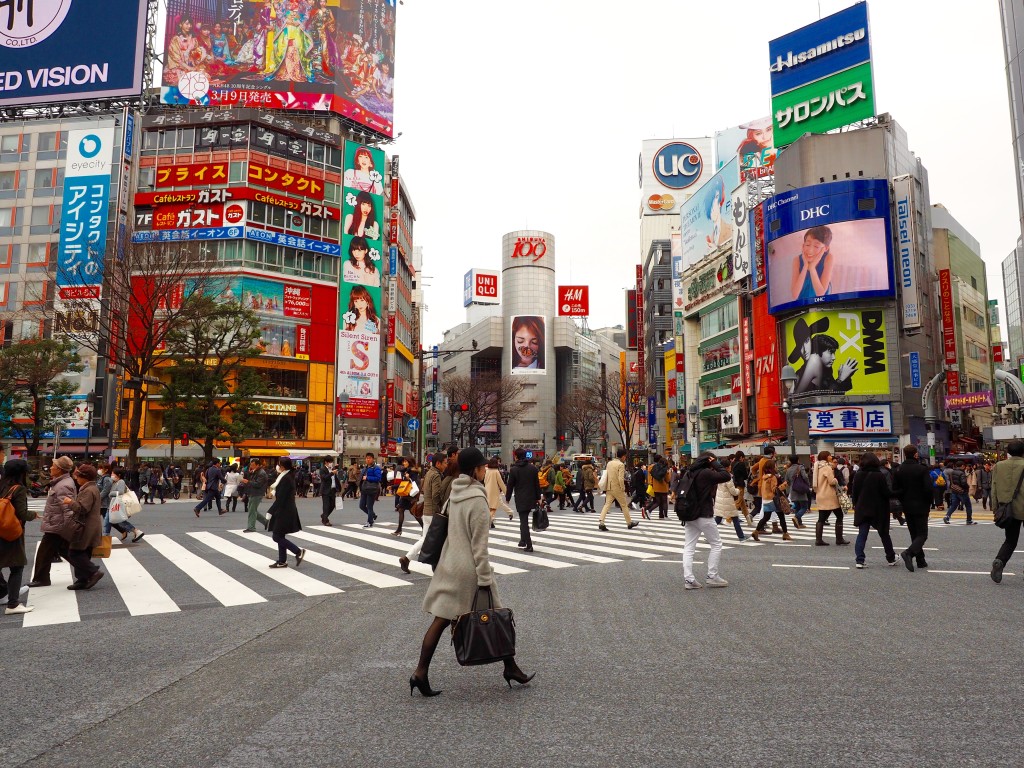
My Trip to Japan: Tokyo
Japan’s capital Tokyo is weird, wonderful, and at time completely whacky – but that is precisely what makes it such a sought after city for international visitors.
Our trip started in Tokyo as it is the main gateway to Japan and a great city to spend a few days discovering its many pockets – from the hustle and bustle of Shibuya & Shinjuku, over to the quiet peace and serenity of Japan’s public parks, and all the way through to Tokyo’s gaming district; Akihabara.
Be sure to allow yourself at least 3-5 days in this city as there is much to see and do – including tourist hot spots like the Mieji Shrine; Sensō-ji temple; Ueno Park for remarkable cherry blossom viewing in Spring; Harajuku for young fashion, nearby Omotesando for grown-up fashion, Tokyo Tower for impressive views at sunset, and if you have more time, day trips to Tokyo Disneyland, Disney Sea, or nearby Mt. Fuji.
For our Tokyo hotel we stayed at New Hotel Otani and I would highly recommend it, though for location I would have preferred to be position in Shibuya or Shinjuku.
Further reading:
A Quick Guide to Tokyo
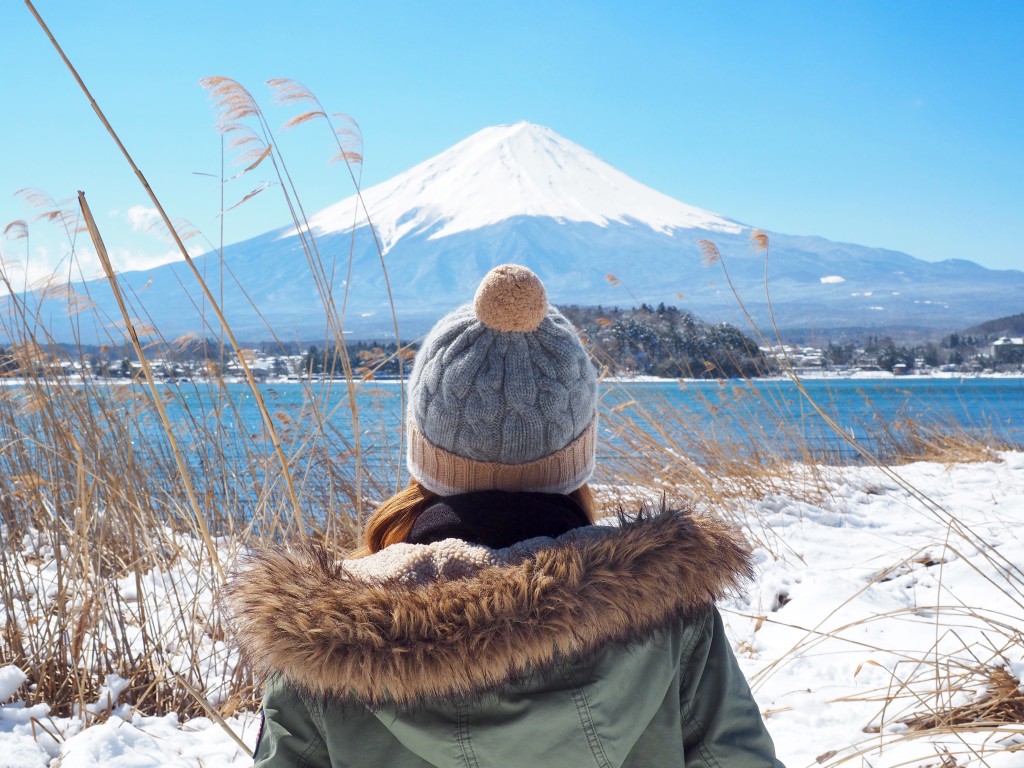
Mt. Fuji Day Trip
After enjoying all of the chaos and craziness that is Tokyo, allow yourself one day to get out of the hustle and bustle and escape to nearby Mt. Fuji to view the impressive mountain where many Japanese and foreign guests make their climb to the summit each year.
Whilst here enjoy great views (weather dependent) from Lake Kawaguchi and enjoy a delightful blueberry + vanilla soft serve from the gift store.
Onwards from Mt. Fuji we proceeded to visit Hakone, a small village on lake Ashi, which also offers great views of Mt. Fuji from afar by taking the cable car to the viewing platform.
Further Reading:
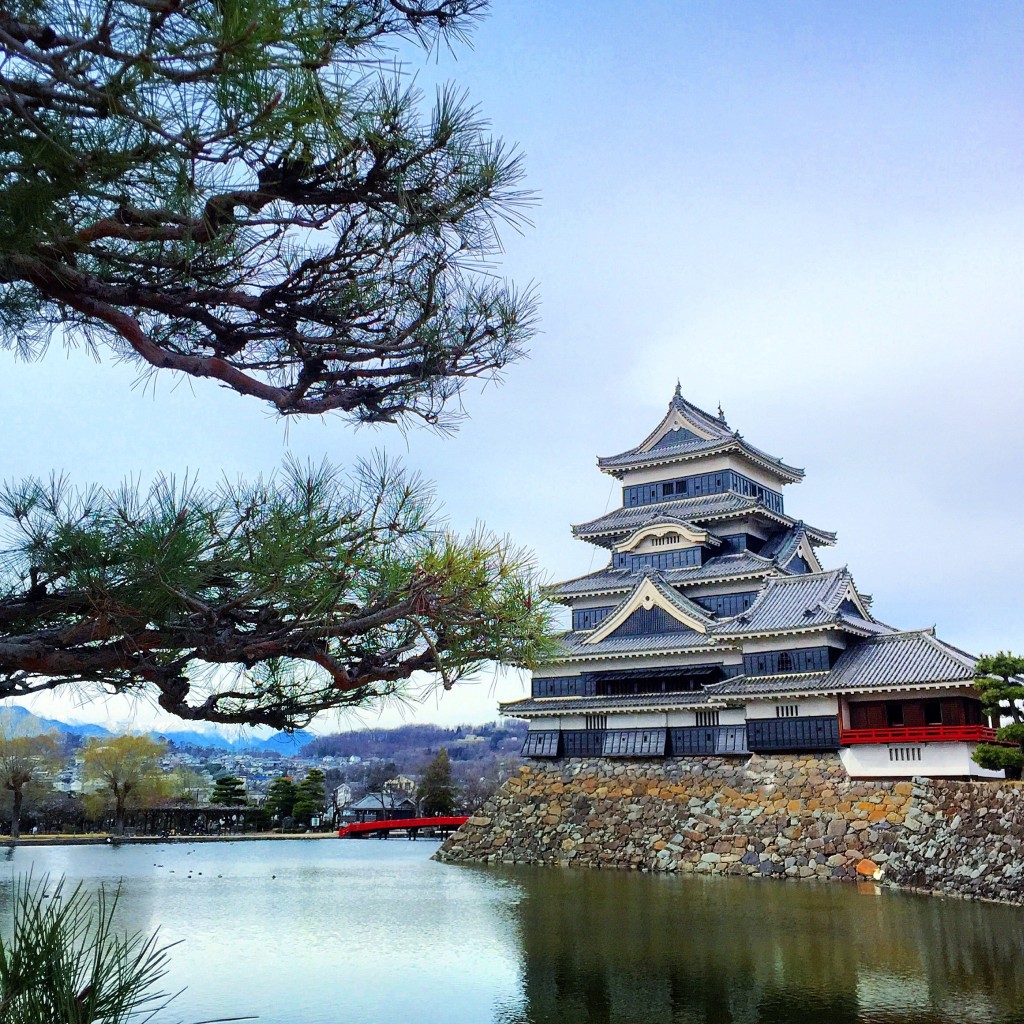
Matsumoto Castle (En route to Takayama)
After 3 nights in Tokyo (I would suggest booking at least 1-2 more nights to allow time to see/do everything in Tokyo), we made our way by bus to Takayama via Matsumoto Castle – one of Japan’s most picturesque castle. Also known as crow’s castle due to its black exterior, this castle is entirely built of wood and as per Japanese tradition, built completely without nails (it pieces together like a jigsaw puzzle and can be entirely pulled apart and put back together).
There isn’t a great deal to see beyond the castle, so after a quick look inside and walk around the grounds, it was onwards to Takayama in the same day!
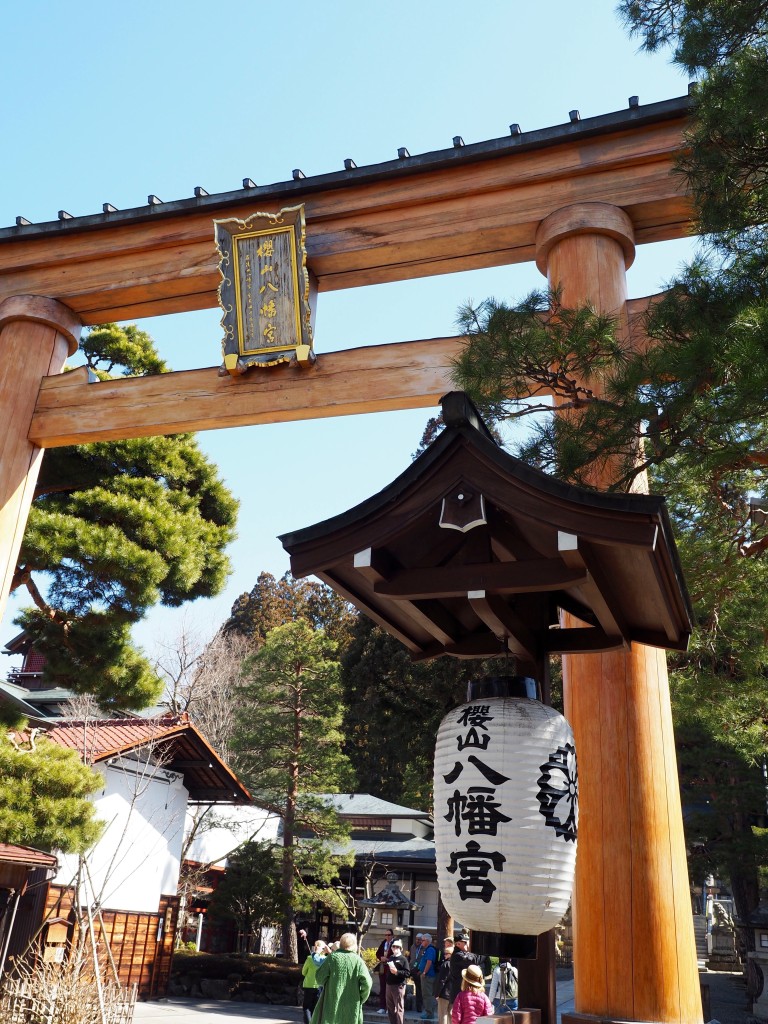
This gorgeous little city known as Takayama is the gateway to the Hida region. One day to explore this city is enough time to see most points of interest, though if time is on your side this would be a great town to slow down and spend a couple days immersed in Japanese culture and traditions.
Soft serve ice cream plays a big role in Takayama with many flavours available on the many street – don’t be afraid to try them all! There are also some great Izakaya restaurants here (casual Japanese food), offering a great chance to try regional food.
For our hotel in Takayama we stayed at the three-star Hida Plaza Hotel . I wouldn’t particularly recommend it and I believe Takayama is a great location to try a traditional Ryokan whilst in Japan.
A Quick Guide to Takayama
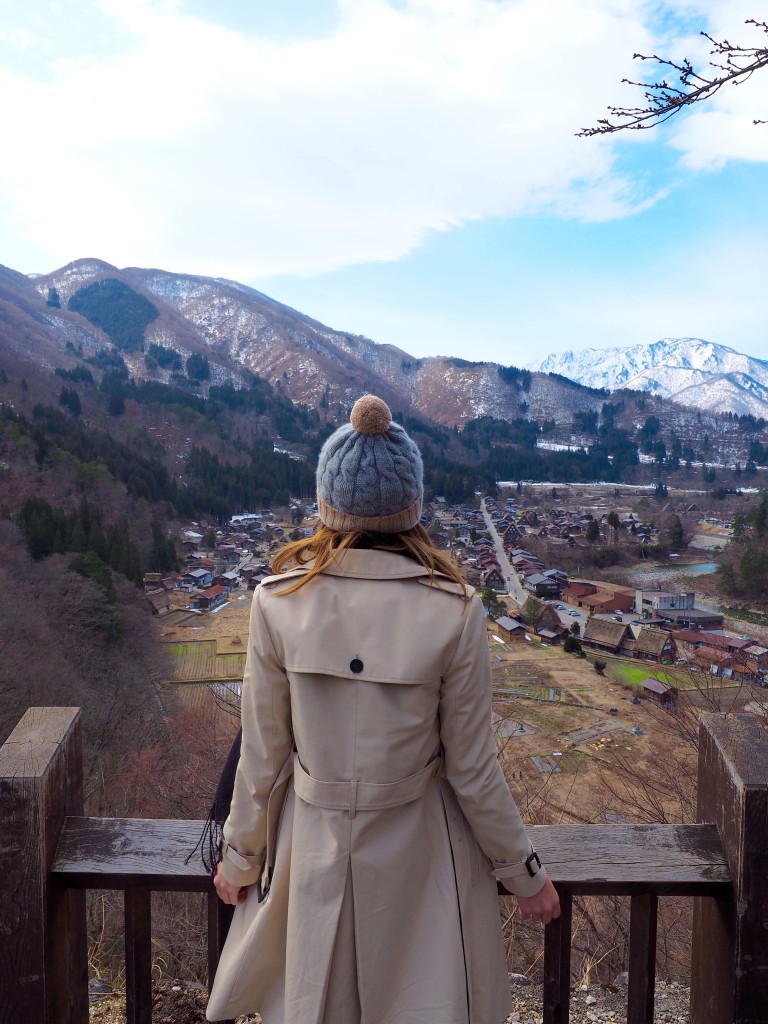
Gokoyama & Shirakawago
After two nights in Takayama, we made our way through countryside villages toward the busy city of Kanazawa – but as is often the case, today was all about the journey to get there.
En route we stopped at two traditional villages – characterised by thatched roofs and traditional wooden houses. These two villages are UNESCO World Heritage listed as they portray Japanese traditional in its truest form – so be sure to take plenty of photos!
Onwards we stopped at a Nomura House, a traditional samurai house where we learned the history of the local region, ongoing traditions and the history of the samurai.
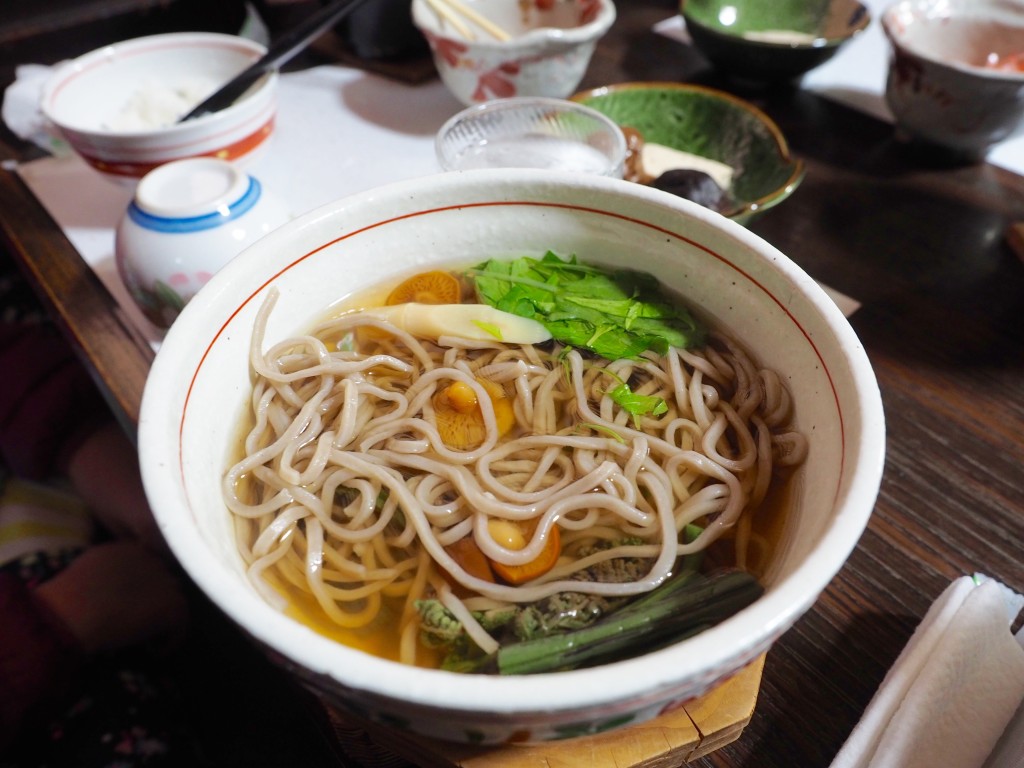
Sadly I have only a couple of rainy, not-so-clear photos to show from our time in Kanazawa, as we experience rained for the two days we were though and thus mostly stayed indoors.
Should you be received in Kanazawa with sunshine, be sure to visit Kenroku-en, regarded as one of Japan’s three most beautiful gardens and just next door is Kanazawa castle, which is also worthy of a visit.
Kanazawa is a larger city (with multiple Starbucks and McDonalds if that gives any indication!), so I would recommend just one day to explore here, to allow for more time in the countryside or cities that have more to offer in terms of sightseeing and culture – like the next stop; Kyoto!
For our hotel in Kanazawa we stayed at the Kanazawa Tokyu Hotel , which I would highly recommend for both location & a fantastic buffet breakfast!
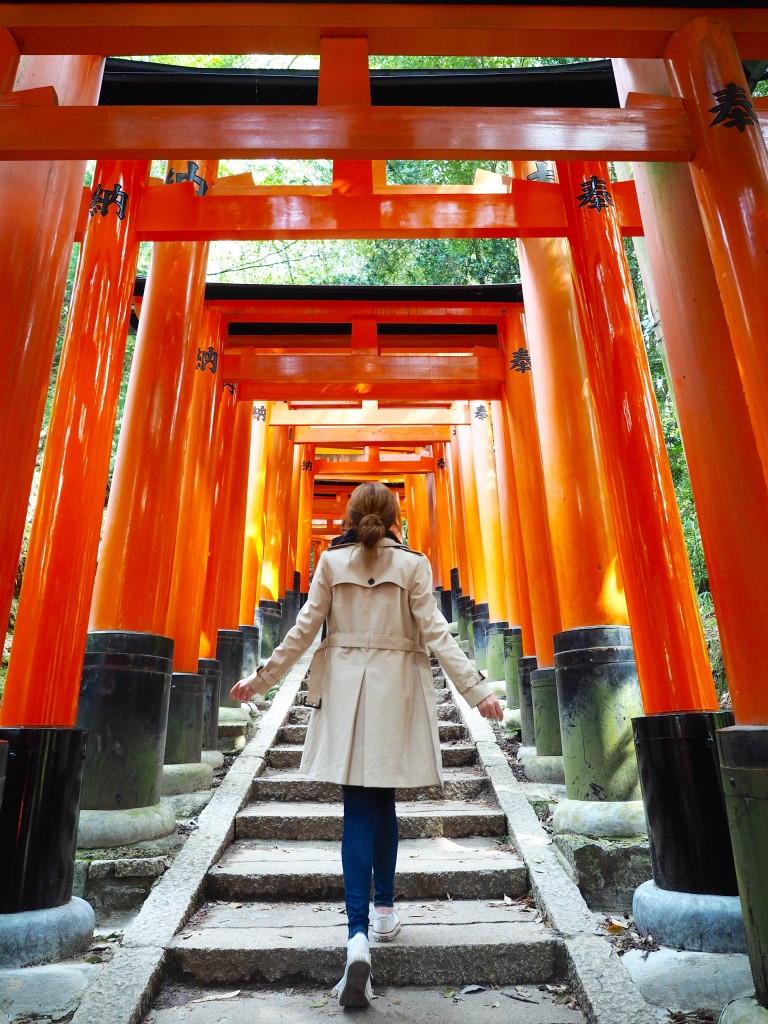
Once the capital of Japan, Kyoto is as idyllic as one could ever imagine Japan to be. Although the charm of Kyoto lies beneath the bustling city that it is today, when you take the back streets you soon begin to discover the history, culture and traditions that live on in Japan to this day.
Be sure to wander through Gion, Kyoto’s most renowned Geisha district and an absolute mecca for green tea (matcha) lovers! Here green tea comes in any and all forms – ice cream, parfaits, frappes, hot lattes and more!
Kyoto is also home to the famous Fushimi Inari Taira – an incredible shrine of thousands of red torii gates that line the 4 kilometre stretch to the sacred Mt. Inari. Nature lovers will enjoy the bamboo groves, whilst those looking for a city escape can always make a quick trip to Osaka – just a 30 minute express train ride away!
For our hotel in Kyoto we stayed at the Hotel Nikko Princess which I would highly recommend due to the large rooms, amazing service (particularly from the concierge), great location and a great breakfast buffet.
A Quick Guide to Kyoto
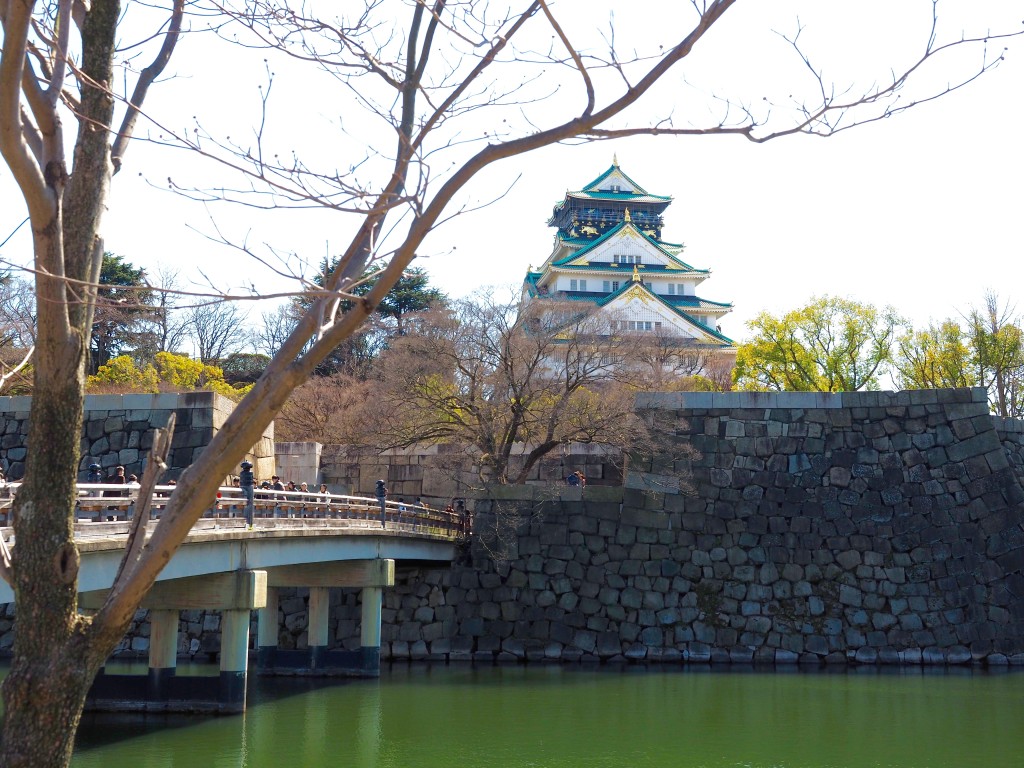
Although Osaka wasn’t on our itinerary for the tour, we had an extended stay at the end in Kyoto, which allowed for a spontaneous trip to nearby Osaka (30 minutes by express train from Kyoto). The trip happened completely by chance, as we were sat in our hotel room making a plan for the following two days, deciding when would be best to visit each location for less crowds, particularly as it was a public holiday that day. All of a sudden we made the decision to head out of Kyoto to nearby Osaka and experience the hustle and bustle of now my absolute favourite city in Japan.
My favourite areas to explore in Osaka were Shinsekai and Dotonbori. Shinsekai felt like a time warp as you quite literally step back in time to a Japan that time forgot, but of course with the added colour and livelihood of the 21st Century! Dotonbori is the main tourist thoroughfare in Osaka which is also home to the best street food in Osaka (and some of the best in Japan), whilst allowing plenty of opportunities to spend some cash.
A Quick Guide to Osaka
World of Wanderlust experience the Splendours of Japan Tour as a guest, however my opinions and oodles of photos are all my own!
Brooke Saward founded World of Wanderlust as a place to share inspiration from her travels and to inspire others to see our world. She now divides her time between adventures abroad and adventures in the kitchen, with a particular weakness for French pastries.
Find me on: Twitter | Instagram | Facebook
Incredible places would be great for students to visit in their winter vacations. Students will get to learn many things about these places.
*early next year
Hi Brooke! I love your Japan travel blog! Planning to go there early next week. Btw, may I ask what camera do you use? Your photos are fantastic!
Great post, japan is so calming even though i haven’t been there by reading your post i feels like i was also there. hope i can visit there soon and try alot of ramen, thankyou!
Great blog! Thanks for sharing informative and complete japan itinerary.
Japan always make me dream…and you made that too with your post and pictures!! I really can’t wait for restrictions to go away, the first place i’m gonna visit are Gokoyama e Shirakawago for sure!

Los Angeles
Plan a trip
First trip solo
Packing guide
20 Best Places for Solo Female Travel
Travel after a break up
20 Places in your 20’s
WAYS TO TRAVEL
Solo travel
Adventure travel
Luxury travel
Learn a language
Become a blogger

Japan Itinerary for First-Time Visitors: 4 to 21 Days or More (Ultimate Travel Guide)
by Aileen Adalid Itineraries , Japan 70 comments
- Authentic Thai Cuisine at Its Best in Basil Restaurant, Bangkok
- Where to Stay in Nice, France: Boutique Best Western Plus Hotel Massena
- Jiufen Tour: With Stops to Yehliu and Shifen (Taipei, Taiwan)
- Best Hotels in Luang Prabang, Laos: From Cheap to Luxury Accommodations and Places to Stay
- Best Hotels in Gili Islands, Indonesia: From Cheap to Luxury Accommodations and Places to Stay
- Daniel Wellington Watches: A Timeless Piece for Travel
- Berghaus Boots: The Best Outdoor Clothing & Hiking Footwear (Review)
- 53 Countries Offering a Digital Nomad Visa: Best for Remote Freelancers and Self-Employed Travelers
- Best Hotels in Las Vegas, Nevada: From Cheap to Luxury Accommodations and Places to Stay
- Exploring Bohol Island: A Gem in Visayas, Philippines
I’ve managed to travel to all 7 continents now, and from all of my adventures, one of the countries that I will never get tired of revisiting multiple times would be Japan! (Japan Itinerary)
As a timeless destination, I am forever enamored by Japan’s ancient traditions that are perfectly fused with its vibrant modernity. Not to mention the lush nature and exquisite cuisine that it has and I’m sure that I’ll still barely ‘ scratch the surface ‘ even if I spend my life exploring it in its entirety.
With that said, it does seem daunting to whip up a Japan itinerary — but then again, not really! The country may be vast but it’s totally possible to make the most of it with whatever time you have.
TRIVIA : Japan has 4 main islands: Hokkaido, Honshu (the largest where Tokyo is found), Kyushu, and Shikoku. These areas are all divided into 47 prefectures that are grouped into 8 regions (chihō). . For instance, the capital of Tokyo is within the Tokyo prefecture and under the Kantō region. Whereas the popular cities of Kyoto, Osaka, and Nara each have their own separate prefecture (under the same name) and are all under the Kansai region.
Where to Stay in Japan?
Come and check out my lists below that feature the top-recommended choices for cheap to luxurious accommodation choices in the country: Best Hotels in Tokyo Best Hotels in Kyoto Best Hotels in Osaka Best Hotels in Hiroshima
As of this date, I think I have already visited Japan more than 15 times and I still can’t get enough of it! Hopefully, with what knowledge I have, I can help you plan a great Japan itinerary trip with ease and speed.
Rest assured, the Japan itineraries in the latter section of this post is totally customizable to fit any number of days that you might be spending.
Top photo by: Shutterstock
Table of Contents
Japan Travel Guide
» quick travel planning.
- Top tours & experiences
- Find flights to Japan
- Visa requirements
- Best places to stay
- Travel insurance (5% discount)
- Stay connected
– – –
» Best Time to Visit
Honestly…? Any time! After all, Japan is a ‘year-round’ destination. But depending on your preference, below are the country’s seasons…
- Beware though because this is high season, so do expect higher prices and bigger crowds. It’s the same as well during Golden Week (concentration on national holidays) which happens from late April to the first week of May.
- Summer: Be prepared for high humidity and smoldering heat (with June being the rainy season) . If you want to escape this, head on ever to the mountains or to the northern island of Hokkaido.
- ★ Autumn: This is yet another great time for visiting Japan; besides, I personally love it when the trees turn into warmer hues. September though is usually the time when typhoons visit the country, so it could be best to plan your trip somewhere from late October to November (it’s also the best time for seeing the full autumn colors).
- Winter: As the temperatures drop, prices and airfares also drop. Take note though that it can get very chilly; but, supposing you’re not that sensitive to the cold, this can be a fun time given all the amazing ski resorts and festive atmosphere.
- WINTER: Dec to Feb
- SPRING: March to May
- SUMMER: June to Aug
- AUTUMN: Sept to Nov
Other Japan blooms to watch out for?
See this list of the most popular spring flowers in Japan — when to see them and where to go!
» Getting in to Japan
International visitors typically arrive at Tokyo’s Narita Airport (NRT), followed by Kansai Airport (KIX) which is south of Osaka. To get to any of these points, I recommend browsing through Skyscanner to find the best flight deals from your point of origin. If you’re from the Philippines like me, Skyscanner also scans through the budget airlines such as Air Asia and Cebu Pacific in order to find which of the 2 has the cheapest rate on the dates you choose.
From Narita Airport to Tokyo, you can:
- Ride an airport limousine shuttle bus that goes to key points and areas in Tokyo (around 1,000 yen = $10~).
- Is it worth it to buy a JR Pass for your Japan itinerary? Read here .
- Ride a taxi , which would be the most expensive at the range of 20,000 to 30,000 yen = $195~ to $295~.
- Uber is also a possible option to take, but a private transfer is usually at a better price — more so if you want a bigger car. Otherwise, if you’re coming from Haneda Airport , you can book through this service .
» Visa for Japan
If you’re NOT a citizen of any of Japan’s exempted countries , you are then required to avail of a visa beforehand. (If you’re from the Philippines, you can read my guide on how to get a Japan visa in Manila here .)
- Check full visa requirements here as per your nationality.
» Where to Stay (Japan Accommodations)
To search for the best hotel accommodation in Japan at the best prices, I suggest cross-checking hotel prices between Agoda and Booking.com . But if you’re rather interested in renting comfortable houses or apartments, you should search through AirBnB .
If you want particular hotel names per district, I prescribe that you read my lists below: Best Hotels in Tokyo Best Hotels in Kyoto Best Hotels in Osaka Best Hotels in Hiroshima
» Japan Currency
Japanese yen (JPY / ¥) wherein ¥100 is equal to about USD $1~ / €0.85~ / Php 45~ (this is as of March 2021). In the event that you want to exchange your money for JPY, I highly advise that you do NOT exchange your money at the airport since the rates there are not competitive.
- How to best exchange your currency? Either exchange it at a bank or at a money exchanger in your home country or in Tokyo’s city center. Better yet, just withdraw from an ATM with your debit/credit card — however, you must do one big withdrawal to minimize fees with your bank. Speaking of cards, a lot of Japan’s establishments accept credit cards but it’s always advisable to have cash on hand because a lot of smaller shops do not accept international credit cards.
» Cost of Travel in Japan
A lot of people have the misconception that Japan is an expensive destination; however, it is totally possible to travel on a budget! Just take note that accommodation rates typically go up during peak season (March to April in Spring and November in Autumn) .
To give you an idea, you should expect to travel in Japan with an average daily cost of about USD $45~ per person on a budget, or at least $120~ if you want to experience more comfort in activities, tours, hotels, and more. (Values below show low budget to medium budget ranges).
- Hotels: $25 to $120 USD / day
- Food: $12 to $30 USD / day
- Fun: $5 to $20 USD / day
- Transport: US$1 per subway ride*
*FREE subway and bullet train rides if you hold a Japan Rail Pass
» How to Get Around Japan
You could flag down a taxi, an Uber , ride the bus, rent a bike or go on foot; but if you want to be efficient and fast, the trains are the way to go!
Take note that Tokyo’s train system is dense and extensive, so it can be very confusing. However, all throughout my stay in Tokyo, I’ve managed to make it less complicated by simply using Google Maps (mapping my point A and point B and then checking out the directions for the subway/train/bus. — it even has real-time walking navigation and an offline option!)
TIPS : – Though Google Maps can be used offline, if you want routes or transportation schedules, it won’t work. So I recommend that you get a pocket WiFi or a SIM Card to stay connected online. . – Tokyo’s trains typically open around 5AM and close somewhere around midnight. If you don’t have an IC Card , purchasing local rail lines and subway tickets can only be done with cash or coins at the ticket machine. Credit cards are only applicable when buying long-distance bullet train tickets. . – If you’re traveling by train during rush hour, be wary that it can get crowded. If you’re a woman, you can ride the carriages that are designated only for females (this is only during weekdays until 9AM). . – You will notice that on escalators in Tokyo, people stand on the left side so that those who are in a hurry can pass on the right. But when you’re in the Kansai area (Kyoto, Osaka, etc.) it’s the other way around. . – When riding taxis, the left rear door is operated automatically by the driver so do NOT try to open or close it by yourself. . – There are several train etiquettes that you should remember when in Japan, number one of which is to keep the noise down to a minimum.
Speaking of which, when it comes to local train tickets in Tokyo, there are several types that you can choose from but what I would highly recommend is if you’re only planning on traveling INSIDE Tokyo, buy the prepaid IC cards (like Suica ) that can be used in any train or bus in the city.
NOTE: There is also the option of buying the Tokyo Subway Ticket which will give you UNLIMITED access to all subway lines of Toei and Tokyo Metro (but NOT JR lines, which is fine since most key places in Tokyo is accessible via Toei and Tokyo Metro). . There are options for this for 24 hours, 48 hours, and 72 hours. I only find this choice as economical IF, and only if, you are going to ride the train for MULTIPLE times in a day or a span of days. But if let’s say, you’re only going to one place or district in a day, then just use your IC card as per normal.
On the other hand, if you’re traveling outside of Tokyo, that’s a different matter since I would recommend that you consider buying a Japan Rail Pass or JR Pass for unlimited rides. To see if buying this train pass will be worth it for your Japan itinerary, go and read my explanation here .
- See the whole list of available train passes that you can get in Japan here !
» Staying Connected in Japan
Japan has one of the fastest internet connections in the world so you’re assured of great connections wherever you go. Hotels and most shops (even convenience stores) offer FREE WiFi connections — but in order to stay connected online at all times during your Japan trip, I recommend getting your own pocket WiFi or a SIM Card .
» Safety in Japan
Japan is one of the safest countries in the world with very low crime rates. I have been traveling solo to this country many times now and I have never felt unsafe even in the late hours of the night — however , this is NO excuse to get too complacent. ‘Little crime’ does not mean ‘no crime’, so stay vigilant and be “street smart” by using your common sense at all times.
Nevertheless, the Japanese people are one of the kindest and most respectful people I have ever met, so solo travelers don’t have much to worry about in this amazing country.
- HOW TO: Find the right travel insurance for you
» Helpful Japanese Phrases
Japan may be one of the most developed countries in the world, but a lot of the locals don’t speak English. However, this should not discourage you from traveling to this country because apart from the fact that there are a lot of translation apps that will help you understand and speak Japanese, a lot of the locals are also making the effort to learn and use the English language.
- RELATED READ: Best translation apps for travel
Anyhow, below are some helpful Japanese phrases that will help you along the way! And even if you do encounter a Japanese who can speak English, it doesn’t hurt to say a word or two in their language.
Hello: Konnichiwa ( Kohn-nee-chee-wah ) Thank you (normal): Arigatō. ( Ah-REE-gah-tohh ) Thank you (less formal): Arigatō gozaimas (Ah-REE-gah-tohh goh-zahy-mahs) Thank you (informal): Dōmo (DOHH-moh) Yes: Hai (Hai) No: Iie (E-eh) Goodbye (long term): Sayōnara (Sah-yohh-nah-rah) Goodbye (informal): Ja ne (Jahh neh)
Excuse me: Sumimasen (Soo-mee-mah-SEN) I’m sorry: Gomen nasai (Goh-men-nah-sahy) Is there someone here who speaks English?: Dareka eigo ga hanasemasu ka? (Dah-reh-kah ey-goh gah hah-nah-seh-mahs kah?) Help!: Tasukete! (Tahs-keh-teh!) Cheers!: Kanpai! ( Kan-pie!)
» Other Important Tips
Here are some other helpful travel and etiquette tips to remember for your Japan itinerary:
- Cars drive on the left in Japan, so be mindful when crossing the street. In this same manner, try to always walk on the left side so as not to bump into other people.
- Most restaurants require customers to pay for their meals at the cash register which is usually by the entrance. (They will typically leave the bill at your table, so after eating, take it to the register and pay before leaving).
- Some establishments and restaurants (and all private homes) have a sunken foyer entrance (genkan) with shelves of footwear by the door — a clear sign that you’re expected to remove your shoes before entering.
- If you are sick (have a cold, are coughing etc.) , it’s considered respectful to wear face or surgical masks in public. On that same note, do not blow your nose in public as it is considered uncouth.
- For more first-time traveler etiquette tips in Japan, come check out this post: [coming soon]
- I bet you don’t want to miss out on the top Japanese food dishes and drinks, so here’s a list of things you MUST try: [coming soon]
Other F.A.Q.
There is NO tipping culture in Tokyo or Japan in general. If you end up giving them something, they’ll mostly be confused why, and they will surely end up giving the money back to you. Sometimes, it’s even considered rude and insulting if you tip someone.
Japan typically uses two plug types: type A (two flat parallel pins) and type B (two flat parallel pins and a grounding pin at the bottom). The country operates on a 100V voltage and a frequency of 50/60Hz.
Please check their latest travel advisories page for more details.
All visitors to Japan must have a passport that is valid for at least 6 months after the period of their intended stay (as well as have 2 blank pages).
In general, no as long as you are a non-resident staying for less than 6 months.
If you want to operate a UA/Drone, it is required to follow the conditions set by the Minister of Land, Infrastructure, Transport, and Tourism (more info here ) . You can also contact Japan’s Drone Counseling Service ( [email protected] ) for more information.
Japan Itinerary Guide
It can be a daunting task to plan a Japan itinerary because the country is undeniably packed with SO many interesting places, picturesque sights, good food, fun activities, and colorful culture among many others!
For starters, I will list below summarized itineraries that are typically done for X number of days, and then it will be followed by a tabbed section that shows the things you can do in each area or city in order to fill up the travel days that you have.
••• 4 DAYS It’s preferable to just stay in one place like Tokyo — especially if it’s going to be your first time in Japan. However, if you rather want to explore the Kansai region, you can stay in Kyoto or mix in Osaka with a side trip to Nara. (For other areas that you can explore are: Chubu region, or Niigata , etc. Make sure to check the ‘Extra Days’ tab below for other ideas.) TIP : If you’re only spending 4 days in just Tokyo, you don’t really need a Japan Rail Pass. But if you’re exploring Kansai, it can be cost-efficient to get a JR regional pass. It really depends on your preferred itinerary, so you should read through this article .
••• 7 DAYS If you don’t want to rush yourself, you can simply spend 7 days in Tokyo; otherwise, it is totally possible to squeeze in Kyoto and/or Osaka too if you’re willing to do a fast-paced trip. Ideally for this, you will spend 4 days in Tokyo and 3 days in Kyoto and/or Osaka. TIP : It’s a good idea to get a JR Pass for this. But then again, it really depends on your preferred stops, so you should read through this article .
••• 10 DAYS Doing 5 or 6 days in Tokyo, and 5 or 4 days in Kyoto + Osaka + Nara ( Kansai area) would be great for this number of days. If you don’t mind a fast-paced trip, you can even squeeze in a trip to Hiroshima by lessening your days in both Tokyo and Kansai. Either way, feel free to mix things up. TIP : It’s a good idea to get a JR Pass for this. Read through this article to see if it’s worth it for you.
••• 14 DAYS Consider doing 5 days in Tokyo, 5 days in Kyoto + Osaka + Nara, 2 days in Hiroshima, and 2 days in any region you want for your Japan itinerary (check ‘Extra Days’ tab below — or spend 7 days in Tokyo and 7 days in Kansai Region. Otherwise, just prolong your days in Tokyo because that city is just so massive with so many things to do! It’s all up to you). TIP : It’s a good idea to get a JR Pass for this. Read through this article to see if it’s worth it for you.
••• 21 DAYS OR MORE With this number of days, you’ve got all the time to take things easy for your Japan itinerary! So feel free to extend the days per area and make sure to check the ‘ Extra Days ‘ tab to see other destinations you can explore. When planning out your route, do make sure to check travel times and connectivity to avoid future hassles. NOTE : On my first trip to Japan I spent about 20 days there as I explored Tokyo (6), Kyoto (3), Osaka (2), Nara (1), Hiroshima (3), Takayama (2), Magome-Tsumago (1), and Kinosaki (2). For this, I only used a 14-day JR Pass since I spent 6 days in Tokyo and it was cheaper to just buy single tickets in the subway. TIP : A 14-day or 21-day JR Pass is costly at first sight — but it could totally help you save up more depending on your itinerary. Make sure to do some calculations to see if purchasing single tickets is better or not. See this article for more info.
ADDITIONAL TIP: To further save up on time when you’re visiting multiple cities, please consider booking a flight out of Japan to the nearest international airport on your last day so you don’t have to travel back to Tokyo’s Narita. . So for example, if you end your Japan itinerary somewhere in the Kansai region (Kyoto, Osaka, etc.), go and book a departure flight from Kansai Airport instead. Of course, this depends if the ticket is not more expensive compared to a roundtrip flight that’s all done at Tokyo’s Narita Airport. Either way, if you don’t mind the additional travel time and you’ve got a Japan Rail Pass, it’s absolutely fine to travel back to Narita after your trip.
IMPORTANT NOTE:
- The following Japan itinerary section is in a tabbed format; so, in order to see the next day’s contents, just click the headings below.
- I will mainly highlight the so-called “ Golden Route ” that comprises Tokyo, Kyoto, and Osaka followed by Nara and Hiroshima, and then format them under a 14-day itinerary . After all, they are the typical spots that are visited by the vast majority of first-time tourists in Japan.
- Rest assured, I will also cover other regions in Japan under the ‘ Extra Days ‘ tab below so that you can consider these places if you happen to have more days for your trip, or if you simply want to see more than the typical.
Tokyo Itinerary & Side Trips
The way I see it, Tokyo can be a separate country on its own given how massive it is. That being said, keep in mind that going from one place to another within this urban city can often take 30 minutes to an hour — or even more! (Always check Google Maps to verify your travel times).
- With that in mind, even if it is humanly possible to go to ALL of the attractions listed below per day for your Japan itinerary, it’s best that you don’t because you will definitely be running around. This is why I suggest that you pick out the top spots that you really like and then save the rest for later or for other days (in case you have more days in Tokyo).
RELATED READ: – Detailed Tokyo Itinerary – Top Things to do in Tokyo (Per District) – Best Hotels in Tokyo – Best Cherry Blossom Spots in Tokyo – 10 Things Foreigners Must Know About Japan
◘◘ Day #1 — West of Tokyo
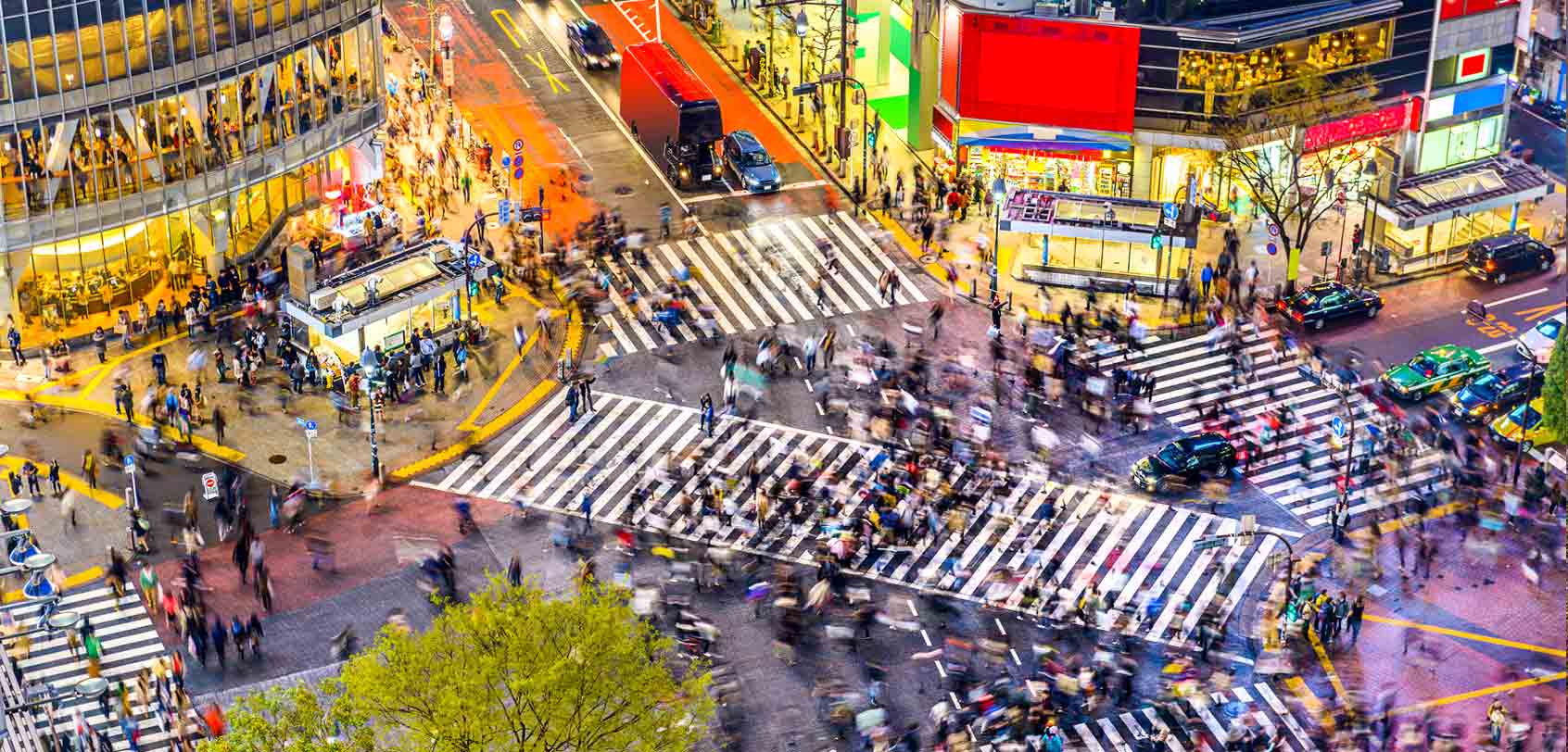
The Tokyo Metropolis is composed of 23 special wards and the city’s top highlights are found in only a few numbers of these wards. For ease of discussion, I will divide Tokyo into two: the west and the east. Below are the west’s top attractions…
SHIBUYA. This is referred to as a major nightlife area but it’s also a major shopping and entertainment venue especially because of its strong youth presence in fashion and culture.
- ★ Shibuya Crossing: Found in front of Hachiko Exit, this is arguably the most prominent landmark of the district and the most filmed spot in the area. If you want to get a good view of it, go to the QFRONT building where a big Starbucks cafe is found. It’s best to come during rush hour to see an impressive sight but be prepared for crowds inside the cafe. Nevertheless, if you want more of a higher bird’s eye view, go to Shibuya Hikarie shopping mall’s Sky Lobby on the 11th Floor.
- ALTERNATIVE : If you want less of the crowd, there’s a bigger statue of Hachiko along with his master, Professor Ueno, at the grounds of UTokyo or the University of Tokyo. .
- Rainbow Karaoke in Modi is incredibly stylish yet cheap, Karaoke Kan is famed for being the location of the movie ( Lost in Translation )’s karaoke scene, or for the more standard chain, Big Echo is a good one.
- Love Hotel Hill: This is where you can find the biggest concentration of love hotels in Tokyo, and though it’s not a typical item on a ‘ things to do in Tokyo ’ list, it can be an amusing thing in itself especially if you’re traveling with your loved one — largely because of how the rooms are delightfully themed. Just be warned though that some love hotels don’t accept same-sex couples or even two foreigners. Nevertheless, you can ‘rest’ in a room for 1-4 hours at around 1,500 yen ($15~) per hour or ‘stay’ in a room overnight for as low as 7,000 yen ($68~). .
- For nightlife: Two of the most brilliant clubs would first be the mammoth super club ageHA with over 4 dance floors, an outdoor pool, and an outdoor dance tent; and second, the laser-filled Womb club with its identifiable giant mirror ball. Better yet, get this Tokyo Nightclub Pass that grants you UNLIMITED entry to the top 7 nightclubs in Tokyo! .
- ★ Don Quijote, Loft, and/or Tokyu Hands: These shops are great to include in your Japan itinerary if you’re looking for cheap souvenirs, novelty items, stationaries, and more!
- Center Gai, Koen Dori, Spain Slope, and/or Shibuya 109: The first 3 are distinct shopping streets in Shibuya, whereas Shibuya 109 is a complex that you don’t want to miss out on if you want to do some serious shopping!
- Shimokitazawa : This nearby district is a great ‘bohemian’ spot if you’re looking for vintage and second-hand items and clothes. .
- Ichiran Ramen: A famous ramen (noodle soup dish) place that gained popularity worldwide because of its solo booth style of dining. Rest assured, the ramen tastes superb here and is worth a try so jot this down on your Japan itinerary!
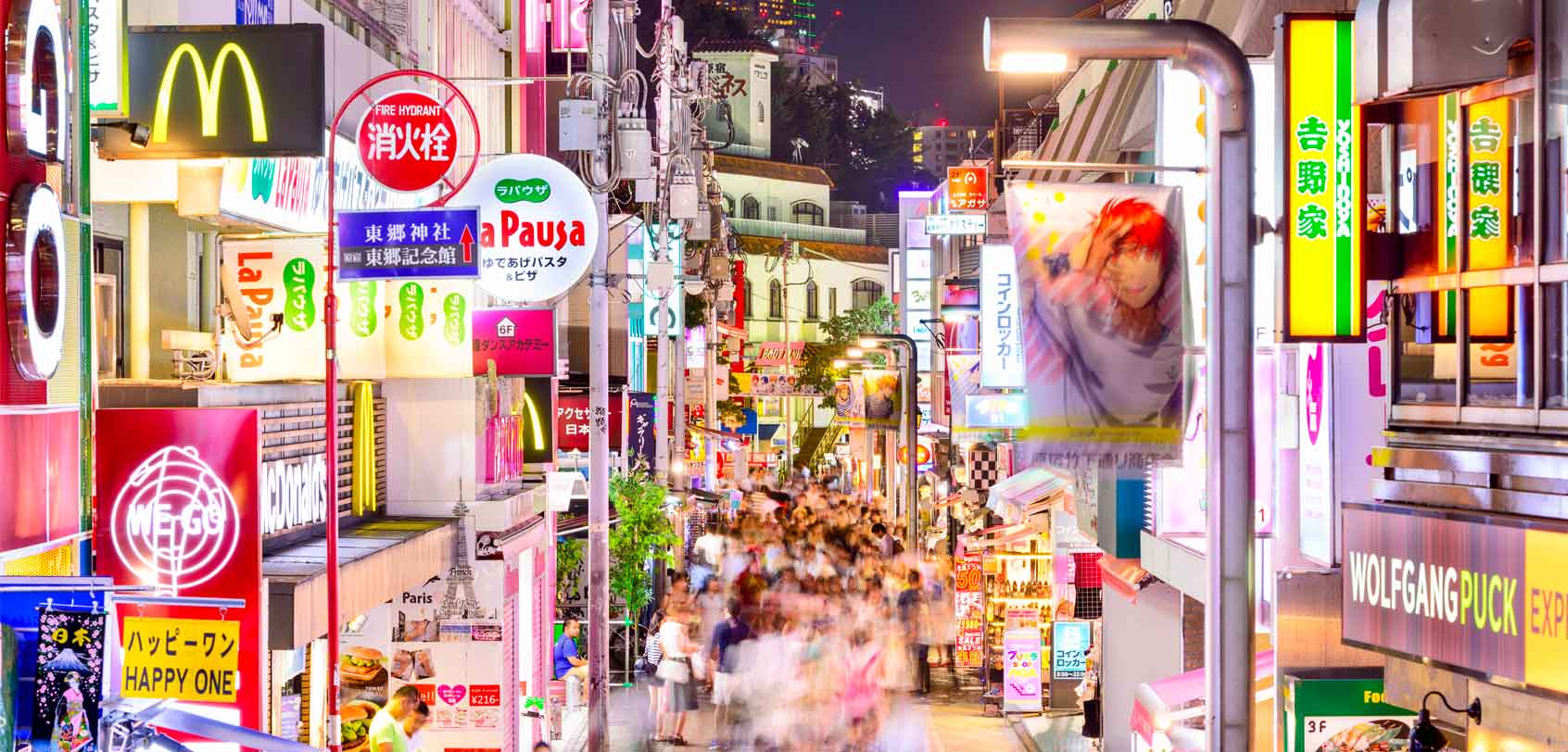
HARAJUKU. Famed for its fashion scene, quirky culture, cosplay shops, and so much more!
- TIP : If you want to witness a traditional Japanese Shinto wedding in which they make a procession to the temple, head here around 10AM and try your luck!
- Yoyogi Park: A typical meeting place for Japanese people from all ‘walks of life’. Since it’s just near the trendy Harajuku, you will normally find crowds of band members, lolitas , cosplayers, and fashionistas in interesting clothing (they’re sometimes concentrated around Jingubashi or the bridge near Meiji Shrine). Taking photos of these people in fancy clothing is perfectly fine, but it’s best if you ask for permission first since not all of them are there to please the crowd — they’re usually just there to hang out or do practices, etc. .
- TIP : Wanna do a guided tour? Take this Harajuku half-day tour that will take you through Takeshita as well as grant you access to some of the district’s top cafes!
- Cat Street: If you want to stray away from Takeshita Dori’s crowd, this is the next best place to be.
- TIP : Drop by Espace Luis Vuitton Tokyo which is found on the top floor of its building to find an amazing art space — not to mention that the bathrooms are really fancy.
- Daiso Harajuku: This is one of Japan’s famous 100-yen variety-store shops that offer affordable housewares, toys, stationery, decorations, bento supplies, gifts, and more!
- Tokyu Plaza Omotesando Harajuku: This is a multi-story shopping center that recently became even more popular because of its kaleidoscope-like entrance that’s made of dozens of tilted mirrors. Don’t miss out as well on its rooftop terrace area on the 6th floor if you want views over Harajuku. .
- Maison de Jullieta: Kawaii (cute) culture is a ‘thing’ among the Japanese and one of those kawaii fashion styles would be the sweet lolita look. In Maison de Jullieta in Harajuku, you can dress up as one — complete with costume, makeup, and hair arrangement at a price of around 10,000 yen ($97~)!
- Kawaii Cafe: In line with Harajuku’s colorful splash of colors and eccentric atmosphere, there exists the Kawaii Monster -themed cafe! With over 5 separately themed areas, the cafe is like a rainbowholic’s paradise where every corner is filled with kawaii decoration and Instagram-worthy scenes.
- ★ Purikura: Purikura runs like a photo booth — but ‘leveled up’ in a Japanese kind of way and it’s widely popular among females. Through these machines, you can take photos of yourself or your friends in a studio-esque booth; after which, you will be digitally enhanced. By that, I mean automatically Photoshopped in a kawaii manner: bigger eyes, whiter skin, and narrower face.
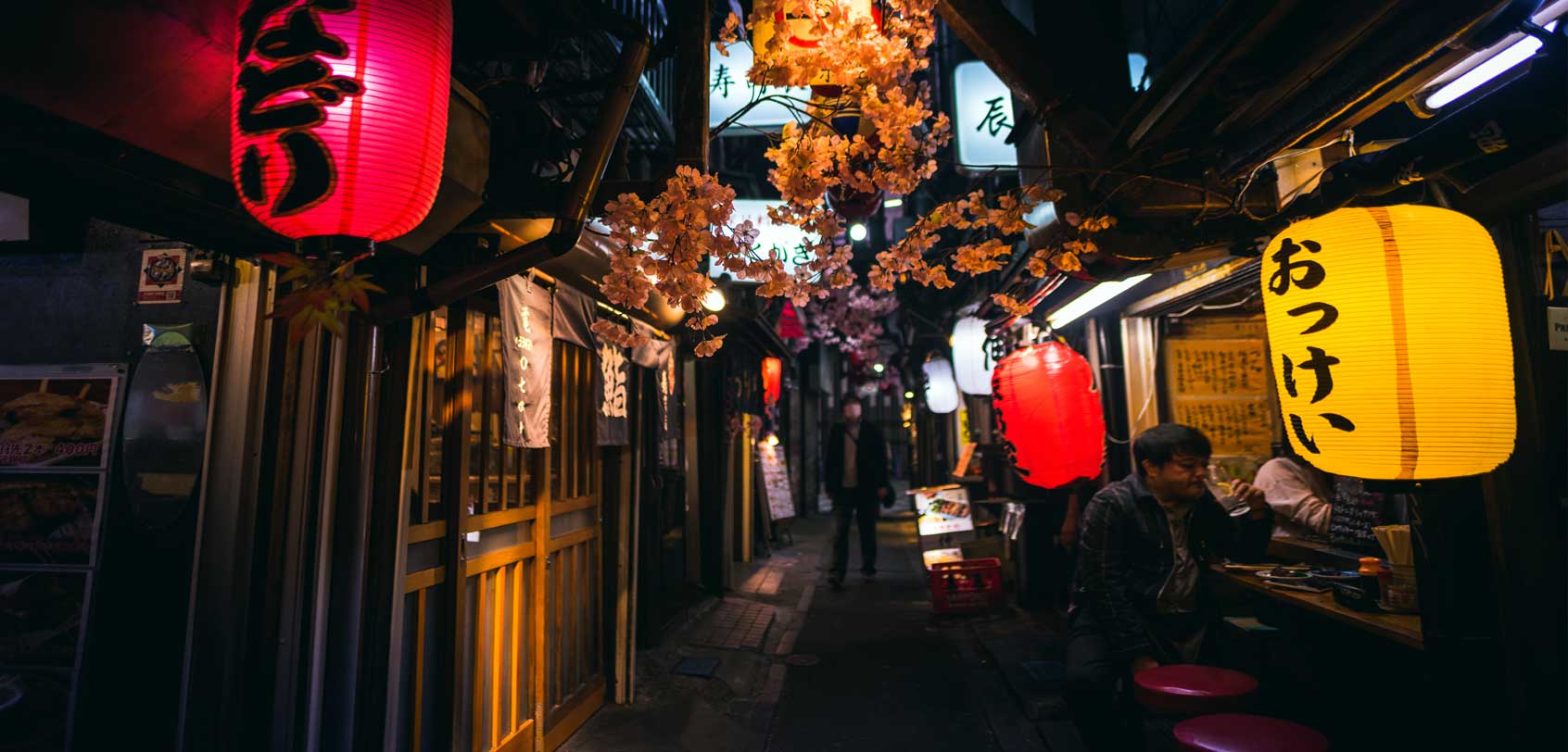
SHINJUKU. As a major city center, Shinjuku has the busiest train station in the world (Shinjuku Station) , it houses the administration center for the Tokyo government, and holds a plethora of amazing things to do in Tokyo!
- Tokyo Metropolitan Government Building: Towering at 243m, this structure has two towers and each of these has an observatory which visitors can visit for FREE in order to get a bird’s eye view of Tokyo. I recommend the southern tower since it shows a better ‘side’ of Tokyo (closes at 5:30PM), whereas the northern tower is best for night shots since it closes later into the night (until 11PM).
- Shinjuku Gyoen: Best visited during sakura and fall season, this place is just a stone’s throw away from Shinjuku station and it is surely one of the city’s largest and most favored parks. Here, you will find three different gardens, a traditional Japanese landscape garden, a French garden, and an English landscape garden.
- Samurai Museum: As a Japanophile , I have also been enchanted by the culture and history of the samurai (or bushi ) — Japan’s notable military warriors. Adults can enter for a fee of 1,800 yen ($18~) in order to see the impressive exhibits; but the highlight of this place is probably the experiences that you can try: photoshoot with basic samurai gear (500 yen $5), sword battle performance with an actor (free), samurai calligraphy lesson (500 yen or $5~), and professional photoshoot with full samurai gear (starts at 32,000 yen or $320~). .
- TIP : Book here for a guided tour so you don’t miss out on anything!
- TIP : For your Japan itinerary, book here for a guided tour so you don’t miss out on anything!
- Kabukicho: This is the entertainment and red-light district in Shinjuku which is sometimes called the “Sleepless Town”. Unlike Amsterdam which features prostitutes on the windows of their buildings, Kabukicho has a more subdued collection as it only includes hostess clubs, love hotels, massage parlors, and more. Unless you want to avail these kinds of services, as a regular tourist, I just find this as an interesting place to see in Tokyo. Rest assured, I felt entirely safe walking around here since it didn’t feel seedy. Truth be told, one particular thing about Kabukicho that I best liked to see or observe was the pachinko parlors. (Pachinko is an insanely popular game in Japan that somehow resembles pinball and since gambling is illegal there, this is the only way that locals can ‘gamble’.) .
- READ : For my experience !
- Godzilla: Japan’s famous giant monster and pop culture icon, Godzilla , can be seen here in Shinjuku atop Toho Cinemas. It’s a nice spectacle because he looks like he’s taking a peak from the building above — seconds away from wreaking utter havoc .
- Animal Cafes: Plenty of people would recommend that you go to Tokyo’s well-liked animal cafés such as those of a cat café, owl café, rabbit café, goat café, etc. (There are lots of them found around Shinjuku such as Cat Cafe Calico, etc. ). I don’t like them though because I’m uncomfortable with the idea of keeping multiple animals in such a small space with strangers that they’re not that accustomed to — but, I leave it up to you to decide what you would do.
◘◘ Day #2 — East of Tokyo
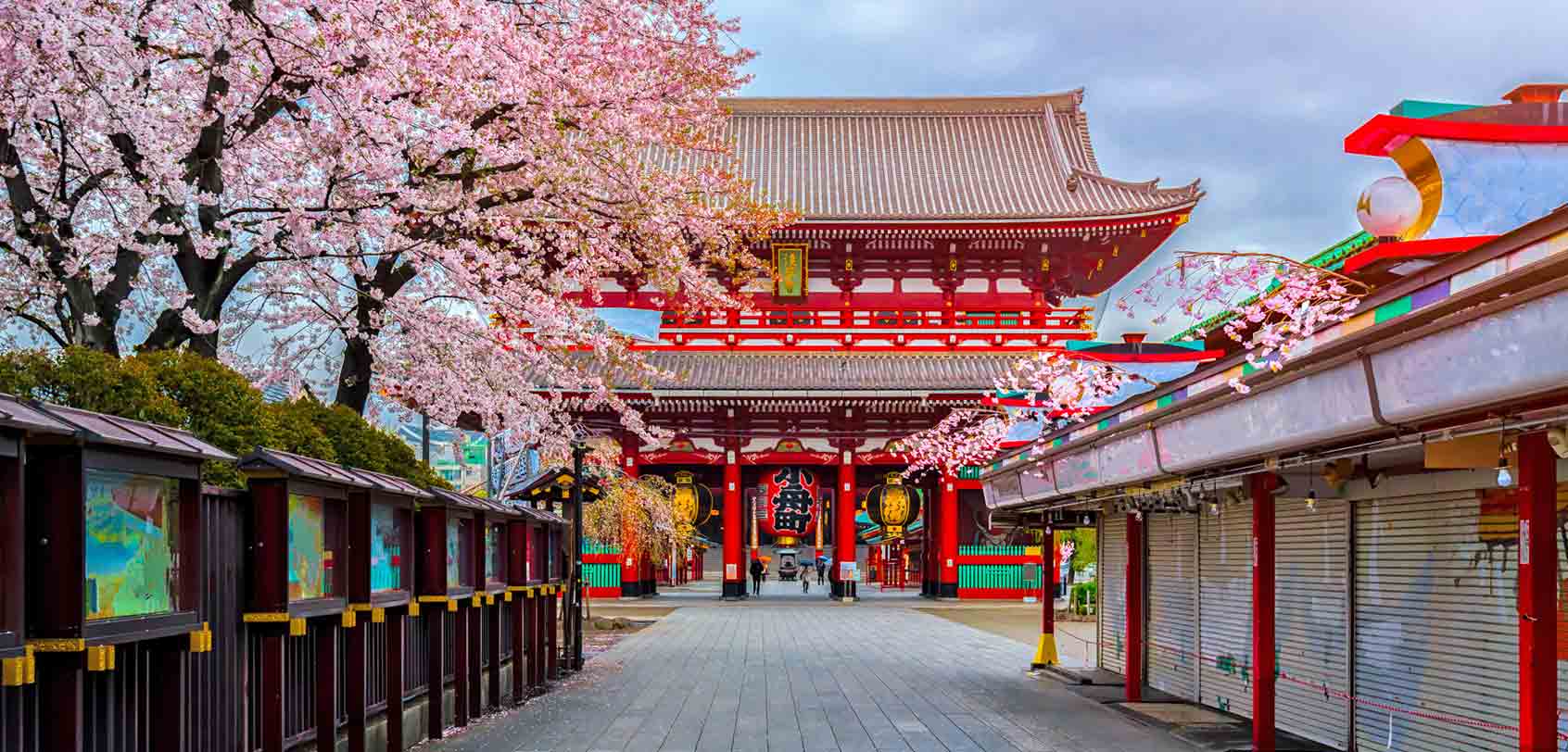
Photo by: Shutterstock
ASAKUSA. This is said to be the center of Tokyo’s shitamachi (“low city”) — which means that it’s an ‘olden’ district where you can get a feel of how Tokyo was in the past decades.
- ★ Senso-ji Temple and Asakusa Shrine: Take note that a shrine is dedicated to the Shinto faith, whereas a temple is dedicated to Buddhism. These two places are the main highlight in Asakusa with Senso-ji being the oldest temple in Tokyo. There is also an impressive “Thunder Gate” called Kaminarimon (which is a symbol of Asakusa and Tokyo) in front of the temple.
- Sumida River and Park: For a leisurely stroll, go over to Sumida River and lounge by Sumida Park which stretches on both sides of this body of water. Like what you’d expect, there are cherry blossoms here that come alive in spring, and then during July on its last Saturday, this becomes a great spot for viewing the Sumida River Firework. (If you see a golden building with an odd golden structure on top that looks like a teardrop, that’s the Asahi Beer Tower with its ‘Asahi Flame’.) .
- Read my kimono rental guide here to learn more about the process.
- Samurai Armor rental: You can take a step further and rent to wear Japan’s famous traditional warrior’s (samurai’s) armor! If you book this activity online , you can even have a professional photographer take photos of you.
- Rickshaw ride: To complete your kimono look, I recommend that you rent a traditional Japanese rickshaw which will take you around key spots in Asakusa.
- To be frank with you, this is a very long ceremony where you will sit motionless for hours as you follow a set of guidelines… but it is a striking example of Japan’s amazing culture that is exceptional for immersing one’s self with. For a good place to try this in, go here .
- Hanayashiki: If you’re up for it, this is said to be Japan’s oldest amusement park (built in 1853). .
- ★ Nakamise shopping street: Stretching about 250 meters from Kaminarimon to the main grounds of Sensoji Temple is this picturesque shopping street with over 50 shops that offer local specialties and the usual array of tourist souvenirs.
- Shin-Nakamise: Also called as “New Nakamise”, this runs perpendicular to the Nakamise Shopping Street and is lined with various shops and restaurants.
- Asakusa Kagetsudo: This is a famous melon-pan store that has been running since 1945. Melon-pan is basically a sweet baked bread with an outer layer that looks like a melon — so it’s just named that because of its appearance and not because it tastes like a melon. When you buy from this store, it is best to eat it when warm.
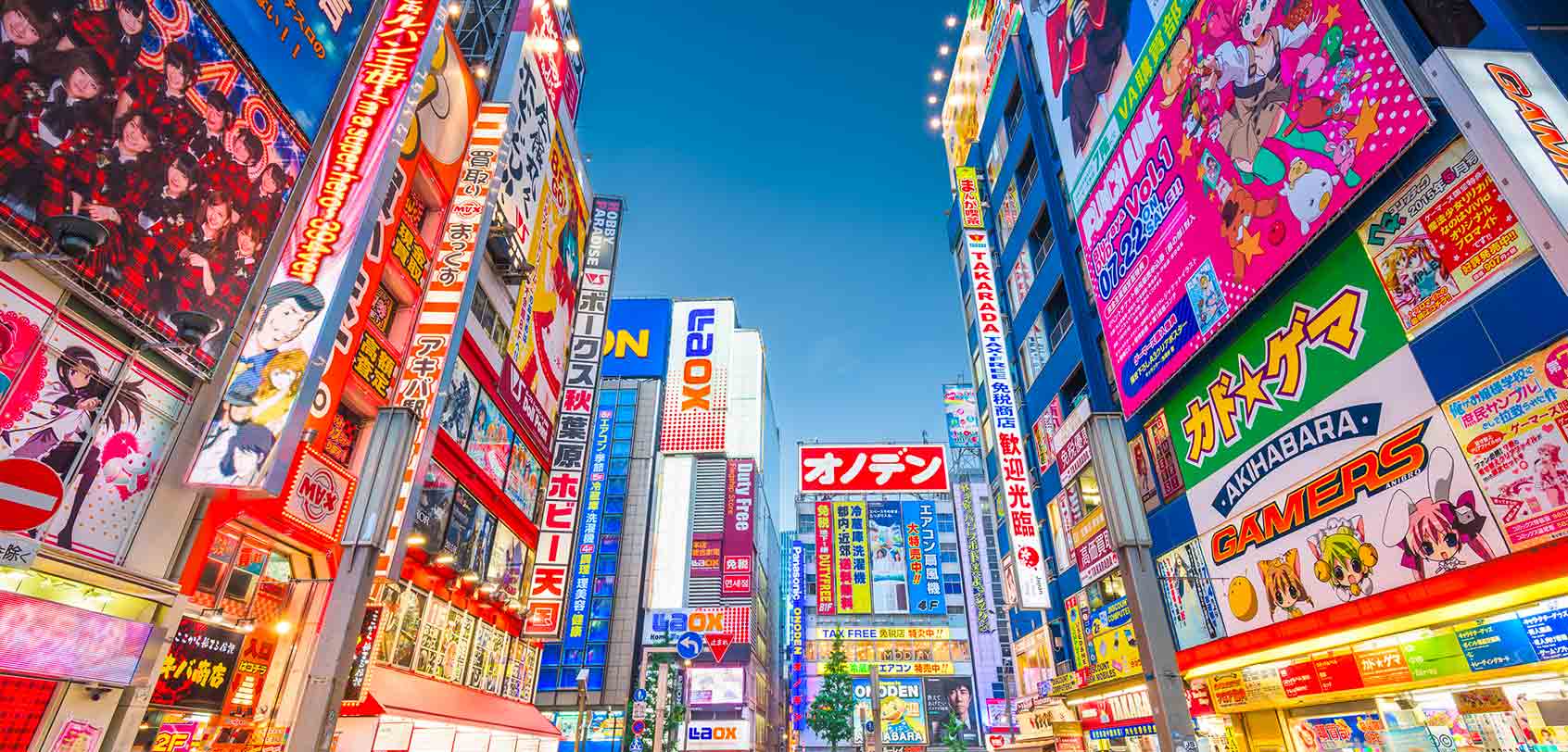
AKIHABARA. Dubbed as the otaku* cultural center and tech shopping district of Japan, walking through Akihabara’s main street called Chuo-dori will already give you an idea of what this district is all about. *Japanese term for people who have obsessive interests commonly towards anime and manga. A synonymous word in English would be ‘geeks’.
You see, Japan may have an amazing olden culture, BUT it has also developed an equally amazing modern culture over the recent years, and it is in Akihabara that you can get a glimpse of this somewhat wacky ‘evolution’.
- Maid cafe: A lot of people in Tokyo love to cosplay — a form of roleplaying where people wear costumes to represent a character (often found in animes and mangas). One of the good ol’ favorites of the Japanese when it comes to cosplaying or ‘dressing up’ is waitresses dressed in those frilly Victorian maid costumes. In line with their ‘character’, they will even act as if they’re servants and then treat others as their masters. Now apply that idea to a café, splash it with small games, a cutesy demeanor, brief performances, and picture-taking with customers and that’s where you get the famed maid cafes of Japan. A great place to try in Akihabara would be @Home Cafe.
- ★ Arcades: We have tons of video game arcades in the Philippines — HOWEVER, they’re not as insanely amazing, bright, exciting, and numerous as what Tokyo has! One of the most known gaming arcades in Tokyo would be Taito Station . (You could also do purikura inside these arcades).
- ★ Go Kart: Come live on the edge and explore downtown Tokyo in a cool Go Kart while you’re dressed in popular cosplay costumes! With this fun driving tour , you can opt to do a one-hour experience or a whole day affair. .
- Yodabashi: If you have time to visit only 1 tech gadget store in the district, then this 9-story building is your best bet! After all, it is proven that their items are usually cheaper than in Europe or even Asia.
- Mandarake or Tokyo Anime Center: Mandarake , a gigantic 8-floor complex that is full of merchandise related to anime and manga, is the best go-to space if you’re a hardcore otaku or at least a knowledgeable one at that; whereas I believe that a visit to the Tokyo Anime Center is best done first by people who have no idea of the otaku scene in order to gain a better understanding of it.
SUMIDA. The most noteworthy attraction that you should visit in this ward would have to be the following:
- Tokyo Skytree: At 634m, this is the tallest tower in the world. It is primarily a television and radio broadcast site for the Kanto Region; but for travelers, you can visit the large shopping complex, aquarium, and planetarium that are located at its base. And of course, for sky-high views of the city, Tokyo Skytree has two observation decks and you can purchase your tickets here .
- Try chanko nabe in any of the restaurants in the neighborhood. This is basically a hot pot dish that is a staple food of sumo wrestlers.
- TIP : To reserve your sumo tickets for Japan’s Tokyo Grand Sumo Tournament, go to this link . For the months wherein tournaments are not held, you can get a close-up look at the sumo wrestlers’ morning fight practices via this tour .
◘◘ Day #3 — Mt. Fuji
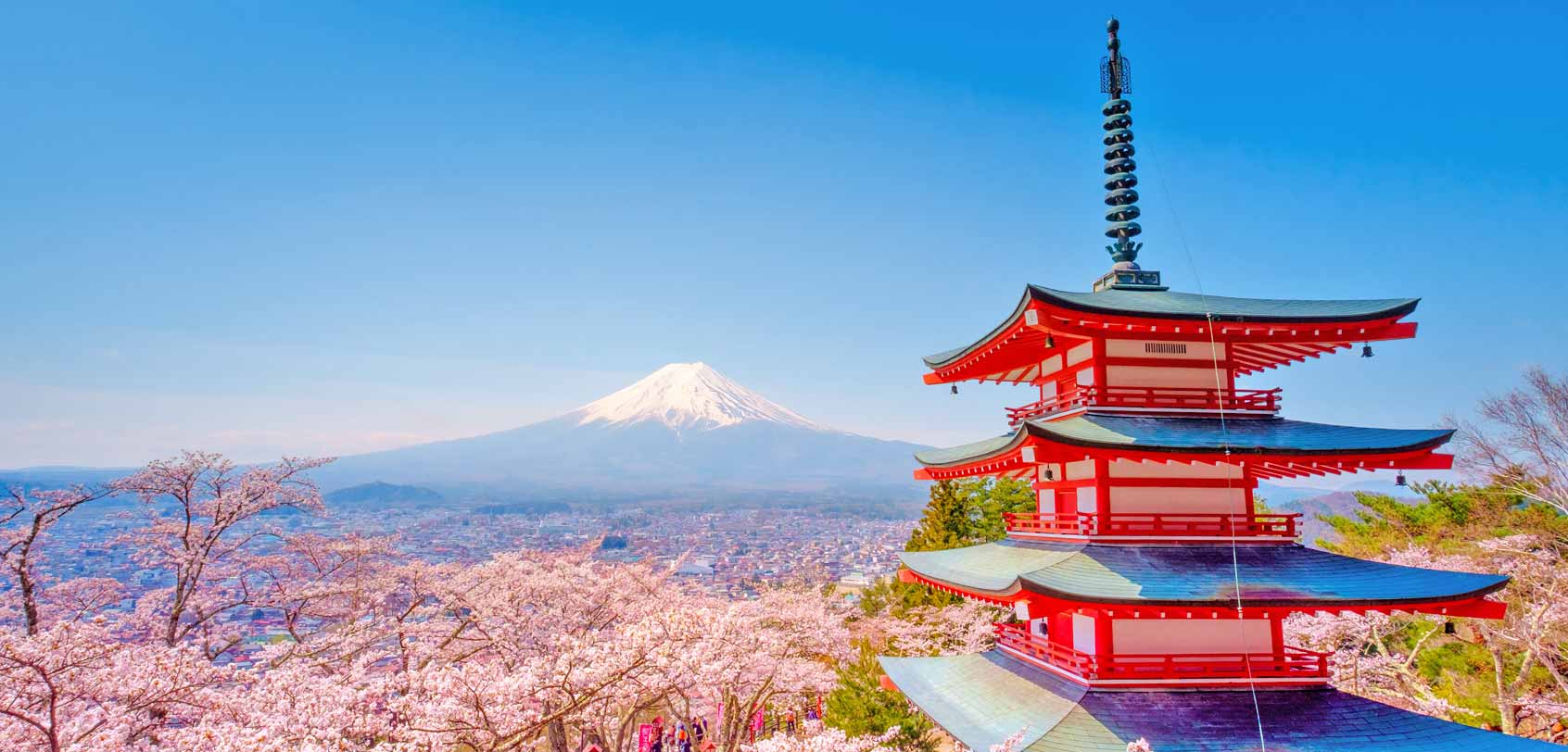
It’s time to check out Mt. Fuji or ‘Fuji-san’ (it’s how the locals commonly call it).
As the country’s tallest peak, it has been considered one of the most iconic sights in Japan so it would be a good idea to dedicate this day to it. There are several ways for seeing this active volcano in all its glory (including riding a Tokaido shinkansen from Tokyo to Osaka if you sit on the right, 40min before Shin-Fuji Station, or going to Fuji Subaru Line 5th Station) but below are the best locations for viewing it.
- Some people do one of the places below as a day trip, while others as an overnight trip to also experience staying in a ryokan (traditional Japanese inn). It’s totally up to you, but naturally, if you’re short on time, making it a day trip would be enough.
- Clouds often block the view of Mount Fuji so you often have to consider yourself lucky if you get a clear view of it. It is said that visibility tends to be better during the colder seasons of the year than in summer. Otherwise, it’s great in the early morning or late evening hours compared to the middle of the day.
- To save up on transportation costs, get a Hakone Free Pass to gain unlimited travel on eight transportation options including the Hakone Sightseeing Cruise (Pirate Ship), Hakone Tozan Train, Hakone Tozan Bus, Hakone Tozan Cable Car, and Hakone Ropeway.
- For a hassle-free experience, you can take a Hakone day tour that already includes a stop at Mt. Fuji and some other interesting activities like a lake cruise and more. Or, you can also do this other Hakone tour . .
- For a hassle-free experience, you can take a Mt Fuji day tour to this lake region with the inclusion of Kachi Kachi Ropeway, fruit picking, and fruit picking.
- A different option is to rather go to Chureito Pagoda (pictured above) which is still part of Fuji Five Lakes but not found within Lake Kawaguchiko. This spot is a favorite among photographers, especially during spring or autumn and it’s easy to see why! (This tour includes this pagoda as a stop) .
For other options and details, you can read my Mt. Fuji tour post!
- For a hassle-free experience, you can do a Kamakura + Enoshima day tour. .
- Enoshima: (1hr from Tokyo) This is a touristic island that offers a variety of attractions (Enoshima Shrine), beaches, parks, an observation tower, and caves (Iwaya Caves). If I say so myself, doing a Kamakura + Enoshima day tour would be ideal if you want to check out both of these towns. .
- Fuji Shibazakura Festival: (2hrs from Tokyo) This is a famous time-limited event that is usually held at Fuji Motosuko Resort from the middle of April to late May. If you have the time, I recommend doing a sakura tour of this festival as it features over 80,000 blooming shibazakura (pink, red, and white mountain phlox flowers) over 6 acres of sloping hills. Pair this off with a great view of Mt. Fuji and it instantly becomes an Instagrammable spot!
◘◘ Day #4 — Other Day Trips Outside Tokyo
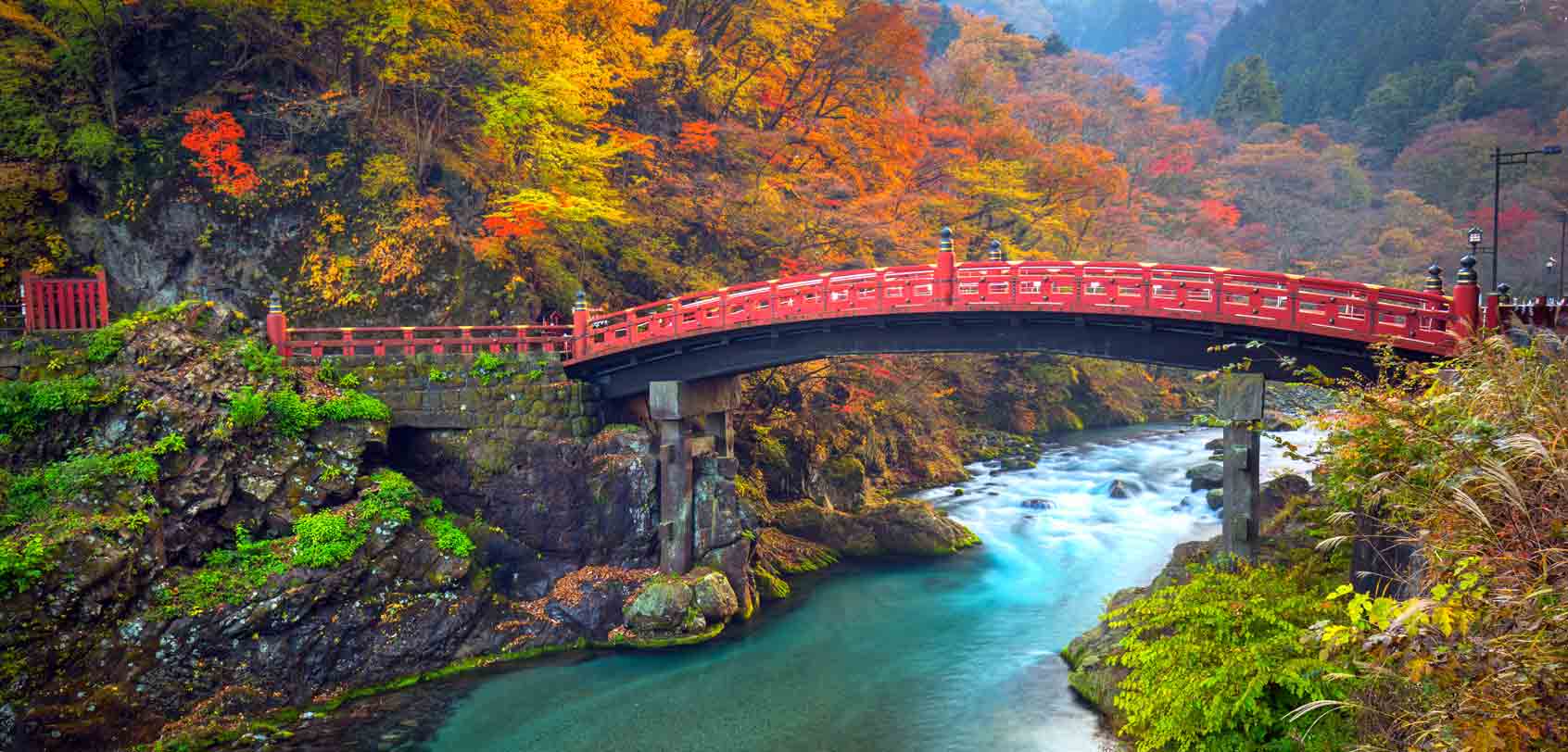
Below are other interesting day trips that you must see near Tokyo!
- TIP: For a hassle-free experience, you can do a Nikko day tour that includes several stopovers. .
- TIP: You can avail of a ‘ Yokohama and Kamakura Enjoy Pass ‘ to enjoy the major sightseeing attractions in these cities. .
- Kusatsu: (3hrs from Tokyo) This is a sound trip to make if you want to visit one of Japan’s most famous hot spring resorts. In fact, Kusatsu Onsen is blessed with large volumes of high-quality spring water which makes it popular among locals and tourists alike. You will love the atmosphere here as you find almost everyone wearing yukata/kimono on the streets. Otherwise, when winter comes, the town becomes a great ski resort to visit. .
- Chichibu: (2hrs from Tokyo) This city is a great place to escape if you want to get away from Tokyo’s bustle. After all, its forested mountains provide impressive nature views and hiking opportunities. One of the most sought-after events here though is its Chichibu Night Festival in December and its Hitsujiyama Park in Spring (for its beautiful pink moss park).
◘◘ Day #5 — …or More! (Tokyo Extra Days)

Naturally, there’s more to Tokyo than the sights I’ve mentioned on days #1 and #2 above. So in order to fill up your Japan itinerary with other activities for your extra days in the capital, below are some considerations that you can make.
WEST OF TOKYO.
- To enjoy the picturesque rooftop views on Mori Tower’s 52nd floor, just book an Observation Deck ticket online .
- Below Mori Tower, you will find a giant spider sculpture called Maman which means ‘mother’ in French. This is made by the artist Louise Bourgeois .
- Tokyo Midtown is yet another building that you can go into if you’re up for more shopping and entertainment.
- During Christmas, head to the area in Mori Tower that faces Keyakizaka Street in Roppongi Hills to see a great view of Tokyo Tower being illuminated by the street lights. Whereas if you go to Tokyo Midtown, you will find the Starlight Garden which has over 280,000 lights that are magically spread out on the grounds!
- ★ Tokyo Tower: At a height of 333 meters, this is like a replica of the famous Eiffel Tower. Made after Japan’s post-war rebirth, this used to be the country’s tallest tower — until Tokyo Skytree was made in 2012. Despite this fact, the tower’s prime location is still a splendid place to see a panoramic view of the city. There are 2 observatories here: the main one at 150m high and the special one at 250m high. The entrance is at 900 yen ($9~) for the main observation deck and 1,600 ($16~) yen for both decks. To book your tickets, go here .
- Nightlife: Clubs and bars in Roppongi can be a dizzying encounter for a first-timer; so it’s actually preferable if you visit this with a local. Otherwise, just a bit of advice: avoid the men (generally African men) who would try to push you into going to their clubs! More often than not, those are seedy ones, and later on, they might even overcharge you. For the best clubs to go to, I suggest Jumanji55 , V2 Tokyo , or Club Brand Tokyo which all have a good mix of locals and foreigners. Better yet, get this Tokyo Nightclub Pass that grants you UNLIMITED entry to the top 7 nightclubs in Tokyo! .
- Hie Shrine: You don’t need to travel all the way to Kyoto to witness a Shinto shrine with multiple iconic red torii (traditional Japanese gate) because you can find this right in the heart of Tokyo! (Otherwise, there’s also a similar one called Nezu Shrine).
EAST OF TOKYO.
- Imperial Palace: This is the main residence of the Emperor of Japan and it’s actually a massive park surrounded by moats. It contains buildings including the palace, private residences of the Imperial Family, offices, museums, and more.
- ★ Chidorigafuchi: Located just at the northwest section of the Imperial Palace is this moat section. This area is highly recommended during sakura season as it is one of the best spots for hanami (cherry blossom viewing). To add: they regularly light up the trees at night during that period and then you can even rent boats there!
- Tokyo Central Railway Station: This is the busiest railway station in Japan in terms of the number of trains per day and it’s quite a sight to see! For starters, you’ll instantly find this building because of its red brick appearance — a look that survived from when it was first opened in 1914. .
- DiverCity Tokyo Plaza: This is a dining, entertainment, and shopping complex which also features attractions related to the famous Gundam anime series. Truth be told, it also has a life-size Gundam statue in front of its building.
- Fuji TV Area: This is called such because of how the Fuji TV Building (one of Japan’s biggest TV stations) towers above everything else. As a visitor, you could definitely go into Fuji TV’s observatory deck that’s located in the circular portion of the establishment. Other things to see around here would be the shopping mall of Decks Tokyo Beach and the scenic Rainbow Bridge (which looks dashing at night, and where you can also find a replica of the Statue of Liberty.)
- TeamLab: Yet another Instagrammable attraction, this interactive museum is well-known for digital and light art, and to book your tickets, just go here .
- The Soho: This is an Instagram-worthy office building that’s famed for its color-blocked hallways.
- ★ Oedo Onsen Monogatari: If you can’t afford to go to a hot springs resort town, this is the next best thing for your Japan itinerary! This is basically a hot spring theme park that emulates the atmosphere of the Edo Period. You can enjoy various types of indoor and outdoor baths, restaurants, massages, games, and other entertainment while wearing a yukata (traditional Japanese wear). To reserve tickets for this, go here .
- ★ Tsukiji Market: Fish is a big business in Japan and the Tsukiji Market is a marvelous point for observing this lively industry as well as tasting its fresh produce. To date, this market has been divided into two, one of which is still found near Tsukiji Shijo Station and the other near Odaiba. If you want a guided day tour here, book an experience here . .
- TIP: Make the most of this area’s local flavors and drinking spots by doing a ‘ Tokyo After 5 ‘ tour!
- If you want the best ‘festive’ experience on this street, I suggest walking through here on weekends from 12PM to 5PM (until 6PM from April to September) because it is customarily closed to automobile traffic — an event known as ‘Pedestrians’ Paradise’.
- Depachika: This is a combination of the words depato (department store) and chika (basement). In Japan, most of the big department stores such as that of Mitsukoshi have their basement floor made into some sort of food market — but actually, if I have to describe it myself, I will call it a ‘food theme park’ because you can get to have a fun yet quick introduction into the VAST variety of Japanese food there — including square watermelons and insanely priced strawberries! Anyhow, the stalls are very generous with giving away samples too; so if you’re on a budget, you really don’t have to buy something (though it will be respectful to do so, naturally).
OTHERS (NEAR TOKYO)
- To book discounted tickets, reserve your spot here. .
- To book discounted tickets, reserve your spot here.
Kyoto Itinerary & Side Trips
Kyoto used to be the capital of Japan — nevertheless, it has retained that former glory with its great historic value alongside countless temples, shrines, gardens, imperial palaces, and traditional wooden houses among many others.
If I may add, this is also the city that is well known for its formal traditions most especially that of the geisha (or geiko ) who are Japan’s famed professional female entertainers. For these reasons and more, this is important to include in your Japan itinerary.
Looking for top sakura locations in Kyoto?
Check out this ultimate guide to Kyoto cherry blossom spots — from lesser-known locations to the most popular ones!
RELATED READ: Best Cherry Blossom Spots in Kyoto Best Hotels in Kyoto
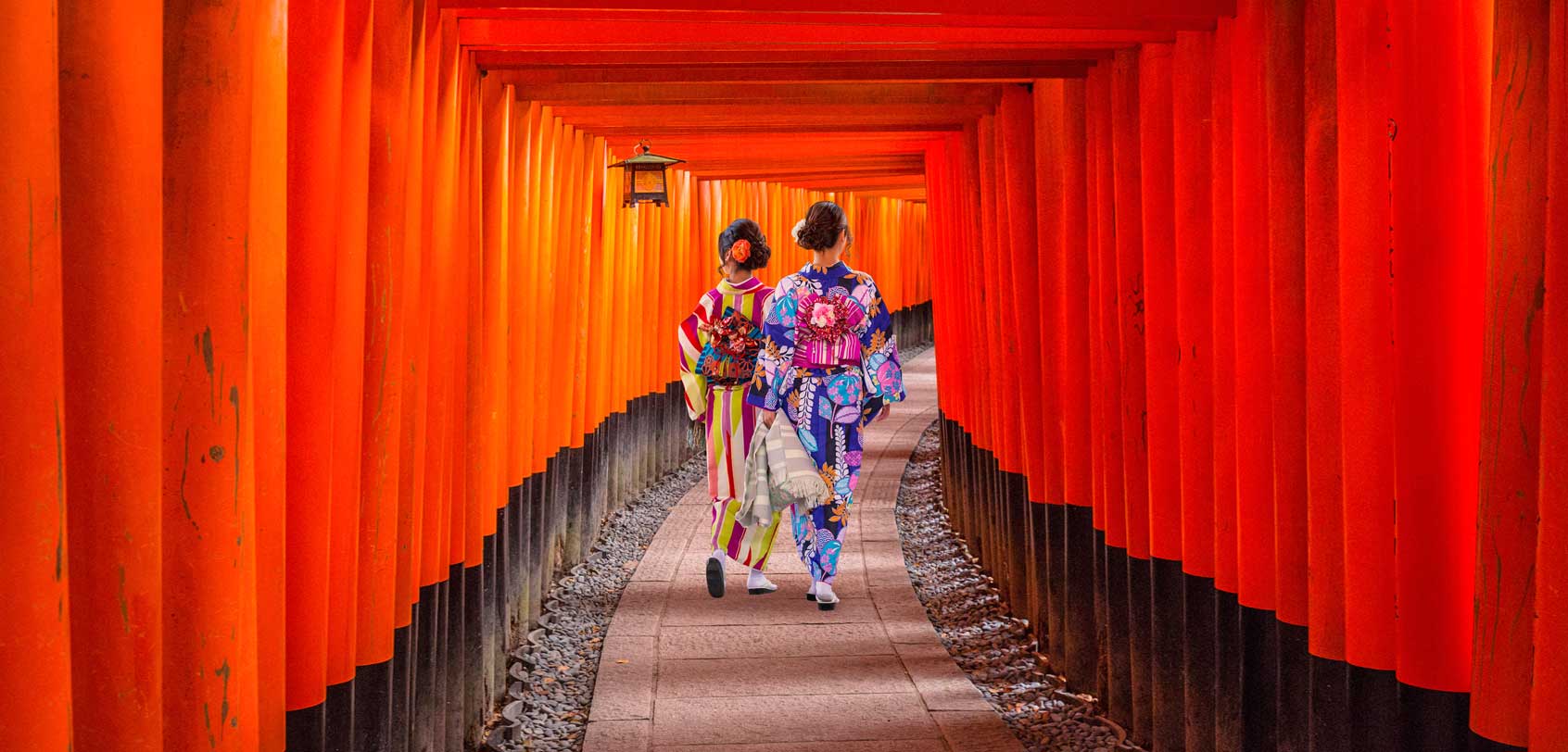
Take note that it takes around 3 hours by bullet train (shinkansen) to get to Kyoto from Tokyo. With that said, the ‘things to do’ for this day of your Japan itinerary should be fewer, but depending on your arrival time, it’s still possible to do a lot. Go and pick from my suggestions below…
- Nijo Castle: Also called Nijojo , this is the former residence of the first shogun (military dictator) in the Edo Period during his stays in Kyoto. Today, this castle is divided into 3 areas: the Honmaru (main circle of defense), the Ninomaru (secondary circle of defense), and the gardens. What’s great about the castle grounds too is that there are over 400 cherry blossom trees so it is quite a sight during the spring season. (Admission is 600 yen).
- Nishiki Market: Known as “Kyoto’s Kitchen”, this is a long yet narrow shopping street that features over 100 lively shops and restaurants. This is a great spot to visit for your Japan itinerary if you want to buy any fresh produce or Kyoto specialties. As a market with a long history, this is also a great place to mingle with the locals.
- Kyoto Imperial Palace: This great expanse used to be the residence of Japan’s Imperial Family until 1868, when the capital was moved to Tokyo. Given that this is within the Kyoto Imperial Park, it makes for a leisurely stroll to go through the space which is full of ponds, gardens, and weeping cherry trees. (Admission is FREE).
- Manga Museum: If you’re fascinated by Japan’s manga (comics) culture and history, this could be a quaint stopover for your Japan itinerary. Sometimes there are even artists who set up exhibits and offer sketches or portrait drawings of the visitors. (Admission is 800 yen).
- For a hassle-free experience, you can do a guided Fushimi-inari tour that includes a Sagano Train ride and a visit to Arashiyama.
- Pontocho: This is a dining area that’s packed with restaurants offering a wide range of choices from local to foreign cuisines. Take note though that most establishments open from around 5PM to 11PM only. If you come in the warmer seasons, most of the places build temporary platforms over the river for open-air dining (called kawayuka ).
TIP : If you want a hassle-free experience for your Japan itinerary, you can take a guided Kyoto morning tour or afternoon tour to key places in the city.
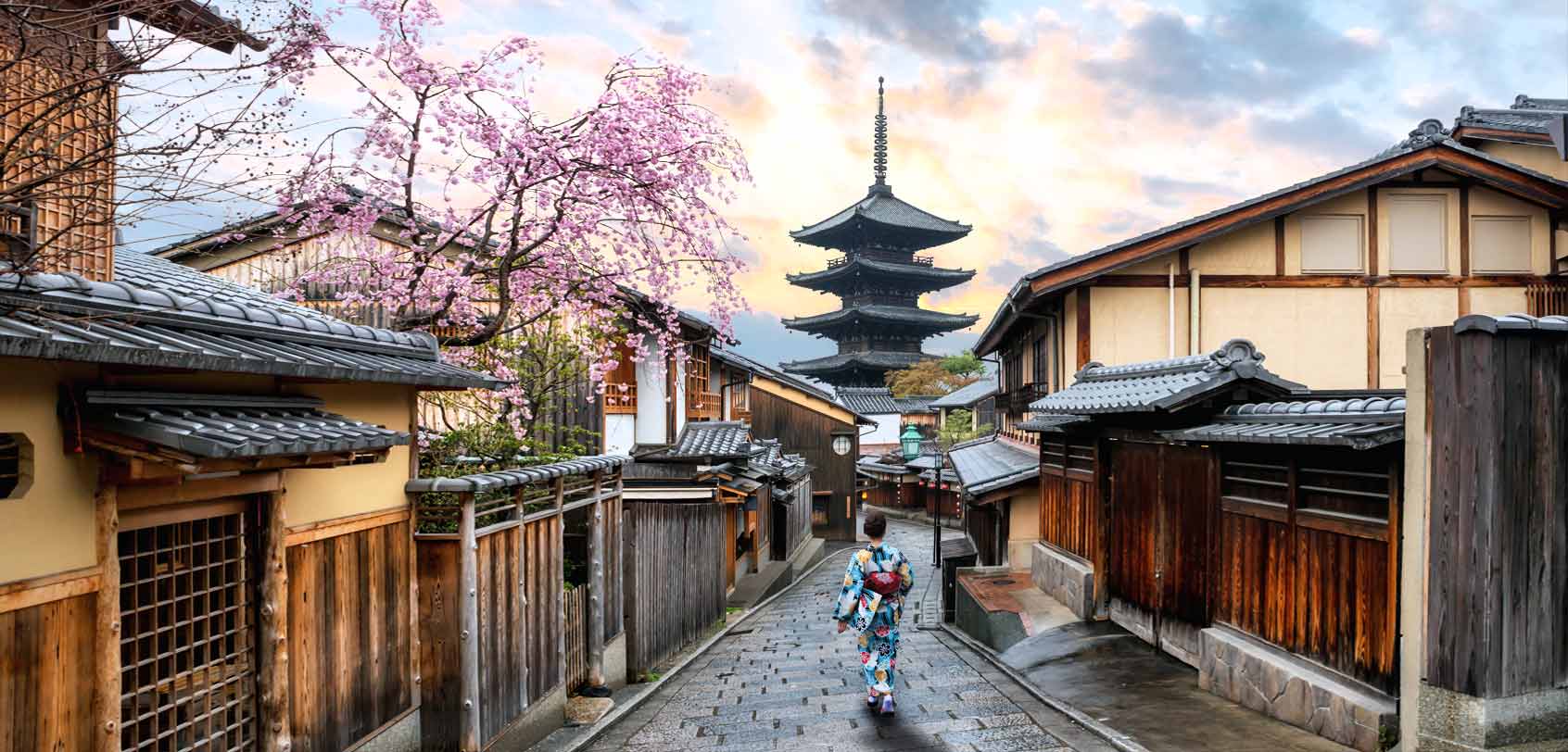
Time to make full use of this day in exploring Kyoto’s other important sights!
In my opinion, though it is possible to do all of the sights below in one day, it’s still a good idea to pay heed to the time especially if you plan to do a Kyoto kimono rental too because it will lessen your hours of exploration (given that putting on a kimono takes some time).
- Kiyomizudera: This is a famous temple in Kyoto that’s listed under the UNESCO World Heritage and it is best known for its wooden stage that stretches out to the hillside as it offers great views over the cherry and maple trees below it — so imagine how the site will be like during spring or autumn! (Admission is 400 yen).
- Other streets to check out in the district are Sannenzaka / Sanneizaka and Ninenzaka.
- ★ Kinkaku-ji: Lauded as the ‘Golden Pavilion’, this is — indeed — a structure that’s mostly covered in gold leaf. This Zen temple actually used to be the retirement villa of a shogun. Today, you would absolutely enjoy its impressive architecture as it overlooks a picturesque pond. Before leaving, don’t forget to go through the gardens and check out Sekkatei Teahouse to enjoy some matcha tea and sweets. (Admission is 400 yen).
- Ginkakuji: On the other hand, though this is referred to as the ‘Silver Pavilion’, it’s not really in silver — it never was. Many believed that it garnered its name after the building was built to contrast the Golden Pavilion. Either way, this remains to be a popular spot for many.
- Philosopher’s Path: This is a pleasant stone path (near Ginkakuji ) that is a must to visit during cherry blossom season . Its name was derived from Nishida Kitaro, one of Japan’s most famous philosophers, who used to practice meditation while walking this route.
- Hanami-koji Street and Shirakawa Area: The most popular places within Gion, so don’t forget to wander around here.
- ★ Gion Corner: Ideally, one of the ultimate experiences in Kyoto is to dine with a maiko or geiko, but since this is often expensive and exclusive, the next best thing you can do to ensure that you witness a real maiko or geisha is to visit Gion Corner. Aimed at foreign visitors, this place offers cultural shows that introduce traditional Japanese arts such as the tea ceremony, ikebana, bunraku, Kyogen comic plays, and maiko dances.
- Shijo Avenue: Bisecting Gion district is a popular shopping area that sells local souvenirs and gifts.
- Gion Matsuri: This is the festival of Yasaka Shrine and it is said to be the most famous festival in Japan! Therefore, if you happen to be in Kyoto in the month of July, you’re in for a treat because they celebrate during the whole month (with the highlight being July 17 as they do a grand procession of floats called Yamaboko Junko).
TIP : Wanna join a guided tour to the geisha districts for your Japan itinerary? Click here !
Kimono rental: Much like Tokyo, Kyoto has a lot of kimono rental shops too. If you only have the budget to do one kimono experience, I highly recommend doing it in the unique atmosphere of Kyoto than in Tokyo’s Asakusa! Another option is to do an oiran ( courtesan ) rental or photoshoot at Studio Esperanto .
◘◘ Day #8 — …or More!
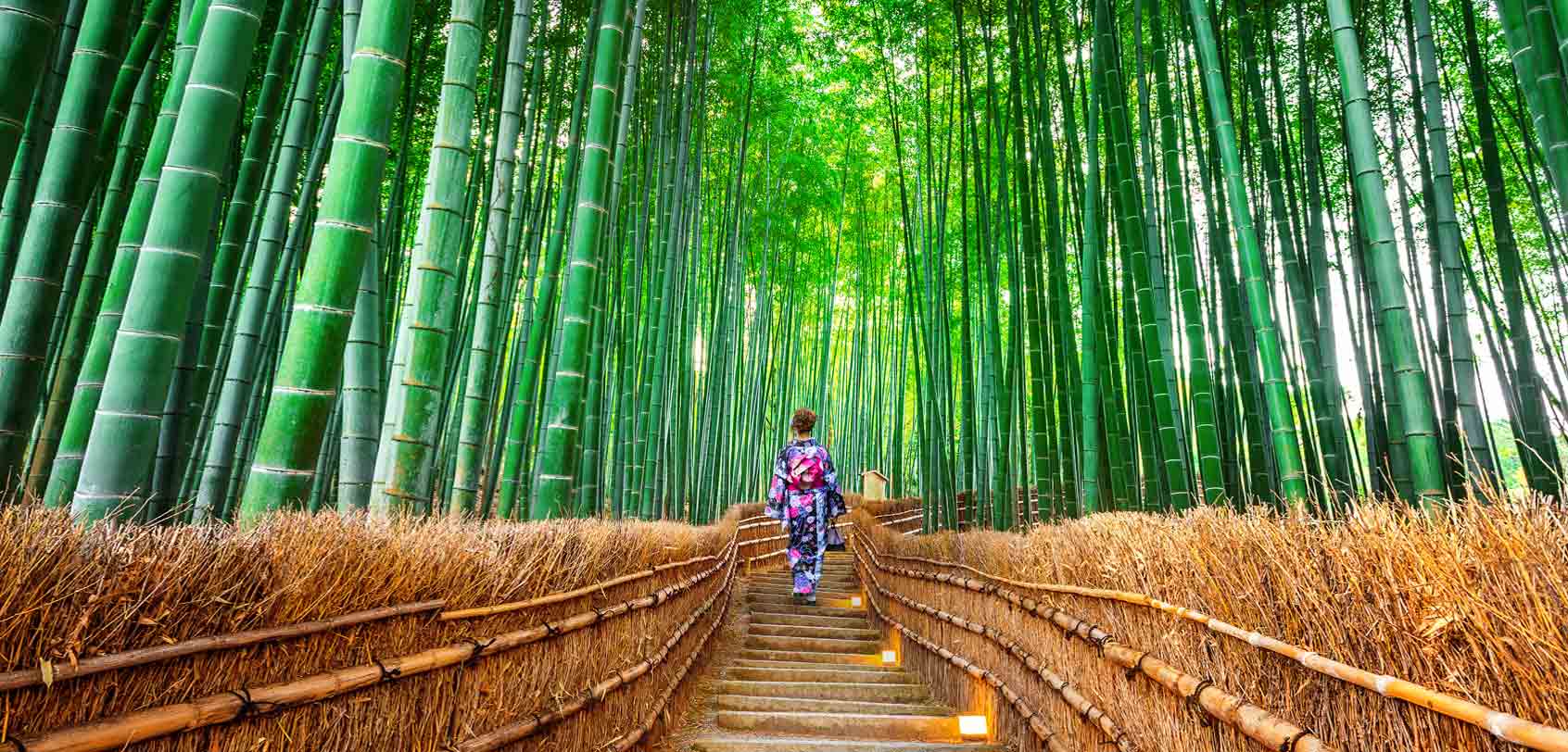
Arashiyama is particularly popular during the spring and autumn season — nevertheless, it’s a year-round destination due not only to its close proximity to Kyoto but also to its natural setting! In order to make the most of your Japan itinerary, don’t forget to check out the following Arashiyama highlights…
- Bamboo Groves: I’m sure you’ve seen photos of this place and it is famous for a reason: it really makes for a nice scenic walk or bicycle ride! If you happen to have the budget to rent a kimono in this area as well, then it is a must to take photos on this path. To avoid the crowd, I recommend coming in the early morning.
- Togetsukyo Bridge: Translated to ‘Moon Crossing Bridge’, this is an iconic landmark within Arashiyama due to how it is backdropped by the forested mountains. There is even a park by the river which is speckled with cherry trees.
- Monkey Park Iwatayama: The entrance to this park is found south of the Togetsukyo Bridge. Be wary that it’s a bit of an uphill climb — but which only spans for about 10 minutes. In this place, you will love the fact that there are over a hundred monkeys roaming freely in the open area. I particularly loved my experience here as I also fed the monkeys from a designated area. To add, this is also a great vantage point for panoramic views over Arashiyama. (Admission is 550 yen).
The center of the district is quite compact so I suggest taking your time strolling around. Other places of interest that you can check are Tenryuji Temple and Saga-Toriimoto Preserved Street. (Want a guided Arashiyama tour packaged together with Nara for your Japan itinerary? Check out this tour . Otherwise, you can also just take a half-day tour that will only focus on the top sights within Arashiyama.)
Or, you can also do this other Arashiyama tour from Kyoto with a Nara stopover for your Japan itinerary.
If you still have some more time, there is an option of doing the Sagano Scenic Railway which is a sightseeing activity on an old-fashioned train. Most people usually take a guided tour for this which is partnered together with a tour around Arashiyama. If not, you can just simply buy a one-way ticket .
◘◘ Extra or Substitute Activities in Kyoto

Got some more time for your Japan itinerary? Check out these other places…
- ★ Daigoji Temple: A designated UNESCO World Heritage Site that is hugely popular especially during autumn or springtime due to its picturesque surroundings. Sure enough, with its beautiful grounds, landscaped gardens, hiking trails, and so much more, it instantly makes for a worthy destination for your Japan itinerary.
- Toji Temple: This is yet another one of Kyoto’s many UNESCO World Heritage Sites and what’s notable about this temple is its 5-storied pagoda which is said to be the tallest pagoda in Japan.
- Shojuin Temple: This has risen to popularity among young females in Japan primarily because of its Instagrammable heart-shaped window called an ‘ inome ‘ window in its guest hall. What’s more, the temple’s ceiling has beautiful pieces of splendid patterns. (Admission of 400 yen).
Osaka Itinerary (including Nara)
Osaka has the 2nd largest metropolitan area after Tokyo and as a part of the Kansai region, it is best known not only for its grand shogunate castle but also for its nightlife and street food. Truth be told, this is a quintessential stop for your Japan itinerary!
RELATED READ: Best Cherry Blossom Spots in Osaka Best Hotels in Osaka
◘◘ Day #9 (Nara)
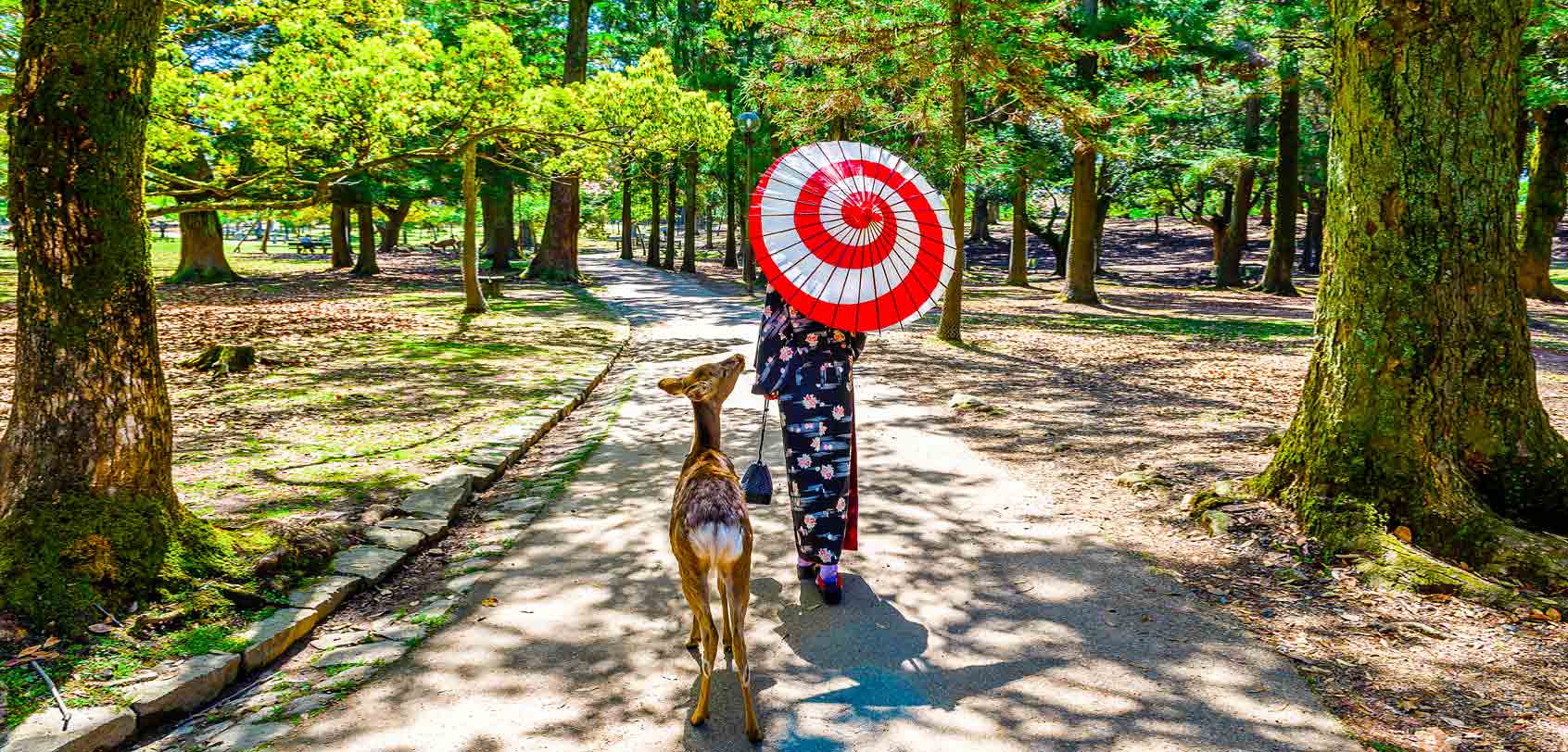
For your Japan itinerary, take note that it only takes about 1 hour by train to get to Osaka from Kyoto. After you check in to your Osaka accommodation , venture out on a day trip to the nearby district of Nara (which only takes less than an hour). If you’re not up for that, you can interchange this with day #10.
Nara is the first permanent capital of Japan, after which it was moved to Nagaoka, later to Kyoto, and then to Tokyo. Today, this district is famous for its historic treasures and adorable deer park.
- TIP : Try bowing down to the deers and oftentimes, you will find that they bow back! It is said that back in the olden times, the locals bowed down to them as they were (like I said) regarded as messengers of God. For generations, they have retained this Japanese custom especially when they expect some food.
- ★ Todaiji Temple: Found adjacent to Nara Park, you’ll first enter this temple’s towering Nandaimon Gate with fierce-looking statues that represent the Nio Guardian Kings. This is followed by the main hall, the Daibutsuden (Big Buddha Hall) which is the world’s largest wooden building housing one of japan’s largest bronze statues of Buddha.
- Horyuji Temple: This is one of the world’s oldest surviving wooden structures and a designated UNESCO World Heritage.
TIP : It’s possible to take a guided tour to Nara from Osaka (with a stop to Arashiyama included in it too). Alternatively, if you want to focus on this city only for your Japan itinerary, you can also just take a focused Nara tour .
If there’s still time, head on over to the nearby Mount Yoshino — even more so if you’re in Japan during its sakura season. Besides, this is regarded as the country’s most famous cherry blossom spot given the 30,000 cherry trees found on its slopes! Truth be told, Mount Yoshino together with the nearby Mount Koya and Kumano have been designated as a cultural UNESCO World Heritage Site since 20014.
Wanna stay a night or more? Check out these top best hotels in Nara grouped from budget to luxury places to stay.
◘◘ Day #10+ (Osaka)
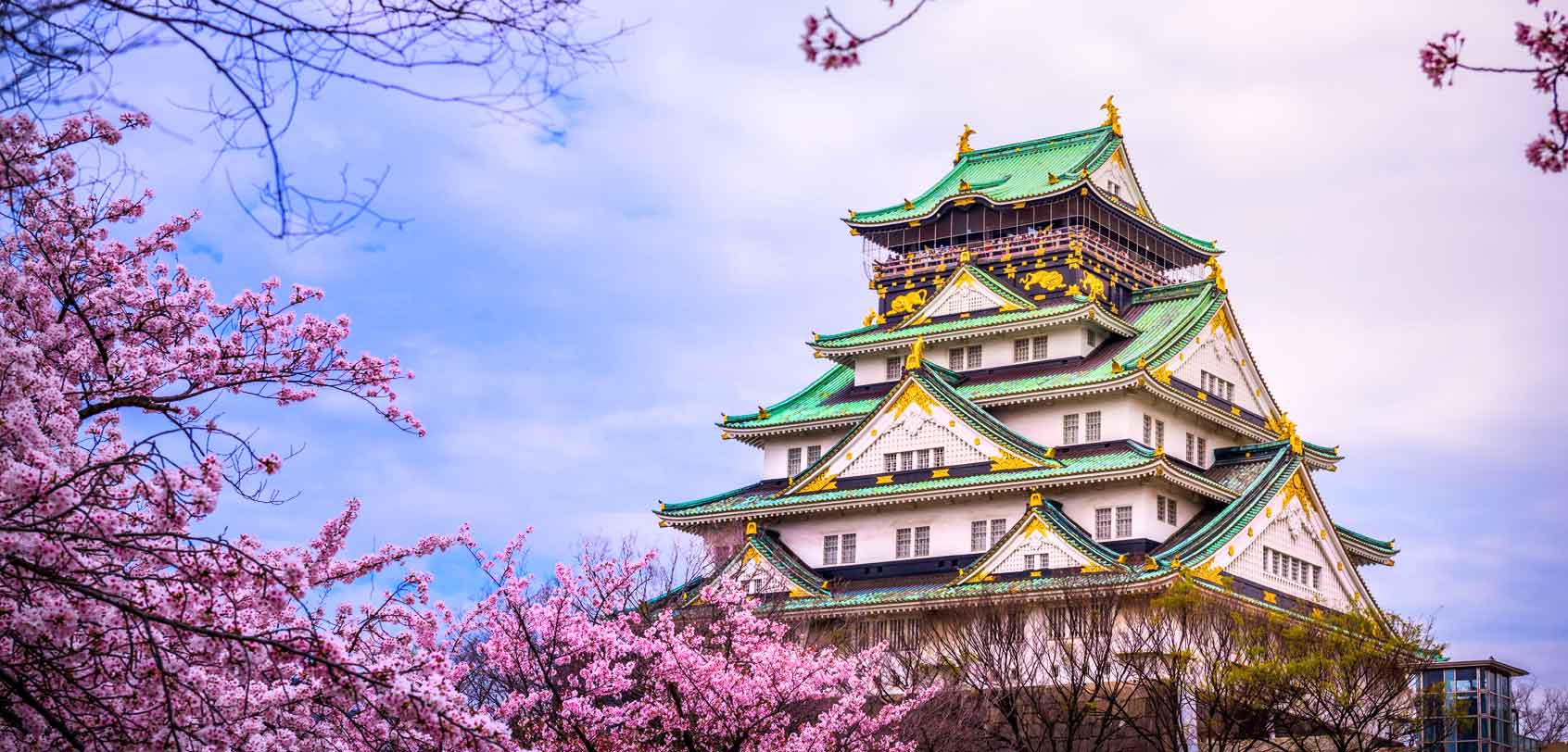
For this part of your Japan itinerary, t’s time to explore Osaka’s top wonders, namely…
- Beside it is the Nishinomaru Garden with over 600 cherry trees with an admission of 200 yen.
- TIP : Don’t miss out on the cool photo opportunities on the long escalator that leads to this observatory! In the basement of the building, you’ll also find a restaurant floor that emulates the early Showa Period of Japan.
- If you see a long line, don’t hesitate to line up too because most of the time it means that it’s a pretty good place! (Of course, if you don’t mind waiting).
- Shinsaibashi Shopping Arcade: This nearby area is Osaka’s premier shopping center that combines retail stores, boutiques, department stores, etc.
- Hozenji Yokocho Alley: This narrow path has a number of interesting restaurants and izakaya (informal Japanese pubs) that are somewhat reminiscent of Kyoto’s Pontocho alley.
- Shinsekai: If you want a less crowded version of Dotonbori, this is the place to go to for your Japan itinerary. Notable here is the Tsutenkaku Tower (the symbol of the district) and the kushikatsu (an Osaka specialty of various battered deep-fried foods)
TIP : Want to save time for your Japan itinerary? Take a guided Osaka walking tour or a food tour !
Are you rather looking for a fun and quirky way to explore Osaka? Then come and join a Go Kart experience and race through the city!
◘◘ Extra or Substitute Activities in Osaka
- For greatly discounted tickets, book online : ( standard E-ticket /+ express pass 3 , express pass 4 , or express pass 7 ).
- Hirakata T-SITE: This is a commercial complex near Hirakatashi Station that has beautiful architecture. Inside it is the famous Tsutaya Bookstore which has over 150,000 books and which also has become a recent hit on Instagram for its charming interiors.
- Osaka Aquarium: This is an incredible aquarium that displays over 15 tanks, each representing specific regions of the Pacific Rim. For instance, the central tank that represents the Pacific Ocean is 9 meters deep and is home to a whale shark which is the main attraction of the aquarium! ( Reserve your tickets here ).
Hiroshima Itinerary & Side Trips
This is the city that was largely destroyed back when an atomic bomb was dropped over it during World War II. Great efforts were taken to rebuild the city and today, Hiroshima is well known for its aspirations of tranquility with its Peace Memorial Park and if I must say so myself, this is a must for your Japan itinerary.
RELATED READ: Best Cherry Blossom Spots in Hiroshima Best Hotels in Hiroshima
◘◘ Day #11 (Hiroshima)

Please take into account in your Japan itinerary that it takes more or less 3 hours to get to Hiroshima from Osaka. Once here, below are landmarks that you can include on your…
- Peace Memorial Museum: Comprises of 2 buildings that go through the history of the city and the events that happened after the nuclear bomb. When I visited here, most of the exhibits were upsetting — and for good reason because they wanted to serve as a reminder of how we should never take peace for granted.
- A-Bomb Dome: This is what remains of the former Prefectural Industrial Promotion Hall. When the bomb exploded, this is one of the few buildings that still stood and remains so today. (This is also a listed UNESCO World Heritage Site).
- Cenotaph: This is an arched tomb dedicated to the A-Bomb Victims who died. Underneath it is a stone chest that holds the register of their names that number over 220,000. On the anniversary of the bombing, a ceremony is held at the park every year along with an observed silence at 8:15AM (the exact time of the bombing).
- Hiroshima Downtown: This is a bustling downtown area with Hondori Street as its main feature. As you venture about this place, do try the city’s specialty which is the Hiroshima-style okonomiyaki — a delicious savory pancake containing various ingredients.
- Hiroshima Castle: This was destroyed by the atomic bomb in 1945 but it was rebuilt and nowadays, it holds exhibits about the castle’s history as well as Japanese castles in general.
TIP : If you don’t intend to stay a night in Hiroshima, you can take a day tour to this city — which will already include a trip to Miyajima. (Starting points for your Japan itinerary can be from either Kyoto or Osaka ).
◘◘ Day #12 (Miyajima)
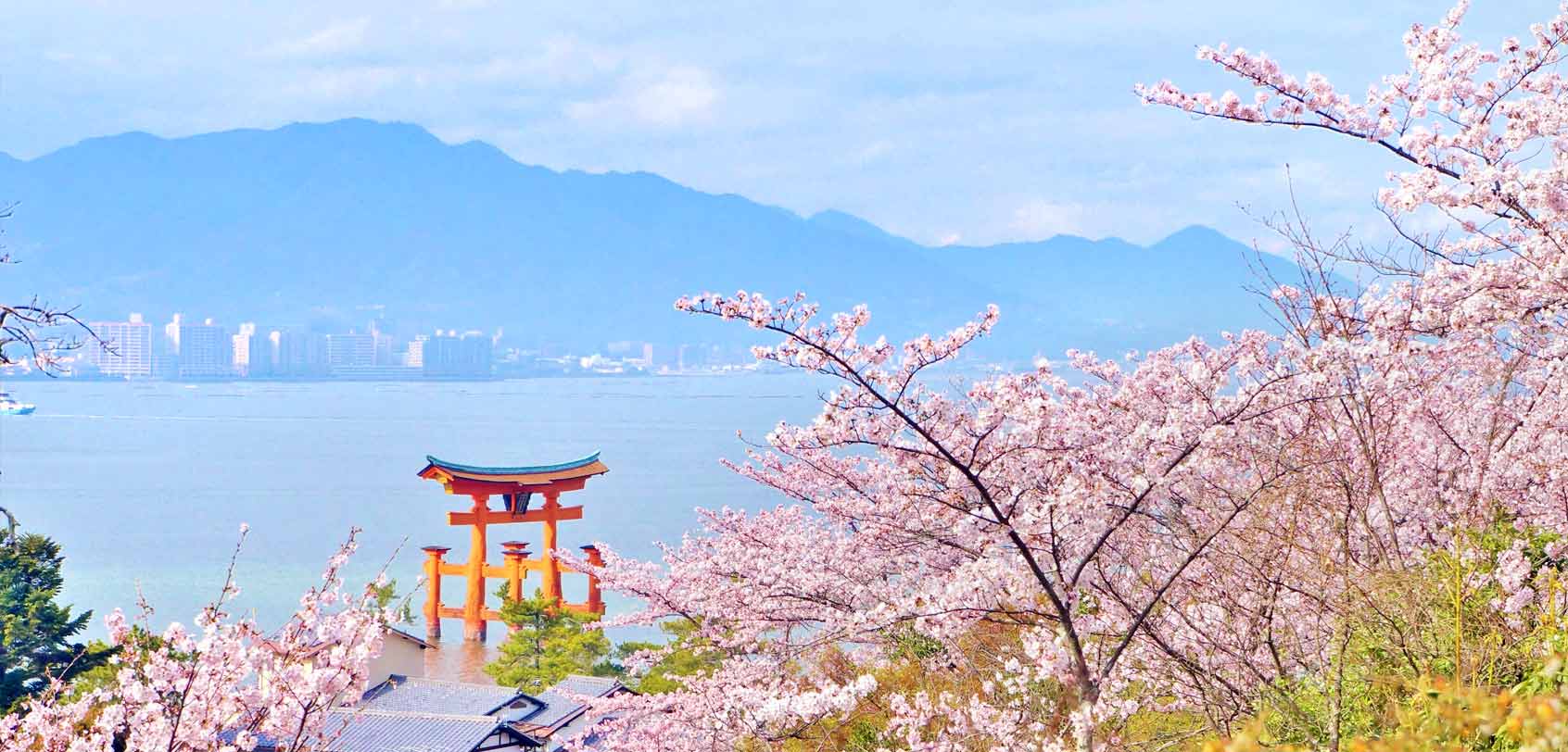
Just a 1-hour ride away by train and ferry from Hiroshima is the small island of Miyajima. It’s particularly famous for its giant torii gate that seemingly floats on the water during high tide — making it one of Japan’s best views. Most people do this as a day trip for their Japan itinerary but you could also stay overnight to experience a ryokan (traditional Japanese inn).
- If you want the best view, be mindful of the timings of the tides during your visit. High tide is obviously when it is most picturesque, but the low tide has its charm too because then you can walk up to the gate and see it up close.
- Momijidani Course: shortest but also the steepest and goes mostly through the forest.
- Daisho-in Course: offers the nicest views and is not as steep as the other two.
- Omoto Course : any of these 3 hiking trails takes about 1 to 2 hours to reach the summit.
- Daisho-in Temple: Found at the base of Mount Misen. There is an interesting Buddha ritual here wherein as you walk up the temple steps, you spin the metal wheels with inscribed sutra as it is believed to have the same effect as reading them.
- Omotesando: This shopping street is the busiest place in Miyajima where you can find souvenir shops, food stalls, and restaurants. Why not do some shopping here while doing your Japan itinerary!
Other Destinations & Trips
Obviously, there is more to Japan other than the famous destinations of Tokyo, Kyoto, Osaka, Nara, and Hiroshima. So if you have more days on your Japan itinerary, consider filling it up with any of the following destinations!
TIP : For a complete list of amazing tours and activities to do for your Japan itinerary, see here ! When booking, use code AILEEN5OFF to get 5% off!
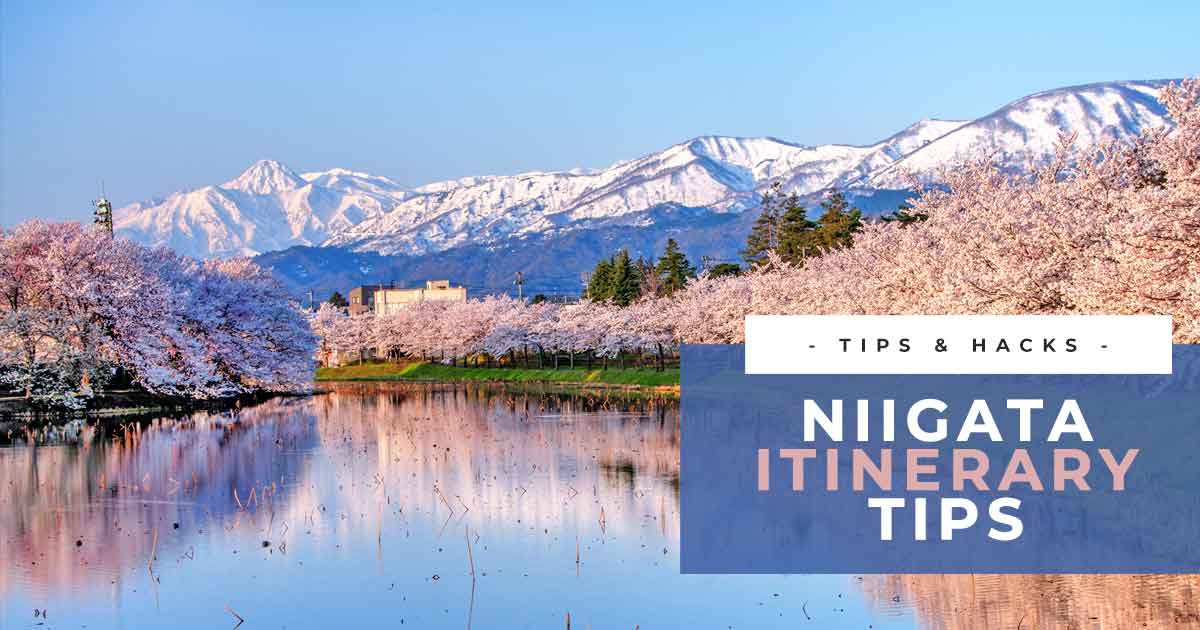
Niigata Itinerary

Chubu Itinerary
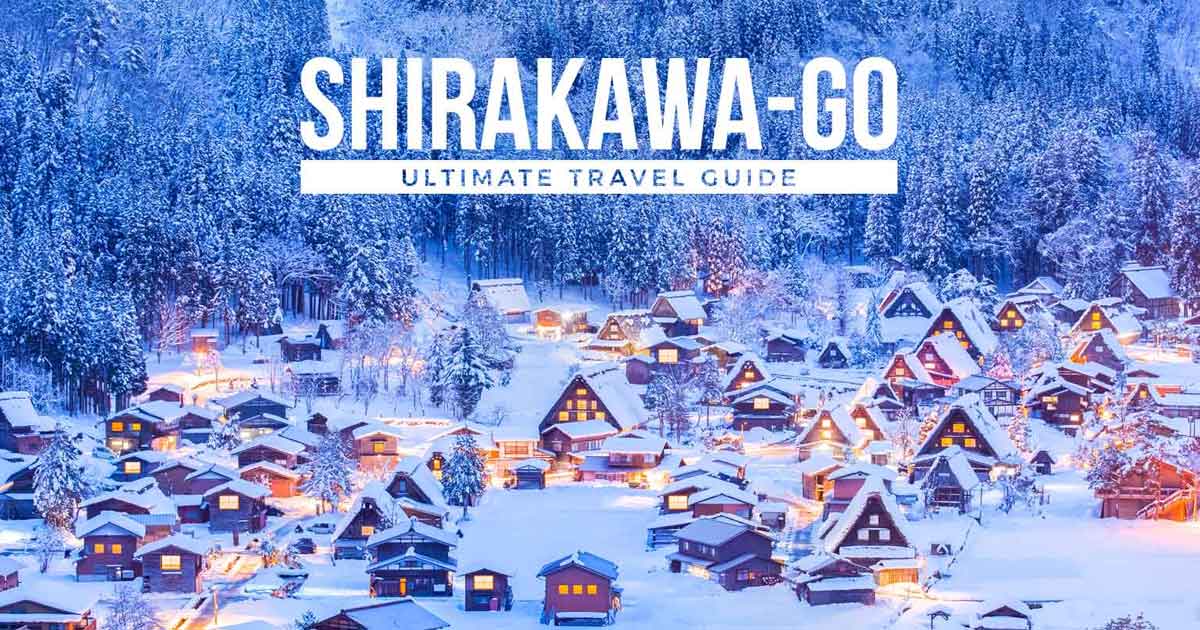
Shirakawa-Go
Tateyama Kurob Alpine Route
◘◘ Day #13 and Onwards
(My favorites are marked with a ★).
NORTH OF JAPAN.
- See here for a list of things to do in Hokkaido . .
- READ : Niigata Prefecture: A New Japan Foodie Destination! .
- Nagoya: Also found within the Chubu region is Nagoya which is known for its towering castle. Other notable sites are as follows: Korankei, City Science Museum, Atsuta Shrine, and Railway Museum. For food, check out Sekai no Yamachan , a famous izakaya (Japanese pub) in the city that serves flavorful “legendary chicken wings”. .
- Kanazawa: This is the capital of the Ishikawa prefecture and it boasts historical attractions as well as its ‘ Kenrokuen ‘ — said to be one of the 3 best landscape gardens in Japan. .
- Kiso Valley: Nestled within Nagano prefecture is this valley that holds an ancient 70km trade route called Kisoji which was later on combined with other routes forming the 500km long Nakasendo . Today, nearby post towns of Magome, Tsumago, and Narai are flocked by visitors not only to hike through the Nakasendo but to also revel in the traditional stone paths and wooden buildings of these quaint towns. Truly an interesting addition to your Japan itinerary! .
- READ : Things to do in Matsumoto .
- For more info, read here . .
- READ : Things to do in Takayama
- Tateyama Kurobe Alpine Route: If you’re up for incredible and unique nature activities in Japan, it’s a MUST to visit the stunning mountain sightseeing route that’s commonly referred to as the “Roof of Japan”. A crowd favorite as of late is its grand ‘Snow Wall’ that’s open from mid-April to late June! For more info, read here . .
- You can do this as a day tour from Nagano .
- Shibu Onsen: An old-fashioned hot spring town
- Shiga Kogen Resort: The largest ski resort in Japan.
Wanna see cute and fluffy foxes? Then go and visit the famous fox village in Miyagi Zao’s city of Shiroishi for your Japan itinerary! . Check out this blog post to find out more: The Fluffiest Place on Eart: Miyagi Zao Fox Village!
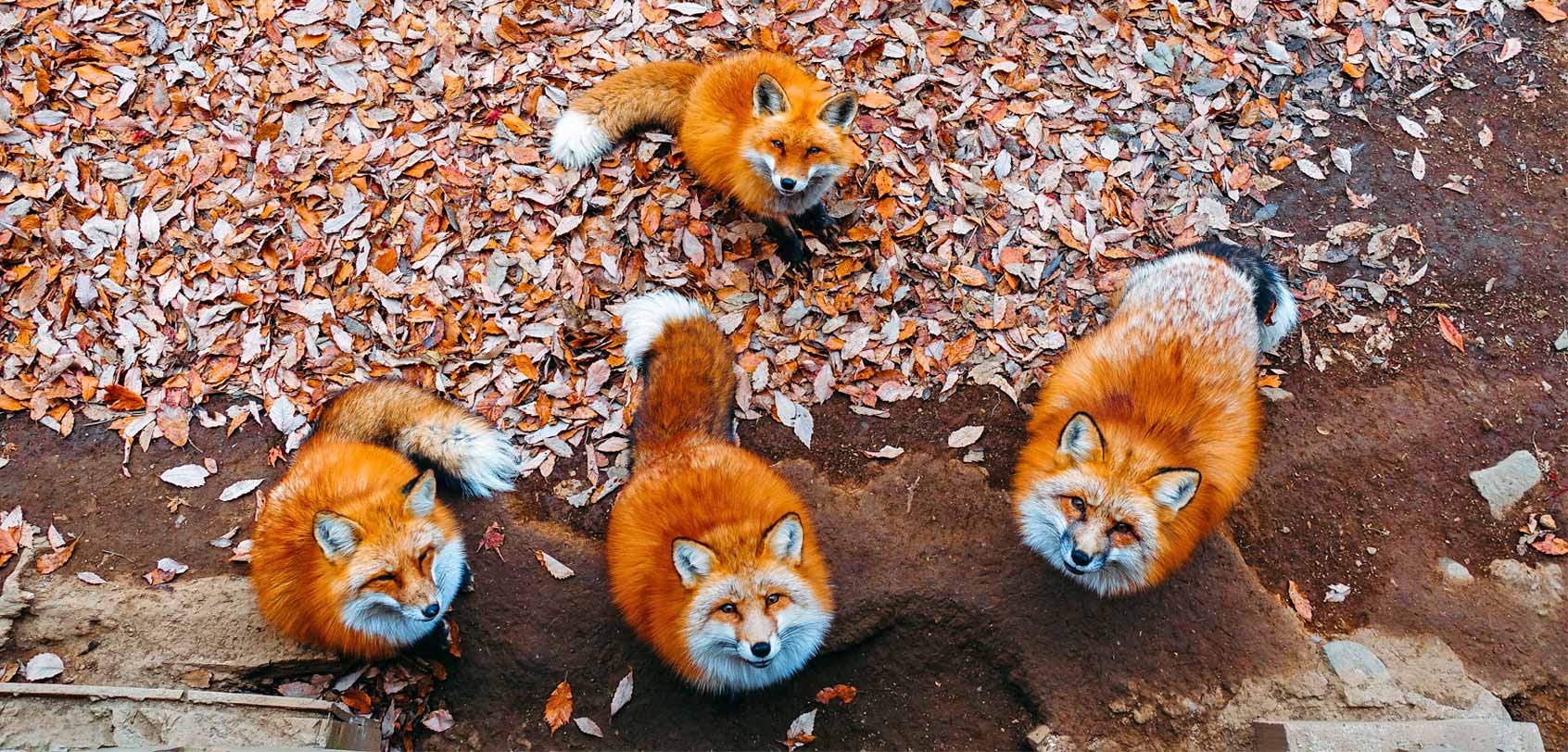
SOUTH OF JAPAN.
- ★ Kinosaki: Located about 3 hours away from Kyoto, this is a pleasant onsen town that has a great atmosphere. I stayed here before for 2 nights and I loved strolling around the town in my yukata and geta (wooden clogs), feeling like a local! After all, everyone (locals and foreigners alike) who visit the town almost always wears the same attire when going about the place onward to the public baths. .
- See here for a list of things to do in Okinawa . .
- Himeji: This place is most famous for its Himeji Castle which is typically considered to be Japan’s most beautiful surviving feudal castle. Because of this, it is both a UNESCO World Heritage Site and a national treasure that you must see for your Japan itinerary. .
- See here for a list of things to do in Kobe .
Booking Essentials

TIP: It’s a good idea to crosscheck the prices with other popular travel insurance providers like World Nomads and HeyMondo (as my reader, you get 5% off)! . However, take note that a travel insurance’s affordability typically means lesser coverage; so please always ensure that you read the fine print in order to decipher which travel insurance company is the right fit for you and your trip!
The Best Tours in Japan?
Come and check out this list of the top things to do in Japan which features the best activities and tours to do in Tokyo, Okinawa, and more!

There really is SO much to see in Japan! …But I believe that my travel guide here is already a good start. Please feel free to tweak this itinerary and make full use of my extra activity suggestions in order to make your trip shorter or longer and better fitting for your travel style.
Enjoy and do let me know how your trip goes!
Have you seen my latest vlog?

Hey there! I am Aileen Adalid. At 21, I quit my corporate job in the Philippines to pursue my dreams. Today, I am a successful digital nomad (online entrepreneur, travel writer, & vlogger) living a sustainable travel lifestyle.
My mission? To show you how it is absolutely possible to create a life of travel no matter the odds — and I will help you achieve that through my detailed travel hacks, guides, resources, tips, and MORE!
Follow Along
CURRENTLY BASED IN: The Philippines
- 100k Followers
- 51k Followers
- 80k Followers
- 10k Followers
- 23.1k Followers
Join over 1 million readers worldwide and get my FREE packing checklist, gain exclusive access to travel giveaways and more!
Success! Next, please check your email to confirm your subscription.
GET FREE PRINTABLE NOW!
Trending Now
Korean visa application requirements for filipino tourists in manila, philippines (single / multiple entry).
Make your South Korea travel dreams come true and get a single or multiple South Korean visa in Manila, Philippines!
Top 10 Things to Do on a Trip to South America
South America is one of the most diverse continents — full of natural wonders and fascinating cultures. Join us as we explore the top 10 things to do.
Top 10 Things to Do for Your First Tibet Travel
Make the most of your Tibet travel with these top 10 must-do activities, from exploring ancient monasteries to trekking mountains!
Geisha of Japan: Understanding the Facts, History & Myths
Japan’s geisha are cloaked in mystery & secrecy resulting in a number of false ideas about them — so let’s get the facts straight!
Maximizing Your Miles: Unlock Budget-Friendly Travel Hacks & Tips
Start traveling smart! Take note of these travel hacks that will help you in maximizing your miles or do points hacking.
Latest Posts
Learn Today
How to start a successful blog, 70 comments.
I want to go back there so much! Loved it
This really is a comprehensive guide to Japan. It has everything you would need to know about Japan and how to plan the perfect itinerary.
we are planning to visit Japan next year and this is very helpful
Thanks for sharing this useful article about Japan itinerary, it will so great holiday :)
Do I need JR Pass if I travel to Hakone? My whole trip is just 5 days.
I guess that would mean you’ll mostly base yourself in Tokyo? If so, I don’t think you’ll need a JR Pass — but to be more precise you can read my article here: https://iamaileen.com/japan-rail-pass-guide/ . It has a link to a calculator site there that can calculate if having a JR pass is worth it or not for your route. Hope that helps!
Submit a Comment Cancel reply
Your email address will not be published. Required fields are marked *
Be notified of follow-up comments by email
Be notified of new posts by email
Submit Comment
Pin It on Pinterest
- Work With Us
- Blogging Bootcamp

- Van Conversion Academy
- Campervan Shop
- Campervan Rentals
- Plan a Trip
- Itineraries
- Destinations
- Responsible Travel
- Family Travel
- Budget Travel
- Scuba Diving
- Travel Credit Cards
- Digital Nomad
- Teach English Abroad
- Blogging Resources
- Income Reports
- Travel Shop
- Meet Katie & Ben
- About Two Wandering Soles
- Personal Stuff
- Portfolio & Press
Japan Trip Planner [2024]: How to Plan Your First Trip to Japan
Home » Blog » Japan » Japan Trip Planner [2024]: How to Plan Your First Trip to Japan
This information-packed Japan trip planner has the answers to all your questions. Find out the best places to visit, which Japanese foods to try, and how to ride the bullet trains. All the research is done for you to assist in planning a trip to Japan.
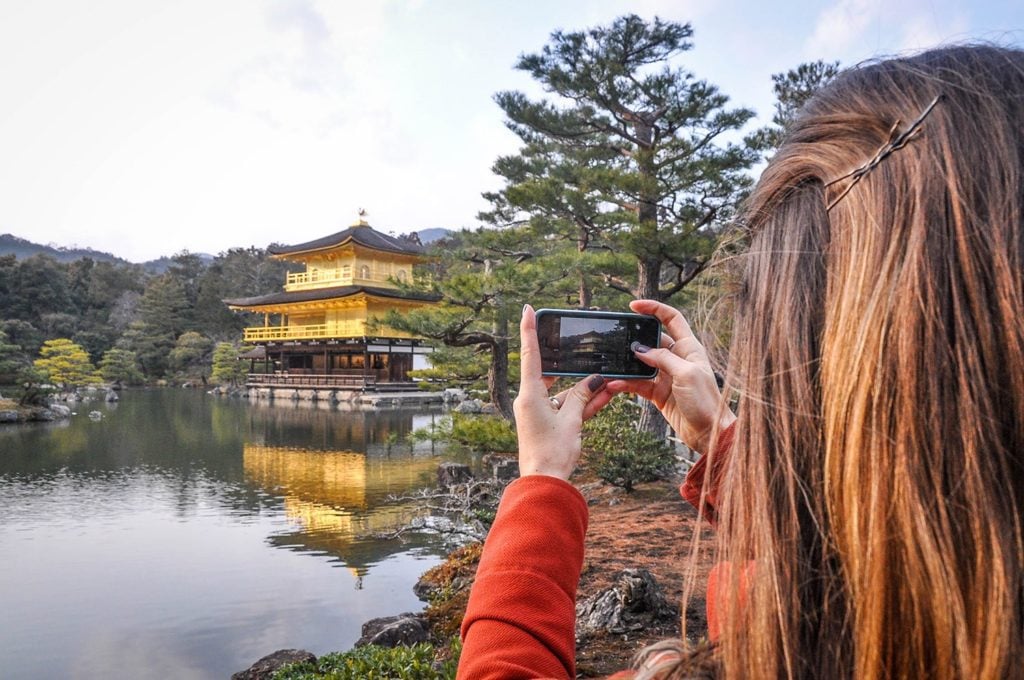
If you have been dreaming of traveling to Japan and want to get serious about planning your vacation, this Japan travel planning guide is packed with all the tips and information that you’ll need to know before your trip to the land of the rising sun.
We’ve traveled to Japan 3 times (and counting!) and have picked up plenty of insider tips. From which foods to try, to how much money to budget, to what travel gear to pack, to the best things to do in Japan .
In this guide, we’re showing you exactly how to plan a trip to Japan by covering everything. And I mean everything!
We’re even answering your embarrassing questions like, “ What are the toilets like in Japan? ”
We’ll also share exactly how much it costs to travel to Japan, plus we’re throwing in some money-saving budget tips! This is the ultimate resource with everything you need to know to get started planning a trip to Japan.

Japan Travel Planning Guide
Wondering how to plan a trip to Japan? You’ve come to the right place!
Important info about Japan
- How long should you spend in Japan
- Best time to visit Japan
Booking timeline: Know what to book when
- Top places to visit in Japan
- Top things to do and see in Japan
- Budget for Japan
Transportation in Japan
- Practical information for visiting
Food in Japan
- Japan trip ideas based on interests
Our experience in Japan
- What to pack for Japan
- Things to buy in Japan
- Japan travel resources

If you’re planning a trip to Japan, we have the ultimate resource for you!
This FREE PDF download includes everything you’re going to want to pack for your Japan trip, including what NOT to bring, plus tons of insider tips!
Sign up for our ultimate Japan packing list now and get a copy sent straight to your inbox.
Why should Japan be on your travel bucket list?
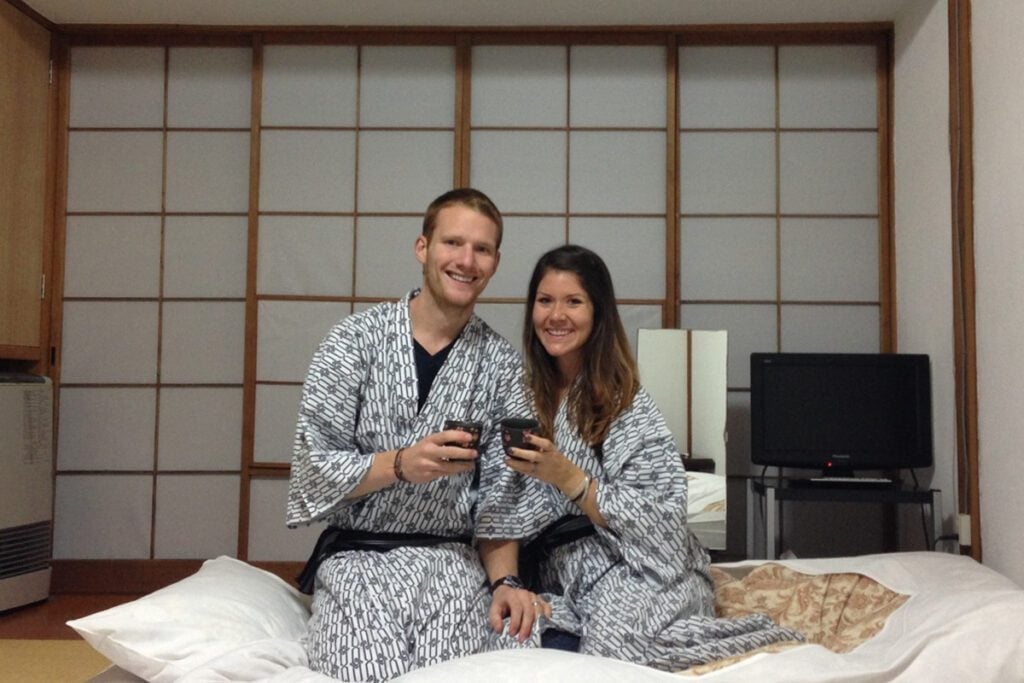
Japan is a country that we wholeheartedly believe has something for every type of traveler. Yes, even you . Whether you’re into history or pop culture, cities or nature, wild nightlife or absolute zen, you’ll find it all in Japan.
While Kyoto, Tokyo, and Osaka make it onto most first timer’s itineraries, you’ll quickly see that there is so much more to this country beyond the main attractions.
Once you travel here, it becomes kind of addicting — you’ll see! — because you’ll realize just how much this country has to offer.
- Incredible foodie experiences
- Epic (and off the beaten path) hikes
- Unique hotel stays you can’t find anywhere else in the world
- Temples and shrines that are shrouded in history
- Beautiful cultural experiences, like tea ceremonies and geisha performances
- Rural villages that few tourists see
- Some of the world’s biggest and safest cities
- Impeccable Japanese zen gardens
I could truly go on and on and on…
We have personally traveled to Japan 3 times and will certainly be back many, many more times.
Read next: We’ve rounded up all the things Japan is most famous for in a guide that’s also packed with practical travel tips. Plus, we’re sharing a few things we personally think Japan should be famous for, but most foreign tourists are surprised to know.
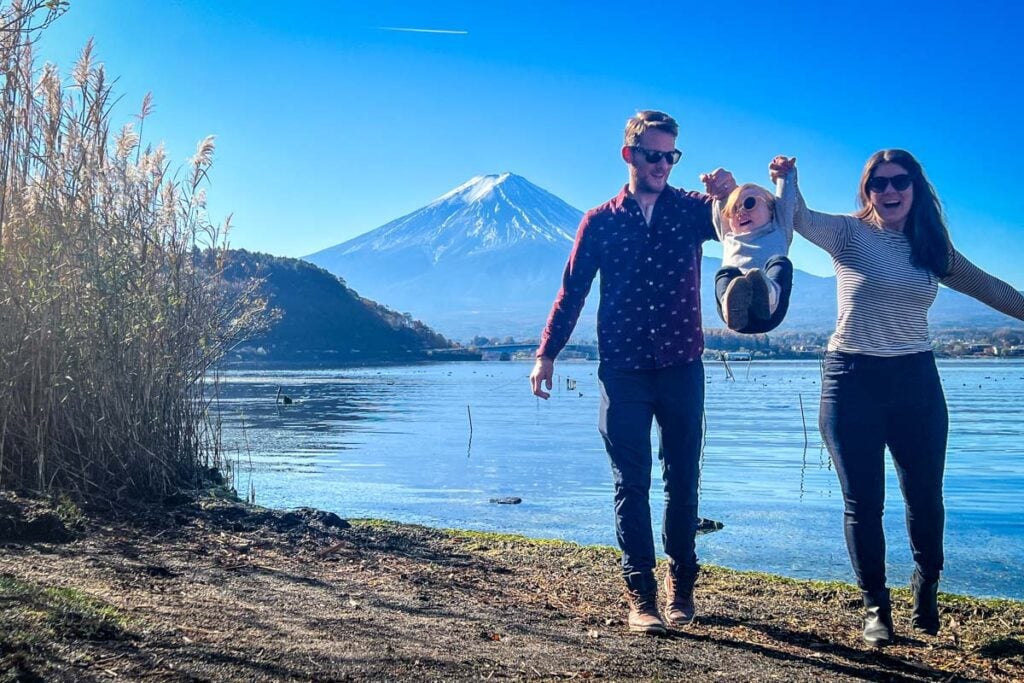
Here is a general overview of some of the high level important info and things to know before traveling in Japan. We’ll go into more detail about specifics in the rest of this article.
- Location: Island nation in Asia, located in the North Pacific ( view on Google Maps )
- Capital city: Tokyo
- Language: Japanese
- Currency: Yen (JP¥ / ¥)
- Japan uses the same plugs as in the U.S. but they have a different voltage (100 vs. 120 in the U.S.)
Visa requirements
There are 66 countries in total whose citizens do not require a visa to enter Japan, but the time you can stay depends on which country you’re from.
- Citizens from many countries (including the U.S.A., the U.K., Canada, and Australia) get a visa exemption (aka FREE) 90-day tourist visa, provided they will not be working in Japan.
- Other countries get a temporary tourist visa for a period of 15 days or less.
To find out the specifics for your country, check out the Japan National Tourism Organization , which explains the requirements for each country.
Language in Japan & useful phrases
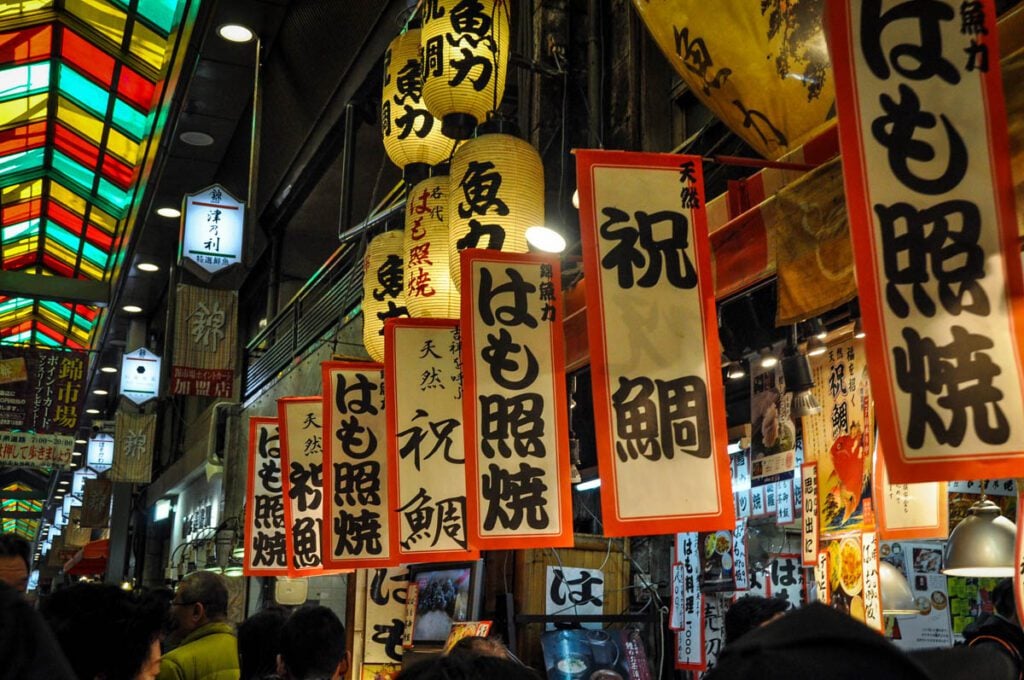
The language in Japan is, quite obviously, Japanese. But many people in big cities, like Tokyo, Kyoto and Osaka also speak English. Signs are written in Japanese characters, and in the cities most have their Roman counterparts.
When traveling, we always try to learn a couple important phrases. It shows locals you are trying to learn about their country and it can be fun too!
These phrases are ones we have found to be the most useful in any location we visit:
- Hello: Kon’nichiwa
- Thank you: Arigato
- Thank you very much: Domo Arigato
- Beer, please: Biru kudasai
- Cheers!: Kanpai
- Bathroom: Basurumu
- How much?: Ikura
- Delicious: Oishi
- Beautiful: Kireina
Interested in learning more? We’ve got a list of Japanese words and phrases that will be useful to know for traveling in Japan.
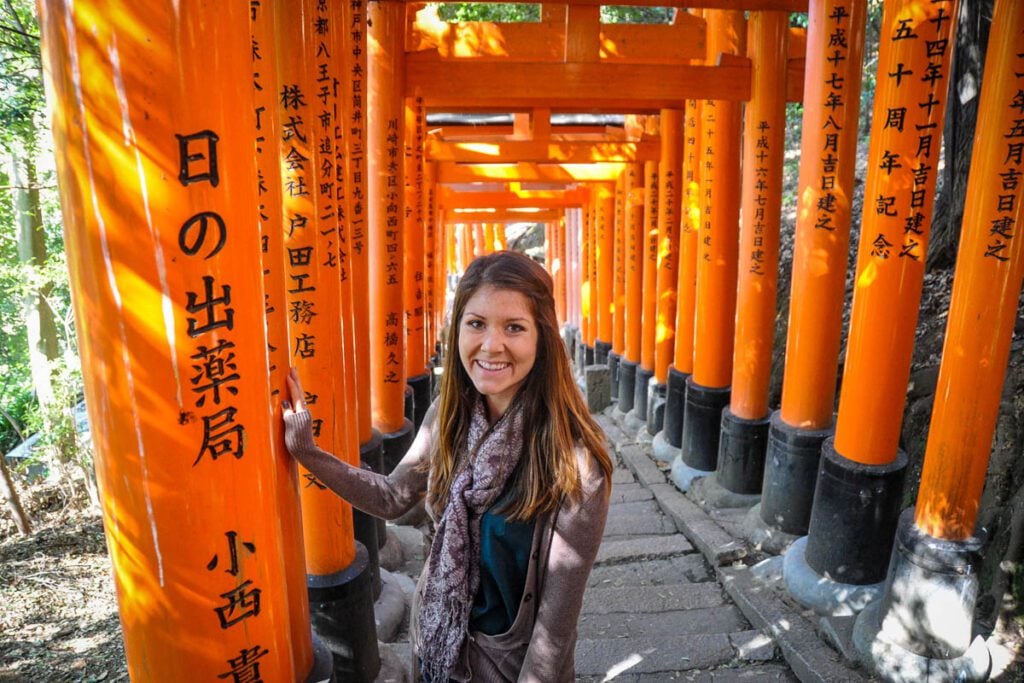
Helpful Japanese Words & Phrases to Know for Traveling in Japan
We’ve rounded up some practical Japanese words and phrases (that you can actually use!).
Manners and customs in Japan
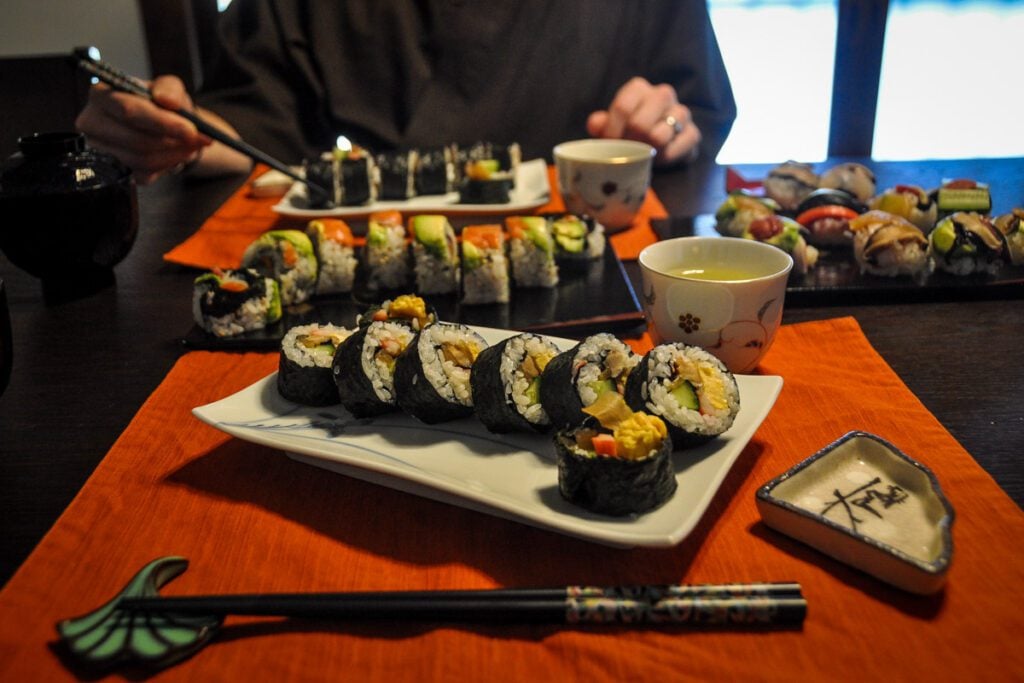
When traveling in a country other than your own, it is always a good idea to do a little research on what is polite so that you don’t accidentally offend people like this.
Here are couple manners to keep in mind when traveling to Japan:
- Eating while you walk is considered sloppy. Instead, find a place to sit and enjoy your snack.
- Pointing is considered rude. Instead, use an open hand to make gestures.
- Blowing your nose in public can be considered rude. Japanese people often go into the bathroom to blow a stuffy nose.
- On a crowded subway or train, it is polite to take off your backpack and hold it in your hands.
- Slurping noodles not only cools them down as you eat, but it indicates that the meal is delicious. So slurp away, it’s the polite thing to do!
- Taking off your shoes is common courtesy before entering many places. If the floor is raised at the doorway, it is an indicator that you should remove your shoes.
If you want a full run-down, check out our article on Japanese etiquette!
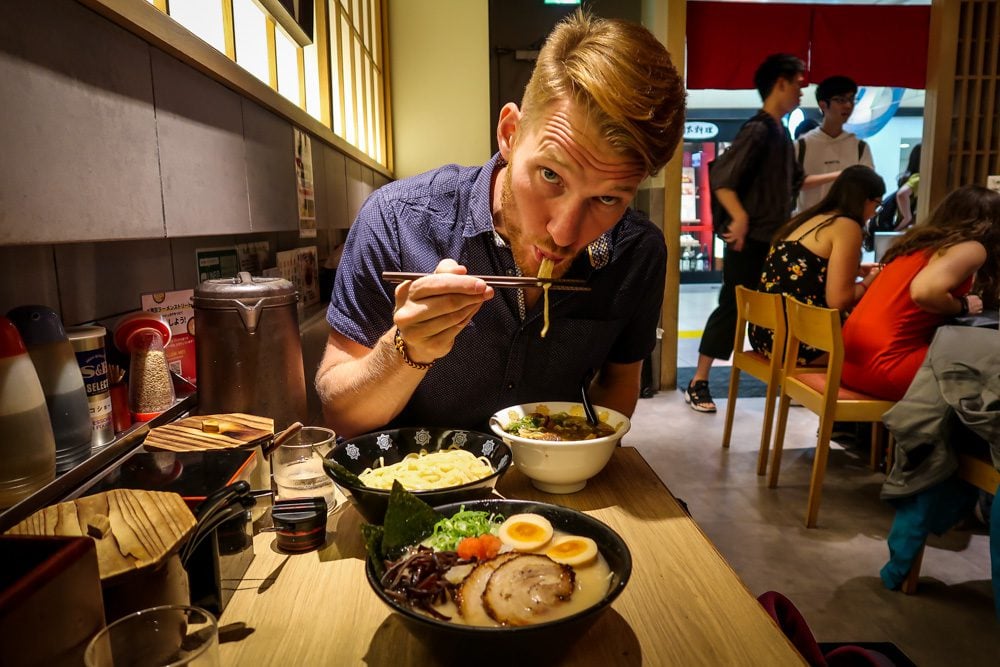
Japanese Etiquette: Dos and Don’ts When Traveling in Japan
Don’t get caught doing something embarrassing in Japan! We’ve compiled some important Japanese etiquette and manners to keep in mind while eating, riding trains and other common activities.
Tipping culture in Japan
Should I tip at restaurants in Japan? This is a question we always ask ourselves once we reach a new country, and it is never fun being caught off guard, unsure of what to do.
In Japan, tips are not expected, and can even be considered rude. And even if the server is not offended, they will likely be confused.
So in other words, NO , you should not tip in Japan.
Religion in Japan
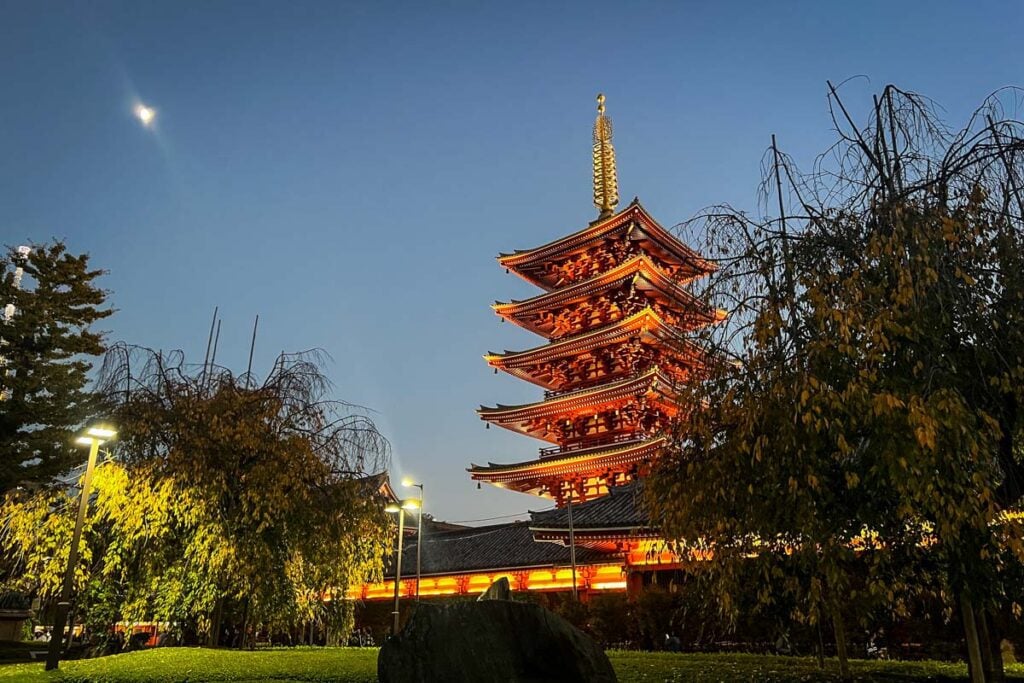
Buddhism and Shinto are the main religions in Japan, though they don’t play a huge role in the lives of many Japanese people today.
All throughout the country, you can visit temples and shrines to get a better understanding of the religions and culture. You can even do a temple stay in order to really delve in and learn about Buddhism.
Read this before visiting a temple or shrine in Japan.
Fun facts about Japan
These facts will be good conversation starters with other travelers or even locals. So break that ice and let them in on some fun facts about Japan!
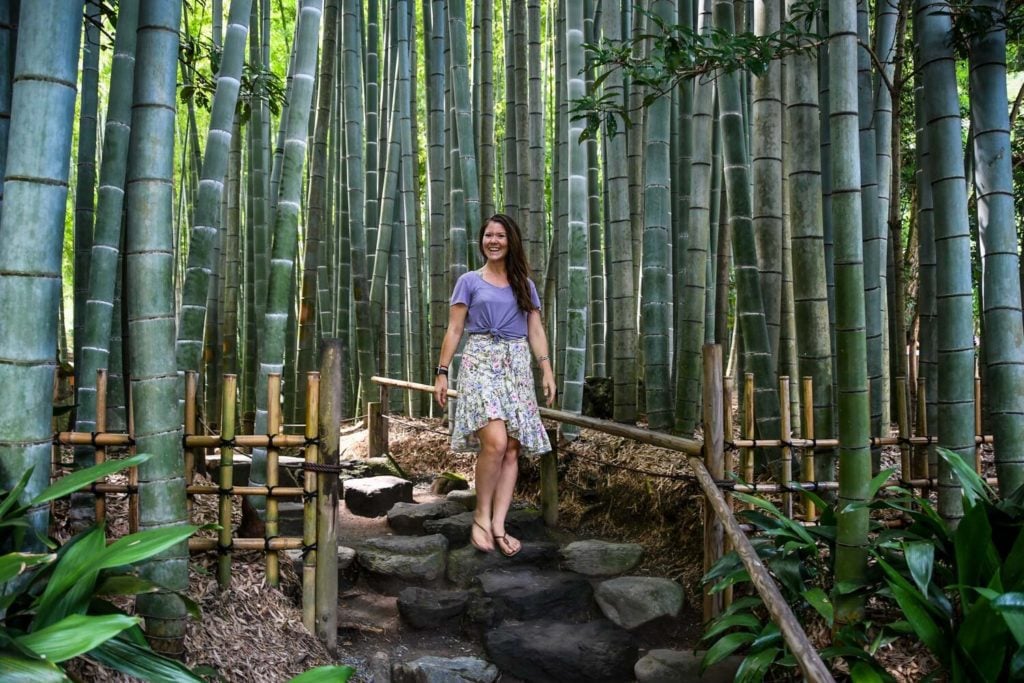
Interesting Facts About Japan (that may surprise you!)
Japan is an exciting country packed with things to do and places to see. In this article, we’re sharing all sorts of interesting facts about Japan. Plus advice and tips that’ll help you appreciate your time there even more!
How many days do you need in Japan?
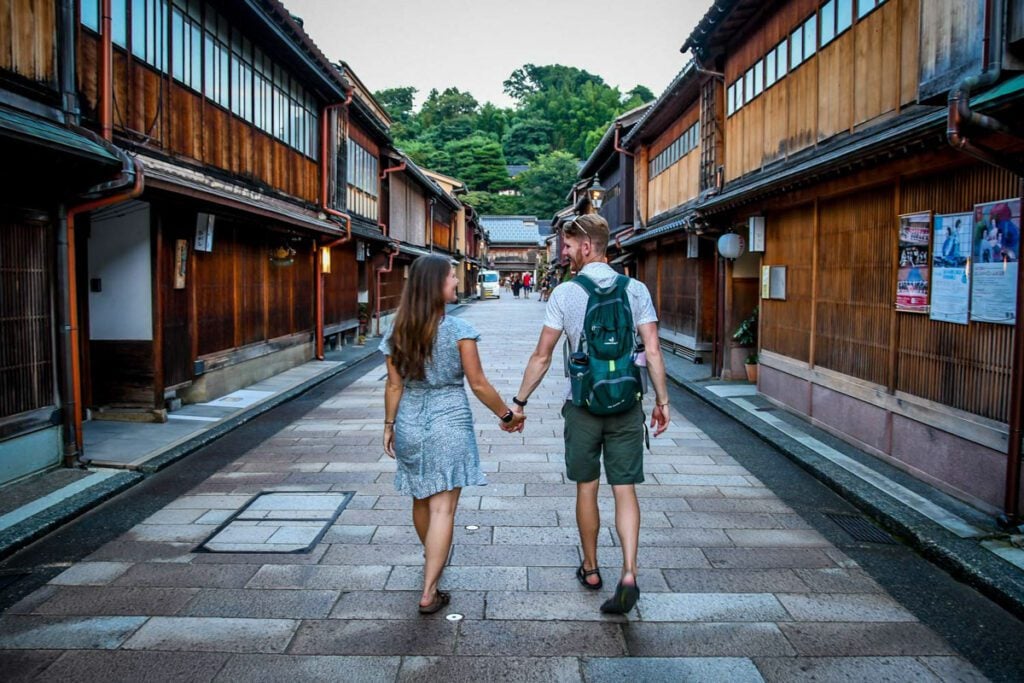
There’s so much to see and do in Japan that it can be overwhelming trying to decide how long your trip should be. Ideally, 2-3 weeks will give you enough time to see iconic and lesser-known sights as well as recover from a long travel day and potentially a big time difference.
But the ideal duration for your trip depends on several factors, including destinations you want to visit and your travel style. Our guide to how many days to spend in Japan will help you figure out how much time you need based on what you want to do.
Best times of year to visit Japan
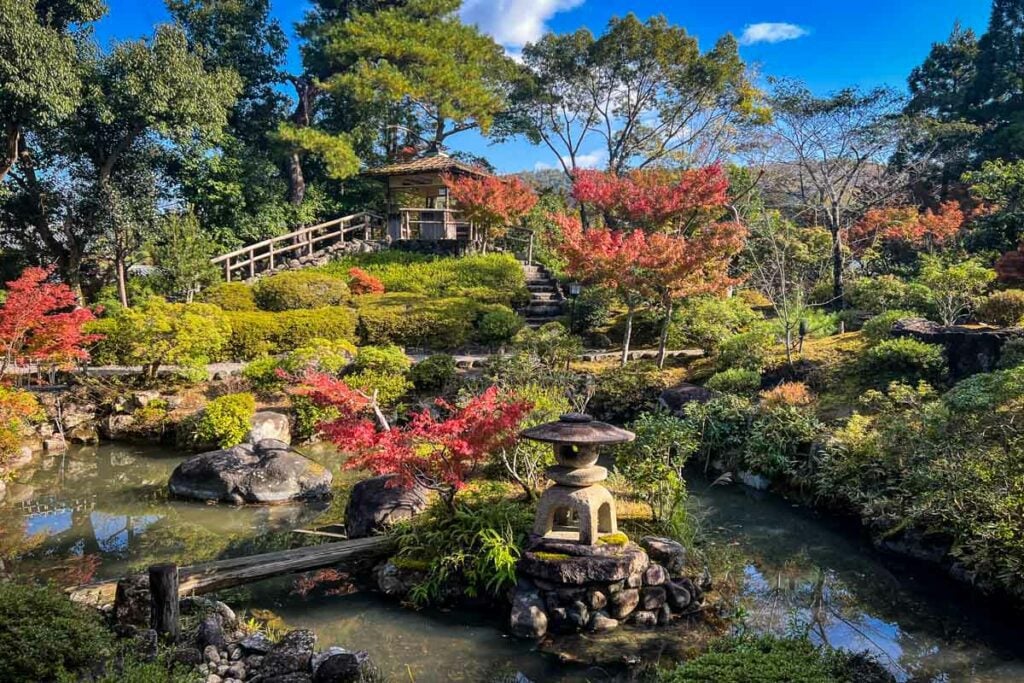
If you’re considering a trip to Japan, you’re probably wondering what time of year is best to visit.
The wonderful thing is every season is a great time to visit Japan , and you will have a completely unique experience.
We’ve laid out what to expect in each season, as well as the pros and cons of visiting during these times in our article: Best Time to Visit Japan: When to Go & When to Avoid! .
Here’s a quick breakdown of the seasons in Japan and why you might want to visit during each.
Summer in Japan
Summer in Japan is the time for festivals and celebrations. The summer spans from June to August, with August being the busiest travel month because school is out and many Japanese people travel over the Obon holiday (August 13-15).
Be prepared for ways to beat the humidity because it can get pretty sticky. Also it’s rainy season and the start of typhoon season, so don’t forget your rain jacket and umbrella!
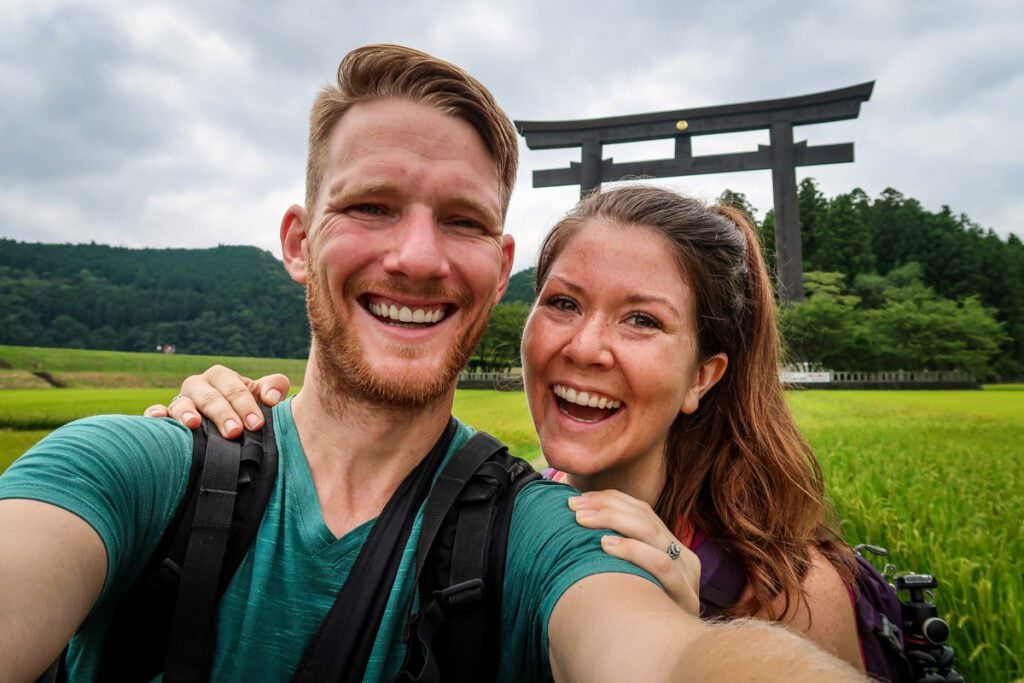
Summer in Japan: Ultimate Seasonal Guide
Summertime in Japan is a great time to hit the beach or cool off in the mountains. We’re sharing the best places to visit and things to do during summer in Japan, as well as lots of insider tips for planning your trip!
Autumn in Japan
With typhoon season peaking at the beginning of September, the start of fall in Japan is typically rainy depending on where you are. However, the weather starts to clear up in October and by November the leaves are changing.
We visited Japan in November 2023 and put together this guide to autumn in Japan that’s full of useful info.
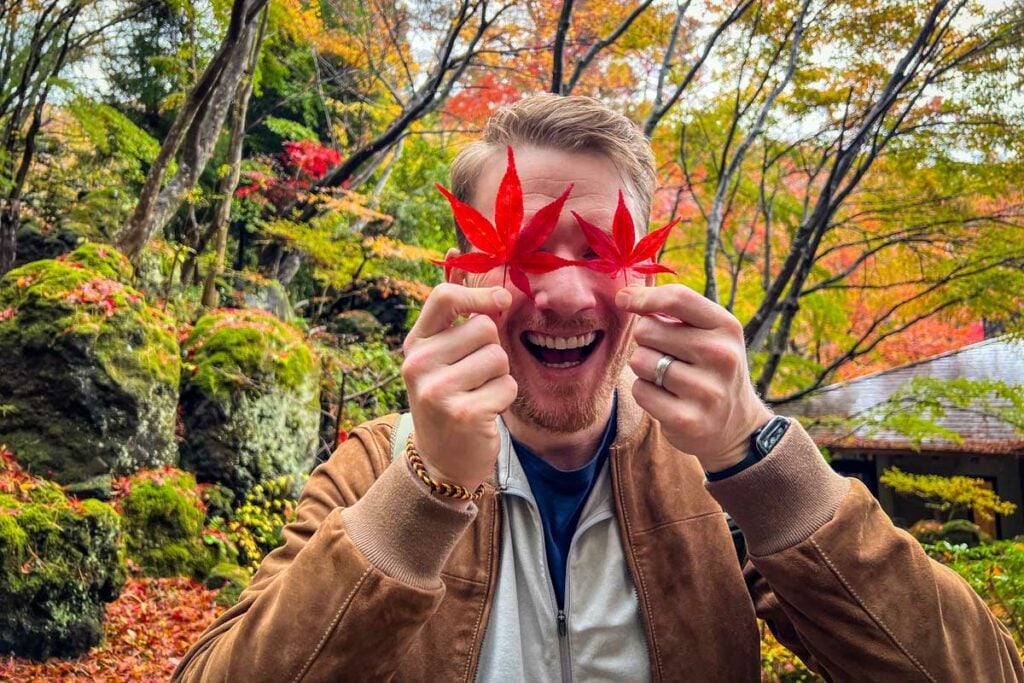
Autumn in Japan: Where & When to see Fall Foliage
With spectacular foliage and nice weather, we think fall is one of the best times to visit Japan. We’re sharing the best places to experience autumn in Japan as well as lots of insider tips for planning your trip!
Winter in Japan
During the winter months, major cities like Tokyo, Osaka and Kyoto tend to enjoy mild temperatures, but you can find snow and colder temps in the mountains and on Hokkaido (the northernmost island in Japan).
While winter may not be the first season you think of traveling, there’s actually a ton to do, and we think it is a great time to visit Japan .
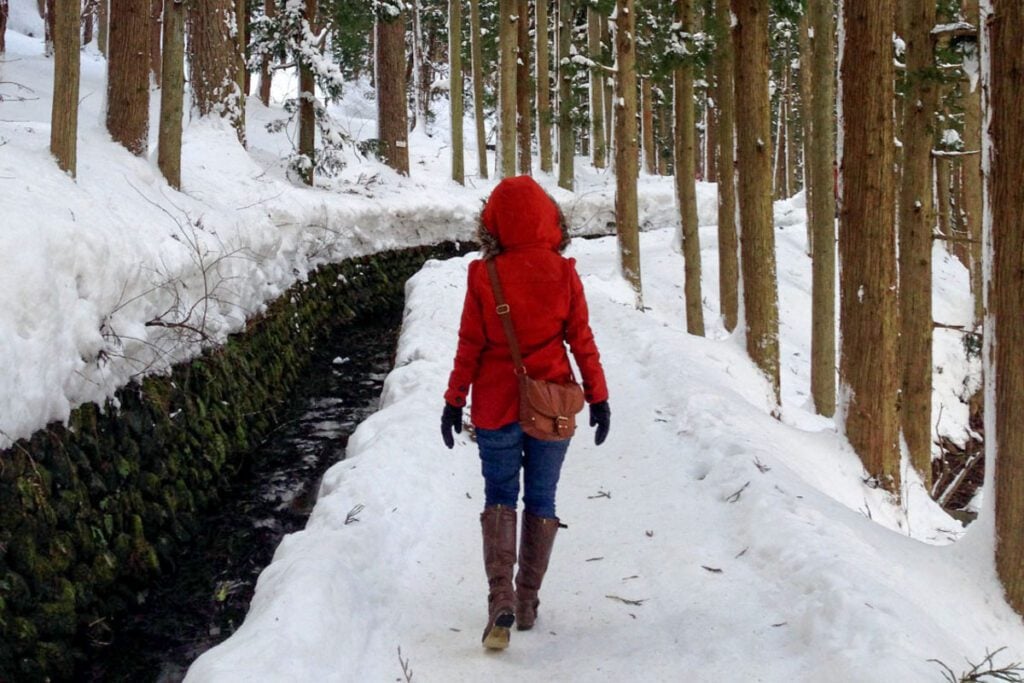
Winter in Japan: Things to Do + Why It’s a Great Time to Visit
There is something truly special about winter in Japan! We think you’ll be surprised by all the exciting things to do in Japan in winter. Plus, we’ll let you in on average winter temperatures around the country, as well as what to pack for the winter months.
Spring in Japan
With stunning sakura (cherry blossoms) popping up all around the country and temperatures warming, it should come as no surprise that spring is a popular time to visit Japan. A very popular time, indeed. If you travel to Japan in the spring , you’ll be rewarded with comfortable temperatures, beautiful blossoms, and lots of crowds.
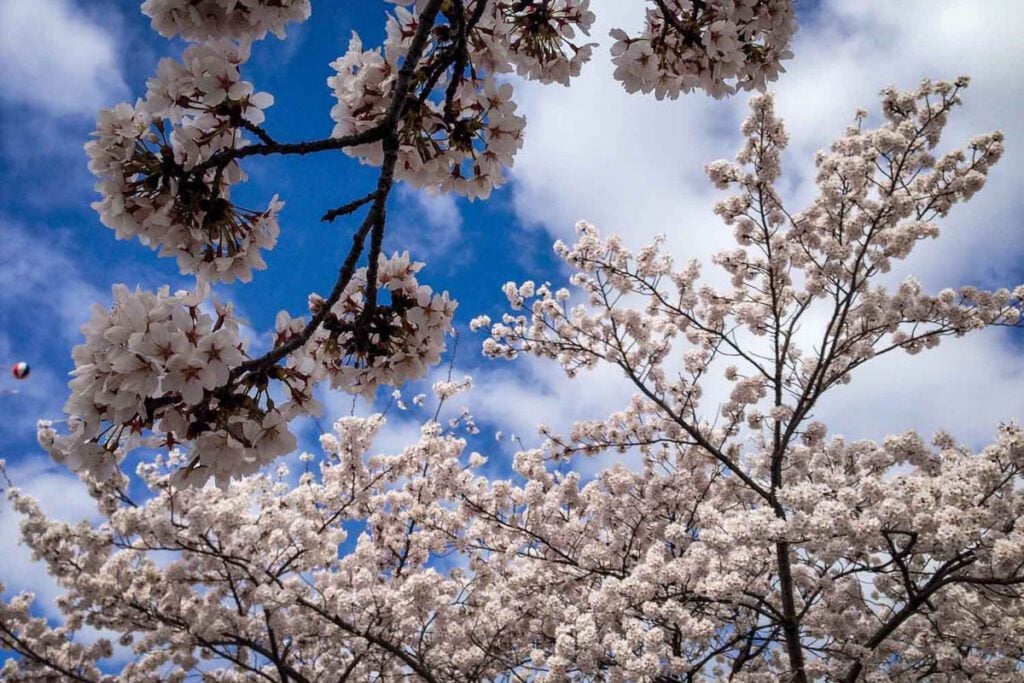
Spring in Japan: When & Where to See Cherry Blossoms
Witnessing the cherry blossoms in Japan is a once-in-a-lifetime travel experience. We’re sharing the best places to experience spring in Japan as well as lots of insider tips for planning your trip!
Before you book your Japan trip in the spring, know this…
Spring is considered by many as a great time to visit Japan for its comfortable temperatures, cherry blossoms and little chance of rain.
One thing you should be aware of is the so-called “Golden Week” which happens in the springtime and is made up of 4 national holidays which fall into a 7-day span. During this week many Japanese people will also be traveling around the country and accommodation and tours are often booked far in advance.
Dates of Golden Week in Japan:
- 2024: April 29 – May 5
- 2025: April 29 – May 5
- 2026: April 29 – May 5
It’s not every year the holidays fall on exact same dates, but for the next 3 years, they just so happen to. This site has more information about Golden Week in Japan .
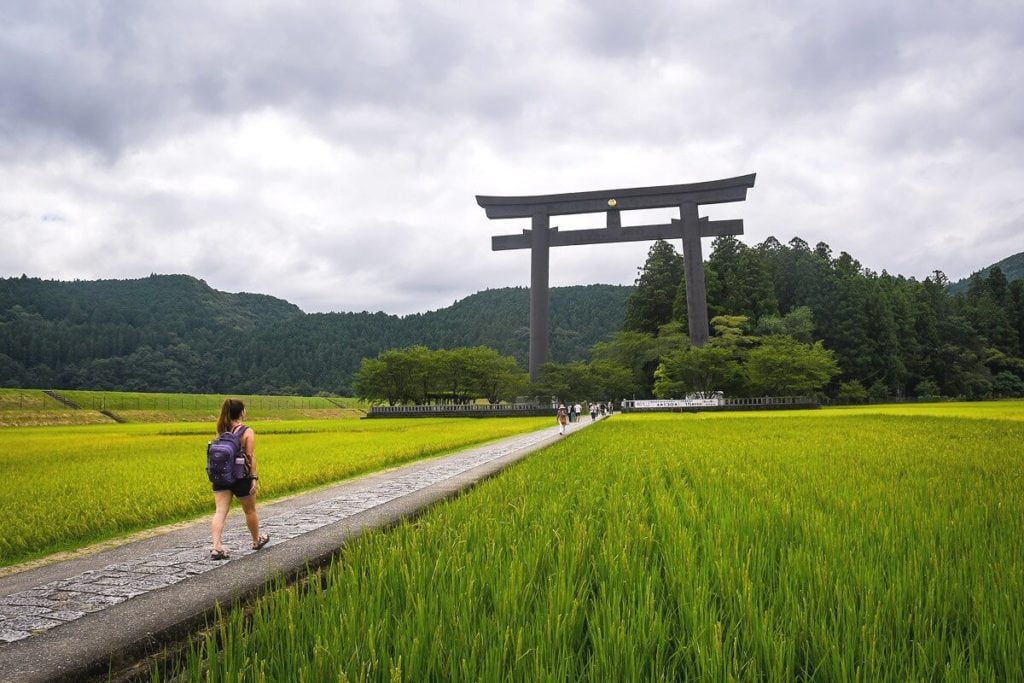
Best Time to Visit Japan: When to Go & When to Avoid!
Choosing the best time of year to visit Japan can be downright overwhelming. Each of Japan’s 4 distinct seasons has its draws and drawbacks. We’re going to break down exactly what to expect during each season so you can choose the best time to visit Japan based on your travel style and interests.
Traveling in Japan is a little different than many other places in the world.
By nature, we tend to be somewhat last-minute travelers, but not when planning a trip to Japan. If possible, we recommend planning your trip to Japan well in advance.
Now, this isn’t to say you can’t plan a trip to Japan at the last minute, but your options for great accommodation (especially in popular areas) will be limited. Plus, you may miss out on some of the most popular attractions because many require advanced booking and tickets go quickly.
We’ve laid out our recommended timeline for planning a trip to Japan so you can ensure you’re able to secure some incredible accommodation and do all the things on your bucket list.
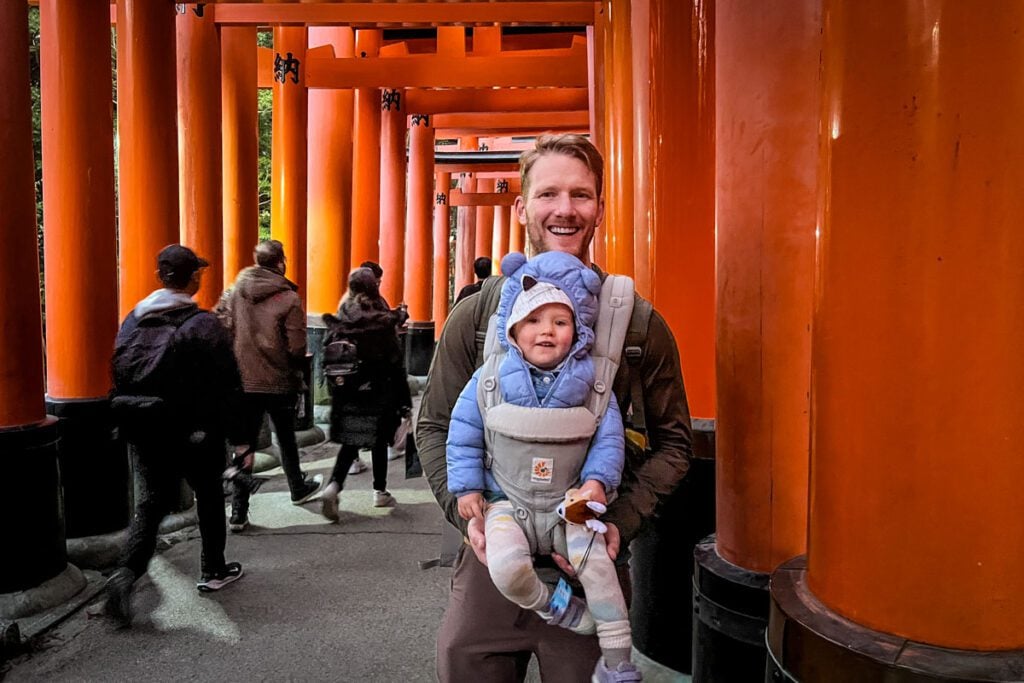
This timeline is a suggestion, but you can certainly adjust dates a bit. Hopefully this gives you a better idea of how far in advance to plan your trip to Japan.
1 year before your trip
- Start researching and draw up your dream itinerary
- Make a note of how far in advance the ryokans you like open up reservations
- Flag any attractions that are “must dos” for you
- Check out our Japan budget article to get started
- Here are our favorite tips for saving money for travel
- Insider Tip: Sign up for a mistake fare newsletter and set Tokyo as an “alert city” so you can get notified of any really good deals departing from your home airport.
The research phase should be fun and you don’t want to feel rushed. We recommend recording all the hotels and attractions you want to prioritize in a Google Doc so you don’t lose any of your research.
Coming up with a budget will help you determine which accommodations you can realistically book and it will help you start saving for this trip.
Want the perfect itinerary planned for you?
If you don’t have a ton of time to spend planning your Japan itinerary (or you just don’t find travel planning fun!), we’re working on something you might be interested in…
We are in the process of creating done-for-you Japan itineraries that are packed full of all sorts of tips we’ve gathered from 3 trips to Japan as well as literally hundreds of hours of research (no exaggeration).
We will have both off-the-beaten path routes as well as a classic itinerary that hits the top attractions.
If you want to be the first to know when our Japan itineraries are on sale, get on the waitlist !
6 months before your trip
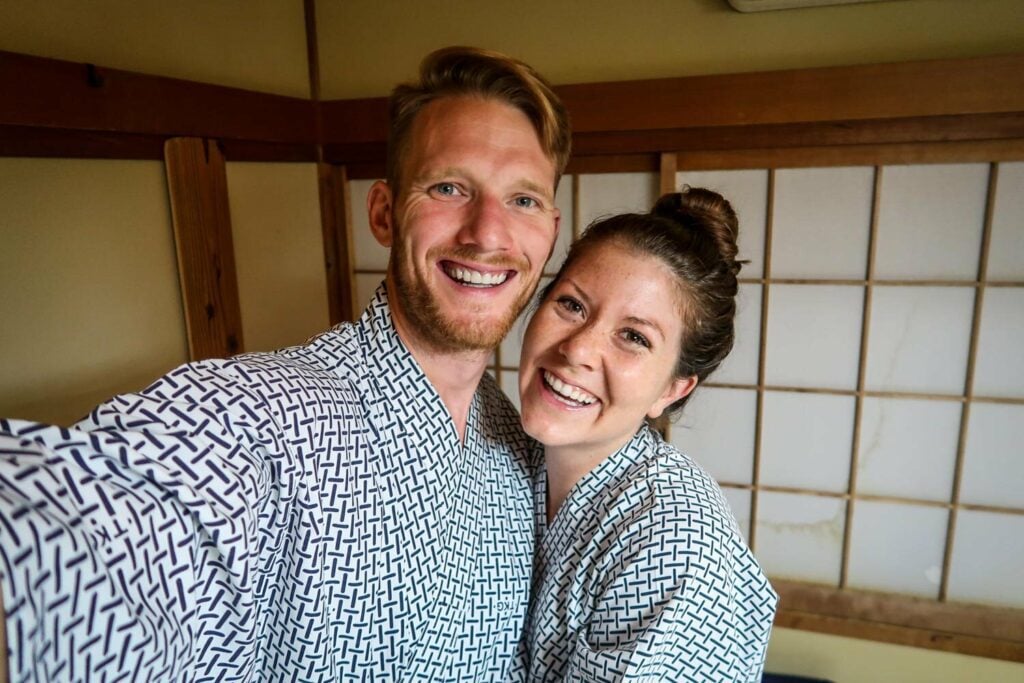
- Flights: If you are flying from afar, aim to book your flights around 6 months prior to your trip. We’d recommend keeping an eye on them for a couple of months (starting 10 months before your trip).
- Ryokans: Many ryokans only release booking dates 3-6 months ahead of time. Really great ryokans fully book up quickly after dates are released.
- Accommodation in small towns (like on the Nakasendo Trail)
- Hotels near any major attraction or popular area (at DisneySea, or near Mount Fuji)
- Special hotels that you really want to stay at (like the Park Hyatt in Tokyo , or a temple stay at Koyasan)
- Accommodations that fall over festival dates or popular tourist seasons, like Golden Week (which falls during Japan’s cherry blossom blooms )
It can feel a little overwhelming to make these big bookings all at once, but it will ensure you are able to stay where you’d like and secure good prices on flights.
Booking tips: When possible, we like to use Booking.com since many hotels offer free cancellation via this platform (often up until just days before your stay). Also, you often don’t have to pay at the moment of booking, which makes the commitment a little less scary. We typically like to compare the price on Booking.com to Agoda , as they sometimes differ. We also stayed at a couple of Airbnbs in Japan , which was a good option in the more rural areas.
2-3 months before your trip
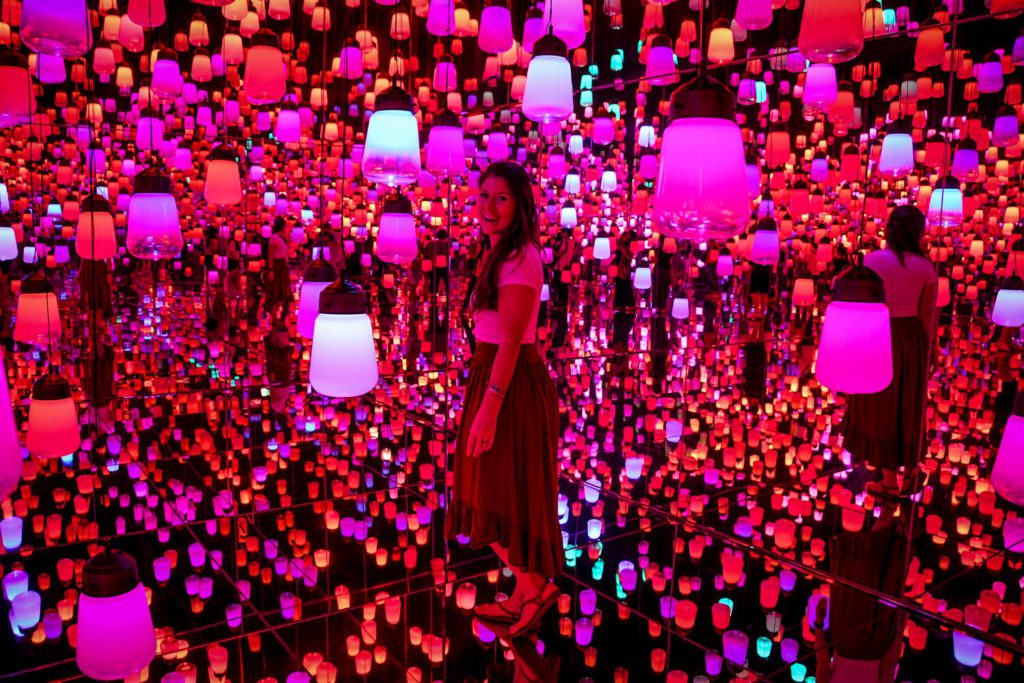
- All accommodation not yet booked: the sooner the better for the best locations and prices
- Japan Rail Pass : You can purchase this pass up to 3 months before the date you’ll use it . We personally got ours 2 months in advance so it wasn’t left until the last minute.
- FYI: we have lots of advice and info about renting a car in Japan
- Tickets go on sale 3 months in advance
- If you want best available times slots (we recommend the first one at 9-9:30 a.m. ), book at least 2 months ahead of time
- Compare availability on the teamLab website (tickets available further in advance) and on GetYourGuide
- Tickets go on sale roughly 5 months in advance. We recommend booking at least 2-3 months in advance for the best availability of time slots.
- Compare availability on the Warner Bros Studio website and on Klook
- This will mean you don’t have to wait in crazy long lines, and we’ve heard it’s very worthwhile at this notoriously crowded theme park. Purchase it here .
1 month before your trip
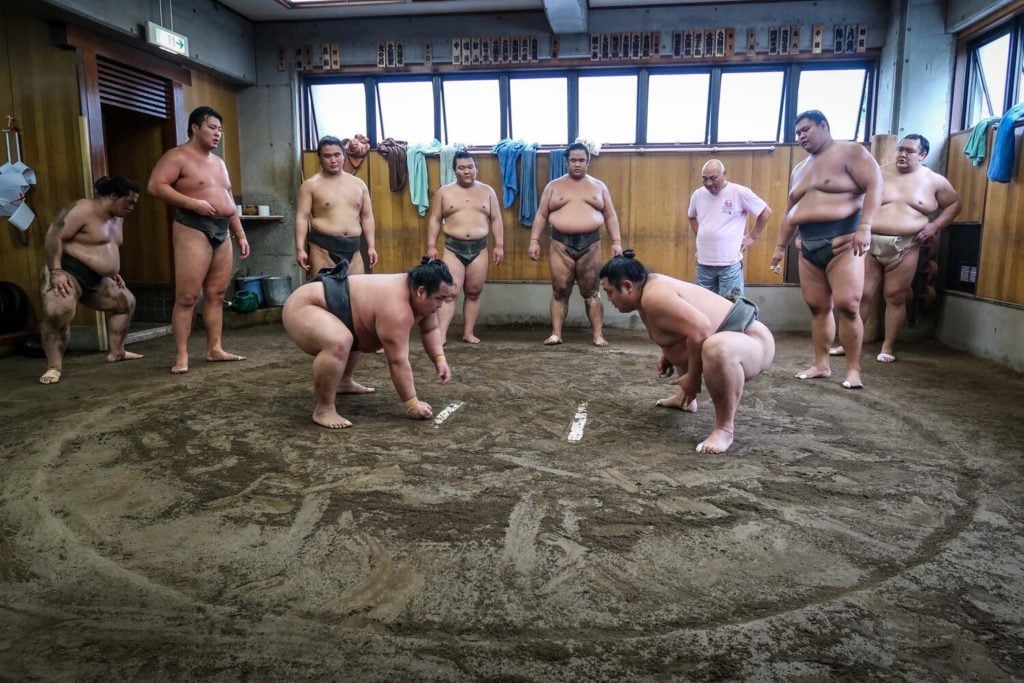
- Tickets go on sale on the 10th of each month for the following month
- We recommend setting an alarm to purchase tickets as they become available on the 10th of the month before your trip so you don’t miss out.
- You cannot purchase tickets onsite (you must have advance reservations)
- Tickets go on sale 1 month in advance
- The most popular time slot is right before sunset and those times go quickly
- Compare availability on the Shibuya Sky website and on Klook
- Popular theme restaurants like Ninja Restaurant (Tokyo) or the Pokémon Café (Tokyo & Osaka)
- Insider tip: For the restaurants on your “must” list, research and write down how far in advance reservations are available (some may even require booking further than 1 month in advance). Set alarms in your calendar so you can be sure to snag a spot right away. Popular places fill up very fast!
- Sumo stables
- Cooking class
- Tokyo dinner cruise
- Photoshoot in Tokyo
- Tokyo Go-Karting
- Tea ceremony
Download the PDF version of our Japan booking timeline so you can print it out at home and keep track of your Japan trip planning process! Enter your email and we’ll immediately send the booking timeline to your inbox (totally FREE).
Japan Booking Timeline
Enter your email below and we’ll immediately send our Japan booking timeline to your inbox (totally FREE).
We’ll also be sending you bonus tips on all things Japan: like how to travel cheaply, where to go and the best places to stay.
We value you, and NEVER spam. (We hate spam too.)
We’ll also be sending you bonus tips on all things Japan, like how to travel cheaply, where to go and the best places to stay.
Top places to visit on your Japan trip
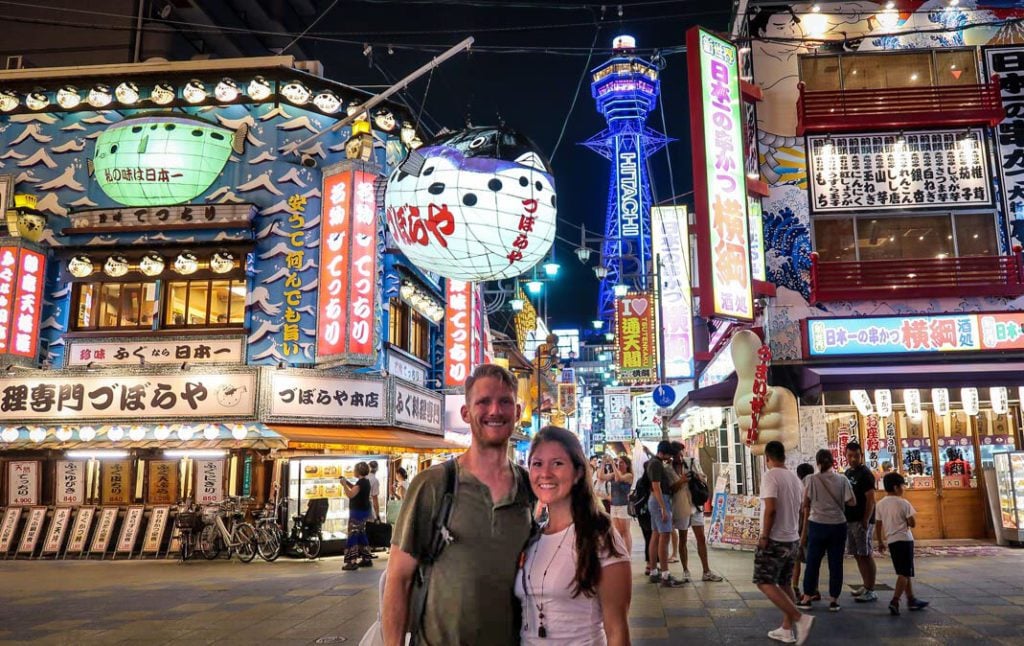
Japan is a huge country, and it would be an extensive list if we went through all the notable cities to visit. But if you are visiting Japan for the first time, these cities are a good place to start as they will give you a good taste of the country’s culture.
Another thing that’s important to keep in mind when planning a trip to Japan is the destinations’ proximity to one another and all of these suggestions are relatively easy to get to and from.
- Tokyo : This huge metropolis is likely where you’re flying in and out of, and it is one of the most interesting cities we’ve visited anywhere in the world. From quirky experiences, to amazing foods, Tokyo is definitely worth some time on your itinerary.
- Kyoto : Considered the “cultural capital of Japan”, Kyoto is packed with history, important temples, gorgeous architecture and a charming atmosphere. If you are traveling with your little ones, there are tons of things to do in Kyoto with kids .
- Osaka : Another major hub to fly in and out of Japan, Osaka is worth a visit . Known for lively nightlife and endless street food, there’s a lot more to discover beyond Osaka’s neon-lit facade.
- Hakone: At the footsteps of Mt. Fuji, Hakone is a peaceful retreat from the big cities of Japan and a chance to relax in an onsen and sleep in a ryokan.
- Hiroshima : This historical significance of this city draws tourism from all over the world, but you can enjoy the lighter side of this beautiful place too.
- The ‘Roof of Japan’ : The Tateyama Kurobe Alpine Route is a single day mountain traverse where you take 8 different modes of transportation over what’s known as the Roof of Japan .
Want more info? We have an entire article with a round up of the most beautiful places in Japan , including some top things to do and see.
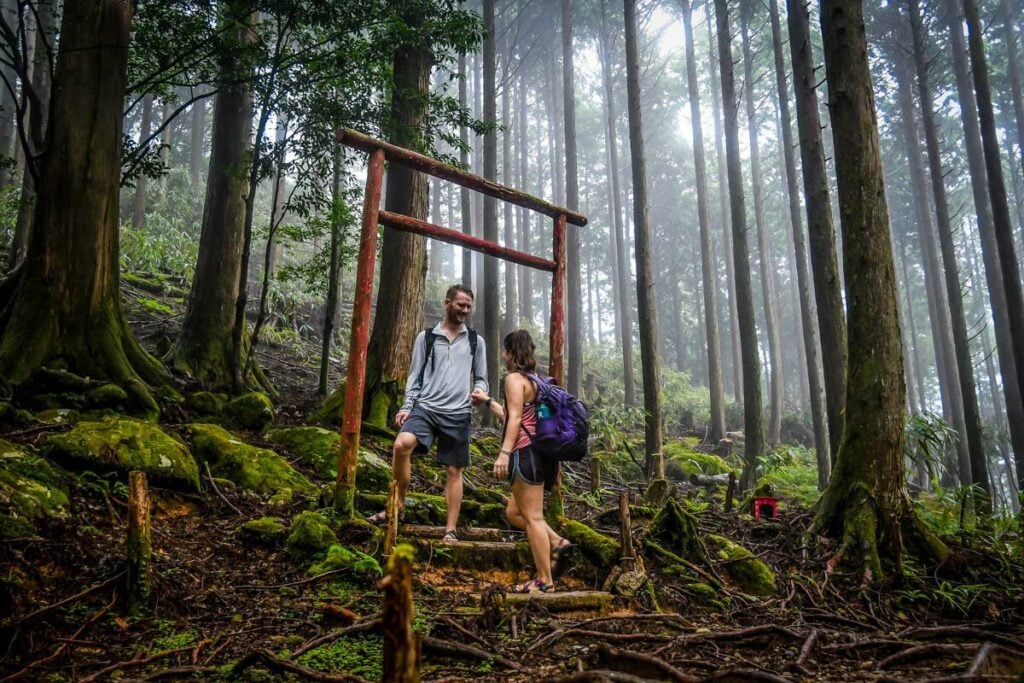
Most Beautiful Places in Japan You Need to See for Yourself
With storybook villages, forested mountain ranges and white sand beaches that rival the tropics, there are some incredibly diverse and beautiful places in Japan. This bucket list is full of places you’ve never heard of, and after reading it, we bet you’ll be ready to book a flight to Japan!
Top things to do in see in Japan
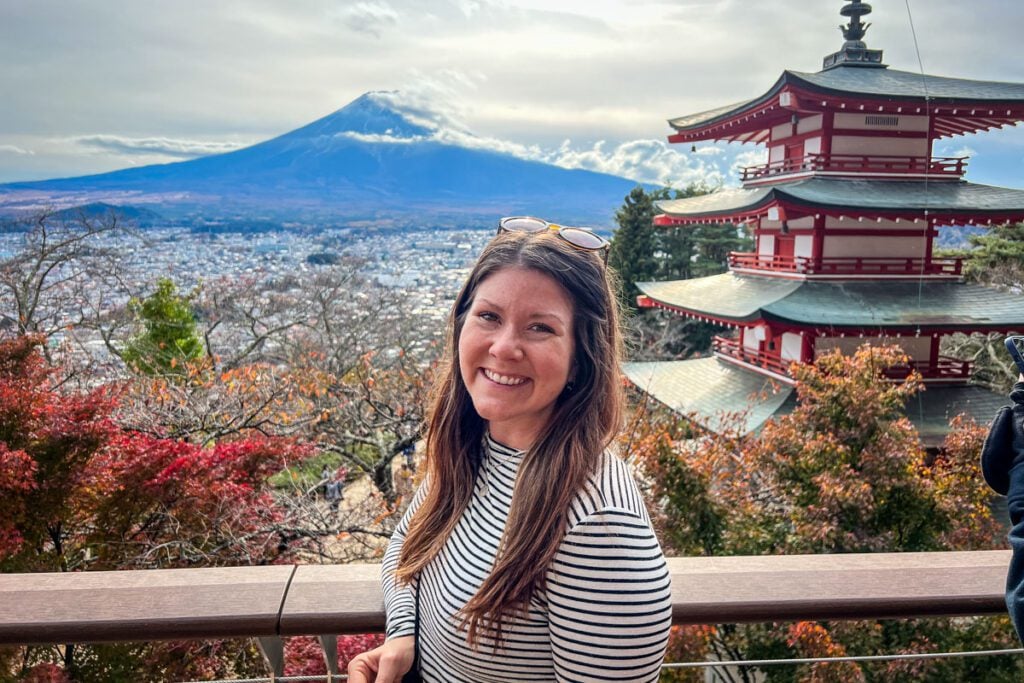
Just as with places to visit, there are seemingly endless sights to see in Japan. Here is a quick list of our top recommendations for your first visit to Japan.
- Mount Fuji : The most famous mountain in Japan, you can get a glimpse of this beauty when traveling in Hakone.
- Fushimi Inari Taisha Shrine : Known to tourists as the “Orange Gates”, there are thousands of majestic orange gates covering a maze of paths leading up to the shrine.
- Arashiyama: Located on the western edge of Kyoto, Arashiyama is an area that is filled with temples and shrines, but the main attraction is the Arashiyama Bamboo Grove.
- Temples in Japan: Of course temples will be on your list of things to see in Japan. The Golden Pavilion in Kyoto is stunning with the garden setting and reflection off the pond.
- Shibuya Intersection: Famously known as the “busiest intersection in the world” crossing the street here is quite an experience.
These places all make for great pictures! If you want to take better travel photos, we wrote up some easy and creative tips to improve your travel photography skills !
Psst! We have a list of must-see landmarks in Japan that’s sure to give you some inspiration for your itinerary!
Unique experiences to have on your Japan trip
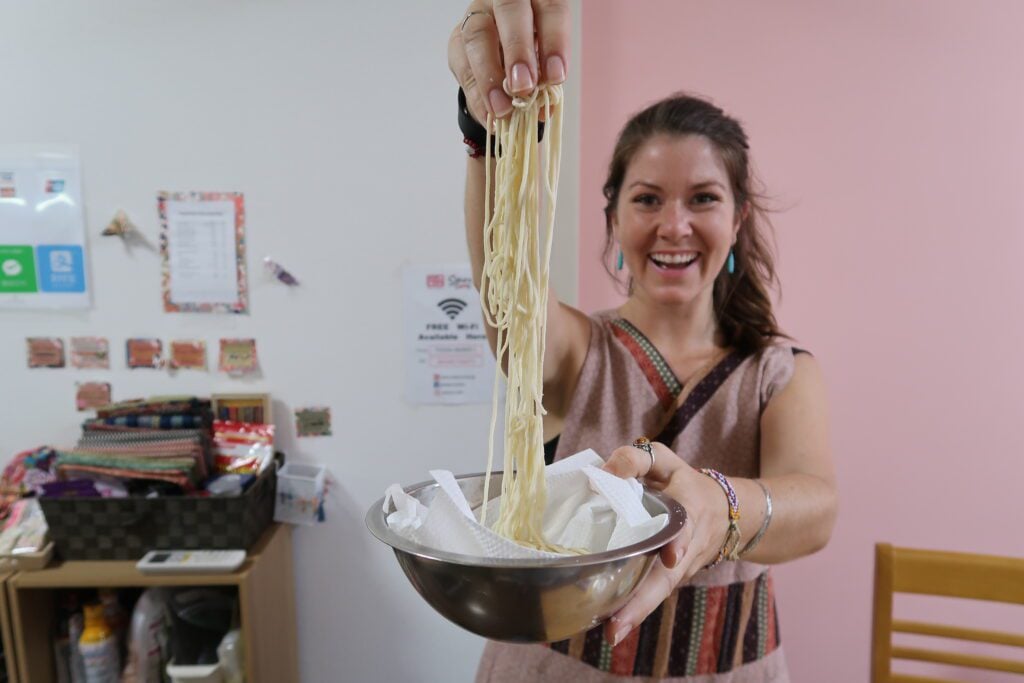
One of the many reasons Japan is such a wonderful place to visit is there are so many unique experiences that can only be had in this country. Here are just a few of the things that are quintessentially “Japanese”.
Quintessential cultural experiences
- Soak in an Onsen: Strip down to your birthday suit and soak in a hot tub until you get pruney. Don’t worry, they are gender separated and some are even private. The best one we dipped in was in the Hakone region .
- Stay at a Ryokan: Experience a traditional Japanese-style inn and stay in a ryokan to enjoy Japanese hospitality and relaxation.
- Take a Japanese cooking class: Learn how to make proper sushi or traditional ramen to impress your friends at home. (Read why we LOVE taking cooking classes on our travels !) Or take a food tour, like this Kyoto food tour from Magical Trip.
- Sleep in a Temple: Usually taken as retreats to refresh your body and mind or deepen understanding of religion, temple stays are an unique experience you won’t forget.
- Go Geisha spotting: On the old street of Kyoto, Geisha scurry from one event to the next. Try to get a glimpse of them, or better yet try to get a picture.
- See the fish auction each morning: Show up around 3 a.m. (yep, that early) as the fishermen come into port and sell their fish at the Tsukiji Fish Market . Then find a shop and have the freshest sushi you’ll ever eat.
- Take a Sumo wrestling tour in Ryogoku and learn about Sumo culture.
Get personalized recommendations for where to save and splurge during your trip when you use ViaHero —a trip planning platform that will connect you with a local in Japan.

Quirky Japanese experiences
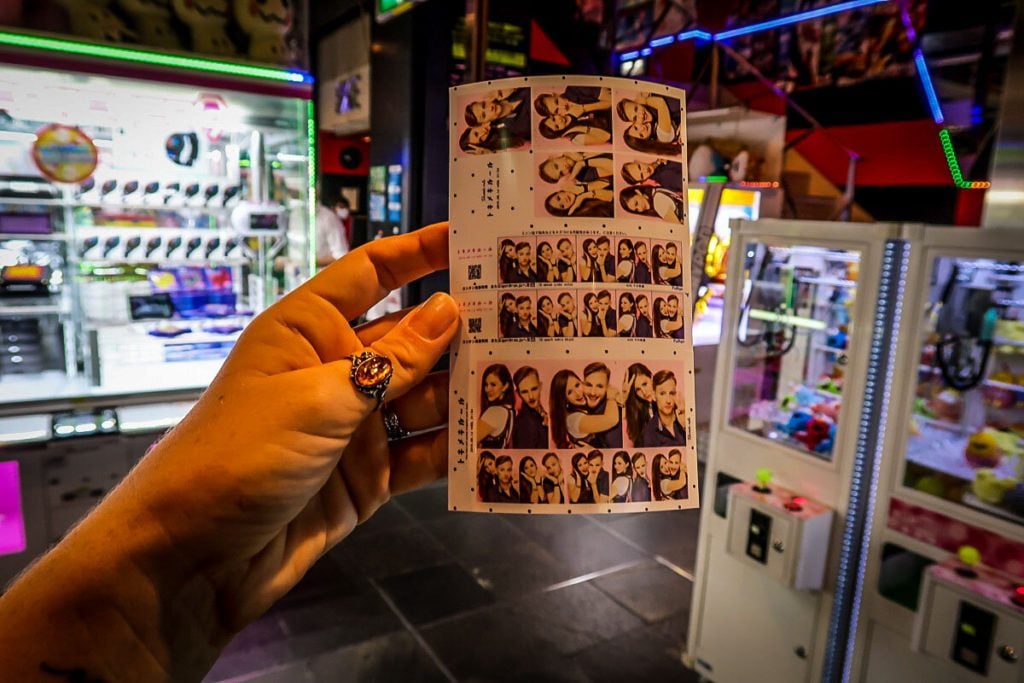
- Take your picture in a photo booth: Pop into one of these with your friends and take a few snaps. Then, edit your photos instantly, enhancing your eyes, adding blush, or slimming your cheeks. It takes the word selfie to a whole new level.
- Responsible Travel Tip: Be cautious about animal tourism. Domesticated animal cafes (like dog or cat cafes) seem to take care of their animals. But for non-domesticated animals cafes, like owl cafes, we would just be a little hesitant to visit.
- Theme restaurants: We went to the Robot Restaurant in Tokyo (unfortunately now closed) and it was one of the craziest dinners we ever attended! For more theme restaurants, check out our guide to the best things to do in Tokyo at night .
Unique experiences in nature
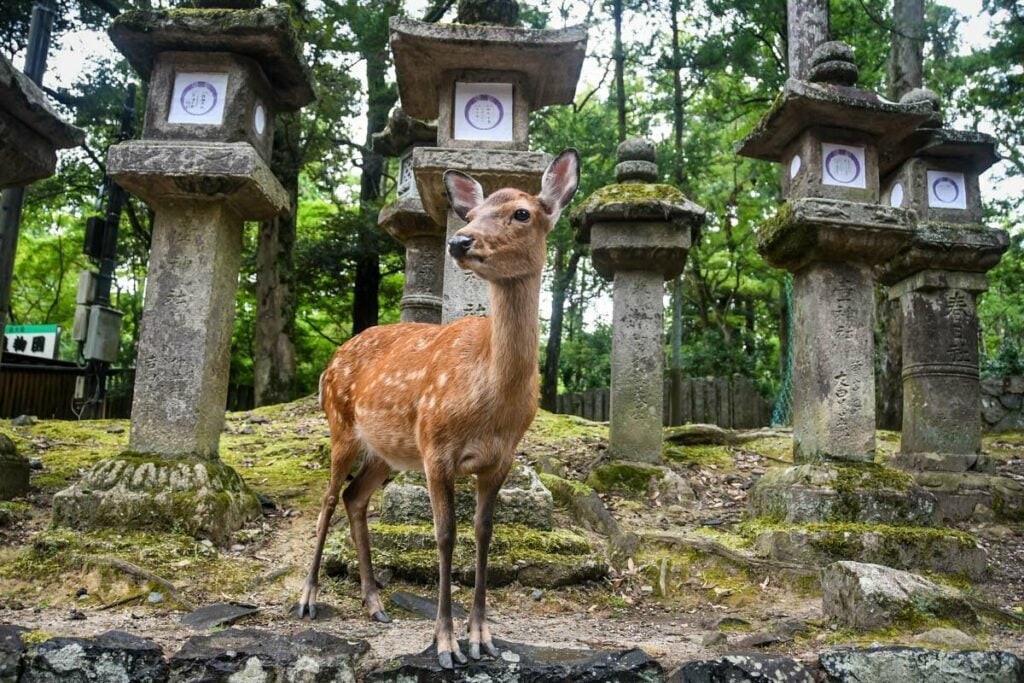
- See the Nara Deer: Just a little ways outside of Osaka in the city of Nara , there is a park (and part of the city) literally flooded with cute spotted deer. They’re used to being around humans, but make sure you read these tips before visiting the Nara deer.
- Jigokudani Snow Monkeys: A few miles away from Nagano, there is a park where the local macaques monkeys soak in a spring-fed hot tub and play around in the snow.
- Hike the Kumano Kodo Trail : If you’re feeling adventurous, this is quite literally, off the beaten path. The Kumano Kodo Trail is a historic pilgrimage through the mountainous Kii Peninsula that has been trekked for thousands of years.
Need more inspiration? We have an entire article with a round up of the best things to do in Japan , including all the info you need to make it happen during your visit!
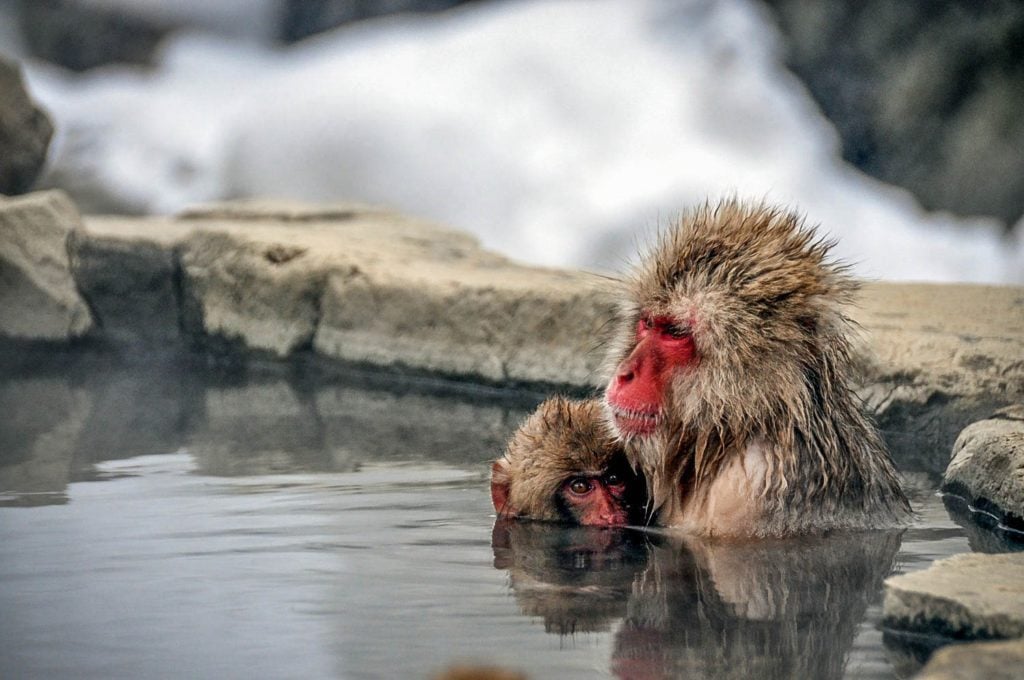
Crazy Fun Things to Do in Japan
If you’re looking for unique things to do on your trip to Japan, you’ve come to the right place! From super quirky, only-in-Japan experiences to must-see sights and the best food to try, we’ve rounded up the top things to do in Japan on your first visit.
Wanna take a tour?
We recommend taking a tour with the highly-rated tour company, Magical Trip . They specialize in small group tours led by local guides all over Japan, from Tokyo to Osaka.
Click through to browse all small group Japan tours they offer.
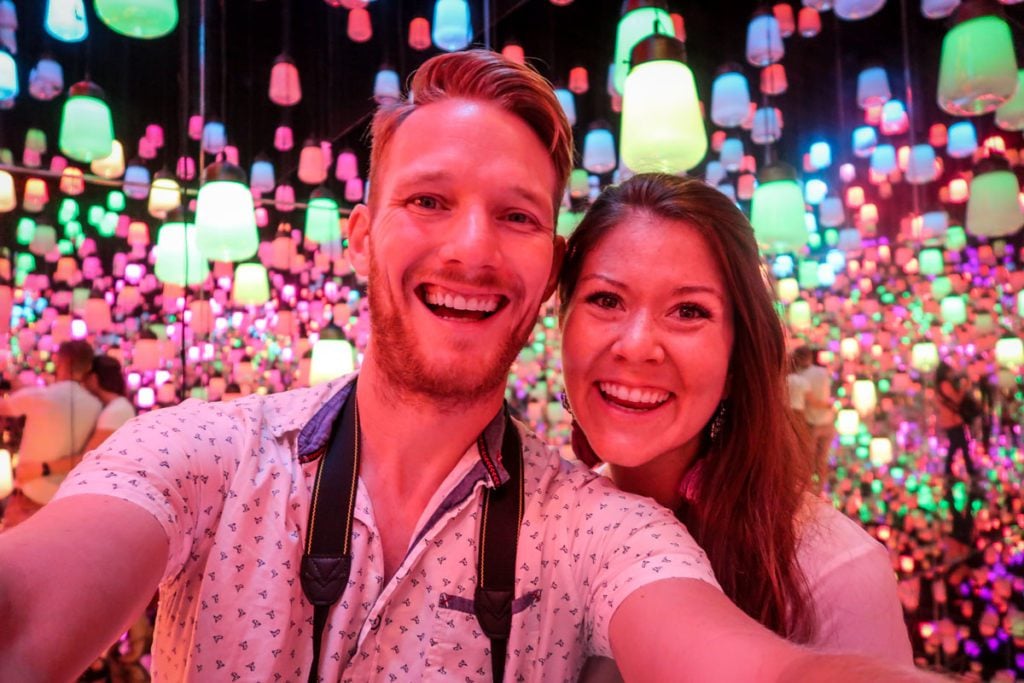
Best Things to Do in Tokyo
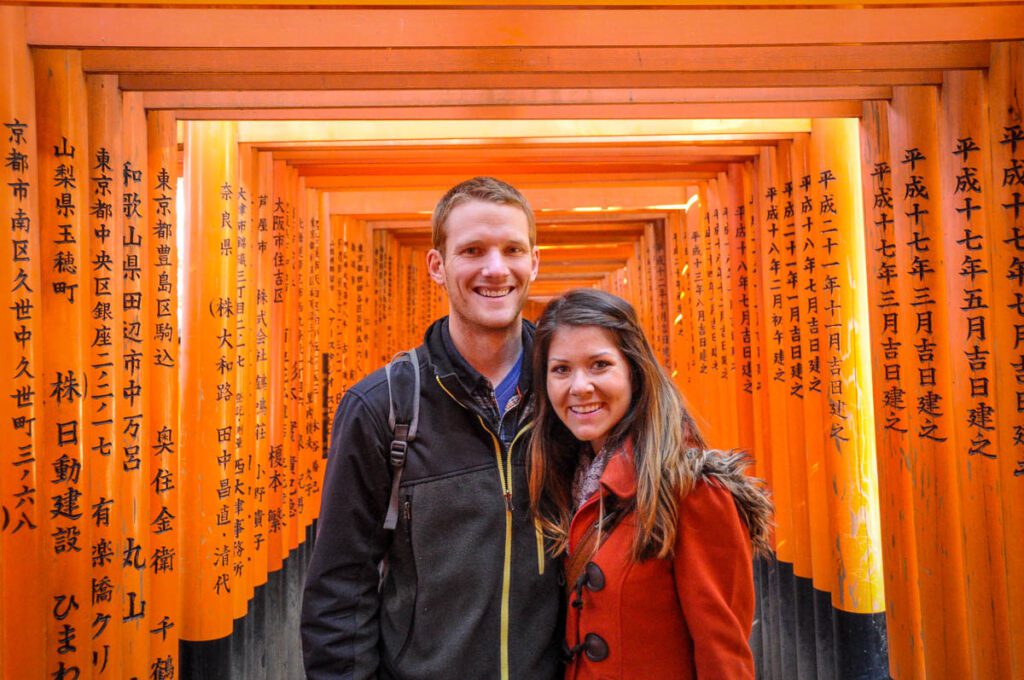
Best Things to Do in Kyoto
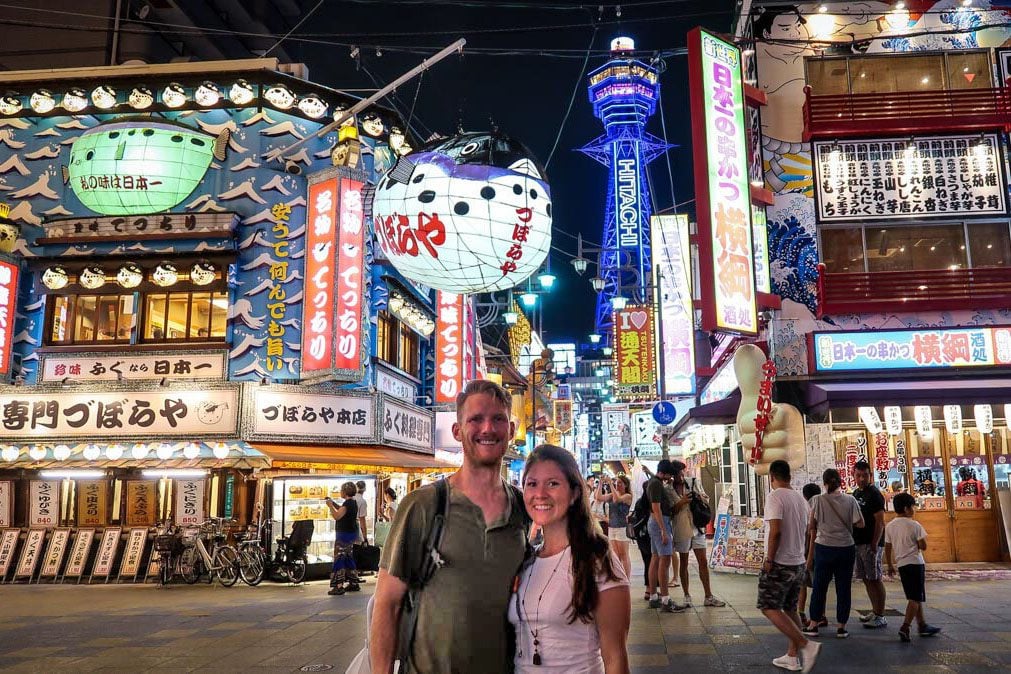
Best Things to Do in Osaka
Budgeting for Japan
I’ll be straight to the point: Japan is not cheap.
Contrary to many other destinations in Asia, like Thailand or the Philippines , Japan is not an ideal location for budget travelers. That said, it is unlike any country in the world and totally worth visiting.
Typical daily budget for Japan
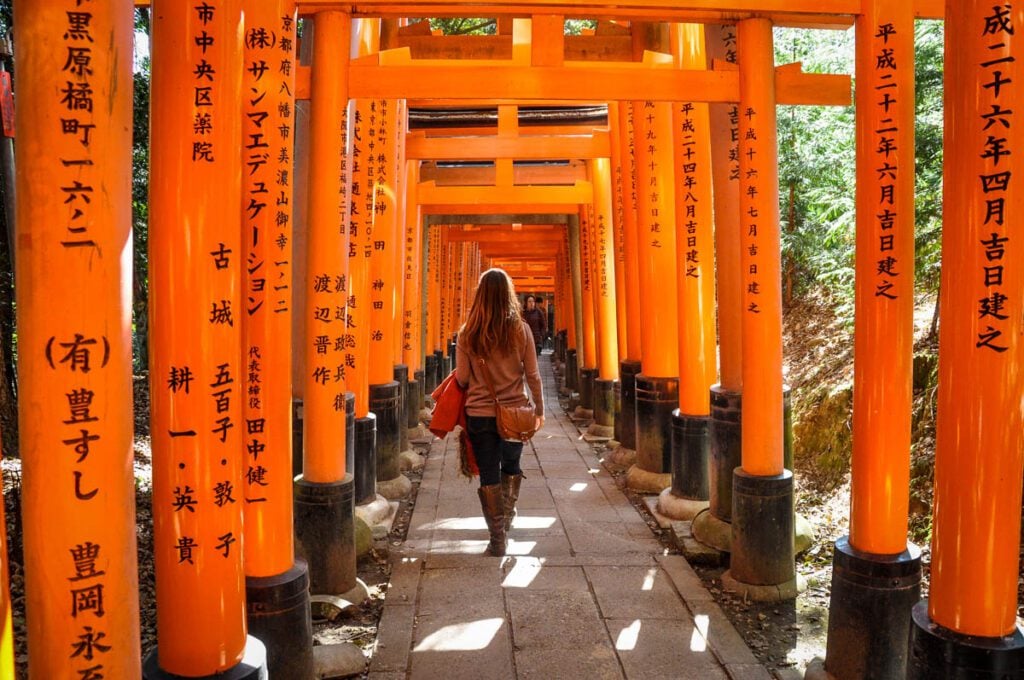
Below is an estimated breakdown of (about) how much money you should plan to budget for a trip to Japan based on your travel style.
*Note: These are estimations for one person and do not include flights.
- You’ll stay in hostel dorm beds, grab breakfast from one of the many 7-Eleven’s or Family Marts, and do as many free activities as possible.
- You’ll be staying in comfortable, though not fancy, hotels or Airbnbs . You’ll want to try lots of Japanese food—both budget meals and a couple nicer ones too. You will use public transportation to get around and you want to see as much as possible, but you’re willing to make some sacrifices to save money.
- Budget isn’t too much of a concern for you. This isn’t necessarily luxury travel, but you are willing to pay more money for convenience and comfort; and splurging on unique, once-in-a-lifetime experiences is not a problem for you.
Japan travel planning tip: This article breaks down the exact cost of a trip to Japan . Based on our own experiences traveling in Japan, we share the costs associated with each portion of our Japan trip — from transportation to food to accommodation to entertainment.
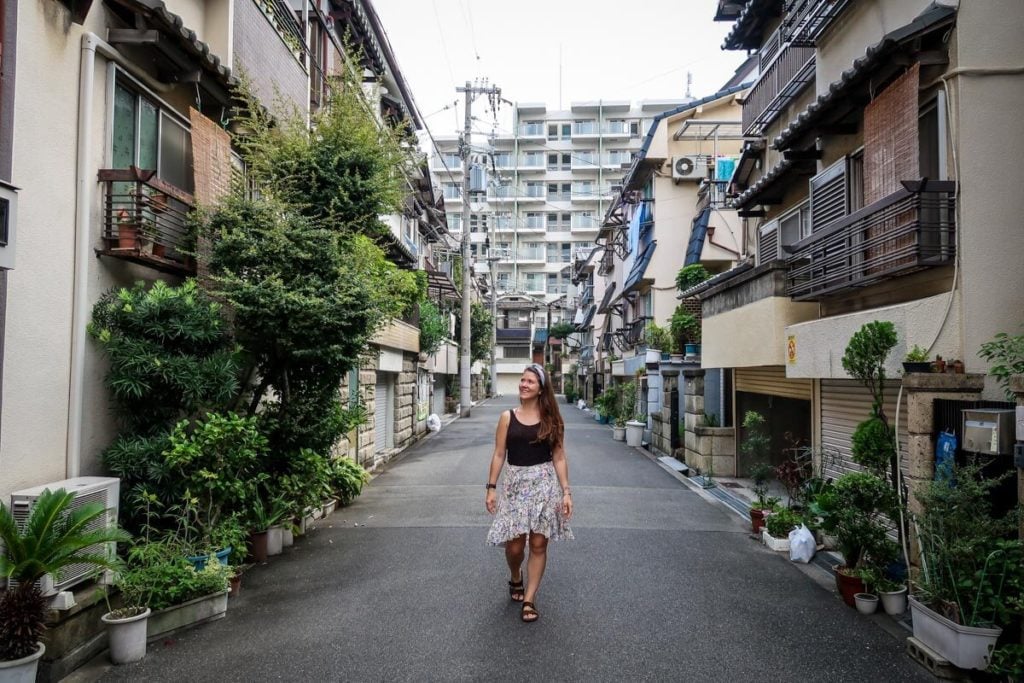
Japan Travel Cost: Exactly How Much is a Trip to Japan?
In this article, we’re breaking down the cost of a trip to Japan — from food and hotels to trains and entertainment. We get super detailed so you can work out your perfect Japan travel budget.
Psst! If you want to know how we afford to travel (& how you can too!) , we think you’ll love this article!
Are credit cards accepted in Japan?
Yes, but hold up…
Major credit cards will typically be accepted at big hotel chains, nice restaurants or shops in large cities, but you’ll want to have cash on hand to use in small restaurants, markets or in more rural towns.
There are still many places where credit cards are not accepted, so it is a good idea not to rely on plastic alone.
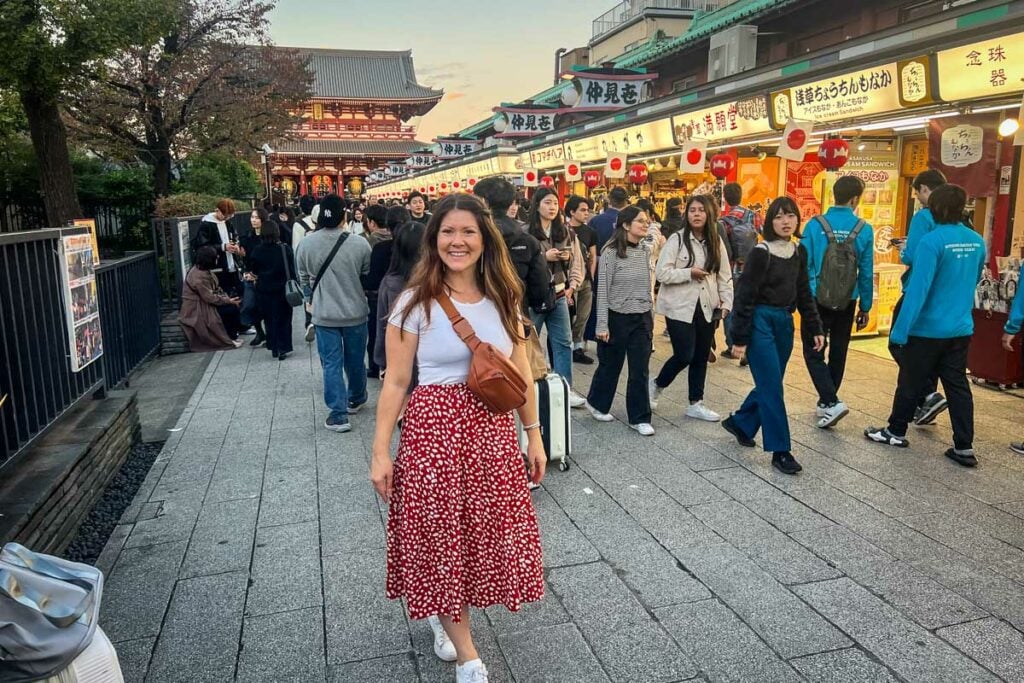
Should I get money from my bank before my trip to Japan?
This is a question we get all the time. The answer really comes down to your personal preference, but we never get money out in advance before international travel.
Whenever we enter a new country, we walk right past the Currency Exchange counters (they are a huge rip off most of the time!) and we go to an ATM to withdraw cash. You will get the best exchange rate by withdrawing foreign currency from an ATM.
If the thought of showing up in a new country without cash on hand makes your hands sweaty, then by all means ignore this advice and grab some yen from your home bank before you leave.
But I will say that airports always have ATMS, and they are easy to find in train stations as well as in 7-Eleven’s and Family Marts in most big Japanese cities.
Before heading to a rural town though, be sure to take out cash just in case you can’t find an ATM.
Credit card travel tips
- Turn on travel notification: Be sure to alert your bank ahead of time that you will be traveling, and where, so they know your transactions aren’t fraud.
- Have a backup card: It’s a good idea to carry more than one card in case you have an issue with one of them. Remember to always pack them in two different places within your luggage — for example, one in your wallet and another in your backpack so if one gets lost or stolen, you still have access to the other.
- Invest in a debit card with no fees: We have a checking account with Charles Schwab , and they reimburse every single ATM fee. This means we never have to take out more money than we feel comfortable with carrying at a time. Try looking into accounts with similar benefits. It will save you so much money on your travels.
- Check out which travel credit cards we personally recommend.
Money-saving tips for Japan
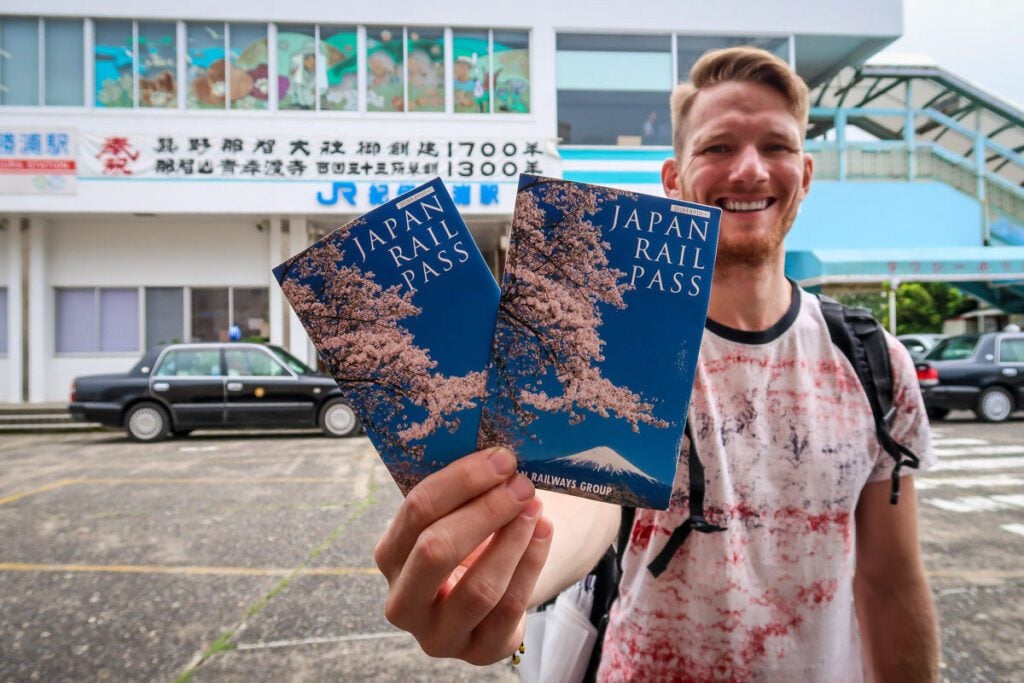
While it’s not a cheap country to visit, there are certainly ways you can save money while traveling in Japan.
- This article breaks down how much the Japan Rail Pass costs and how to purchase it .
- Get your breakfasts and snacks at 7-Eleven or Family Mart (they are everywhere around the country!). While you might never consider eating at a convenience store in your home country, the fresh food options are surprisingly good at these stores in Japan. I’m not joking. You’ll see many locals doing the same.
- Have your biggest meal midday and take advantage of “lunch sets” which often consist of a large meal (sometimes with a dessert) and are typically between $5-7 USD.
- Conveyor belt sushi is a good way to try all the types of sushi your little heart (and stomach!) desire without a huge price tag. Plus, it’s a fun experience in itself!
- Use an app to record your spending and see how well you’re staying on top of your budget! We find it’s much easier to overspend when you don’t know how much it’s all adding up to. We love Trail Wallet for recording our expenses. (We’re not affiliated with them, we just love using it ourselves!)
- Download a converter app on your phone like this one to see the exact exchange rate for your selected currency at the time of your trip, so you always know exactly what you are spending.
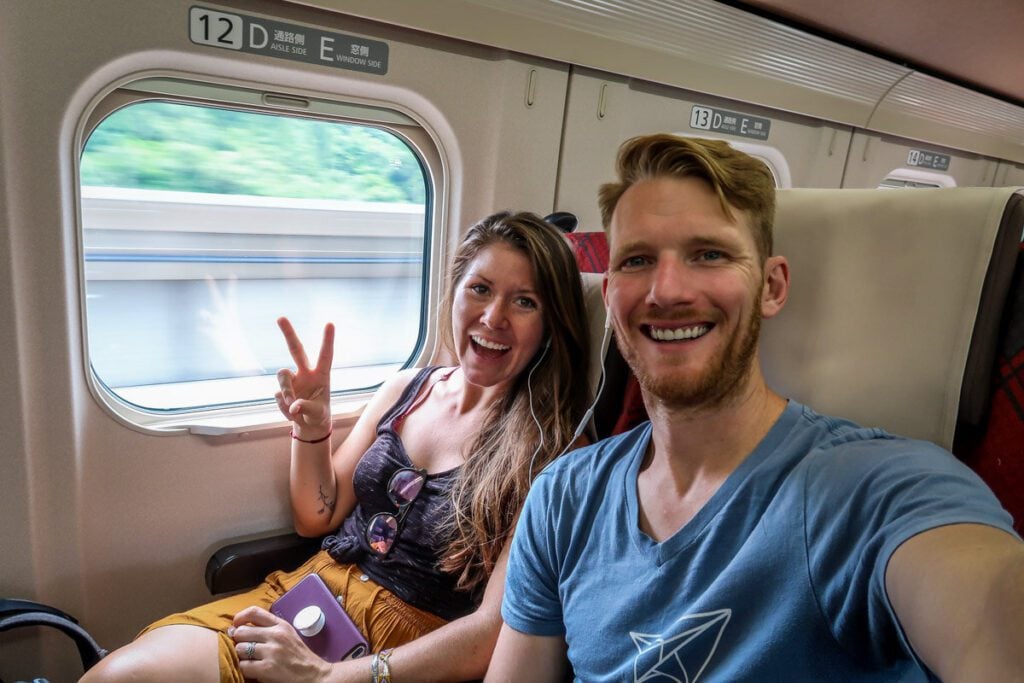
The trains and metros in Japan are some of the cleanest and most efficient in the world , and the rail system covers almost the entire country making it a very efficient way to get around.
However, transportation is one of the biggest expenses to factor into your Japan travel budget .
Travel by train in Japan
We have an entire guide to navigating the Japan Rail system and whether or not getting a J Rail Pass is worthwhile for your trip, depending on your itinerary.
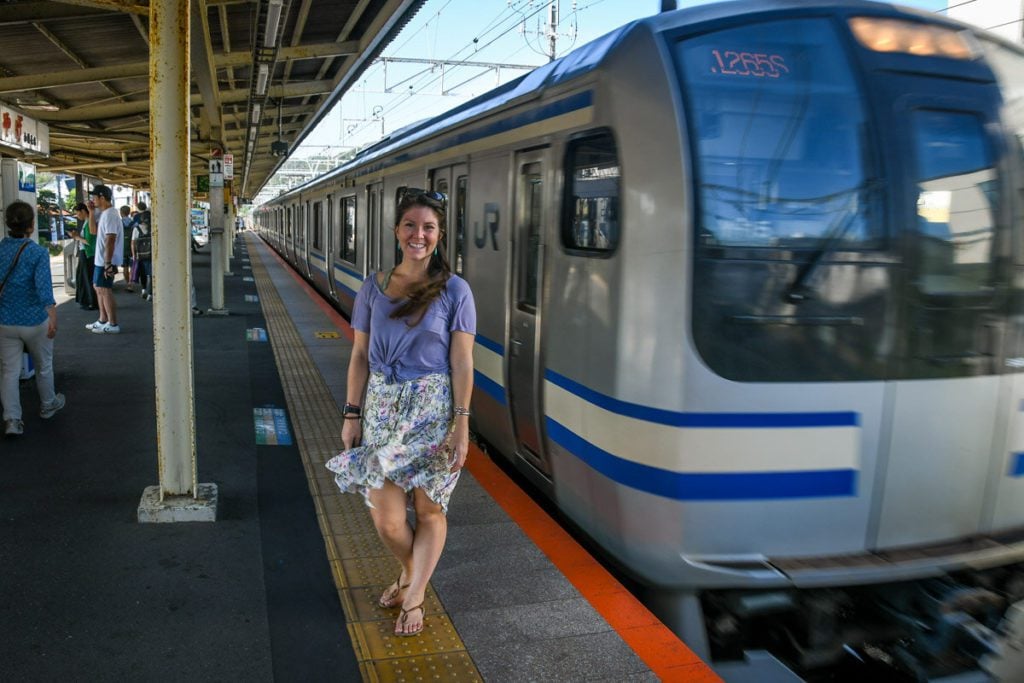
Japan Rail Pass: Where to Buy a JR Pass & Is it Worthwhile?
If you’re traveling to Japan, the Japan Rail Pass can be a huge money saver. We’ll explain exactly when you should purchase the JR Pass and if it is worthwhile for your route. This is everything you need to know including where to buy the rail pass.
Likewise, if you are just planning to spend your time in Tokyo and trying to figure out how to navigate the metro, you can find that info in our Tokyo article .
Renting a car
While we love the ease and efficiency of Japan’s public transportation system, we rented a car during our most recent trip to Japan and we absolutely loved it.
Having our own car was really convenient, especially now that we’re traveling with a toddler . Plus, it gave us the opportunity to get off the beaten path and explore places with very few tourists that would be difficult to visit via public transportation.
I think we will forevermore be renting cars when we visit Japan, even if just for part of our trip. We have a guide to renting a car in Japan (packed with lots of driving tips you won’t want to miss!).
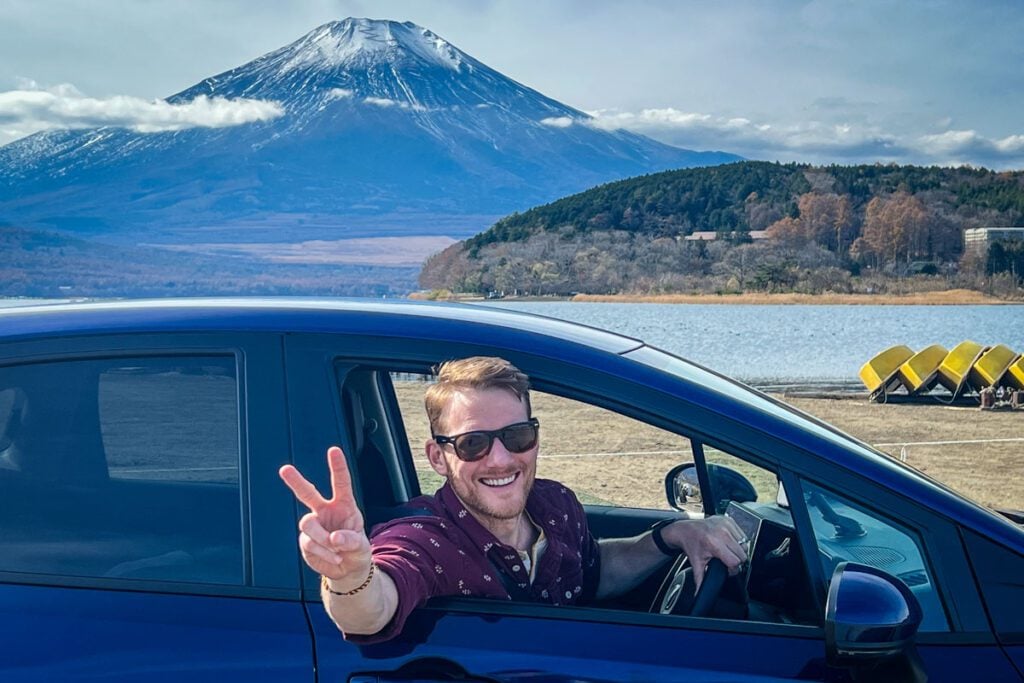
Renting a Car in Japan: Essential Driving Tips You Need to Know!
Renting a car in Japan is the best way to get off the beaten track and see parts of the country most tourists miss. We’re sharing our top tips to help you get a car rental and feel comfortable driving in Japan.
What are the trains like in Japan?
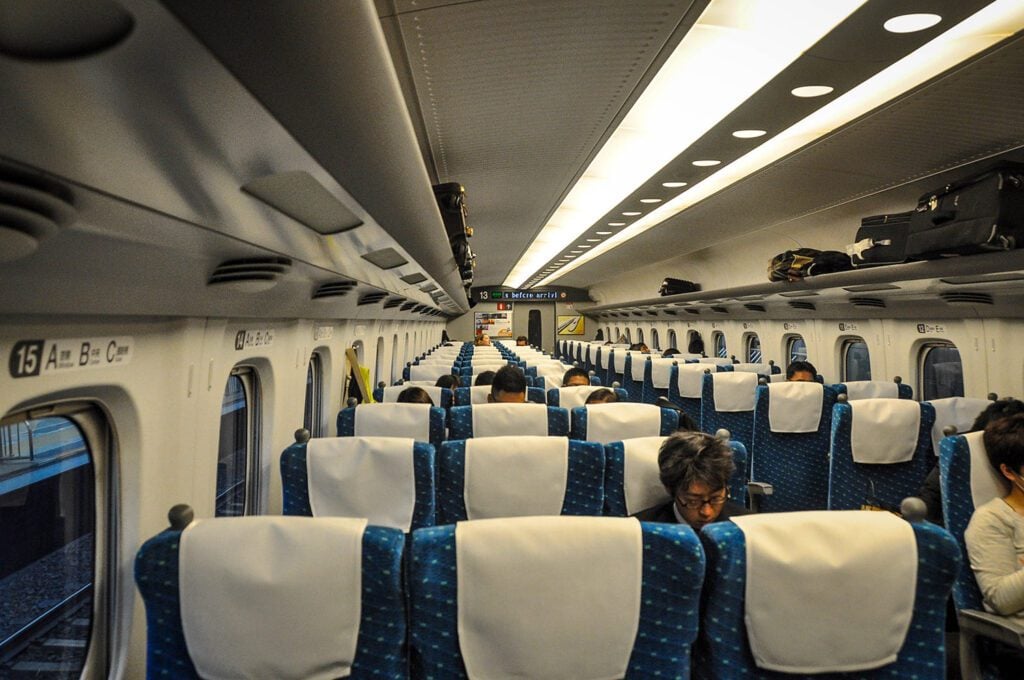
Overall, the trains are clean, comfortable and efficient. The rail system covers almost the entire country, making it a wonderful way to get around. This article goes into detail with everything you’d ever want to know about the Shinkansen Japanese Bullet Trains .
Practical information for visiting Japan
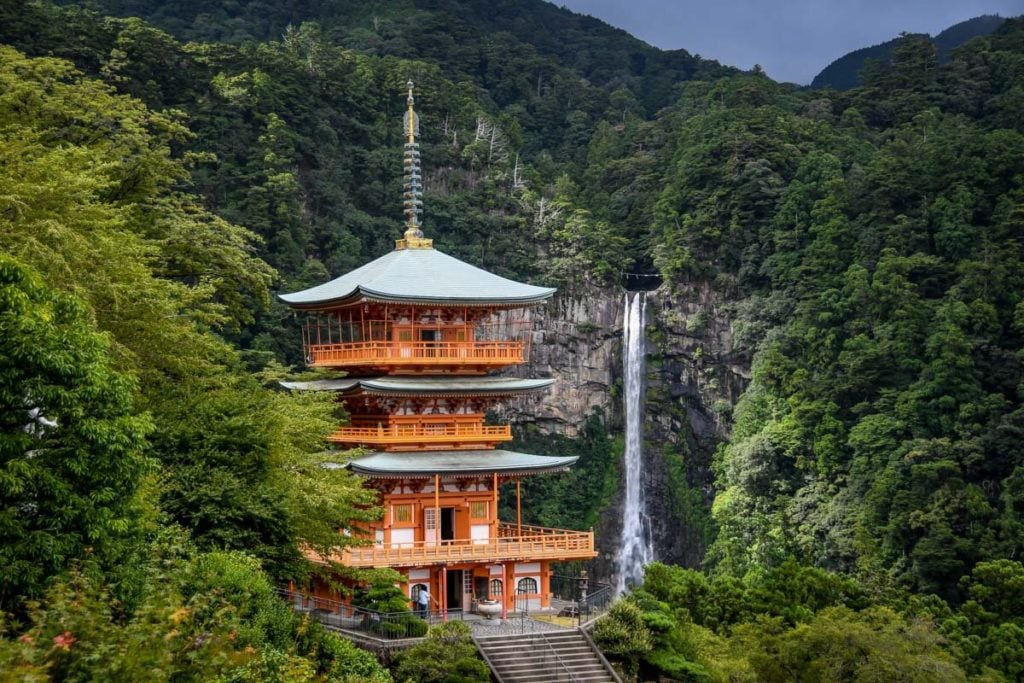
Traveling in Japan for the first time can be overwhelming to plan if you aren’t sure what to expect. A lot of questions can arise that you may not think about with other travel destinations.
We have an article with our top Japan travel tips and advice. This article goes over all the do’s and dont’s for traveling in Japan.
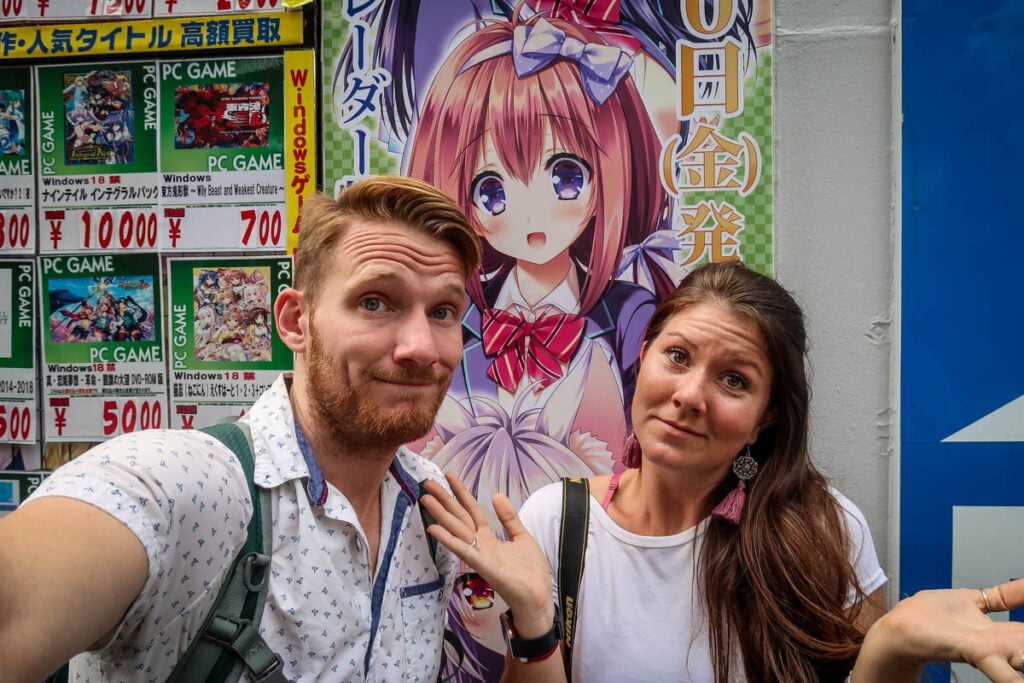
Expert Tips for Visiting Japan (Do’s and Dont’s!)
In this article we’re covering essential tips for visiting Japan, plus helpful advice we learned from personal experience that’ll ensure you enjoy your time in the Land of the Rising Sun even more!
We’ve done our best to narrow down some of the more practical information and answer some specific questions about traveling in Japan.
Do I need travel insurance for Japan?
While it’s not required to enter the country, we always recommend purchasing travel insurance before any trip. It is a small price to pay for the peace of mind you’ll have knowing you will be covered in case of an emergency or if anything is stolen.

For a trip to Japan, we’d recommend getting a plan with Safety Wing insurance . They make it easy to get a quote for the exact duration of your trip and offer the most comprehensive coverage at the best rate.
Check out our travel insurance comparison article for more information on how to pick a policy and what we look for in travel insurance.
How safe is Japan?
Japan is overall very safe and crime is low.
I once met a girl who was an English teacher in Tokyo, and she said she left her wallet in a train station. It sat there, untouched, and the next day when she retraced her steps it was in the same (heavily trafficked) place she had left it.
But even though theft isn’t common in Japanese culture, that doesn’t mean it can’t happen to you. As with any place in the world, always be aware of your surroundings and use common sense.
This is another reason we always recommend getting travel insurance to make sure you’re covered in case anything gets stolen or you run into other emergencies.
Do I need a power converter in Japan?
In Japan the standard voltage is 100 V and the power sockets are type A and B (pictured below). The socket is the same used in North America, but the voltage is lower, so yes you will need a power converter for electronics that don’t already have a converter.
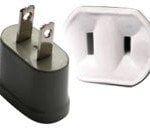
This website is a super helpful resource when it comes to electricity all around the world. Simply select your home country and it will tell you if you need a converter and/or plug adapter for your visit to Japan.
We recommend this all-in-one converter-adapter that works in any country. This means you only need one item no matter where your travels take you!
What are the bathrooms like in Japan?
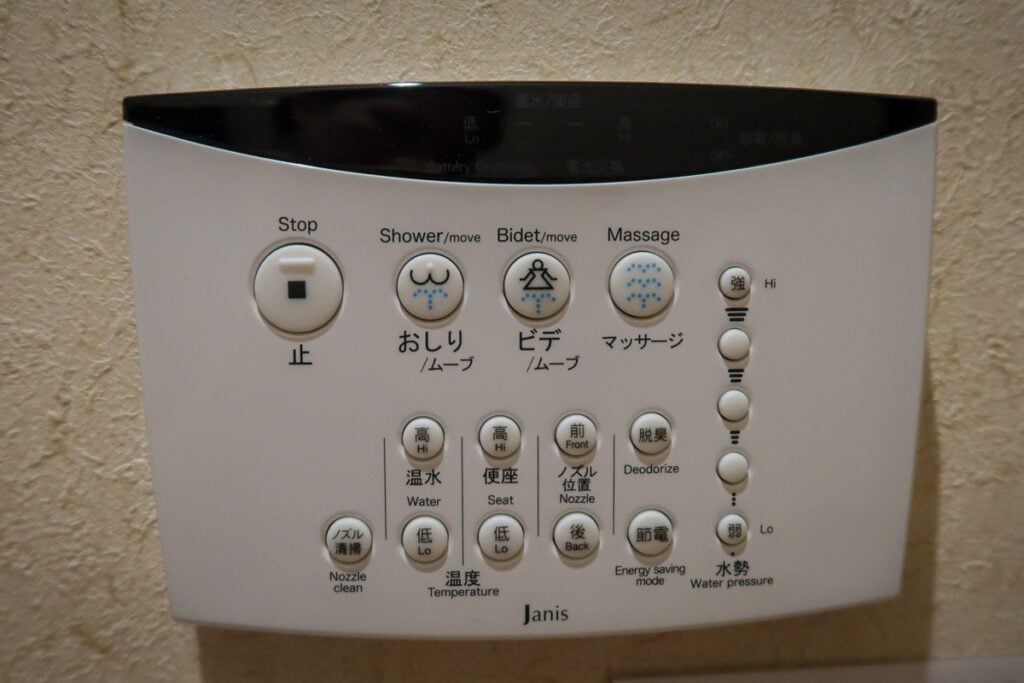
This might be an embarrassing question to ask out loud, but I promise you aren’t the only one thinking it. If it’s your first time visiting Japan, you likely have no idea what to expect when it comes to bathrooms.
The good news is, many bathrooms around the country are very nice and quite… luxurious .
In nicer restrooms, you’ll find toilets equipped with a built-in bidet to spray your bum. And some toilets even have buttons that will play music or rainforest sounds to cover up, well, you know…
Be warned though that in some train stations or in more rural parts of the country, you may find squat toilets similar to ones you’d find in many places around Asia.
How to get cell phone service in Japan
There are two common options for staying connected to data while traveling in Japan: pocket Wifi and local SIM card. This article does a great job of comparing the two and giving our honest opinions about which worked best for us.
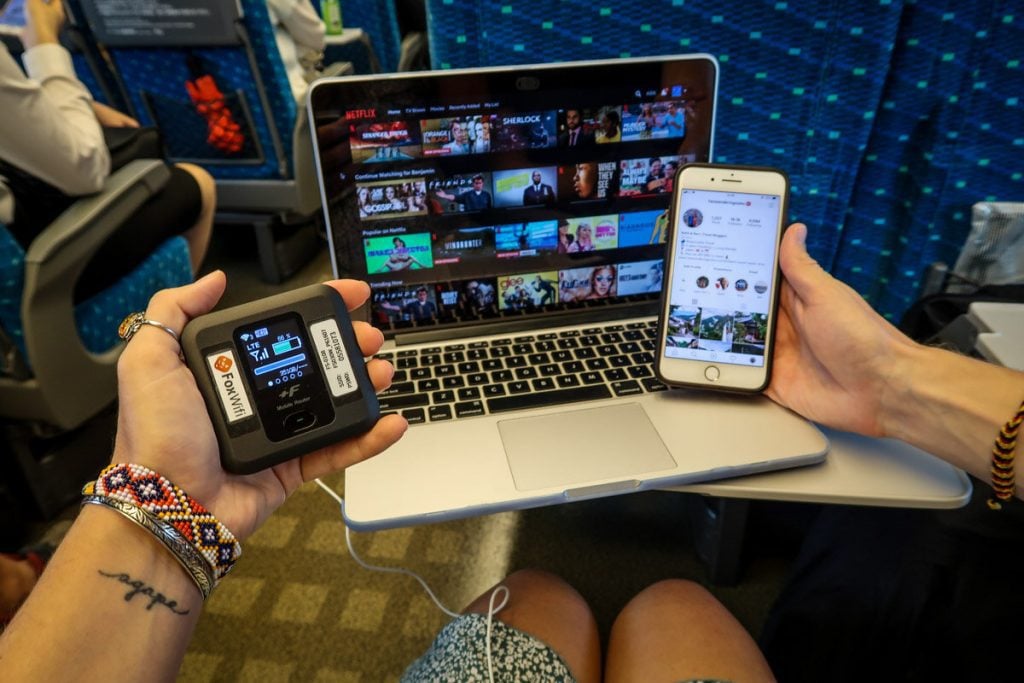
Japan Pocket WiFi vs. Japanese SIM Card: Review & Comparison
Staying connected in Japan is super important for navigating trains and translating menus. But how do you access the Internet in Japan? In this guide, we share our experience using a Japanese SIM card and a Pocket Wifi and tell you which is best for your travels in Japan.
Helpful (& free!) apps for travel in Japan
We have an entire list of the most useful apps for traveling in Japan that you should check out, but here are some of our favorites:
- Google Translate : This is a go-to app for us while traveling in Asia because you can take a photograph of the characters on a menu or label and it will translate for you. Be warned that some things don’t quite translate into English all that well…
- Google Navigation : Can give you the best routes for the metro and trains and even has live updates on delays.
- Hyperdia : The go-to train scheduling app/website in Japan. Plug in a route and it will tell you the times throughout the day and the prices, including each seating class.

Best & Most Useful Japan Travel Apps
Traveling in Japan is made so much easier (and less confusing!) with a few handy apps. Before packing your bags, be sure you have these helpful Japan travel apps downloaded to your phone to make transportation a cinch and the language barrier practically non-existent.
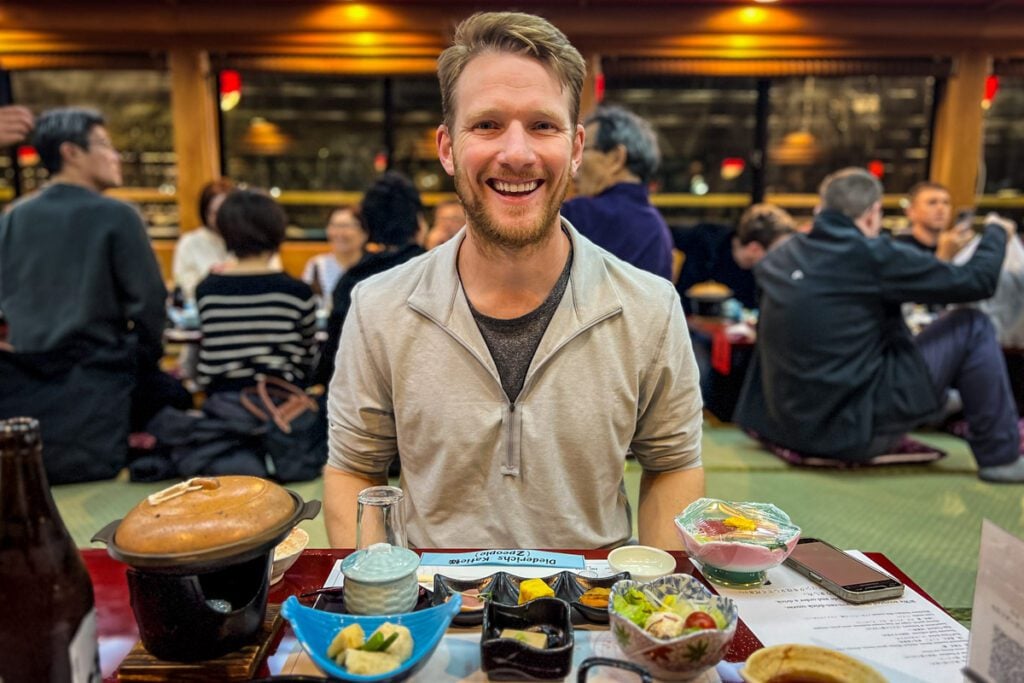
Japanese cuisine stretches far beyond the sushi rolls we’ve come to associate with this country. (Though of course you must try sushi from the source while you’re in Japan!) This article lists the foods you should definitely try in Japan !
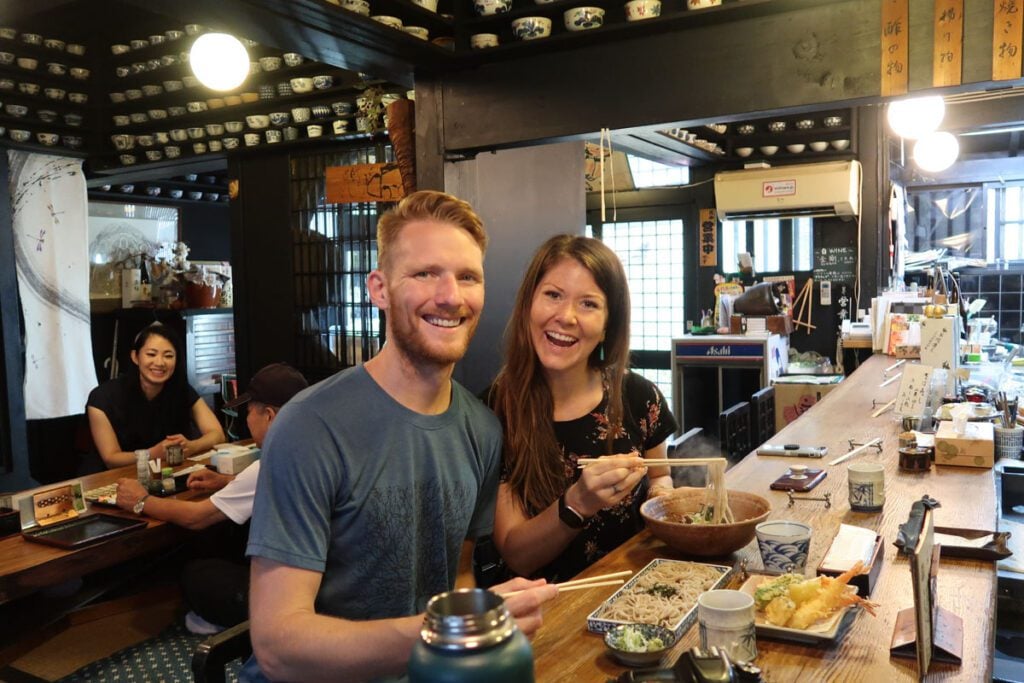
What to Eat in Japan: Foods to Try + Tips for Eating in Japan!
If you’re wondering what to eat in Japan, we’ve got you covered! We’ve put together a list of foods and drinks to try — from famous dishes to those you’ve never heard of. Plus, we’re going over important information everyone should know about eating in Japan.
And if you’re traveling to Japan with food allergies and wondering how that’s going to work. We have a whole section dedicated to dietary restrictions which walks you through what you need to know about Japanese cuisine and how to accommodate your allergies/restrictions in Japan.
Consider doing a food tour
If you want to try as much Japanese food as possible and learn about the cuisine on a deeper level, a food tour is where it’s at!
There are two companies that we trust above the rest for highly-rated food tours throughout Japan:
- We did this Old Town Tokyo Food Tour and really enjoyed it because it was off the beaten path in a neighborhood we would never have explored otherwise.
- Magical Trip is our go-to for unique night time tours like bar and Izakaya hopping. One tour that looks particularly interesting is their Shinjuku food tour in Tokyo.
Japan trip ideas based on your interests
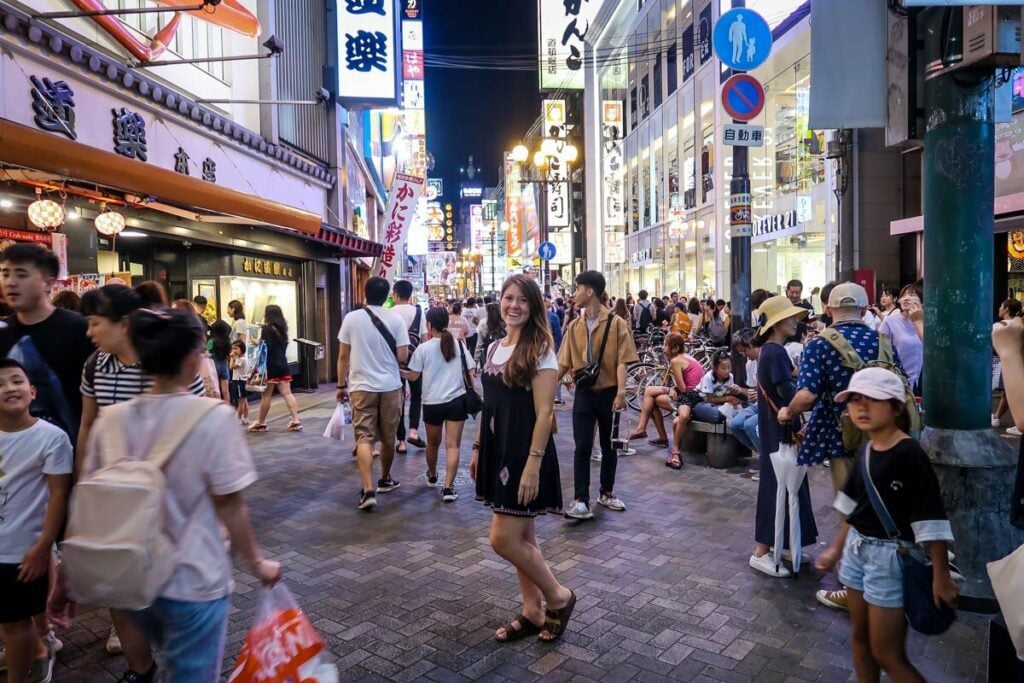
Japan is more than just Tokyo. If it’s your first time traveling to the Land of the Rising Sun , we’d definitely recommend a visit to its capital city as well as some of the other more well-known places like Kyoto and Osaka.
But, if you have been-there-done-that , or you have a lot of time to play with, check out our unique Japan itinerary ideas to get some inspiration.
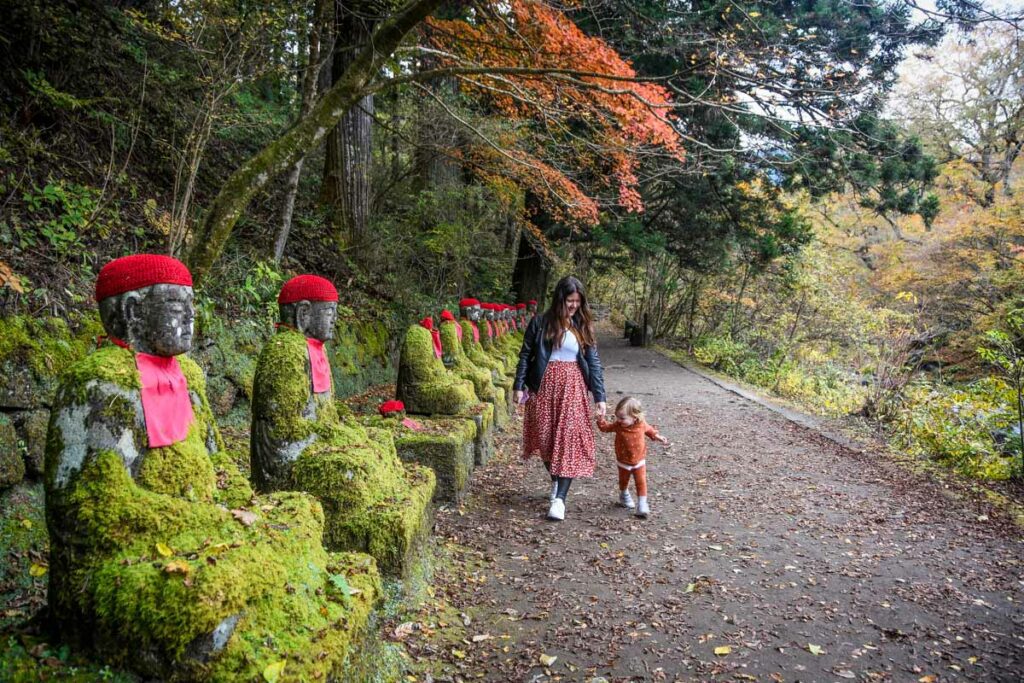
Unique Japan Itinerary Ideas Based on Your Interests
If you’ve been wondering where to start when planning your Japan itinerary, we’ve got some inspiration for you! These unique Japan itinerary ideas are based on your personal travel interests.
We are in the process of creating done-for-you Japan itineraries that are packed full of all sorts of tips we’ve gathered from 3 trips to Japan as well as literally hundreds of hours of research (no exaggeration).
We will have both off-the-beaten path routes as well as a classic itinerary that hits the top attractions. If you want to be the first to know when our Japan itineraries are on sale, get on the waitlist !
If you’re curious to see more about what traveling in Japan is like, we made a video after our first time visiting.
If you cannot see the video, please turn off your AdBlocker. Thanks!
What to pack for your Japan trip
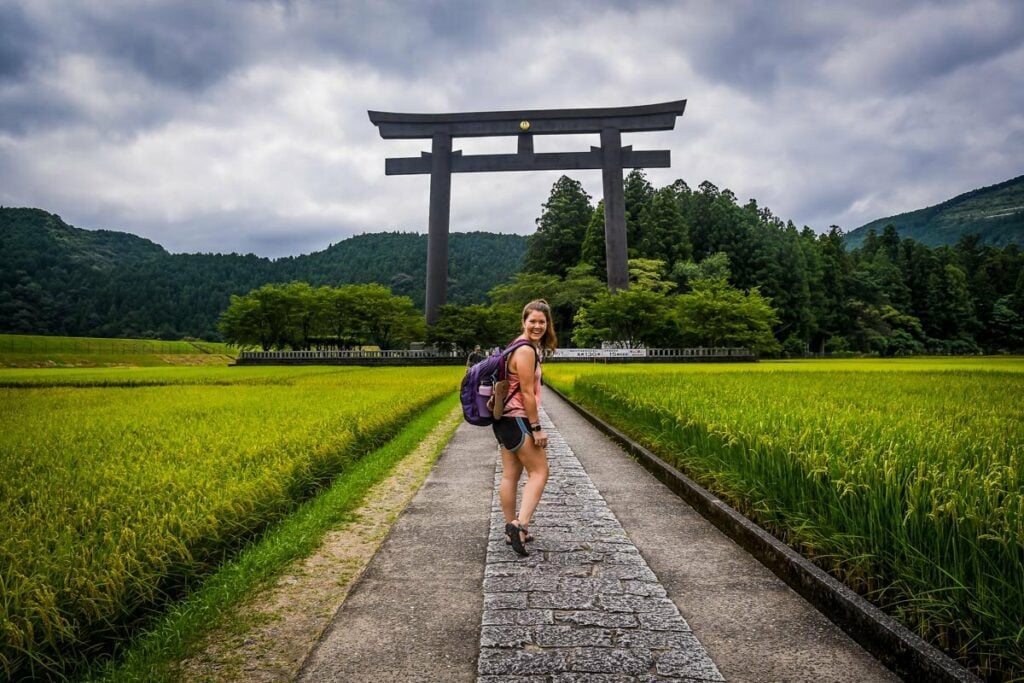
When deciding what to pack for your trip to Japan, a big thing to consider is the time of year you will be visiting. In the wintertime, for instance, you will encounter cold temperatures and will need warm clothing, whereas in summer the temperatures can be quite hot.
We created a whole guide to all the things you need to pack for Japan . Plus, we even have a (totally free!) packing list you can download !
This FREE PDF download includes everything you’re going to want to pack for your Japan trip, including what NOT to bring, plus tons of insider tips! Click the image below and fill out the form to get the packing list PDF sent straight into your inbox:
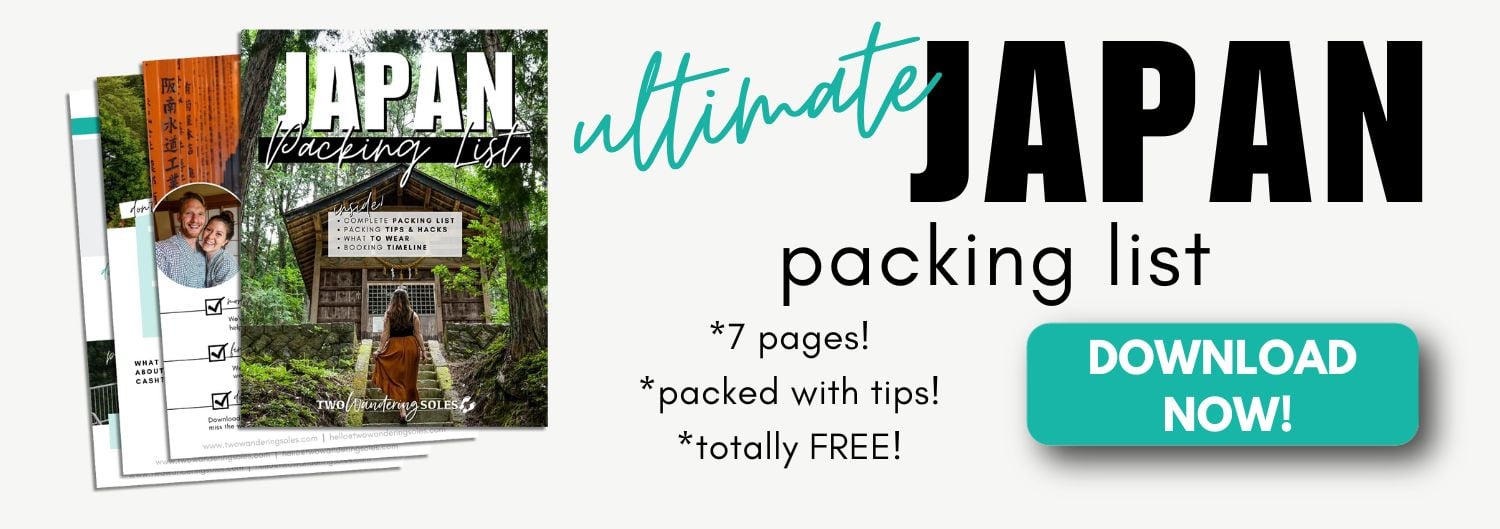
For more tips, check out our packing list for long term travel or the eco-friendly packing list full of travel gear that will minimize your footprint around Japan.
Here are some other items you’ll want to consider packing for your trip to Japan:
- Universal travel adapter : This adapter can plug in to Japanese outlets (and over 150 other countries outlets) safely.
- Away luggage : We recently jumped on the bandwagon and purchased our first Away bags and were not disappointed. These durable hard-sided roller bags come in lots of different sizes and with a lifetime guarantee, they are likely to be the last bags we ever need to purchase!
- Packing cubes : A backpacking staple, these cubes help keep your clothes organized in your bag.
- Power bank : It’s the worst when you arrive in a new city and your phone is dead. Keep it charged with an Anker Battery Pack, this one can charge your phone up to 7 times.
- Travel tripod : If you’re into photography…(if you want some travel photography tips, we’ve got you covered !)
Wondering what to wear in Japan ? We have a guide that goes over exactly what clothing items to pack for each season , including lists for both women and men. We’ll help you build a capsule wardrobe for your trip and let you in on some cultural taboos you should be aware of.
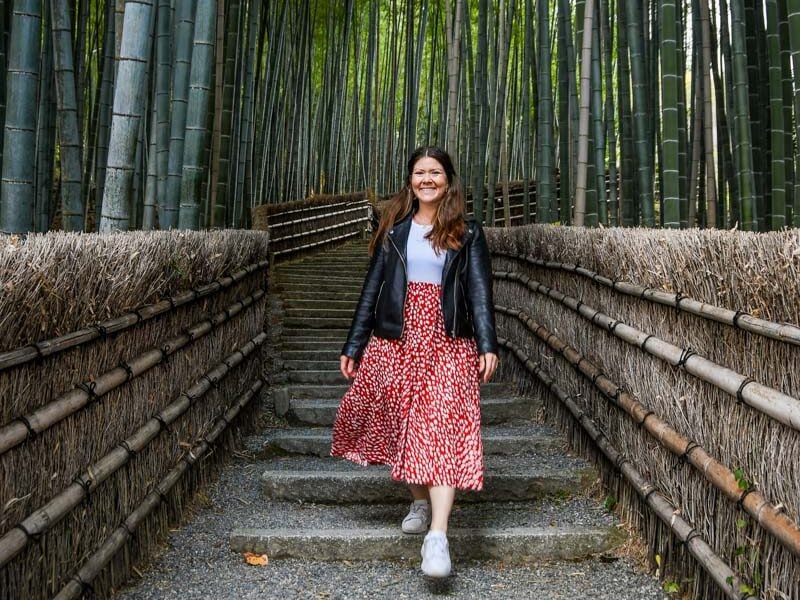
What to Wear in Japan: Packing List + What NOT to Wear!
If you’re wondering what to wear in Japan, this is the guide you need! We’re going over what to wear in each season and how to create a perfect capsule wardrobe. We’re also divulging some items you should not wear in Japan.
What to buy in Japan
If you’re anything like us, you enjoy bringing back mementos from your travels to remind you of the places you’ve been. We have a great round up of things to buy in Japan , including plenty of unique ideas for Japanese souvenirs.
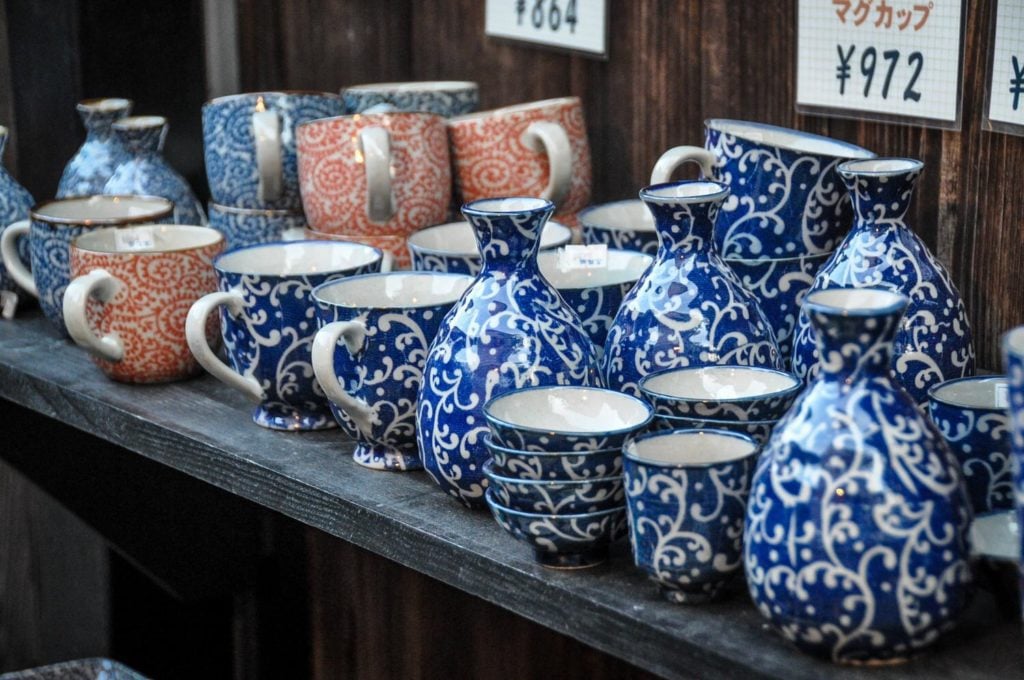
Things to Buy in Japan: Ideas for Unique Japanese Souvenirs
When traveling to Japan, you’ll have no shortage of shopping opportunities. We are going over the best Japanese Souvenirs to buy so you don’t end up filling your suitcase with unnecessary purchases.
More resources for traveling in Japan
We have TONS of resources on travel in Japan and destinations throughout the country. Check out our Ultimate Japan Travel Guide for all the answers to your most burning questions, or read some of our favorite articles below!
- Best Time to Visit Japan
- Is the Japan Rail Pass Worthwhile?
- Best One Week Japan Itinerary for Your First Visit
Save this article on Pinterest for later!
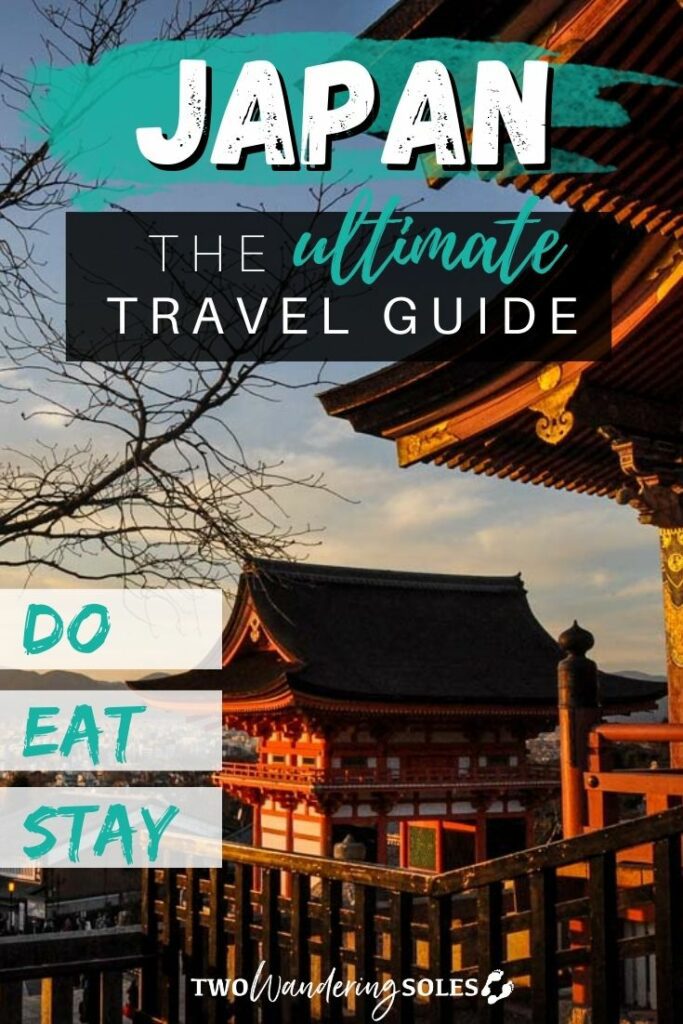
We want to hear from you!
Now that you’ve read through this extensive Japan trip planner, do you feel more prepared for your trip?! Is there anything we didn’t cover that you still have questions about? Comment below and we’ll try our very best to find the answer if we don’t know ourselves!
Comments (159) on “ Japan Trip Planner [2024]: How to Plan Your First Trip to Japan ”
Hi. My name is Jack, I live in Japan for more than 10 years and run a personal blog jackinjapan.com I would be glad if you can read my work)
Planning your first Japan trip? Exciting! Research cultural norms, attractions, and accommodation options. Consider exploring Kyoto’s historic temples and Tokyo’s vibrant cityscape for a memorable adventure.
Very informative post.
Best Travel Blog I have Ever Read. Thanks for Sharing this Article.
Helpful information of traveling to Japan and different places for making the memories lasts forever.
Your article is marvelous , It is very interesting topic and loved it , you were defined it very clear and make it informative for us. i am came first time on your blog , It is really good. thanks for valueble writing ..
You have understood clearly about Japan Travel Guide. Still you are looking for India Traveling. Embark on a soul-stirring pilgrimage with our Maharashtra Jyotirlinga Tour Package from Mumbai. Traverse the spiritual landscape of Maharashtra as you visit the sacred shrines of the Jyotirlingas, each steeped in ancient legend and divine energy. From the mystical Trimbakeshwar to the serene Bhimashankar, this journey promises an immersive experience of devotion and tranquility. Don’t miss this opportunity to embark on a spiritual odyssey of a lifetime. View more details or book your tour by visiting our website now.
thanks for sharing such amazing information.
Great Info gave by the Admin.
One of my biggest dream! hope can visit japan soon!
This guide has everything you need to know to plan and book your dream trip to the Land of the Rising Sun. We’ve got you covered from visas and flights to transportation and accommodation. Thanks for sharing this amazing information with us…
Thanks to your travelog and detailed info! I’m planing a trip to Japan and this guide will really help me to arranging and planning.
tempotravellerhire
Thank you for sharing this post with us, I was actually looking for same.
Thanks so much, you guys! Glad you like the article.
Nice Article
Thanks for sharing, I would love to travel.
Superb information for the Japan travel guide.
Very helpful; many thanks.
This Japan Travel Guide is an invaluable resource, seamlessly guiding newcomers through the intricacies of booking their first trip with comprehensive insights and practical tips. The engaging content not only simplifies the process but also sparks excitement for the unparalleled experiences awaiting in the Land of the Rising Sun.
This Japan Travel Guide is a comprehensive gem, providing valuable insights on booking a first-time trip. Clear, concise, and incredibly helpful, it’s a must-read for anyone planning to explore the Land of the Rising Sun.
We provides premium uniforms to corporates and industries. Customized uniform tailoring with branding on-time delivery with best price in UAE.
Get affordable Taxi Service in Kochi Kerala: sedan, SUV, Tempo Traveller Taxi Cab Services. South India tour packages, Sabarimala Taxi, Airport Transfer.
Very informative, thanks.
Very Relevant Post. Thankyou so much for sharing this with us.
I just planning to visit Japan. thanks for your guide.
If you aren’t hitting the ski slopes, March to May and September to November are generally considered the best times to visit the country for pleasant weather.
Yes! We are so excited to visit this coming November!
I found the post to be highly good. The shared information are greatly appreciated
Great Article, Thanks for writing.
Nice Article; thanks for writing the informative content.
Nice Artice, Thanks for writing.
it`s a good and unique tips to travel japan
Thanks Carol! Japan travel is amazing, but sometimes it can be confusing for the first time traveler. We are glad you found it useful!
It is my dream to visit Japan once in my life currently I am a student also preparing for a Job but soon I will definitely visit my dream country Japan once in my life to experience heaven on earth and I bookmarked this article for future Help. I really want to thank to the writer of this post,
Thanks for sharing such an informative article.The article was a delightful read, and I found it to be exceptionally well-crafted and enlightening.I think this is a fantastic article, and I really appreciate you letting me know about it.
online casino The source of modern live casinos, online slots, online lottery, online football and various betting that you can enjoy.
Thanks for sharing, I always want to travel to Japan, a beautiful country.
This is so comprehensive! Must have ben so much effort, thanks so much!!!
Wow! This comprehensive resource covers everything you need for planning a trip to Japan. Discover essential tips and information to make your Japanese adventure unforgettable.
amazing information
nice post, thanks for sharing
The blog post was insightful and well-written, providing valuable information on the topic. The content was well-organized, making it easy to read and understand. The author’s writing style was engaging, keeping me hooked from start to finish. I appreciated the inclusion of relevant examples and practical tips, which added depth to the article. Overall, it was an excellent read, and I look forward to more informative posts in the future.
I love and appreciate it so much. And I would like to recommend my blog to the people who visit your blog.
Thanks For Sharing This incredible information
Regards, Carol Although travelling in Japan is fantastic, it can occasionally be challenging for first-timers. We’re happy it was helpful for you!
The article is written very well. It provides such a great information about Japan trip. The content has full information about Japan , i love travelling, your article is very impressive. I would definitely travel this amazing place. Thank you for this great content please read my blogs too.
Wow, guys. This is the most comprehensive Japan travel post I’ve ever seen! There’s no way I could read through this entire thing right now, but I’ll certainly bookmarking this for our future trip to Japan. I noticed that you’re a VIPKid teacher as well. It’s amazing how this company has made traveling a reality for so many of us! Keep the amazing content coming!
Thanks for the in-depth wonderful article you turned out here Enjoyed reading the article above and thank you for sharing good knowledge and information it’s very helpful. I was searching for a travel blog and found your blog site. I like your high-quality blog site design plus your posting abilities. Keep doing it
Thanks Jamie, glad you found it useful. Let us know if you have any questions about traveling in Japan
Yes i am completely concurred with this article and i simply need say this article is extremely decent and exceptionally useful article.
I just found this good blog and have high hopes for it to continue. Keep up the great work, its hard to find good ones. I have added to my favorites. Thank You.
Thanks for sharing this article it was quite insightful. Hoping to see more articles. Meanwhile, refer
amazing blog thnaks for sharing with us
yes, It is very helpful to take help from japnanies tourist guide. I love your post. thanks keep it good information.
Wow! Great works guys – this is a superb guide. The amount of work you’ve put into this is seriously impressive. Good practical information and tips too.
I’m also an onsen fan, and I completely agree for the truly immersive cultural experience nothing beats staying in a ryokan (traditional Japanese inn).
Travelling with your whole family or a group of friends to Manali? Just book a Tempo Traveller in Manali, and you and your whole group can travel in just one vehicle, that too in comfort and leisure. Chiku Cab helps you book tempo travellers even for the entire Golden Triangle tour of India.
GTS cab service in Dehradun comes with the top-notch facilities of Clean Cars, Well Trained Drivers and 24*7 Customer Support.We provide all type of car including sedan, Dzire, xcent, or an suv, Innova Crysta, We guarantee to provide both on-road and online safety for our customers. For on-road safety Book Online Cab in Dehradun at Low Fare for One-way or Round-Trip, Local Hire affordable full day sightseeing taxi from Delhi to dehradhun Call Now +918191008100.
Nice blog! I really like it. Japan is one of my dream place in my travel list.
Thank your for this plan
Really enjoying all of your Japan blogs – they’re so helpful for planning while waiting for travel to open up again!
I loved your post…
Hi, Nice blog.
I read your blog thanks for sharing.
Thank you for sharing this blog. You have summed up all the beautiful topics of Japan in this blog. Keep up the good work guys!!! If anyone wants to visit India we are here to serve you the best taxi service all over India. For more information visit our website
Excellent site except for the lack of info on Tokyo bus and subway passes/fares. Need info on where to buy, how to buy, cost and what they can be used for.
If I see a good post, you will not go without praising me, because every word written in the post you have written is very thoughtful, your way of writing is very beautiful and your views are also very good. This is a commendable post, as much as this post is praised, it is less, you should keep writing more beautiful posts in your life.
Really the knowledge given by this blog is 100% thanks for making such a knowledgable article on travelling life.
Thanks for this great article! Have got of tons of ideas for my trip! This country is definitely now my bucket list on more priority now!
Thanks a lot for sharing all the details. would really help me plan my trip in a better way!
This is the first time I visit here. I found so many interesting stuff in your blog especially its discussion. From the tons of comments on your articles, I guess I am not the only one having all the enjoyment here keep up the good work.
It made me more crazy for Japan. Soon will plan for it.
how worthy things has been provided in the article thanks for posting
what a great article about japan. its been a my favorite country always
Japan is on my family’s bucket list. I am definitely going to pin this guide for reference when I am planning
Thank you for information about Japan! Does anyone have an itinerary with a trip to Japan on the Worldee?
Amazing Japan guide! Cant wait to go back!!!
Really amazing blog about travelling, I am looking such type of blogs but finally, I got it the way the things described is totally amazing.
Thanks so much, glad you enjoyed it 🙂
Great Info. Thanks!
Glas it’s helpful 🙂
Nara was mind-blowing! The Deer, walking up to you, begging for food, the Mochi pull at the mall and all the beautiful Temples. Unfortunately, it rained during our visit, but I still look at the pictures and think about how lucky I am to have seen this.
Perfect Travel Blog Guide For the Travel to Japan.
The blog is brilliantly written and provides all necessary information I really like this awesome post. Thanks for sharing this useful post.
Hi! Such a wonderful article. Japan is definitely a beautiful place to visit, will be adding this to my travel bucket list
Nice Post. best information about Japan tour, Japan is technology city. The travel experience is great.
Love this article! Thanks for sharing.
Hey, your post is amazing and informative. thanks for sharing this info. If you want to travel anywhere in India, our taxi service is available all over India.
Wonderful content. Really thought provoking and super informative. Keep it up guys.
What an amazing and extensive post. I would like to add something to the foodie part. Japanese food is amazing, and while you can try delicious things in Tokyo, every region and city has its specialties. For real foodies I would suggest visiting the following cities and trying the following foods: Osaka – Osaka style Okonomiyaki and Takoyaki Kobe – Kobe Beef (other regions also have amazing Wagyu) Hiroshima – Hiroshima style Okonomiyaki and Oysters Nagoya – Hitsumabushi and everything with red Miso like Miso Nikomi Udon Fukuoka – Hakata Ramen Of course, there is much much more but these are the foodie highlights of Japan.
wow i have a dream to visit japan
Impressive writing. You have the power to keep the reader occupied with your quality content and style of writing. I encourage you to write more.
very nice info, i will go there soon!
very nice place and recommended to visit
As someone that had lived in Okinawa (Military posting) for two years, I never got to travel around Japan. I’m planning on a trip next year. Should I have one AirBnB that I use as my ‘home’ for my trip (I’ll be in Japan for about 3 or 4 weeks) or should I only book spots for a couple of days while I travel around the country?
Very interesting article, thank you for sharing your travel experience to Japan. By reading this, I want to come to Japan. It’s nice to come there and feel the holiday atmosphere in Japan. landhoteldiever.nl
Wonderful post! Congratulations!
honestly WOW! this website is so useful and helpful and it has really, and I mean REALLY good info on Japan. This has helped me so much to plan my dream trip to Japan and I thank you both! Katie and Ben! for taking the time to share your experience and your knowledge that ultimately helped me in so many ways! THANK YOU!! ♥♥♥♥♥♥♥♥♥♥♥♥
Outstanding vacation point. Great!
Great Post. Thanks for sharing Great information about Japan tour, The travel experience is great.
Thanks so much for your nice comment! Cheers!
Hey Guys, I just have to say "hats off" on this guide… "Ultimate Guides" are so misused and the term gets thrown around so much it’s nice to actually see one that’s this robust!
Thanks so much Sara! Are you planning a trip to Japan soon? Let us know if you have any more questions. Cheers!
You are very welcome Agen! Let us know if you have any questions!
a very extraordinary website ! your discussion is really very helpful. thank you very much for what you convey. Good luck always.
Thank you so much for your nice comment, we really appreciate it. Let us know if you have any questions about traveling in Japan!
Hi Really grate information. you have done your best. I hope one day I can afford it to take a short trip to Japan which is my wonder land. I have been reading Japanese for a while. (Mai asa watash wa nihon go benki shimasu) (domo arigato gozaimasu)
Thanks so much for your nice comment!
Planning to visit Japan in autumn of 2019, found a lot of interesting information and some very good suggestions/tips here, thanks!
You are very welcome Mari! Hope you have a great trip to Japan!
Wow, thanks for sharing Katie and Ben, this is insanely detailed and covers everything a traveller needs!
If we may add just add some safety issues for fellow travellers to watch out for, mainly do be aware of some of the bar scams and bill padding that happen in Roppongi and Shinjuku, as well as donation touts/scammers. May everyone enjoy Japan!
Thanks for the tip David, but from our experience we didn’t see any scams while traveling in Japan.
Will be using this in the future with specific items to get before hand. Traveling to Japan alone and for the first time in a couple months. Extremely excited and nervous ? Thank you!
Hey Cody, Thanks for the comment. Traveling to Japan solo can seem intimidating, but it is totally possible. Let us know if you have any questions, we would be happy to help. Cheers, Ben
what’s your camera and lens? 🙂
We have a Nikon D7500 DSLR camera that we take most of our photos with. If you want more tips on travel photography, you might want to check out our article on it. Let us know if you have any questions. Cheers!
Oh my your post is verrrrrryyyyy informative. I wish I saw this before our trip. Anyhow, will keep this in my bookmarks for my future travels in Japan. Thanks a lot.
Dang, sorry you missed it. Hopefully it will be a good start for your next trip!
Wow! Very informative. I’ll be sure to use these handy hints when we go there next year!
Glad you liked the tips, Melissa. Hope you have fun planning your trip to Japan!
I literally found this post very interesting and it just cast spell on me. I am soon going to visit Japan, thanks for sharing this post.
You are very welcome. Have fun visiting Japan soon!
Hi Good Morning to all of us! How is it like going to live at Japanese are more confidence swept even though they not shy fronts others? What can they most travel like wise Japanese become the standard language, seeing use in most official communications among JAPAN;which later developed in "Kanji" which is a form of writing used to express ideas in the Japanese and Chinese languages.[11] many ordinary Japanese people tend to consider the languages as dialects of Japanese. This is the result of the official language policy of the Japanese government, which has declared these languages to be dialects and prohibited their use in middle high education after graduation even though they will understand unfortunate front of and others?
Thank you Karen for the additional information on Japan.
Hi Katie & Ben…My better half and I visited Japan last week from India and had a wonderful trip…thanks to your travelog and detailed info! We blindly followed your steps at almost every point and did very little customization. Thanks again for these contents. Keep traveling and guide amateurs like us 🙂
Thank you so much for the kind words. It truly makes our day knowing we have helped make someone’s trip better or easier! Thank you for taking the time to let us know! It just brought a smile to our faces 🙂
Great and useful information about travelling through Japan! But are you sure that a two-way trip from Tokyo to Kyoto covers the price of the 1 week JR-Pass? Maybe it depends on your location, but where I am from (NL) it seems cheaper to buy two separate tickets. Especially considering that you cannot take the fastest Shinkansen (Nozomi) when using the JR-Pass.
Hey there JapanYo, the round trip ticket from Kyoto to Tokyo is basically the same price as the one week JRail Pass. And if you are traveling anywhere else in Japan, even intercity, if you have the pass, you can think of all your other train trips are free, since you can ride JRail unlimited times within the week.
And you still can ride the Shinkansen Bullet Trains with the pass, the only one it excludes is Nozomi.
Hope this information helps others choose what’s best for them when traveling to Japan.
The ultimate Japan travel guide helps me a lot in planning my trip. The pictures look beautiful and stunning. I really enjoyed the trip and please let me know what are the other incredible sights to explore in Japan.
Hey there, Glad you liked the article. We have tons of tips and advice in our other Japan articles, so if you don’t find what you’re looking for here, be sure to check out our Japan travel page.
Loved your post.
Thanks so much Japan Tours! Glad you liked it!
I’ve been offered a place in japan to intern so cherry blossoms here we come!
Congratulations D on your internship! Cherry blossom season will be a beautiful time of year to be in Japan.
Great guide! So many helpful tips!
Thanks so much DeJuan for your comment.
Excellent guide! I frequent Japan so I’ll be sure to keep your tips in mind 🙂 This is so comprehensive!
Thanks Lev, glad to hear you like it. Let us know how it comes in handy for your next trip. Cheers!
Wow. This is simple epic. Not sure how long it took you to write this but it’s AMAZING and having been in Japan couldn’t agree more!
Thank you so much Paula! We spent a lot of time on it, so it is wonderful to hear that you find it helpful (especially since you’ve been to Japan!).
Wow what a great resource. You have really covered everything you need to plan a trip to Japan.
Thanks Patti, glad you found it useful!
Wow, I think this is the most thorough guide to Japan ever! Guys, you should create an ebook out of it! It’s not only good for first timers, but for anyone giving Japan a visit!
Aww thanks Bistra. We tried really hard to make it one of the best Japan travel guides out there. Glad you liked it!
Japan is on my family’s bucket list. I am definitely going to pin this guide for reference when I am planning.
Thanks Jamie, glad you found it useful. Let us know if you have any questions about traveling in Japan.
Wow, guys. This is the most comprehensive Japan travel post I’ve ever seen! There’s no way I could read through this entire thing right now, but I’ll certainly bookmarking this for our future trip to Japan. I noticed that you’re a VIPKid teacher as well. It’s amazing how this company has made traveling a reality for so many of us! Keep the amazing content coming!
Thanks so much you guys! Glad you like the article. VIPKID is awesome and has really helped us stay on the road. So nice we can teach from anywhere in the world.
Wow! This IS the ultimate Japan travel guide – complete with what to do during what season, costs, and some Japanese words. Thank you for this!
Seriously it’s a total Japan guide
Leave a Reply Cancel reply
Your email address will not be published. Required fields are marked *
Save my name, email, and website in this browser for the next time I comment.

1 Month Japan Itinerary for First Timers
by Sharyn McCullum | Last updated Apr 16, 2024 | Itineraries , Japan Live Work and Play
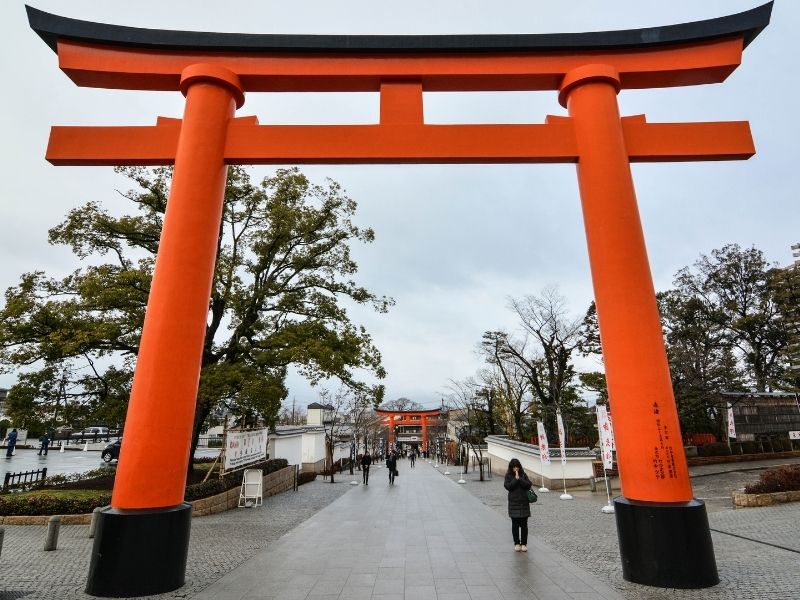
Plenty of traditional Japanese gates to see on your one month holiday in Japan
Japan is a country rich in history, culture, unforgettable landscapes, tech gadgets and fabulous food . No doubt, you will have in your mind places you want to visit in Japan – just like I did. Planning a trip to Japan can be a lot fun, but also daunting. That’s where this 1 month Japan itinerary comes in. If it’s your first time in Japan, this one month Japan itinerary for first timers, features some of the most memorable sites and attractions to visit on a Japanese holiday.
In this post I’ll show you exactly how you can spend 4 weeks in Japan. It is based on my Japanese travels. I’ll also advise on the Japanese transport and accommodations available to you plus, I’ve included lots of tips so you can start planning your memorable holiday in Japan. I’ve divided the post into 2 sections. The first section is devoted to planning your Japan itinerary which starts and finishes in Tokyo . While the second section is my suggested Japan 4 week itinerary. So let’s get into this 1 month Japan itinerary.
Table of Contents
Is one Month Long Enough in Japan?
If I had the choice I would spend a lot longer than one month in Japan. But one month in Japan is a very good start to begin discovering this amazing country. Now before you read any further, I must warn you that this itinerary of Japan is jam-packed with things to see and do every day. Providing you with as many opportunities as possible to experience Japan. Some days you will need to be very prompt on your departure, but as everything in Japan runs like clockwork, you should be fine to fit everything in. Afterall, I did!
Prepare for Your 1 Month in Japan Trip
Who is this japan 1 month itinerary for.
If you are wondering who can go on this Japan holiday, well, anyone! This Japan 1 month itinerary is very comprehensive and versatile and there is something in this itinerary for everyone. No matter if you are travelling solo to Japan or with a friend or partner as a backpacker to Japan or coming to Japan on a family holiday to explore Japan with kids, there is something for everyone in this itinerary.
Best Time to Visit Japan
The Japanese archipelago is over 1900 miles or 3000 km in length. Meaning, Japan is large and has a variety of different climate zones. Generally speaking, the best time to travel to Japan is either Autumn in Japan (September, October, November ) or Spring in Japan (March, April, May). But particularly late March and early April so you can catch a glimpse of the Japan cherry blossoms. This is when I visited Japan and even though it is Spring in Japan, it was extremely cold. Winter in Japan (December, January, February) is also beautiful but can be extremely cold in some areas due to snowfall. While Summer in Japan (June, July, August) is known for its heat and humidity with lots of tourists. So if you are visiting Japan during those times, be sure to prepare for the weather you may encounter accordingly!
If you want to visit Japan for special Japanese events, such as ‘golden week’, ensure you book rail seats in advance as it can be very busy. If you plan on hiking Mt Fuji, July is the best time to visit Japan for this. For skiing in Japan the best time is the winter months.
READ MORE : Work and Ski Japan
TIP : You will be doing a lot of walking on this one month in Japan itinerary so I highly suggest you have comfortable shoes and clothes for the climate you will be visiting in.
How to Get to Japan
As Japan is surrounded by ocean, the best way to get to Japan is to fly. Major international airport hubs are outside of Tokyo and Osaka. Another option to arrive in Japan is by boat. A number of ocean liner cruisers visit Japanese ports. But most international visitors to Japan arriving in Japan on their first visit arrive at Narita International Airport by plane. You can check airfares to Japan here .
How to Get from Tokyo’s Narita Airport into the City Centre
Narita Airport is around 1 hour out of centre of Tokyo. So when you arrive, you need to figure out how to get into the city. There are a few options to get into Tokyo from Narita Airport. You can take a taxi from Narita Airport into Tokyo but this is the most expensive option. Therefore consider the Narita Express which is a fast and convenient train service taking you from Narita Airport to major Tokyo train stations such as Tokyo Station, Shibuya Station and Shinjuku Station. This can take around 6-90 minutes depending on which station you are getting off at. Another train is the Keisei Skyliner that is a fast and direct service from Narita Airport to Ueno Station in the heart of Tokyo. Depending on where your accommodation is located this is a great option to get you from Narita Airport into Tokyo.
BOOK Your one-way Skyline Ticket from Narita Airport to Tokyo here
The next option to get into Tokyo from Narita Airport is by limousine bus . This bus service will take you from Narita Airport to popular destinations in down Tokyo including some bus stops at train stations in Tokyo and some major hotels. This was the option I took when I first arrived in Tokyo as a transfer from Narita Airport to my hotel was included in the cost of the accommodation. It took around 60 minutes and was quite scenic as we passed open land before travelling into Tokyo. It was my first glimpse of Japanese countryside and Tokyo.
BOOK Your one-way Shuttle Ticket from Narita Airport to Tokyo here
How to Travel around Japan During Your Month Holiday in Japan
Japan has a number of different options available to travel in and around Japan. From buses to car rentals to taxis, but unless you have a decent grasp of the Japanese language, most of these options will give you a rough time. Airplanes are also an option, but they’re expensive and the waiting time at the airport will be longer than some of the flights to get you to the places on this one month Japan travel itinerary. Fortunately, Japan has some of the most efficient public transportation in the world with its Shinkansen Bullet Trains and train systems. You might still encounter some difficulty with language but the train stations are standardized and easier to navigate. Plus the Japanese have designed the fabulous Japan Rail Pass to make your travels in Japan efficient and enjoyable.
This Japan itinerary I have designed can be done by hiring a car and driving or by train by purchasing a Japan Rail Pass . For your first visit to Japan, I highly recommend the route I have suggested, which, can be done in reverse. You will get to see all the major Japan bucket list items you should see, plus loads more. And there is plenty of opportunity to discover things not on my itinerary.
Japanese Accommodation – Where Will You Stay in Japan?
Japan offers some great accommodation for your holiday. It ranges from westernised hostels and hotels to compact but cheap capsule hotels to traditional ryokans for a taste of authentic Japanese culture. The accommodation suggested in this Japan itinerary is mostly westernised hostels and hotels. Options are listed under each town/city where you will require accommodation. I found all my Japan holiday accommodation options through Booking.com . You can also find traditional Japanese accommodation like ryokans at Booking.com also.
TIP : If you want to stay connected while in Japan, I suggest you get Pocket wifi and a Japanese SIM card . And if you don’t know how to read Japanese, though many signs are in English, having access to Google will come in very handy, trust me on this! And downlowd apps such as Google Maps so you can find your way around – I used this regularly to find my way around the big Japanese cities.
How Much Will One Month in Japan Cost?
To work out how much a trip to Japan will cost you, create a spreadsheet as follows. TIP: Pay as much as possible in advance so you know how much spending money you have to take.
Airfare to Japan $_____ Accommodation (per night) $_____ x 30 = $_______ Transport around Japan – flights $_______ Day tours $_______ Meals x 3 per day $_______ Entrance Fees $_____ Extras (souvenirs, etc) $______
What to Pack for a Japan Holiday
What you should pack for a trip to Japan will depend on the season you are visiting Japan. In the warmer months you will need light clothing as it can get very hot and humid in Japan, but you may need a light jacket in the evening. While in the winter months, Japan can be very cold and you will need to wear layers of clothes to stay warm. If you are heading to the Japan ski resorts read my post on packing ski wear . My biggest tip for what to pack to wear in Japan is to invest in a good pair of walking shoes as on this 4 week Japan itinerary you will be doing plenty of walking.
Here is a Quick Summary of Your 1 Month in Japan
Days 1-4: Arrive and enjoy Tokyo 5: Day trip to Yokohama 6: Day trip to Mt Fuji & Hakone 7-8: Nagoya 9-12: Kyoto – alternative here – as Kyoto and Osaka are only half an hour or so away from each other, you could base yourself in one of these cities longer and do day trips. 13-15: Osaka 16–18: Kobe 19-20: Hiroshima 21: Fukuoka 22-23: Nagano 24-25: Fukushima 26–29: Sapporo 30: Return to Tokyo to depart Japan
One Month Japanese Itinerary
Kick off your 4 weeks in Japan itinerary in Tokyo. On arriving at Narita Airport, don’t forget to pick up your pocket sim before catching your chosen transport into Tokyo. Check in to your Tokyo accommodation and get ready to discover Japan.
Tokyo (Day 1-4)

Shibuya Crossing, Tokyo
Recommended Stay in Tokyo: 3-6 days
What to See and Do in Tokyo
As the most well-known metropolis in the country, it’d practically be a crime not to visit Tokyo for at least a few days during your month-long holiday in Japan. The number of things to see is almost limitless – but you can still pack the most “essential” sightseeing spots into a few days. Some of these include the Sensō-ji Temple, the Meiji Shingu Shrine, and Shinjuku for its popping city life. Odaiba Seaside Park also has a lot of one-of-a-kind museums, art galleries, and other attractions. If you’re a fan of anime, Akihabara District and Nakano Broadway are some other places you might want to visit. The Ghibli Museum is also located in Tokyo and is a definite must-see if you’re a fan of Ghibli movies like Spirited Away , Kiki’s Delivery Service , and Totoro . Plus there is the Imperial Palace and the Observation Deck of the Tokyo Tower or Tokyo Skytree for panoramic views of Tokyo. Make time to shop till you drop in the shopping emporiums in Ginza. And experience a traditional Japanese Tea Ceremony.
READ MORE : How to Spend 3 Days in Tokyo
When in a new city I always like to do that city’s hop-on hop-off tourist bus. This is because it takes me to all the best spots, gives me a commentary about the place, and provides me with the opportunity to hop off the bus and explore the place before getting back on the bus to the next spot. It’s not everyone’s cup of tea, but I like to do it.
BOOK your Tokyo Hop-on Hop-off Bus tour
BOOK your Traditional Tea Ceremony Experience
Visit Tokyo Disneyland and/or Disneysea
You may want to include in your time in Tokyo a visit to Disneyland Tokyo , it would have to be one of the top Tokyo attractions for kids to Japan of all ages. This kid, who was in her 20s at the time, just loved visiting Disneyland Tokyo. If you have been to other Disneyland’s around the world, like I have been to Disneyland in Los Angeles, you can expect the same sort of thing. There are many lands to discover, shows to see, rides to go on, foods to enjoy and shopping of Disneyland souvenirs to purchase. You can easily spend a whole day here. The only negative I found was that announcements are made in Japanese first, then other languages. When I was at a show, it was spoken in Japanese and everyone was laughing, but not me, I had to wait for the English to understand what was so funny!
You can make your way to Tokyo Disneyland by public transport, but I purchased my Tokyo Disneyland ticket that included a private pick-up from my hotel. I found this so much easier and also appreciated the lift home after a long day of walking.
You can purchase your transfer and ticket to Tokyo Disneyland here .
If you prefer to make your own way to Tokyo Disneyland, get your Tokyo 1 day passport here.
If you have been to Disneyland before you may be looking for something different to do, particularly if you are travelling to Japan with kids, so maybe consider a day visit to DisneySea . DisneySea, like most these parks, is divided into worlds. There is the American Waterfront, Lost River Delta, Mediterranean Harbour, Mystery Island and Mermaid Lagoon to name a few. There are plenty of rides to enjoy, mostly water-themed. It’s also close to Disneyland, so you can combine a visit to both on the one day.
You can purchase your transfer and ticket to DisneySea here .
If you want to combine a visit to both Disneyland and DisneySea with a private transfer, you can purchase your ticket online here .
Where to Stay in Tokyo
I suggest you book 6 nights accommodation in Tokyo. This will cover your arrival, 4 days of sightseeing in Tokyo, plus 2 day trips. One to Yokohama and the other to Mt Fuji. Tokyo is home to all styles of accommodation from traditional Japanese style to modern western style. Read my post on different styles of Japanese accommodation here . If seeking a hostel stay for your time in Tokyo check out Imano Tokyo Hostel . Only 1.5km from the city centre and not only has bunks for single travellers available but rooms for families and groups of 2-4 people. Get pricing and to book here for a stay at Imano Tokyo Hostel . Looking for a budget hotel check out the Ibis Styles or for a medium price hotel check out the Mitsui Gardens in Tokyo Bay . As you are staying in Tokyo close to a week, you may be interested to rent a small apartment. One such apartment is the one-bed T-Home . For more hostel, hotel and apartment options check out Booking.com .
Day 5 – Day trip to Yokohama from Tokyo
Recommended Stay: 1-2 days Distance Tokyo to Yokohama: As Yokohama is only an 18 minute train trip (and the leave every 15 to 20 minutes) from Tokyo, Yokohama is being done as a day trip from Tokyo on this one month itinerary of Japan.
Yokohama began as a small fishing village. It’s willingness to open its arms to foreign trade from the 17 th century onward – during which most of Japan wanted to keep closed off from the rest of the world – has led Yokohama’s growth into the second biggest city in the country today. It is the capital of the Kanagawa Prefecture and lies on Tokyo Bay, south of Tokyo. While in this major commercial hub, soak in some of the sites with a stroll through Yamashita Park or Minato Mirai 21. Both of these have stunning scenery and attractions aplenty. You may also want to swing by Chinatown. Built from the ground up by immigrants who were welcomed into this port city these past centuries. Maybe a visit to the free Nogeyama Zoo is on the cards.
BOOK Day Trip to Yokohama
Day 6 – Day trip from Tokyo to Mt. Fuji
Recommended Stay: 1-2 days Distance Yokohama to Mt Fuji: 120km, taking just over 2 hours by train and is an easy day trip from Tokyo.
Mt. Fuji is the most iconic landmark in Japan, bar none. It offers a beautiful view both from the top of its peak and from the ground below. In July and August, you can hike up one of the many trails. Or you can catch a glimpse of this picturesque volcano by visiting or staying at one of the many nearby camping grounds. There are lakes at the bottom of the volcano known as the Five Lakes which offer many things to do. Read my post Day Trip to Mount Fuji from Tokyo, it provides loads of options of how to spend your day visiting Mt Fuji. Something not to miss during this 1 month Japan itinerary.
BOOK Full Day Tour to Mount Fuji
Day 7-8 – Nagoya
Recommended Stay: 1-2 days Distance Tokyo to Nagoya: 350km or about 4.5 hours
What to See and Do in Nagoya
After a week spent exploring Tokyo, it is time to hit the road or Shinkansen for a trip to Nagoya. Though not as well-known as some of Japan’s other major cities, Nagoya and its surrounding areas were the heart of Japanese culture and politics around 500 years ago. For a taste of some of that history, you need look no further than the Tokugawa Art Museum, which displays an array of artifacts from samurai armor to kimonos to ceramics, bequeathed by the descendants of one of Japan’s most famous warlords. The Railway Museum is also a worthwhile stop if you’re curious about one of the most efficient public transportation systems in the world.
If you want to squeeze a little more out of your stay, take a bus tour up to Takayama and Shirakawago to get an up-close look at a traditional farmhouse village designated as a UNESCO world heritage site.
BOOK One Full Day Tour of Nagoya
BOOK Visit to Takayama and Shirakawago
Where to stay in Nagoya
Nagoya has a number of comfortable accommodation options for your short stay. Nagoya Cafe Restaurant and Guest House offers pod style and dormitory rooms for travellers. There is a cafe restaurant on the ground floor and accommodation on the second floor. Meet other travellers while travelling on this 1 month Japan itinerary. Check out availability and rates for Nagoya Cafe Restaurant and Guest House here . For a comfortable hotel room check out the Hotel Unizo . More hostel and hotel options in Nagoya can be found here .
Day 9-11 – Kyoto
Recommended Stay: 2-3 days (an alternative is to stay 5-6 days as Kyoto is only half an hour or so from Osaka, so you could base yourself here and do day trips saving you moving accommodation). Distance Nagoya to Kyoto: just under 130km taking just under 2 hours by train
What to See and Do in Kyoto
To learn more about Japanese history and culture, there is no better place than Kyoto. The city is filled to the brim with temples, Zen shrines, tori gates and beautiful gardens and there is hardly a dull one amongst them. Whether you decide to go to Fushimi Inari-Taisha Shrine, Kinkakuji Temple, Tofuku-Ji Temple, the Kyoto Imperial Palace , or one of the many other beautiful religious and historic sites in Kyoto, you’re guaranteed an awe-inspiring look at architecture and the traditional Japanese way of life. Maybe discover a traditional teahouse here.
That’s not all Kyoto has to offer, though; you can take a stroll through Arashiyama, a bamboo forest unlike any other, book a seat at an authentic Japanese tea ceremony, or buy a ticket to see a live samurai performance. There’s even a mountain park filled to the brim with monkeys called Iwatayama Monkey Park – though note that these are wild monkeys and it’s quite a hike, so you want to be sure you’re prepared for an adventure.
BOOK Full Day Tour Best UNESCO and Historical Sites of Kyoto Tour
Where to stay in Kyoto
For hostel accommodation in Kyoto check out Ryokan Hostel Gion and for a budget hotel option see Kamoya Ryokan and for a medium priced hotel see Ibis Styles Kyoto Station . More options can be found here .
Day 12-14 – Osaka
Recommended Stay: 2-3 days (an alternative is to stay 5-6 days as Osaka is only half an hour or so from Kyoto, so you could base yourself here and do day trips saving you moving accommodation). Distance Kyoto to Osaka: 56km taking about 55 minutes
What to See and Do in Osaka
Osaka rests in the heart of the Kansai region of Japan and is a huge economic center in the country. Some of the main highlights include Osaka Castle, which is not just gorgeous and extensive but filled to the brim with Japanese history; Kuchu Teien Observatory, a very cool-looking building with a design like no other boasting a panoramic view from its rooftop; and the National Bunraku Theatre, a puppet theatre that uses a traditional Japanese style of performance (and no worries, an English translation is available via rented headset). For the nightlife, check out Shinsaibashi-Suji Shopping Street for a little bit of excitement and some photo-worthy illumination.
If you’re not all shrined out after Kyoto, there is one shrine you might want to take a gander at. Sumiyoshi Taisha Shrine, is one of the oldest shrines in Japan from before Buddhism came to the country. Sumiyoshi doesn’t suffer from Kyoto’s heavy crowds, and as such, you’ll be able to enjoy the gorgeous grounds and unique architecture in relative peace. Maybe try local delicacies of okonomiyaki (savoury pancake) and takoyaki (fried octopus ball) at the Kuromon Ichiba Market. Why not take a Japanese cookery class to learn how to make some of the food so you can make and enjoy at home. Or enjoy a visit to Universal Studios .
BOOK Main Sites Osaka Tour
BOOK Osaka Food Tour
Learn to make Ramen & Gyoza in Osaka – BOOK A Cookery Class
Where to stay in Osaka
For a bed in a hostel in Osaka check out Osaka Guesthouse HIVE and for a budget hotel option see APA Hotel Shin-Osaka-Ekiminami and for a medium priced hotel see Hotel Route-Inn Osaka Honmachi . More options can be found here .
Day 15-17 – Kobe
Recommended Stay: 2-3 days Distance Osaka to Kobe: is only 34km so only half an hour or so
What to See and Do in Kobe
One of the great things about Kobe is that much of its city life can be experienced in one location, Kobe Harborland. Not only do you get a great view of the harbor, you get access to great shopping and restaurants where you can sample some world-famous Kobe beef. If you’re too much of an animal lover to indulge in that, though, you’re in luck because Kobe Animal Kingdom is just a hop, skip and a jump away. It’s especially perfect if you have kids. In addition to a petting zoo, there’s a hawk show, a camel ride, and a chance to feed penguins.
For a peaceful retreat from the city, take the Nunobiki Ropeway to the top of one of hilly Kobe’s mountains. Here, you can spend a relaxing afternoon visiting various attractions, including Kobe Nunobiki’s expansive and fragrant Herb Gardens, Monkey Kazura Bridge, and Nunobiki Falls.
Where to stay in Kobe
Staying in Kobe for a couple of nights so for a bed in a hostel in Kobe Guesthouse Maya . For a budget hotel option see Hotel Monte Hermana Kobe Amalie and for a medium priced hotel check out The Royal Park Canvas – Kobe Sannomiya . More options can be found here .
Day 18–19 – Hiroshima
Recommended Stay: 1-2 days Distance: Kobe to Hiroshima: 300km or just over 4 hours by train – your morning will be all travelling
What to See and Do in Hiroshima
Though most well-known for being bombed at the end of the last world war, Hiroshima is a beautiful city in its own right. You can pay tribute to the lives lost with a visit to the Hiroshima Peace Memorial Museum and Hiroshima Peace Memorial Park, featuring the hollowed shell of a building at ground zero and a gallery talking about the lives of people in Hiroshima before the bombing. Take a breath of fresh air through Shukkei-en Garden or stop at Orizuru Tower for a gorgeous view of the city.
If you have time, take a day trip to Itsukushima Shrine, the “floating” shrine. It is an expansive complex built on the water of the coast of Miyajima Island where you can learn about different traditional deities and (if you’re visiting from May to November) may even get a chance to ride a boat under the floating red O-Torii, a traditional wooden Shinto gate built in 1875 and is the eighth such gate since the shrine was originally built.
TIP: take the streetcar to get around in Hiroshima. The city is quite big, but the trains and streetcars will take you to every corner of Hiroshima. The streetcar costs a flat rate of ¥180 within the inner city and ¥280 beyond the city .
BOOK Hiroshima Walking Tour
Where to stay in Hiroshima
For a bed in a hostel only .7km to the centre of Hiroshima check out WeBase Hiroshima . For a budget hotel option see Daiwa Roynet Hotel Hiroshima . And a medium priced hotel see KIRO Hiroshima by THE SHARE HOTELS . More options can be found here .
Day 20 – Fukuoka
Recommended Stay: 1 day Distance Hiroshima to Fukuoka: 282km just under 3 hours travel
What to See and Do in Fukuoka
Fukuoka is a city set right on the water and is a perfect place to get some fresh seafood, whether at a sit-down restaurant or one of the many outdoor stalls set up within the city. The trip starts right at Hakata Station, which is both the main means of transportation and a bustling mall chock full of great shopping opportunities. Not too far away is Ohori Park, which is a great place to rent a paddleboat so you can see the ducks and seagulls up close and personal. If you have time, stop at the local aquarium, Marine World Umino-Nakamichi, which has many glowing reviews about the aquarium’s focus on making the visitors’ experience as fun and memorable as possible.
Where to stay in Fukuoka
it’s only a one night stay in Fukuoka. A hostel close to the centre of town is Fukuoka Guesthouse HIVE . For a comfortable hotel option see Best Western Plus Fukuoka Tenjin-minami . More options can be found here .
Day 21-23 – Nagano
Recommended Stay: 1-2 days Distance: Fukuoka to Nagano is a long trip of about 8 hours so day 21 mostly spent in transport.
What to See and Do in Nagano
After such a long trip you may not wish to start sightseeing straight away but there is plenty to see and do if you do. The first stop in Nagano is Zenko-Ji Temple, which includes not only the temple itself but a history museum and many Buddha statues. Another great place to visit is Jigokudani Snow Monkey Park , where you can see the Japanese macaques bathing in the hot springs of the mountains. If you’re up for a little adventure, you may want to spend an extra day in Nagano in order to explore the Togakushi Folk Museum, particularly their Ninja Trick Mansion that is built like a maze with narrow hallways, hidden passages, and an entire room set at an angle. Nagano was the scene of the 1998 Olympic Winter Games held February 7-22 1998. If you are visiting during the winter months you may want to ski or snowboard for the day. Or perhaps get a job in the Japanese ski fields for a season.
BOOK Day Tour to see Snow Monkeys and Zenkoji Temple
Where to stay in Nagano
For a hostel stay in Nagano city check out 1166 Backpackers . Seeking a hotel room check out Comfort Hotel Nagano . If wanting to do a bit of skiing you are best to look at the ski resort of Hakbua. A great option on the mountain is the Hakuba Matata Lodge .
Day 24 – 25 Fukushima
Recommended Stay: 1-2 days Distance: Nagano to Fukushima is a few hours away, not direct by train you will need to go back to Tokyo to change.
What to See and Do in Fukushima
Stepping into Fukushima is like taking a step back in time; it is a place overflowing with stunning landscapes and historic buildings. One great place to start is castle town Aizu-Wakamatsu, which has attractions ranging from its impressive Tsuruga Castle to hot springs to Ōchijuku, a former post town along a once-popular trade route. To take in some of its natural beauty, take a day trip to the Bandai region where you’ll get a chance to hike amongst the dormant volcanos, such as Azuma Kofuji – or, if you’re around in wintertime, a chance to ski down the slopes. In springtime, a visit to Hanamiyama Park is also an absolute must to see the ethereal spread of cherry blossom trees spanning the mountainside.
Where to stay in Fukushima
For a hostel stay in Fukushima city check out Yumori Onsen Hostel . For a hotel room check out Richmond Hotel Fukushima Ekimae and for more accommodation options visit Booking.com .
Day 26-29 – Find the Heart of Hokkaido in Sapporo
Recommended Stay: 3-4 days Distance: Fukushima to Sapporo is a good 8 hours on the Shinkansen, but well worth it.
What to See and Do in Sapporo
Sapporo is located on Hokkaido, which is a separate island to the north of the main island (called Honshu by the Japanese). Hokkaido honestly deserves a week-long trip all to itself, but since this itinerary is dedicated to Japan as a whole, you can cut down on the time by focusing your attention on Sapporo and its surrounding areas. Some highlights include Mt. Moiwa, where you can take a ropeway to one of the best views of the city; Moerenuma Park, an artistically designed area that includes bike rentals and a pyramid-shaped museum; and the Historical Village of Hokkaido, a beautifully preserved area where you can learn a ton about Hokkaido’s history and culture.
If you’re planning your holiday during the winter, be sure to stop by the Sapporo Snow Festival as well, where people come from all across Japan to create truly astounding ice and snow sculptures. It is one of the most famous attractions in Japan for a reason and is certainly not to be missed.
Where to stay in Sapporo
The stay in Sapporo is longer than some of the other cities, and there are plenty of comfortable and central options. For a bed in a hostel see Untapped Hostel . Hotel options to check out are Quintessa Hotel Sapporo or Tokyu Stay Sapporo . For more accommodation options in Sapporo visit here .
Unfortunately all good things must come to an end and on this last day of this 1 month Japan itinerary leave Sapporo and travel back to Tokyo (about 9 hours on the train). Depart Japan.
What to do Now? Make a Japan Bucket List
My one month Japan itinerary is just the start of your own trip to Japan. There may be things you want to do apart from sightseeing. These could include taking part in a tea ceremony. Enjoy being pampered in a onsen (traditional Japanese bath). See a sumo wrestling match. Discover the art of Geisha. Maybe take a Japanese cooking class. Stay in a Ryokan (traditional Japanese accommodation). Hike to the top of Mount Fuji. If you have specific things you want to see and do while in Japan ensure you include them on your Japan bucket list and then slot them into your itinerary.
Extend Your Stay Longer than 1 month in Japan
If a month in Japan isn’t long enough and you have more time to explore it, by all means, please do. There are a number of visas available that allow you to have an extended stay in Japan. A tourist visa will allow a stay of up to 90 days. There is the Working Holiday Visa and the Work Permit allowing stays of one year and longer. With one of these you can work and travel in Japan and get a job such as Teaching English in Japan or get a job in the Japanese ski resorts to work and ski Japan .
Don’t have 1 month to spend in Japan? What about 3 Weeks in Japan itinerary!
If you don’t have a month to spend in Japan what about 3 weeks in Japan. Here is a suggested 3 week Japan itinerary. You could follow my 1 month in Japan itinerary up until day 19 when you visit Hiroshima. From here head back to Tokyo to leave for home. This would be a great 21 day Japan itinerary.
If you only have 2 weeks in Japan available, I would suggest to a 2 week Japan itinerary where you visit Tokyo – Kyoto – Osaka – Hiroshima – Tokyo. Visiting these four cities is very doable during a 14 day visit to Japan.
My top tips for your Japan Holiday
- Etiquette is a wonderful quality to have in Japan. Manners are very important and you should be aware of some basic rules.
- Don’t eat in public, particularly while walking.
- Wear a mask if you get a cold.
- Keep conversations quiet while on public transport and never put your feet on the seats.
- Follow rubbish separation laws. TIP: Always have a plastic bag with you to put your rubbish in as bins are not easily found.
- Always use an umbrella when raining.
- Travel by train . Japan has one of the best train systems I have ever used. They are fast, reliable, comfortable and JapanRail has great rail passes.
- Stand to the left on escalators .
- Purchasing items . When making a purchase, put your money on the tray.
- Tipping and Bargaining . Tipping is not required in Japan and tips maybe given back to you. It is also considered rude to bargain.
- Buying snacks and light meals is easy in the Konbini (convenience store). There will be many in most cities from 7/11, Family Mart to Lawson. You can stock up on snacks, or eat in the cafes and restaurants.
Final Words on this One Month Japan Travel Itinerary
All good things must come to an end. And this is the end of my one month Japan travel itinerary. I hope my sample Japan travel itinerary helps you plan and tailor a dream trip to Japan. It is not difficult at all visiting Japan as a solo traveller, with another person or your family. Let me know in the comments if you have tried my one month in Japan itinerary or if you have any suggestions on other things a first time traveller must do and see in Japan.
For More Travel Inspiration on Japan. Japan Working Holiday Japan Holiday Accommodation Tips for Travelling Japan on the Japan Rail Pass Tips to stay safe during an Earthquake or Tsunami in Japan Work and Ski Japan – How to Get a Job in a Japanese Ski Resort Learn to Cook Japanese Food on a Japanese Cookery Class
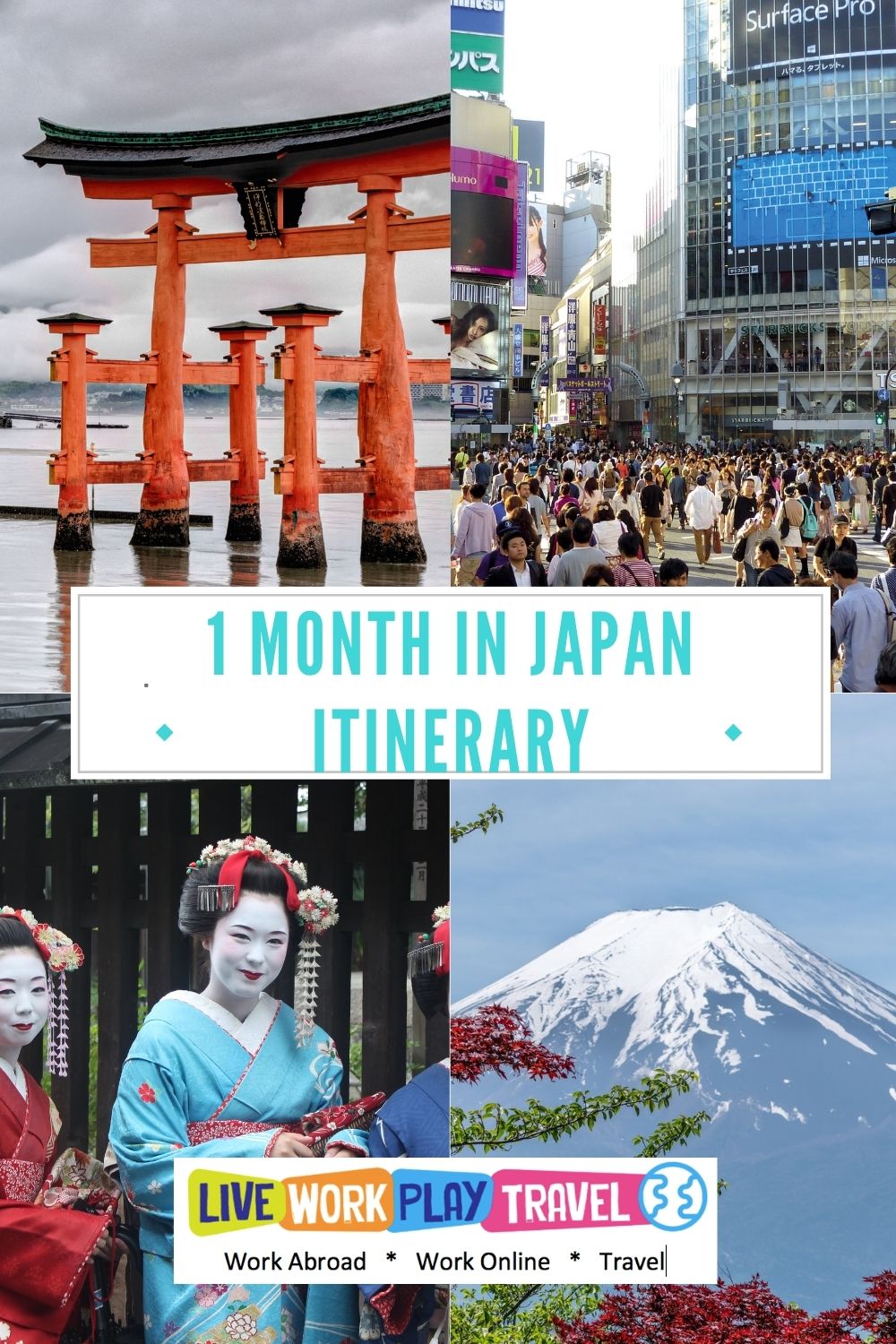
You may also like:
Thanks for sharing!
Join my Facebook Group — Ask questions, get answers!
Expat Travel Nest – Living and Working Abroad
Just so you know: some of the links in this post might be affiliate links, which earn me a small commission at no extra cost to you. No pressure to use my links, but I REALLY appreciate when you do! Also, a s an Amazon Associate I earn from qualifying purchases.
My favourite tools to Travel Live and Work Abroad
🏠 Where Will You Be Sleeping Tonight? – Get a bed in a hostel dorm through HostelWorld or for a hotel room check out Booking.com . Get free accommodation house and pet sitting through Trusted Housesitters – this has saved me thousands on accommodation, no joke!
✈️ Need a cheap and flexible airfare – head to Skyscanner .
🚙 Car Rental – search and compare vehicles at DiscoverCars .
🚆 Train Travel: I love riding the rails. For a rail pass in Europe head to Raileurope . And Japan has a great one too – JapanRail Pass .
🚌 Travelling by bus is often the cheapest way to travel. Compare and get a ticket or a pass at Busbud .
🏃🏻♀️ Jump-the-queue entrance tickets and day tours: I book these through GetYourGuide .
🌏 How to pick a country to live and work abroad in? Check out my Working Holiday Visa Country Guides and Digital Nomad Visa Country Guides to see where you can live work play travel abroad.
🚑 Should you buy travel insurance? Absolutely Yes! SafetyWing is great digital nomads and long-term travellers and World Normads has policies for general and adventure travel.
Buy the Guide to Get Ready to Live Abroad, Work Abroad and Travel Full Time Like a Pro
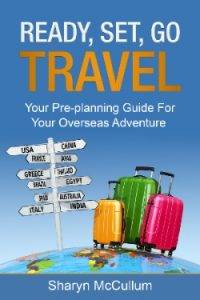
Join Me and Subscribe
Claim your free moving abroad checklist, + receive work and travel abroad tips and news delivered to your inbox., you have successfully subscribed, follow along on facebook, meet live work play travel.
Sharyn McCullum – Travel Writer / Blogger, Remote On-line Worker, sometime Digital Nomad and Travel, Live and Work Abroad Expert. Is a chocoholic, coffee connoisseur and lover of ’80s music. Been travelling all her life thanks to her dad who worked for an airline. Lived in London 4 years on a working holiday. Has holidayed in Hawaii over 15 times and currently calls Melbourne, Australia home. Is inspiring others to live work play travel around the world with this blog. Read more about Sharyn here.
48 Comments
Wow! This is one of the most informative and helpful Japan itineraries I’ve seen. I’ve pinned for later and definitely one I’ll be referring to when we go!
Thank you. It is the itinerary I created for myself, and thought others would be interested too.
So detailed, interesting read
Thank you. Glad you found it interesting.
I’ve never been to Japan, but sure is on the travel list. Nice post, thanks for sharing!
I hope you get to Japan one day. It is a very interesting place.
Love this, very handy, Japan is on our list, so I will be saving this for reference. Thank you.
Japan is a great place to visit I hope you enjoy your visit when you finally tick it off your list.
This is a great itinerary it doesn’t seem a month is enough. You’ve thought of everything. I hear the bullet trains are really good.
This seems like the perfect first time itinerary for Japan! This is such a bucket list trip for me. I’ll definitely be saving this for when I finally visit!
This 1 month itinerary for Japan pretty much takes you to all the places you need to visit on a first visit. I hope you can tick Japan off your bucket list.
What a dream trip this would be! Great blog, so much information but easy to work through. Glad to have found you.
Thanks so much for this great guide, Japan definitely looks like such an interest in country
What a fantastic guide to visiting Japan. I would love to spend a month or more exploring the country. There are so many things to see here!
It is so beautiful! I absolutely cannot wait until I visit Japan, and am just waiting for the borders to become properly open again. My biggest dream? Japanese tea ceremony!!!
Japan is a beautiful place and the traditions are something special to experience. I hope you get to experience a Japanese tea ceremony.
Hey, this is such a great and informative post. I love it! I think this is one of the best articles about Japan I have read. Japan is one of the places I want to visit in the future for sure!
Thank you. I’m glad you enjoyed it. Japan is an incredible place to visit and I hope you can visit in the future.
Absolutely LOVE this. My Grandmother was from Japan and an extended trip over there is very high on my bucket list. Thank you so much for the information!
This is such a helpful itinerary! I have never been to Japan, but I’d love to go someday! I’ve actually transited in Tokyo several times. I need to take the time to go out and visit!
You won’t be disappointed when next time you ‘transit’ through Tokyo. I hope you can expand your transit to a few days – at least. It is such an interesting city to visit.
What an incredibly comprehensive breakdown of your month long itinerary! Such an incredible trip this must have been. Thanks for sharing.
This is a superb itinerary. I have never been to Japan, but after reading your guide, I would love to visit it one day 🙂 I am saving your itinerary for the future.
I’ve wanted to visit Japan for years now, and I can’t even imagine how phenomenal it would be to spend a whole month here! Thanks for the recommendations for when I finally get the opportunity to visit! Xx Sara
A month in Japan sounds amazing and I think this itinerary would be ideal. I’d love to see the cherry blossom in flower & the beautiful gardens in spring. I’ll save this itinerary for later! Thank you!
Oooh you were so lucky to spend a whole month in Japan for your first visit! I guess my only comment on your itinerary would be for me, I’d like a little more time in Japan’s countryside/smaller cities. I always feel most at home once I get away from the largest cities.
*You missed Nara! I hope you can go back as it’s my favourite place to visit – I could easily make a 1 month plan just for Nara. 😀
Japan is a pretty fascinating country. If I ever go, I hope I have a month to explore what it has to offer. (I also hope I have a guide!)
I have always wanted to go to Japan. Loved reading this post. Definitely took some notes because this was so informative. Thank you!
I hope you have a great time when you visit Japan on my itinerary.
One month in Japan would be a real treat. We visited in the Fall and had far less time and we know we want to go back and see more. We always thought Spring would be a great time for a second visit. And we definitely don’t want to miss Hokkaido.
I love Japan!! I visited for 2 weeks on a work trip so there wasn’t much time to sightsee, but I plan on going back with my fiance! Thanks for all the great tips and suggestions.
A Very useful guide!
I wouldn’t know where to begin when planning a trip to Japan. Luckily, I found your post. This is a very useful guide.
Thank you. I’ve tried to include all the best bits of Japan to see and do. You could easily go for longer to see more and spend more time in each city. I’m glad you found my guide useful.
Love this epic guide to spending one month in Japan. So many incredible experiences – something for everyone! And especially appreciate the cultural tips to help manage expectations.
I was so excited to read this post and see your suggestions when I saw the title! I love that you included a variety of suggestions. I’d really love to go to Hokkaido on my next visit! (Plus to visit Mt Fuji would be amazing!!)
Such a lovely route to discover Japan! I only had 16 full days to explore and I am so jealous you had a whole month to adventure in Japan!
I can’t wait to be back in Japan this week! Definitely saving this itinerary for then and see what we can fit in.
That is pleasing to hear. I hope you get back to Japan soon – it is such a wonderful and interesting place! I hope to move abroad and live there for 6-12 months soon.
Good to hear! I am looking to move abroad and live in Japan for 6-12 months. Can’t wait.
Thanks for the itinerary. I spent 3 weeks in Tokyo and Kyoto solo traveling and now here in Japan for 6 weeks with my teenage son. This itinerary helps greatly. 🙂
Thanks. I did my best to create an action packed itinerary to see as much as possible.
It’s been 20 years since I was in Japan. I’d love to go back and visit Hokkaido. We did not see that on our trip before. Great post.
Japan holds a prominent place on my bucket list, and I sincerely hope to check it off soon.
Great itinerary but I am sad to see Fukuoka is the only Kyushu place on the itinerary…so a month is probably not enough to see everything. Saying that, my first ever trip was like 6 days, Tokyo and Kyoto only and I loved it immensely and saw a lot of both cities including most of Kyoto’s famous temples
This one month itinerary for Japan is perfect! I’ve never been and it includes all the top places in Japan that I’d love to visit.
Visiting Japan will be a dream come true for me. I hope that I can save up to visit in 2025. I’d love to spend a month but it is hard to leave my pets for so long. I want to do forest bathing in an ancient woods.
Submit a Comment Cancel reply
Your email address will not be published. Required fields are marked *
Submit Comment
Privacy Overview
You have successfully subscribed..
I will not send you spam, just my newsletter. Unsubscribe at any time.
Nomadic Matt's Travel Site
Travel Better, Cheaper, Longer
Japan Travel Guide
Last Updated: February 18, 2024
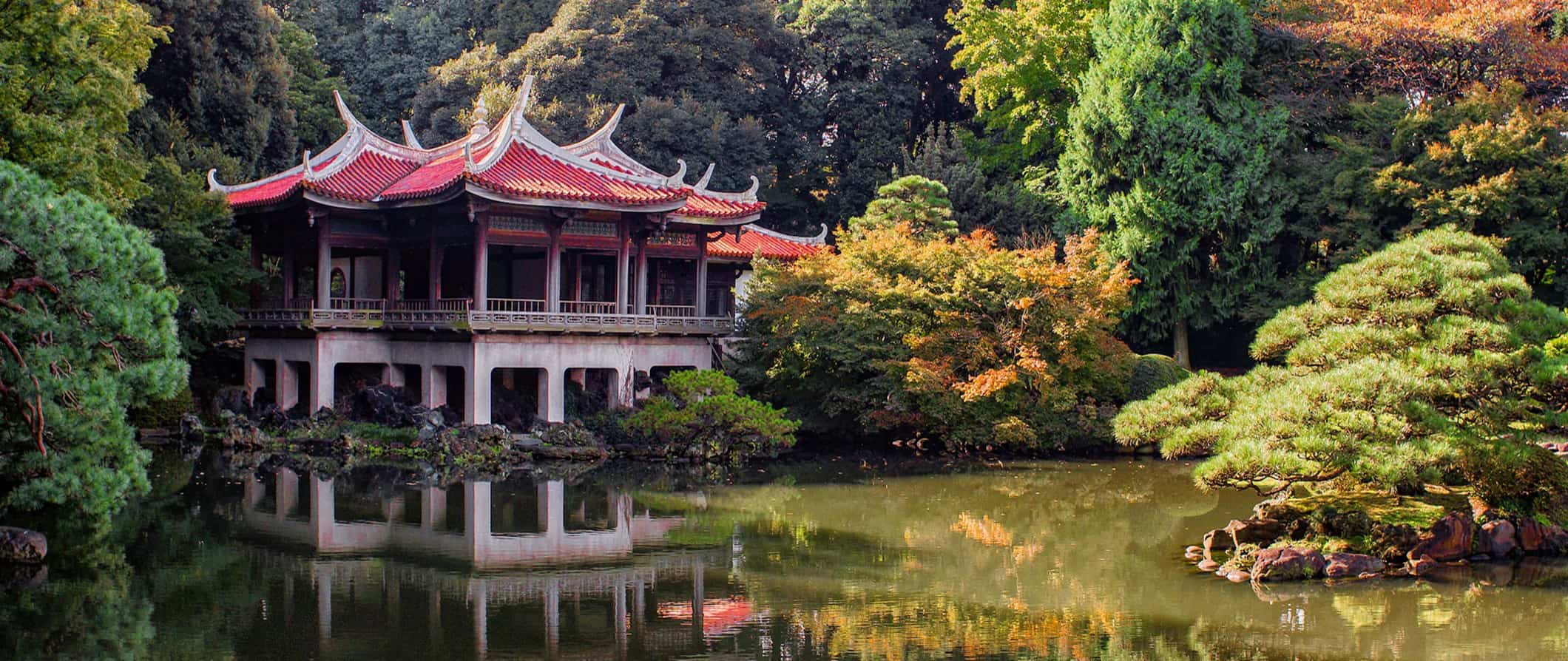
It was a lifelong dream to visit and, when I finally did, it lived up to all my expectations. Since that first visit, I’ve been there over five times. Japan is a country that blows everyone away. From the food to the people to the architecture and everything in between, I’ve never met someone who didn’t go to Japan and fall in love with it.
A lot of people delay visiting Japan because they think it’s super expensive. And, while some aspects of traveling there are expensive, there are plenty of ways to make it affordable. I was actually shocked how easy it was to see Japan on a budget .
This Japan travel guide can help you plan an affordable trip so you can see more, eat more, and spend less.
Table of Contents
- Things to See and Do
- Typical Costs
- Suggested Budgets
- Money-Saving Tips
- Where to Stay
- How to Get Around
- How to Stay Safe
- Best Places to Book Your Trip
- Related Blogs on Japan
Click here for City Guides
Top 5 things to see and do in japan.
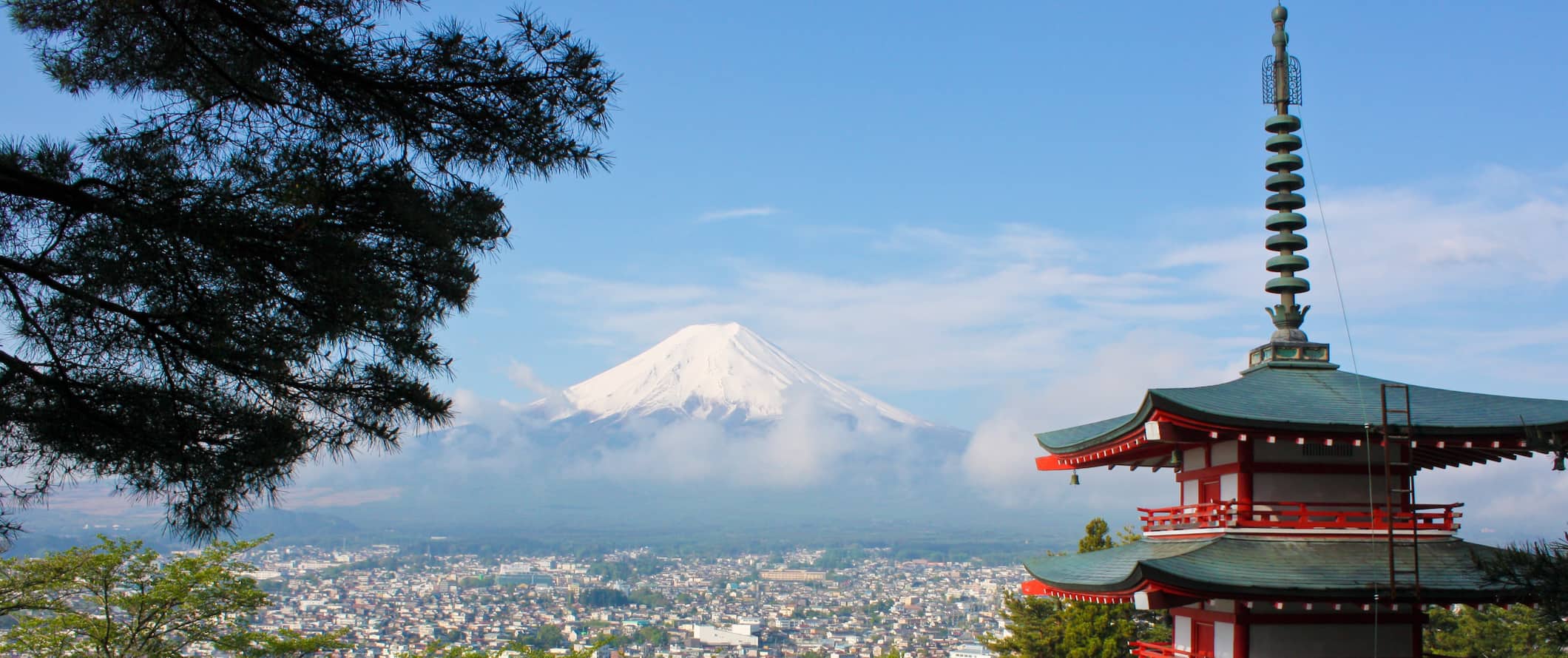
1. Explore Tokyo
Tokyo is one of the best cities in the world. Here you will find shrines, palaces, temples, hip clubs, fancy cocktail bars, weird fashion, and, of course, incredible people. Tokyo is a fast-paced, futuristic city. Be sure to also hit some of the quirky-themed cafés, wander the Harajuku district, walk across the iconic Shibuya crossing, and admire the Imperial Palace. Visit my detailed guide for more information .
2. Wander Kyoto
Boasting beautiful temples and Japanese gardens, Kyoto is one of the most popular destinations in Japan. This place definitely lives up to the hype because it retains much of the traditional lifestyle and is a good juxtaposition to fast-paced and high-tech Tokyo. See as many temples as possible , wander the enchanting bamboo forest of Arashiyama, (just get there early to beat the crowds), and do some hiking here. It’s a city not to be missed.
3. See Hiroshima
In 1945, the first atomic bomb to be used in combat was detonated in Hiroshima . Around 80,000 people were killed instantly and tens of thousands more died afterward due to radiation exposure. Visit the Hiroshima Peace Memorial (Genbaku Dome), which was the only building left standing after the bomb was dropped on August 6, and learn about one of the most controversial events in human history. I found the museum’s photos and artifacts sobering and eye-opening, and yet a must-see if you want to understand modern Japan. You can also take a cycling tour around the city to learn more about the bombing and its aftermath.
4. Climb Mount Fuji
This 3,776-meter (12,389-foot) mountain is located near Tokyo. As Japan’s tallest mountain, it is often covered by fog and clouds during the day, so ascents tend to happen early in the morning or overnight. In fact, some 400,000 people take part during the short climbing season that is only from early July to mid-September. If you’re visiting outside of the climbing season or just don’t want to hike the mountain, there are many tour providers that offer day trips from Tokyo from around 12,000 JPY.
5. Visit Sapporo
The gateway to Japan’s northern island of Hokkaido, this city is famous for its surrounding mountains, thermal baths, ski resorts, and lengthy beer brewing history. Hosting the 1972 Olympic Winter Games put the city on the international map, and it remains hugely popular for its cold-weather sports. It’s also home to the hugely popular Sapporo Snow Festival, where you can see world-class ice and snow sculptures each February (over two million people attend!). Although Sapporo is very much a ski haven, I also loved going in Spring because of the lush greenery and in particular, the thousands of Japanese cherry blossoms in Moerenuma Park. Don’t miss the Beer Museum and be sure to take the train to the coastal town of Otaru for uni (which is harvested there).
Other Things to See and Do in Japan
1. visit the tsukiji and toyosu fish markets.
Tokyo’s fish markets start bright and early at 4am. Here you can see the frenzied buying and selling of the world’s largest tuna market. Tsukiji was the original market but, as of 2018, the inner fish market moved to Toyosu and is now known as the Toyosu Fish Market. However, the outer market (where you can find food and shops) is still at Tsukiji. You can take a guided tour to learn about its history, how it works, and even learn how to roll sushi in a workshop at the end. Shops start opening around 6am so it’s a perfect place to go when you have jetlag.
2. Spend a day in Kyoto’s Gion District
Otherwise known as the Geisha District, this neighborhood is filled with fascinating historic architecture and is a good area for window shopping. Geishas (traditional professional entertainers) have worked here for centuries, and if you’re lucky, you may be able to spot one going to or from a social engagement at one of the establishments. (Just note that photographs are forbidden on the narrow alleys to prevent harassment of the geishas.) You can also take a nighttime walking tour .
3. Explore Nara
Located just one hour from Kyoto , Nara is famous for its 1,300 “wild” deer that freely roam Nara Park. The Japanese consider deer to be messengers of the gods, so they are free to roam the city (their horns are cut short, so they can’t hurt people). There are vendors selling crackers all around the park, so you can feed them by hand. While here, be sure to take in the world’s largest wooden building, Todai-ji, which dates to the eighth century and was reconstructed in the 1700s. Most travelers visit Nara as a day trip from Kyoto, but I suggest staying at least a night to really see everything.
4. See Osaka
Osaka is the third-largest city in Japan and its financial heart. It’s also a big foodie hub. Mouthwatering sushi and sashimi, Kobe beef, Japanese barbecue, and flavorful ramen can all be found here in abundance. There are also popular specialties like okonomiyaki (a savory pancake with egg and vegetables) and kushikatsu (skewered kebabs). You can take a food tour for around 12,000 JPY or just wander and eat.
Beyond the food, don’t miss Osaka Castle. While it’s not the original (this version dates to 1931), it’s nevertheless an impressive sight. It’s home to a small but insightful museum and an observation deck that offers some picturesque city views.
5. Relax in Ueno Park
Established in 1873, Tokyo’s Ueno Park is a great place to spend the day. It’s the perfect spot to see the cherry blossom trees (April is the best time of year if you hope to catch them in full bloom). Year round, you will find events on the weekend, people hanging out here on a beautiful day, and plenty of museums to visit. The park is home to the Tokyo National Museum, a couple art museums, and a zoo. You can also take a three-hour architecture tour around the park .
6. Admire the Imperial Palace
The Imperial Palace is home to the emperor of Japan (whose lineage stretches back over a thousand years). It was built on the site of the former Edo Castle, which was originally constructed in the 15th century. Though you can’t go inside the palace itself, the surrounding grounds and park are beautiful, and you can watch the changing of the guard. You can visit select parts of the grounds on a 75-minute guided tour at 10am and 1:30pm Tuesday-Saturday. The Imperial East Gardens are free and open daily except Mondays, Fridays, and holidays. There’s also a lot of free walking tours that take you around and give you a history of the palace.
7. Visit Miyajima Island
Miyajima is a UNESCO World Heritage Site located about an hour outside of Hiroshima, known as “Shrine Island” because of its temple and iconic floating torii gate. Itsukushima Shrine, the main one here, dates back to the 12th century. There’s also a five-story pagoda that dates back to the 15th century, and the tranquil Momijidani Park, one of the most beautiful maple valleys in the country. And, like Nara, there are plenty of deer here too. A trip to the island can easily be made into a full day if you hit the walking trails nearby. And be sure to hike up Mount Misen — it’s a great workout, and the views are stunning! There is also a cable car to the peak you can take for 2,000 JPY round-trip.
8. Tour Bitchu Matsuyama Castle
At 430 meters (14,100 feet), not only is this Japan’s highest castle but it’s also its only remaining original one (most were destroyed in fires or during World War II). The castle was originally built on a nearby mountain in 1240 by Akiba Shigenobu. In 1929, restoration work began, and it is now a popular tourist site. Admission is 500 JPY for just the castle or 1,000 JPY for the castle, temple, and nearby samurai houses. If you’d like to patronize the Takahashi Folk Museum and Yamada Hokoku Museum, the entire combined ticket costs 1,500 JPY.
9. Go on the temple pilgrimage
The 88 Temple Pilgrimage (also known as “Shikoku Henro”) is an ancient route that circles the island of Shikoku, one of Japan’s four main islands. Under consideration for UNESCO status, the route stretches 1,200 kilometers (745 miles) and can take between 30 and 60 days. Pilgrims typically wear special white robes and carry a walking stick so they stand out (locals take pride in helping and welcoming pilgrims so standing out is a good thing). It’s one of the only circular pilgrimages in the world, with roots dating back over a thousand years. Between 150,000 and 200,000 people do the hike each year. In addition to the 88 official temples, there are also 20 additional sites you can visit as well. Most pilgrims hike between March-May or October-November since the summer is too warm. If mobility is an issue, you can also explore the route via car or bus, which takes around 10 days.
10. Explore Nikko
Located two hours north of Tokyo in the mountains, Nikko has welcomed worshippers of both Buddhist and Shinto traditions for centuries, so there are many temples and shrines in the woods to visit. Nikko is also the home of the imperial summer palace (the only imperial residence opened as a museum) and the resting spot of Tokugawa Ieyasu, the first shogun of Tokugawa Shogunate (1603–1868). You’ll also find lots of waterfalls in the area and a beautiful lake to go boating on. The trails at nearby Nikko National Park offer excellent hiking. Don’t miss Nikko Toshogu, Kegon Falls, Ryuzu Falls, Shinkyo Bridge, Lake Ch?zenji, Kanmangafuchi Abyss, and the Imperial Palace! Only a few hours from Tokyo, Nikko is a really nice destination for two or three nights.
11. Stay in a ryokan
A ryokan is a traditional Japanese bed-and-breakfast, usually found in the more scenic regions. They date back over 1,200 years and are known for their traditional tatami floors, communal baths, sliding doors, and cozy interiors. Ryokan s make for an intimate and unique Japanese experience, featuring included meals and traditional Japanese robes (called yukata ). Beds are traditional futons, and there is usually a common area where you can make tea and chat with the owner.
12. Soak in an onsen
Natural hot springs are widespread throughout the country, and can be found both indoors and outdoors. They are a great way to “soak in” some traditional Japanese culture. Each has a different mineral composition. Expect to pay around 1,000 JPY for a budget bathhouse. (Just note that many do not allow people with tattoos or require tattoos to be covered. They are also separated by gender.) Hakone is the most popular onsen destination as it’s just 90 minutes away from Tokyo and is nestled into the mountains. Other popular choices include Beppu, Yufuincho, Noboribetsu, and Ibusuki.
13. Explore Daisetsuzan National Park
If you make it all the way up to Hokkaido (the northern prefecture of Japan and second-largest island), be sure to spend some time exploring Daisetsuzan (“Great Snowy Mountains”) National Park. Located around two hours from Sapporo, the park offers numerous trails, and some of the most rugged and beautiful landscapes in the country. It’s also one of the last remaining places in Japan to see brown bears. The most popular hike here is Mount Asahidake, a challenging volcano that takes 3-4 hours. The park is a far cry from the tourist trail and usually just sees Japanese visitors, so you’ll get to enjoy a spot locals favor.
14. Relax in Okinawa
If you need a break from the fast pace of Japan, hop on down to Okinawa Prefecture, considered “the Hawaii of Japan.” Life proceeds at a much slower pace here, and the climate is subtropical. Even Naha, the biggest city in the region, is laid-back. Okinawa is famous for its diving opportunities as well as World War II sites and memorials. From Okinawa Honto (the main island), you can hop to other smaller islands by ferry, including some that are very remote and rarely see visitors (such as Iriomote or Kume). Camping, whale watching, and hitting the beach are some of the most popular activities here.
15. Admire Kanazawa
Located on the west coast, Kanazawa is known for its incredibly well-preserved Edo-era (1603–1868) districts (the final period of traditional Japan). Home to under 500,000 people, the city is called “Little Kyoto” — but without the oppressive crowds. I think this is a really nice, off-the-beaten-path destination. Make sure to see Tsuzumi-mon Gate, admire Kanazawa Castle, and explore the geisha districts and samurai district (Nagamachi), where numerous preserved houses remain. Head to the Omicho Fish Market for fresh fish and seafood (there are dozens and dozens of stalls here). And if you want to learn more about Buddhism, visit the DT Suzuki Museum (Suzuki was a Zen Buddhist academic and philosopher who helped introduce Zen Buddhism to the West).
16. Hike in the national parks
Japan may be a small country but it’s preserved a lot of its natural landscapes. There are 34 national parks, each offering respite from the hectic and dense cities that Japan is known for. Nikko (mentioned above) is best for seeing fall colors; Daisetsuzan (also mentioned above) has lots of remote onsen and challenging trails; Keramashoto, located in Okinawa, has some of the best islands and beaches, as well as over 250 types of coral; and Yoshino-Kumano is famous for its cherry blossoms. There are a lot of parks to choose from! Try to see at least one!
17. Visit Takashima
Home to just 50,000 people, Takashima is just a short drive from Kyoto on the coast of Lake Biwa (the largest freshwater lake in Japan). The city boasts castle ruins, plenty of old shrines and Buddha statues, and a picturesque floating torii gate (similar to the one in Miyajima) at the Shirahige Shrine. There’s also a four-kilometer (2.5-mile) walking route lined with cherry trees. Moreover, this town is famous for its Hida beef, which I think is the best beef in all of Japan. For a fun day trip, head to Chikubushima, a small island on Lake Biwa where you can visit centuries-old temples as you hike around the island.
For information on specific cities in Japan, check out these city guides:
- Hiroshima Travel Guide
- Kyoto Travel Guide
- Tokyo Travel Guide
Japan Travel Costs
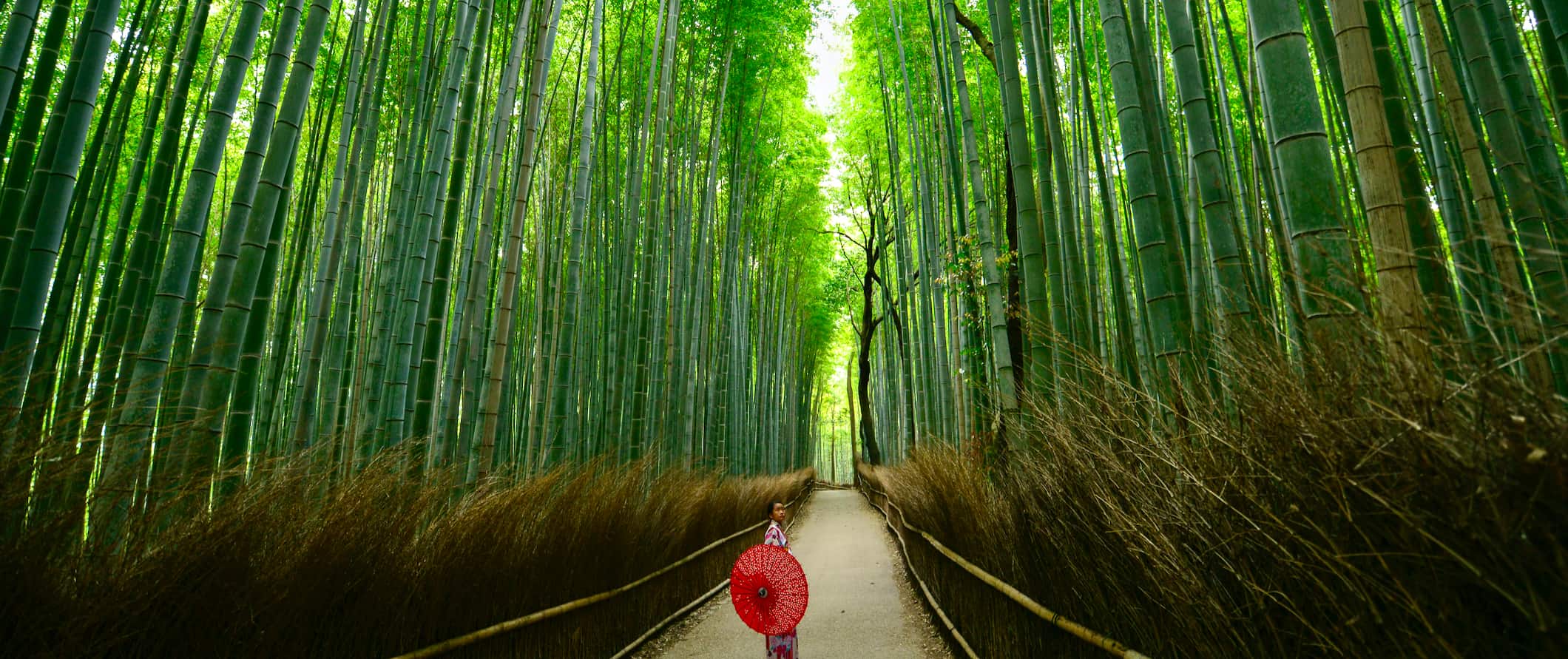
Accommodation – Expect to spend 2,500-4,500 JPY per night for a dorm room in a hostel (prices are on the higher end in larger cities like Tokyo or popular tourist destinations like Kyoto). Free Wi-Fi, private lockers, and self-catering facilities are standard in most hostels. But it’s uncommon for them to provide breakfast here. For a private room with a twin or double bed, expect to pay 6,500-15,000 JPY per night. Prices are generally the same year-round.
Capsule hotels cost 3,000-5,500 JPY for a tiny coffin-like pod that’s essentially just a bed, often with a small TV, light, and outlet to charge your devices. There are shared bathrooms and sometimes a small common room as well. It’s not fancy, but it’s a unique (and very Japanese) experience.
For (non-capsule) budget hotels, expect to spend 6,000-10,000 JPY per night for a double room. For Western hotel chains, expect to spend around 20,000 JPY or more per night. Note: For accommodation in Tokyo, add 50% to all these prices.
Airbnb is heavily regulated in Japan and, as such, there aren’t too many options. What rooms are listed are mostly hotels and guesthouses. Private homes/apartments usually start around 15,000-20,000 JPY per night, while private rooms (i.e., hotel rooms) run 8,000-10,000 JPY per night and up.
If you are looking for a more unique experience, consider staying at a ryokan , a traditional Japanese bed-and-breakfast. While they are more expensive than a standard hotel, it’s a unique and memorable experience, as you’ll get to sleep on traditional futons and tatami mats.
Food – Japanese cuisine is world-renowned and has even earned a spot on UNESCO’s Intangible Heritage List. While each region has its own specialties, rice, noodles, seafood, and seasonal produce all feature heavily no matter where you are. Plus, there’s izakaya (small plates), yakitori (grilled food), curry bowls, BBQ, and so much more. One of the best things about visiting Japan is the food.
Food in Japan is relatively inexpensive so long as it’s not imported (fresh fruit will blow your budget!). The most common cheap eats are using curry, donburi (bowls of meat and rice), or ramen. Curry and donburi bowls cost 500-700 JPY while ramen or soba noodles are usually around 1,200 JPY. Okonomiyaki (a Japanese pancake with noodles or rice) is between 1,000 and 1,300 Yen.
Fast food (think McDonald’s) is around 800 JPY for a set menu. You can also find plenty of cheap meals and prepackaged items at 7-Eleven (locals actually get a ton of food here as it’s delicious and quick). Noodles, rice balls, tofu, and prepackaged sushi are all available for only 250-500 JPY per item. (Trust me, it’s good!)
Most sit-down restaurant meals are going to cost you 2,000-3,000 JPY. Sushi conveyor belt restaurants (which are super fun) will run you 125-600 JPY per piece. Quicker lunch spots are going to be around 1,500 Yen.
Fine dining is a tradition rooted in Japanese culture, and kaiseki ryori is a style of high-end, multi-course Japanese dining that originated in Kyoto. It costs about 8,000-10,000 JPY for a set menu of seven courses, covering everything from chicken to Wagyu steak to sushi.
High-end omakase sushi restaurants (where dishes are selected by the chef) will set you back at least 10,000 JPY, though more likely closer to 20,000 JPY. (In Tokyo, the best ones are 30,000 JPY.)
Domestic beer is around 450-550 JPY, and sake is about 800-900 JPY per glass. A cocktail will set you back about 1,200 JPY, though at the famous cocktail bars in Tokyo, expect to pay closer to 1,600 Yen per drink. A latte or cappuccino is 500-600 JPY, and a bottle of water is 100-130 JPY. Soda is around 200 Yen.
Expect prices to be higher in the bigger cities and cheaper in the countryside.
Buying groceries costs around 5,000-6,000 JPY per week for basic staples like rice, vegetables, and fish. However, given the availability of such cheap food, it’s doubtful you’ll go grocery shopping to prepare your own meals.
Backpacking Japan Suggested Budgets
If you’re backpacking Japan, plan to budget 7,000 JPY per day. This assumes you’re staying in a hostel dorm, cooking some of your meals, eating at the cheap restaurants and takeaways, visiting free museums and temples, and using public transportation to get around.
On a more midrange budget of 16,000 JPY per day, you can stay in nicer accommodations, eat out more liberally, indulge in more drinks, visit more attractions, and, overall, just have some more breathing room in your travels! On this budget, you’ll be able to do most things.
On an upscale budget of 28,000 JPY per day or more, you can stay in traditional Japanese accommodations or two-star hotels, eat at nicer restaurants each day, splurge on some meals, enjoy drinks as often as you want, take tours, and, overall, just afford whatever you want!
You can use the chart below to get some idea of how much you need to budget daily, depending on your travel style. Keep in mind that these are daily averages — some days you’ll spend more, some days you’ll spend less (you might spend less every day). I just want to give you a general idea of how to make your budget. Prices are in JPY.

Japan Travel Guide: Money-Saving Tips
I think Japan’s reputation as an expensive country is overstated. Outside of accommodation and transportation, it’s actually really affordable. Is it super cheap? No. Is it super expensive? Not at all. There are plenty of ways to lower your costs and all non-imported food is really inexpensive. Here are some ways to save money when you visit:
- Visit the free attractions – With its countless museums, galleries, shrines, temples, historic neighborhoods, and parks, Japan is filled with opportunities to immerse yourself in its culture without spending a Yen. Moreover, many of the nation’s parks and gardens are also free. Start with them and you’ll fill your days on the cheap!
- Get a JR Pass – The bullet trains in Japan are ridiculously expensive, with one-way fares costing hundreds of dollars. If you plan to do a lot of traveling around the country, get the JR Pass , which allows you unlimited train travel and can save you a ton of money. It comes in 7-, 14-, and 21-day options. (Keep it mind it can only be purchased outside of Japan, so be sure to plan ahead.)
- Take the bus – Buses are a far more economical option than the trains. They cost a fraction of the price. For example, the unlimited Japan Rail Pass costs 29,650 JPY for seven consecutive days of travel, but this is far more expensive than using the bus. But buses take a lot longer. For example, the two-hour bullet train ride from Tokyo to Osaka becomes a 10-hour bus ride. Bottom line: if you have the time, take the bus.
- Shop at the 100-yen stores – There are many 100-yen shops around the country. They all sell meal sets, groceries, water bottles, toiletries, and household items. Store names vary by region, so ask your hotel or hostel reception where the nearest “Hyaku En” store is located.
- Eat at 7-Eleven – 7-Eleven, Family Mart, and other convenience stores have a lot of pre-made meals that make for a cheap lunch or snack. The food is actually really good and you’ll always see locals dipping in and getting a quick lunch or snack here. Don’t be afraid to at them.
- Cook your own food – Many hostels have kitchens where you can cook your own meals. Combining this with shopping at the 100-yen stores will drastically cut your food costs.
- Eat curry, ramen, and donburi – These dishes are the best option for eating cheap, filling meals. These cost from 400 – 1200 Yen (ramen is 1200). Shops specializing in these dishes are all over the country so you can easily find them. They are on every corner and the cheapest way to eat on a budget.
- Stay with a local – Using hospitality sites like Couchsurfing allows you to stay with residents, so you not only get a free place to stay but you get to interact with someone who can share their insider tips.
- Buy food before grocery stores close – After 8pm, many supermarkets discount their fresh food, as they have to get rid of it by law. You can save up to 50% on almost all ready-made meals. It’s a great cheap dinner.
- Hitchhike – Japan is one of the world’s safest countries, and many locals are curious enough to pick up foreign visitors. Hitchhiking isn’t really practiced by Japanese, so you will stand out as a tourist, which will increase your chances of finding a ride.
Where to Stay in Japan
There’s a lot of affordable accommodation in Japan, especially if you avoid Western style hotels and chains. To help you save money on accommodation, here’s my list of the best hostels and budget hotels in Japan:
- Hostel Chapter Two Tokyo (Tokyo)
- Hotel Century Southern Tower (Tokyo)
- Backpacker Hostel K’s House Kyoto (Kyoto)
- Gojo Guest House (Kyoto)
- The Pax Hostel Records (Osaka)
- Roku Hostel Hiroshima (Hiroshima)
- Guesthouse Akicafe Inn (Hiroshima)
- WeBase HAKATA Hostel (Fukuoka)
How to Get Around Japan
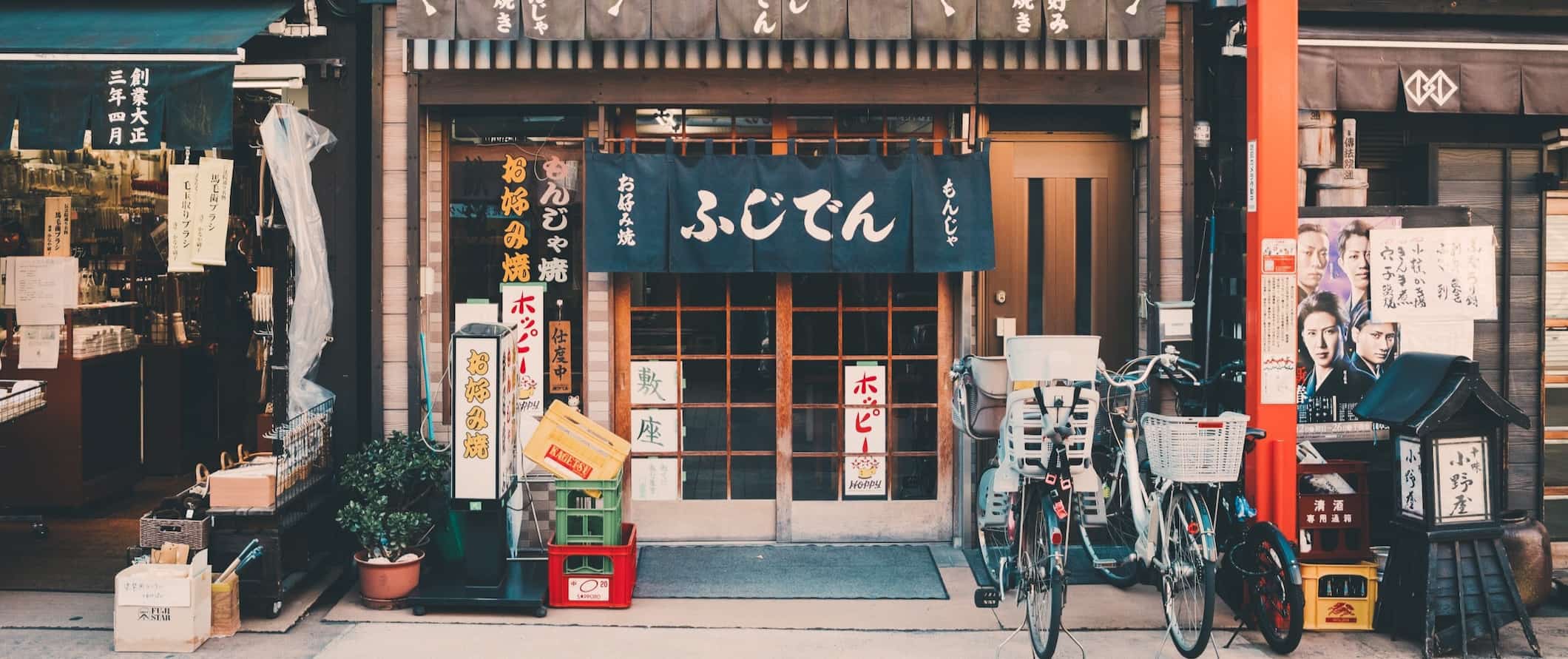
Public transportation – Metro or bus tickets cost 150–300 JPY for a single journey. (The price varies by distance and may often be higher.) Fares are usually around 220 JPY to travel across Tokyo but less for shorter distances. In most major cities, you can buy a day pass, which gives you unlimited travel for 24 hours for around 800-1,100 JPY.
Train – Train travel is the quickest way to get around Japan. The bullet train is awesome, comfortable, and super-fast — but it’s not cheap. Individual tickets can cost hundreds of dollars. In order to reduce your train costs, get a Japan Rail Pass , which is indispensable for travel here.
Even if you just get the seven-day pass, it’s the same price as a round-trip train ticket from Osaka to Tokyo. Moreover, the JR trains also serve urban areas and so can be used within cities. I used my pass to get around Kyoto and Tokyo instead of buying metro tickets.
So, even if you aren’t going to do much traveling around Japan, buying a pass is better than buying individual tickets. While the high price of the pass can cause sticker shock, the alternative is worse.
Additionally, be sure to download the Navitime app . It has offline maps, train and public transit routes, and info on train stations. It’s a lifesaver when trying to figure out how to get around the country.
Bus – Buses are a less expensive alternative to the bullet train system in Japan, but they take more time. For example, the two-hour bullet train ride from Tokyo to Osaka becomes a ten-hour bus ride. The price for that seat is 4,500-8,000 JPY, but at some point, you need to think about how much your time is worth.
There are also bus passes that offer unlimited travel and begin at 10,200 JPY for three nonconsecutive days of travel. You can use these two websites to book your bus journeys:
- Willer Express
- Japan Bus Lines
If you have more time than money, take the bus. Otherwise, I’d say splurge and take the train, because they really are much faster and much, much more comfortable.
Flying – Generally, flight prices are on par with bullet train tickets. ANA, one of the country’s two main carriers, offers special last-minute fares via a hidden page on its website , usually for around 14,000 JPY for a seat. It’s only available to foreigners and can sometimes be cheaper than the flights you find on booking platforms, especially for longer routes around the country.
Flights from Tokyo to Okinawa are around 23,000 JPY (round-trip) while those from Tokyo to Sapporo are around 16,000 JPY (round-trip).
Car rental – With efficient public transportation and nationwide bullet trains, renting a car here really isn’t necessary. However, if you do need one, multi-day rentals start at 6,000 JPY per day. Just remember that people drive on the left here! For the best car rental prices, use Discover Cars .
When to Go to Japan
Temperature and weather vary drastically across Japan, meaning it’s always a good time to visit some part of the country. While most of Japan does have four seasons (including snowy, freezing winters in the north), Okinawa and the islands in the south are warm year-round. It gets cold in Tokyo, but it generally doesn’t snow.
Expect warm, humid weather from June through August, with temperatures hovering around 32°C (89°F). Japan also gets a lot of rain, mostly in the summer months, from mid-June to mid-July. It gets a little drier in August, before the precipitation picks up again in September. Typhoon season occurs from May to October. Japan is well-equipped to handle all types of typhoons, but be sure to purchase travel insurance in advance !
Overall, there’s no real bad time to visit. Winter is awesome for skiers or snowboarders, spring is famous for its cherry blossoms, summer is full of festivals, and fall has brilliant autumn colors and nice temperatures. I personally prefer spring and fall, as the summer heat and humidity is pretty oppressive.
How to Stay Safe in Japan
Japan is a very safe country. There’s virtually zero chance you’re going to get robbed, scammed, or hurt here. Your biggest issues will most likely come from other foreigners who get drunk and are causing trouble.
Solo female travelers should generally feel safe here, but the standard precautions apply (never leave your drink unattended at the bar, never walk home alone intoxicated, etc.). Japan does have a problem with groping, especially on packed trains. Most train companies now have “women-only” cars during rush hour (you’ll see pink signs indicating where women should board).
Scams in Japan are nonexistent. No one is going to rip you off. The listed price is the listed price and the same for everyone. There are no tourist prices here.
Your main risk here is from Mother Nature. Earthquakes and typhoons aren’t uncommon, so make note of exits when you arrive at your accommodation. Download offline maps to your phone, as well, in the event you may need to navigate the city during an emergency.
If you do experience an emergency, dial 110 or call the nonemergency Japan Helpline at 0570-000-911.
The most important piece of advice I can offer is to purchase good travel insurance. Travel insurance will protect you against illness, injury, theft, and cancelations. It’s comprehensive protection in case anything goes wrong. I never go on a trip without it, as I’ve had to use it many times in the past.
Japan Travel Guide: The Best Booking Resources
These are my favorite companies to use when I travel. They consistently have the best deals, offer world-class customer service and great value, and overall, are better than their competitors. They are the companies I use the most and are always the starting point in my search for travel deals.
- Skyscanner – Skyscanner is my favorite flight search engine. They search small websites and budget airlines that larger search sites tend to miss. They are hands down the number one place to start.
- Hostelworld – This is the best hostel accommodation site out there with the largest inventory, best search interface, and widest availability.
- Agoda – Other than Hostelworld, Agoda is the best hotel accommodation site for Asia.
- Booking.com – The best all around booking site that constantly provides the cheapest and lowest rates. They have the widest selection of budget accommodation. In all my tests, they’ve always had the cheapest rates out of all the booking websites.
- Get Your Guide – Get Your Guide is a huge online marketplace for tours and excursions. They have tons of tour options available in cities all around the world, including everything from cooking classes, walking tours, street art lessons, and more!
- SafetyWing – Safety Wing offers convenient and affordable plans tailored to digital nomads and long-term travelers. They have cheap monthly plans, great customer service, and an easy-to-use claims process that makes it perfect for those on the road.
- LifeStraw – My go-to company for reusable water bottles with built-in filters so you can ensure your drinking water is always clean and safe.
- Unbound Merino – They make lightweight, durable, easy-to-clean travel clothing.
- Japan Rail Pass – This is a flexible transportation pass used for navigating Japan. Similar to the Eurail pass in Europe, it turns expensive bullet trains into budget-friendly modes of transportation. You honestly can’t visit Japan without one.
Japan Travel Guide: Related Articles
Want more tips? Here are all the articles I’ve written on Japan travel to continue planning your visit:
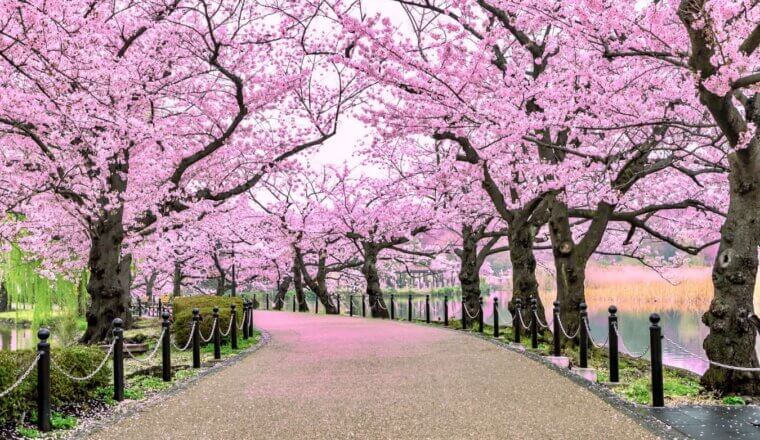
The Perfect 7-Day Japan Itinerary for First-Time Visitors
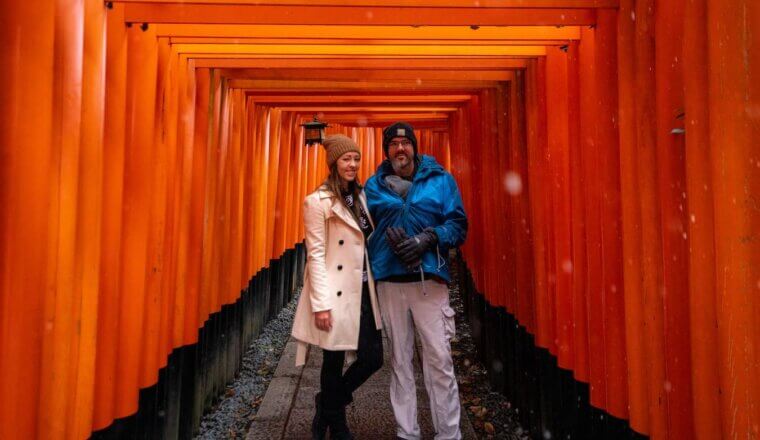
How to Travel Japan with a Baby
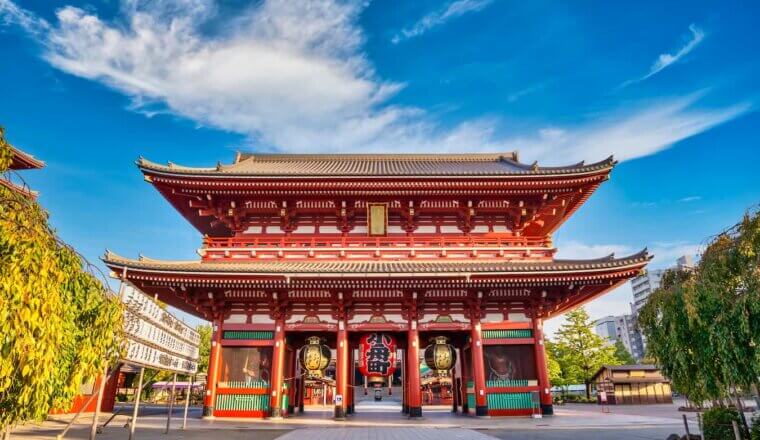
Where to Stay in Tokyo: The Best Neighborhoods for Your Visit
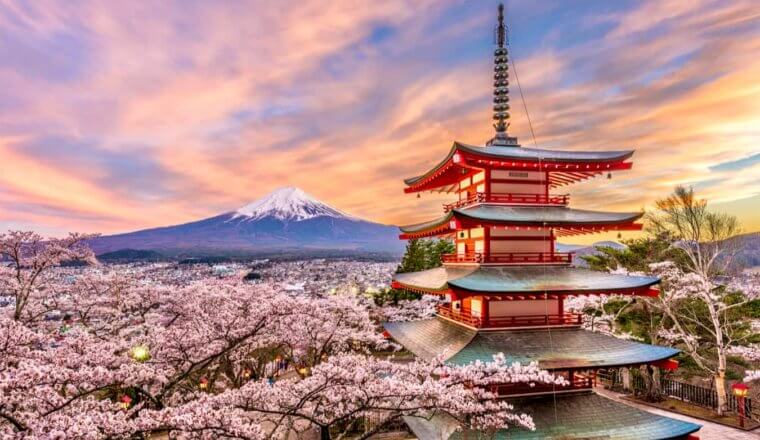
The Ultimate Japan Itinerary for First-Timers: From 1 to 3 Weeks
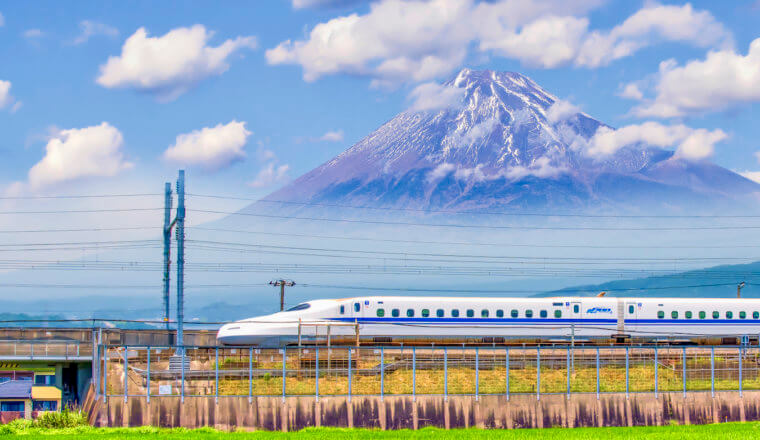
A Complete Guide to the Japan Rail Pass
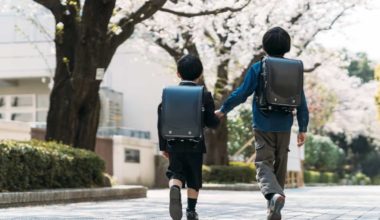
How to Teach English in Japan
Get my best stuff sent straight to you, pin it on pinterest.
- Where To Stay
- Transportation
- Booking Resources
- Related Blogs
- Media & Industry
- Meetings & Events
- Select Language 简体中文 繁體中文(香港) 繁體中文(臺灣) India (English) Bahasa Indonesia 한국어 ภาษาไทย Tiếng Việt Singapore (English) Philippines (English) Malaysia (English) Australia/New Zealand (English) Français Deutsch Italiano Español United Kingdom (English) Nordic countries(English) Canada (English) Canada (Français) United States (English) Mexico (español) Português العربية Japan(日本語) Global (English)
- India (English)
- Bahasa Indonesia
- Singapore (English)
- Philippines (English)
- Malaysia (English)
- Australia/New Zealand (English)
- United Kingdom (English)
- Nordic countries(English)
- Canada (English)
- Canada (Français)
- United States (English)
- Mexico (español)
- Global (English)
- Fujiyoshida
- Shimonoseki
- Ishigaki Island
- Miyako Island
- Kerama Island
- Tokyo Island
- Koka & Shigaraki
- Hida Takayama
- Ginza, Nihonbashi
- Beppu & Yufuin (Onsen)
- Ginzan Onsen
- Nagasaki Islands

- Kumano Kodo
- Shikoku Karst
- Amami Oshima
- Hachimantai
- Omihachiman
- Aizuwakamatsu

- Diving in Japan
- Skiing in Japan
- Seasonal Flowers in Japan
- Sustainable Outdoors
- Off the Beaten Track in Japan
- Scenic Spots
- World Heritage
- Home Stays & Farm Stays

- Japanese Gardens
- Japanese Crafts
- Temple Stays
- Heritage Stays
- Festivals and Events
- Theater in Japan
- Japanese Tea Ceremony
- Cultural Experiences in Japan
- Culture in Japan

- Local Cuisine Eastern Japan
- Local Cuisine Western Japan
- Local Street Food
- Japan's Local Ekiben
- Japanese Whisky
- Vegetarian and Vegan Guide
- Sushi in Japan Guide
- Japanese Sake Breweries

- Art Museums
- Architecture
- Performing Arts
- Art Festivals
- Japanese Anime and Comics
- Japanese Ceramics
- Local Crafts

- Scenic Night Views
- Natural Wonders
- Theme Parks
- Samurai & Ninja
- Iconic Architecture

- Wellness Travel in Japan
- Japanese Ryokan Guide
- A Guide to Stargazing in Japan
- Relaxation in Japan
- Forest Bathing (Shinrin-yoku)

Experiences in Japan
- Enjoy my Japan
- National Parks
Japan's Local Treasures
- Japan Heritage
- Snow Like No Other
- Wonder Around Japan

Visa Information
- Getting to Japan
Airport Access
- COVID-19: Practical Information for Traveling to Japan
- Anime Tourism
- Countryside Stays
- Accessible Tourism
- Hokkaido Great Outdoors
- Scenic World Heritage in Tohoku
- Shikoku’s Nature and Traditions
- Southern Kyushu by Rail

- Traveling by Rail
- How to Travel by Train and Bus
- JR Rail Passes
- Scenic Railways
- Renting a Car
- Sustainable Travel in Japan
- Travel Brochures
- Useful Apps
- Online Reservation Sites
- Eco-friendly Accommodation
- Luxury Accommodations
- Traveling With a Disability
- Hands-free Travel
- How to Book a Certified Tour Guide
- Volunteer Guides
- Tourist Information Center

- Japanese Manners
- Spring in Japan
- Summer in Japan
- Autumn in Japan
- Winter in Japan
- Cherry Blossom Forecast
- Autumn Leaves Forecast

- Japan Visitor Hotline
- Travel Insurance in Japan
- Japan Safe Travel Information
- Accessibility in Japan
- Vegetarian Guide
- Muslim Travelers
- Safety Tips

- JAPAN Monthly Web Magazine
- Arts & Cultures
- Nature & Outdoor
- Festivals & Events
- Insider Blog
- Things to do
- Local Guides
- Food & drink
- Traditional
- Hokuriku Shinetsu

My Favorites
${v.desc | trunc(25)}
Planning a Trip to Japan?
Share your travel photos with us by hashtagging your images with #visitjapanjp
Travel Japan - The Official Japan Guide
Spring in Japan: Cherry Blossom Forecast 2024
Where & when to enjoy sakura in Japan
Go Beyond Japan’s Major Cities: Hokuriku Shinkansen Extension in 2024
Sakura and Beyond: Famous Japanese Flowers to Check Out in 2024
Explore Royal Artwork at The Museum of the Imperial Collections, Sannomaru Shozokan
Guiding your trip to new adventures in Japan
WONDER AROUND JAPAN
Photo Credit : Guided Cycling Tour Biei
Live to Travel, Travel to Live
Discover how all of Japan is getting behind Expo 2025, coming to Osaka in Japan’s Kansai region
An epic eating adventure.
Memories in the Making
Welcome to the official tourism website of Japan
Unforgettable experiences and breathtaking moments, finding the hidden gems.
Stories & Guides
Explore Japan's vast cultural, eating, drinking, and shopping scenes
Things to Feel
Discover the full range of amazing things to feel across Japan
Tohoku Colors
Experience the seasonal and cultural beauty of northeastern Japan
Top recommendations.

All Eyes On
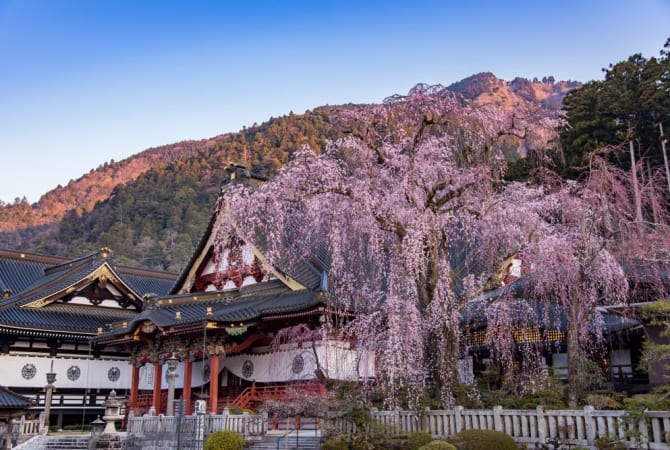
Travel Highlights
Popular places.
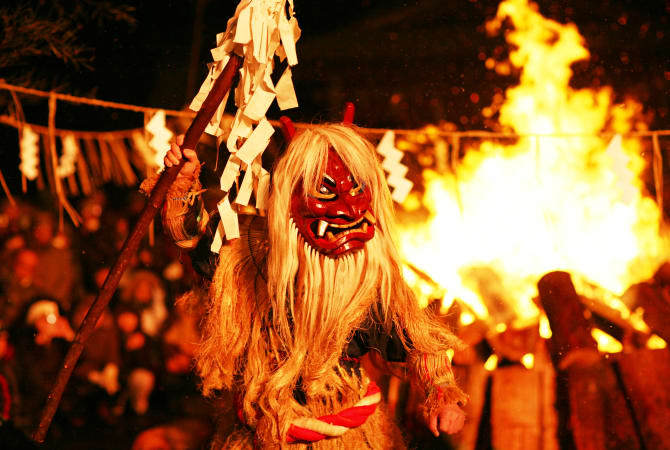
Explore by Interest
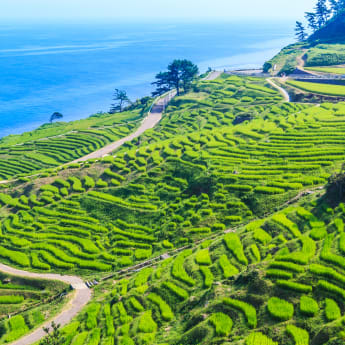
Important Notice
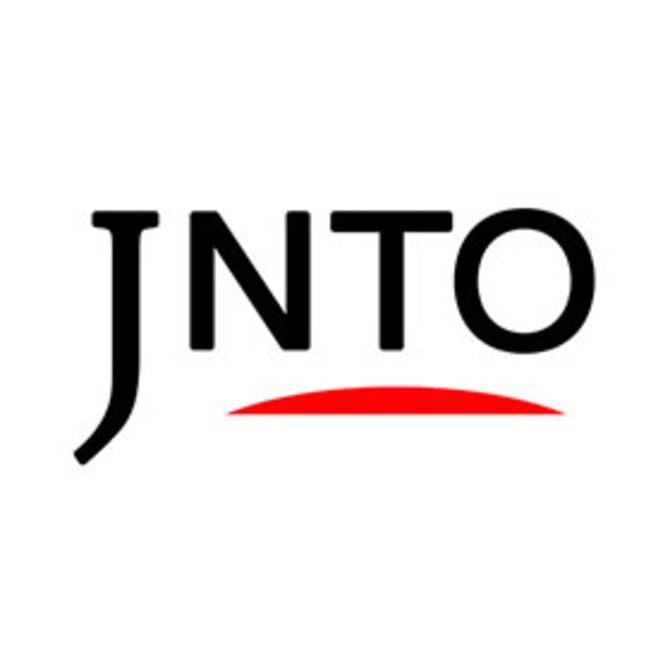
News from JNTO & Our Partners

Inspiring Articles
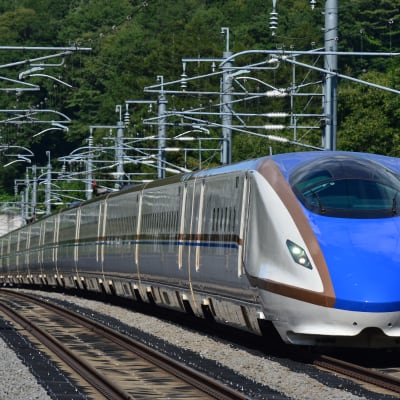
Food features
For First-Time Visitors
- Wi-Fi & Connectivity
- Weather & Geography
- IC Travel Cards
Where to Stay
- Luxury Stay
- Haneda Airport
- Narita Airport
- Osaka (KIX)
- Fukuoka Airport
Getting Around
- Shinkansen (Bullet Train)
- Luggage & Storage
Suggested Walks & Tours
- Tokyo 48 Hours
- Golden Route
- 2 Weeks in Japan
- Tour & Activities
Brochure Download
- Tours and Activities
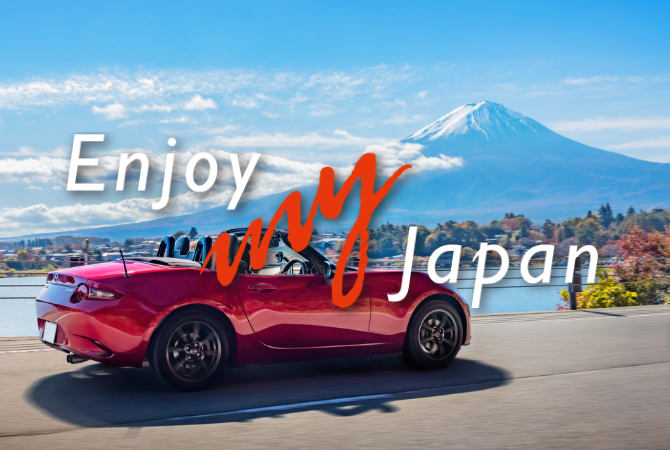
Japanese Government Information
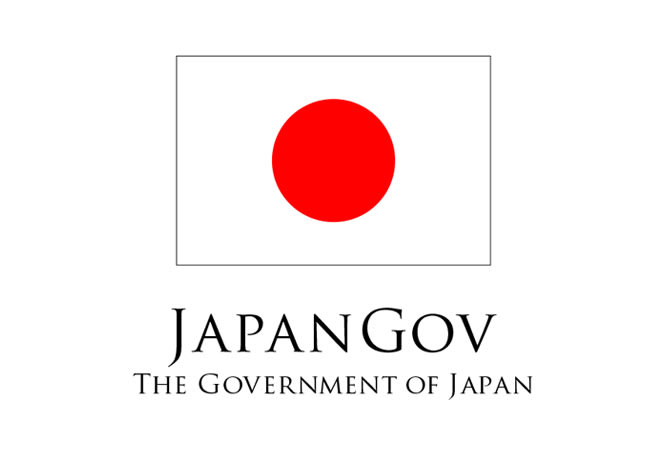
Please Choose Your Language
Browse the JNTO site in one of multiple languages

Japan 2-Week Itinerary: How To Spend 14 Days In Japan
Posted on Last updated: December 25, 2023
Want to spend two weeks in Japan, but not sure where to go? This Japan 2-week itinerary is just what you need!
Japan is an island nation located in the Pacific Ocean of Asia. It’s characterised by colourful cities, imperial palaces, ancient temples, and peaceful landscapes.
There are so many fascinating aspects of Japanese culture. For this reason, this is a country you’ll want to explore as much as possible when you visit.
Although two weeks in Japan isn’t nearly enough time to discover the whole country, it’s a great start. To help you manage your time, I’ve put together this 14-day Japan itinerary.
I included a great combination of famous Japan bucket list spots, but also some hidden gems, as well as some helpful logistics advice and travel essentials.
As someone who grew up watching Japanese cartoons and practicing Judo, one of the most popular sports in Japan, I was absolutely stoked to finally visit.
I had an incredible two weeks in Japan, and I hope you find this itinerary useful in planning your own time there! So here it is, the best way to see the glory of Japan in 2 weeks!
- 1 How to travel around Japan
- 2.1 Day 1: Arrive in Tokyo
- 2.2 Day 2: Day trip to Kamakura
- 2.3 Day 3: Exploring Tokyo
- 2.4 Day 4: Travel to Kyoto
- 2.5 Day 5: Fushimi Inari Taisha Temple in Kyoto
- 2.6 Day 6: More Kyoto temple exploring
- 2.7 Day 7: Travel to Hiroshima
- 2.8 Day 8: Ferry to Miyajima Island
- 2.9 Day 9: Travel to Osaka
- 2.10 Day 10: Day trip to Nara
- 2.11 Day 11: Explore Osaka
- 2.12 Day 12: Travel back to Tokyo
- 2.13 Day 13: Tokyo
- 2.14 Day 14: Tokyo & end of trip
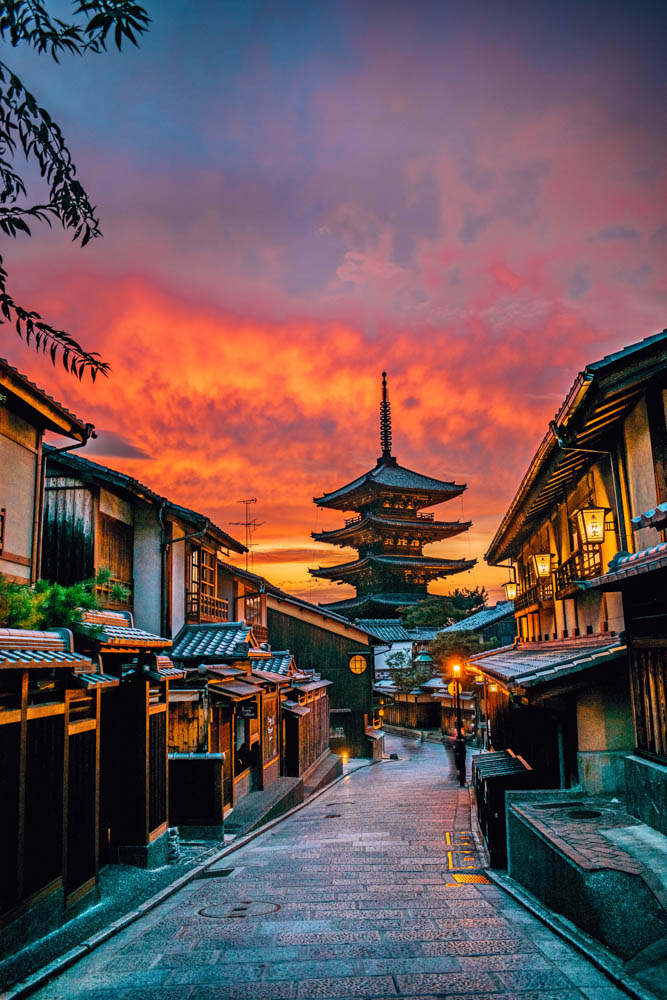
The pagoda of Hokanji temple at sunset
How to travel around Japan
The easiest way to get around Japan is by train and public transport.
Japanese trains and public transport are well known for their efficiency and punctuality, and exploring Japan with them not only will be the easiest and most cost effective way, but it will also provide you with a genuine Japanese experience.
If you’re going to travel a lot around Japan (as you will if you follow this Japan 2-week itinerary ) you’ll want to purchase a Japan Rail Pass .
This is basically the equivalent of the European Interrail Pass and allows you hop on and off as many trains as you want in Japan, within your chosen time period (7, 14 or 21 days).
With a Japan Rail Pass you don’t have to prebook trains beforehand, there are carriages for with non reserved seats.
However if you’re travelling in a group and want to be sure to sit together you should reserve seats. Reserving seats is free, and you can do it at any Japan Rail office in any train station.
Click here to purchase your Japan Rail Pass!
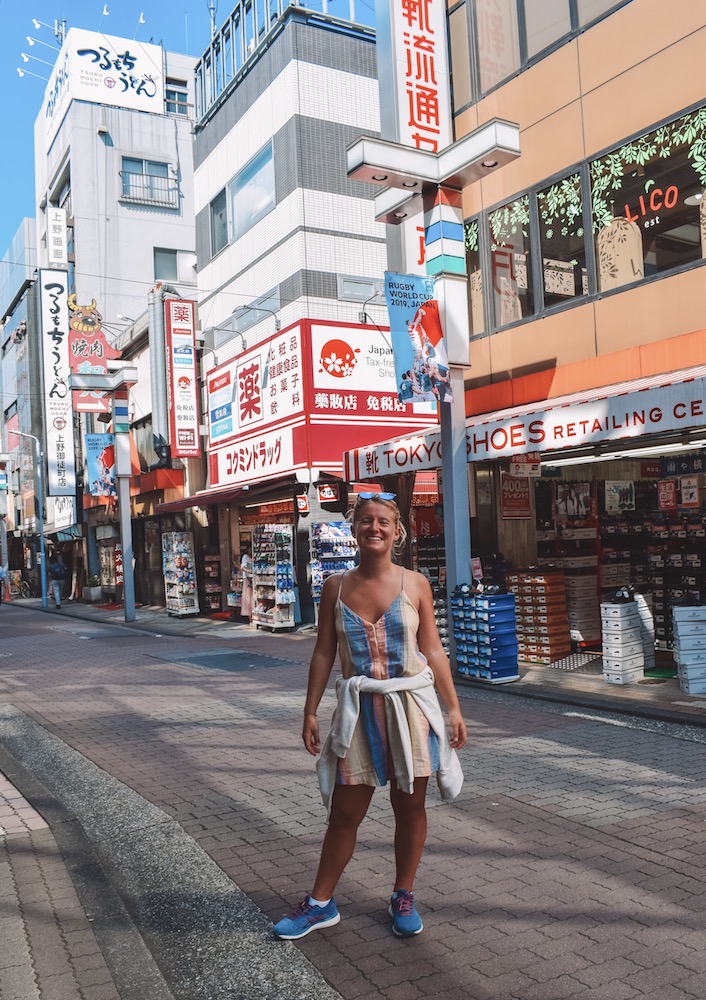
Exploring Ameyoko in Tokyo
The Japan Rail Pass will cover your long distance journeys between cities. Within cities, you will want to use public transport. Public transport is super efficient and you can easily plan your journeys with Google Maps.
Google Maps in Japan is perfectly integrated, and will display the exact train and / or bus departure times and total journey times.
I was amazed to find that it would even tell you what station entrance to go in from to be closer to your platform, the platform of your train, what carriage to choose to then be closest to your exit, and the station exit that would then be closest to your final destination.
It was a map heaven for a geographer like me! The Japan Rail Pass won’t cover public transport within cities, but you can easily either pay for the individual fares or get a daily ticket at any train station.
| READ MORE: IS THE JAPAN RAIL PASS WORTH IT? |

Reflections at Osaka Castle
How to spend 2 weeks in Japan
Day 1: arrive in tokyo.
Tokyo is the perfect place to start your two weeks in Japan. It’s the capital of the country and full of energy.
It’s full of traditional temples, shrines, renowned museums, galleries and peaceful zen gardens. It has the perfect mix of old and new.
After arriving, you’ll probably want to take it a little easy after your long flight . I checked into the Sunshine City Prince Hotel in Toshima City .
This area is a bit out of the tourist crowds, but very well connected to all the attractions. It’s a great place to really soak in authentic Japanese culture, but you won’t feel overwhelmed by the rush of the big city.
Click here to book your accommodation at the Sunshine City Prince Hotel

The view from my window at the Sunshine City Prince Hotel in Toshima City
After you’ve recharged a bit, head to Shinjuku to explore the nightlife. It’s only 15 minutes away from Toshima City, using public transportation.
Golden Gai is a pretty awesome area to check out in Shinjuku. It’s full of narrow alleys with lots of small bars. It’s a quirky and interesting place to add to your Japan itinerary.
You can also take a Shinjuku night walking tour , which will really help familiarize you with the area.
Click here to go on a Shinjuku night walking tour in Japan
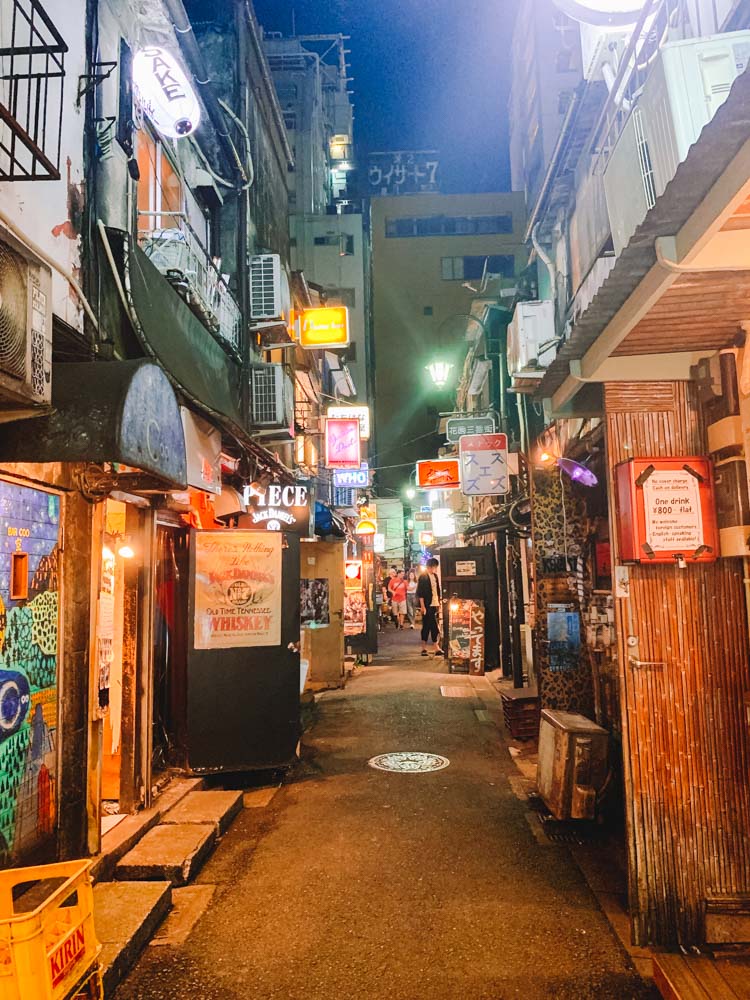
The streets and bars of Golden Gai in Shinjuku at night
Day 2: Day trip to Kamakura
On the second day of your Japan travel itinerary, take a day trip to Kamakura . This coastal city is famous for its temples and shrines. And it’s also conveniently situated only one hour from Tokyo.
Take the train from Tokyo to Kamakura station and make your first stop at the Engakuji Temple. This is one of the most important Zen Buddhist temples in Japan.
It’s an impressive complex with multiple shrines and a very peaceful atmosphere.

Exploring Engakuji temple close to Kamakura
After you’ve finished exploring, hop back on the Japan Rail and head to Komachi Street.
This area is loaded with lots of cool shops and street food options. Take some time to wander around, do a bit of shopping, and indulge in the local flavours of Kamakura.
Komachi street leads to Tsurugaoka Hachiman-gu temple. The building is very integrated with the landscape. If you’re lucky, you might be able to witness an actual ritual taking place while you’re there.
| READ MORE: THE ULTIMATE DAY TRIP TO KAMAKURA FROM TOKYO |
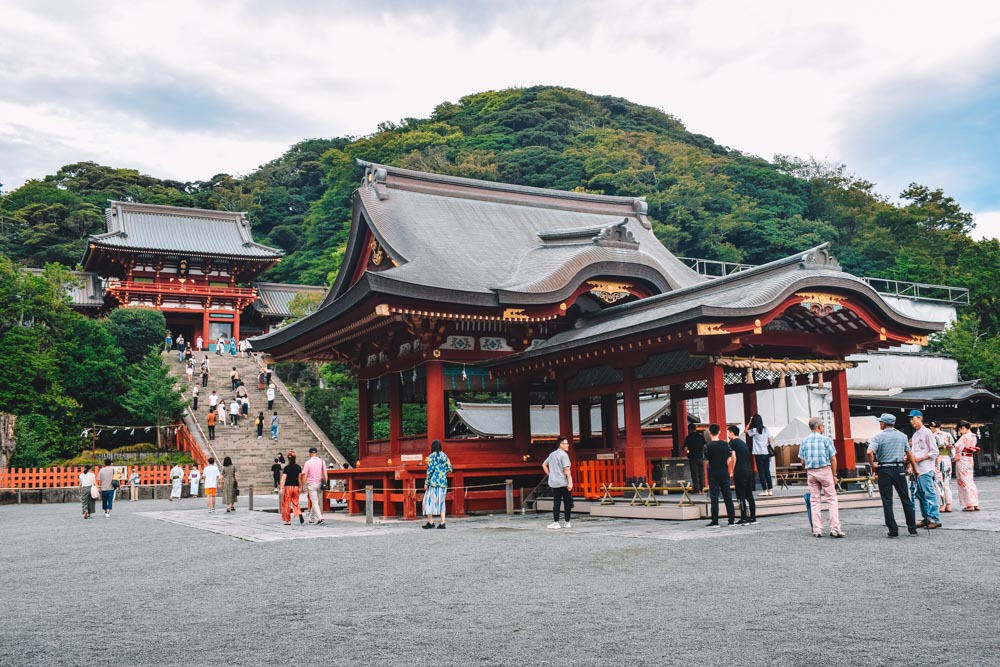
Arriving at Tsurugaoka Hachiman-gu Temple in Kamakura
Next, you should visit Kotoku-in (the big Buddha of Kamakura). You can get there easily from the Kamakura train station by bus, which should only take 10-15 minutes.
This imposing bronze statue is of Amida Buddha – one of the most famous icons of Japan. This Buddha is beautiful and you really do feel a sense of tranquillity around it.
If all this hopping on trains and buses sounds stressful, worry not, as you can also visit Kamakura on an organised day tour from Tokyo . That way you won’t have to worry about planning any logistics, and will have a local guide with you to tell you about the history of the amazing sights you’ll visit.
Click here to book your day trip to Kamakura from Tokyo!
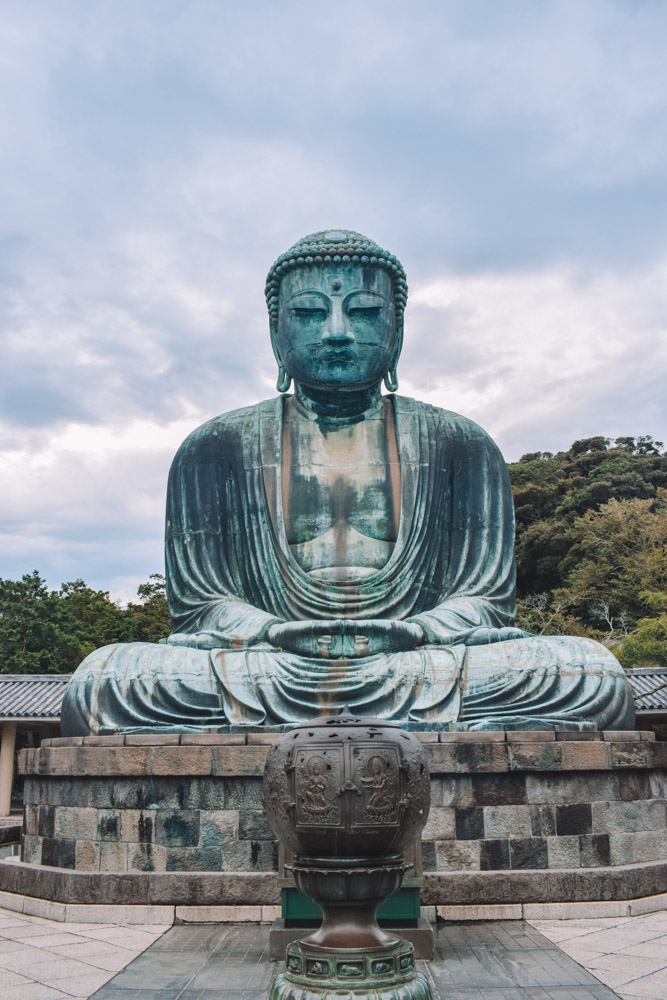
The famous big buddha of Kamakura in Japan
Day 3: Exploring Tokyo
During your first full day in Tokyo , check out some of Tokyo’s unique neighbourhoods. You can start the day by spending some more time in Shinjuku, this time by day.
The Metropolitan Government building is a must-see. There’s an observation room at the top that’s open to the public. You’ll have a complete view of the Tokyo skyline for free!
Next up, visit the Shibuya neighbourhood. This is one of Tokyo’s fashion centres. It’s a colourful district filled with lots of unique stores.
The Harajuku neighbourhood of Shibuya is famous for its ever-changing fashion scene and colourful street art. Visit Takeshita Street and check out some vintage clothing stores and cosplay shops.
Or, if you prefer shopping at high-end boutiques, Omotesando Avenue is the place for you. If you’re looking to pick up a few new clothing items during your Japan trip, this is the area to shop in.
| READ MORE: HOW TO SPEND 5 DAYS IN TOKYO |
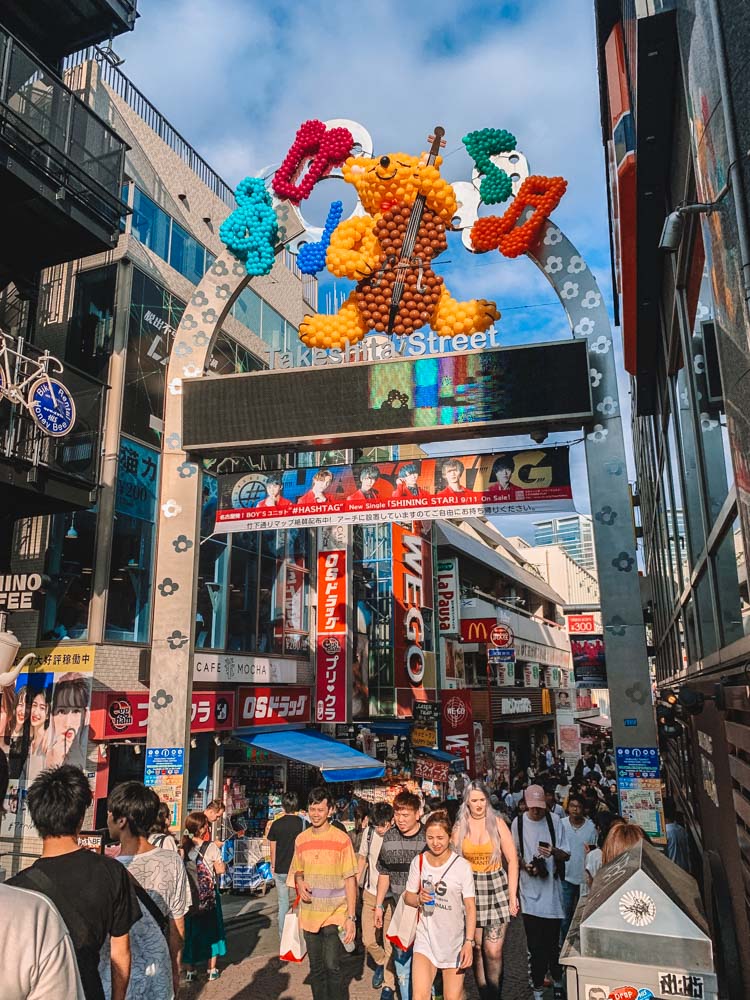
Takeshita street in Harajuku
The Shibuya neighbourhood is also famous for the iconic Shibuya crossing; which some people call the busiest road intersection in the world.
For the best view of Shibuya crossing go either to the second floor of the Starbucks just across it, or to the top floor of any of the buildings that surround it.
Shibuya is also home to the statue of Hachiko, the famous dog whose life inspired the movie “ Hachi: A Dog’s Tale” . You will find it just outside the Shibuya station.
Basically there are lots of amazing corners and neighbourhoods in Tokyo. It would take weeks to properly discover them all, but since you only have two weeks for the whole of Japan, you need to wrap up your Tokyo sightseeing quickly.
One great way to do so is to join a Tokyo sightseeing tour. That way you’ll have local guides sharing interesting insights with you, as well as handling the complicated transport situation. I listed below some of the most popular tours online.
Tokyo: Ueno Private Walking Tour with Shrine Visit – Discover the famous neighbourhood of Ueno on a private walking tour, including Toshogu Shrine, Ameyoko and Ueno Park.
Tokyo: Shinjuku Drinks and Neon Nights Nightlife Tour – This evening tour is the perfect way to discover Shinkuju like a local, and taste some delicious Japanese treats along the way!
Shinjuku: Private Guided Tour of Shinjuku’s Top Sights – If you prefer to discover Shinjuku by day, this private tour will take you to Golden Gai, the Samurai Museum and many other key sights in this neighbourhood!
Shibuya & Harajuku: Hidden Gems & Highlights Private Tour – Accompanied by a local guide, this private tour will take you to all the must-see spots of Shibuya & Harajuku, as well as including some drinks and food!

Shibuya crossing seen from the top floor of Starbucks in Tokyo
Day 4: Travel to Kyoto
After a few days in Tokyo, it’s a good idea to head out and discover more of the country. If you’re only spending two weeks in Japan, there’s a lot more you’ll want to see.
Take the morning train to Kyoto. It’s about a 2-hour and 40-minute journey from Tokyo using the Japan Rail (JR) so try and get an early start.
When you arrive, make your way to the Kiyomizu-Dera temple. The temple was founded in 778 and is famous for its large wooden terrace.
This outdoor platform juts out over the hillside and offers picturesque views of Kyoto. If you want to properly understand the history and culture of this temple, you can join a Kiyomizu-Dera temple guided tour.
Click here to book your Kiyomizu-Dera temple guided tour!
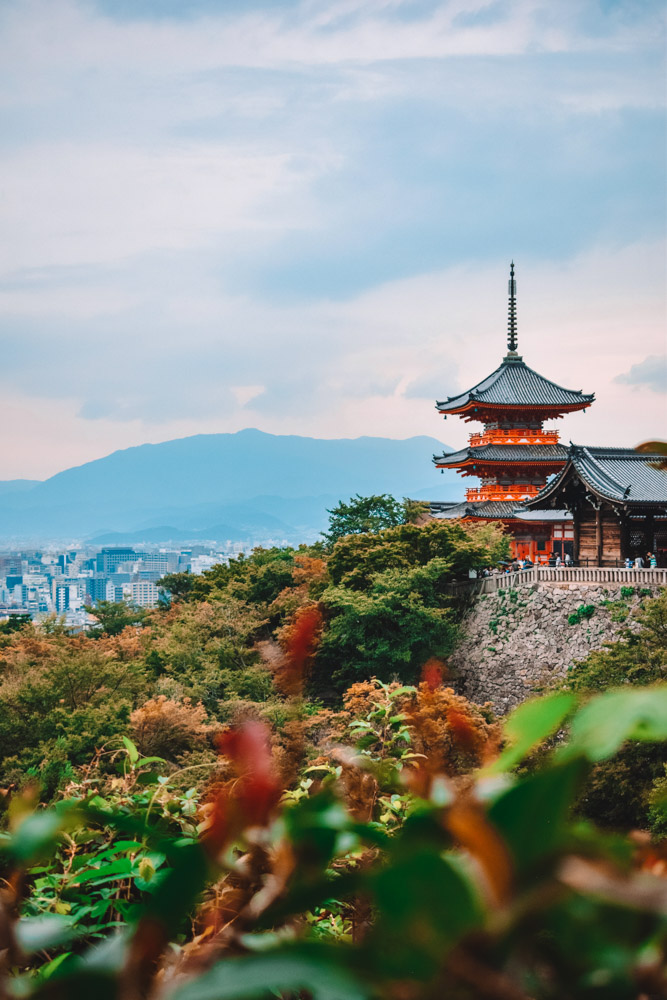
The view from Kiyomizudera temple over its main pagoda with Kyoto in the background
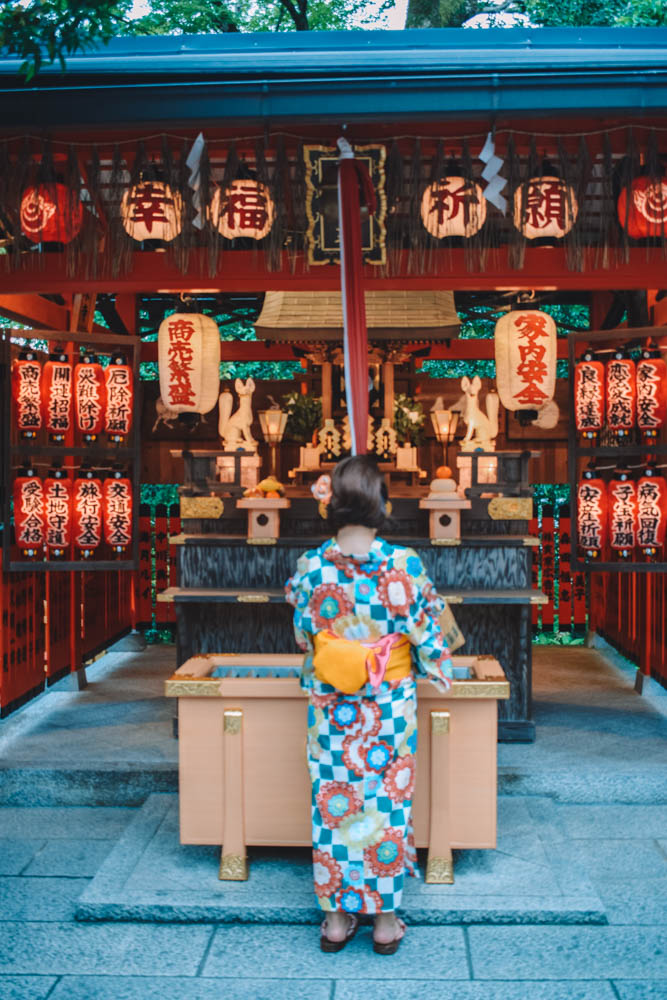
Paying homage at Kiyomizudera temple in Kyoto
When you’ve finished at the temple, take some time to explore the surrounding area. The nearby Gion neighbourhood lies at the heart of Kyoto and is known as the geisha district.
It’s packed with bars, restaurants, and traditional teahouses, You can book a walking tour and explore the culture of this historic city.
For a stunning sunset, make your way to the Hokanji Temple pagoda. This 5-story Buddhist pagoda temple offers panoramic views from the top. It’s the perfect place to watch the sun slowly fade away into the night.
Click here to book a Gion neighbourhood walking tour!

Wandering the streets of Kyoto under the distinctive Hokanji temple pagoda
After sunset, head over to Pontocho alley for dinner. This is a pedestrian street full of cosy restaurants.
It’s considered the most beautiful street in the city. Whether you’re looking for traditional, or western-style food and drink options, you’ll find it all here.
In Kyoto I stayed at Hotel Elcient Kyoto .
While it’s not particularly close to any of the main attractions, it’s very conveniently located just across the road from Kyoto main station, which makes it well connected to everything you want to see in Kyoto.
Click here to book your stay at Hotel Elcient Kyoto!

Enjoying ramen dishes in Kyoto
Day 5: Fushimi Inari Taisha Temple in Kyoto
Start day 5 of your Japan trip itinerary with an early morning hike.
There’s really no better way to appreciate the natural beauty of Japan than immersing yourself in nature. Plus, getting an early start means there will be fewer crowds.
Fushimi Inari Taisha temple is an important Shinto shrine. There’s a path with over 5000 colourful orange torii gates that wind through the hills behind the shrine.
Hiking this area is one of the most rewarding activities you’ll complete during your 2 weeks in Japan. The journey up to the summit of the mountain and back takes about 2-3 hours.
The beginning of the torii gate path is super crowded. It gets less busy and more scenic as you travel up.
Along the way, there are a few restaurants and places to buy water and snacks. At the top, you’ll be greeted with an incredible, sweeping view of Kyoto.
If you want to discover this iconic Japan bucket list sight with a knowledgeable local guide, you can join a small group cultural walking tour .
Click here to book your Kyoto small group tour to Fushimi Inari Taisha and other key sights!
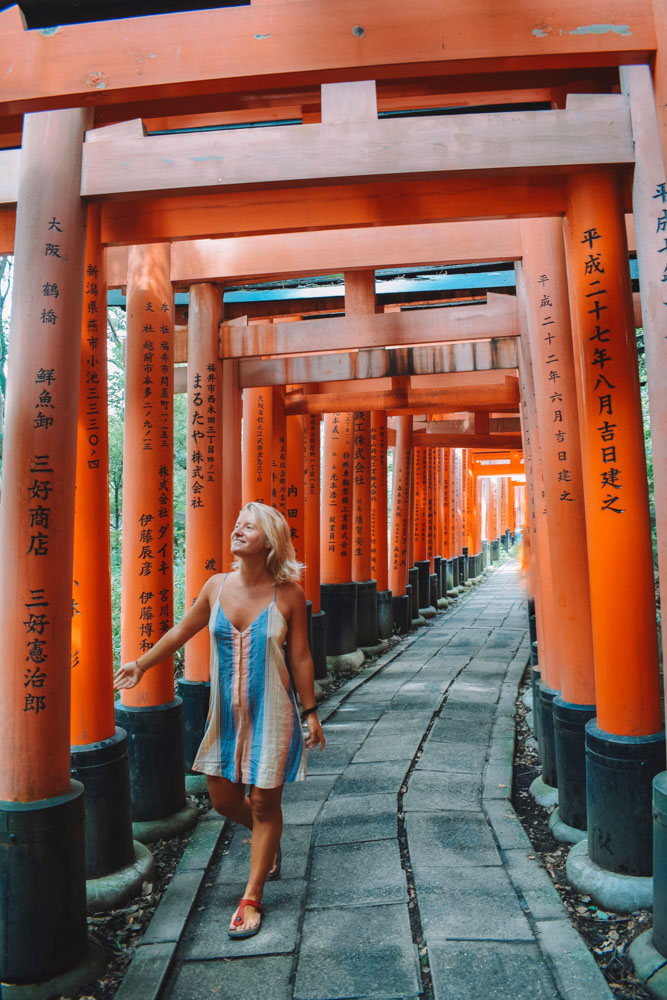
Wandering through the famous red torii gates of Fushimi Inari Taisha in Kyoto
Afterwards, enjoy a meal at the Nishiki market in downtown Kyoto. You’ll find so many good food choices, including lots of amazing Japanese delicacies at very reasonable prices.
Nishiki market is one of the main spots to visit in Kyoto, where you can not only taste amazing Japanese street food, but also shop for souvenirs and kimonos.
Discovering the narrow streets of this market was one of my favourite activities of my two weeks in Japan. If you want to make sure you eat at all the best stalls, you can join this Nishiki Market food tour!
Click here to see prices & availabilities for a Kyoto Nishiki Market food tour!
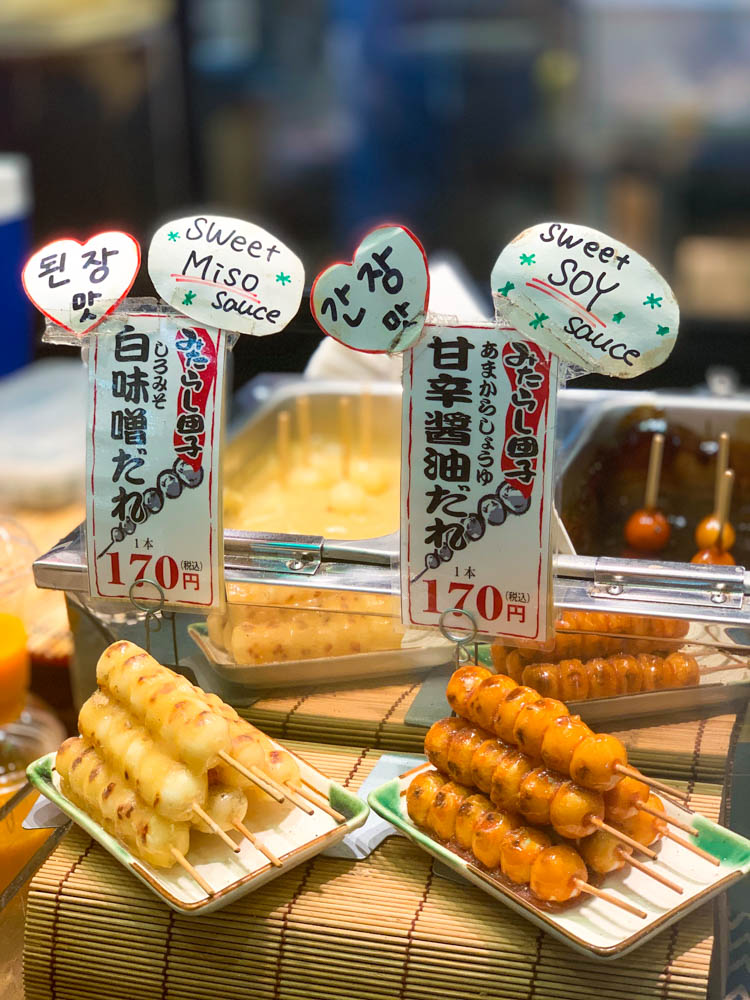
Dango skewers at Nishiki market in Kyoto – they soon became my favourite dessert in Japan!
Day 6: More Kyoto temple exploring
On your final day in Kyoto, spend some time in the Arashiyama district – on the outskirts of Kyoto. From Kyoto Station, take the Japan Rail Sagano lines to Saga-Arashiyama Station. The train ride takes about 20 minutes.
When you arrive, the Arashiyama Bamboo Forest should be your first stop.
The forest gets very crowded later on in the day, so it’s best to get there early in the morning. The forest is open 24/7, so you can arrive as early as you’d like.
Stroll the paths lined with endless rows of towering bamboo that stretch up to the sky. There’s really nothing quite like it. In my opinion, seeing a bamboo forest should be included in all Japan travel itineraries.
| READ MORE: AN EPIC KYOTO 3-DAY ITINERARY |

Arashiyama bamboo grove in Kyoto
Next, you should visit Arashiyama Monkey Park. As the name suggests, this park is famous for its monkey population. Over 170 Japanese macaque monkeys inhabit the area.
You’ll be able to see these animals up close and even feed them in a designated area. The park also offers beautiful views over Kyoto.
Personally we just wandered around Arashiyama alone, but if you prefer to have a local guide give you tips and insights, make sure to join this bamboo grove & temple tour !
Click here to book your Arashiyama bamboo grove & temple tour in Kyoto!
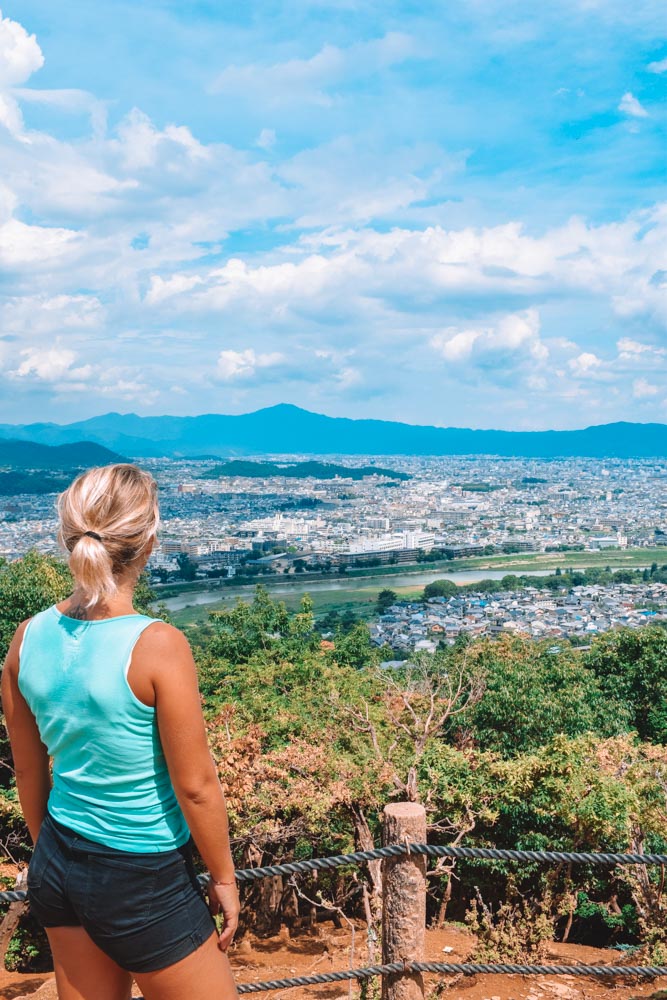
Enjoying the view over Kyoto from the top of Arashiyama Monkey Park
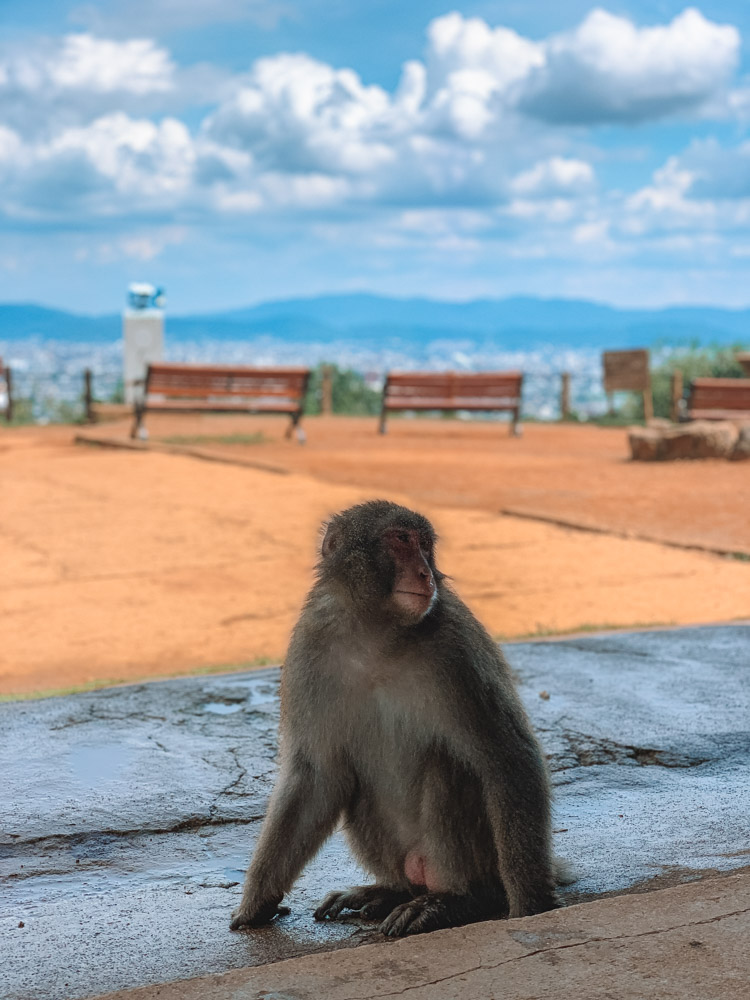
A monkey in the Arashiyama Monkey Park in Kyoto
Lastly, you should check out the Kinkaku-ji Golden temple. This beautiful gold temple is surrounded by peaceful gardens and set next to a quiet pond.
It has an enchanting appeal, especially when the golden walls shine in the sunlight.
While you’re in the area you should consider riding the famous Sagano Romantic Train. This train ride will take you through what is considered one of the most beautiful railway journeys in Japan.
Book your romantic Sagano train ride here!
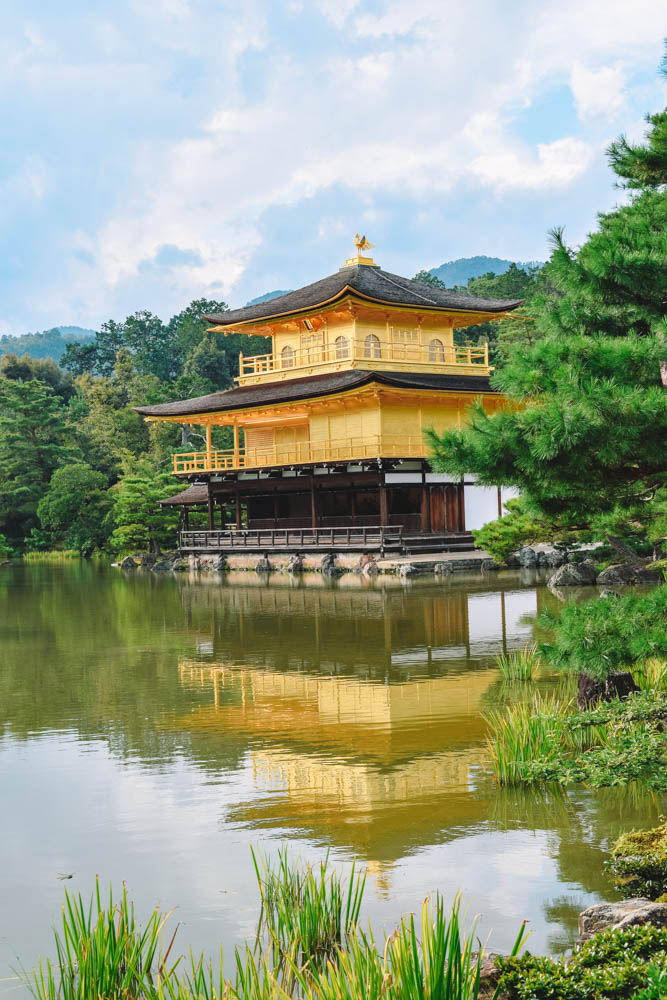
The Kinkaku-ji golden temple in Kyoto
Day 7: Travel to Hiroshima
Now that you’re halfway through your two-week Japan itinerary, it’s time to head even further east, to Hiroshima and Miyajima . It takes around 2.5 hours on the Japan Rail to get to Hiroshima from Kyoto.
First, visit the Hiroshima Peace Memorial Park. This area serves as a memorial to the people who were killed in the atomic bombing of Hiroshima, on 6 August 1945.
There are three different areas you’ll want to visit: The Atomic Bomb Dome, The Hiroshima Peace Museum, and the Peace Memorial Park.
The whole area is dedicated to documenting the atomic bombing that was dropped on Hiroshima in World War II.
You’ll want to spend at least a few hours walking around and educating yourself on this tragic, yet important, part of history. I found some of it quite tough to look at, and was surprised at seeing young children there on school trip.
The Hiroshima Peace Memorial is an example of a dark tourism site; a place where horrible things have happened, but it’s important we visit it, so as to never forget and learn from the past.
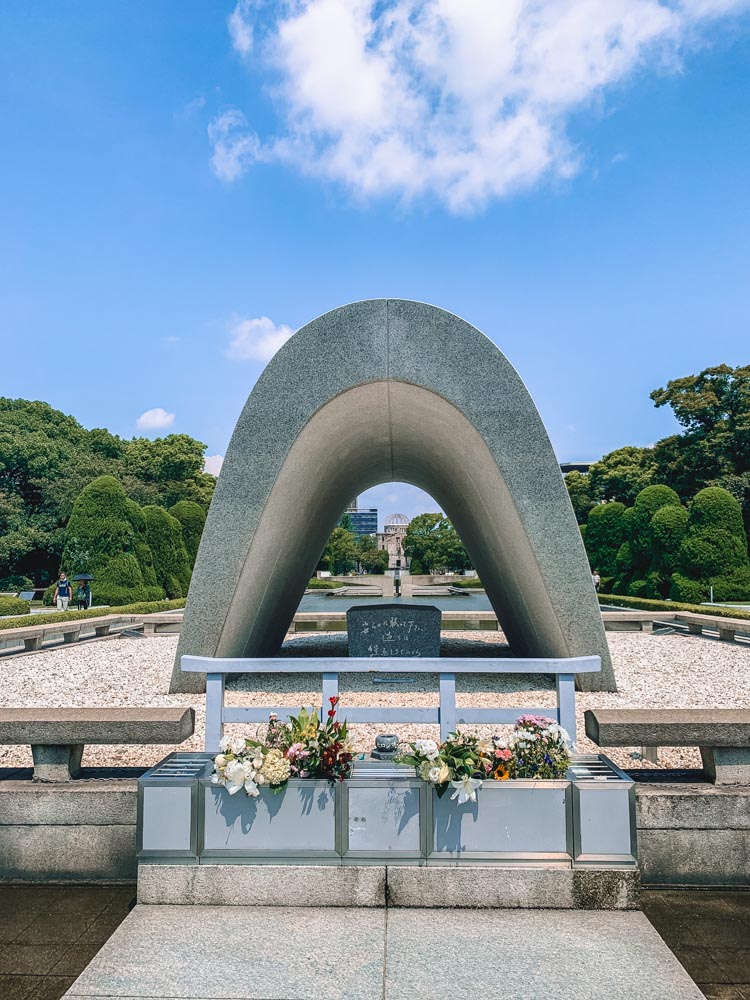
Hiroshima Peace Memorial
Next, visit Hiroshima castle. The castle was constructed in the 1590s but was unfortunately destroyed by the atomic bomb in 1945.
It was rebuilt in 1958. It’s a replica of the original and houses a museum that showcases Hiroshima’s history.
The castle also gives guests the opportunity to dress up in period outfits, including Samurai armour. This is a great stop on your Japan tour itinerary to learn about the history of the country in relation to WWII.

Hiroshima Castle – Photo by Tom Shu on Scopio
Day 8: Ferry to Miyajima Island
After enjoying a wonderful day in Hiroshima, visit the small island of Miyajima. The island is known for its forests, ancient temples, and fresh oysters – which are very popular at the street food market.
Miyajima Island is located just a quick 10-minutes from Hiroshima Bay. This ferry trip is free with your Japan Rail Pass.
For a great exercise with rewarding views, make hiking up Mount Misen your first activity. This sacred mountain is the highest mountain on the island.
It’s a steep hike up, but you can take the cable car up part of the way up and then hike down. You’ll have epic views of the islands and coast of mainland Japan from the top.
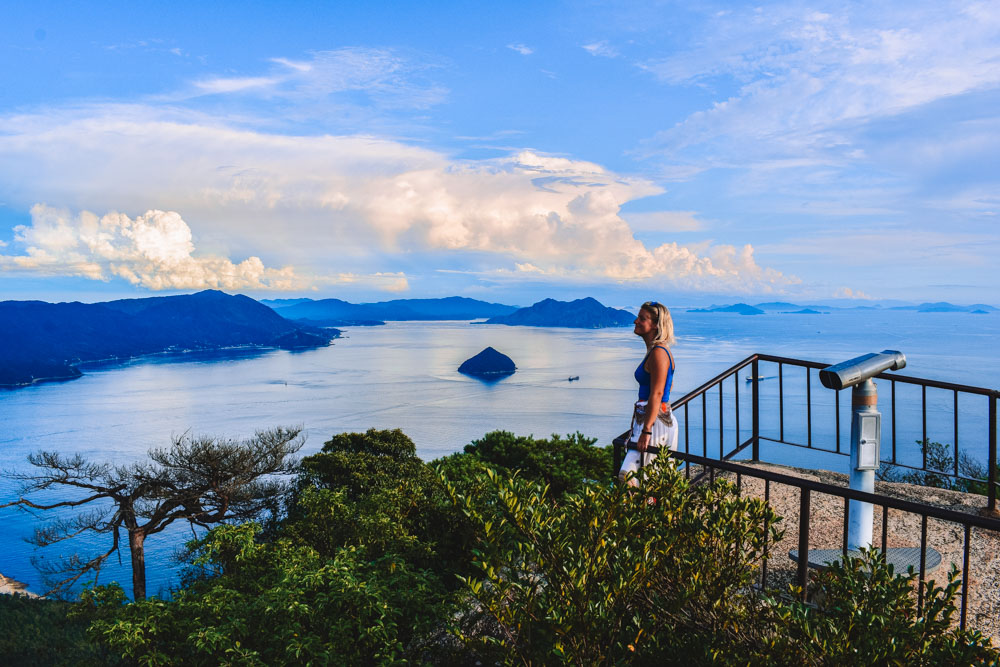
The view from the peak of Mount Misen in Miyajima Island

While you’re on Mount Misen, visit the Daishoin temple. This temple complex is spread on a slope of the mountain and features over 500 statues of varying shapes and sizes.
Next, visit the Itsukushima Shrine. The shrine and its torii gate are built over water and made to look like they’re floating in the sea during high tide.
At the time of my visit (September 2019) unfortunately it was undergoind construction, and they haven’t really said when it will end.
| READ MORE: HOW TO SPEND ONE DAY IN MIYAJIMA |

The cute market streets on Miyajima Island
The five-story pagoda on the island is a must-visit too, especially for photo lovers. It’s beautiful, peaceful, and breathtaking – another one of the many treasures found on Miyajima Island.
If you want to add a really cool cultural experience to your itinerary for Japan, spend the night in a ryokan. This is a type of traditional Japanese accommodation.
If you use AirBnb in Japan you can usually find both ryokans and normal apartment style accommodation. I stayed at the Miyajima Hotel Makoto , which is located on the island, just a 5-minute walk from Miyajima Pier.
Click here to book your stay at the Miyajima Hotel Makoto

The five story pagoda in Miyajima Island
Day 9: Travel to Osaka
Now that you’ve hit the highlights of Hiroshima, it’s time to move onto Osaka .
The best way to get there is by taking the Hello Kitty Bullet Train. As the name suggests, the train is completely themed after Japan’s beloved fictional character, Hello Kitty.
The train departs from Hiroshima just after 08:00, which might be a little early for some. But if you’re only taking a 2 week trip to Japan, the early morning call time is worth it!
The best part of all is that this train ride is included in your Japan Rail Pass.
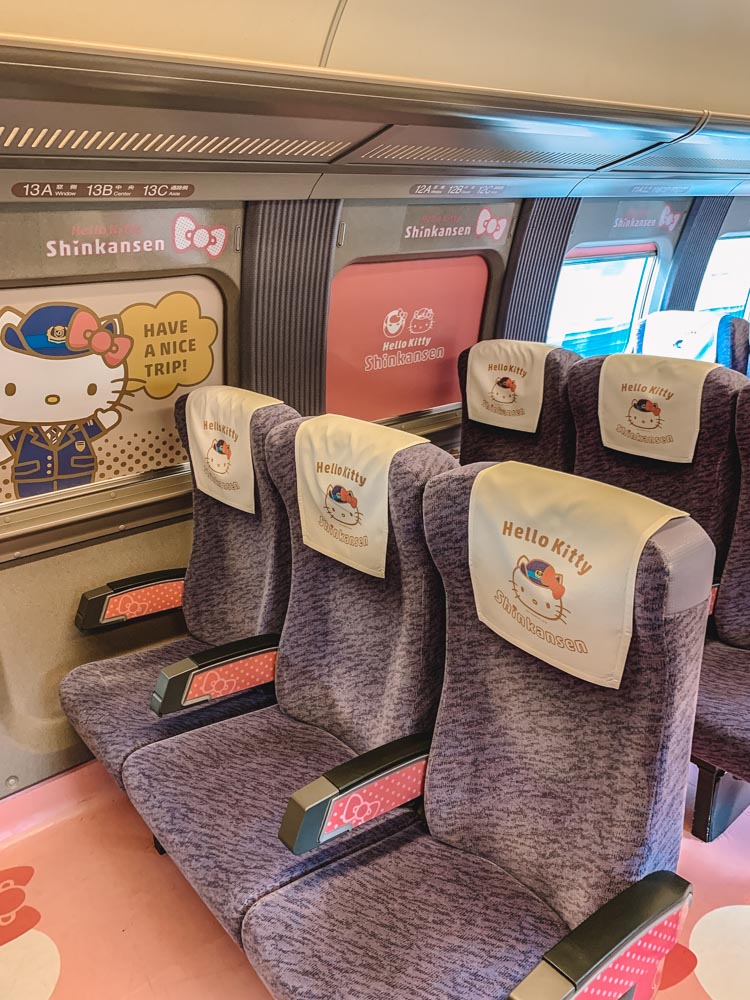
The seats on the Hello Kitty Shinkansen train from Hiroshima to Osaka
The total travel time from Hiroshima to Osaka is about three hours, but I suggest breaking up the journey at Himeji.
Visit Himeji Castle , a hilltop Japanese castle complex. The castle is a bit bare inside, but the views it offers from the top are absolutely spectacular.
It’s also a great place to visit to see authentic, preserved Japanese architecture. You can walk to the castle from the train station, so it’s a really easy stop to make along your route.
All Japan train stations have lockers where you can leave your bags on occasions like this, if you’re doing a stop along the journey before checking into your next hotel.
If you want to see more of Himeji beyond the castle, you can book a private customised tour with licensed guide like this one , to properly make the most of your time in Himeji.
Click here to book your Himeji private customised tour with local guide!
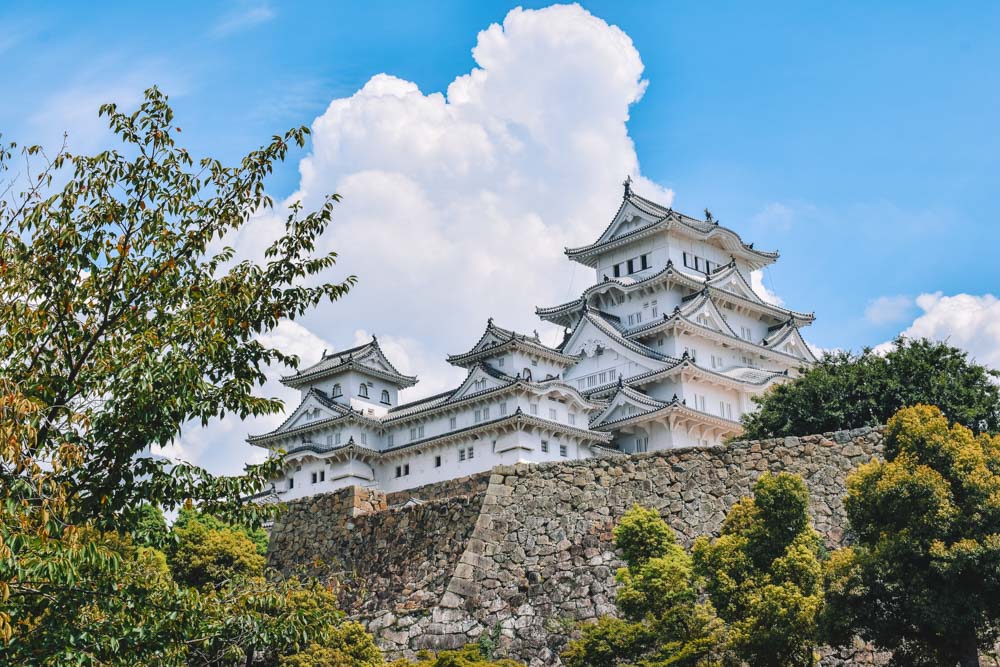
The outside of Himeji Castle
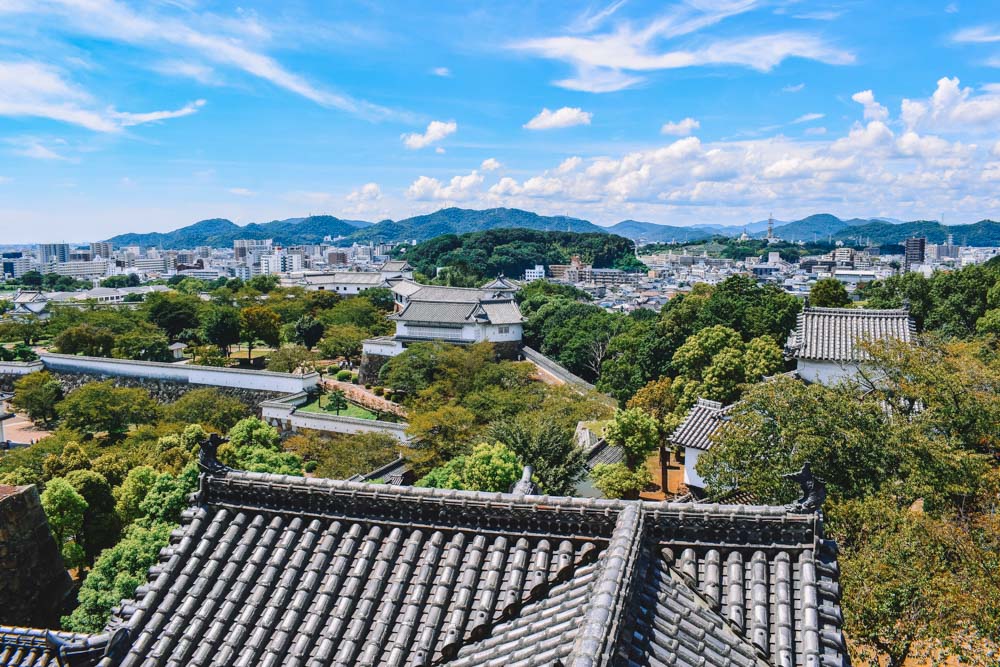
The view from the top of Himeji Castle
After you arrive in Osaka you’ll have a lot of fun attractions on offer – seeing as the city is the second-largest metropolis after Tokyo.
If you arrive early enough, you can visit the tallest skyscraper in Osaka for some pretty epic Japan photos.
Wondering where to stay in Osaka ? We stayed at Hotel Monterey La Souer Osaka . The hotel was very conveniently located close to Osaka castle, and next to a train station for public transport.
Click here to see the latest prices and availability at Hotel Monterey La Souer Osaka!

Day 10: Day trip to Nara
On day ten of your two week trip to Japan, take a day trip to the deer-filled city of Nara.
This area is famous for its tame reindeer and beautiful temples. Using your JR Pass, you’ll get from Osaka to Nara in about 50 minutes.
Once you arrive, you’ll be able to walk to several attractions from the train station.
First up, visit the Kofukuji five-storey pagoda. This large Buddhist temple is a fascinating historical tower that was constructed using wood.

Kofukuji Five-Storied Pagoda in Nara, Japan
Next, see the Todaiji temple. Inside the complex, you’ll find numerous huge Buddha statues – they’re pretty impressive!
I was feeling pretty templed out by the time I arrived here and almost didn’t go inside, but I’m glad I did! This building stands out for its sheer size and beautiful statues.
The Kasuga-taisha temple is another beautiful shrine filled with lots of lanterns.
Even if you make your own way to Nara from Osaka, you can still join a cultural tour once you reach Nara, that way you’re sure you’re hitting all the must-see spots, with a local guide to tell you about them too!
Click here to book your cultural tour of Nara!

Admiring the giant statues inside Todaiji temple in Nara, Japan
Last but not least, wander around Nara Park and see the wild reindeer that roam freely. Street vendors sell deer crackers, which you can purchase to feed the deer.
The deer in Nara are very used to being fed and having tourists around, but you should still be careful as they are still wild animals.
| READ MORE: NARA DAY TRIP GUIDE |
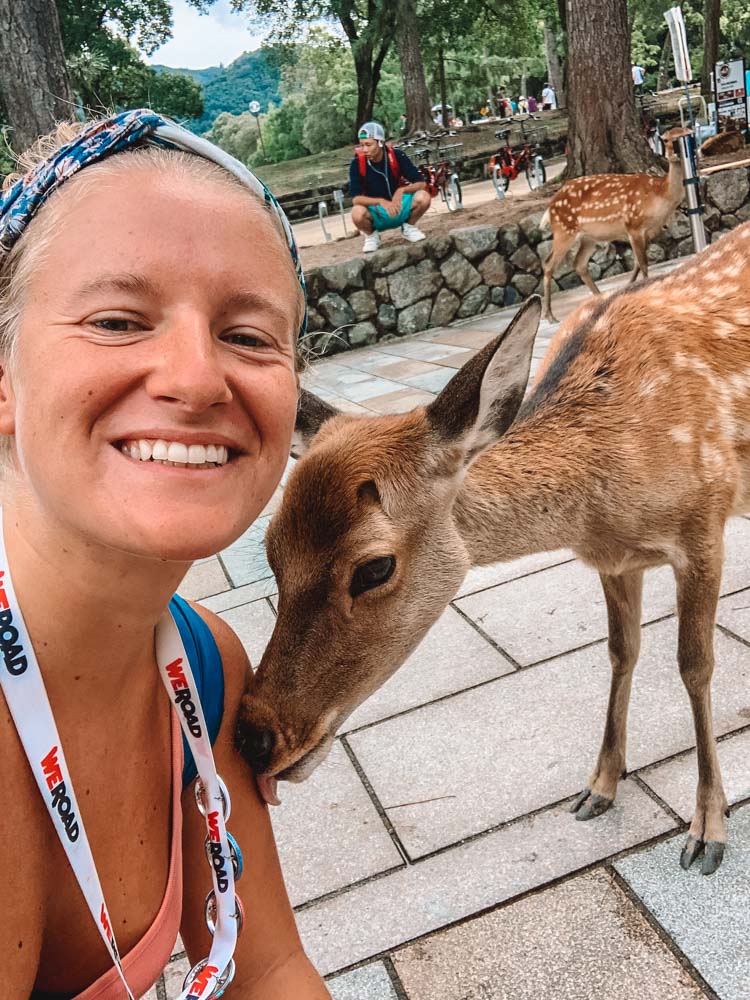
Trying to befriend one of the deer in Nara
Day 11: Explore Osaka
Spend your first full day in Osaka exploring the city.
First up head to Osaka Castle – the city’s most famous attraction. The castle is opulent from the inside out. There are lots of things to see and do, so make sure you wear your walking shoes when you visit.
The castle itself is a stunning sight. It rises high up and provides commanding views of the Osaka skyline. Osaka Castle Park covers about two square kilometres and offers plenty of green space.
The Osaka Museum is a history museum that makes a nice add-on to a castle visit. It’s a great place to get a glimpse of the history and culture of Japan.
If you want to make sure you visit all the main sights in Osaka, book yourself a full-day private guided walking tour , so that you’ll have a licensed guide all for yourself to show you all the best spots!
Click here to book your Osaka full-day private guided walking tour!
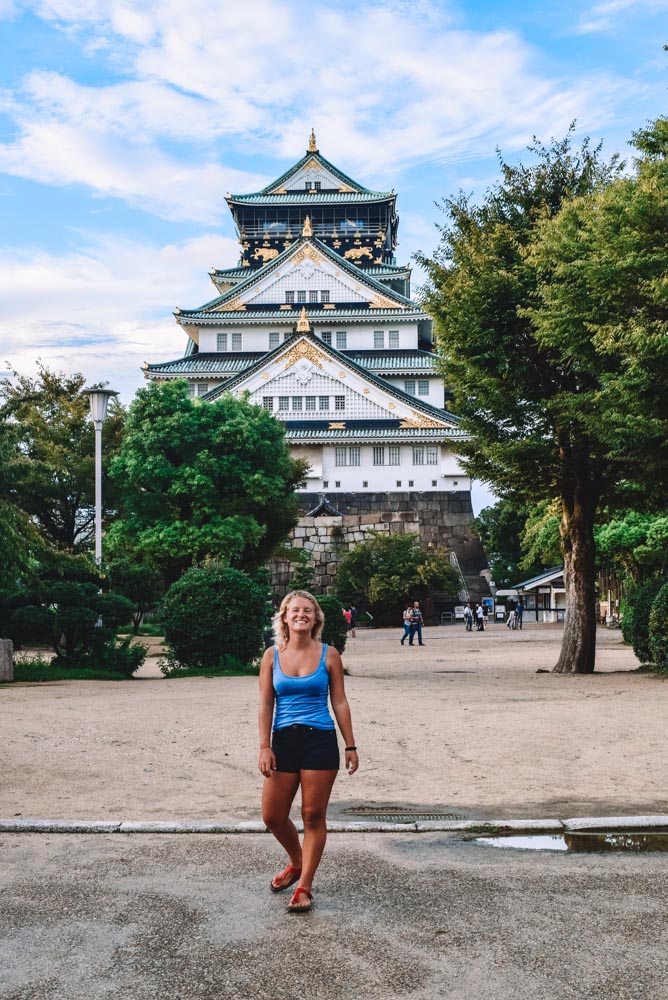
Exploring Osaka castle
After you’ve spent a few hours exploring the castle, make your way to Dotonbori Street. This is a very trendy area of Osaka that has lots of street food and shopping options.
Osaka is Japan’s food capital , and Dotonbori Street is the best place to indulge in the city’s cuisine. You’ll find street food everywhere. There are also plenty of restaurants and bars.
Most places have their own unique and colourful advertising signs. Dotonbori is also a great place to go out at night. It’s a spot in the city that’s popular with both locals and tourists alike.
There are so many places to eat at in Dotonbori that it’s hard to choose the right one. Avoid the tourist traps, and join an Osaka food tour with a local , to ensure you eat at all the best spots!
Click here to book your Osaka food tour!

Dotonbori neighbourhood in Osaka

Exploring the street food in the Dotonbori neighbourhood of Osaka
Day 12: Travel back to Tokyo
Now that your Japan two-week itinerary is in its final stages, it’s a good idea to head back to Tokyo. Take the early morning train and make a stop at Mount Fuji if you feel like breaking up the trip.
Mount Fuji is an active volcano about 100 kilometres southwest of Tokyo. it’s the country’s tallest peak and the country’s most famous mountain.
When you arrive back in Tokyo, have lunch at the Ameyoko/Americaya street markets.
This is a typical Japanese food market and a local gem, and it’s packed with delightful food stalls. You’ll find some of the best street food in Tokyo here.

The bustling and colourful street of Ameyoko in Tokyo
Nearby, you’ll find Tokyo’s electronics district – Akihabara.
If you’re into comics, anime, or video games, you’ll find the best of Japanese electronic relators here. This place is manga central (a comic genre which is huge in Japan).
Take some time to explore this buzzing district. Besides electronic shops, there are also lots of really cool stores and cafes devoted to anime and manga.
For a young Dragon Ball and One Piece lover like me (any other fans reading this?) visiting Akihabara was loads of fun.
All the shops we visited sold either comic books, video games, and all sorts of toys from my favourite childhood cartoons.

Exploring Akihabara in Tokyo
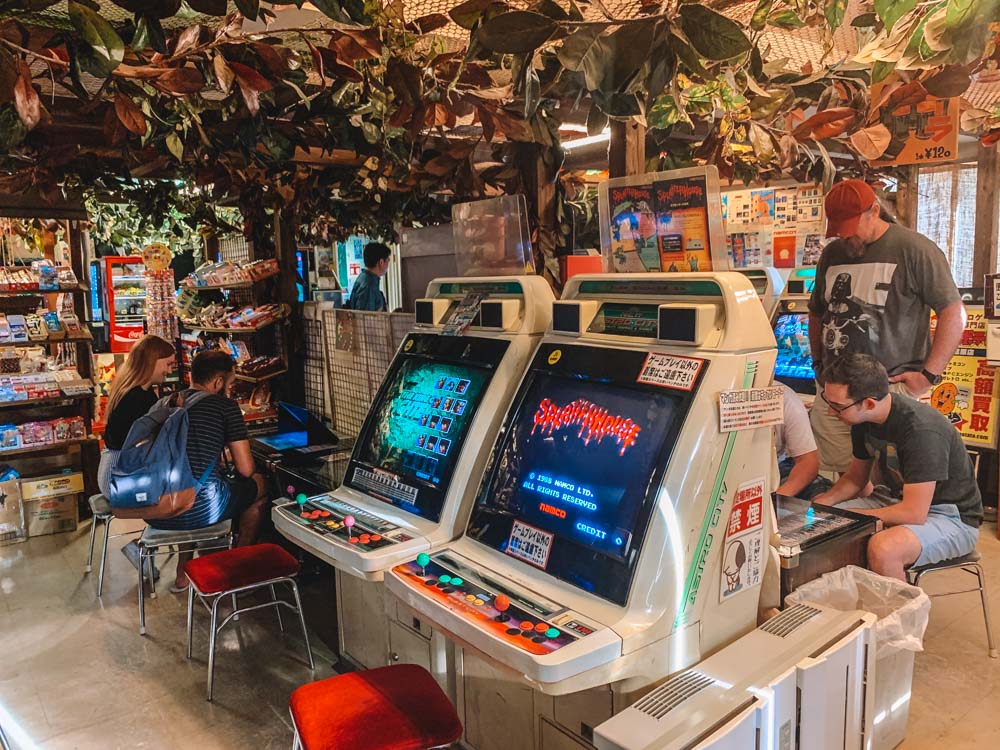
The top floor of Super Potato where you can play with vintage videogames
Day 13: Tokyo
Now that you’re on the last full day of your Japan vacation itinerary, you’ll want to do as much exploring as possible.
Visit TeamLab Borderless Museum first thing in the morning. This attraction is very popular, so it’s best to get there right when they open at 10:00 and book your tickets in advance .
This interactive art museum brings art to life in a mesmerising way. Each room has something new to offer; you’ll feel like you’re in another world!
Click here to book your ticket at TeamLab Borderless!
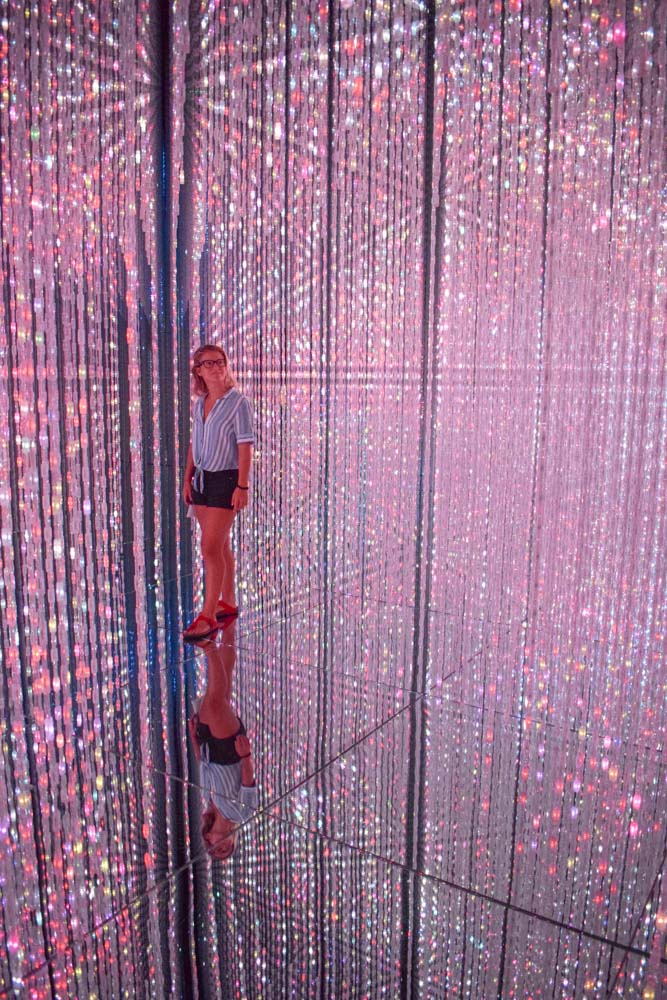
One of my favourite rooms at the Teamlab Borderless in Tokyo
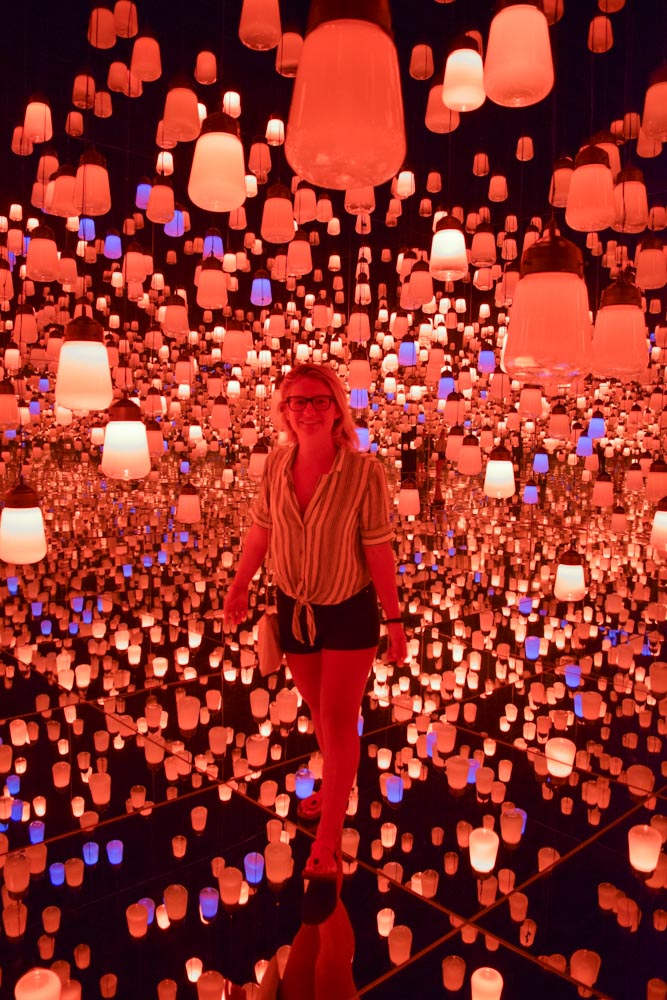
The lantern room at Teamlab Borderless in Tokyo
After you’ve finished at the museum head over to Tsukiji Fish Market for lunch. This is one of the largest seafood markets in the world, and one of the most famous attractions in Tokyo.
This is not only an area where local restaurant owners go to buy fish, but there are also lots of street food stalls and restaurants to choose from where you can eat.
Indulge in sushi, fresh crab, oysters, or whatever else you’re craving that comes from the sea. We ate at a place called Sushizanmai , and it was one of the best sushis I’ve ever had.
If you don’t fancy going for a full sit-down meal, you can also join a Tsukiji Market food & drink walking tour , and have a local take you to all the best dining spots in the market!
Click here to book your Tsukiji Market food & drink walking tour!

Sushi from Tsukiji fish market in Tokyo
Day 14: Tokyo & end of trip
Leaving a country as beautiful as Japan might be hard. But if you’ve followed this Japan travel blog you will have seen so many great areas of the country that you’ll feel enriched and happy with your trip.
Try to get an evening flight so that you have time to do some last minute exploring. You should explore the Asakusa neighbourhood and get a feel for older Tokyo.
You can tour the area on a rickshaw ride for a unique perspective. You’ll pass lots of iconic sits and see the area through the eyes of a local.
While you’re in the area, make sure to visit the Senso-ji temple. This ancient Buddhist temple was completed in 645, making it Tokyo’s oldest temple. It’s a beautiful piece of Japanese culture and a must-see when you visit Tokyo.
Click here to book your rickshaw tour of Asakusa!

Senso-ji temple in Asakusa, Tokyo
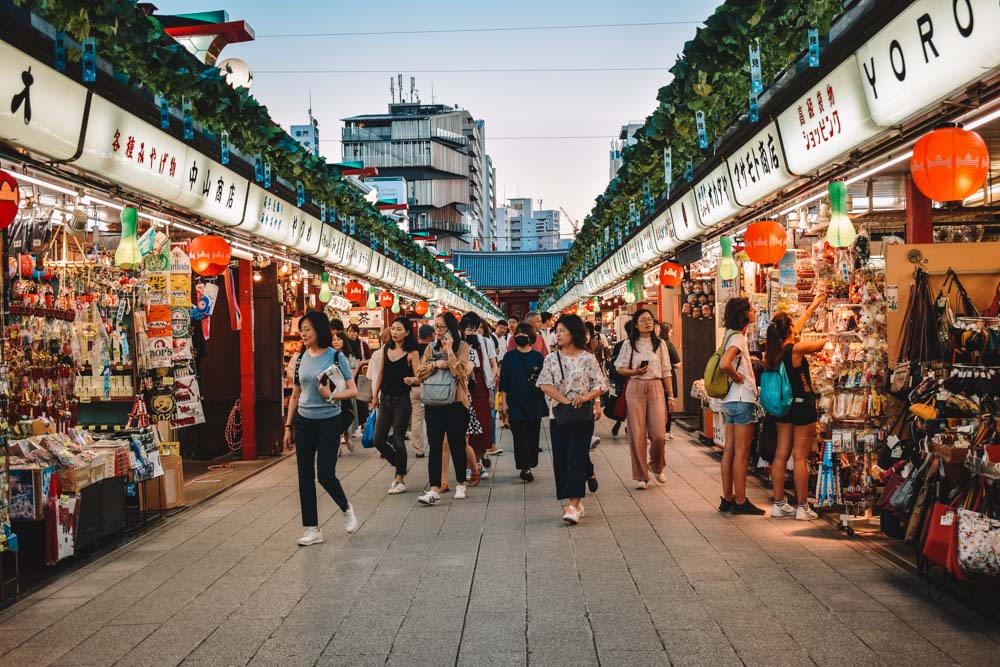
The road of cute shops leading up to Senso-ji temple in Asakusa, Tokyo
Conclusion of your 2 weeks in Japan itinerary
As you can tell from this guide, exploring Japan in two weeks is totally do-able. The size of the country and its accessible transportation options are very conducive to tourism.
The best thing about Japan is that this country has a little bit of everything. From chaotic cities to tranquil islands and scenic parks, or from ancient history to modern techno and manga scene, there’s so much to discover.
For this reason, I’ve made sure to include big cities as well as areas that are off-the-beaten-path.
Whether you’re travelling alone, with family, friends or kids, this two weeks Japan itinerary is perfect for every type of traveller. This is a country that will amaze you at every corner!
Enjoyed reading my Japan 14-day itinerary? Pin it!

APRIL SALE: Discover and book at up to 60% off!
Fully Guided Tours & Trips in Japan
Find the right fully guided tour for you in Japan. There are 284 trips to choose from, that range from 5 days in length, up to 28 days. The month with the most departures is October, making it the most popular time to visit Japan.
Filters applied
250+ fully guided tour packages in japan with 4,262 reviews.
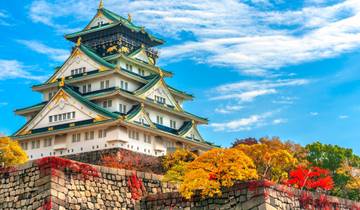
- In-depth Cultural
- Train & Rail
- Christmas & New Year
Japan Express: Osaka to Tokyo
Takae made the tour unforgettable. Her insight and communication were priceless. She led our large group with enthusiasm and made us all feel so special. We saw amazing sites, learned about historical events, and were honored to experience rich culture. The tour was a once in a lifetime experience and we could not be more pleased. Thank you Takae, for your exceptional leadership and fun loving spirit. We will never forget Team Legend.

Central Japan
Overall, the trip was an excellent experience throughout all categories. At first, the transfer from airport to hotel on arrival was a bit confusing, but was handled quickly by the tour's rep with one call. If you are fortunate enough to have Ken Igarashi as a guide, (which I had for most of the trip), his profound knowledge of Japan's history, religions, and modern issues made this travel experience worthwhile. Be prepared for long breakfast lines at some hotels, but you will get to eat. You will meet numerous travelers from different regions of the world in this tour of central Japan.
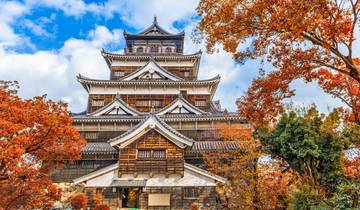
Epic Japan: Speed Trains & Street Food
⭐⭐⭐⭐⭐ / ⭐⭐⭐⭐⭐ It was awesome. Be had the right amount of free time and guidance. Our CEO was the best one I've ever could expect, she went to the top and 500 extra miles. I will definitely recommend it.
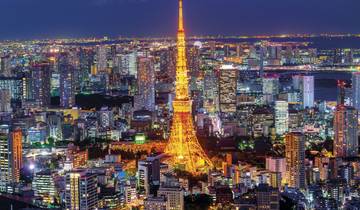
Tokyo, Kyoto and Hiroshima end Tokyo
I highly recommend this tour for anyone who has never visited Japan or who wants to know more about the rich history and culture of this dynamic country. We saw and learned a whole lot more than we could have on our own. There was a lot of variety in the places we went and always a lot to see. It was nice to have everything set up for us every day, but still had time to explore on our own at least once a day. The tour guides were very informative and, at times, funny. The accommodations were decent with the last hotel being very nice! The only complaint I might have is that one or two of the restaurants where the tour set up meals was just so-so, but most of the meals were good to very good! I find that the Japanese pallete may not appeal to many people, however there was some western food available at many of the venues.

Japan Express
Guide was excellent however took us only to the free places and the tour guidance lasted till 1300 usually and thus you are on your own to scramble to make plans for the rest of the day and figure out how to get there etc. Seems like I paid a lot of money for the minimal touring I received from Intrepid.

Japan: Tokyo Nights & Kyoto Temples
Yoshie was an amazing guide. She was kind and caring and made sure everyone needed the help they needed to get around.
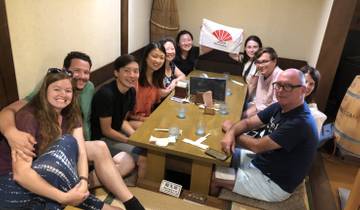
Stunning Japan with Shirakawa-go (private 3 star hotel rooms)
An enjoyable tour. Mixture of all age groups and a manageable size. Covered the main sightseeing things and encountered many Japanese experiences along the way. My expectations were met.
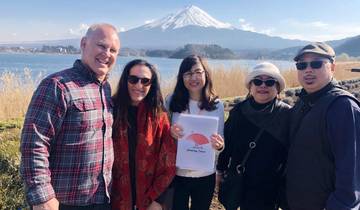
Japan Delight with Hiroshima(private 3 star hotel rooms)
Very good tour in Japan. Everything is tailored to our requirements. Nothing a problem. They work with you to achieve a very personal trip. Nothing 'off the shelf'. Always well looked after when away. Excellent tour guide which really helps to make the holiday.

- Coach / Bus
Wonders of Japan End Osaka
The days were too long especially in the heat. Some visits could be cut out and far too many shrine visits. Ray was an excellent guide.
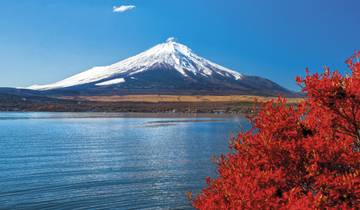
Contrasts of Japan end Tokyo
Goodness gracious what a tour! I couldn't imagine getting more activities and sights into the time allotted. I was exhausted at the end but extremely fulfilled. Such a magnificent country that was well presented and organized. I would highly recommend for those looking for getting the most out of the country during their stay. I loved it!
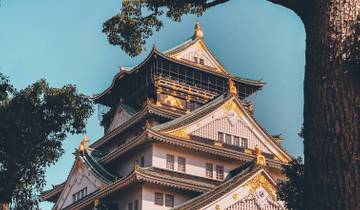
Epic 13-Day Japan Budget Tour: Odyssey Across the Land of the Rising Sun
Ricardo was our trip leader and was incredible! He is so chill. Even with such a fast paced tour he was always calm and collected and always giving out recommendations and advice for things to do. The trip is fast paced and involves a lot of walking and public transport. I personally loved this as it meant I was always busy and travelling like a local. There is a good amount of free time and to be able to do Nara on the free day is great as it meant we could take our time there. The hostels were pretty good (one was a bit too cramped for the amount of people but that’s hostel travelling for you). The rest were good and to be honest it’s only a place to sleep as you’ll be so busy. I would highly recommend this trip. I had never heard of the company before but so glad I took the risk. Again I would like to thank Ricardo for being so amazing as a tour leader!
- 5% deposit on some dates Some departure dates offer you the chance to book this tour with a lower deposit.
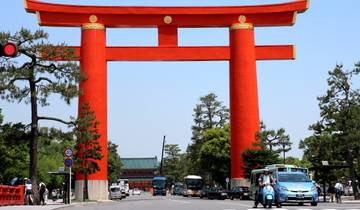
- Food & Culinary
Japan: Castles & Cuisine
Izumi was the perfect CEO! She went above and beyond to make the tour the perfect experience.
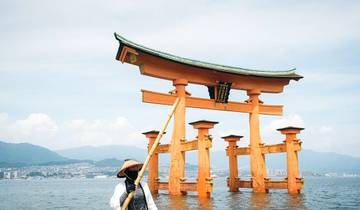
Premium Japan
We had an amazing holiday. Japan was all we had hoped for. The group worked so well, we all got on and became good friends. Shingo, our guide was totally great. He was so pleasant and helpful. His English not brilliant but he did a great job. We felt maybe a little more information on places and sights might have been good. He was constantly helping us all and looking after us. He made great suggestions for meals and always checked up on us all, even when we split into smaller groups for the evening. He went way beyond what he could have done and made everyone feel safe and well looked after. He even helped booking all our onward travel and ensured we were all ok on the day. Wonderful man!! The hotels were nice, if a little small with almost no storage in most of them! Breakfasts were generally very good. We saw and did so much. In fact, we felt sometimes it was a little too much to fit into each day, and either missed some things out or were too rushed, missing stopping and looking at leisure at things and shops etc. Shingo was so patient, even when we caused him to run a little late! Due to distances covered we spent a lot of time travelling which was an interesting experience. Just meant time at destinations was a little short. As Most of us were older we all felt very tired at the end of each day and struggled especially when we had to carry back packs whilst waiting to be reunited with luggage. Dont know what the answer is, if extra days added, then expense goes up. If itinerary cut back, then Interesting sights missed out! Overall, a truly great trip. We enjoyed it all!
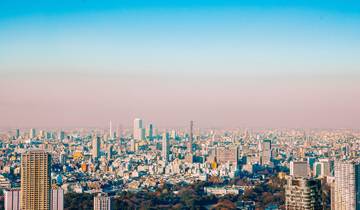
Japan Real Food Adventure
Ōsaka hotel abysmal; ryokan bathes with privacy would be nice
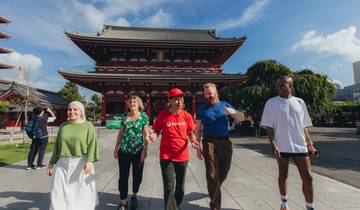
Premium Highlights of Japan
What people love about fully guided tours in japan.
The guide was the best
The tour is organized well and we enjoyed the tour. The weather is not cooperating. Rains and cloudy a lot. We missed the opportunity to see Mt Fuji. But that is not the fault of this tour.
Japan was so fun! A looooooot of free time so do you researches about what to do and visit in every city. Would have love more ''organised'' activities (like a dinner every night with the group,...). Compared to other G Adventures tour I did in the past, I felt that this group was less stick together since there was only a few group activities.
Regions in Japan
- Southern Japan (245)
- Central Japan (241)
- Honshu (237)
- Northern Japan (14)
- Mount Fuji (12)
- Kansai (10)
- Hokkaido (8)
- Shikoku (7)
Travel Styles
- Fully Guided
- Japan Travel Guide | All You Need to Know
- 2 Week (14 Days) Japan Travel Itineraries & Cost 2024/2025
- 1 Week (7 Day) Japan Travel Itineraries 2024/2025
- Best 3 Week (21 Days) Japan Travel Itineraries 2024/2025
- Discover the Best Japan Vacation Packages 2024/2025
- What is the best time to visit Japan in 2024/2025?
- Weather in Japan in 2024/2025
6 days, 5 nights
The following is a suggested itinerary for first time travelers to Japan who spend 6 days, 5 nights in Japan, and arrive/depart from Tokyo 's Narita Airport .
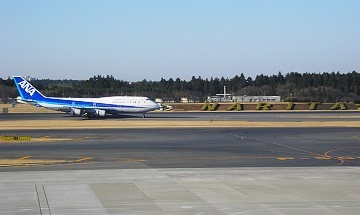
Day 1 - Arrive at Narita Airport
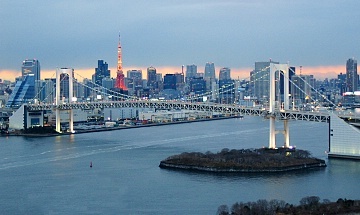
Day 2 - Tokyo
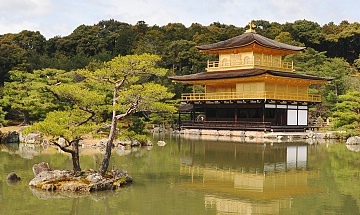
Day 3 - Tokyo to Kyoto
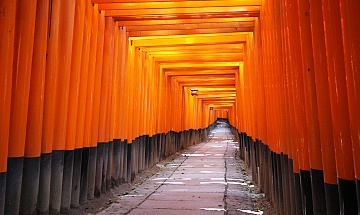
Day 4 - Kyoto
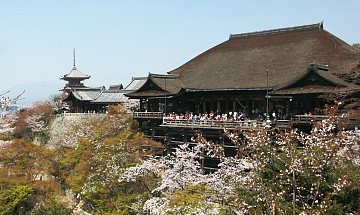
Day 5 - Kyoto to Tokyo
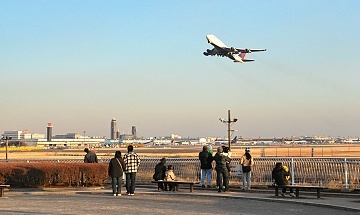
Day 6 - Depart from Narita Airport
Regular train tickets will be considerably cheaper than a Japan Rail Pass for this itinerary. Below are some sample budgets for the itinerary, excluding airfare. Find out more about the sample budgets and about the current yen exchange rates .
Questions? Ask in our forum .


The best Japan 5-day itinerary suggestions for first-timers
By: Author Sylvia
Posted on Last updated: February 27, 2024
Here you can find several Japan 5-day itinerary suggestions.
5 days in Japan is not much but if that is all the time you have to spend in this magnificent country, don’t look any further. We will share several options on how to maximize your spare time and see many impressive sights.
Our Japan 5-day itineraries will set you up for the perfect Japan short trip.
There is a really good chance that this post contains affiliate links. If you click one of them, we may receive a small commission (for which we are deeply grateful) at no extra cost to you.
Table of Contents

Japan itinerary 5 days
Below we share a few sample itineraries that give you an idea of what you could do and see when you have 5 days in Japan.
Option 1: Explore Tokyo and make a few day trips
Tokyo is a stretched-out city with several districts that vary in atmosphere from crazy and vibrant to charming and quaint.
Iconic Mt. Fuji is just a short train ride with the ultra-fast Shinkansen and if you’re traveling with your children you can throw in a day full of fun and broad smiles in magical Disney.
By using Tokyo as your base you won’t be losing too much time commuting and you can still experience the slim Shinkansen trains when you’re going to Mt. Fuji.
Day 1-2 Tokyo
First-time Tokyo visitors should not miss the following highlights:
- Shibuya crossing
- Akihabara Electric town
- Shinjuku Gyoen and Ueno Park
Tokyo Skytree
- Yoyogi shrine
- Asakusa – Sensoji temple
- TeamLab Borderless
You can use this great Tokyo itinerary to organize your days. If you are interested in visiting TeamLab Borderless and the Tsjujiki Fish Market, check out this 4 day Tokyo itinerary.
The best way to get around Tokyo is by using public transportation, either the trains or the subway. We have an extensive guide to introduce you to Tokyo’s public transportation options .

Where to stay in Tokyo
We advise you to stay in Shinjuku. By staying here you are close to many of Tokyo’s highlights. This is also a great choice for side trips as Shinjuku station offers many direct connections.
Here you can find more info about hotels in Tokyo. If you want to spoil yourself during your stay in Tokyo, take a look at this list of cool hotels in Tokyo.
If you prefer staying in an Airbnb in Tokyo, click here. If you are traveling with your family or a bigger group, take a look at our Airbnb selection targeting families.
Day 3-4 Day trips from Tokyo
If by now you’ve completely fallen in love with Japan’s capital we urge you to skip to option 4 where you spend 5 full days in this massive city.
If you rather escape the concrete jungle for a while we have just the thing to add some variation to your Japan short trip.
Here are some suggestions for day trips from Tokyo.

Visit the onsen town of Hakone
Hakone makes a great day trip if you love nature and want to catch a glimpse of Mount Fuji.
One day is enough to see the highlights but if you want to rush less, go hiking and relax in an Onsen we would advise you to stay at least 2 days. Here is all the information you need to spend one or two splendid days in Hakone.
Explore the area around Lake Kawaguchiko
Lake Kawaguchiko is the largest and easiest accessible of the five lakes of the Fuji Five Lakes resort.
Besides splendid views of Mount Fuji, it offers plenty of other great activities such as onsen, museums, cable cars, hiking trails, an amusement park, and much more.
Here you can find more info on what to do in Lake Kawaguchiko.

Make an organized day trip to Mount Fuji
Mount Fuji is on many Japan traveler’s bucket list.
You can go independently to Hakone or Lake Kawaguchiko as we have shown above but it’s also possible to join a group tour.
A group tour will take you to many viewing spots and along the way, your guide will tell you loads of interesting facts about the region. It may be less stressful than going independent as you don’t have to worry about public transport.
Tours are for sure a popular option shown by the sheer number of them that are available.
There are hundreds of tours but they all more or less come down to variants of a few popular routes.
Because there are so many it is kinda hard to choose the best one.
We had a look at the most popular routes and created this overview in which we list the pros and cons of these traveler’s favourites.

Indulge yourself in Tokyo Disneyland and Tokyo DisneySea
Kids will love Disney but even we as a childless family had a terrific day in this magical place. If all you want is a day of fun then Disney is the place to be.
There are two theme parks, Tokyo Disneyland and Tokyo DisneySea.
DisneySea is the bigger of the two and has more attractions aimed at an adult audience.
DisneySea is built around a unique concept unseen in other Disney parks around the world. The park was also awarded the Thea Award for its great decor.
Because we heard the raving reviews of DisneySea, and also because Tokyo Disneyland is similar to other Disneyland parks around the world, we opted to spend our day in the first.
We absolutely loved it. The park has some really good attractions and the design is one of the best we have ever experienced in a theme park. It was also fun to see how some Japanese completely dress up in the Disney magic.
Purchase your tickets here: Tokyo DisneySea ticket
How to get there
Take the JR Keiyo or JR Musashino lines to Maihama Station. This is fully covered by the Japan Rail Pass . In Maihama station you can change to the Monorail that will take you to the entrance of Disneyland or DisneySea.
Note that the Monorail is not included in the price of your entrance ticket and is only free for overnight guests to the park. You can also walk from the JR station to the entrance of the parks. For Disneyland, this would be the best option as the entrance is really close by and only a 5-minute hike. DisneySea would approximately be a 15-minute hike.
If you don’t want to take the JR train and the monorail you can opt for tickets with a transfer from Tokyo.
Purchase tickets with transfer: Entry ticket and transfer

Wander around Nikko
Nikko is also a great option if you want to escape the hustle and bustle of Tokyo.
The main attraction is the UNESCO World heritage Toshogu Shrine but Nikko is also home to the beautiful Nikko National Park.
This is the perfect place if you love hiking or just want to unwind in nature.
For a completely different experience, we would advise you to stay for 2 days in Nikko and spend the night in a traditional ryokan.
The JR Tohoku Shinkansen is the fastest option to reach Nikko. The train departs in Tokyo station or Ueno station and takes you to Utsunomiya where you change to the JR Nikko line. The journey takes about one hour and a half and is fully covered by the JR Pass.
A cheaper option is the limited express trains that leave from Shinjuku station.
These trains take two hours to reach Nikko, they are NOT fully covered by the Japan Rail Pass but are free to those who own a JR Tokyo Wide Pass or one of the JR East Passes.

Visit the Samurai town of Kanazawa
The Samurai city of Kanazawa is a great alternative to crowded Kyoto.
Kanazawa is home to the Kenrokuen Garden widely regarded as one of the “Top 3 Landscape Gardens of Japan.”
What makes the city special is that it not only has a geisha district but also a Samurai District. The Nagamachi Samurai District has been very well preserved and retains a lot of its original charm with earthen walls, winding stone paths, and water canals.
Several samurai residences have been restored to their yesteryear glory and can be visited.
The Higashi Chaya-Gai geisha district is in our personal opinion also one of the best of its kind. It showcases all the allure of old Japan without the crowds that you encounter in other places such as Kyoto and Takayama.
If you are wondering if Kanazawa is something for you, take a look at our Kanazawa itinerary.
If you want to see all that Kanazawa has to offer in a single day you can book this guided tour.
Read reviews and book: Private Kanazawa Tour
The JR Hokuriku Shinkansen goes from Tokyo to Kanazawa regularly and takes approximately 2.5 – 3 hours.
This train is covered by the JR Pass , as are most Shinkansen routes.
To know whether you can benefit from a Japan Rail Pass, click here.
Without a JR Pass, the Shinkansen will cost around ¥14,000 (~$130 USD).
This is the easiest route from Tokyo to Kanazawa as it takes you from the middle of Tokyo city directly to the middle of Kanazawa city, eliminating the need to navigate changing transport or checking for the most convenient stop.
The cheapest way to travel between Tokyo and Kanazawa (without a JR Pass) is via bus .
There are several buses going from Tokyo to Kanazawa, mostly taking around 7-8 hours.
These go throughout the day, including overnight. The price can be as low as ¥4000 (~ USD 35)up to around ¥8000 (~USD75).
Day 5 Tokyo
Spend your last day in Tokyo checking of all the things you still have on your bucket list.

Option 2: Tokyo and Kyoto
Our second sample 5-day Japan itinerary brings you 5 days around bustling Tokyo and mystic Kyoto.
This is a great itinerary if you want to get an impression of both the new and old Japan.
Similar to our first itinerary we spend the first day in the capital.
Have a look above for the things you absolutely shouldn’t miss and use our Tokyo itinerary to outline your sightseeing route.
Looking for the best places to visit in Tokyo, click here.
Day 3-4 Kyoto
Kyoto is with 32 million tourists per year Japan’s most popular tourist destination and there’s a reason why.
The city is jam-packed with more than 4000 historical temples and shrines.
As you’re wandering through the well-preserved streets of the old geisha district it feels like you moved back in time. The nearby Higashiyama district is a maze of narrow lanes all lined with wooden traditional buildings, some dating back to around 100 years ago.

2 days in Kyoto is not much but it is enough to visit a lot of Kyoto’s highlights. We’ve created this super-efficient Kyoto itinerary to maximize your time in this culture-rich city.
Although it is tempting to retire to your room after a long day exploring this mystic city, there is a lot to be discovered in Kyoto at night. From illuminated shrines and temples to Kyoto night tours such as this walking tour around Gion , the famous geisha district, and more.
That’s why we advise you to spend a few extra hours in the city. We assure you you won’t regret it.
Where to stay in Kyoto
With only 2 days in Kyoto, downtown Kyoto is a great place to stay.
By staying in this area you are close to some famous highlights such as the geisha district, the Kiyomizu-Dera Temple, the Philosopher’s path, the Silver Pavillion, the Kodai-Ji Temple, etc.
Here you can find more info about the best areas to stay in Kyoto together with some great hotels.
We also have some suggestions if you prefer staying in an Airbnb .

The high-speed Shinkansen or “bullet train” provides the fastest transport service between Tokyo and Kyoto.
If you have a JR Pass , you can ride the Hikari Shinkansen at no additional cost. The journey from Tokyo Station to Kyoto Station takes 2h40. The Nozomi Shinkansen is faster and rides more frequently but is not covered by your JR Pass.
You could also opt for the Kodama Shinkansen but this would add an extra hour to your journey.
If you do not have a Japan Rail Pass then the fare will be 13,080 yen one way with an unreserved seat.
Spend your last day exploring some of Tokyo’s districts that you couldn’t visit during your first days in the city.

Option 3: Osaka and Kyoto itinerary 5 days
Many tourists root for Kyoto and absolutely want to visit the city when in Japan. If you want to avoid the 2.5-hour train ride back and forth from Tokyo to Kyoto you can opt to combine your visit with Osaka instead of Tokyo.
Osaka is Japan’s second-largest city and has a big international airport. You should have no problems finding flights to Osaka’s Kansai airport.
Osaka offers a great number of tourist attractions such as Dotonbori, Osaka Castle, the Umeda Sky Building, and Universal Studios but has the advantage that it is slightly more compact than Tokyo.
Osaka can be explored in 2 days without feeling too rushed. That leaves 3 days to discover Kyoto or you could add a day trip to Universal Studios or Nara.
Day 1-2 Osaka
Did you know that Osaka is also known as the “Nations Kitchen”? If you are a foodie, you should put visiting Osaka on top of your Japan bucket list.
Here’s a detailed Osaka itinerary for 2 days to help you with your planning.
Osaka is also known as Japan’s Kitchen. For an overview of the best food tours in Osaka, click here.
- Where to stay in Osaka
Our advice would be to base yourself in one of Osaka’s central districts. By staying in this area you will save a lot of time on train and subway rides.
The best district is probably Kita , a major business and retail hub with lots of restaurants and entertainment, as well as several tourist attractions. It’s also where the JR Osaka train station is located which makes it very convenient to commute between Osaka and Kyoto and for a day trip to Nara. Here’s more information about staying in Kita.
Here you read about the other districts in Osaka together with some great hotel recommendations.
Didn’t find what you were looking for? Check out our other Osaka accommodations posts:
- Best ryokan in Osaka
- Best ryokans in Osaka with private onsen
- Coolest hotels in Osaka
- Best Osaka hotels with onsen
- Best capsule hotel in Osaka

Day 3-4 Kyoto
You can spend your third and fourth days exploring the highlights of Kyoto. You can use this 2-day Kyoto itinerary to plan your days.
This itinerary is jam-packed with Kyoto’s major highlights and may feel a little rushed.
If you want you can spread it out across 3 days but if not you have time for a day trip on day 5.
Day 5 Day trip from Kyoto or Osaka
There are plenty of amazing day trips you can take from Kyoto and Osaka.
Here are a few examples.
Universal Studios
If you love theme parks Universal Studios is the place to be. The park makes a great day trip for both young and old.
Harry Potter fans will indulge in the Harry Potter section which is done with such an eye for detail that you might think that you accidentally ended up in the movie itself.
The park is huge and can be busy. If you want to be able to do all the rides in 1 day we highly recommend paying the extra fee for the Express Passes. These express passes need to be bought separately from the entry tickets. A limited number of express passes is available for each day which is why we recommend buying them in advance as they may be sold out on the day itself.
How to get there:
Take the JR Osaka Loop Line towards Nishikujo Station and switch to the JR Yumesaki Line to Universal City Station. Once you exit the train at Universal-city station you just need to follow the crowds through the shops to the entrance of the park.
Follow a Japanese cooking class
This is not a real day trip but definitely, an experience that can transport foodies to another dimension.
Japanese food is both healthy and tasty so why not follow a Japanese cooking class , there’s no better place to do this than the city nicknamed the nation’s kitchen.

Visit Japan’s original capital, Nara
Nara, Japan’s original capital, makes an excellent day trip. Here you can find the impressive Todaiji Temple, the largest wooden building in the world.
It is a popular UNESCO World Heritage site. Inside the building, you will find a large bronze, Buddha.
Kids will also love the free-roaming deer.
If you have a Japan Rail pass, you can use the JR Yamatoji line. The trajectory is completely covered by the Japan Rail Pass, as well as the Kansai area pass, and takes about 50 minutes.
If you don’t have a JR Pass you might prefer the Kintetsu Nara Line. The Rapid Express Kintetsu train reaches Nara in only 39 minutes and the Kintetsu station is more centrally located in Nara.
Kintetsu has a faster limited express train but it costs twice as much and it only saves you 5 minutes.
The Kintetsu trains leave from Osaka Namba station.
Tickets for the JR trains ( without having the JR pass) as well as the Kintetsu trains are 560 yen.

Option 4: Spend 5 days in Tokyo
Tokyo, Japan’s capital has so many faces and different districts that you can spend 5 days in the capital itself without any problems.
This option is for you if you don’t fancy relocating and don’t feel bad about missing culture-rich Kyoto because you know you will return to Japan one day.
Get ready for 5 thrilling days in Japan’s capital.
Day 1: Shinjuku
Shinjuku is one of Tokyo’s most colorful districts.
Highlights are Golden Gai (well-preserved narrow alleys with small eateries near Shinjuku station, the world’s busiest train station), Kabubicho (Tokyo’s crazy and popular nightlife district), the famous Robot Restaurant , the Tokyo Metropolitan Government building, and the green lung of the district, the huge Shinjuku Gyoen Park.

Shinjuku Gyoen Park
Start your first day in Japan by exploring the gigantic Shinjuku Gyoen Park. This is one of Tokyo’s biggest and most popular parks.
If you want to read more about the park, click here .
This is one of the best spots to watch the cherry blossoms in Tokyo if you are here in the Sakura season.
Foresee around 2-3 hours to explore the park at ease.
From the Park, it is a small walk to the Hanazono Jinja Shrine , a small Shinto shrine.
Next, you can head to Piss Alley to have lunch.
Piss Alley consists of 2 narrow alleys. Both are lined with loads of small and cheap restaurants. As you walk through Piss Alley it will feel as if you have stepped back in time. Both alleyways have been untouched for ages and exude the charm of yesteryear.
This is the perfect place to try Yakitori ( skewered chicken ) while enjoying the vibe of old Japan.
Piss Alley is close to the West Exit of Shinjuku train station. The two alleys run parallel to the tracks. You will see the entrance on your right if you face the Shinjuku Dai-Guard train bridge. Shinjuku station is served by several JR lines and both Tokyo Metro and Toei lines.

Continue your first day in Tokyo by heading to Kabukicho, Tokyo’s famous nightlife district. This is a great place to spend the rest of your day and if you want you can party well into the wee hours.
One of the most famous symbols of Kabukicho is the giant Godzilla, which is watching over the Shinjuku Gracery Hotel.
Also in Kabukicho is the Samurai Museum, a great place to learn more about these old rulers. They have lost their privileges but the memory and weaponry are still very prominent in today’s culture.
Shopping lovers should head to the gigantic discount shop, Don Quijote. This gigantic discount shop sells everything. It’s also a great place to buy your souvenirs.
End your first day in Tokyo by attending a performance at the famous Robot Restaurant which makes a fun night out.

Day 2: Shibuya and Harajuku
A visit to Tokyo wouldn’t be complete without calling on the famous Shibuya crossing. It’s an impressive sight to watch 1000 people crossing a street at a time.
For the best views, head to Starbucks or to the mostly less crowded L’occitane café.
Most people only have an eye for the masses flooding the streets with every change of the traffic light and miss the statue of Japan’s most famous dog Hachiko.
The statue can be found near the exit of the subway station but is often lost in the crowds.
Shibuya also houses some great shopping possibilities. Several large department stores can be found within a few minutes’ walk of Shibuya station. The latest addition is Shibuya Scramble Square, it is the tallest building in Shibuya and offers 16 floors of shopping pleasure and an observation platform on floor 46.
Shibuya station is right underneath this crossing. Take the Hachiko exit.

The next stop on our Tokyo itinerary is Harajuku.
Harajuku is the center of Japanese fashion and Kawaii culture. It’s a great place to spend an afternoon.
One of the best things to do in Harajuku is to stroll down the busy Takeshita Dori street. Here you will find lots of fashion and vintage shops. This is also the place where you can taste plenty of weird-colored food such as rainbow cotton candy, candy floss, sweet crepes, etc
If you are more into high-end fashion Omotesando is the place to be. This is where you will find Haute couture clothing from brands such as Dior and Louis Vuitton.
When you have enough of the crowds in Harajuku, continue your way to Yoyogi Park. It’s a great place to relax after a busy day.
Meiji-Jingu Shrine
Here you will find the impressive Meiji-Jingu Shrine.
This is the largest and most famous shrine in Tokyo. You enter the shrine by walking under a huge wooden Torii gate which leads to a forest of over 100.000 trees. Take your time to wander around the peaceful shrine complex.
If you are lucky you might see a traditional Shinto wedding since this is also a popular wedding venue.
Meiji-Jingu shrine is a short 10-15 minute walk from Harajuku station

Kawaii Monster Café
End your second day in Tokyo at the famous Kawaii Monster café known for its colorful and crazy design.
The food is expensive and isn’t too good but if you are looking for a colorful, fun, and unforgettable experience, this is the place to be.
It’s also a great place to take Instagram-worthy pictures.
You can walk in and see if they have availability but if you want to be sure of a seat we advise you to book tickets through their official partner Voyagin. Here you can check the different packages.
Note that if you choose the admission only option you are still required to order 1 drink and 1 food item per person.
Read reviews and buy your tickets: Kawaii Monster Café

Day3: Asakusa, Ueno park and Tokyo Skytree
Start your third day in Tokyo by exploring Asakusa. Here you can find everything from traditional shopping to temples.
One of the main attractions of Asakusa is the Sensoji Temple, Tokyo’s oldest and one of the busiest temples.
Take your time to wander around.
Surrounding the area are several shopping streets with various restaurants and shops.
Many people unfortunately skip the traditional Japanese Denboin garden. This zen garden is a great place to escape the crowds that flood the Asakusa temple, certainly if you are visiting Tokyo in March or April.

Museum lovers should head to Ueno Park, Tokyo’s biggest cultural center. Here you can find the Tokyo National Museum, the National Museum of Nature and Science, the Tokyo Metropolitan Art Museum, etc.
Ueno Park is also home to Ueno Zoo, Japan’s oldest zoo.
But even if you aren’t much into museums the park is still a great place to unwind after the busy Sensoji Temple.
Ueno park is also where you can watch Japanese have their Hanami, which translates to Cherry Blossom viewing party.
When we visited the park during the cherry blossom season it was jam-packed with people who were having picnics with their friends.
Ueno station is a major hub of JR and is also served by the Ginza and Hibiya metro lines.

End your third day in Tokyo at the Tokyo Skytree, Japan’s tallest structure. Besides several restaurants, there are also shops and an aquarium.
From the observation decks, you will have spectacular views of Tokyo and the surrounding area. There are 2 main observation decks to choose from.
The lower deck at 350 meters spans 3 levels with broad windows offering panoramic views. Here you can also find a restaurant and a café.
The other platform, The Tembo Galery is 100 meters higher.
You can choose to buy a ticket to visit only the first observation platform or both.
The Tokyo Skytree is a great place to visit around sunset as it gives you the chance to see the skyline during the day and the thousands of city lights when the sun has set.
Note that the lines are often very long so we recommend you to book skip the line tickets. These are currently cheaper when bought in advance than on-site.

Day 4: Tokyo Disney
Tokyo Disney consists of 2 parks Tokyo Disneyland and Tokyo DisneySea.
Tokyo Disneyland is comparable to the other Disney parks you can find around the world.
Tokyo DisneySea is bigger and more adult-focused.
Tokyo Disney is also a great place to watch how the Japanese embrace Disney magic by completely dressing up.
Since Tokyo Disney is often very crowded we would advise you to make use of the Tokyo Disney Resort app. You can use it to check wait times and get your free fastpasses for the next attractions.
Note that the Monorail is not included in the price of your entrance ticket and is only free for overnight guests to the park. You can also walk from the JR station to the entrance of the parks. For Disneyland, this would be the best option as the entrance is really close by and only a 5-minute hike. DisneySea would approximately be a 15-minute hike.

Day 5: Akihabara and Imperial Palace
If you are into anime and manga you should not skip Akihabara also nicknamed Electric City and seen as the center of Japan’s anime culture. But even if you aren’t that much into Anime it’s a great place to spend a few hours.
Akihabara is where you can find all kinds of electronics and gadgets.
It may be worthwhile to compare prices in advance if you plan on buying a new camera or mobile phone but even if you don’t fancy any new electronics it’s a great place for some window shopping to see the wide selection of cool gadgets that are for sale.
Several shops offer tax-free shopping, make sure to bring your passport!
Not all electronics are guaranteed to work in your home country due to the voltage difference. When in doubt ask a sales person or stick to the larger electronics stores that usually have a selection of international models.
The manga stores are also fun to snoop around. You can spend hours in just one store.
They are stuffed with everything that relates to mange from comic books to DVDs and action figures. One of the more famous ones is Mandarake.
Akihabara is also home to the famous Maid cafés. It’s a fun but expensive place to have a drink.
If you don’t fancy paying around 15 USD for a simple drink and the privilege of seeing a maid you just have to keep your eyes peeled while walking around Akihabara.
Chances are you will see maids walking through the streets with flyers to promote their cafés.
Take the JR train to Akihabara station.
This station is also served by the Hibiya metro line.

Imperial Palace
Depending on how much time you still have left before returning to the airport, you may want to hop on the JR Yamanote train and head 2 stops south to Tokyo Station.
A 10-minute walk from Tokyo station is the Imperial Palace.
The Imperial Palace is a quiet place in the center of busy Tokyo.
It is also a big and beautiful green lung for the city. The East Gardens of the palace, the Kokyo Gaien National Garden, and Kitanomaru Park are open to the public all year round.
The inner grounds are only open to the public during the Sakura season, on December 23rd, and select other occasions.
For the exact dates, take a look at the website of the Imperial Household Agency.
The rest of the year the inner grounds can be visited with a guided tour but the buildings remain closed to visitors.
Daily two tours are conducted in both Japanese and English. You can subscribe to these tours online .
Take the JR train to Tokyo station.
This station is also served by the Marunouchi metro line.
Japan travel tips
Let us finish this post by answering some general questions you may have.
Are 5 days in Japan enough ?
You may already have guessed that 5 days will not allow you to discover the whole of Japan. You can easily spend a couple of weeks or months in this striking country without getting bored.
These itineraries will help you maximize your time when all you have is 5 days. By looking at our below itineraries you will notice that 5 days is all you need to get a good first impression. And believe us, it will be love at first sight.
All of our itineraries focus on 1 or max 2 different cities to avoid losing too much time relocating.
How do I prepare for my first Japan trip ?
To help you plan an epic Japan trip, you can follow our step-by-step guide on how to plan your Japan trip
We also have a great Japan travel planning document that will help you along every step of your preparations to create a perfect and stress-free trip.
If you don’t want to organize your trip yourself, you could always opt for an organized 5-day Japan tour package. These tours are arranged in such a way that they maximize your time and show you the most in as little time as possible.
We prefer to travel independently but we also always stay for several consecutive weeks in one country which gives us ample time to discover everything at ease. We truly believe that these organized tours can be a great alternative if you don’t have that amount of time and still want to squeeze in as much as you can.
Here you can find an overview of the best 5-day Japan package tours.
Will this be your first time in Japan? We know some people feel a little overwhelmed when traveling to Japan for the first time so we brought together a lot of interesting tips for first-time travelers to Japan.
How much should I budget for a trip to Japan ?
Although Japan isn’t as cheap as some other Asian countries we thought it was still pretty affordable.
We carefully tracked what we spent and made an overview of our expenses on food, lodging, and transportation.
You can find all you need to calculate the average cost for a Japan vacation here.

How to get around Japan ?
We are fond of self-drives and love the freedom that comes with a rental car but you don’t need one in Japan. And certainly not for these 5 days Japan example itineraries that focus mostly on Japan’s megacities where a car is more of a liability than an asset.
The best way to get around Japan is by train. Unless you want to discover far-out places you will have no problem getting there by train.
Depending on what you want to see and do you might benefit from taking a Japan Rail Pass.
Here’s more info on the different passes that are available , including how you can calculate the cost of your journey to see if you benefit from a pass or not.
TIP : Do you need more help with your train journey? Our Japan travel planner includes a train planner that explains in great depth how to plan your route and how to know if you will benefit from the JR pass or not.
Do you need travel insurance for your trip to Japan ?
The short answer is yes.
Although chances are small that you will encounter any problems while traveling in Japan, it’s better to be safe than sorry.
Here you can find more info about the best travel insurance for your Japan trip.

We hope that these example itineraries show you that, although a 5-day trip to Japan isn’t long, it can still offer an incredible experience.
Whether you choose to stay in Tokyo and make day trips, want to see Mount Fuji, relax in an onsen, visit the cultural capital Kyoto, or wander around crazy Dotonbori in Osaka, chances are it will be an experience unlike anything else you have seen and one before.
Our 5-day Japan itineraries will help you to have an unforgettable Japan vacation.
Which Japan itinerary is your favorite?
Here you can find our other Japan Itineraries:
- Japan 7-day itinerary
- 14 days in Japan
- 21 days in Japan
Japan Two Week Itinerary: The Best of Japan!
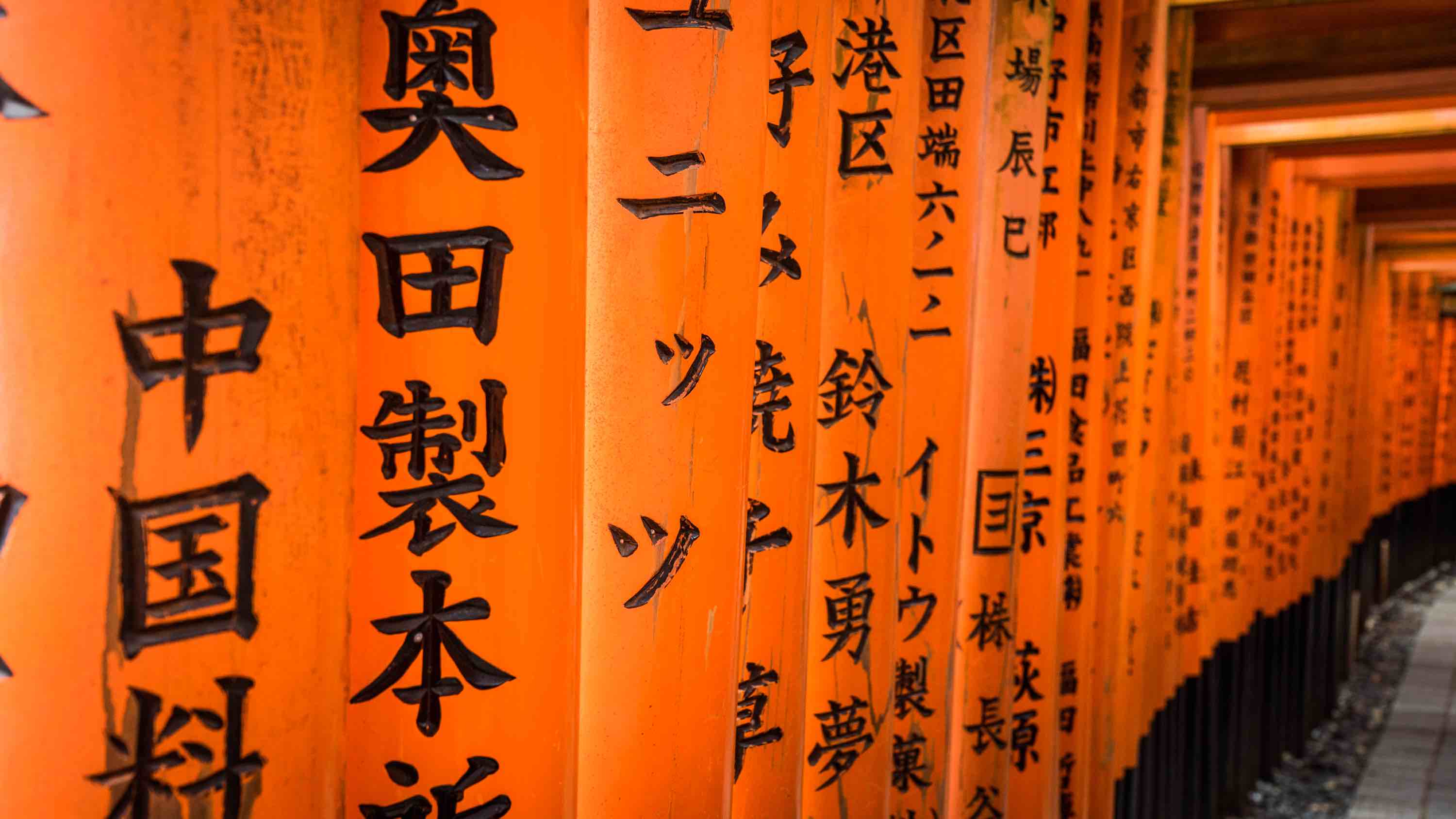
Struggling with your Japan itinerary? I feel you! If it’s your first time to Japan, chances are you’re feeling overwhelmed with where to go. Here is a simple Japan two week itinerary to help plan your trip to this fascinating country!
I’ve been to Japan twice and in both occasions it felt like truly special and enriching experiences.
I indulged in the delicious and rich food. Fell in love with their fascinating but also wacky culture. Hiked mountains, relaxed in onsens , and did my fair share of temple-hopping. I learned a ton about the way Japanese live, act and think and honestly, can’t wait to be back!
Japan Itinerary for a two-week trip
This Japan itinerary starts in Tokyo with a day trip to Kamakura . Then it’s headed up north to the mountains to visit Takayama and Shirakawago . Later, arrives Kyoto before venturing west to Osaka and Hiroshima . Finally, a day trip to magical Nara .
Japan two week itinerary for first-timers
- Tokyo (4 nights)
- Kanazawa (1 night)
- Takayama (2 nights)
- Kyoto (4 nights)
- Hiroshima (1 night)
- Osaka (3 nights)
Japan Itinerary On A Map
To make things easier, I’ve put all these places on this custom map I used during my trip. It also contains restaurants, main sights and even a list of wacky stores and places to visit.
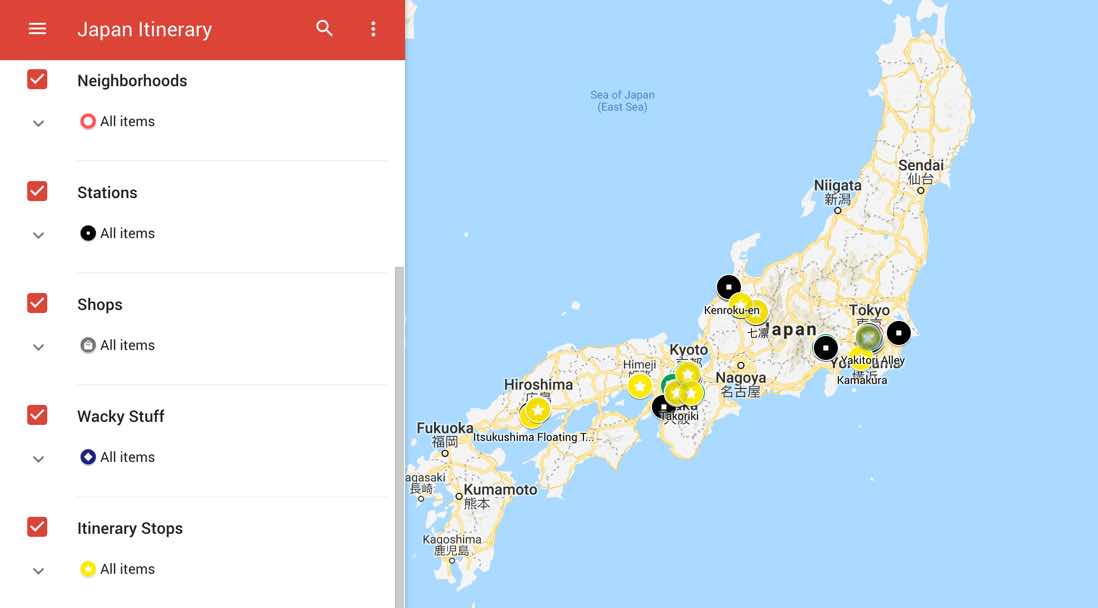
The top-rated places to stay in Japan
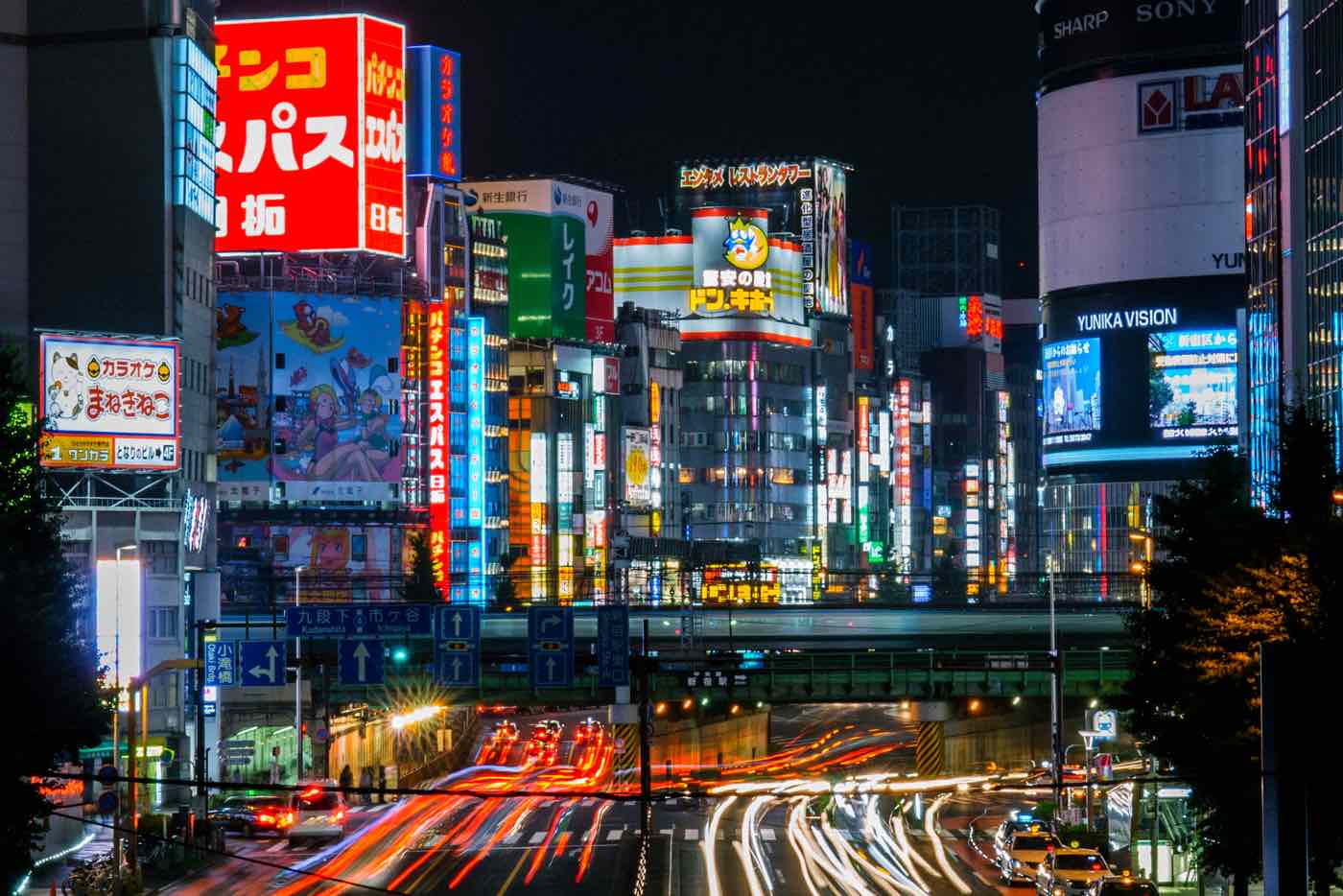
First stop: crazy and energetic Tokyo !
No matter what other big cities you’ve visited – London , Dubai or even New York City – nothing can really prepare you for Tokyo. With a suburban area of over 35M people and home to the largest train stations in the world, I felt tiny. Extremely tiny.
The great thing about Tokyo is that is extremely efficient to get around. Once you start going with the same flow of locals, it’s very easy to go from the massive electronic department stores of Akihabara to the vibrant neon district in Shinjuku . Plan at least 3/4 full days to have the chance to visit the different sides of Tokyo.
What to visit in Tokyo
You can easily spend a whole month in Tokyo without getting bored. Or you can just feel urban anxiety and ready to leave after 2 days. That’s the thing about Japanese cities – they are INTENSE, up to you to decide if you like or not.
For a first-timer, make sure you go to Senso-ji Temple complex . Temples are more impressive elsewhere in Japan, but this is a great first taste and the Asakusa neighborhood turned out to be one of my favorites in Tokyo!
Quite frankly, Shibuya – the “Japanese Times Square”, whatever that means – intersection was slightly underwhelming to me but Shinjuku district blew my mind.
It was in Shinjuku , my very first night in Tokyo, that I realized one can get sucked into the wackiness of Japanese culture pretty easily. Suddenly, I was inside a vortex of delicious ramen , cartoons everywhere, deafening music, giant skyscrapers, and neon lights of all colors. Got to admit I loved it.
Places to visit in Tokyo in a first-time visit 🇯🇵
- Senso-ji – Suddenly, a wave of old traditions immerses the concrete jungle of Tokyo. Take some time to find your luck by drawing omikuji .
- Shibuya crossing – Iconic but slightly underwhelming to me. Go to the nearby Starbucks for the best view (you’ll need to order something).
- Akihabara – A paradise for gamers and electronic geeks, but there’s something for everyone here. Retro lovers should pay a visit to Super Potato shop (I got a super cool Super Mario card deck!)
- Omoide Yokocho – Alley specializing in (really) tiny yakitori restaurants. Say osusume to get chef’s recommendations.
- Shinjuku – The beating heart of Tokyo with thousands of shops, restaurants, bars and arcades to get lost in.
- Meiji Jingu Shrine – Beautiful temple in the middle of a park halfway between Shibuya and Shinjuku.
- Tokyo Government Building – No need to queue up in Tokyo Skytree for the best views of the city. Head straight to the 45th floor, no entry fee!
- Harajuku – The epicenter of the kawaii culture. Lots of animal cafés, even though there are strong reasons to avoid them .
- TeamLab Borderless – One of the most fantastic modern art museums (¥3200 entry fee) I’ve been. Huge digital exhibits – think LEDs and projections – in a variety of scenes. Neat material – check this out !
Best areas to stay in Tokyo
Basically anywhere close to the circular JR Yamamote Line is a good bet. You can get to any area of the city efficiently. Shinjuku and Shibuya are popular areas to stay in, with a lot to see, eat and do but can also be the most expensive. Ginza and Tokyo Station are extremely convenient transport-wise but lack the fun factor in my opinion.
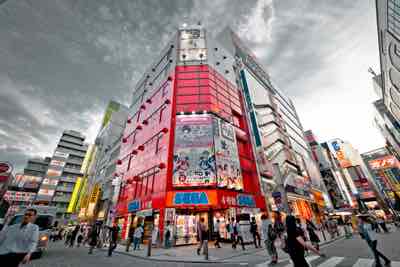
Where to stay in Shinjuku, Tokyo, Japan
Check out this pre-filtered list of the highest-rated places to stay in Shinjuku area in Tokyo.
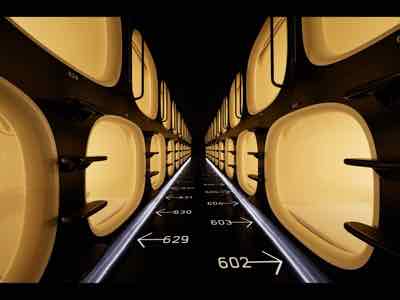
Nine Hours Capsule Hotel, Tokyo
Looking for an experience straight out of a sci-fi movie. This is it.
I stayed in Shin-Okubo area, one stop north from Shinjuku on the JR Yamamote Line. Close enough to everything, but felt good coming back home in a quieter – for Tokyo standards – part of the city.
In this area, I recommend staying in the neo-futuristic capsule hotel Nine Hours or the charming Oyado Cocochi .
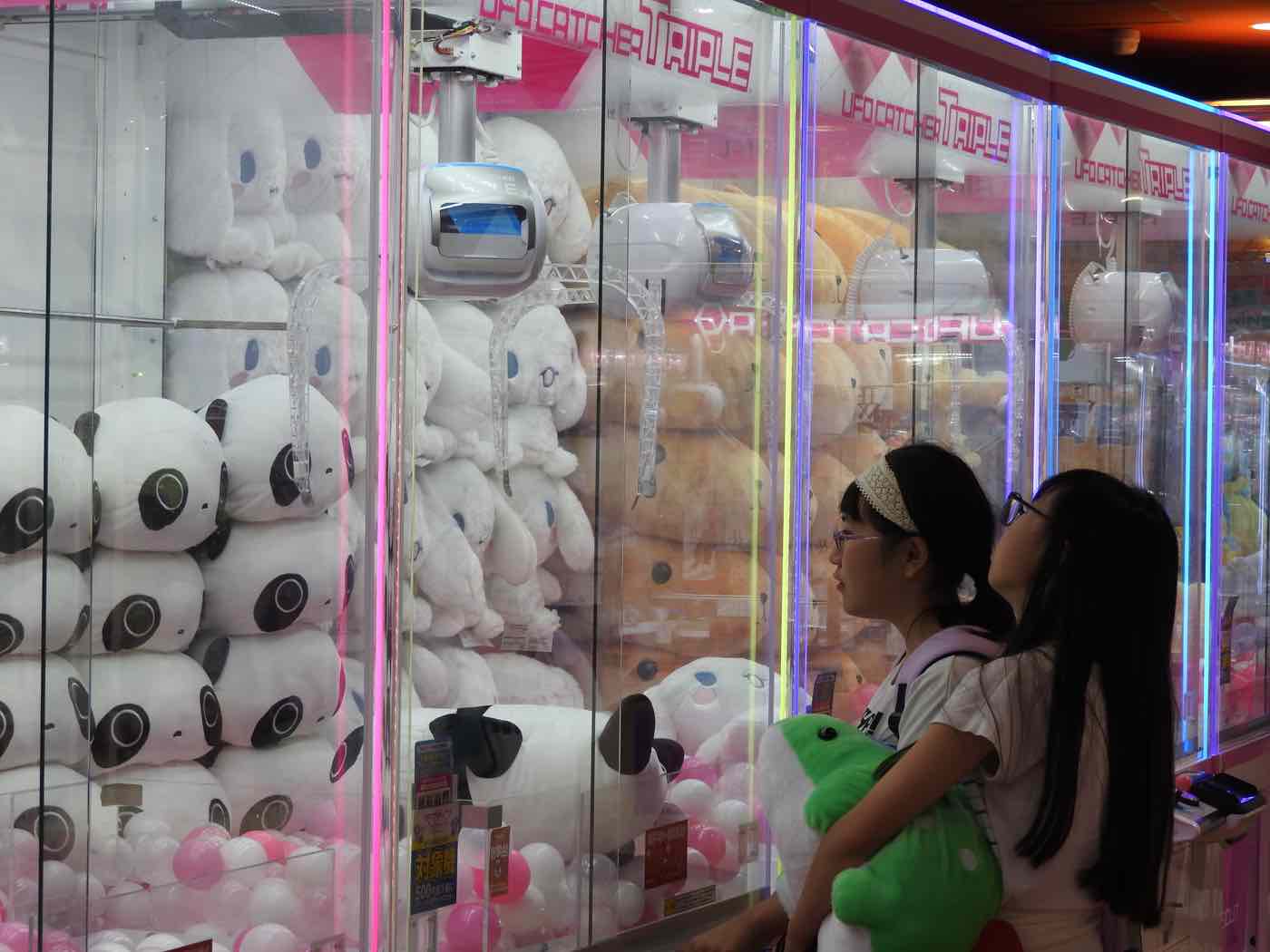
The best food experiences in Tokyo
Tokyo is a true paradise for foodies with thousands of great restaurants serving whatever you’re ready to try, from low-cost ramen places to 5-star Michelin restaurants.
Looking back, my best food experiences in Tokyo were:
- Uobei Shibuya – Sushi delivered to your seat in cute little bullet trains. Ridiculously cheap.
- Standing Sushi Bar – order your sushi pieces directly to the chefs. Incredible experience and a cheaper alternative to Jiro’s restaurant, the most expensive in the world.
- Coco Ichibanya – recommended to me by a local. Definitely a delicious and unique curry, but gotta say y tummy wasn’t a big fan.
- Ichiran – Order from a ticketing machine, get served on booths without seeing the chef or waiters. Slightly disturbing experience, but hey, they nailed on what it matters the most: delicious hakata ramen .
- Tsunahachi – Great place to try tempura in Tokyo.
- 7/11, FamilyMart or Lawson – Sounds weird but egg salad sandwiches and/or pancakes with maple syrup/butter inside these convenience stores are surprisingly amazing value.
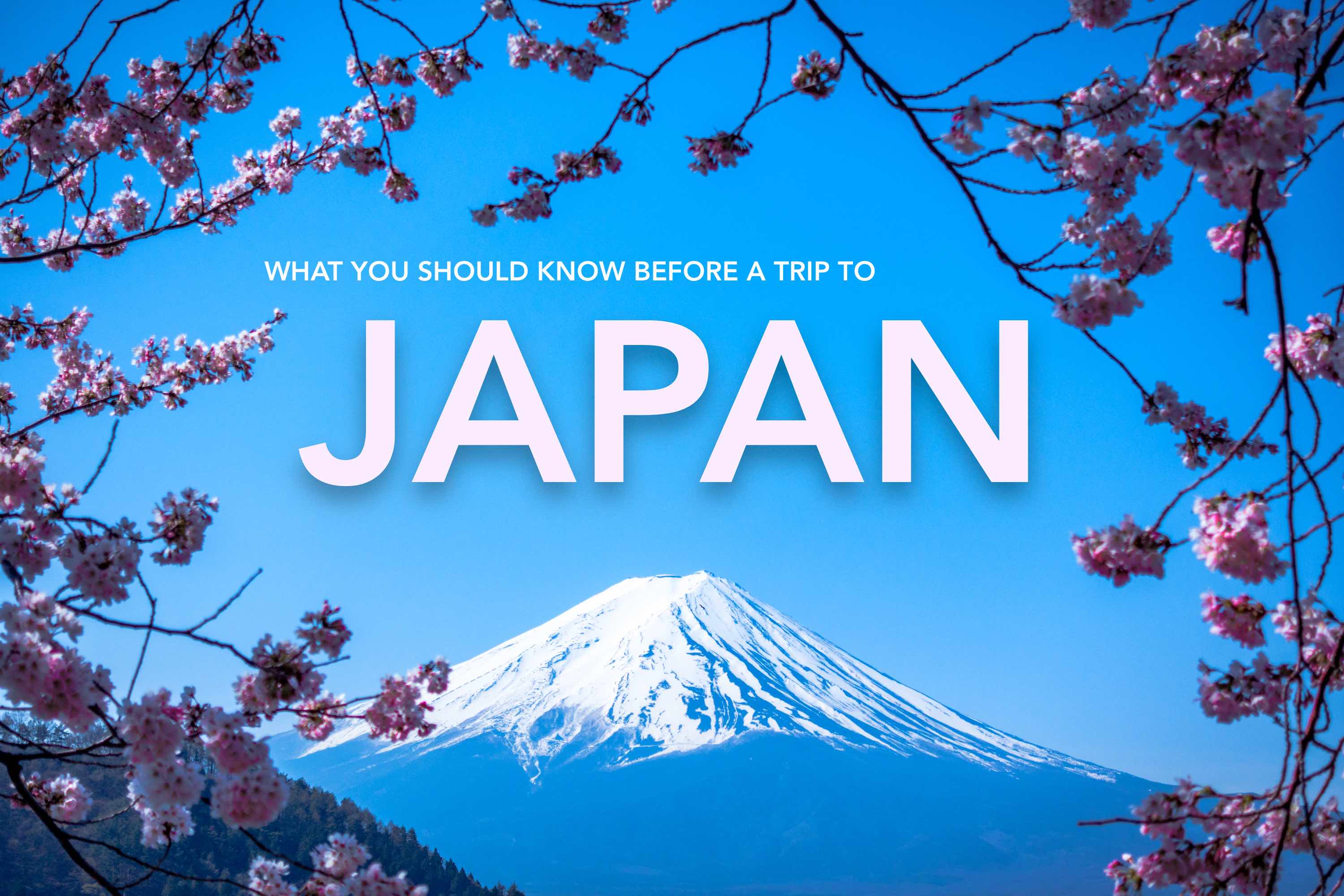
34 Essential things to know before visiting Japan
These tips are bound to give you extra peace of mind on your travels. 34 tips to help you make the best out of your Japan trip!
Time for the first bullet train ride! Shinkansen trains from Tokyo to Kanazawa (duration 2h30) depart from both Tokyo Station and Shinjuku . Grab a bento box or sushi tray from one of the stores. Don’t get late though – these trains leave BY THE SECOND and don’t wait for anyone.
Like everything else in life, we got to pick our battles. So I decided to skip Kanazawa entirely and used it only as a quick night stop before getting to Shirakawa-go and Takayama the following day.
If you have some time in Kanazawa, definitely head to Kenroku-en garden, one of the 3 Great Gardens in Japan and to the Nagamachi Samurai district , albeit I’ve heard Takayama’s old town is more impressive.
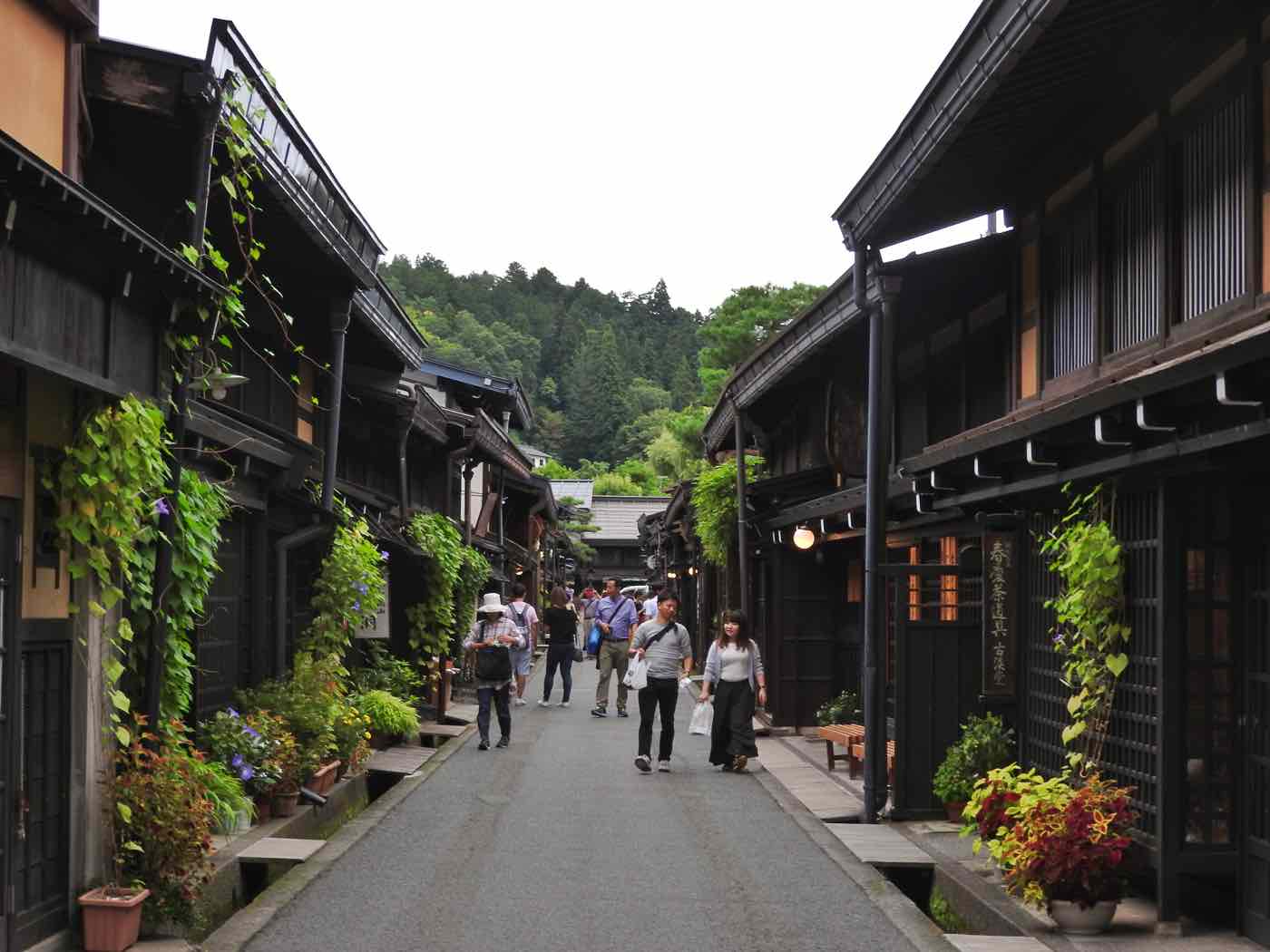
In the heart of Gifu’s mountain region, Takayama is a sneak peek into the past. The black wooden merchant houses in downtown are extremely well-preserved and date back to the Edo Period (when Japan was essentially isolated from the rest of the world).
Adding Takayama to your itinerary is giving yourself a chill pill. The pace of life here is very different than big cities and it’s a great opportunity to see a glimpse of a more authentic and rural Japan. And to stay in a traditional ryokan !
What to do in Takayama
The highlight of Takayama is definitely the well preserved old town, a series of streets with 17th-century houses. Today these are mostly shops and restaurants and trust me: a fully black street is quite a unique sight!
Rent a bike and go to the Hida Folk Village . This open-air museum is filled with traditional wooden houses and huts that were brought over from elsewhere in the Hida mountain region. Feels like a remote village, smells like an open forest, but it’s, in fact, a museum.
Oh, and of course, the food. The Morning Street Market, held daily on the riverside until noon sells not only arts and crafts but local foods and snacks worth to try. And don’t leave Takayama without trying the local Hida beef. The meal I had in Kyoya, consisting of Hida beef with mountain vegetables, in a delicious miso sauce, was absolutely delicious!
Where to stay in Takayama
Ryokans , authentic Japanese guesthouses, can be very expensive, but they are a must-do in Japan. And if you have to pick a place on this itinerary to do it, go for Takayama .
Family-owned Sumiyoshi Ryokan was by far the best place I’ve stayed on my whole trip. The best compliment I can give is that we were treated like true family members.

Sumiyoshi Ryokan, Takayama, Japan
They’ll dress you in a traditional kimono , give you dinner and breakfast inside your room. There’s also free access to a private onsen that is a great idea after a day of walking.
Just a 2-min walk from Takayama’s sunday street market and the old town area.
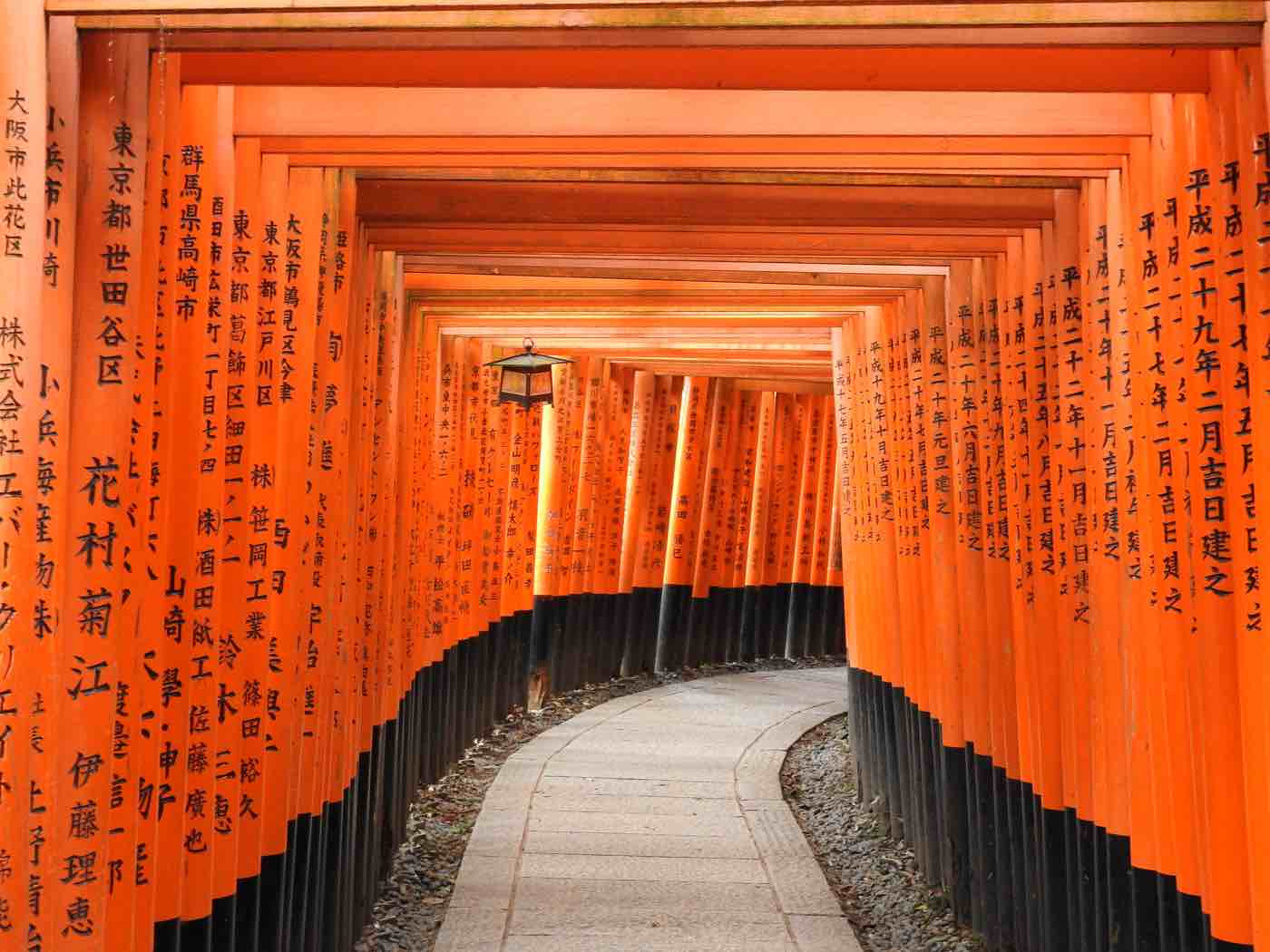
Now, Kyoto . Maybe it was all those dreamy Instagram posts with temples, forests, and cherry blossom trees, but Kyoto surprised me by being a much bigger metropolis than I anticipated.
If first-time travelers to Japan have to visit only place in the country, this is it. The capital of Honshu is a showcase of everything Japan has to offer, from imperial palaces and Buddhist temples to lush forests and traditional geisha performances.
Plan at the very least 3 full days in Kyoto to have the chance to take it all in.
What not to miss in Kyoto
There is no shortage of places to visit and mesmerize in Kyoto . My favorite experience was Fushimi Inari , a set of over 10,000 Shinto shrines that lead the way to the top of a sacred mountain. It’s a special place beaming a special kind of energy in the air so I recommend do it as early as possible to skip crowds. By 9am, the path starts to get impossibly busy and the experience starts to get more stressful than relaxing.
Same with Arashiyama Bamboo Grove . The pathways that go through this natural bamboo forest are incredibly scenic and camera-friendly but herds of tourists in front of you can quickly take away the beauty of the place. Come very early – you don’t want to ruin the cool breeze and chirping of birds.
Other highlights in Kyoto include (LOTS OF) temples, Kiyomizu-dera and Kinkaju-in being the most iconic. I also definitely recommend a visit to Gion, the historic geisha neighborhood, and to the main market in town: Nishiki Market . It’s a great chance to indulge in into unique Japanese delicacies.
Places to visit in Kyoto in a first-time visit 🇯🇵
- Fushimi Inari Taisha – The more you go up the mountain, the less crowded it will be and the more special your experience. Arriving before 9am makes a huge difference.
- Gion – The iconic geisha district. Now, you’ll likely see tourists dressed up in kimonos, but real-life geishas are very hard to spot. They mysteriously appear around dusk on the short path from their taxi to their performance venues. Overall they don’t like to be disturbed or photographed, respect that!
- Arashiyama Bamboo Forest – The pathway is shorter than I expected (only about 10-15 min), but this a delight to all the senses. Come as early as possible and bring a wide-angle lens camera, if possible.
- Kinkaju-in (Golden Pavillion) (¥400 entry fee) – Temple covered in freaking GOLD LEAF. It’s stunning from every angle or time of the year. In between the few moments the sun peeked through the clouds, the whole structure shined beautifully.
- Kiyomizu-dera – You’ll need a significant walk uphill to get there but the view overlooking Kyoto’s valley is stunning and the bright orange architecture is quite a statement.
- Arashiyama Monkey Park (¥550 entry fee) – After a 20-min uphill walk you’ll be rewarded with a park with dozens of monkeys – yes, adorable babies included – and open views over Kyoto.
- Nishiki Market – In the heart of Kyoto’s downtown, this massive market is filled with food stalls with the wackiest delicacies. Try tako tamago – baby octopus with a stuffed quail egg head.
Also check this comprehensive list of the best things to do in Kyoto .
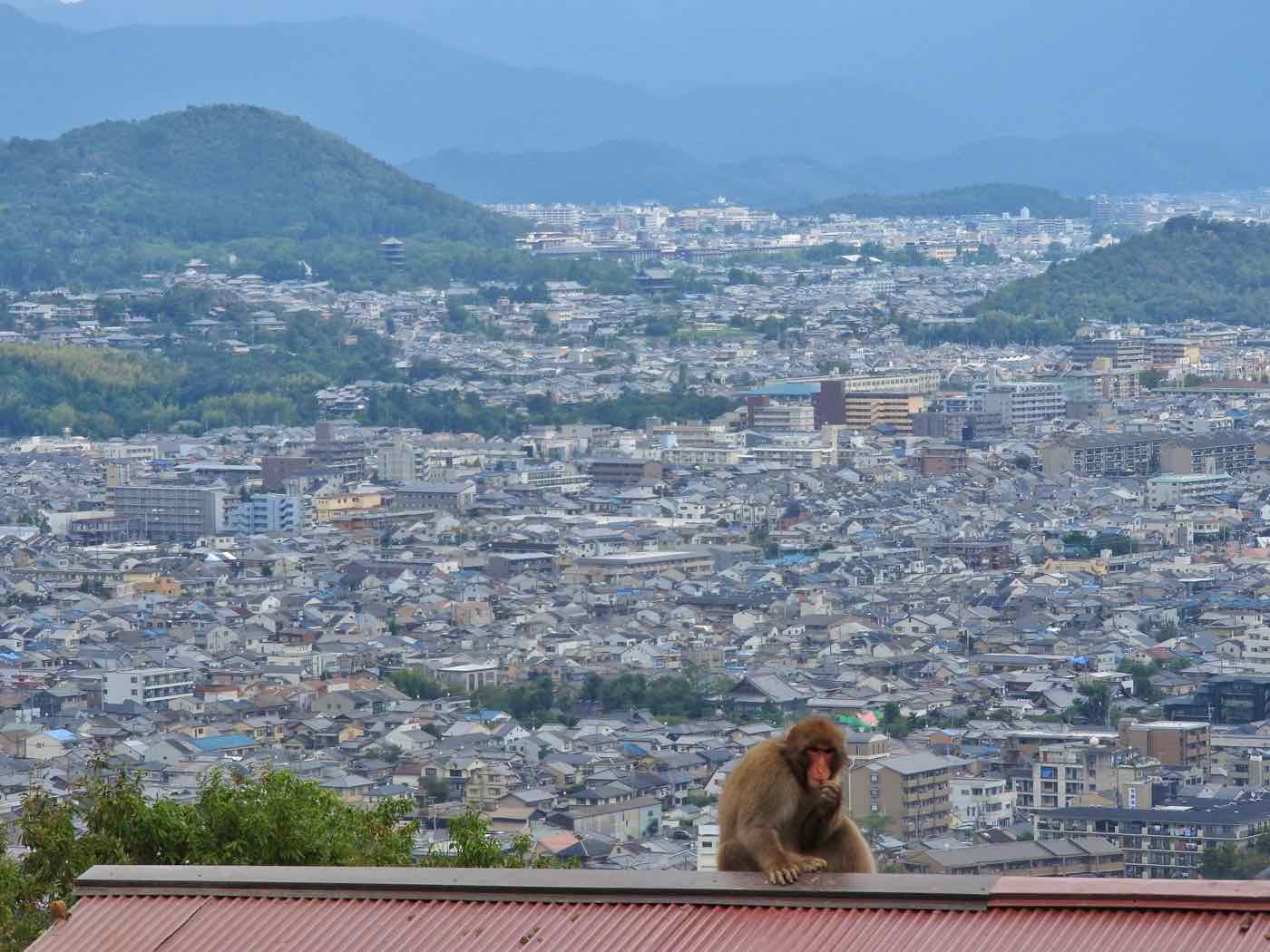
Where to stay in Kyoto
The area around Nishiki Market is the most convenient to get to the major attractions of Kyoto. You’ll also be in walking distance to hundreds of malls, bars, shops, and restaurants.
If you seek a more unique experience amongst well-preserved architecture and century-old traditions, Arashiyama or Gion districts are better options. The first is a quieter area, closer to the forest. The second is the famous Geisha district. It’s not every day you get the chance to bump into an authentic geisha and her maiko on the way to your hotel.
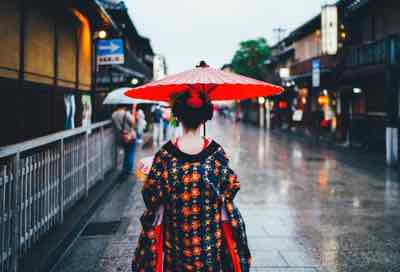
Where to stay in Kyoto, Japan
Check out this pre-filtered list of the highest-rated places to stay in the Gion district, Kyoto.
Getting around in Kyoto
Not only Kyoto is a massive urban area, but the main sights are all in different areas of the city, far away from each other. Keep in mind public transportation is optimized for local commutes, not for tourists. So there aren’t direct subway lines or easy transitions from Arashiyama to Fushimi Inari or to Kinkaku-ji .
As a result and contrarily to other Japanese cities, buses will likely come into play. And a ride can easily take 40 minutes. My best tip is to not underestimate the time you take from A to B and avoid planning too many things for each day. Kyoto is definitely a place to study how to get around.
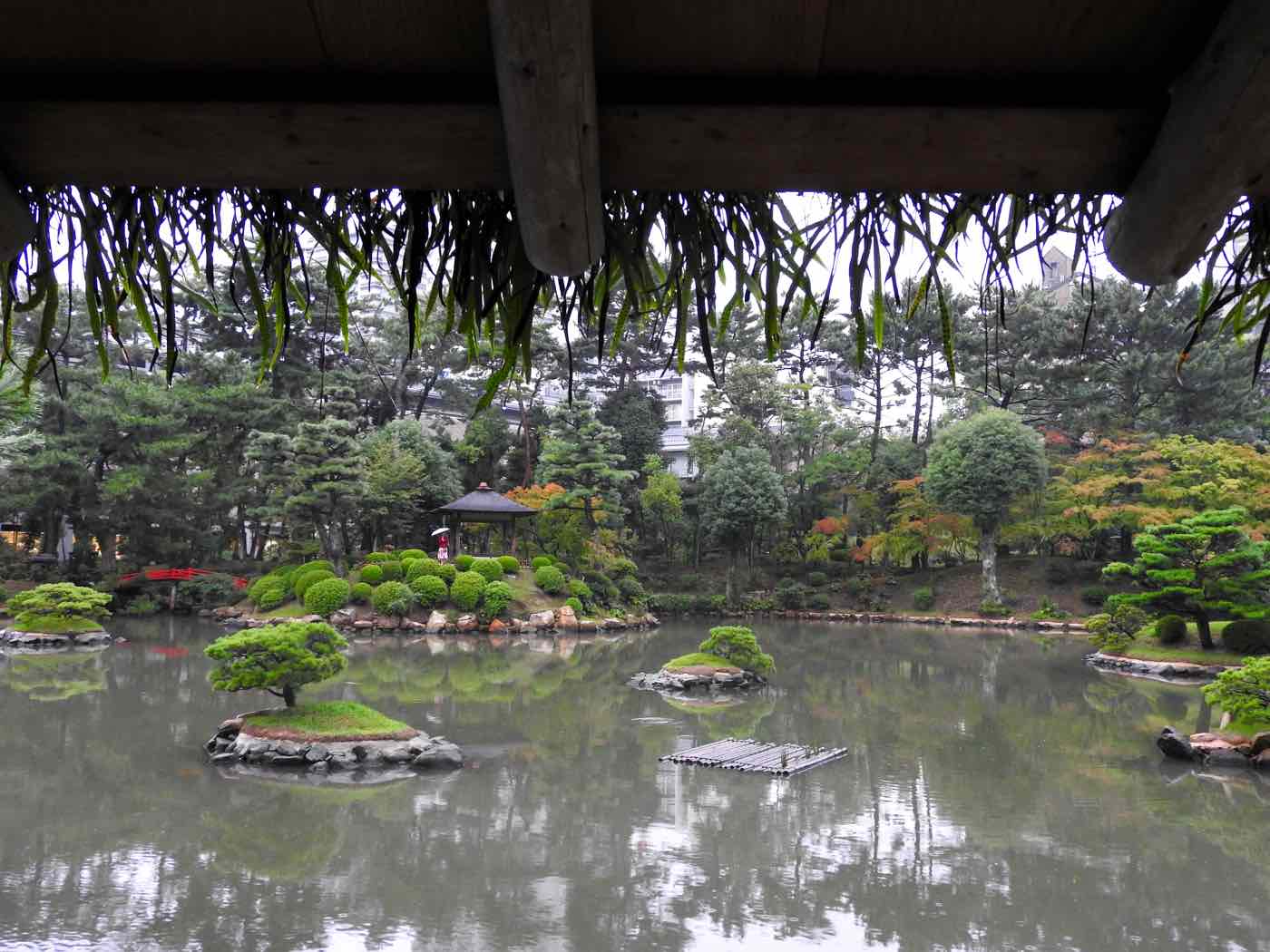
I knew beforehand that being in the impact area of an atomic bomb and that killed 200,000 people would be a powerful and moving experience. The iconic Genbaku Dome , the only structure left standing after the bombing, gave me a bit of chill.
The Peace Memorial Park and Museum has loads of interesting and easy-to-digest information about the events that led to the bombing of both Hiroshima and Nagasaki , as well as effects of radiation in the population and environment.
However, and maybe the gloomy rainy weather had a big part in it, but I’m sorry to say this was my least favorite place in Japan (not even having the best okonomiyaki saved it!). With all due respect to the tragic happenings back in Summer of 1945, Hiroshima is a stop-and-go place for me.
Thing is I’ve made the (wrong) choice of staying in Hiroshima for the night. It helped the budget and is more convenient in terms of logistics. But quite frankly you’re better off spending time in Itsukushima , better known as Miyajima (see the next section !).
Hiroshima, the place for okonomiyaki
Okonomiyaki is a type of Japanese savory pancake that can basically contain anything you like. I mean literally – the name means “cooked as you like it”. It usually contains shredded cabbage, eggs and a meat (pork or squid) and topped with several condiments and a special sauce.
When you’re around in Hiroshima, try the local okonomiyaki recipe, which is layered rather than mixed and made with noodles (either yakisoba or udon ). Sounds weird, but it’s delicious. It’s so popular that Hiroshima even has an okonomiyaki mall – Okonomimura – consisting of 3 floors of restaurants making this delicacy.
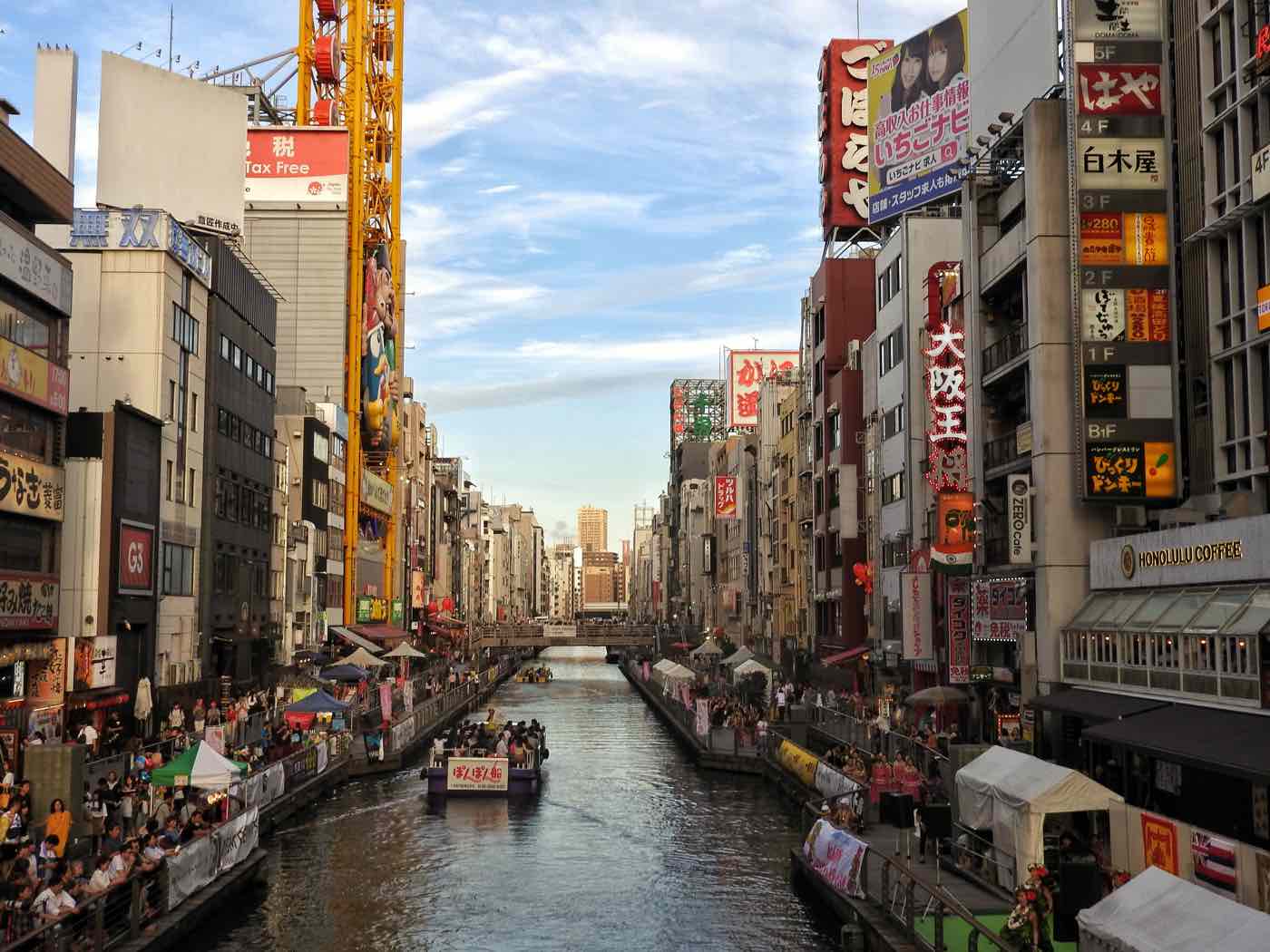
Many choose to overlook Osaka on their trips to Japan but I think it deserves a visit for several reasons. It has a top-notch food scene – some chefs even consider it the best city for foodies in the world – and can be a great base to explore other places as day trips (see next section).
Lastly, it is the antipode of everywhere else I’ve been in Japan. People speak out loud on the trains. Everyone acts looser and more chilled (and they even queue on the right, not on the left like everywhere else 🤔). It’s definitely more rough around the edges, but after weeks of Japanese strict behavior, somehow this felt refreshing.
What not to miss in Osaka
The beating heart of Osaka is definitely the Dotonbori area. It’s filled with party goers, extravagant neons, crazy arcades, and huge department stores. The river views from Ebisubashi Bridge are beautiful and just a bit surreal. Even though it may not be for everyone, the iconic Glico running man can’t be missed.
That said, what makes Dotonbori really special is the food. Osaka is absolutely obsessed with food and the thousands of restaurants, bars, and street vendor stalls here is a delicious mix. Don’t miss takoyaki , octopus dumplings served with bonito flakes on top, okonomiyaki , and other million seafood dishes.
shopping for souvenirs and gifts back home .
Places to visit in Osaka in a first-time visit 🇯🇵
- Dotonbori St – The more you go up the mountain, the less crowded it will be and the more special your experience.
- Glico Running Man – The icon of Osaka.
- Umeda Sky Building – Impressive views from the observatory on the top.
- Osaka Castle – A peek onto japanese castle architecture, although Himeji ‘s is much more impressive.
- Himeji Castle – If you have extra time to spare, make use of your JR pass and take the train to Himeji to see a giant white castle worthy of your best dreams.
Where to stay in Osaka
There are 2 main “city centers” in Osaka – Umeda and Namba – which correspond to the main transport hubs.
Namba is superior in nightlife and food, it’s bright, busy and loud unlike the rest of Japan.
Umeda is more business-y, but with great food options too. It’s also close to some sights and it’s more strategic for shopping. Be careful though, I got lost twice on the HUGE underground malls!
I stayed in Umeda , in Washington Hotel which caters to a more professional and high-end clientele. I’m not complaining though: had AMAZING views from my room on the 14th floor.
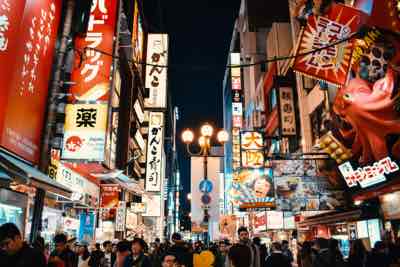
Check out this pre-filtered list of the highest-rated places to stay in the Namba and Umeda areas in Osaka.
Day trips to do in this itinerary
Kamakura (from tokyo).
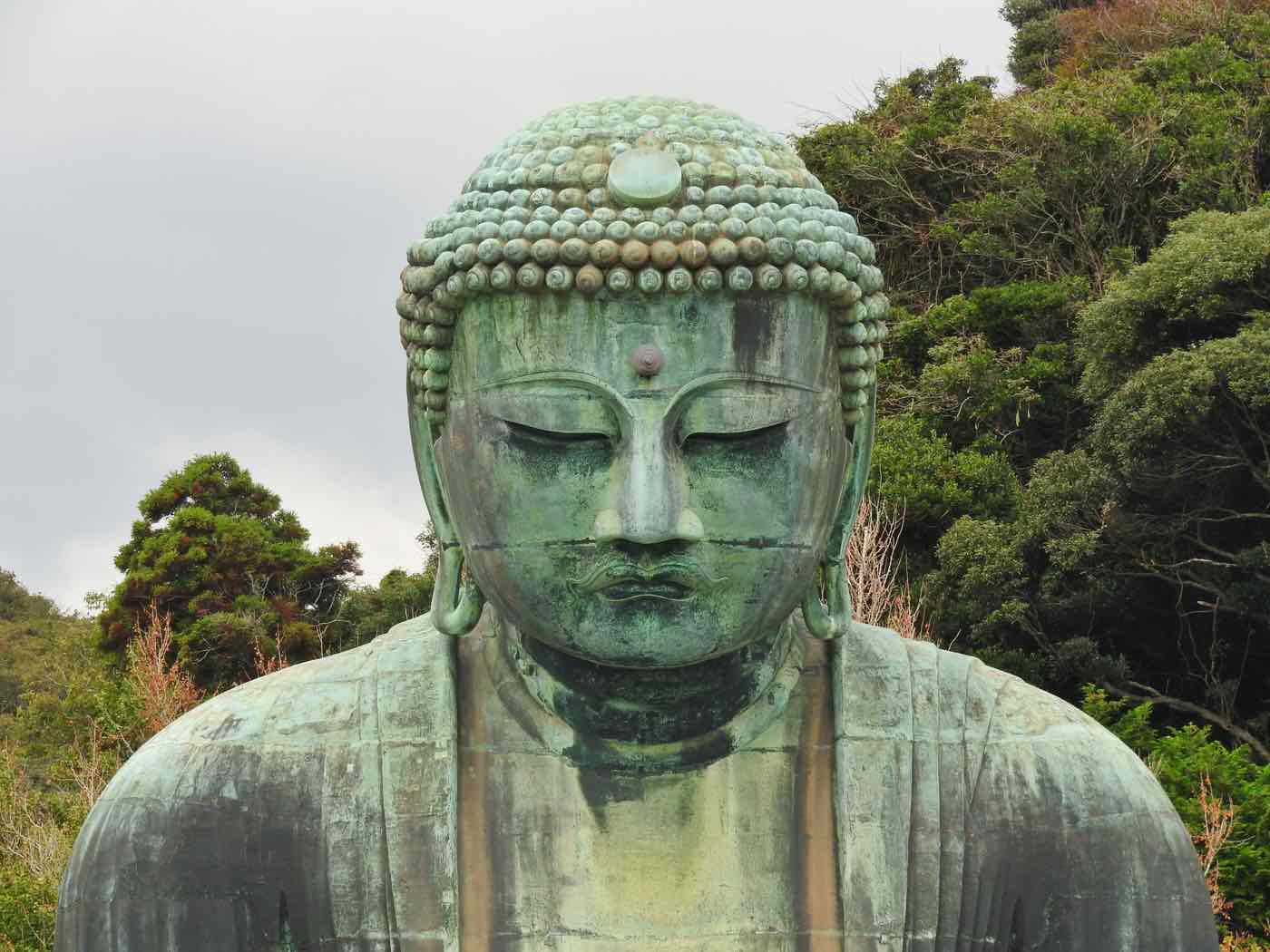
Out of all the day trips you can do from Tokyo , Kamakura is the closest and more convenient to get to: just a short 35-min trip by train. If you don’t want to spent too much time planning and want a small getaway from the city madness, Kamakura is a nice and pleasant option.
There are over 100 small temples and shrines in this area but the highlight of this town is definitely Kōtoku-in . This monumental bronze Buddha statue is reachable via a 20-min walk or a short bike or bus ride (IC cards accepted!) from Kamakura train station. You can even enter inside the statue for a small 20¥ fee. Worth it, considering “I’ve been inside a Buddha” could be a good icebreaker at parties.
Hase-dera (300¥ entry fee) temple and garden complex is a great place for a stroll exploring caves, Buddha statues perfectly mashed with beautiful architecture.
I’ve missed other temples and the entire downtown Kamakura and the busy Homachi street and decided to walk all the way to the coast instead, through the cute little streets, local railways, and beaches. There are many more options for temple hopping around though.
Temples and shrines in Kamakura
- Hase-dera – no one mixes architecture with nature as well as Japanese and this is just another proof.
- Hokokuji – a bamboo garden with a café inside awaits.
- Engakuji – popular for autumn leaves viewing!
- Tsurugaoka Hachimangu Shrine – the most popular Shrine in Kamakura
Shirakawa-go (from Takayama or Kanazawa)
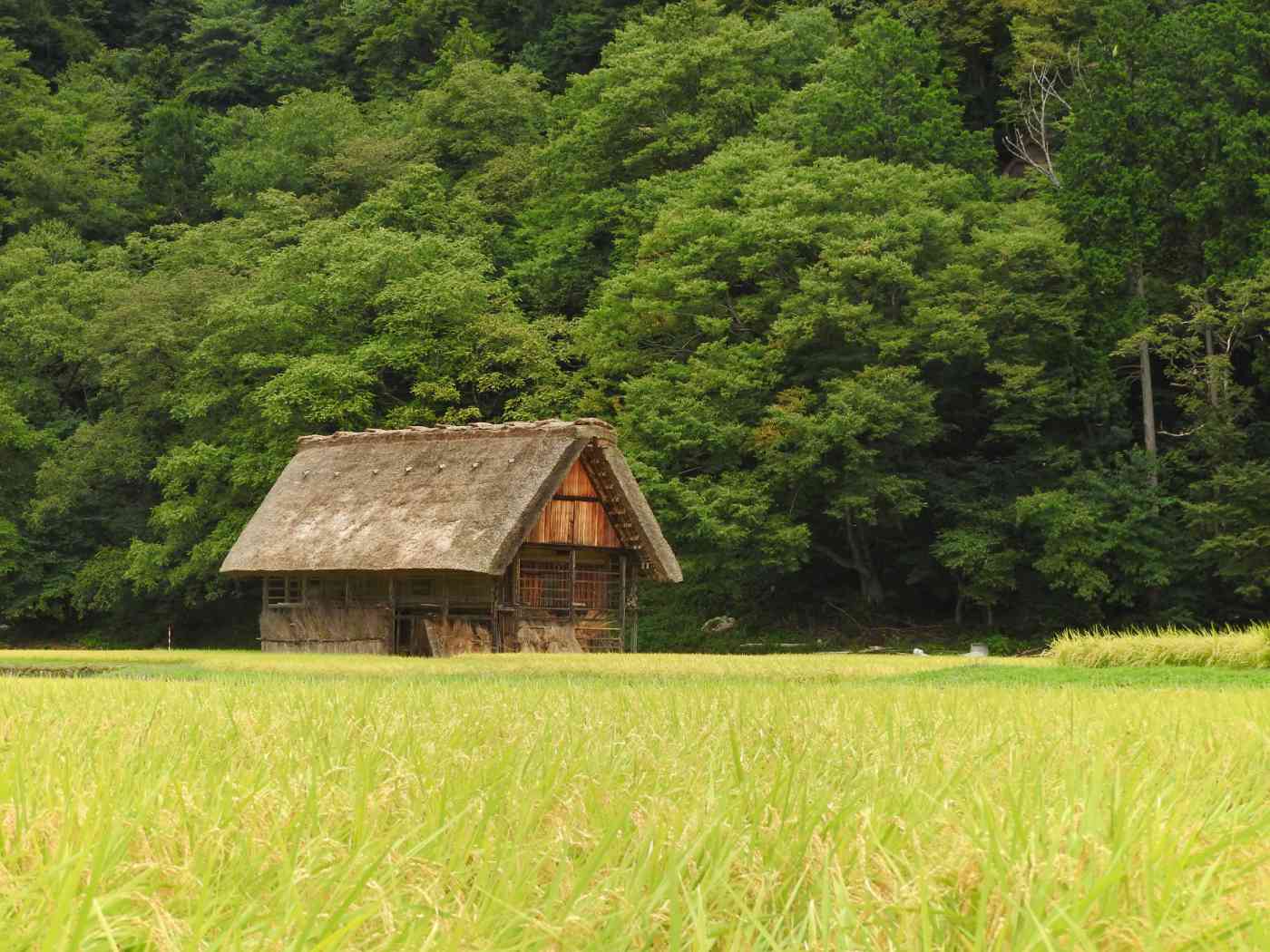
Do you know these tacky white postcards we used to send in Christmas with a hobbit village covered in snow? I’m pretty sure they’ve inspired in Shirakawa-go .
This tiny traditional Japanese village located in remote mountains is famous for its 100+ houses built to withstand rough winters and big layers of snow. This architectural style is known as gasshō-zukuri and means “hands in prayer”. This place is beautiful at any time of the year and is a UNESCO World Heritage site since 1995.
Not gonna lie – there isn’t much around “to do” here. And that’s fine. It’s good enough to just walk around the village for a few hours. See the rice fields, the Shogawa river bridge, and walk all the way up to the viewpoint with a view that you’ll surely remember for years to come.
If you want to visit Shirakawa-go , study your itinerary beforehand. Staying for the night in one of the farmhouses might be a bit too boring for some and buying a return trip from Takayama is not very efficient in terms of logistics. See an alternative below.
How to make a stop at Shirakawa-go 🗾
The easiest way to get to Shirakawa-go is by bus from either Takayama or Kanazawa . So coming from Tokyo, I took the late evening Shinkansen to Kanazawa and stayed there for the night.
On the following morning, I hopped on the Nohi bus to Shirakawa-go and left the luggage at the bus station and visited the village. If there aren’t enough coin lockers, you can leave it with the staff. Later in the afternoon, picked it up again and got on the bus to Takayama . Easy peasy!
I recommend to buy your tickets in advance online – you’ll need two separate tickets for each leg of the journey. If you can’t be bothered about your luggage, you can send it directly to your following hotel via a luggage forwarding service.
Miyajima/Itsukushima (from Hiroshima)
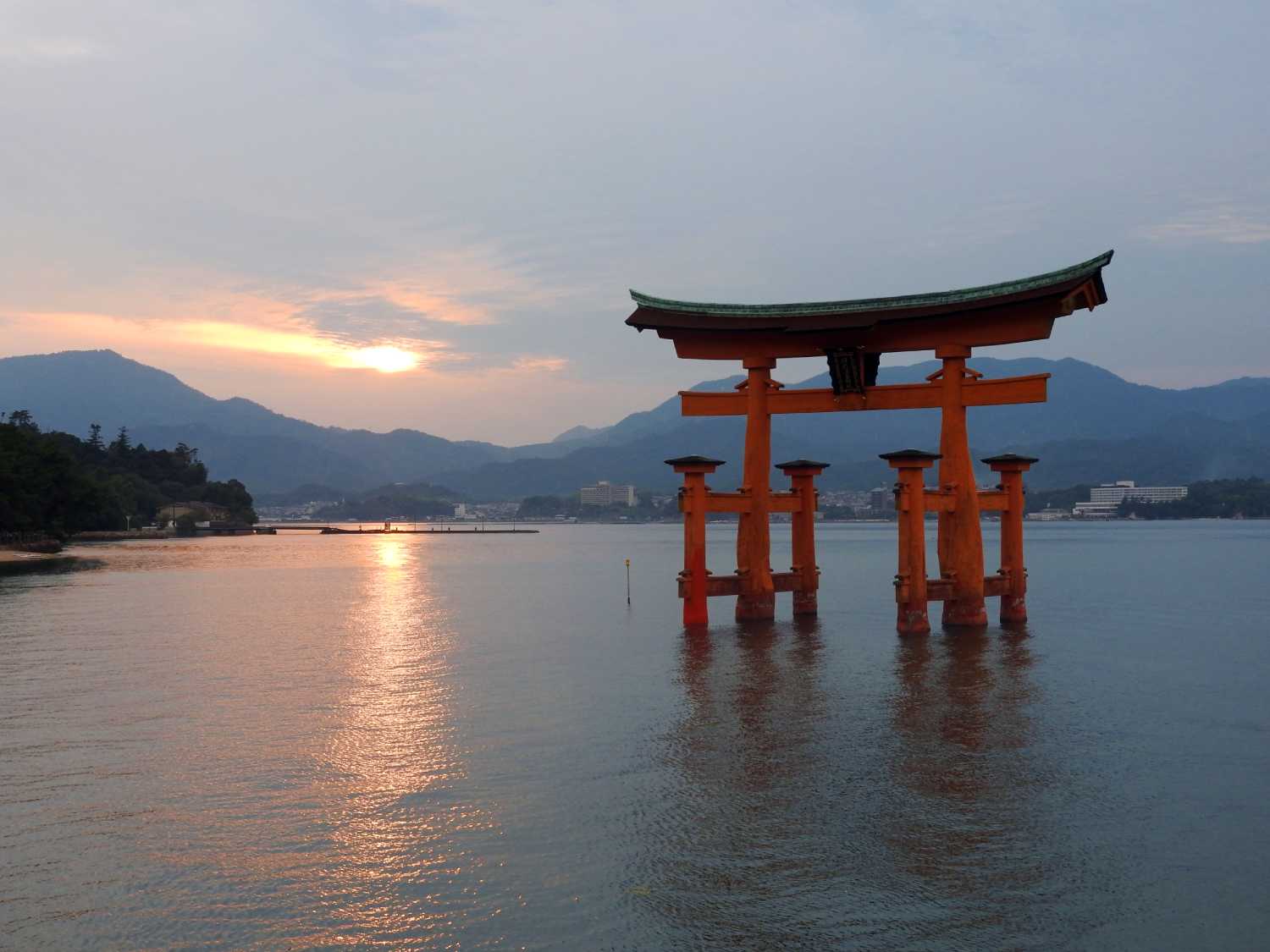
If there’s something I regret from my Japan trip is not staying overnight in Miyajima . Yes, it’s less convenient to carry your luggage or backpack there. Yes, it’s more expensive. But it’s entirely worth it to spend here at least 1 night.
From the moment the ferry (one of the operators is included in JR pass btw) departs Miyajimaguchi towards Miyajima, you already have a glimpse of how amazing this island is. Mostly covered in forest, from the coast all the way up to the mountains with a giant orange torii gate just offshore. It’s a tropical paradise of its own kind: drenched in history and tradition of its shrines and pagodas.
Once you get out of the station, cuteness overload. Hundreds of deer wander around the island; they’re kind, chilled and some can even come to greet (even though they have real intentions to steal with your food). Miyajima is a place I didn’t want to leave.
What to do in Miyajima
You mean, apart from hanging out with deer? Well if you’re coming to Miyajima island , the floating Great Torii Gate is a mandatory stop. Check for tide schedule and come when the high tide submerges part of the structure and chill out at the nearby quay.
Miyajima is also a perfect place to greet nature in hiking trails, with dense forests and great views over Hiroshima Bay .
The restaurants on the island are not exactly cheap, but you can indulge in some unique food delicacies such as oysters and clams as big as your face. Seriously.
Places to visit in Miyajima in a first-time visit 🇯🇵
- Mount Misen – Hop on the Miyajima Ropeway (¥1800 round trip) to the top of this sacred mountain and take in the breathtaking views.
- Floating Torii Gate – One of the most beautiful sights in Japan. Check tides beforehand to get come here for sunset for the best photos.
- Itsukushima Shrine – Seaside 12th century shrine.
- Daishō-in – Another beautiful Japanese temple complex located in Mount Misen.
Nara (from Osaka or Kyoto)
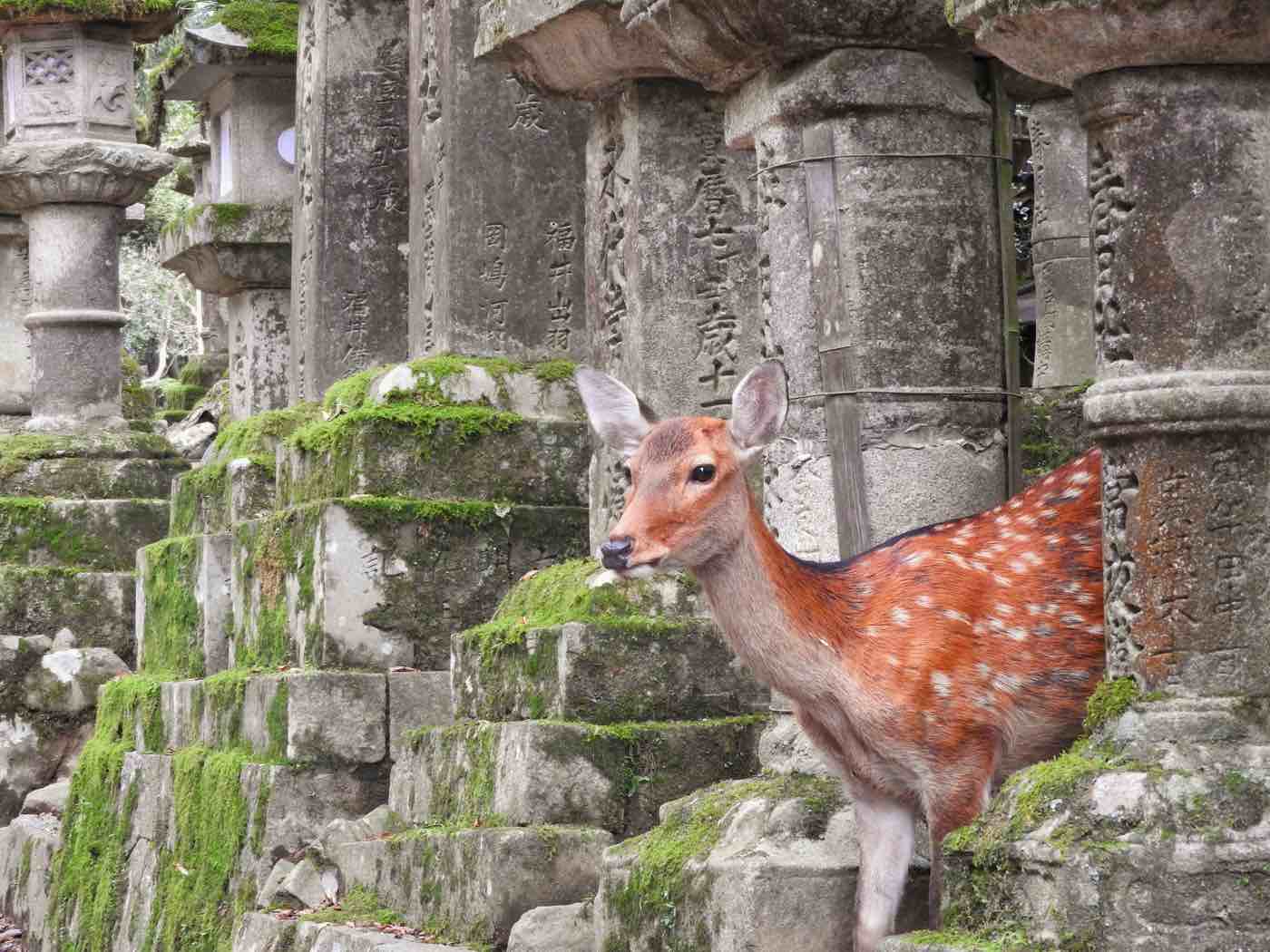
The ancient capital of Japan, Nara is world famous for two things: temples and deer. Yes, more deer! 🦌
On one hand, some of the largest Japanese temples and shrines can be found here. In between these amazing historical sites, thousands of deer roam freely, making it a magical and eerie site. You can buy cookies to feed the deer from street vendor stalls. Some of them can be a bit too eager (and aggressive?) but most are nice and will even BOW TO RECEIVE A COOKIE. How cute is that?!
Nara is a fantastic day trip and one of my most memorable travel experiences ever. If you have some more time, stay in the area for a night or two to explore more temples and feed on its beautiful vibe.
Best temples in Nara ⛩️
- Tōdai-ji (¥600 entry fee) – enough to say this is the tallest wooden structure IN THE WORLD. Don’t miss the huge wooden guards at the entrance. Admission: 500¥.
- Horyu-ji – A little more sober but with an equally fascinating wooden architecture to admire. Admission: 1500¥.
- Kōfuku-ji – A Buddhist temple and also a UNESCO World Heritage Site and one of the Powerful Seven Temples. Admission: from 500¥.
Japan itinerary budget & costs
Cost breakdown of a japan trip 💸.
Here is my cost breakdown, based on real numbers of my trip to Japan. Unless stated otherwise, prices in yen (JPY) and per person.
- 🏨 Accommodation: I stayed in a rather eclectic mix: a capsule hotel for 1 night, ryokan for 2 nights, guesthouses and business hotels. The average price of my accommodation for two people was roughly ¥10,000 per night. Because single rooms are usually not exactly half the price of doubles, I imagine per person, this would cost around ¥6,000 per night or a total of ¥84,000 for 14 full days.
- 🚆 Transportation: I bought the JR Rail pass that covered all the train rides throughout Japan + some urban journeys using the JR trains. The pass costed ¥46,000. Add an extra ¥7,000 for additional trips on other trains, subways and buses.
- 🥘 Food: Especially in big cities, I easily got away with meals costing less than $20/person. Sometimes half of that. ¥6,000 per person per day, or ¥84,000 for 14 full days, will be more than enough for most travelers.
- 🛍️ Others: Let’s add an extra ¥3,000 per day (¥42,000 in total) for entrance fees or other miscellaneous spending. If you’re a shopper, consider adding more.
- 💰 Total cost: Altogether, you can expect a two-week Japan trip to cost around ¥263,000. Take these numbers just an estimation – speak to your accountant! 😜 – and remember they don’t include flight costs.
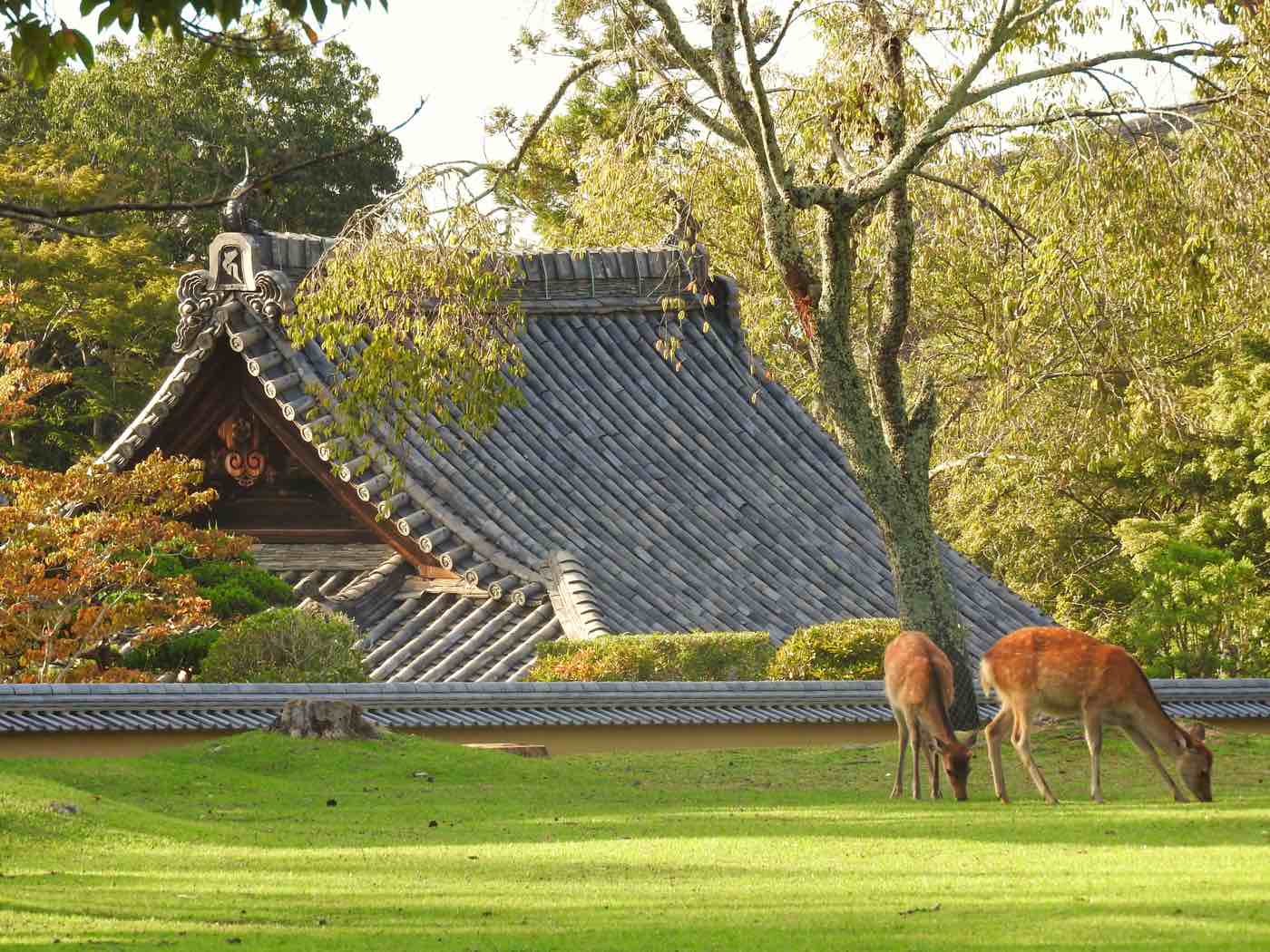
Japan Itinerary FAQ
Who is this itinerary for? This itinerary is tailored for first-time travelers to Japan . I tried to achieve not only a good overview of the country but also a balance between urban vs countryside, between big city vs village. That said, obviously tweak the itinerary to favor more time in the places that resonate with you the most.
Will I see everything in Japan with this itinerary? No. Ditch any FOMO. It’s impossible to see everything in Japan in such a short amount of time.
Is it jam-packed or more relaxed? I wouldn’t say this a rally course, but it’s not entirely a breeze. There are some day trips and there are some stops where you’d only be staying 1 night. If you’re traveling with kids or want a more relaxed trip, consider tweaking it.
Where did you arrive and leave Japan? I arrived in Tokyo (Narita airport) and got my flight back from Osaka .
How did you get around? I traveled mostly by train, using a JR Pass . In the end, I did some math and figured it save me some – not much – money but mostly it saved me time . It’s very convenient not to have to buy individual tickets every time.
I’ve also used buses to get to Shirakawa-go , ferry to Miyajima and subway/local trains inside the cities.
How much does a trip like this cost? Make sure you check my budget breakdown .
When is the best time to go to Japan?
Every season of the year brings out a new kind of beauty in Japanese landscapes and traditions. Note the weather varies a lot depending on the region you’re visiting.
Overall, spring and fall months, when temperatures are milder and there is less rainfall, are the best times of the year to visit Japan .
- Spring (March to May) – Magical time to visit. However prices skyrocket close to hanami (cherry blossom) season (see below).
- Summer (June to August) – Weather can get a little crazy with the peak of typhoon season and high temperatures. Hiking season in Mount Fuji .
- Fall (September to November) – Great chance of seeing the vibrant color spectrum of autumn leaves. Mild temperatures.
- Winter (December to February) – The coolest months bring less visitors to Japan, but prices are also considerably cheaper. Best time to visit the snow monkeys in Jigokudani and to hit the slopes in snow sports.
When is cherry blossom (hanami) season in Japan? 🌸
As a natural event, there are no fixed dates when does hanami takes place each year. Generally, the more south you are geographically in Japan , the earlier the blossoms open. In big cities like Osaka , Kyoto and Kyoto cherry blossom happen in early April. But it can go as early as January in the southern islands of Okinawa and as late as May in northern Hokkaido .
Japanese people are healthily obsessed with cherry blossom season and is deeply rooted in their culture and nationwide traditions. It represents the ephemerality, fragility of life: so beautiful but so short at the same time.
Problem is: everyone is traveling to and in Japan during this time of the year. Prices will be inflated so make sure you book your trip with extra time in advance.
Places I’ve missed in this trip to Japan
I had to leave some places out of this itinerary. Japan is massive and has a ton of things to see and do that you got to make choices. If you’re lucky enough to have more time to travel through Japan, find below some more ideas:
It can be done as a day trip from Tokyo, but IMO it’s too rushed and staying in one of the ryokans is the highlight. I’d either do Hakone or Takayama , although my personal preference is the latter.
Kawaguchiko
The best views of Mount Fuji are here and this is enough of a reason to visit. Going just for a day is very risky specially outside the winter period – check visibility forecasts to optimize your chances of seeing more than just fog. If this is a must, I’d consider staying in the area for at least one night.
The northernmost island in Japan is a must go for me. Known for its ski areas, volcanoes, hot springs, and other beautiful forms of unspoiled nature.
Who would have thought Japan is capable of doing tropical islands with white soft sandy beaches? On my bucket list and not only because I’m a beach bum. To add to the fascination factor, they’re one of 5 Blue Zones where people live the longest worldwide.
I skipped this place on purpose because I want to visit it during the fall season. A harmonious mix of lavishly-decorated temples and shrines, relaxing onsen (hot springs) and top-notch hiking opportunities around. Like Hakone, can be done as a day trip from Tokyo.
30+ tips to help you make the best out of your Japan trip.
Are you planning your Japan two week itinerary? Which other places do you recommend adding to a first-time trip? Let me know in the comments below!
You might also like these articles 💬
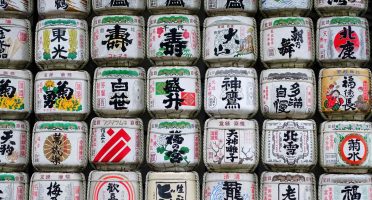
Japan Travel Tips: 34 Things to Know In 2024
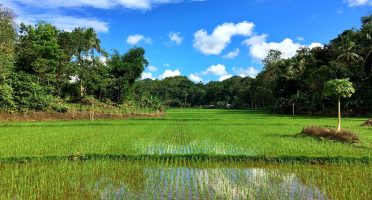
Travel Guide to Bohol, Philippines – Budget & Itinerary
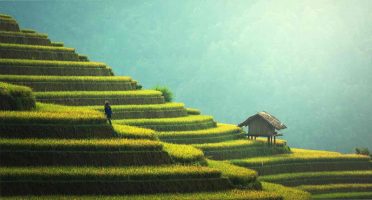
Vietnam Tips And Tricks: 26 Key Things To Know Before Your Trip
Share your thoughts 💬 cancel reply.
Your email address will not be published. Required fields are marked *
6 comments 💬
Hi Bruno, we are planning a Japan trip next month (with 2 kids under 3). Your itinerary is super useful! I will certainly tweak parts of it as you suggest to do if travelling with kids. Thanks for your help!
Sounds like a great trip Rashmi. Hope you have a wonderful time in Japan!
Dear Bruno, Thank you so much for all the valuable information you have provided in your blog. We are planning our first trip in Japan next month and getting your tips was definitely helpful. Cheers
You welcome Trinh. Japan is amazing, hope you have a wonderful time.
Another great itinerary (as usual)! I am looking for hotels to book now and I had a question, would you opt for hotels with breakfast or not really? Just wondering if having a breakfast outside it is a good (and cheap) option or I should always choose hotels with breakfast. Cheers, Mariana
Thank you Mariana! Great question! To be honest, I’ve booked a mix of both. Unless you go for a hotel chain with continental breakfast, it can be a bit of an underwhelming experience. In the capsule hostel I stayed, it was just coffee + piece of bread. I’d recommend breakfast in a ryokan though, definitely interesting and unique.
Most of the time, I found myself grabbing a sandwich + coffee from a 7-11. Gets tiring after a few days, but it’s cheap and on-the-go.
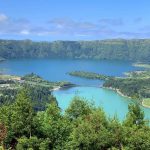
Destinations🌎


©Yohei Shimomae, Unsplash
How long for a trip to Japan?
Japan Experience is 35 years of experience in organizing tours in Japan . Each year we help thousands of curious people to discover the land of the rising sun thanks to our various offers .
Do you know exactly what you want to see and where you want to go? Or you are not sure but you want to discover Japan?
We're here for you ! For a stress-free trip , take advantage of the tours created by our Japan specialists . We organize for you all the logistics of the stay : accommodation , flights , airport transfers , Japan Rail Pass , transport card , accompanied activities , etc.
The treasures of Japan are at your fingertips, so go ahead and book a tour!
The first question you ask yourself when you start planning your trip is how long does it take to visit Japan? How many days are needed to visit Tokyo or Kyoto?
Whether you leave for 10 days, 2 weeks or 3 weeks, a circuit will be there to meet your needs and desires. It is possible to discover Japan in 1 month or in 7 days. It depends on what you want to visit and how much time you want to spend there.
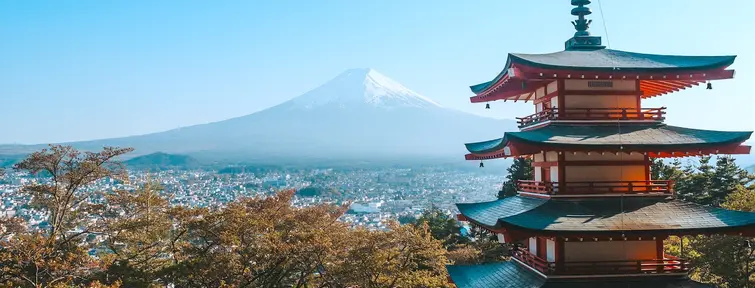
© Filiz Elaerts
Our travel tips for Japan
Ideally, how long for a trip to Japan ?
We recommend a minimum of 2 weeks to discover the Japanese archipelago. This is the minimum travel time in Japan to have time to visit Tokyo, Kyoto and their surroundings. For this, we advise you to spend a minimum of 6 nights in Tokyo and 6 nights in the Kyoto region .
Tokyo is the capital of Japan, a futuristic megalopolis that has kept its ancient soul. Indeed, although steeped in history, the city is nonetheless ultra-modern and full of life. Constantly changing, the megalopolis is the perfect illustration of the Japanese way of life and the technological advances that are being developed in Japan . The skyscrapers of Shinjuku, the nightlife of Shibuya, the nostalgic district of Yanaka, the temple of Sensô-ji or the shrine of Meiji-jingu… Tokyo has so much to offer!
Near Tokyo, the places to visit are:
- Between lakes and mountains, Hakone is a spa town with a magnificent view of the famous Mount Fuji,
- Classified as a UNESCO World Heritage Site, the temples and sanctuaries of the city of Nikko are an architectural treasure in a green setting,
- Former capital of Japan, Kamakura is a quiet little town along the Pacific Ocean, known for its large seated Buddha.
Kyoto is the historical and geographical heart of Japan . It was the capital of Japan for more than 1,200 years and there remains a special atmosphere, the city of Kyoto being known as the guardian of the arts and ancestral traditions of the archipelago . In its heart, thousands of Buddhist temples and Shinto shrines are to be discovered, and traditional streets with wooden houses are to be explored.
Near Kyoto, the places to visit are:
- Osaka , the capital of Japanese gastronomy. Enjoy a delicious Okonomiyaki and spend your evening in a traditional tachinomiya .
- Former imperial capital, Nara is full of architectural marvels. The city is particularly known for the deer that roam between its temples and shrines.
- The city of Uji with the magnificent Byôdô-in temple and its "phoenix pavilion", listed as a UNESCO World Heritage Site.
Counting the 2 days necessary for the round trip from France to Japan, such a stay therefore lasts at least 14 days.

But many other treasures are just waiting to be explored in the four corners of Japan .
We recommend, among other things:
- The Japanese Alps and the city of Kanazawa ,
- The island of Kyushu and its volcanoes,
- The nearby cities of Hiroshima and Miyajima ,
- The island of Hokkaido and its luxuriant nature,
- The city of Himeji and its impressive castle ,
- The Okinawa archipelago and its fine sandy beaches,
- The Tokaido road , a historic road with magnificent stopover towns,
- The Seto Inland Sea and its many islands .
And many others… Do not hesitate to contact us directly at [email protected] ! Our experts will be able to advise you best according to your passions, your needs and your expectations .
There is therefore no ideal duration for a trip to Japan ! Our experts have created circuits adapted to all to offer you an itinerary adapted to your needs and desires. Discover our all-inclusive stays in Japan , self -guided trips or organized trips .
7 days / 1 week tours in Japan
But don't worry if you have less time for your vacation. You will have to make choices but visiting the archipelago in 1 week is possible!
And what to visit in Japan in 1 week? For an express trip to discover most of Japan, we advise you to take night flights , visit Tokyo in 3 days and spend 3 nights in Kyoto .
For the logistical side of your trip, we advise you to buy a Japan Rail Pass , which will allow you to take the Shinkansen without constraint. And to facilitate your entire trip, our sim cards give you access to the internet directly on your smartphone, wherever you are!
What activities to do in Tokyo and Kyoto?
To go straight to the point during your visits and not waste time, why not trust our experts? In Tokyo and Kyoto, our Travel Angels, experts in their city and Japanese culture, can welcome and accompany you.
- Our activities in Tokyo
- Our activities in Kyoto
What to visit in Japan in 1 week or less?
To get off the beaten track, you can also decide to explore a region of the archipelago in depth in 1 week . Avoid the privileged places of tourists and set off to discover more unknown places in the archipelago.
- Shikoku, the mysterious island - 5 days
- In the heart of the Japanese Alps - 5 days
- Layover at the thermal springs - 3 days
- Koya-san, the sword and the incense - 4 days
- Kyushu worship - 7 days
- Mount Fuji 360° - 3 days
Our experts are ready to organize an express trip to the archipelago with you. Contact us at [email protected] and tell us what you want!
10 Day Japan Tours
If you have a little less than 2 weeks to travel to Japan, we have itineraries that may be suitable for you. Visit Japan in 10 days and dazzle your eyes, it's possible!
What to visit in Japan in 10 days?
- The essential of Japan from 1664€ - 11 days
- Tokyo getaway from 1223€ - 8 days
- Kyoto getaway from 1302€ - 8 days
- Osaka getaway from 1218€ - 8 days
- Unusual at a low price from €1344 - 11 days
- Hokkaido: Volcanic North from 1981€ - 9 days
15 days / 2 weeks tours in Japan
If you want to travel 2 weeks in Japan, we have many circuits with complete itineraries that allow you to discover a Japan of the cities and a Japan of the countryside, between ancestral tradition and extreme modernity .
What to visit in Japan in 15 days?
Two weeks in Japan is the ideal length to see the essentials .
- Classic Japan from 1935€ - 13 days
- Capitals and treasures of Japan from 1909€ - 13 days
- The great sites of Japan from 2349€ - 16 days
- Secret Japan - the path of Zen from 2021€ - 13 days
You can also choose a trip with a more unique and specialized itinerary .
- Photo of autumn leaves from 2990€ - 13 days
- Art and architecture in the Seto Sea from 1993€ - 14 days
- Kyushu on the volcano route from 2218€ - 14 days
- Hiking and sacred paths from 2213€ - 14 days
- Okinawa - between islands and beaches from 2397€ - 15 days
- Sweets of winter from 2834€ - 14 days
- Japan ski side 14 days
- Japanese Gardens from 2119€ - 15 days
- Flavors of Japan from 2700€ - 12 days
- Japanese Spring from 2049€ - 14 days
But also in the four corners of the archipelago...
- Nature and traditions in Mie from 1983€ - 13 days
- Tokaido Route from 3990€ - 15 days
- Honeymoon from 2217€ - 15 days
- Getaways in Tohoku from 1897€ - 13 days
- Hiking trails from €2182 - 13 days
- Japanese Alps from 2275€ - 15 days
- Summer holidays from 2486€ - 15 days
- Kyushu, countryside and traditions from 2198€ - 14 days
- Discovery of Japan from 2490€ - 14 days
- Hokkaido - extended version from 2538€ - 14 days
- Far from the crowds from 2523€ - 15 days
21 days / 3 weeks tours in Japan
Our 3-week Itineraries in Japan allow you to discover the archipelago far and wide or to deepen your knowledge on a theme, a passion .
The gardens, the far north, the historic Tokaido road or the Japanese Alps, let yourself be tempted by one of our 3-week tours in Japan.
What to visit in Japan in 3 weeks?
- Japanese Gardens - extended version from 2568€ - 19 days
- Crossroads from €2678 - 16 days
- Hiking trails - extended from 2513€ - 16 days
1 month tours in Japan
If you have the opportunity to travel to Japan for 1 month, it's an opportunity to go further and discover Japan from behind , a jewel still jealously protected from the eyes of most visitors.
What to visit in Japan for 1 month?
- Cities and fields from 5990€ - 22 days
- Cities and mountains from 5990€ - 22 days
- Off the beaten track from 6400€ - 24 days
- Northern landscapes from 6400€ - 24 days
If one of these circuits interests you or if you want to customize one, contact us and let's organize your ideal trip together!
Here are some tips to help you prepare for your trip to Japan:
- When to go to Japan?
- What to visit during a trip to Japan?
- Tourist guides
- Japan's jet lag
- Cherry blossoms: when to go to Japan?
- 10 things to do before you go
- 5 things to have in your bag in Japan
- Passport or visa to go to Japan?
- The cost of living in Japan
Discover the different offers of Japan Experience!
Group tours in japan.
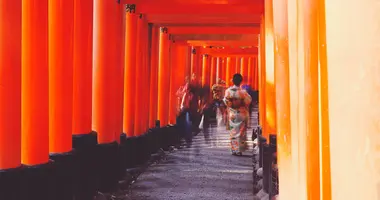
Our tours have been created in response to a high level of demand for a tour which gives a unique view and interaction with Japan.
Self-Guided Tours in Japan
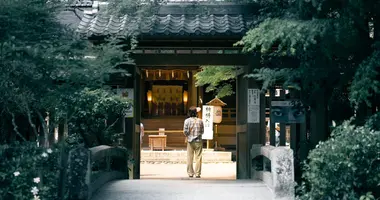
Enjoy tours created by our specialists in Japan. We organize your logistics: accomodation, airport transfers, Japan Rail Pass and Pasmo card.
Tailor-made Tours in Japan
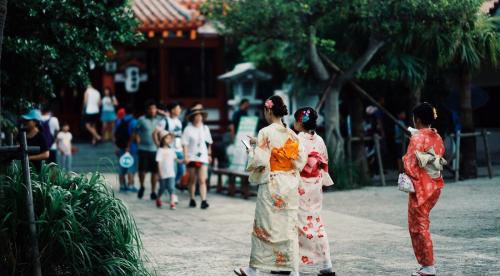
Explore Japan differently through unique and exclusive experiences!
Are you considering visiting Japan, but you're not sure where to begin? If touring with a group isn't your style or you can't find what you're looking for on our catalog of self-guided tours, designing a custom tour might be the perfect option for you.
A trip that's entirely flexible and unique: multiple types of transportation options (trains, cars, boats...), different accommodation options, original activities, personalized itineraries... Organize your dream trip with our experts! Booking a tailor-made tour allows you to travel with 4 key advantages:

100% Customized
With our tailor-made tours, you are the architect of your itineraries in Japan.
Plan your trip with our local experts who are passionate about sharing their knowledge and love for Japan.
Unique Lodging
We have a privileged network of local partners working with our onsite team.
This means we can offer you a diverse and unique choice of accommodations.
Amazing Activities
This vast network of partners also offers you a wide choice of activities.
Don't just see Japan, experience its deeply interesting culture, arts & folklore with activities!
Best Transportation
By train, by car, by boat... With our tailor-made tours, we'll get you the best transportation options.
You'll get to experience Japan travel through all means of transportation, and get everywhere you need!
Meet our Travel Planners
Japan Experience has been organizing top-notch trips to Japan for more than 40 years .
All of our travel planners have either lived in Japan or visited it more than once, and have extensive knowledge of Japan , making sure that you visit and experience the best that Japan has to offer.
Regardless of your interests, our travel planners are local experts who know all the best places to dine, stay, and explore, including both well-known attractions and undiscovered hidden gems . We'll customize your trip to Japan to fit your individual interests and needs, and we'll make sure you have the most amazing experiences.
Our promise is to provide extraordinary experiences for all our customers. Find more about our travel planners by clicking here .
How can our Travel Planners assist you in building your travel plan?
Build your customized itinerary
Our Travel Planners are here to craft the trip of your dreams with you. They'll be able to use their invaluable Japan experience to help you make your dream itinerary realistic.
Because they have already traveled Japan through and through, they'll be able to optimize your itinerary and materialize your ideas into an actually feasible and interesting route.
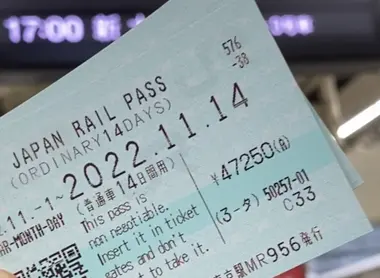
Give you local insight into Japan
Just as they'll be able to craft your tour's itinerary thanks to their extensive knowledge, our Travel Planners will give you their best tips & tricks.
Thanks to real-life experience, you'll skip the unnecessary sights and be given hidden gems recommendations. Secret spots to eat, to visit or even just to see the sunset... Follow the guide!
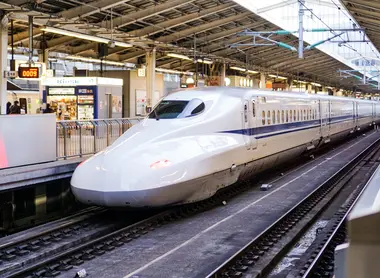
Craft a travel guidebook for you
Along with your tailor-made tour, you will receive a personalized digital travel guidebook (that can be printed, of course). In it, you'll find everything you need for your trip.
Carefully created by our team, this travel guidebook will also be a valuable asset to help you: see it as a condensed version of all our Japan knowledge!
Why book a tailor-made tour with Japan Experience?
Here at Japan Experience, our tours are imagined, built, crafted and carried out by the same team. A team that's been driven by the same passion: turning your dream trip to Japan into a reality. This makes us your perfect partner for your trip to Japan, for 3 reasons:
- We offer the best advice. We specialize only in Japan travel, meaning we know the country inside and out. Our team is made exclusively of passionate individuals having either lived or traveled extensively in Japan. Activities, accommodation... Unique spots and things to do, to create a trip that'll be personalized for you ! Of course, our team also has plenty of secret travel recommendations they'll share with you. As we're already doing with our over 5,000 articles of Japan travel advice.
- We offer the best prices. Thanks to being 100% focused on Japan travel, we have a unique network of local partners who work daily with our local team in Japan, as well as our international team making multiple trips a year to negotiate the best deals for you. This means we have a direct relationship with our local partners, which means cheaper travels for you: no intermediaries taking a cut.
- We guarantee a safe trip. Indeed, our sales team, our booking team and our assistance team are all in-house and work together to build your trip. Over 40 years of experience, multiple offices across the world, thousands of travelers trusting us every year, countless partnerships with media & influencers... Japan Experience is a leader in the Japan travel field. Oh, and we're also the 1st worldwide seller of the Japan Rail Pass.
How to book a Custom Japan Tour with Japan Experience?
Personalized Consultation
Share with us the main points of your itinerary, along with the dates, preferences you prefer during your visit and budget.
Customized Itinerary
Your dream journey takes shape here.
We design a personalized itinerary with the cities, lodgings, and activities of your choice, based on our experience and your goals.
Booking and Confirmation
Once your ideal itinerary is set, we handle the rest.
Pay your deposit and step into a world where all your travel arrangements are meticulously taken care of.
Pre-Trip Support
Our dedicated team remains at your service for any last-minute queries, before and during your trip, ensuring you embark on your journey with confidence and excitement.
Frequently Asked Questions about Tailor-Made Tours
What are the advantages of choosing a custom trip to Japan?
Opting for a tailor-made trip to Japan allows you to customize your itinerary according to your desires and interests. Whether you want to discover the temples of Kyoto, the excitement of Tokyo, the cultural richness of Osaka or travel off the beaten path, our Japanese travel experts will work with you to create an itinerary that suits your wishes. You will be able to fully enjoy the discovery of Japan at your own pace and according to your preferences.
How much does a custom tour in Japan cost? What is included in the price?
The cost of customized tours in Japan depends on many factors such as the duration of the trip, the cities visited, the accommodations chosen (hotels, ryokans, etc.), transportation, guided tours and activities. We work with you to create a customized itinerary that fits your budget. The price of your customized trip will generally include accommodations, transportation (international flights not included), some tours and activities, and the assistance of our Japan specialist consultants.
How to plan a cultural tour of temples, mountains and cities in Japan?
With custom tours, our Japan travel experts will help you plan a cultural itinerary to discover the country's riches. For example, you can visit iconic temples such as Kinkaku-ji in Kyoto, explore the Japanese mountains such as Mount Fuji or the Japanese Alps, and discover cultural cities such as Kanazawa, Hakone or Hiroshima. We will adapt to your wishes and advise you on the sites you should not miss.
What is the ideal duration of a trip to Japan?
The ideal duration for a trip to Japan depends on your interests and the time you have available. For a first trip, we recommend a stay of at least 10 to 14 nights to discover the main cities and sites of the country, such as Tokyo, Kyoto, Osaka and Hiroshima. To explore Japan in more depth and discover the beauty of its islands, countryside and mountains, it is best to stay for 3 to 4 weeks.
Can't find the answer you were looking for?
If you haven't found the answer you're looking for, please check our FAQ page for more information about our Tailor-made Tours.
The various tours we provide can be compared, allowing you to choose the one that best meets your needs. Simply click here: All our Tours in Japan
Please select your country on the list below:
- Switzerland
- United Kingdom
- Other countries
Solo Trip in Japan: Complete Guide to Itinerary, Attractions, Cost and More
快速導覽
How to start a person traveling to Japan for the first time?
How did you travel to japan alone for the first time.
There are many things in daily life that always experience the first time, such as traveling to Japan with friends for the first time, going to Tokyo for the first time, going to Kyoto for the first time, taking the JR train for the first time, and taking the Shinkansen for the first time Trains, learning to ski in Japan for the first time...
Then suddenly, for some reason, it became the first time to travel to Japan alone, and suddenly there was only one person to deal with all the issues such as air tickets, accommodation, itinerary planning and so on. At this time, you will unconsciously ask, is it safe to go to Japan alone? How should a person go to Japan to arrange accommodation, attractions, and itinerary planning? What should I pay attention to when traveling to Japan alone? Also, who else would choose to go to Japan alone?
Perhaps for you who will go to Japan alone for the first time, this trip may be a major test in your life. Because you need to face a language barrier environment alone, and you have to solve all the things that will happen during the entire trip alone.
Difficulty of traveling alone in Japan
However, according to my many travel experiences in Japan in the past, traveling alone in Japan is not as difficult as I imagined. As long as I can overcome the first time I go to Japan alone, I will learn how to arrange the second and third trips . Just like I have been to the top of Mount Fuji, Hokkaido, Tokyo, Kyoto, Fukuoka, Hiroshima, Kumamoto, Nagasaki, etc. in the past, basically only a small part of Japan has not been visited
At the same time, I also tried to live in Japan alone, deal with different problems in daily life in Japan alone, and so on. In fact, traveling alone to Japan is not a terrible thing, but something that you will fall in love with unconsciously.
As I said at the beginning, there is a first time for everything. So whether you are "the first time to travel to Japan" or "the first time to travel to Japan alone", as long as you have not been to Japan many times, today's article will sort out one for you Japan itinerary planning. First of all, it will start from the most basic itinerary planning, and then to accommodation arrangements, scenic spot selection, and then to Japanese culture, what needs to be paid attention to when traveling in Japan, etc., will share past experience with you.
I hope that after reading this article, you can plan a Japanese travel itinerary that belongs to you. Whether it's your first trip to Japan alone, or your first trip to Japan with your family or friends, you can complete the entire itinerary at the end and return home safely with good memories.
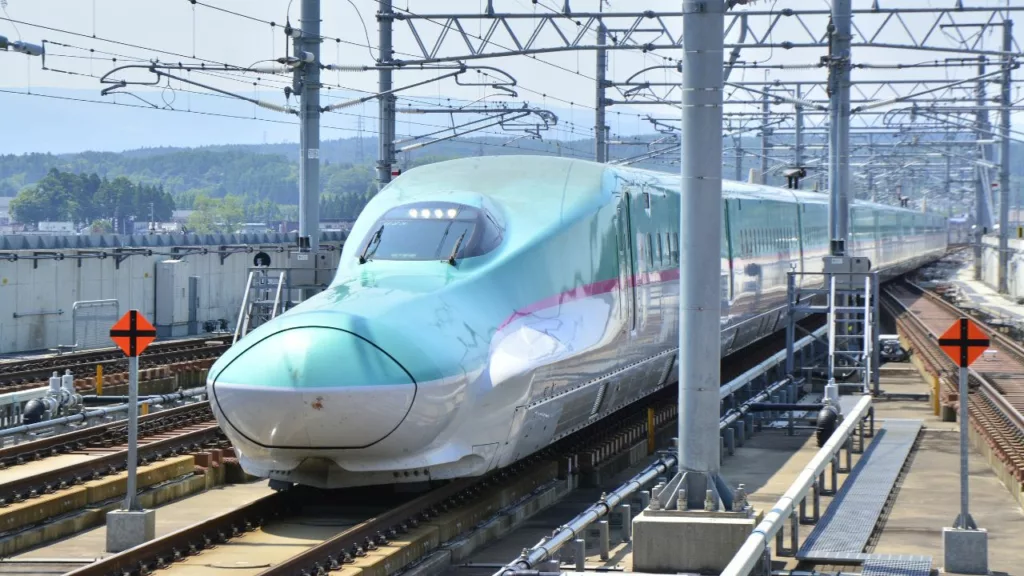
One ticket, unlimited travel throughout Japan! [Best Deal] JR Pass All Japan Rail Pass A must-have ticket for a long-distance trip to Japan!
Is it safe to travel in Japan?
People often ask: Is Japan a safe and tourist-friendly country?
This is a question that many people who plan to travel to Japan for the first time will ask. To put it simply, Japan is different from other countries. Japan is a country that attaches great importance to tourism, and crimes against overseas tourists are very rare. If some unavoidable natural disasters and accidents are excluded, Japan is a very safe country on the whole.
In addition, the Japanese are a nation that attaches great importance to laws and regulations and the feelings of others, so even if you lose your wallet, mobile phone, or a coin, you can find it back with the assistance of the police and station staff thing.
More in-depth, as long as you concentrate on activities in popular tourist attractions and shopping areas, and do not walk into some residential areas or private land, the chances of accidents are basically very low. At the same time, try to avoid going to some unknown restaurants, izakayas, and places suspected of being pornographic places and gambling places, so that you can minimize the chance of accidents.
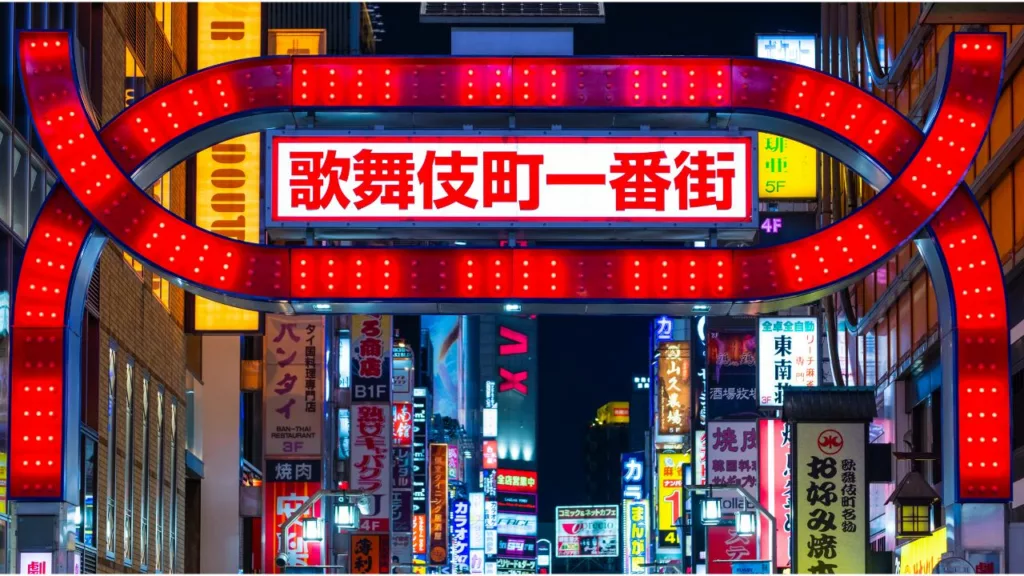
Is Japan suitable for traveling alone?
If you are traveling to Japan for the first time, and there is only one person, you don’t need to worry too much in just a few days in Japan.
Because Japan is a place with very developed railway construction, you will definitely find JR stations or local railway stations near almost all scenic spots. Therefore, there is no need to worry about transportation arrangements. Traveling to Japan by yourself can actually solve transportation planning easily.
In addition, in major cities in Japan such as Tokyo, Osaka, Kyoto, etc., there are also many accommodation plans and restaurants suitable for one person, and many of them are very cheap and good quality accommodation and restaurants. So even if there is only one person going to Japan, it is not like other countries where only double rooms and double packages can be booked.
Another point is that as long as your actions don't affect other people, basically the local Japanese don't care whether you come to Japan alone or in a group. As long as you follow their instructions, whether you are in a hot spring hotel, taking JR, or going to some high-end restaurants alone, they will serve you according to the usual standards.
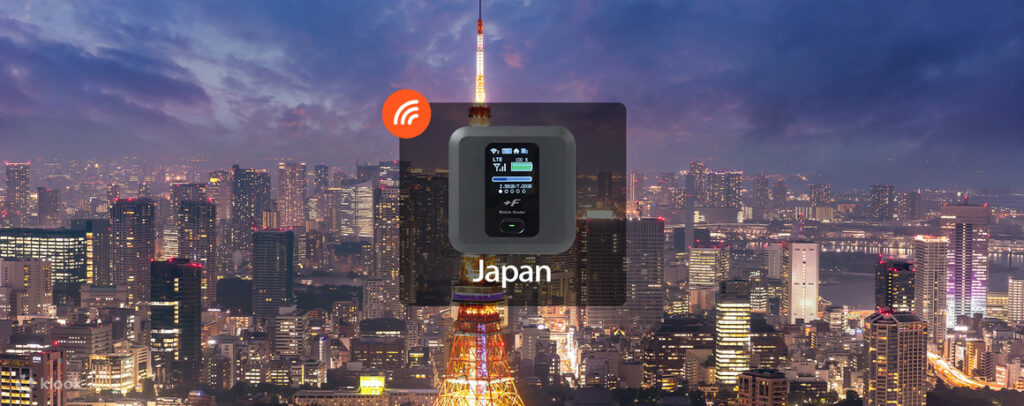
One device, shared by multiple people! [New] NTT Docomo Unlimited Mobile Data Sharer Service Plan Faster and more convenient to receive!
Can I travel to Japan without knowing Japanese?
The answer first: If you only go to some popular tourist spots, this is totally fine. However, if you want to go to some scenic spots suitable for in-depth travel, learning some basic Japanese is a necessary condition for setting off to these scenic spots.
If you are going to Japan with your friends
To put it simply, if you are traveling to Japan with your friends, and you only go to popular tourist attractions in Tokyo, Osaka, and Kyoto, there will be no problem even if you only speak English. Because many of the clerks who can work in tourist areas are people with certain English skills, there will be no problem in ordering food, checking out, or inquiring about scenic spots in simple English. And because you are going to Japan with a group of friends, even if there is an accident, they will help you, so if you can communicate in Japanese, it will be helpful for the itinerary, but it is not a necessary skill.
However, if you are traveling to Japan alone, or plan to go to places other than popular attractions and stay in accommodation other than major hotels, your Japanese ability will completely affect your itinerary experience.
If you go to Japan alone
For example, take the itinerary in Tokyo as an example. If you go to some independent small restaurants, izakayas, etc. in residential areas this time, basically you must understand the Japanese on the menu before you can order food. Or if you want to book some cultural experience activities, you need to have Japanese communication skills to participate.
More importantly, if you are going to Japan alone and plan to leave popular tourist areas such as Tokyo, Osaka, and Kyoto, whether you can speak Japanese will determine your chances of getting help. Because Japanese people in other regions may not be able to understand complex English sentences, especially when you miss the last JR train and need help when you are injured, Japanese will be the fastest language for you to get help.
Of course, if you are on an itinerary that mainly focuses on popular attractions, you can also say "すみません-Sumimasen", "これ- kore", "ありがとうございます- arigato gozaimasu", etc., which will be better than "Excuse Me / Sorry" , "This" and "Thank You" make it easier to get help from the store staff.
What attractions can you choose when you go to Japan for the first time?
It's the first time to travel to Japan, but after opening the map of Japan, I still don't know which places are worth visiting? In fact, the whole of Japan is mainly divided into two main parts, the city and the suburbs. You can decide which place to go according to your knowledge of Japan.
major cities in japan
If you are going to Japan with your friends this time, if you have never traveled to Japan, and if you don’t speak Japanese, Tokyo, Osaka, and Kyoto are all very suitable places for you to go.
Because these three places are very mature tourist areas, besides there are many scenic spots that allow you to arrange a itinerary for a week, and there are also people from different countries working in these areas, so even if you only speak English and Chinese The whole journey can be completed smoothly.
And between Tokyo, Osaka, and Kyoto, I will recommend you to go to Tokyo or Kyoto first, and save Osaka for the next time you come to Japan.
Because the attractions and characteristics of Osaka are actually similar to those of Tokyo, what can be experienced in Osaka can be experienced in Tokyo. However, what you experience in Tokyo may not necessarily be experienced in Osaka. A simple example is like sightseeing at a high-altitude observatory. Tokyo has Tokyo Skytree, Tokyo Tower, and Shibuya Sky, but Osaka only has Osaka Tsutenkaku and Umeda Sky Observatory, but they cannot compare with Tokyo Skytree in terms of height.
In addition, Tokyo and Kyoto represent both modern and traditional Japan. If you are going to Japan for the first time, you want to experience Japan’s big cities, anime, shopping, or Japan’s ancient capital, kimono wearing experience, tea ceremony experience, geisha performance, some traditional Japanese activities and so on.
To sum up, Tokyo and Kyoto are places with very complete tourism resources. Even if you don’t spend too much time researching the itinerary, basically you don’t have to worry about transportation, accommodation, attractions, etc. place to go and get bored.
Japanese regional cities
Of course, for you who will be going to Japan for the first time, you don’t necessarily have to go to places like Tokyo, Kyoto, and Osaka. If you have enough preparations before departure, in fact, Fukuoka, Hiroshima, Kumamoto, Nagoya, Shikoku, Hokkaido, etc., some places with natural attractions are worth your consideration. However, because the transportation facilities in these places are not as developed as Tokyo and Kyoto, there may only be one JR train passing by every hour.
In addition, because these places are not places that some overseas students would choose to go, sometimes it may be a little difficult to communicate in English. In addition, there are many places where the explanations are only in Japanese, which is not like the habit of providing Japanese, English, and Chinese multiple languages at the same time in Tokyo.
So for you who are going to Japan for the first time, if you still choose to go to these places, you need to have a certain level of Japanese ability, and have enough time to study each day's itinerary before departure, so that you can ensure that you are in the itinerary There will be no surprises along the way.
For those who travel to Japan for the first time, unless there are other people who have been to these places who can serve as tour guides and can quickly identify some important traffic and scenic spot information, it is best to have a certain level of Japanese ability, otherwise Should save it for the next time I visit Japan.
What are the attractions to choose when traveling to Japan alone?
If you have traveled to Japan several times, but this time it happens that only one person goes to Japan, and it is the first time to go by yourself, Tokyo, Kyoto, and Osaka are some places suitable for departure at any time. The shopping malls, restaurants, and different attractions are sure to be enough for you to arrange a long-distance trip. If you want to challenge yourself, you can also consider using the JR Shinkansen train to go to Tokyo and Kyoto at the same time to experience two completely different Japans.
In addition, in summer, Mount Fuji, Hokkaido, Hiroshima, and Fukuoka are some places where you can enjoy the natural scenery. Or in Hakone and Nikko in winter, there are many hot spring hotels you can go to. As long as you book the required tickets and accommodation in advance, it is basically as simple as planning a trip to Tokyo.
However, it is not recommended to go alone for some relatively high-risk activities, such as going skiing in winter alone, climbing a mountain in Japan with only one person, or going into some suburban areas alone, all of which must be avoided.
How to arrange accommodation when going to Japan alone?
If you choose to go to areas such as Tokyo, Kyoto, and Osaka, business hotels and youth hostels are some accommodation options worth considering. The characteristic is that the housing price is cheap, and the distance from the station is not very far. Even if you need to drag your suitcase, it is very convenient.
If you want to have enough private space, there are APA Hotel Both are great accommodation options. If you want to communicate more with other people, youth hostels will be a good accommodation solution, but not every city in Japan will definitely have this kind of accommodation option.
For example, I often Agoda The advantage of booking APA hotels in different areas above is that you can apply for free cancellation when you need to change your itinerary. In addition, you will also recommend other hotels, youth hostels, and even capsule hotels in the same area. When the APA hotel has no rooms available, I can immediately book other hotels instead of spending time calling each hotel to check availability.
However, you should pay more attention when you book some high-end hot spring hotels, because most of the hot spring hotel rooms are sold as double rooms, and the meals are mainly set meals for two people. In other words, no matter if you are alone, you still have to pay the cost of a double room before you can stay in those high-end hot spring hotel rooms.
Check Prices and Discount Offer: Book hotel accommodation in Japan
What should I pay attention to when traveling to Japan?
Since Japan is said to be a very safe country, why do we need to pay more attention during the tour?
The reason is simple, because the language and culture of each country are different, which may cause misunderstandings due to some cultural conflicts. Moreover, many people will overestimate their abilities during the trip, or lack of planning, and finally encounter some accidents that could have been avoided.
Therefore, whether you are going to Japan with friends or by yourself, you should pay attention to the following points when you go to Japan for the first time.
Knowing basic Japanese will enhance your travel experience
Since Japanese is the common language in Japan, if you want to get help from the shop staff quickly, the effect of asking questions in Japanese will be much better than English. In addition, making good use of translation software can help you break the language barrier, and the efficiency will be much better than simply using English to inquire with the clerk.
Avoid eating while walking in Japan
Japan is not a country that is used to shopping and eating at the same time, but is used to eating near restaurants and small shops before continuing to go shopping and shopping. If you're used to walking into different shops with your drink in hand, definitely avoid it when you're in Japan. Otherwise, you may need to pay before you can leave when the goods are wet.
Pay attention to the departure time of the last railway train
Regardless of whether you are traveling to any part of Japan, you must pay attention to the departure time of the last train on the railway. Because JR railways in different regions will have different last train times. For example, for JR trains in some remote areas, it is not impossible for the last train to leave at 18:00 in the afternoon.
Although the last JR train in Tokyo will end around 00:10 in the middle of the night, the distance between different stations in Tokyo is actually very far. If you don’t want to spend money to take a taxi, it will take a lot of time to walk there. So before you plan to arrange some night activities, it is better to check the departure time of the last bus of the day.
Avoid being alone on the street late at night
Although Japan is a country with very good law and order, it does not mean that there will be no crimes at all. Especially in some bar areas and nightlife-based areas late at night, if you are not familiar with Japanese culture, you must try to avoid going there late at night. This is the best way to ensure your own safety.
In addition, if you go to Japan alone, when you go to some remote places, try to stay in some main shopping streets after nightfall, so that even if you encounter an accident, you can get help immediately.
Avoid going into residential areas, private land, farmland
The Japanese attach great importance to private land, so even if you see a lot of sunflowers planted in some farmland, it is not recommended to go to touch or take pictures. Just like the Christmas tree in Biei, Hokkaido, you can't actually go in and take pictures, because the location of the Christmas tree is within the scope of private land.
Avoid going into some unknown restaurants
If you go to places where izakaya are concentrated in Tokyo, Osaka, and Kyoto, and you meet some people who entertain you warmly on the street, or tell you that you don’t need to spend time queuing up, hoping that you will go to some specific restaurants, then you must careful. Because those restaurants are likely to be some restaurants that charge high fees. Seats, ice cubes, drinking water, snacks, service fees, etc. will be calculated independently, and they will also give you a high bill.
So if you are traveling to Japan for the first time, or if you are only traveling to Japan alone, it is recommended that you go to some restaurants in department stores, which will be safer and more convenient.
Avoid taking pictures of other people's faces
The Japanese are not a very enthusiastic nation, so when taking pictures in Japan, you must avoid taking pictures of other people. And according to Japanese law, they have the right to refuse to let you take pictures, and they can also ask you to delete photos that include their appearance, which must be paid attention to.
don't force yourself to go to any itinerary
For you who are traveling to Japan for the first time, sometimes you will want to visit several different attractions in one day. But it is often easy to underestimate the travel time required in the middle and whether your physical strength can handle it.
In fact, Japan is a country that is suitable for visiting again and again. Whether you go to a certain scenic spot today or next year, there will still be no big difference in this scenic spot. So when you really have no way to go to a certain scenic spot, it is actually the most appropriate choice to give up decisively.
cheap dining options
Although prices in Japan are not cheap, there are also delicious and cheap bentos sold in convenience stores and supermarkets. For example, there are many branches in Tokyo Kitchen Origin , provides a lot of bento options around ¥500, which is cheaper than lunch and dinner in many restaurants.
In addition, some beef rice restaurants, ramen restaurants, Chinese cuisine restaurants, etc., are all places where you can eat for less than 1,000 yen. If you don't have a lot of travel budget, restaurants like Matsuya, Otoya, Hidakaya, etc. will be your best restaurant choices during your travels in Japan.
Tickets and internet devices required in Japan
If you have never traveled to Japan, you can go first klook.com Book the required Internet devices, tickets, and then depart for Japan. The feature is that it can save the time of queuing up to buy tickets, and sometimes you can get additional discounts, which are basically cheaper than buying tickets on the spot.
and klook.com Basically, it contains most of the packages you need to use during your travel in Japan, from theme park tickets, JR train passes, to different one-day tour guide groups. As long as you plan your itinerary, you can start immediately with these packages.
Japan is a country suitable for traveling in any season and at any time. No matter whether you are going to Japan for the first time or whether you are going to Japan alone, you will always find a way that suits you best to experience different aspects of Japan. local culture.
If you are planning your next trip to Japan, you must check out more travel information articles on this website. Maybe you can get a new experience in this Japan travel itinerary!
More Japanese fun tips
communication, transportation
How to Use Suica Card with Apple Pay on iPhone? Low-cost method to call to Japan by Skype: Step-by-Step Guide Japan Internet SIM Card Recommendation "Which phone card is the best among plans with unlimited data and unlimited speed? Which Side Should You Stand? Rules in Escalator in Japan Best Japan Travel Apps: Public Transport App, Rail Route App , Weather Forecast App and More
Shopping Advice, Offers
Where to Buy Japanese Sake? Complete Guide to Buy Sake in Japan Best Sake for Beginners: Complete Guide to Pick the Best Sake for Yourself
Itinerary suggestion
Itinerary suggestions for visiting Japan for the first time and traveling alone 5 Cat Islands in Japan: Meeting Cats in Tokyo, Shikoku and Fukuoka
More Japan Travel Information: Tokyo | Kyoto | Hokkaido | Climbing Mt.Fuji | Hakone | Lake Kawaguchi Tips for Traveling in Japan | Japan Hotel Deals | Klook Latest Promo Code
Ryu_C@RakuRakuJP
RakuRaku, which is 楽々 in Japanese. This site is committed to providing the most authentic travel information in Japan, bringing you a different Japan travel experience!
60 Things to Do in Tokyo: Complete Guide for Beginners in Tokyo
Shinjuku gyoen national garden: review, garden map and more, more different travel information, 5 cat islands in japan: meeting cats in tokyo, shikoku and fukuoka, best sim for japan: complete review on esim, unlimited data sim for japan, 7 steps to add suica card into apple wallet, low-cost method to call to japan by skype: step-by-step guide , which side should you stand rules in escalator in japan, where to buy japanese sake complete guide to buy sake in japan, best sake for beginners: complete guide to pick the best sake for yourself, 7 apps for traveling in japan: get this weather/transportation/map apps before you go.
RakuRakuJP , is a website dedicated to sharing articles about in-depth travel experiences in Japan.
I believe that before you travel to Japan every time, you will hope to get the most comprehensive travel information, and then be able to successfully complete the entire travel itinerary.
And our goal is to gather all practical itinerary information, discounted accommodation, and tickets, so that you can plan the entire Japan travel itinerary in the most convenient way.
useful link
- About RakuRakuJP
- RakuRakuJP All Articles
- Privacy Policy
- Website Terms of Use
- Agoda booking offers
- Klook Booking Offer
Editor's Picks
Latest useful travel articles.
©2017- 2024 RakuRakuJP. All Right Reserved.
- Contact us to advertise
- Destinations
- Travel Tips
- Travel With Us
- Paid Travel Internship
- TTIFridays (Community Events)
- SG Travel Insider (Telegram Grp)

5 Japan Itineraries With Budget JR Pass Alternatives
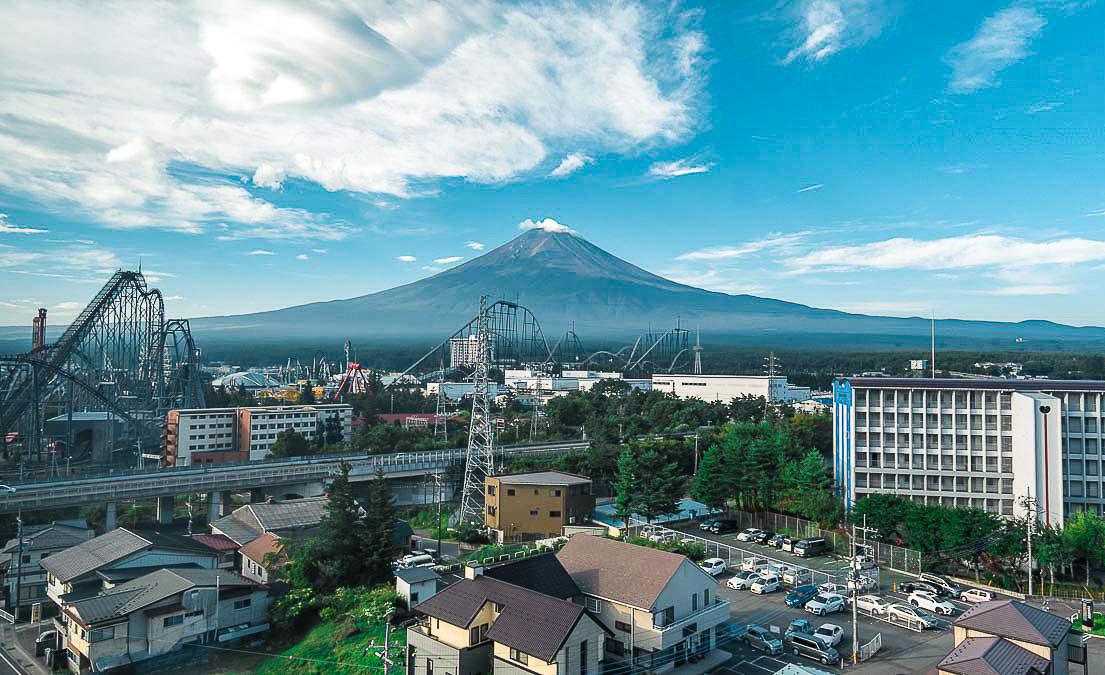
Budget-friendly alternatives for your next trip to Japan!
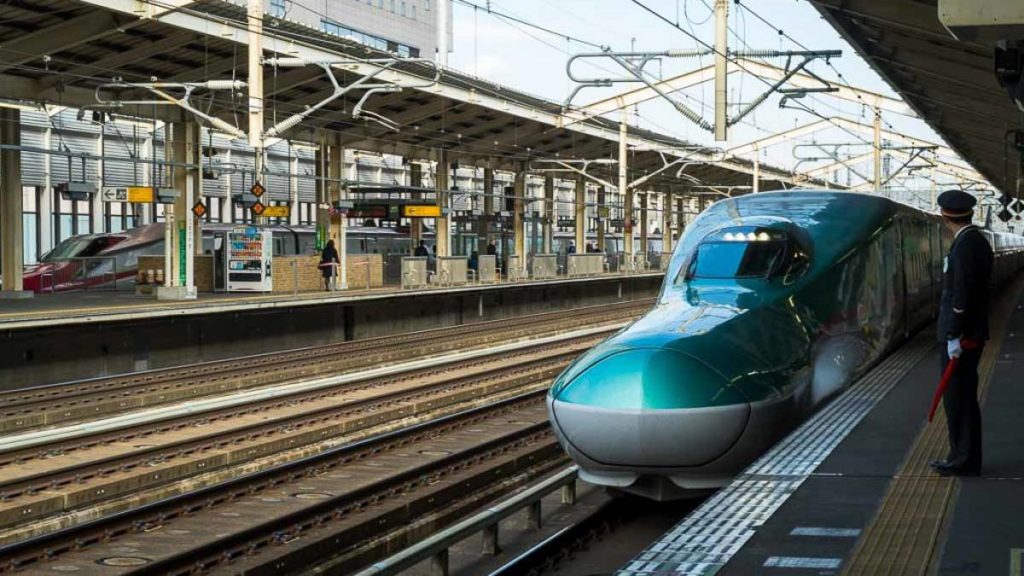
In case you missed it, JR Pass prices have increased by more than 30% since 1 Oct 2023 . For example, the 7-day Whole Japan JR Pass which used to cost ¥29,650, now cost ¥50,000 (~S$450)! Quite a hefty increase!
And to be honest, maximising the Whole Japan JR pass in the past always made the itineraries feel a little rushed. So we took this opportunity to find ways to explore more in different regions of Japan.
Here we’ve put together five popular Japan itineraries that make use of JR Pass alternatives, plus tips on how to use the JR Pass at the end!
Read also: JR Pass Budget Alternatives — How to Explore Japan Without Paying ¥50,000 for a 7-day Pass
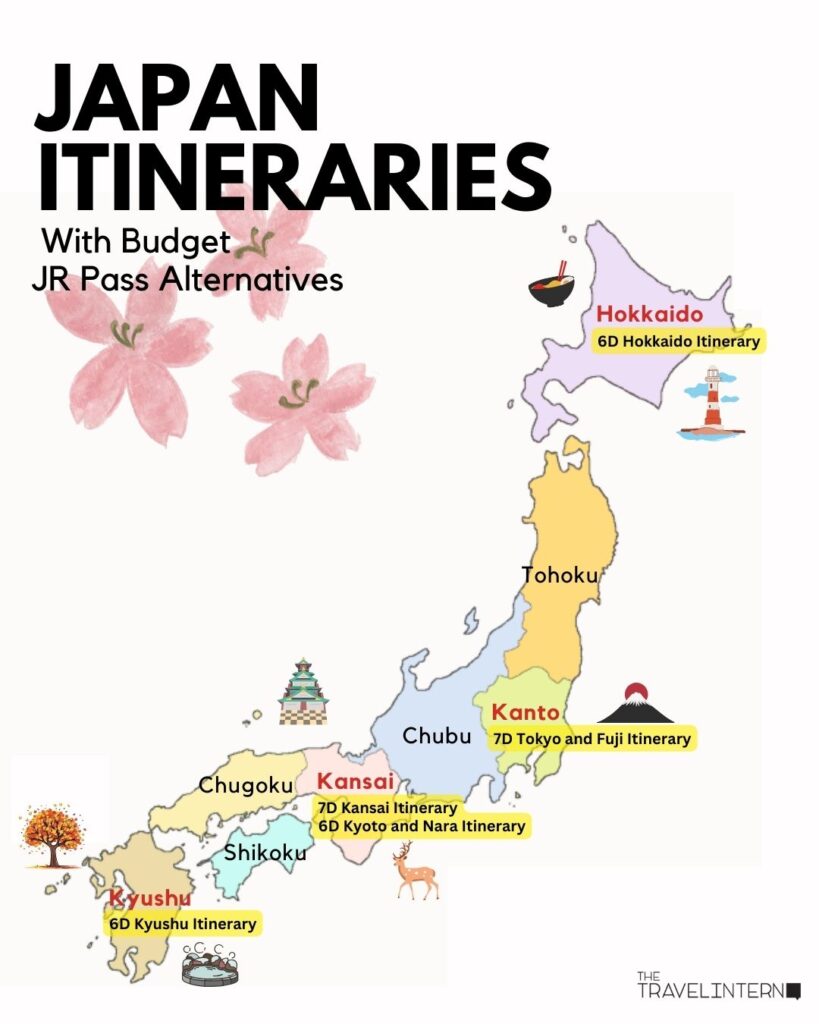
Click to jump to each section: 7D Kansai Itinerary | 6D Kyushu Itinerary | 6D Hokkaido Itinerary | 7D Tokyo and Fuji Itinerary | 6D Kyoto and Nara Itinerary
1) 7D Kansai Itinerary
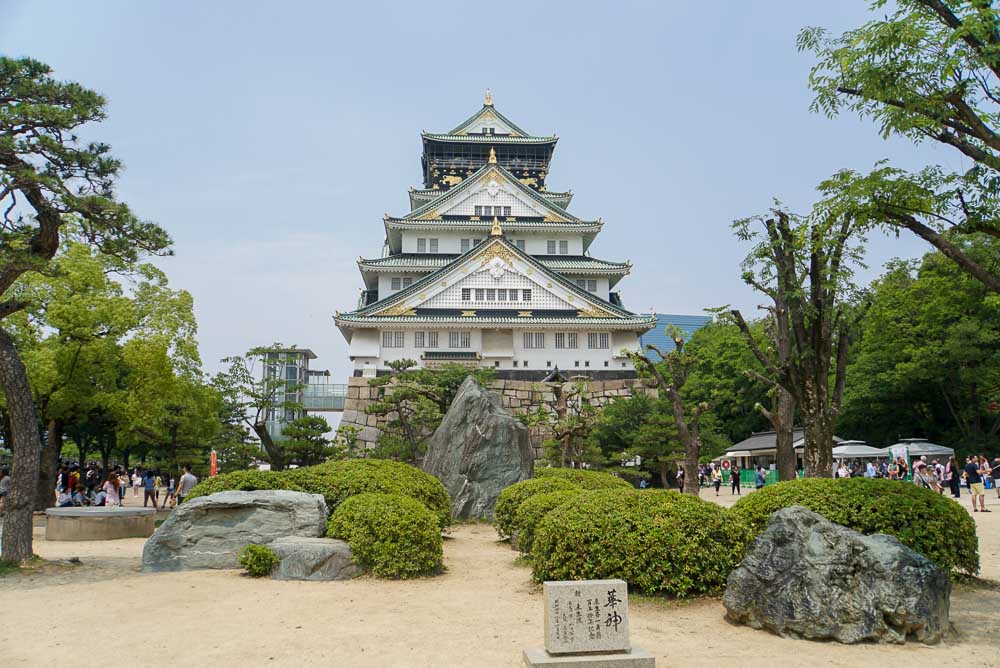
Cities covered: Osaka, Nara, Okayama, Kurashiki, Kobe, Kyoto Highlights: Universal Studios Japan , Okayama Castle , Arashiyama Bambo Grove , Nara Park Recommended Transport Passes : Nankai Line Airport Express Train Tickets ( ~S$12.20 ), 2-day Osaka Amazing Pass ( ~S$30.80 ), 5-day JR Kansai WIDE Area Pass ( ~S$108 )
Our Kansai itinerary kicks off in Japan’s second-largest city by population — Osaka.
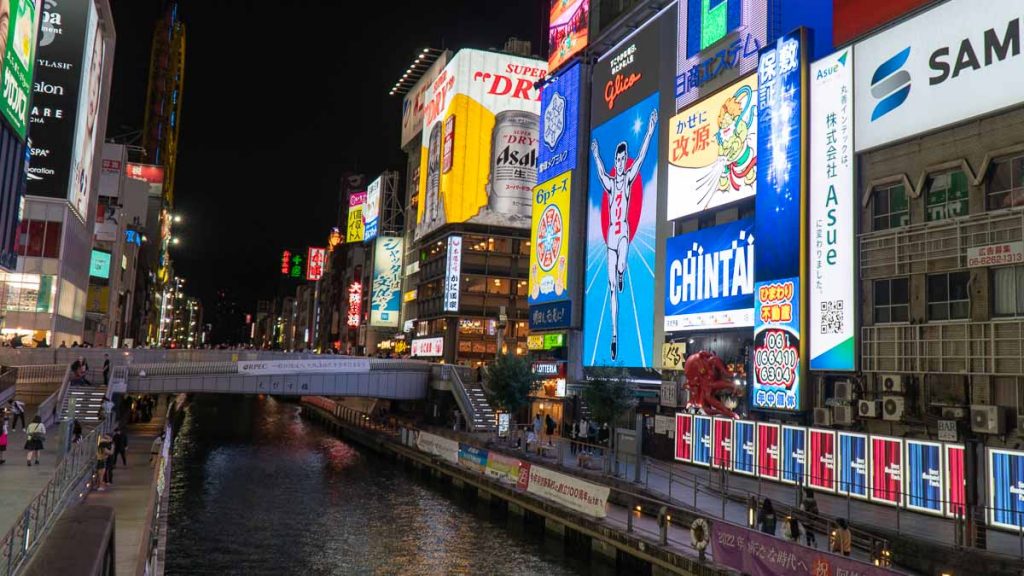
Spend the first two days exploring Osaka city — remember to activate your 2-day Osaka Amazing Pass ! Hit up shops along Shinsaibashi-Suji Shopping Street, pose with the famous Glico man at Dotonbori Street , visit Osaka Castle as well as teamLab Botanical Garden Osaka .
The 2-day Osaka Amazing Pass covers unlimited trips on the Osaka subway, tramway, and buses. It also includes free entry to more than 50 attractions (some covered in this Japan itinerary)!
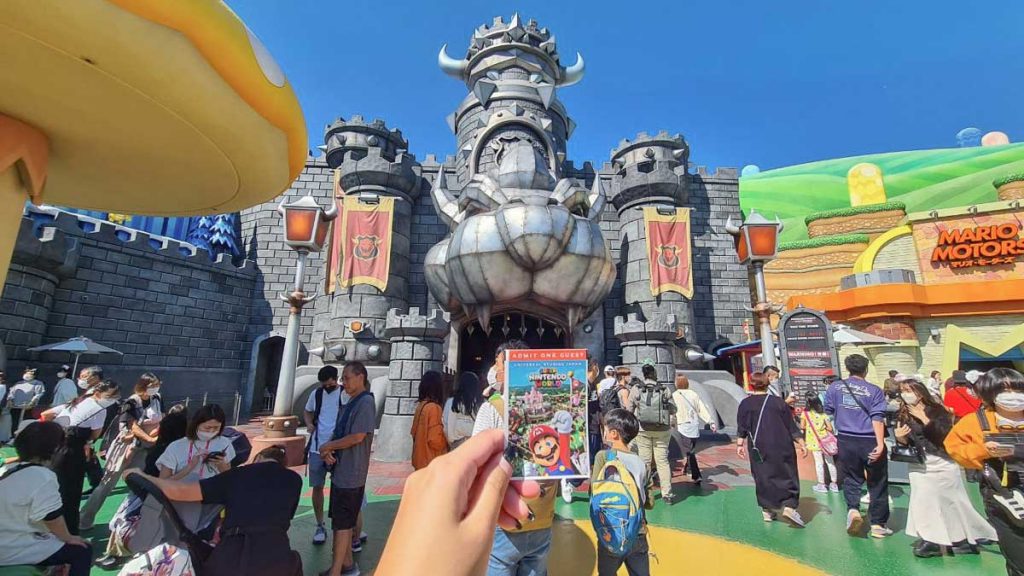
Here’s where you should activate your 5-day JR Kansai WIDE Area Pass — for day trips out of Osaka! Spend a full day at Universal Studios Japan, home to the world’s first Super Nintendo World . That’s not all, visit popular themed areas within the park like Minion Park and The Wizarding World of Harry Potter .
*Pro-tip: Maximise your time at Universal Studios Japan by getting express passes ( from ~S$106.50 ) and skipping the queues!
Read also: The Ultimate USJ Guide and Tips (2023) — Universal Studios Japan
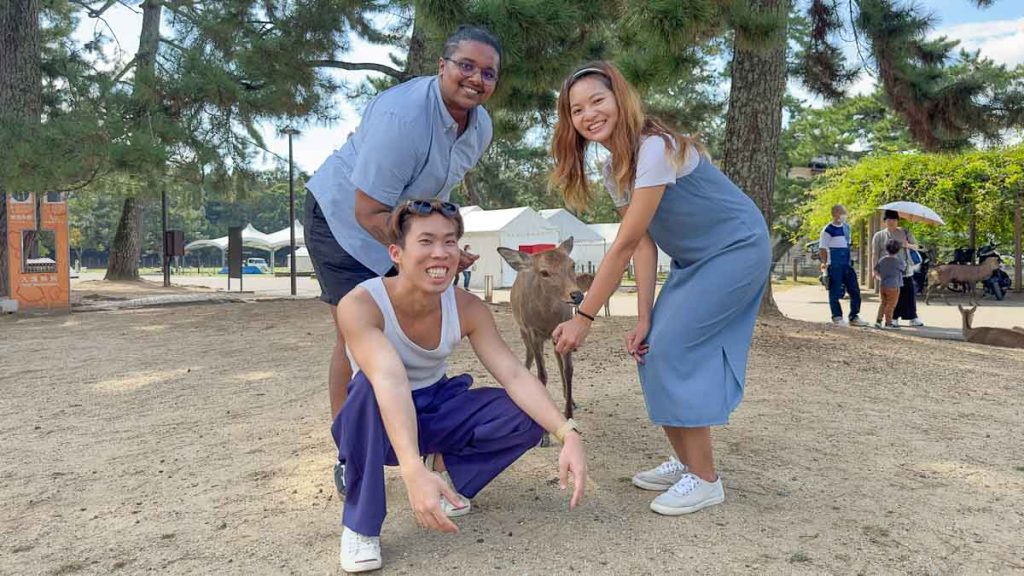
Next stop, Nara! Visit Todaiji Temple and feed adorable deers at Nara Park before ending the day at a relaxing onsen back in Osaka.
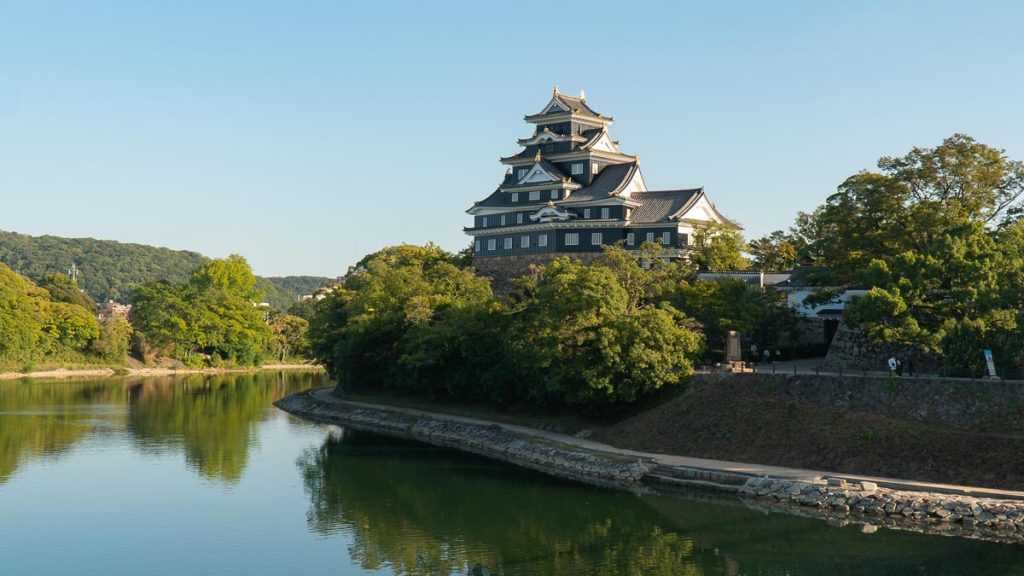
Spend a day exploring Kurashiki (known as the “Venice of Japan” cause of its beautiful canal stretch filled with gondolas), Okayama (for its gorgeous all-black castle) and Kobe (for beef) — all easily accessible via Japan rail!
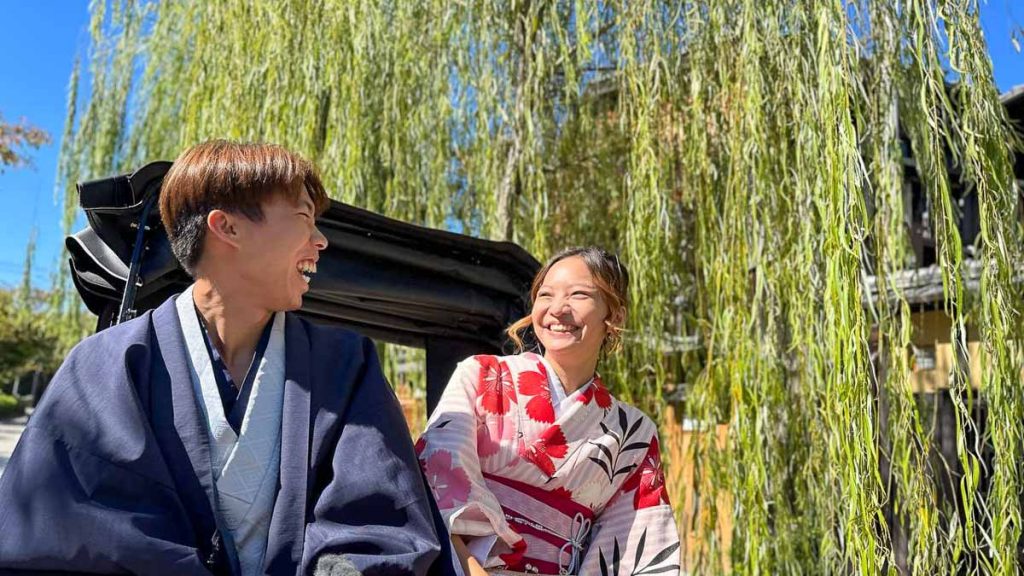
After that, head to Kyoto for two days. Dress up in kimonos and go on a rickshaw tour of the Higashiyama district , visit the world’s first Starbucks with tatami flooring and hike up the famous Fushimi Inari Shrine .
*Pro-tip: Purchase the Nankai Line Airport Express Train Tickets ( ~S$12.20 ) for airport transfer to Namba Station (Osaka).
Check out our full Kansai itinerary .
2) 6D Kyushu Itinerary
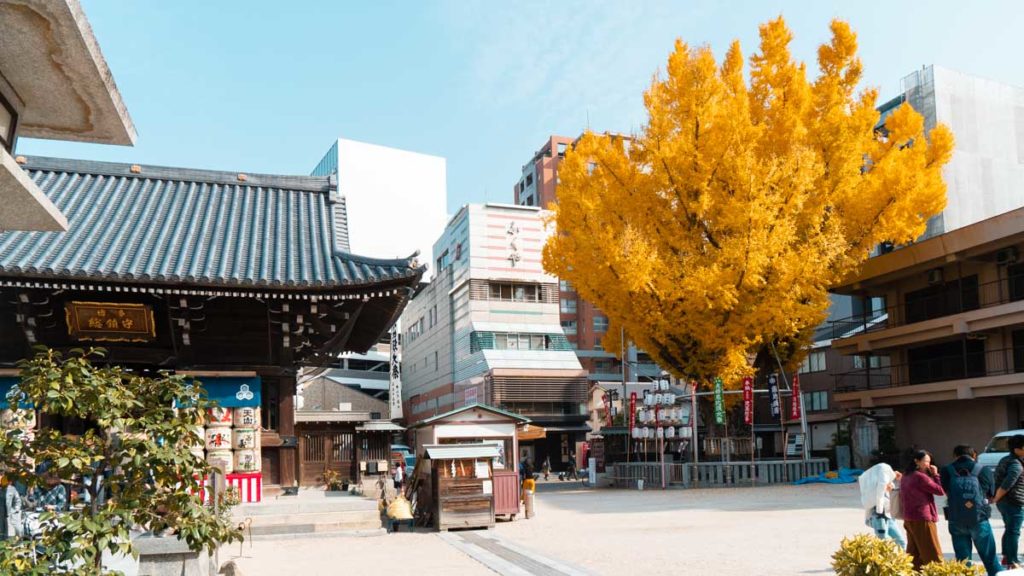
Cities covered: Fukuoka, Kitakyushu, Kagoshima, Beppu Highlights: Kokura Castle , Beppu Hot Springs , Sengan-en Garden Recommended JR Pass : 7-day JR Kyushu Rail Pass ( ~S$225 )
If you’ve already visited Tokyo and Hokkaido and want to check out lesser-known places in Japan, consider this Kyushu itinerary !
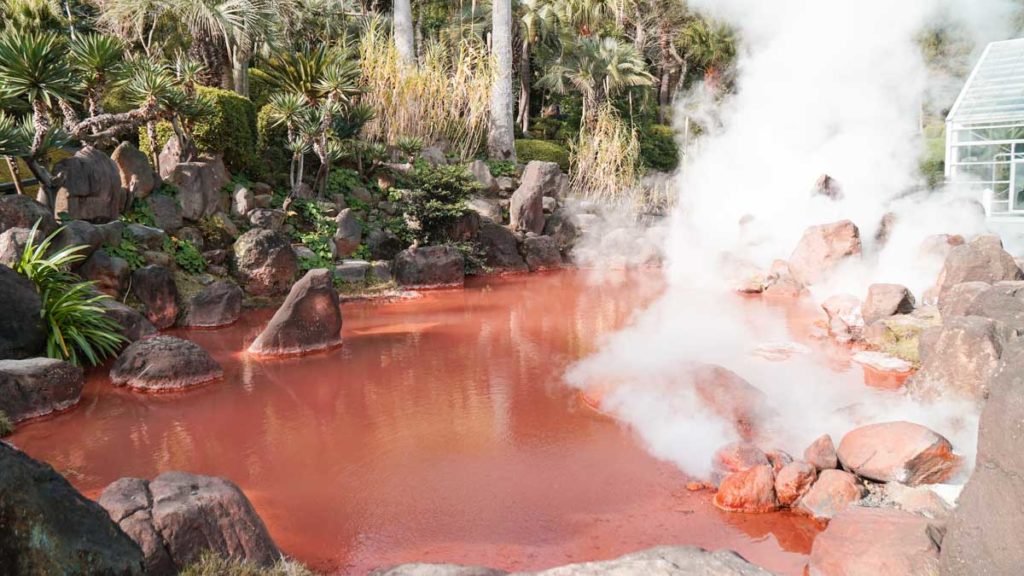
Kyushu is Japan’s third largest and southernmost island. There are direct flights from Singapore to Fukuoka (Kyushu’s capital!) in just under 6 hours.
The JR Kyushu Rail Pass includes unlimited rides on reserved and non-reserved seats on all local trains, limited express trains, and shinkansen (Mizuho, Sakura, and Tsubame) within the designated area . It must be used on consecutive days.
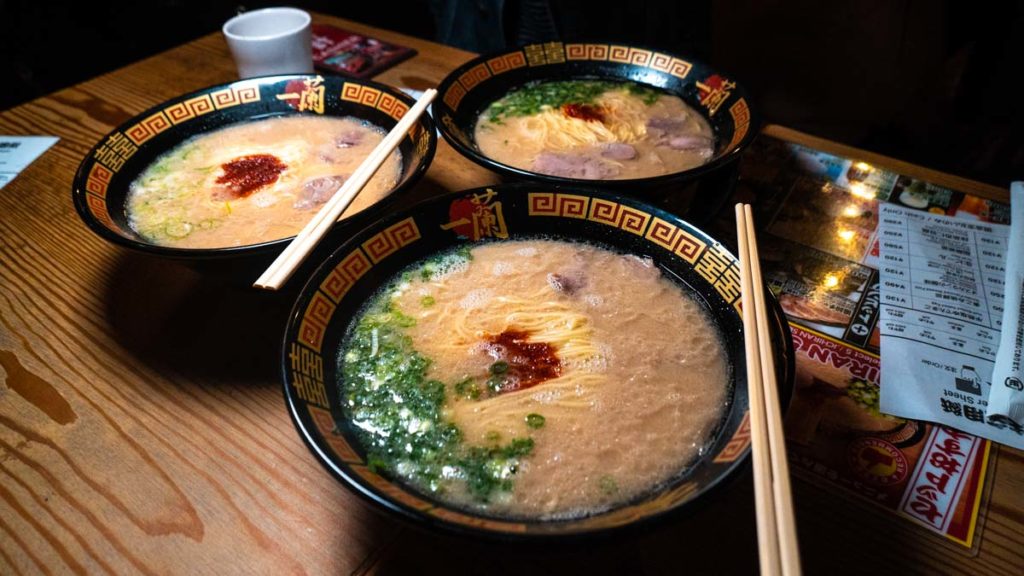
In Fukuoka , visit Kushida Shrine , escape the city by heading to Fukuoka City Zoo and Botanical Garden and have dinner at Ichiran Ramen .
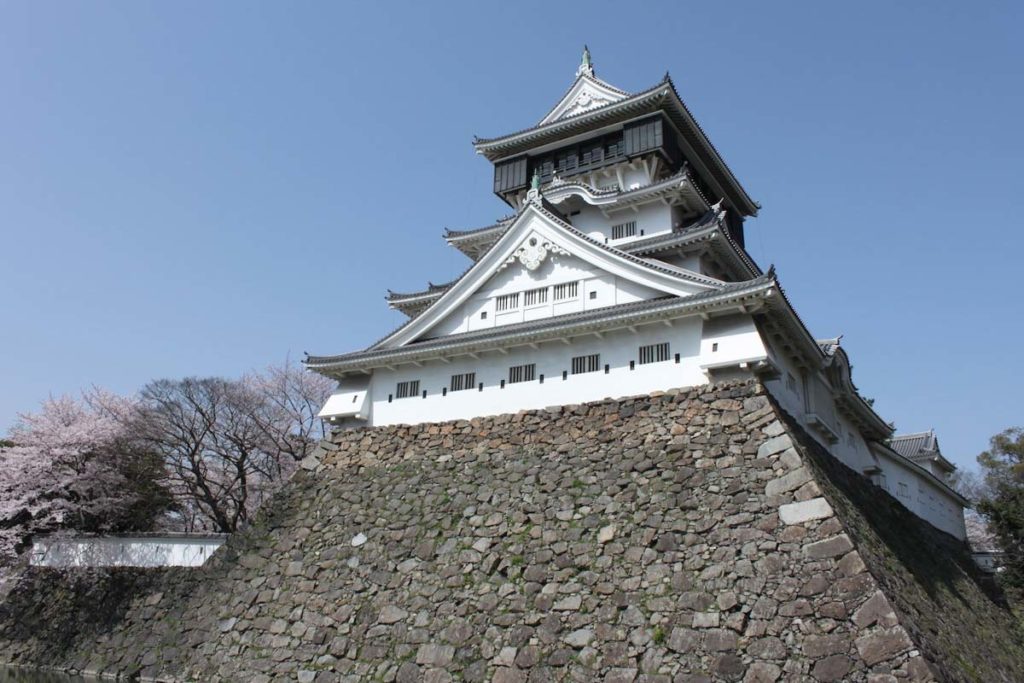
Photo credit: Fukuoka Now
The next day, head to Kitakyushu and Shimonoseki ! Try the city’s infamous poisonous pufferfish delicacy ( fugu) at Karato Market and then visit Kokura Castle — the only castle left standing in Fukuoka Prefecture.
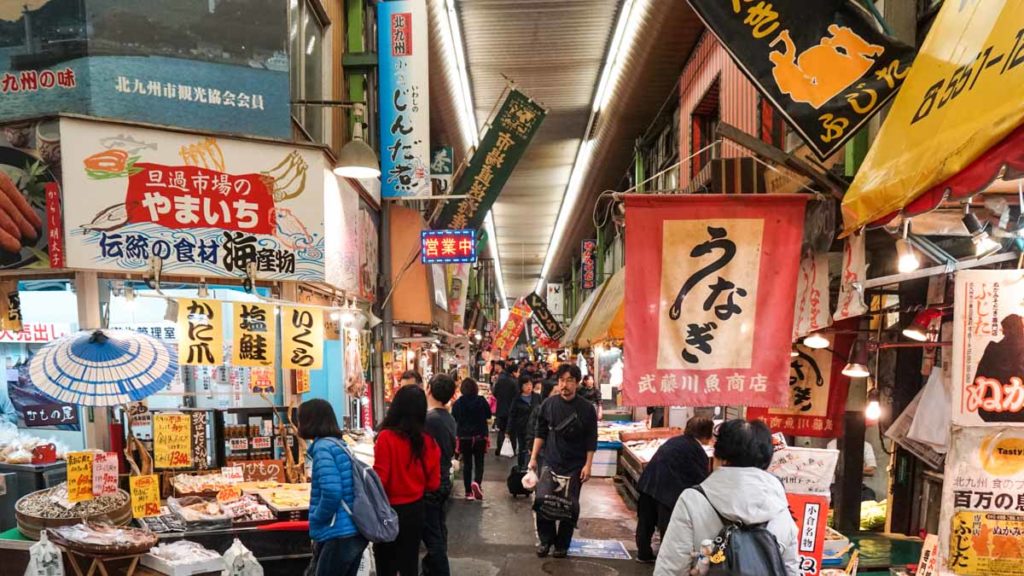
Before leaving Kitakyushu, make sure to stop by Tanga Ichiba Market where you can find local specialities such as karashi mentaiko (辛子明太子, spicy salted roe) and nukadaki (ぬか炊き, fish simmered in miso).
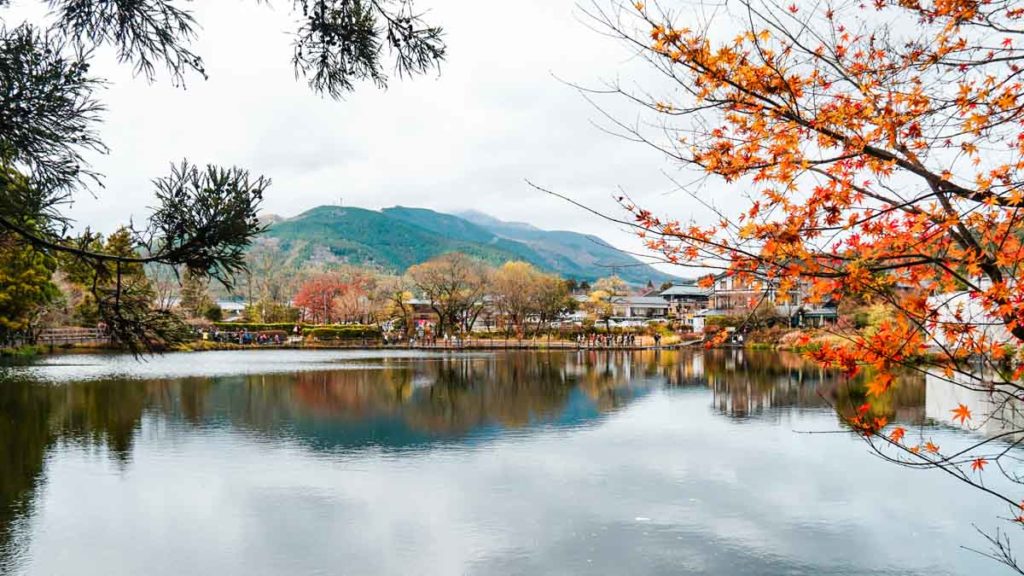
We also visited the quaint onsen town of Yufuin to see Kinrinko Lake during autumn! This lake is known as “Golden Fish Scales Lake” and has both hot and cold springs welling up from the bottom.
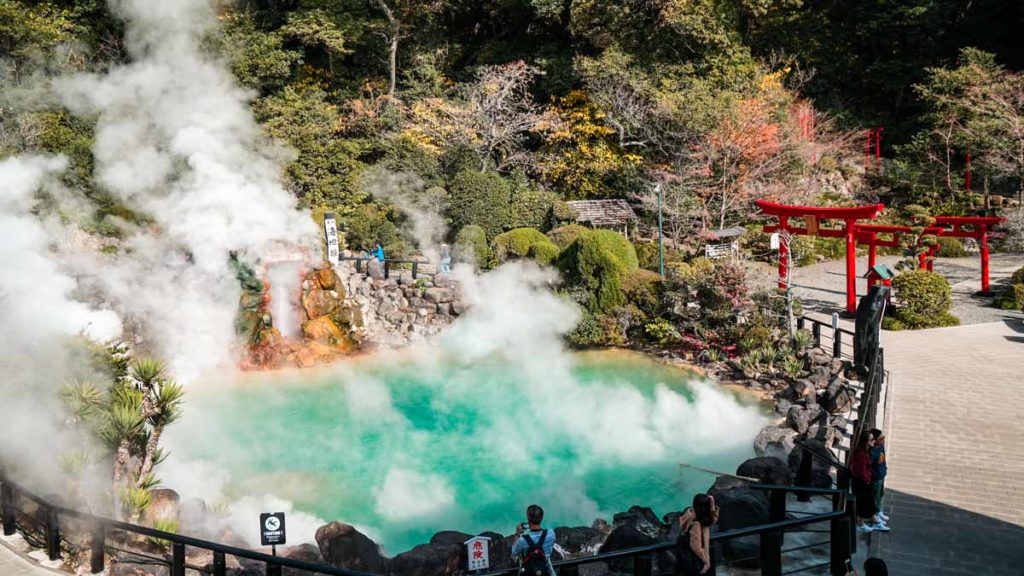
You can’t visit Kyushu without a trip to Beppu — the “home of hot springs”. Beppu’s most famous attraction, the “ Hells of Beppu ”, features interesting natural hot springs like Chinoike Jigoku (blood red pond) and even Oniyama Jigoku (where crocodiles are kept)!
Another unique experience here is being buried in sand ; the naturally heated volcanic sand is known to have benefits like improving blood circulation.
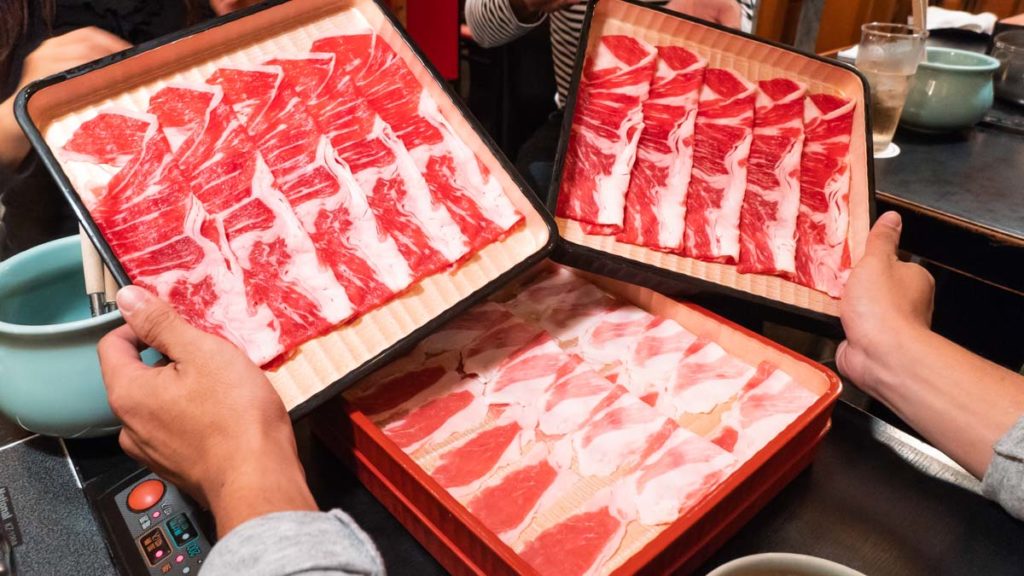
Next stop, Kagoshima ! Here we visited the Sengan-en Garden and feasted on local black pork (Kagoshima Kurobuta).
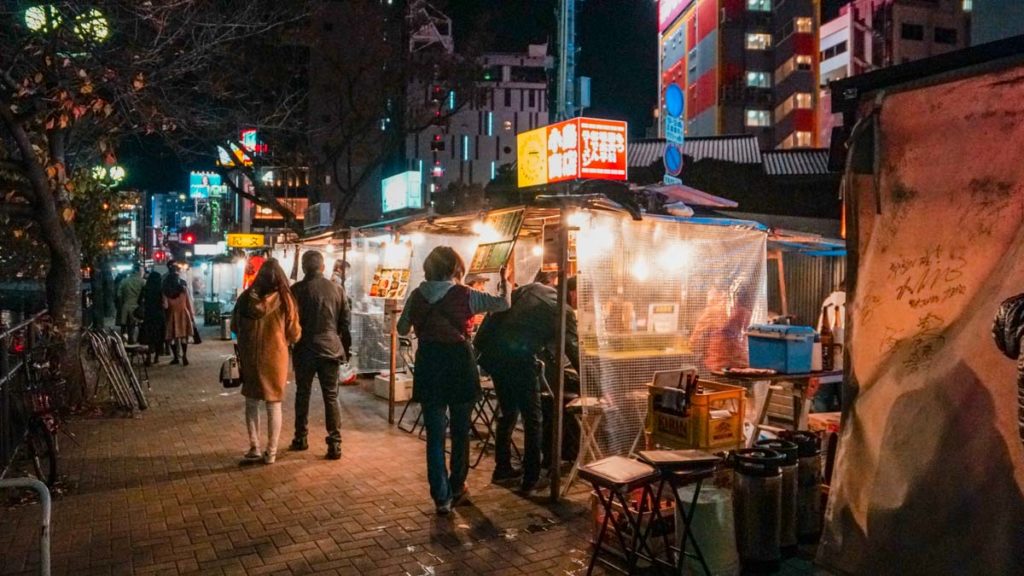
Finally, travel northwards back to Fukuoka. Make the most of your last day and visit Ohori Park , The Ruins of Fukuoka Castle , Tōchō-ji Temple and have dinner at a yatai (roadside food stalls).
Check out our full Kyushu itinerary .
3) 6D Hokkaido Itinerary
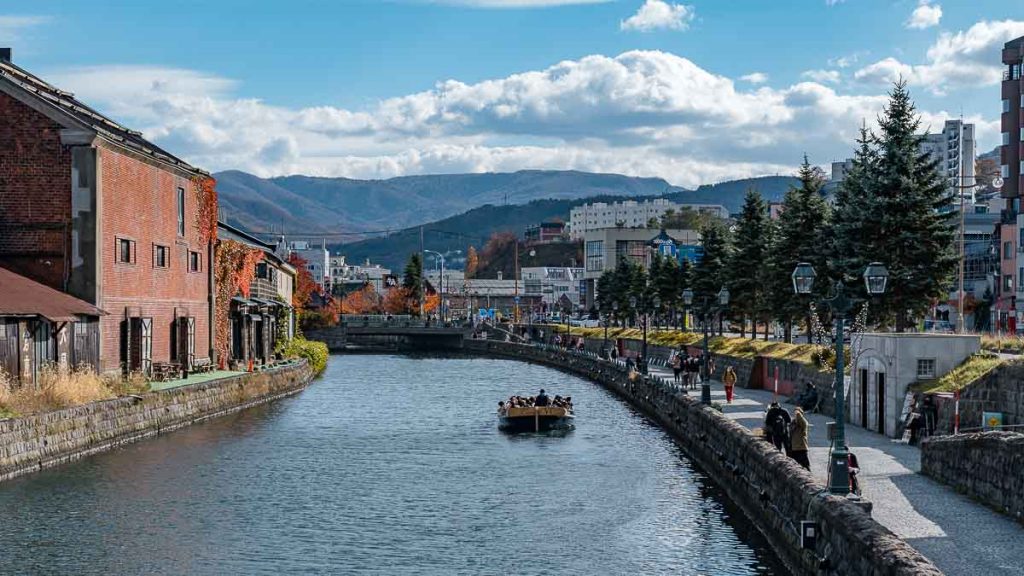
Cities covered: Sapporo, Otaru, Asahikawa, Biei Highlights: Hiyoriyama Lighthouse , Otaru Canal , Shirogane Blue Pond Recommended JR Pass : 7-day JR Hokkaido Rail Pass ( ~S$231 )
The JR Hokkaido Rail Pass comes in 5, 7 or 10 consecutive days and covers all JR Hokkaido Lines (except the Hokkaido Shinkansen). This includes local train networks as well as select JR Hokkaido buses.
This Hokkaido rail itinerary starts off in Sapporo , Hokkaido’s vibrant capital known for good food and beautiful cityscapes!
Visit Sapporo’s main attractions on your first two days — the Tanukikoji Shopping Arcade (a 1km-long shopping street), Sapporo TV Tower and the iconic Shiroi Koibito Park (a chocolate theme park dedicated to these treats).
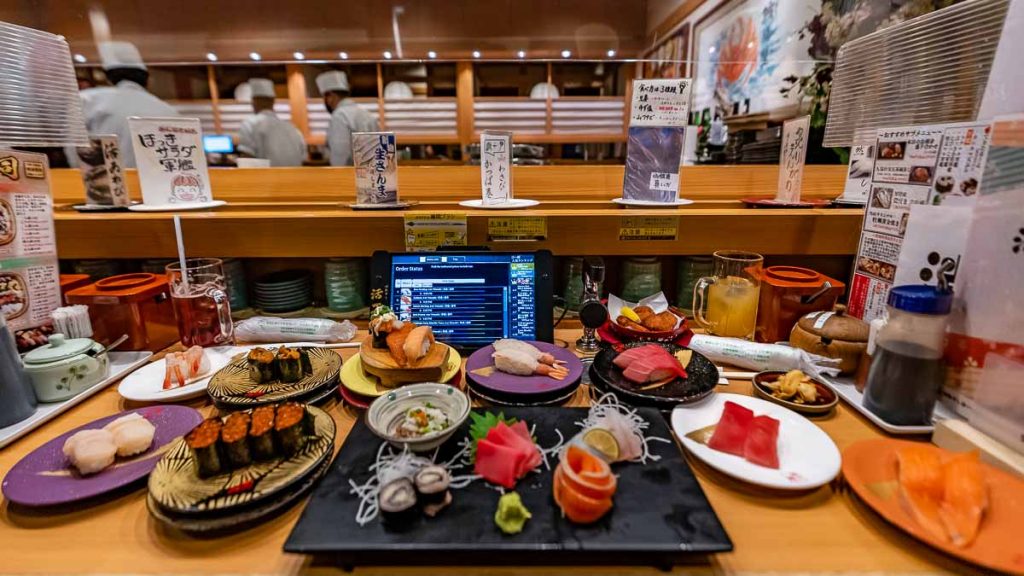
Food-wise, Sapporo is packed with fantastic dining options. Some of our favourite meals include Gotsubo Oyster Bar (~S$1.40 for a thicc oyster? Say no more), Soup Curry Garaku (this dish originated in Sapporo!) and Katsuissen (for an authentic sushi belt experience).
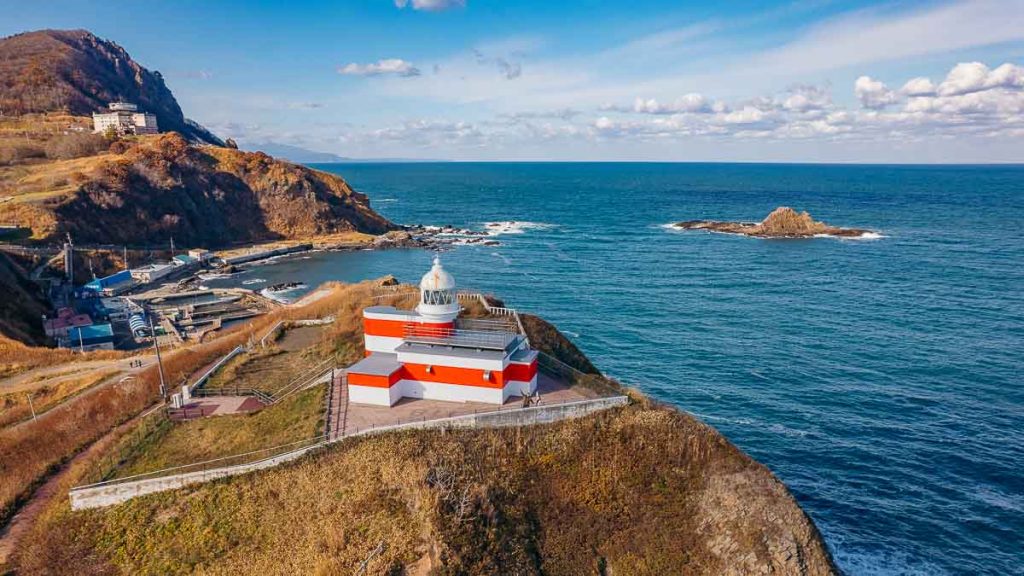
After exploring Sapporo, it’s time for a day trip to Otaru. Otaru is a charming coastal town that’s a 35-minute train ride from Sapporo. This is one train journey you don’t want to nap on — the route is extremely scenic!
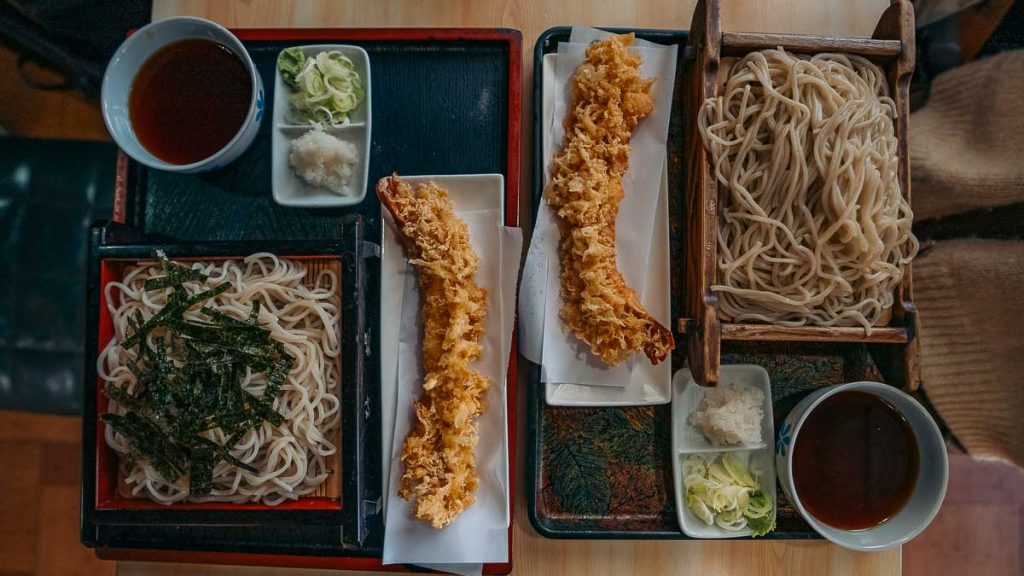
We first headed to the coast to see Hiyoriyama Lighthouse before going back to the city centre. In the city centre, visit the Otaru Canal , Former Temiya Railway and Sakaimachi Dori Shopping Street . For meals, we had fresh kaisendons at Sankaku Market and delicious soba at this quaint little restaurant .
Next on our Hokkaido itinerary is Asahikawa , where we checked out Asahikawa Ramen Village , Hokkaido Gokoku Shrine and had a yummy mutton bbq dinner .
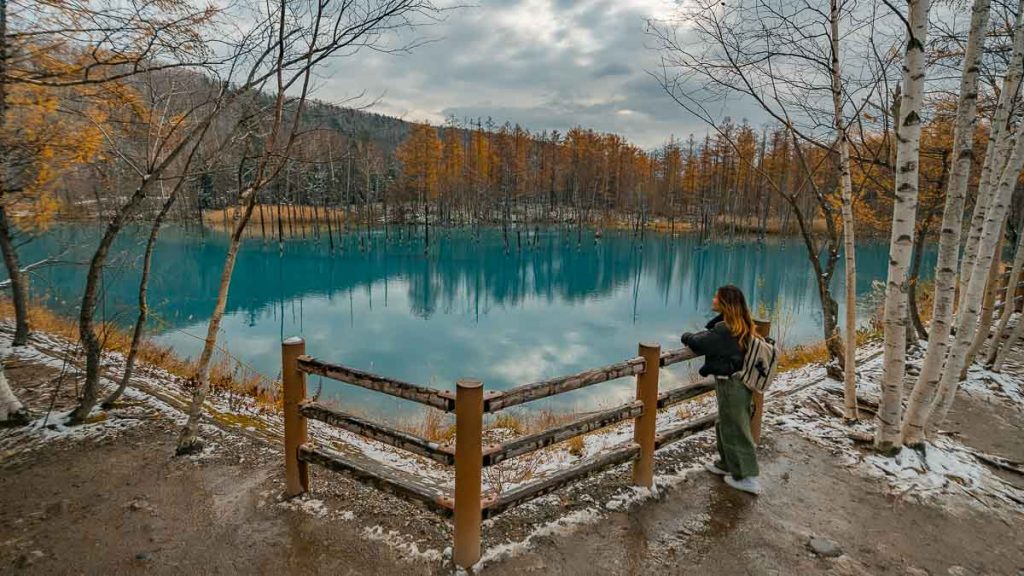
We then rented a car for a day to explore the nearby town of Biei — dropping by Shirogane Blue Pond , Shirahige Waterfall , Tokachidake Observatory and the alpaca farm at Shikisai no Oka .
Check out our full Hokkaido Japan Itinerary .
4) 7D Tokyo and Fuji Itinerary
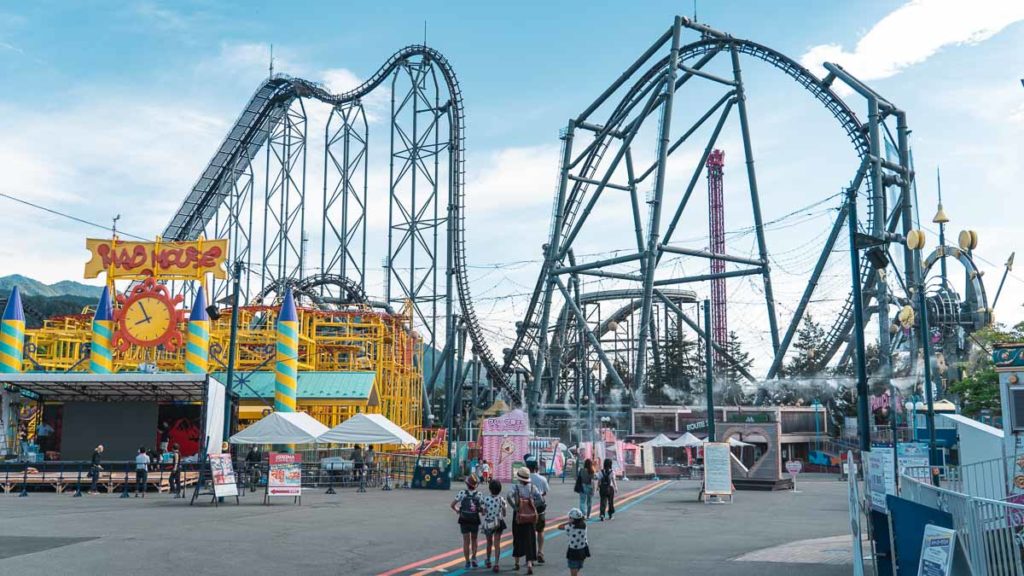
Cities covered: Tokyo, Fuji Highlights: Mount Fuji , Harajuku , Shinjuku , Shibuya Recommended JR Pass : 3-Day Tokyo Subway Ticket Unlimited Rides ( ~S$13.60 ), Fuji Excursion Train ( ~S$36 )
Start this Japan itinerary on a high — more specifically, at the top of Japan! From Shinjuku, it takes just under 2 hours to get to Mount Fuji via the Fuji Excursion Train .
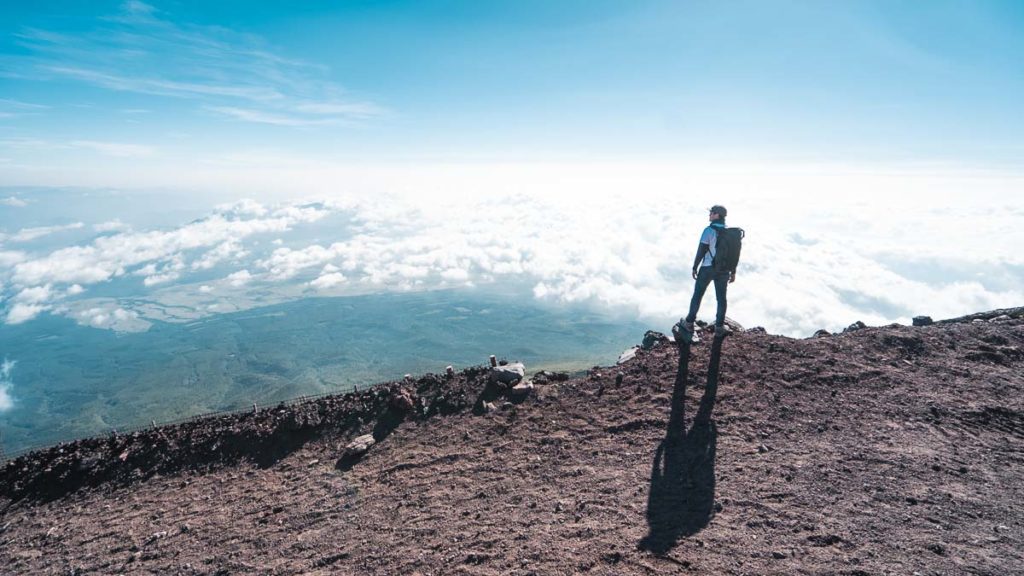
Because just viewing Mount Fuji isn’t enough, why not dedicate two days to climbing it ? It’s a tough journey, but trust us — the views and sunrise from the peak make the entire journey worth it.
Read also: Guide to Climbing Mount Fuji — Everything You Need To Know About Climbing Japan’s Highest Mountain
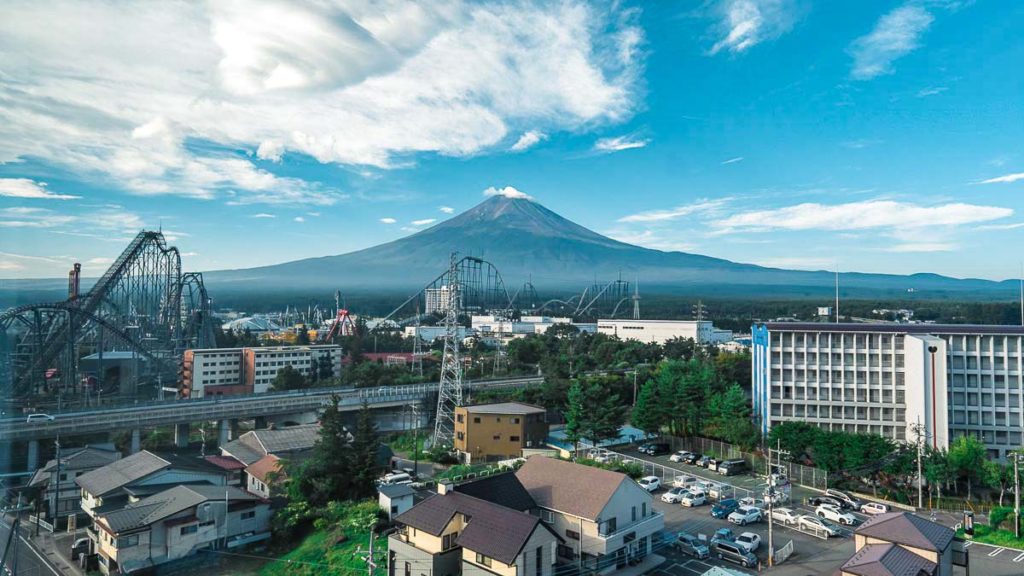
Since you’re already in Fuji, you can’t leave without visiting Fuji Q Highland . This theme park has gorgeous views of Mount Fuji in the background and is known for crazy rides. Like Takabisha , boasting one of the steepest drops (121°!!) and Eejanaika , a 4D rollercoaster with 14 inversions.
Read also: The Best Roller Coasters in Japan Most Tourists Miss — Fuji Q Highland Guide
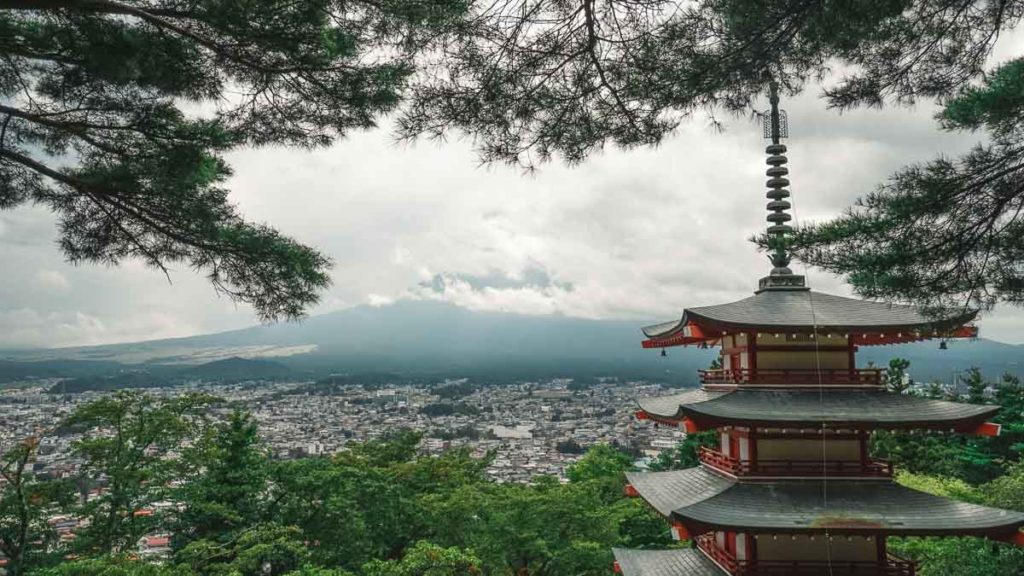
Next, spend a full day road-tripping around Kawaguchiko and Mount Fuji. If you’re travelling in a group, it’s best to rent a car on this day!
Head to Kawaguchiko Natural Living Center for blueberry soft serve, climb 396 steps up to the viewpoint at Chureito Pagoda and savour delicious soba for lunch .
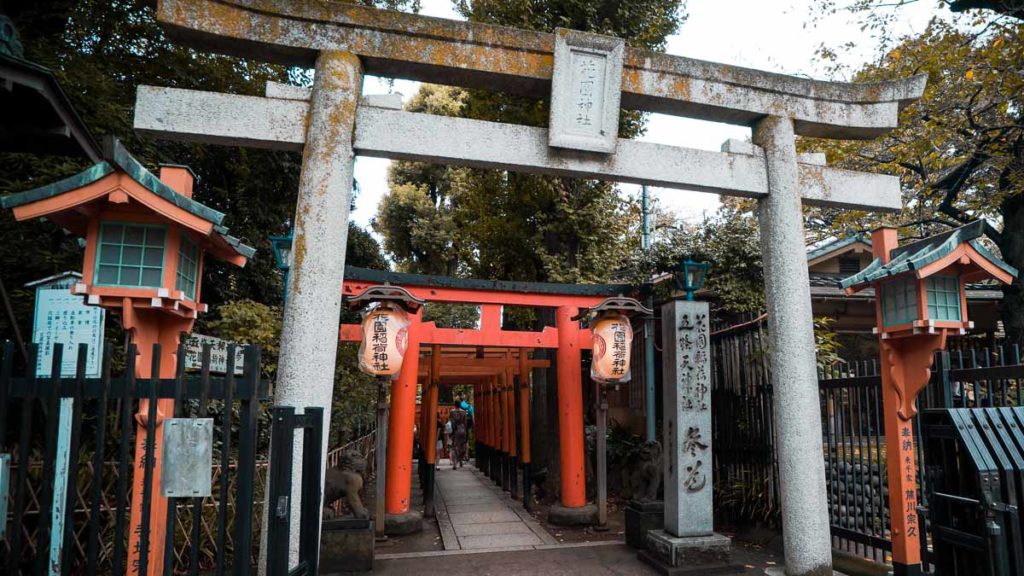
After four days exploring Fuji, it’s time to return to Tokyo . One of the best things to do in Tokyo is explore Ueno — the cultural heart of the city. Visit the Tokyo National Museum and Hanazono Inari Shrine in Ueno Park , grab street food at Ameyoko Shopping Street and try tinned snacks (including bear meat) at mr. kanso bar .
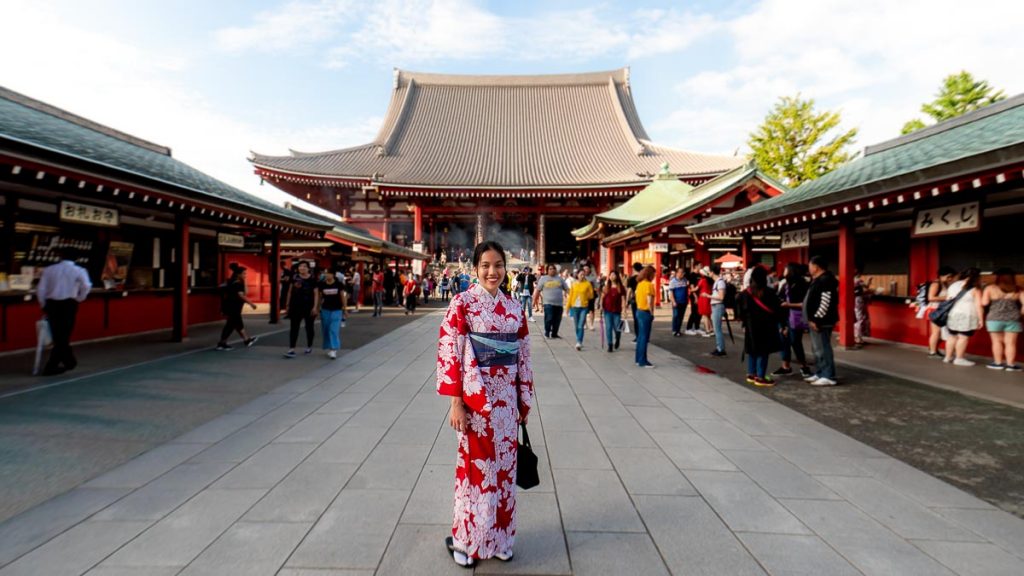
Then, head over to the neighbourhood of Asakusa to watch sumo training, don a kimono to snap photos at Sensoji Temple and relax at Asahi Beer Headquarters while trying limited-edition beers.
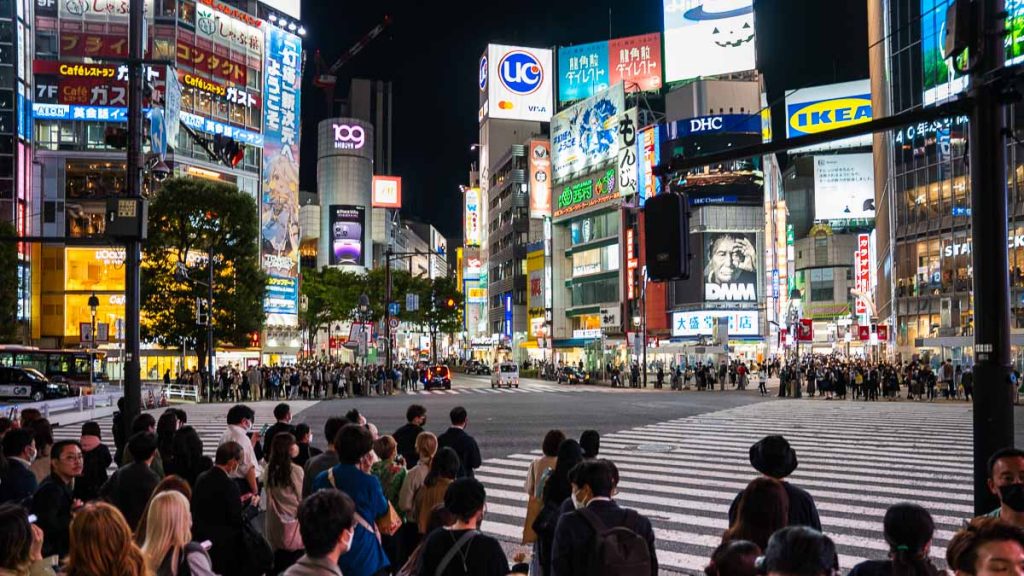
The last day of this Japan itinerary is dedicated to Shinjuku and Shibuya — places you can’t miss when you visit Tokyo! Visit the Imperial Palace , sightsee at Harajuku and enjoy the lively atmosphere at Shibuya crossing .
Check out our full Tokyo and Mount Fuji itinerary .
5) 6D Kyoto and Nara Itinerary
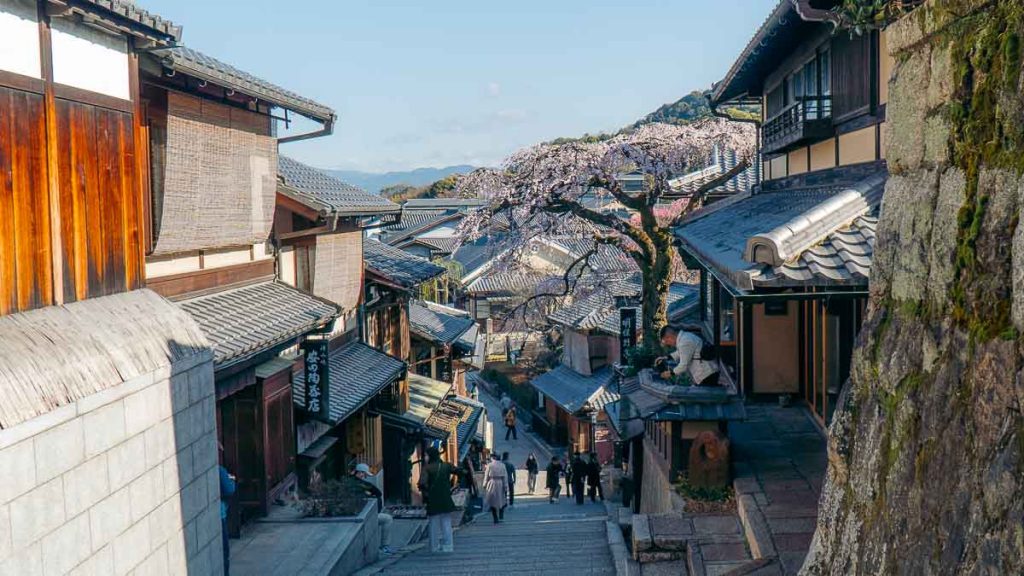
Cities covered: Kyoto, Nara Highlights: Arashiyama Bamboo Grove , Fushimi Inari Shrine , Nara Park , Kaiun Bungy Recommended JR Pass : 3-day Kansai Thru Pass ( ~S$48.80 ) — Use this for transport within Kyoto, then purchase single tickets for transport to Nara at Kyoto station
This Kansai itinerary has Kyoto as its base; perfect for those who want to spend more time exploring Japan’s former capital city (from 794 to 1868).
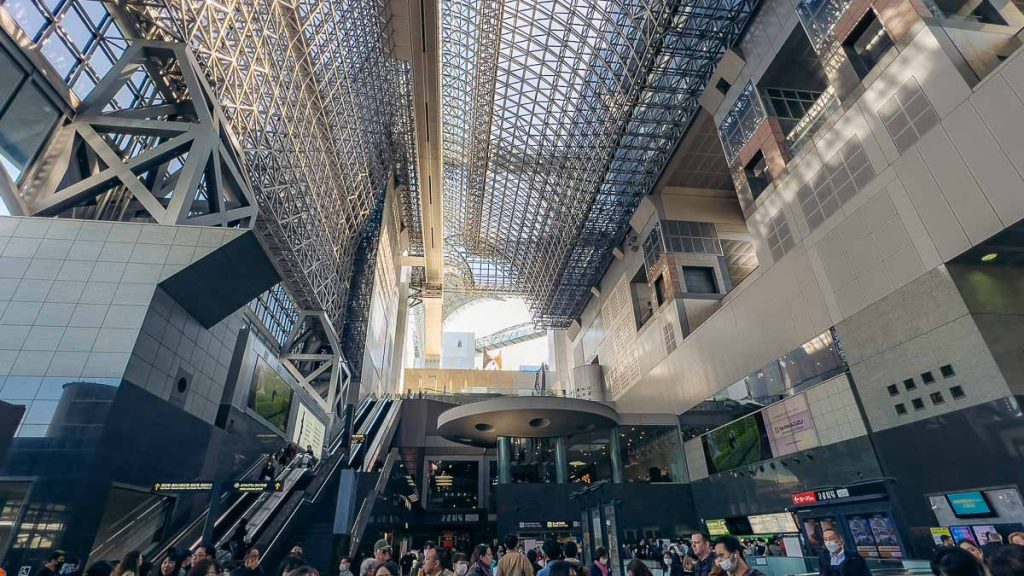
*Pro-tip: The Kansai Thru Pass also includes discounts at 260 major tourist attractions along JR lines! It can be used on non-consecutive days (find out exactly how this works here ), so you can save the pass for days you’re using the train more.
Psst. It’s ~S$3 cheaper when purchased online via Klook compared to buying it in Japan.
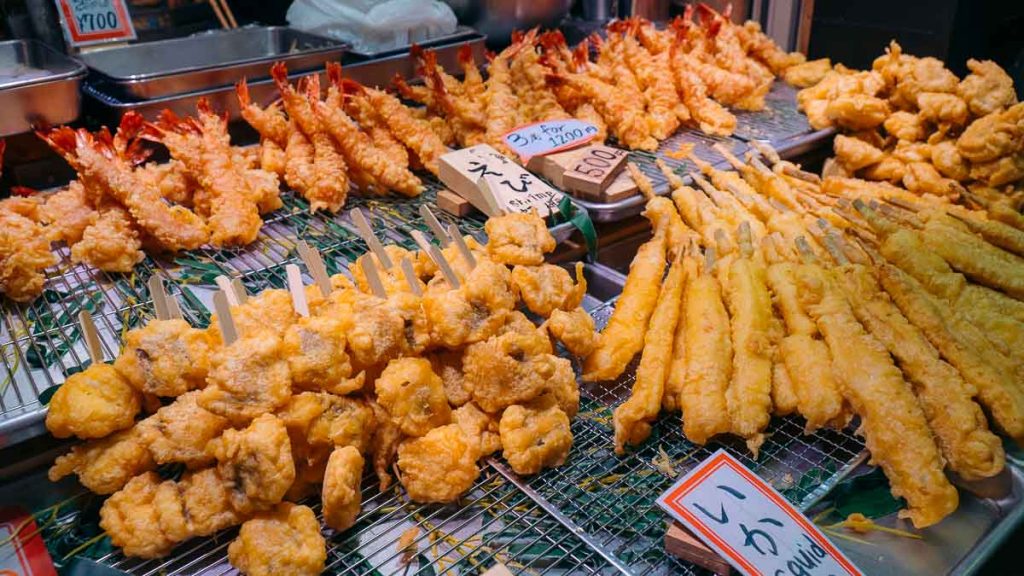
Spend your first day in Kyoto exploring the downtown area! Grab coffee at Kurasu Kyoto Stand, beef sushi and tempura at Nishiki Market then hunt for thrift gems at Shinkyogoku Shopping Street .
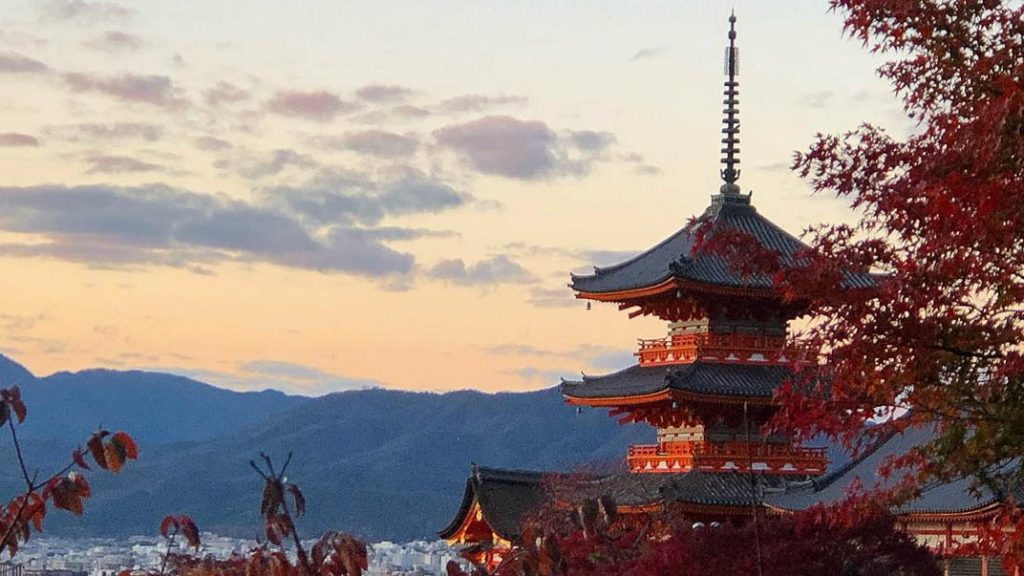
Photo credit: @aaapplecider via Instagram
Day two covers my favourite neighbourhoods in Kyoto — Higashiyama and Gion . They form the heart of Kyoto and are the city’s best-preserved historic districts! There’s plenty to do in Higashiyama, like admire some of the city’s most famous buildings — Kiyomizudera Temple and Yasaka Pagoda .
Fun fact: Kyoto is considered the birthplace of geisha culture and Gion is the city’s most famous geisha district! Spot geishas heading to work along the 1km-long Hanamikoji Street , lined with machiya (traditional townhouses).
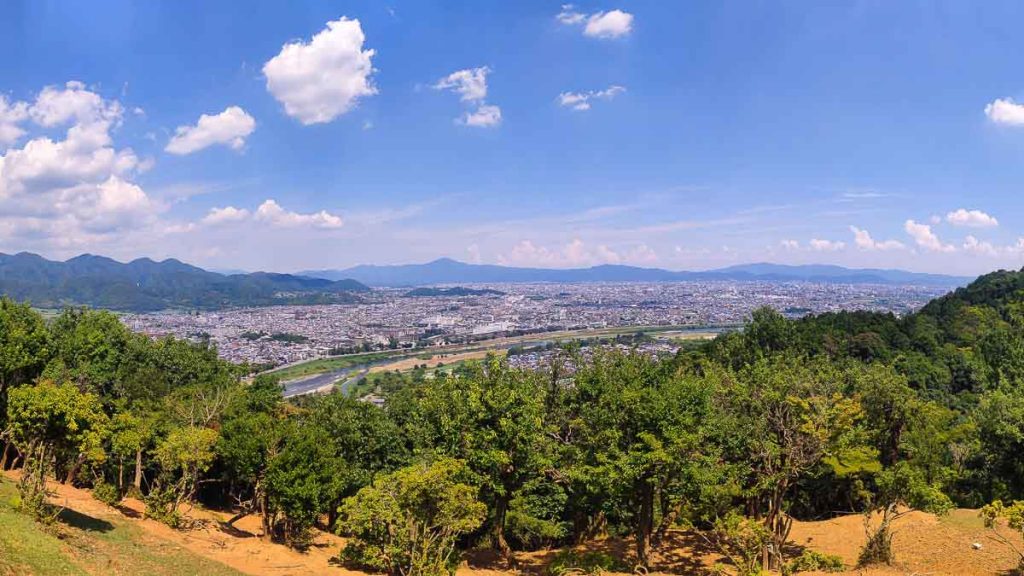
Photo credit: @leonthekay via Unsplash
Day three of this Japan itinerary is all about Arashiyama and its surrounding attractions! Visit Arashiyama Bamboo Grove , watch wild Japanese Macaques at Arashiyama Monkey Park Iwatayama and stop by Kinkaku-ji Temple .
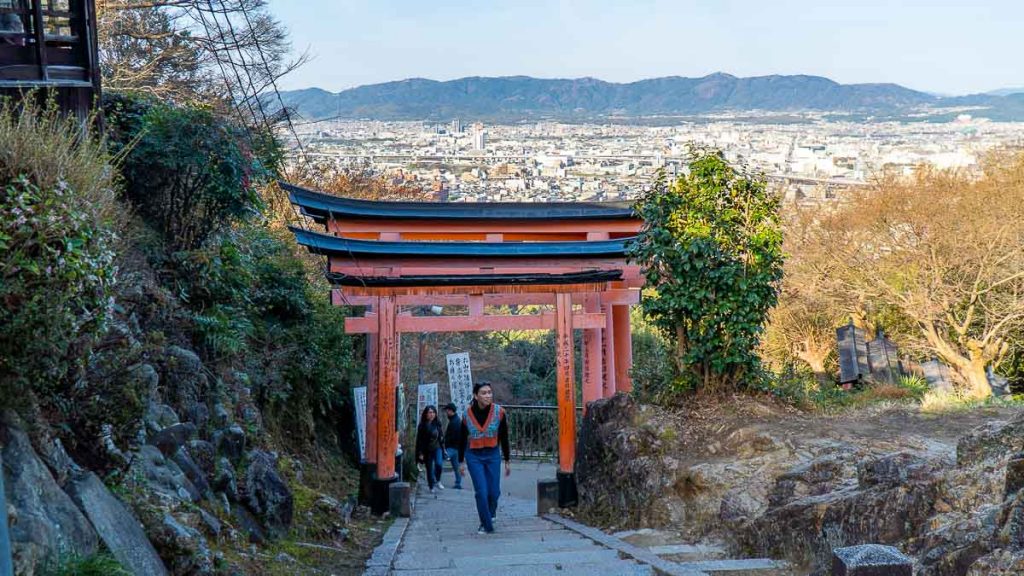
Start the following day with an early hike up Fushimi Inari to the peak of Mount Inari (233m tall) then wind down with a relaxing onsen session at Genji-no-Yu Onsen .
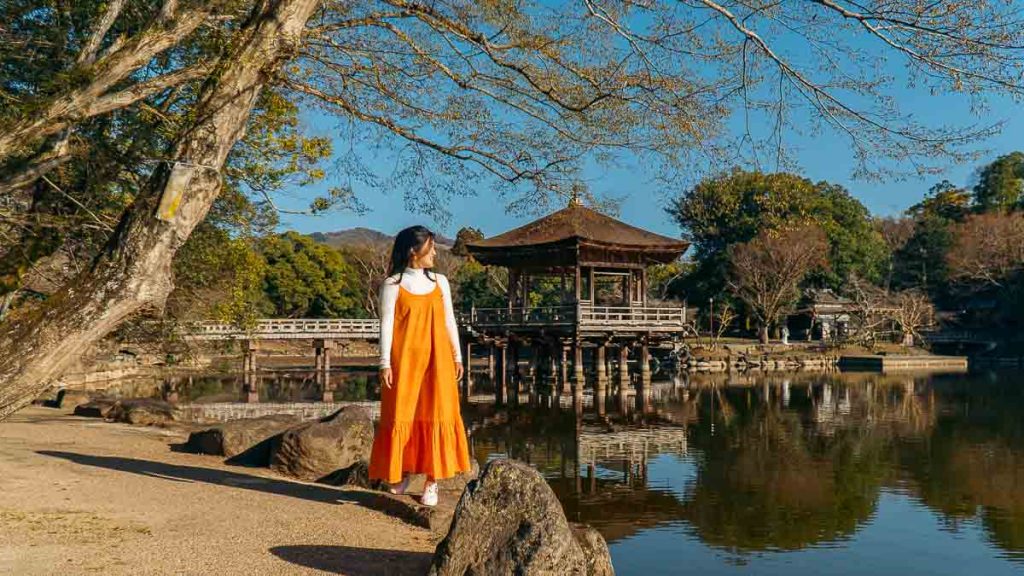
Most tourists know about the famous Nara deer. But Nara offers a rich history that goes beyond cute animals — it was Japan’s first capital from 710 to 784! That’s why this Japan itinerary includes two days in Nara.
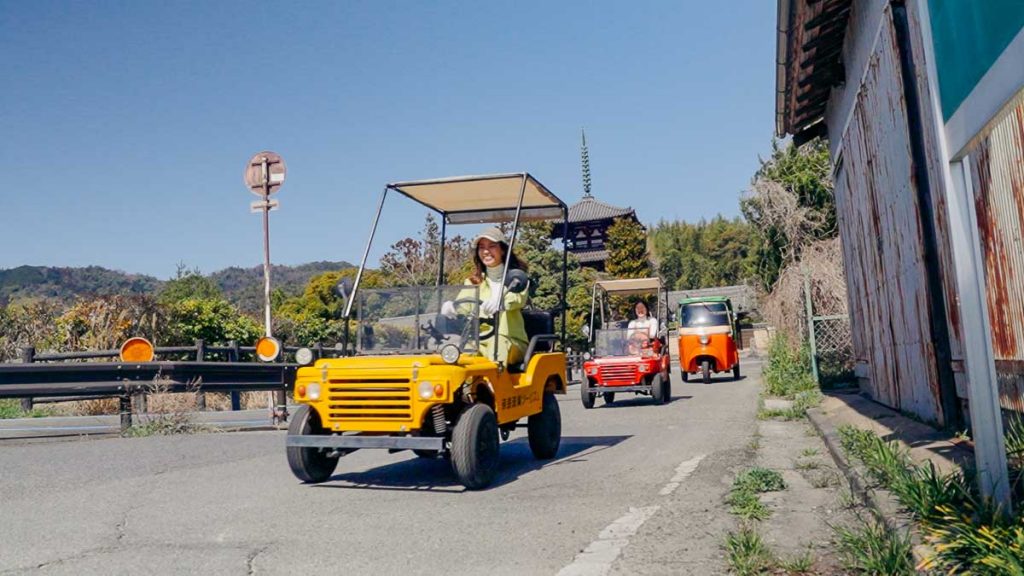
Hang out with the resident deers and check off photo spots like Todaiji Temple and Kasuga Taisha Shrine at Nara Park, indulge in famous mochi at Nakatanidou and go on a buggy tour around Ikaruga neighbourhood.
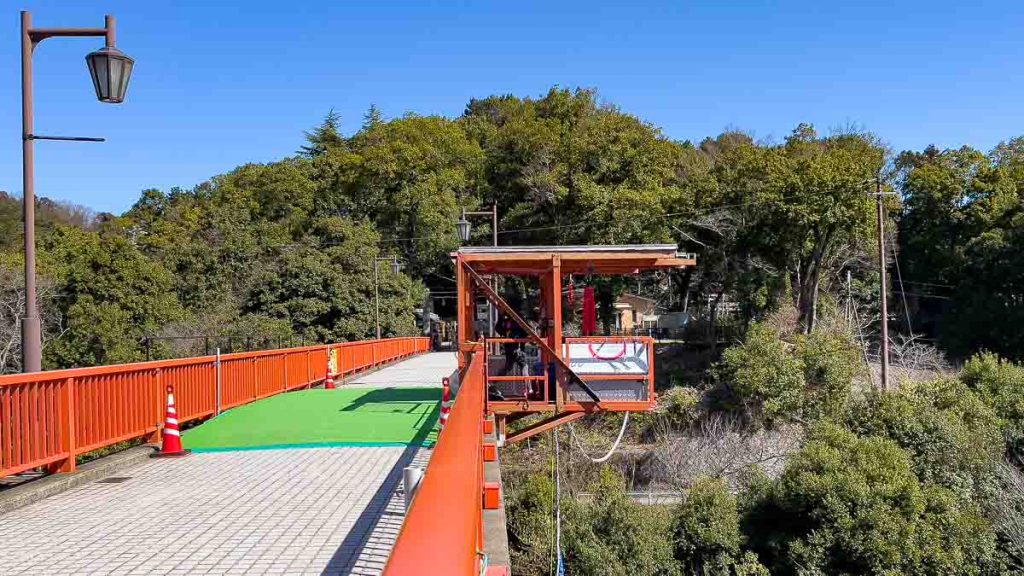
Another unique thing to do in Nara? Take on Kaiun Bungy (30m) — Kansai’s only bridge bungy jump located near the base of Mount Shigi !
Check out our full Kyoto and Nara itinerary .
Tips for Using the Regional JR Pass
1) purchasing and activating your regional jr pass.
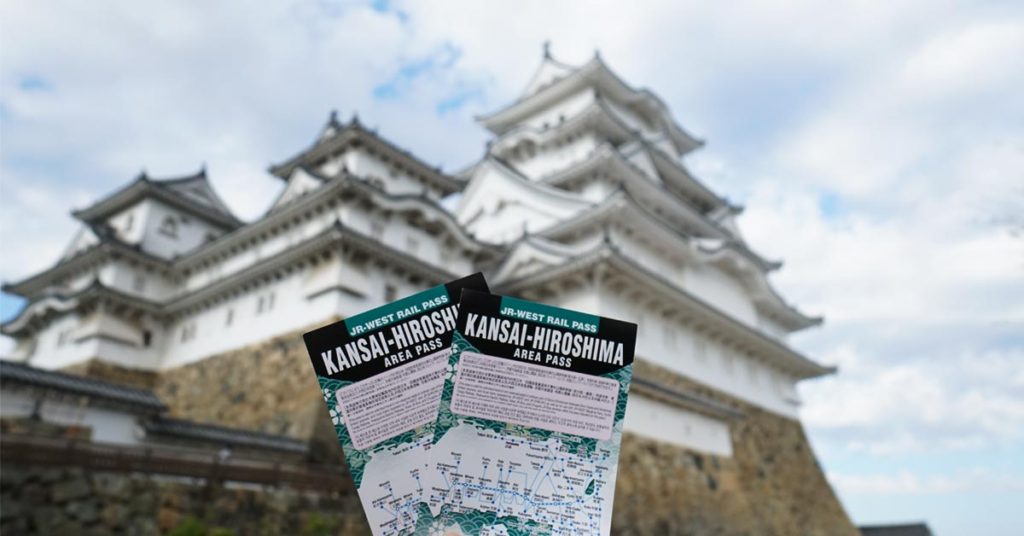
A cheaper (and more convenient) way to get your JR Pass is via Klook . For example, a 7-day Hokkaido Rail Pass costs ¥27,000 (~S$243) in Japan, but only ~S$235 on Klook . And you don’t have to physically queue when you buy it online!
Once the booking is confirmed, you’ll get an exchange voucher on the app. Just present the digital QR code at any JR service counter when you arrive in Japan to exchange it for a physical JR Pass. Passes only activate on your first ride out, so plan it carefully!
*Pro-tip: Individual shinkansen tickets can also be purchased via Klook if you only need one-way tickets, or if your itinerary includes other cities that your JR Pass doesn’t cover. These can be easily picked up from train stations and there’s an option to switch train timings at the station if needed. Pick-up instructions will be sent via email!
Unsure about which JR Pass you’ll need? Simply select the region you’re visiting to view the list of JR Passes available!
PSA: Klook is having an epic year end promo ! Besides discounts on attractions, hotels and more, get 12% off shinkansen tickets with a minimum spend of S$200 (capped at S$30). It’s the best time to book rail tickets for your upcoming trip to Japan. 🥳
2) Download the Japan Travel App to Plan Your Routes
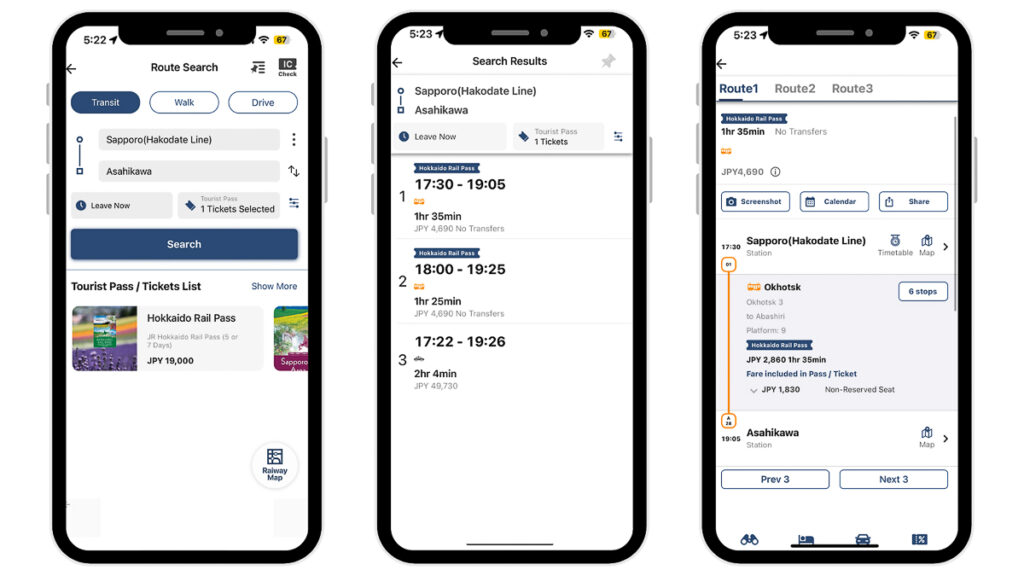
The Japan travel app (available on iPhone / Android ) is the only app you’ll need for route planning in Japan. It shows various ways to get around (whether it’s covered by your JR Pass), train and bus timings, as well as which platform to go to.
3) Making Seat Reservations
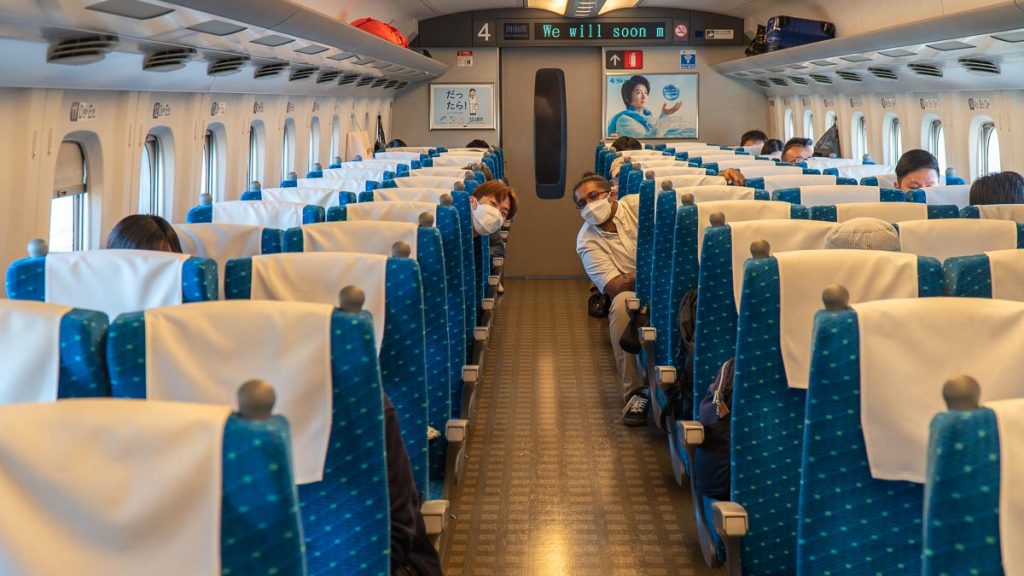
Trains can get quite packed during peak hours or at popular stations like Tokyo and Kyoto so we recommend reserving a seat at least a day in advance. Most JR Passes include free seat reservations on the reserved carriage as well, so make use of this perk! Seat reservations can be made at automated machines or JR service counters!
4) Check out our other JR Pass guides
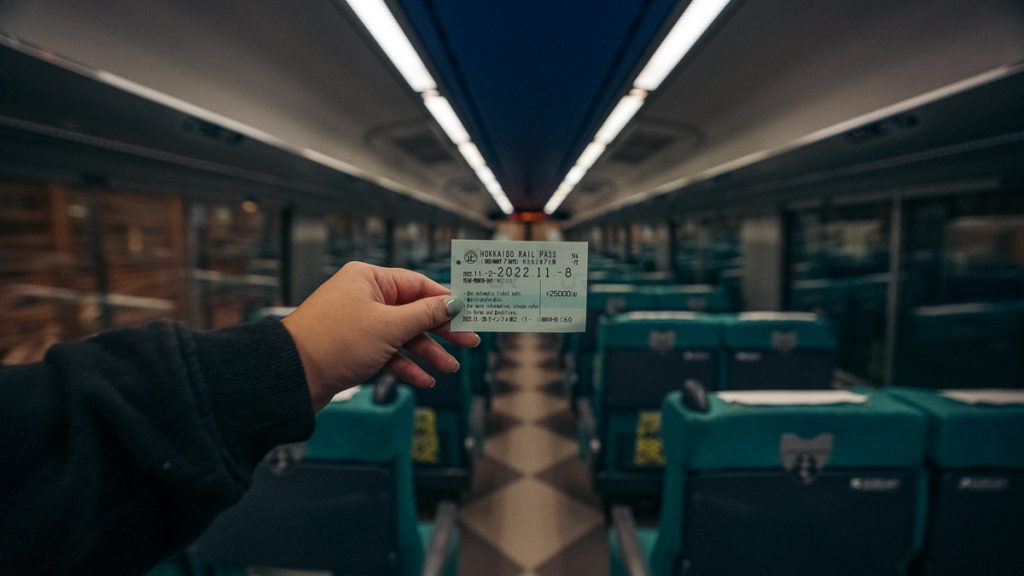
We get it, there are dozens of JR Passes available and it can be tough to decide which pass works best for your Japan itinerary. Check out our other JR Pass guides and Japan itineraries — it might just clear things up!
– Ultimate JR Pass Singapore Guide — Step-by-Step Guide and New Updates in 2023 – JR Pass Budget Alternatives — How to Explore Japan Without Paying ¥50,000 for a 7-day Pass – Osaka Transport Guide — Maximising Your Transport Passes for Travelling In And Around Osaka
Which of these Japan itineraries are you most keen on? Share with us in the comments!
This post was brought to you by Klook .
Follow us on Facebook , Instagram , YouTube , and Telegram for more travel inspiration!
View this post on Instagram A post shared by The Travel Intern (@thetravelintern)
RELATED ARTICLES MORE FROM AUTHOR

31 New Deals and Attractions in Singapore this April 2024
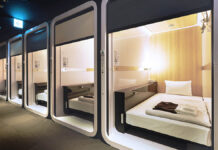
Top 11 Stunning Yet Budget-Friendly Tokyo Capsule Hotels (from ~S$40/night)

Tokyo Vs Osaka: Why Are These Two Popular Japanese Cities so Different — Cultures Explained
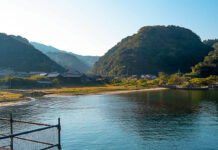
Hiroshima and San’in Guide — Going Beyond Tokyo/Osaka to Find Japan’s Best Hidden Gems

Tokyo Disneyland and DisneySea Guide (2024) — Maximise your Tokyo Disney Day with these 12 Tips and Tricks
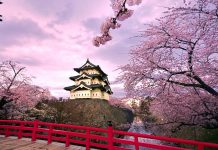
Ultimate 2024 Cherry Blossom Japan Guide — Everything You Need to Know
Leave a reply cancel reply.
Save my name, email, and website in this browser for the next time I comment.

11 Things to do in Clark, Philippines — A Quiet Adventure...

20 Things to Eat-See-Do in Sabah’s Capital Besides Climbing Mount Kinabalu

Experience Macao Singapore Roadshow: Get Exclusive Deals, Experience the Macau Grand...

Ultimate 6-Day Adelaide Itinerary — The Best of South Australia’s Underrated...

- Terms Of Use
- Privacy Policy

IMAGES
VIDEO
COMMENTS
This 2 weeks in Japan itinerary will cover: How to explore Japan on your own with confidence; Quick links to useful resources; Complete 2 Weeks in Japan itinerary, day-by day guide including costs, things to do, where to stay, where to eat & getting around for:. DAYS 1-5: Tokyo (including day trip to Mt Fuji) DAYS 6-10: Kyoto DAYS 10-12: Hiroshima (including day trip to Miyajima)
Two times of year I would avoid for a vacation to Japan are: Golden Week in early May - In 2024, Golden Week is from 27 April - 6 May. This is a series of national holidays so many Japanese travel domestically, trains and hotels book up, and popular spots will be extra crowded. New Year - Late December to early January.
Japan Itinerary: One Week. Day 1 & 2: Tokyo. Chances are you'll be starting your trip in Tokyo, since it's home to the country's biggest international airport. If your trip is seven days long, activate your JR Pass right away, so that you can take advantage of the free JR trains that run through the city.
22. It's difficult to be gluten-free in Japan. While the abundance of rice may make you think Japan would be an easy country for gluten-free travelers, that's simply not the case. Soy sauce and other wheat-based seasonings are an integral part of Japanese cuisine, making it hard to avoid gluten.
Days 1-3: Tokyo. Day 4: day trip from Tokyo. Days 5-6: Kyoto. Day 7: Nara and Osaka. Day 8: Miyajima and Hiroshima. Day 9: morning in Kyoto → Tokyo. Day 10: Tokyo in morning/afternoon → airport. Japan is a decently large-sized island country located in Eastern Asia, being slightly smaller than California .
My Trip to Japan: Tokyo. Japan's capital Tokyo is weird, wonderful, and at time completely whacky - but that is precisely what makes it such a sought after city for international visitors.. Our trip started in Tokyo as it is the main gateway to Japan and a great city to spend a few days discovering its many pockets - from the hustle and bustle of Shibuya & Shinjuku, over to the quiet ...
See the whole list of available train passes that you can get in Japan ... NOTE: On my first trip to Japan I spent about 20 days there as I explored Tokyo (6), Kyoto (3), Osaka (2), Nara (1), Hiroshima (3), Takayama (2), Magome-Tsumago (1), and Kinosaki (2). For this, I only used a 14-day JR Pass since I spent 6 days in Tokyo and it was cheaper ...
This information-packed Japan trip planner has the answers to all your questions. Find out the best places to visit, which Japanese foods to try, and how to ride the bullet trains. All the research is done for you to assist in planning a trip to Japan. If you have been dreaming of traveling to Japan and want to get serious about planning your ...
Day 5 - Day trip to Yokohama from Tokyo. Recommended Stay: 1-2 days. Distance Tokyo to Yokohama: As Yokohama is only an 18 minute train trip (and the leave every 15 to 20 minutes) from Tokyo, Yokohama is being done as a day trip from Tokyo on this one month itinerary of Japan. Yokohama began as a small fishing village.
Japan Travel Guide. Last Updated: February 18, 2024. Japan is one of the most amazing, beautiful, interesting, and friendly countries in the world. From bustling Tokyo and Zen-like Kyoto all the way to laid-back Okinawa and wintery Hokkaido, Japan rocks. It boasts mouthwatering food, majestic temples and shrines, serene gardens, lush national ...
The official site of Japan National Tourism Organization is your ultimate Japan guide with tourist information for Tokyo, Kyoto, Osaka, Hiroshima, Hokkaido and other top Japan holiday destinations. We offer travel information to make your Japan travel more comfortable and enjoyable.
2 How to spend 2 weeks in Japan. 2.1 Day 1: Arrive in Tokyo. 2.2 Day 2: Day trip to Kamakura. 2.3 Day 3: Exploring Tokyo. 2.4 Day 4: Travel to Kyoto. 2.5 Day 5: Fushimi Inari Taisha Temple in Kyoto. 2.6 Day 6: More Kyoto temple exploring. 2.7 Day 7: Travel to Hiroshima. 2.8 Day 8: Ferry to Miyajima Island.
I recommend spending 5 whole days in Tokyo on your first Japan trip. Tokyo is a big city and every single day you will discover something new and unique about Japan's capital. Tokyo is the world's largest city, with close to 14 million inhabitants. It's a big place with an area of 2,194 km².
What people love about Fully Guided Tours in Japan. Judi Harris 18 Mar, 2024. 5. The guide was the best. Japan Express: Osaka to Tokyo. MARTIN DOBRESCU 18 Apr, 2024. 5. Very interesting experience. Very good trip, well balanced between mandatory and optional activities.
Below are some sample budgets for the itinerary, excluding airfare. Find out more about the sample budgets and about the current yen exchange rates. Single Traveler. Two Travelers. Low Budget. 59,000 - 78,000 yen. 118,000 - 156,000 yen. Medium Budget. 78,000 - 134,000 yen.
Day 1 of the 7-Day Japan Itinerary: Tokyo. You can do this Itinerary forward or backward, depending on where you fly into. Generally, the cheapest airport to fly to is the Narita Airport or Haneda Airport in Tokyo, but if you fly into Osaka, then this 7-day itinerary will still work for you. Just backward.
Option 3: Osaka and Kyoto itinerary 5 days. Many tourists root for Kyoto and absolutely want to visit the city when in Japan. If you want to avoid the 2.5-hour train ride back and forth from Tokyo to Kyoto you can opt to combine your visit with Osaka instead of Tokyo.
Cost breakdown of a Japan trip Here is my cost breakdown, based on real numbers of my trip to Japan. Unless stated otherwise, prices in yen (JPY) and per person. Accommodation: I stayed in a rather eclectic mix: a capsule hotel for 1 night, ryokan for 2 nights, guesthouses and business hotels. The average price of my accommodation for two ...
With the Japan itinerary planner by Triptile™. Embark on a journey to Japan, where the seamless integration of nature and ancient traditions creates an unparalleled experience for every traveler. From the moment you set foot in this captivating corner of Asia, you'll be entranced by its allure, finding it difficult to leave.
We recommend a minimum of 2 weeks to discover the Japanese archipelago. This is the minimum travel time in Japan to have time to visit Tokyo, Kyoto and their surroundings. For this, we advise you to spend a minimum of 6 nights in Tokyo and 6 nights in the Kyoto region . Tokyo is the capital of Japan, a futuristic megalopolis that has kept its ...
Pre-trip Essentials. Connectivity: 4G WiFi device for ~S$4/day (connects up to 5 devices). JR Pass: 21-Day Whole Japan Rail Pass. Refer to this JR Pass guide for more information. Receive a S$30 Klook Voucher with every Whole Japan JR Pass purchased before 31st December 2019! Transportation: Use the JR Pass for long rides between cities.
Of course, for you who will be going to Japan for the first time, you don't necessarily have to go to places like Tokyo, Kyoto, and Osaka. If you have enough preparations before departure, in fact, Fukuoka, Hiroshima, Kumamoto, Nagoya, Shikoku, Hokkaido, etc., some places with natural attractions are worth your consideration.
In case you missed it, JR Pass prices have increased by more than 30% since 1 Oct 2023.For example, the 7-day Whole Japan JR Pass which used to cost ¥29,650, now cost ¥50,000 (~S$450)! Quite a hefty increase! And to be honest, maximising the Whole Japan JR pass in the past always made the itineraries feel a little rushed. So we took this opportunity to find ways to explore more in different ...